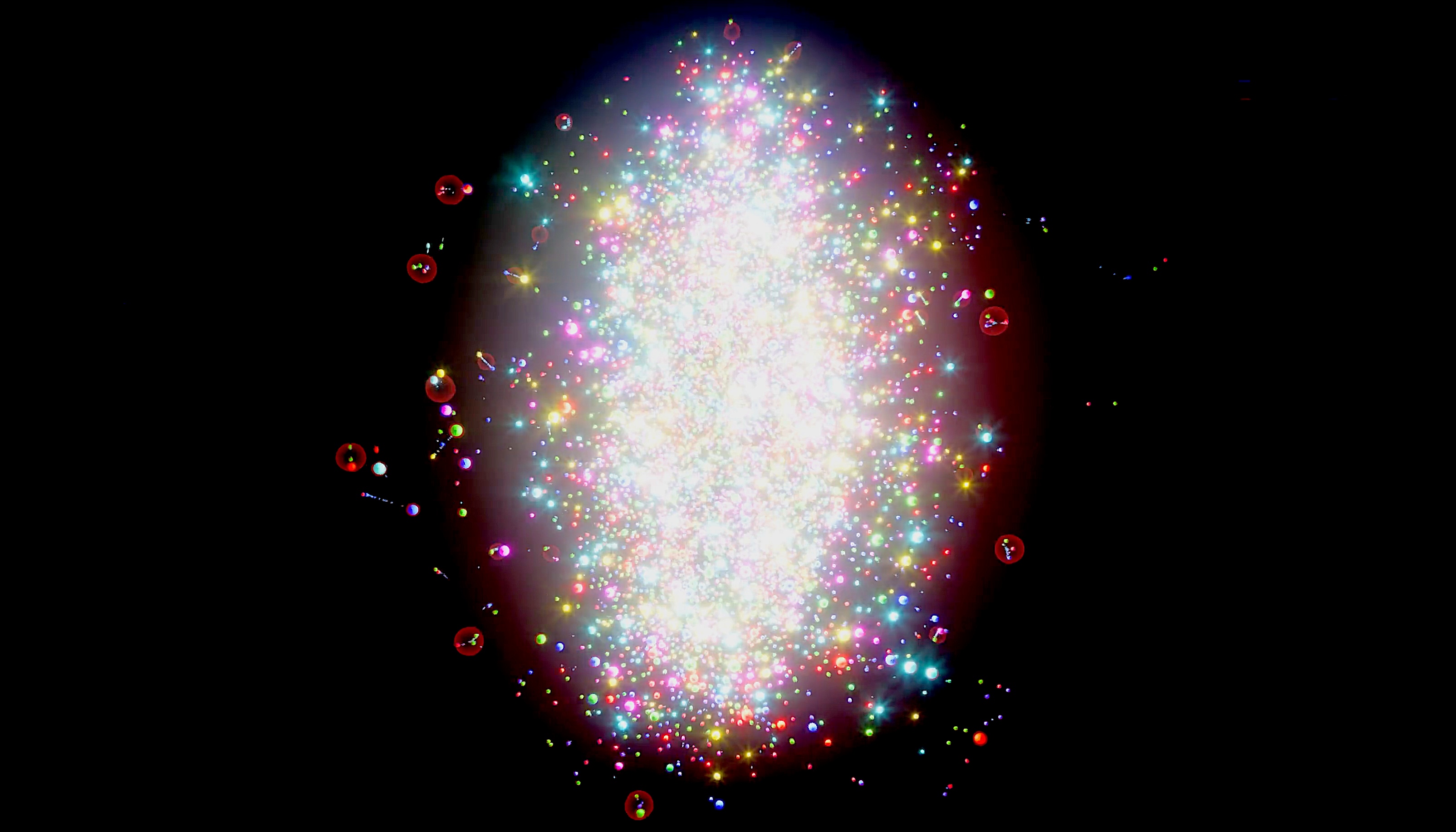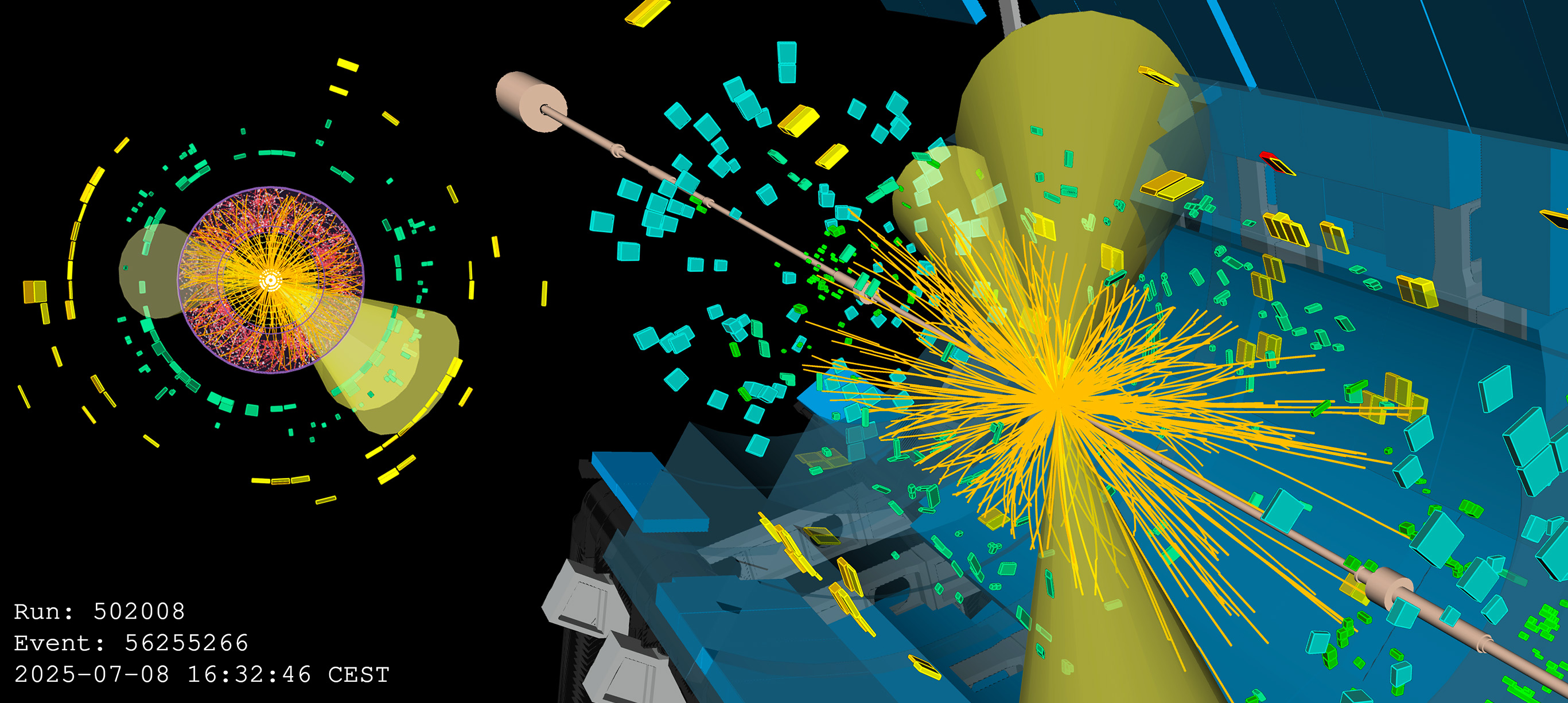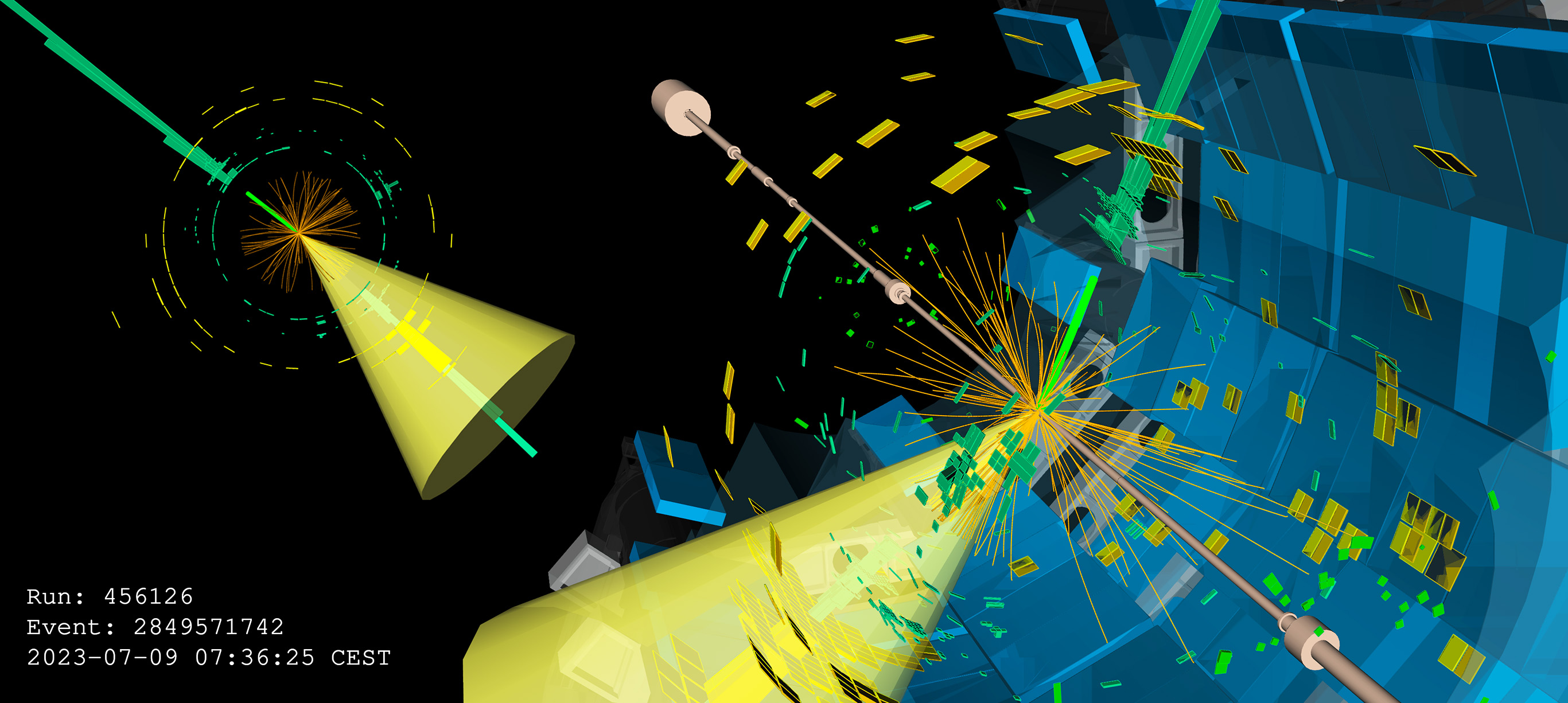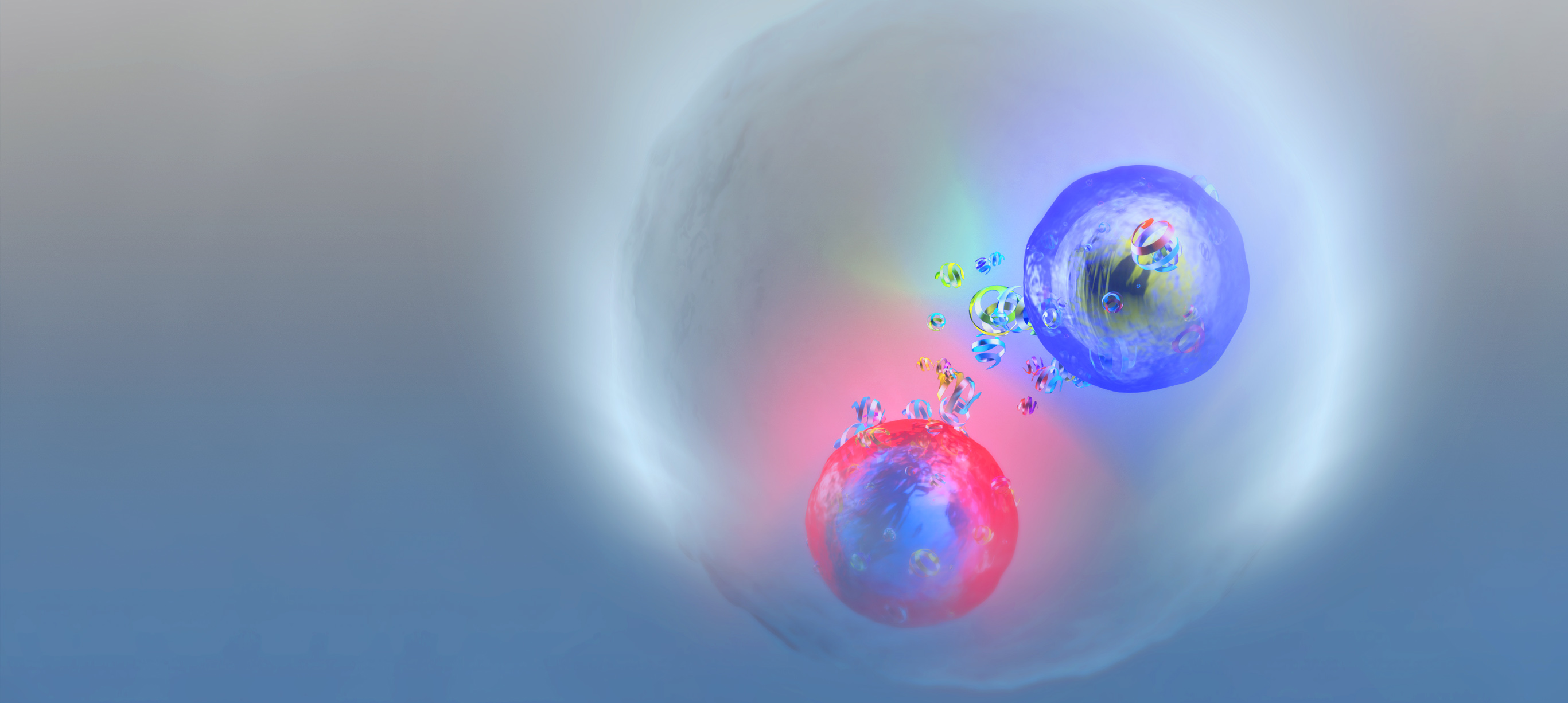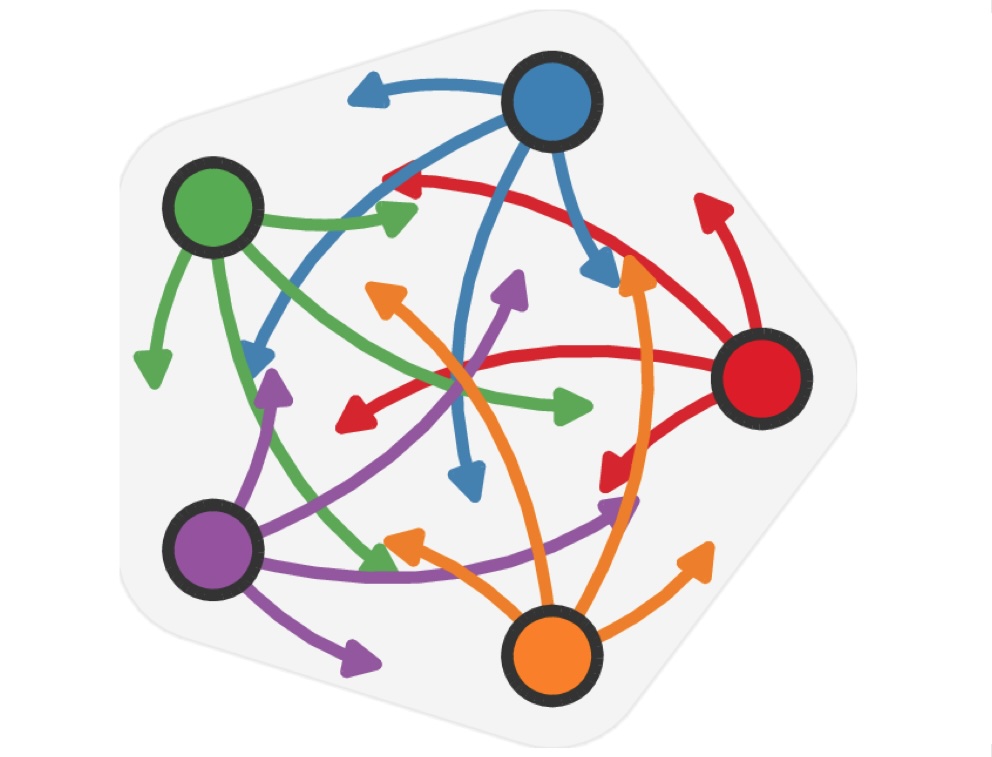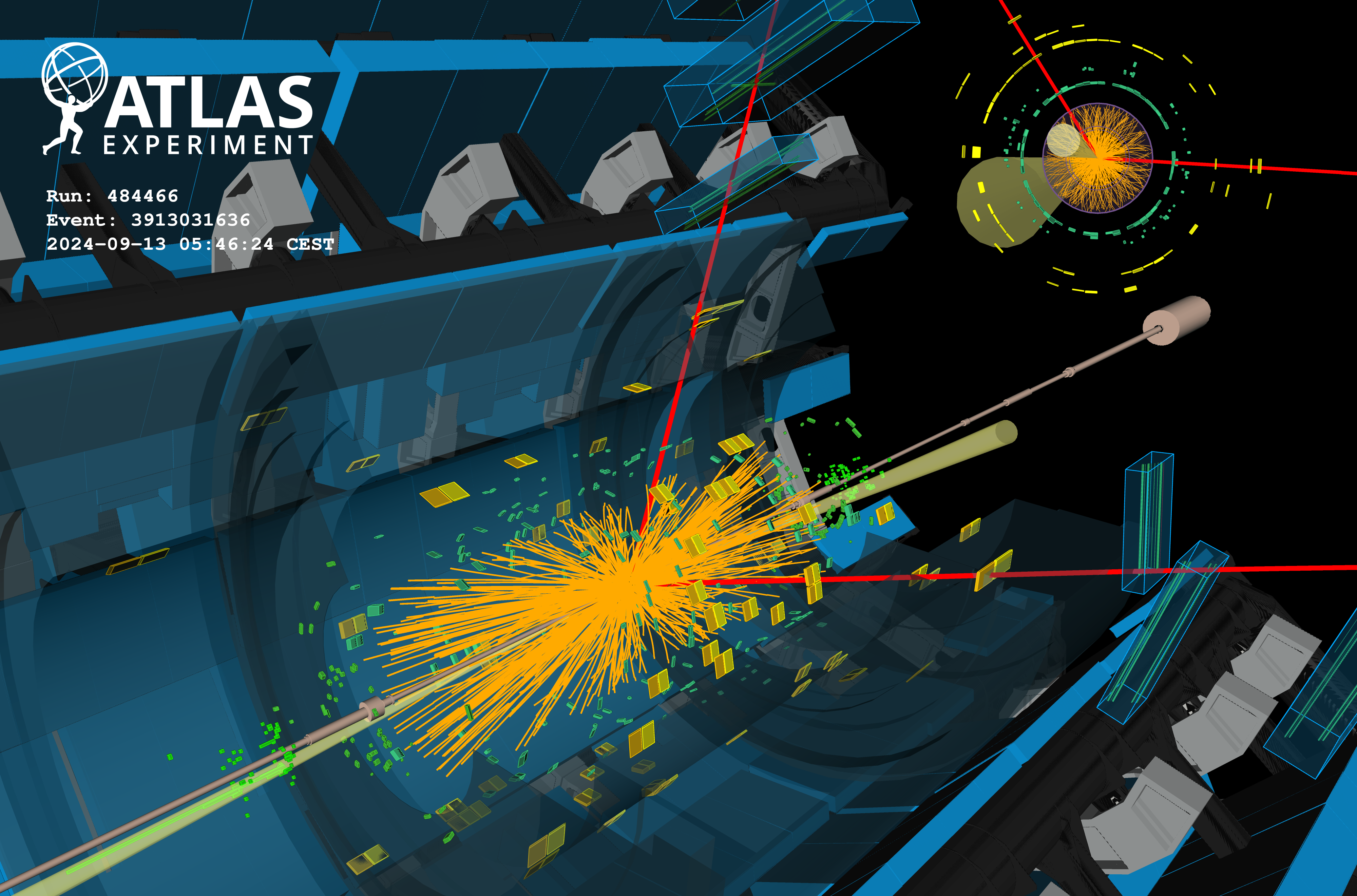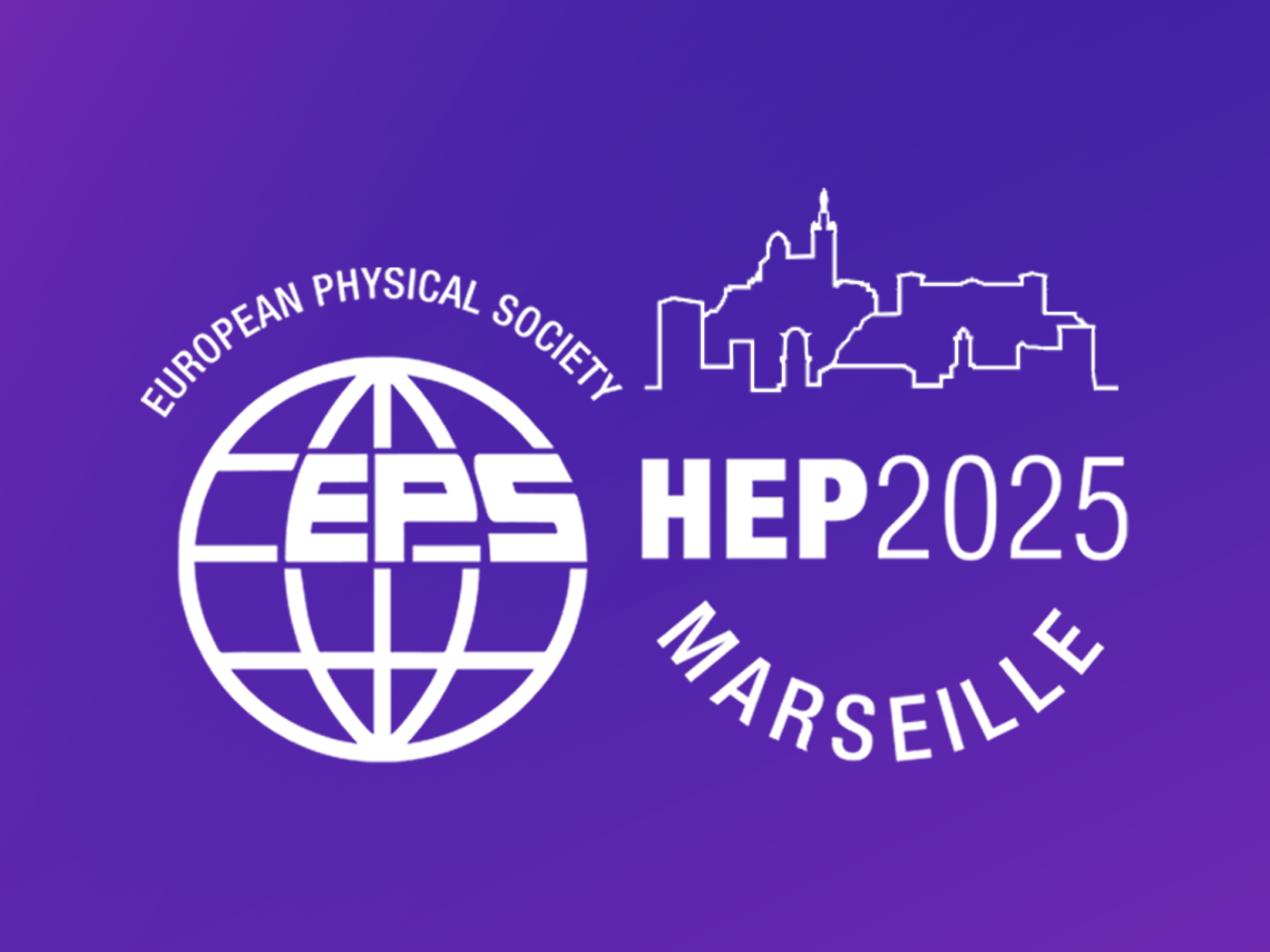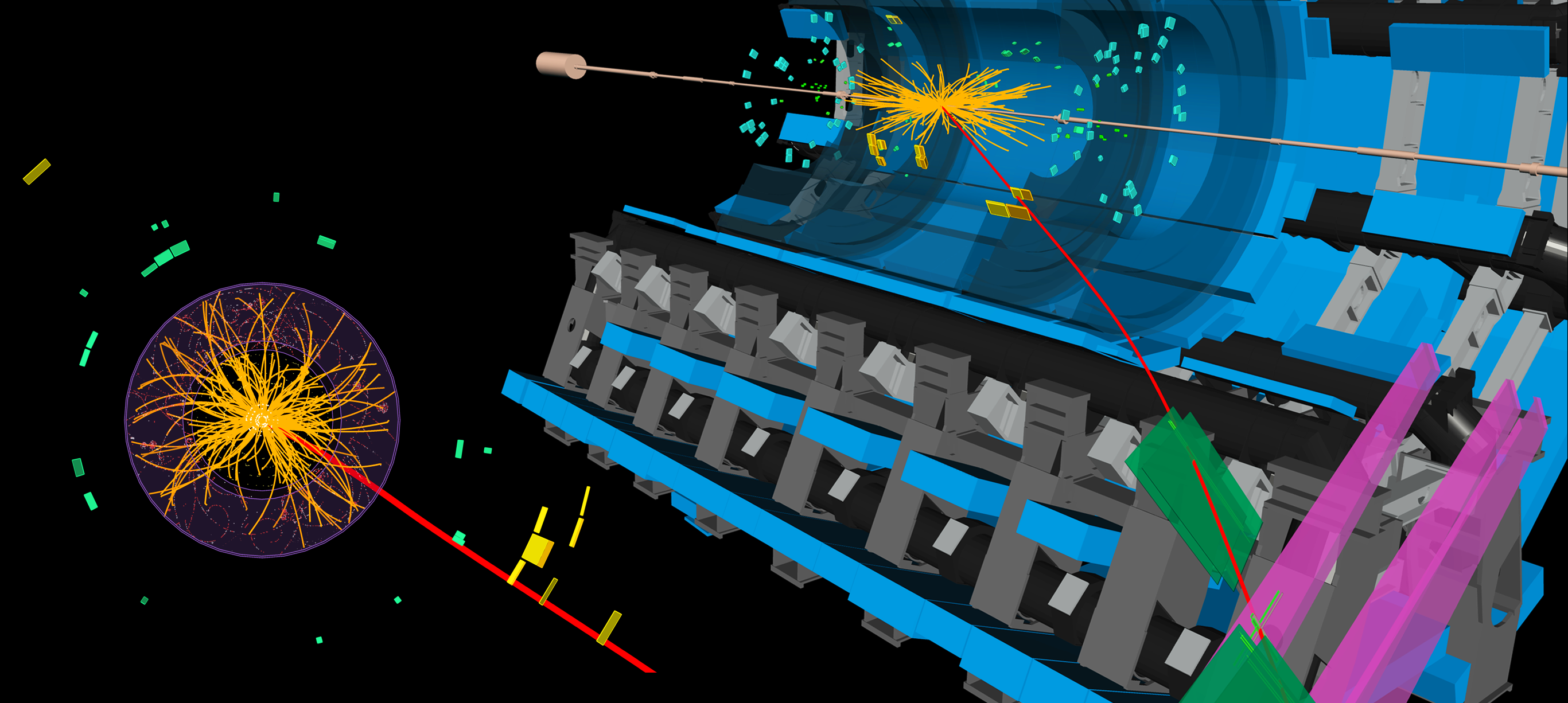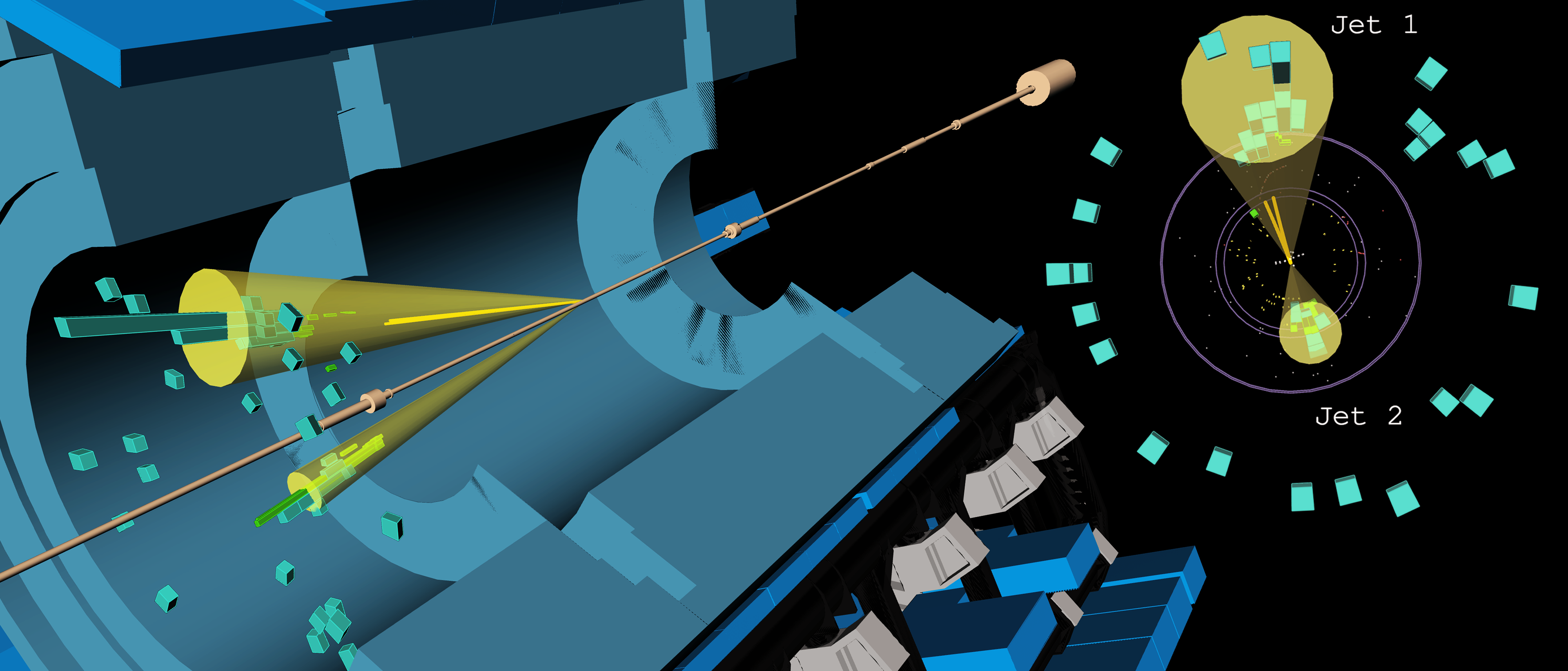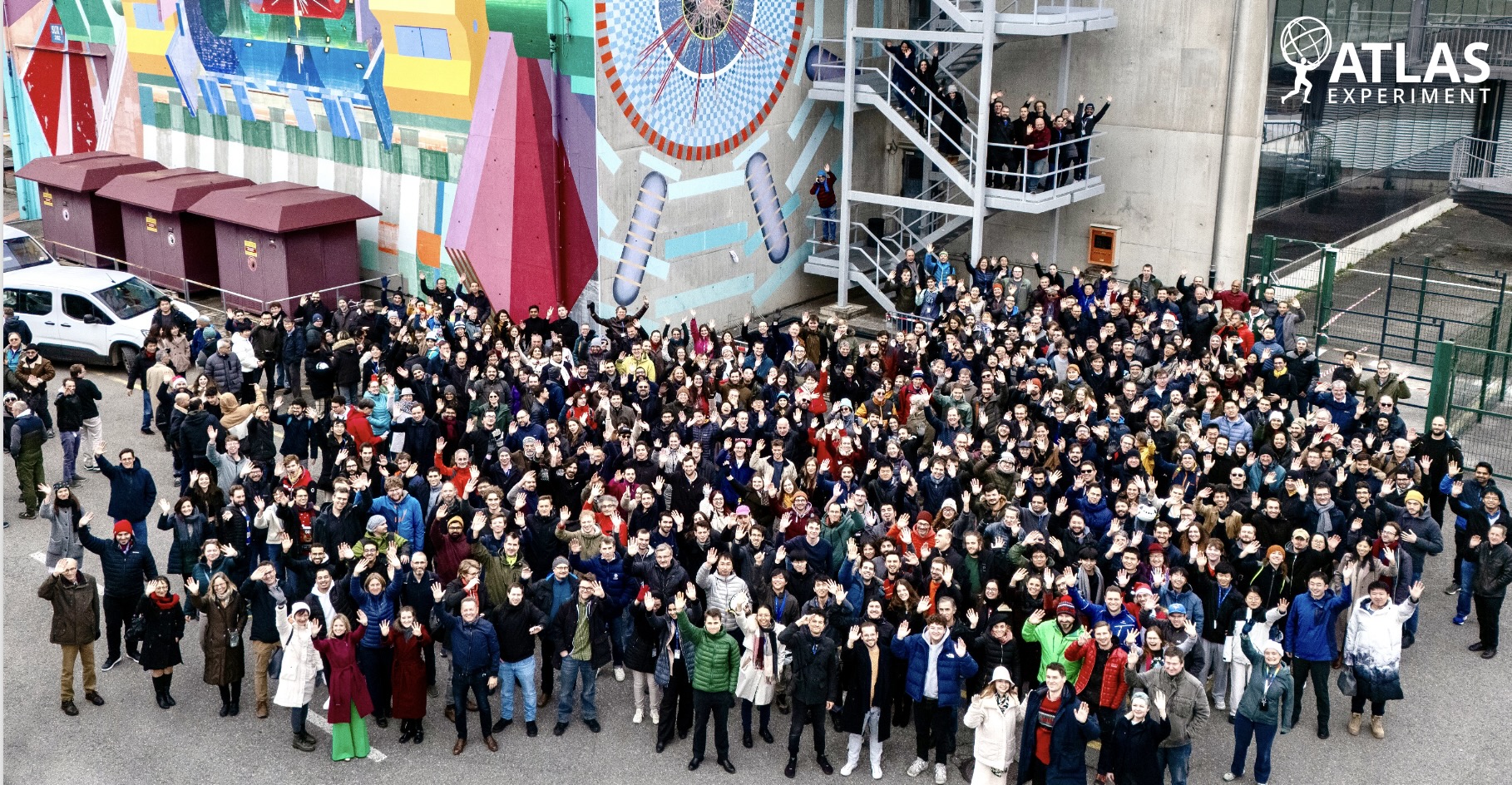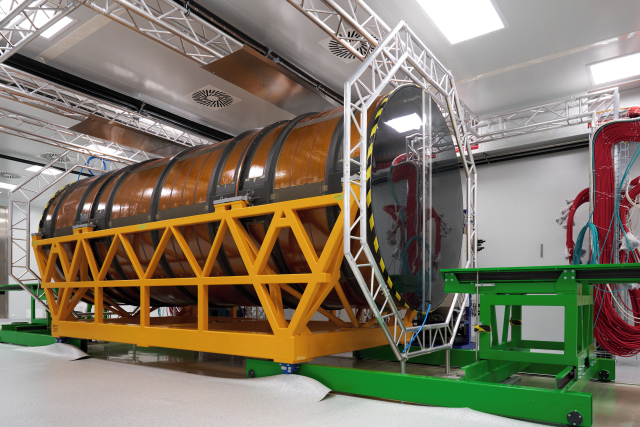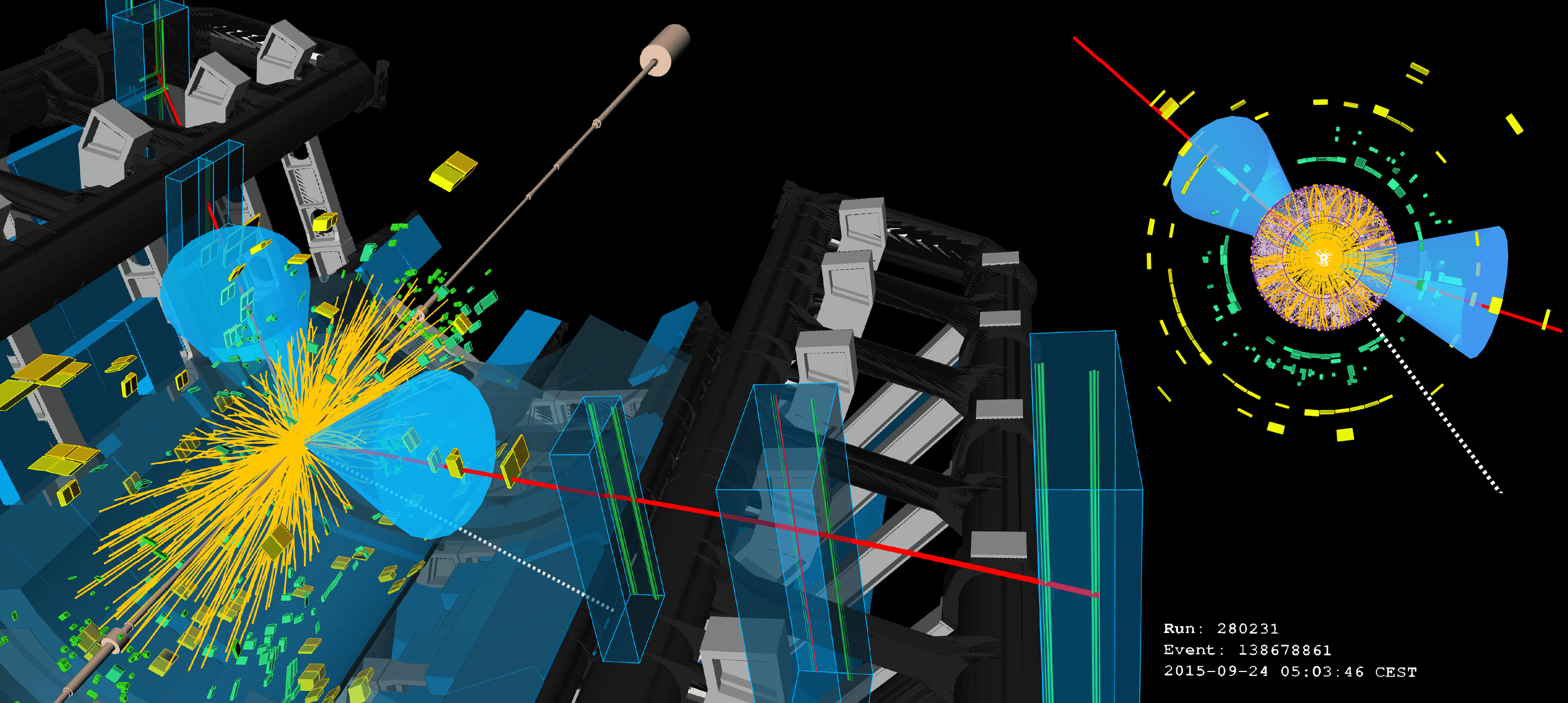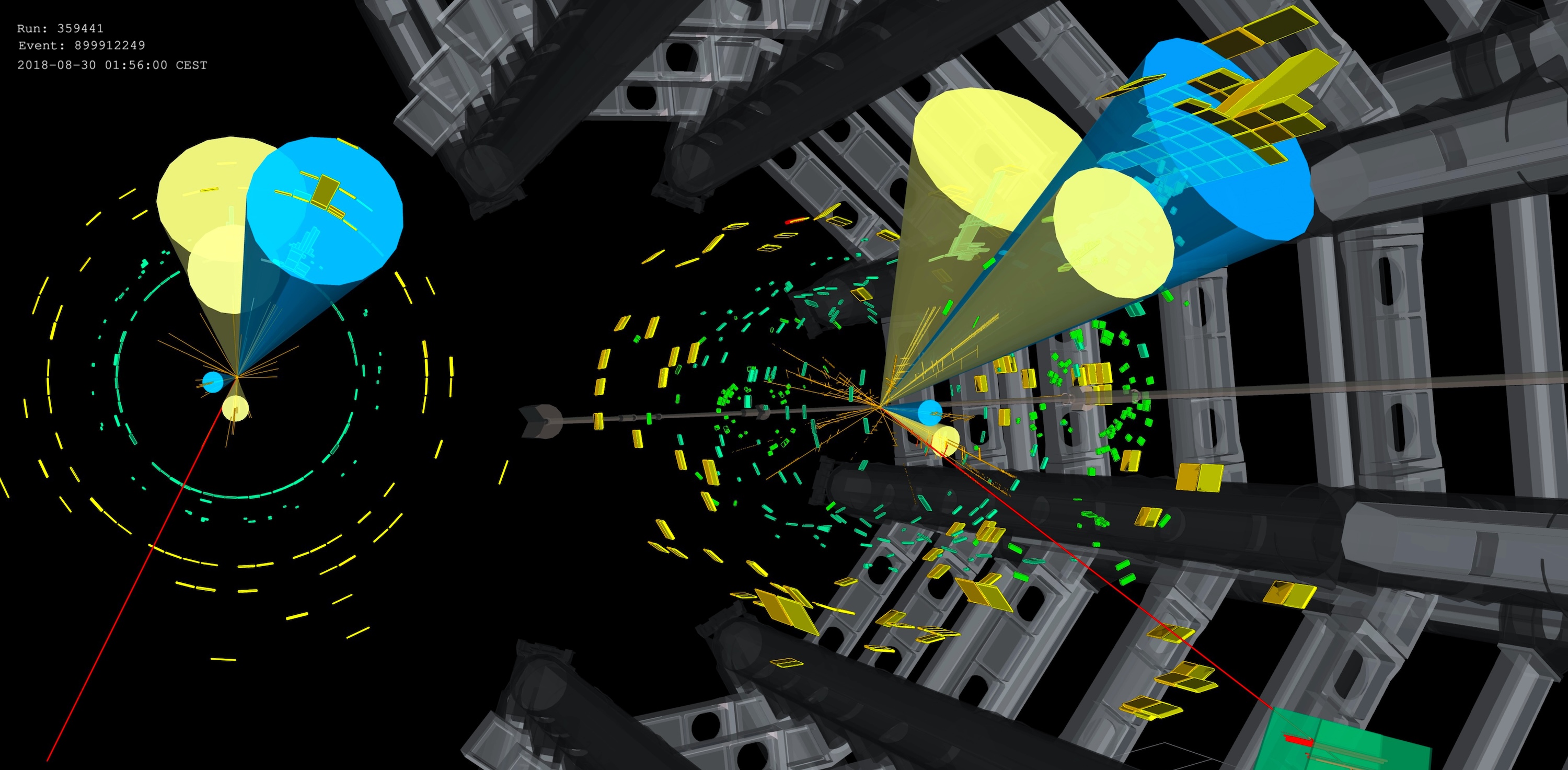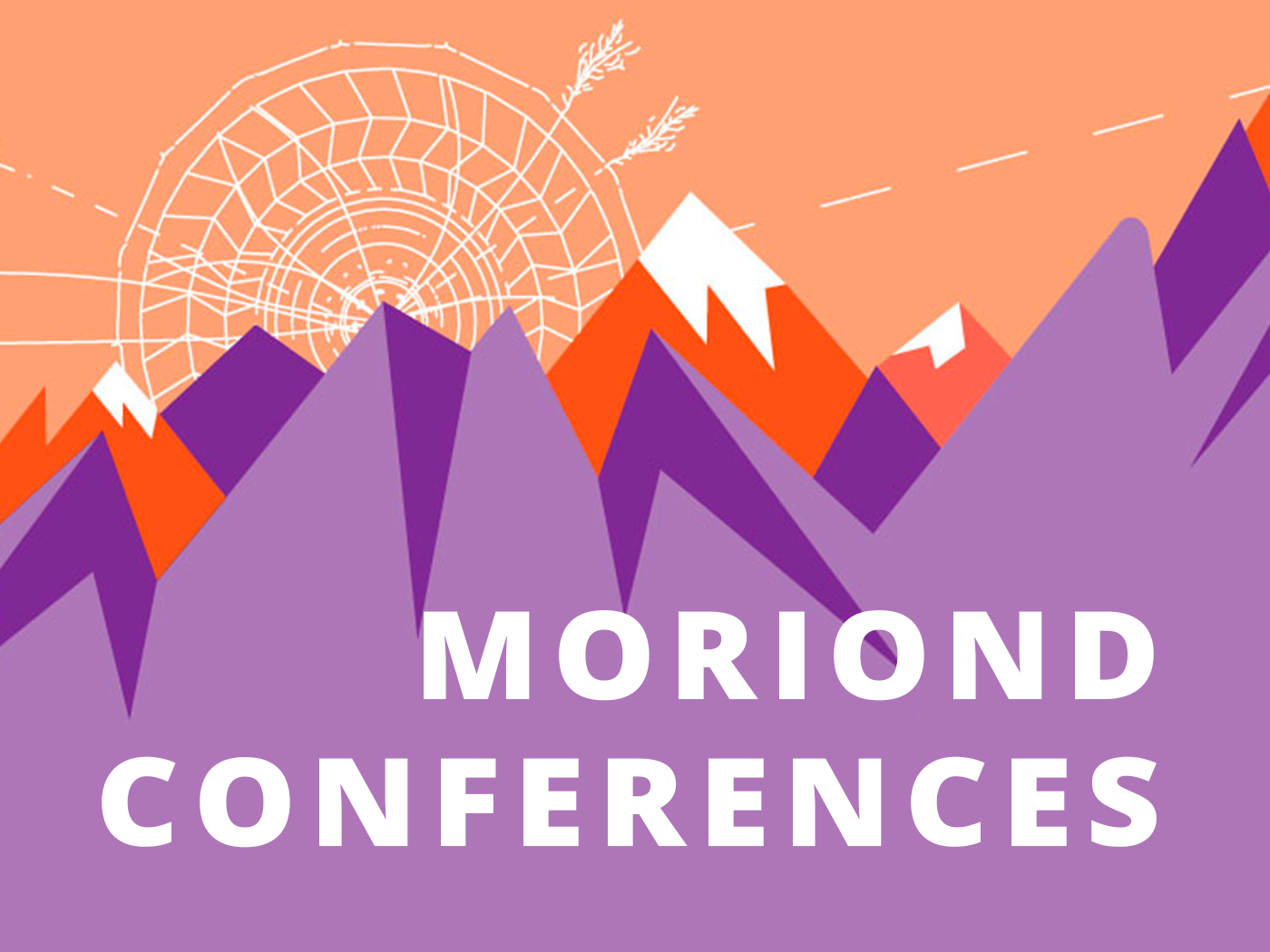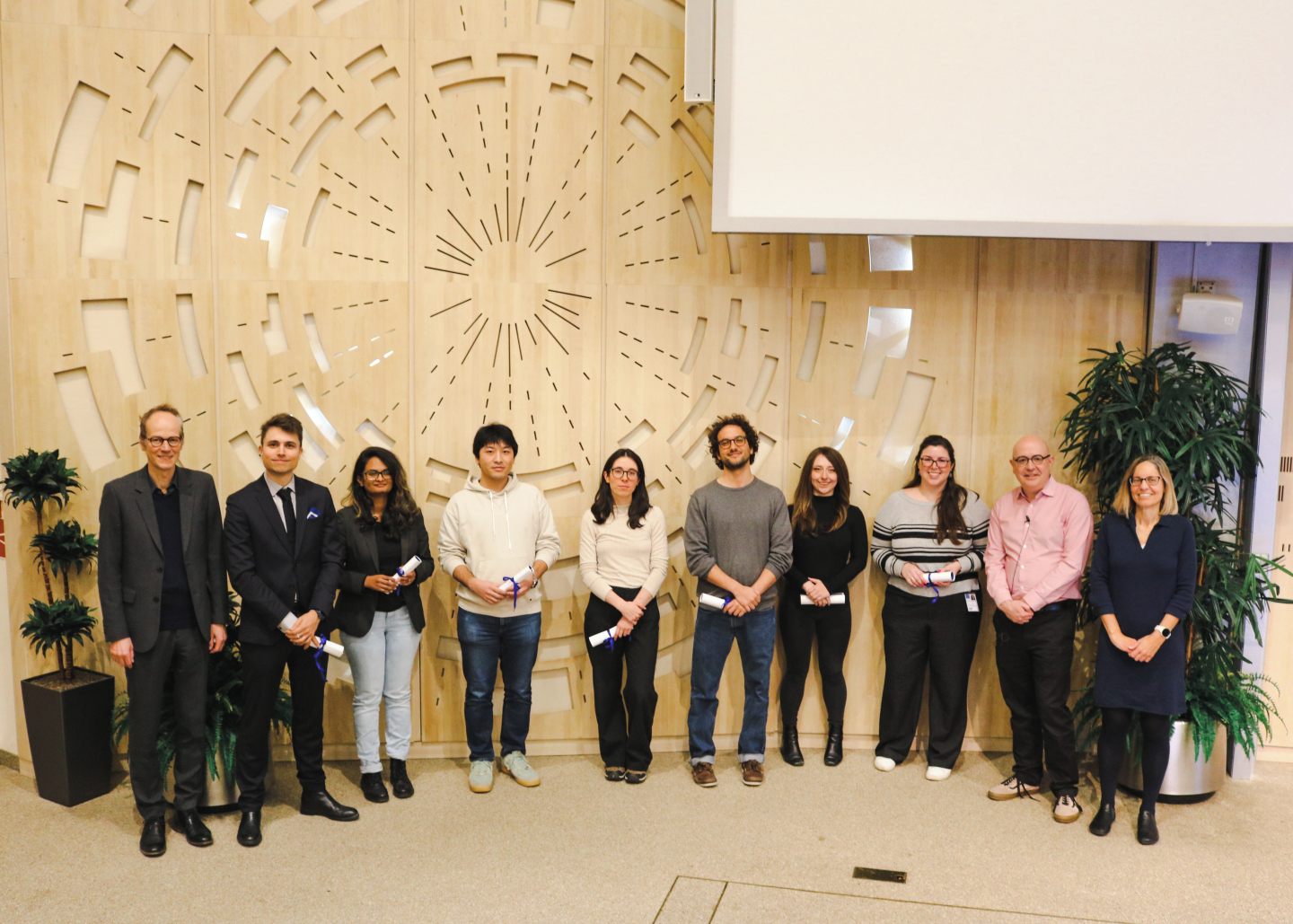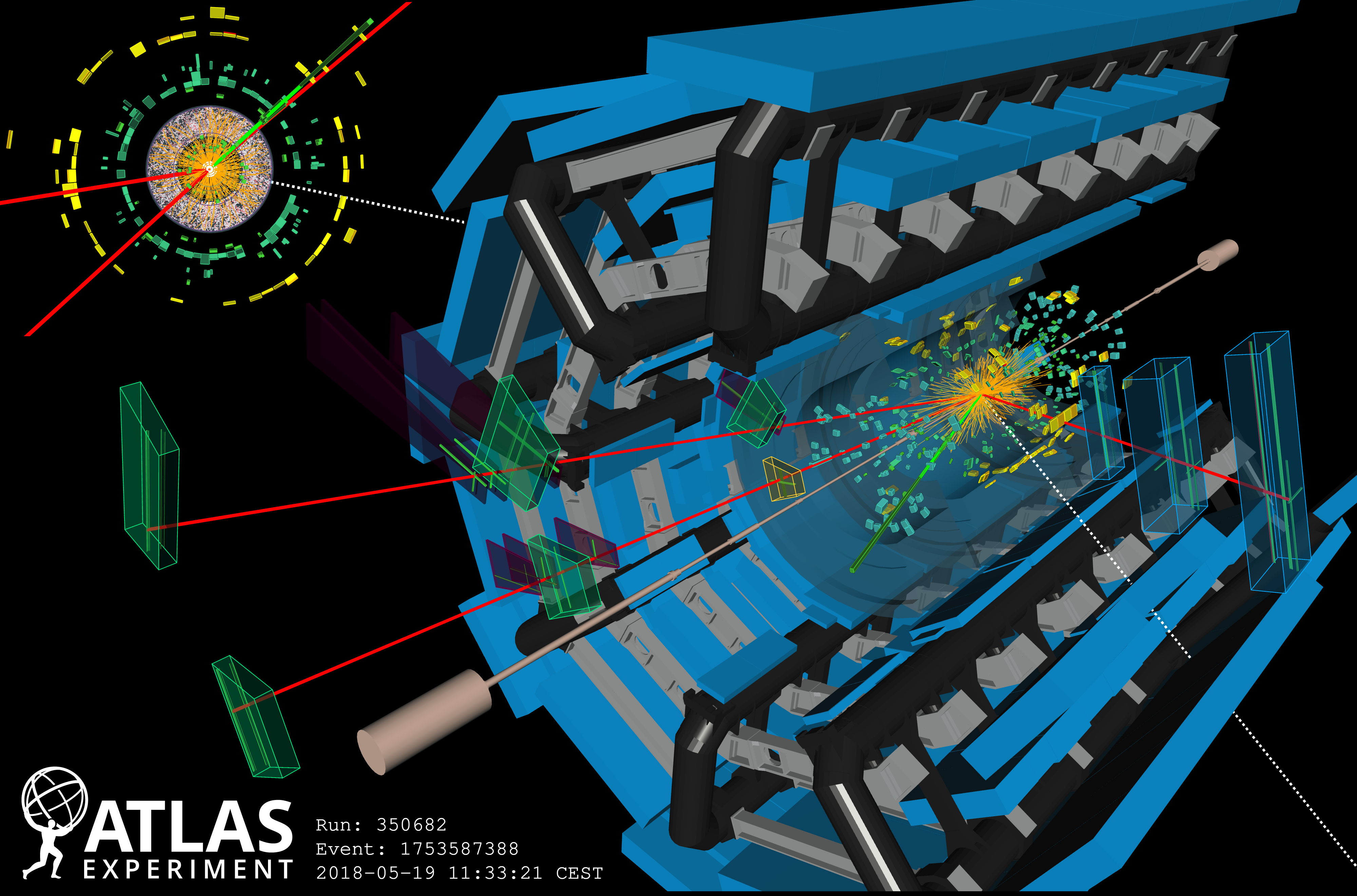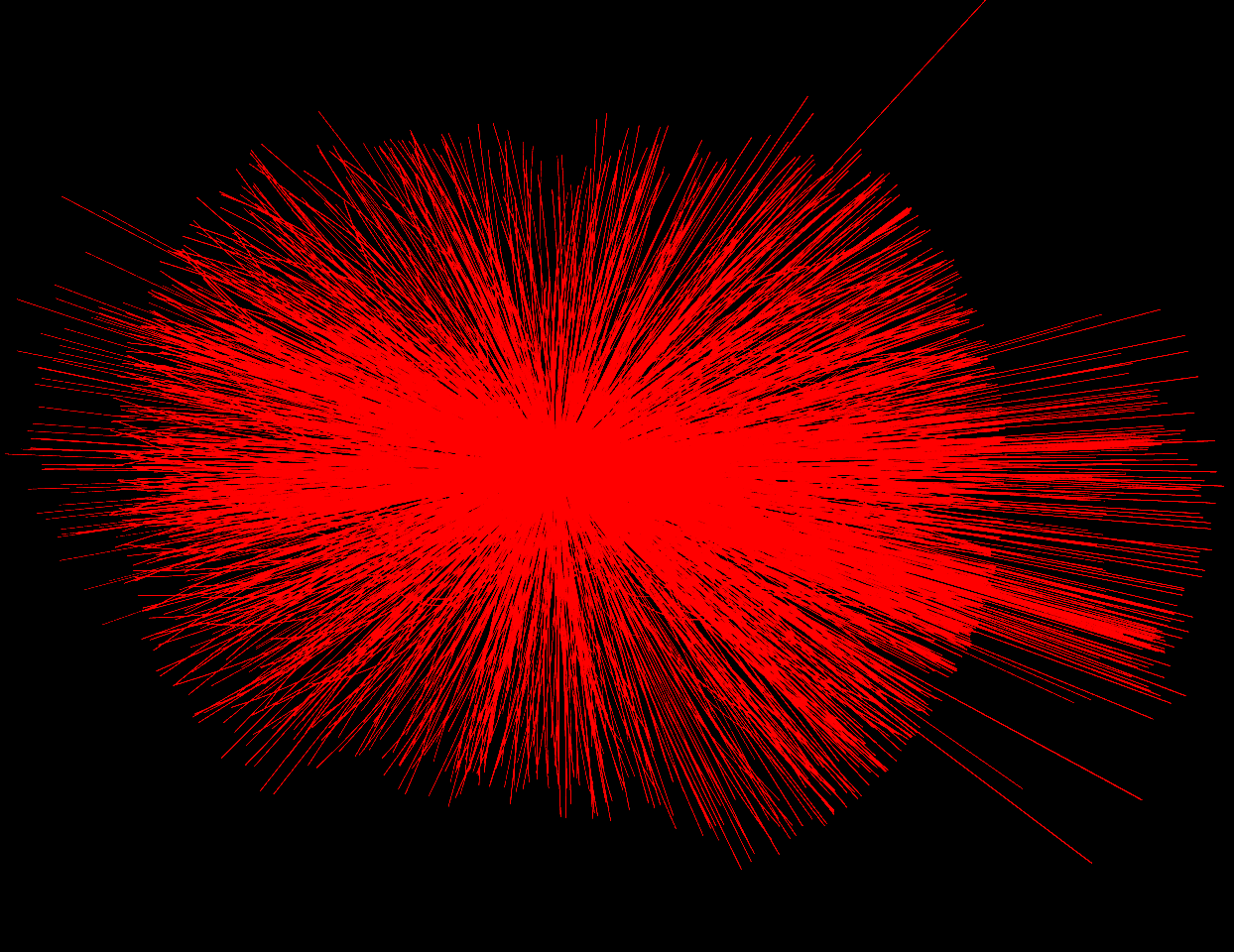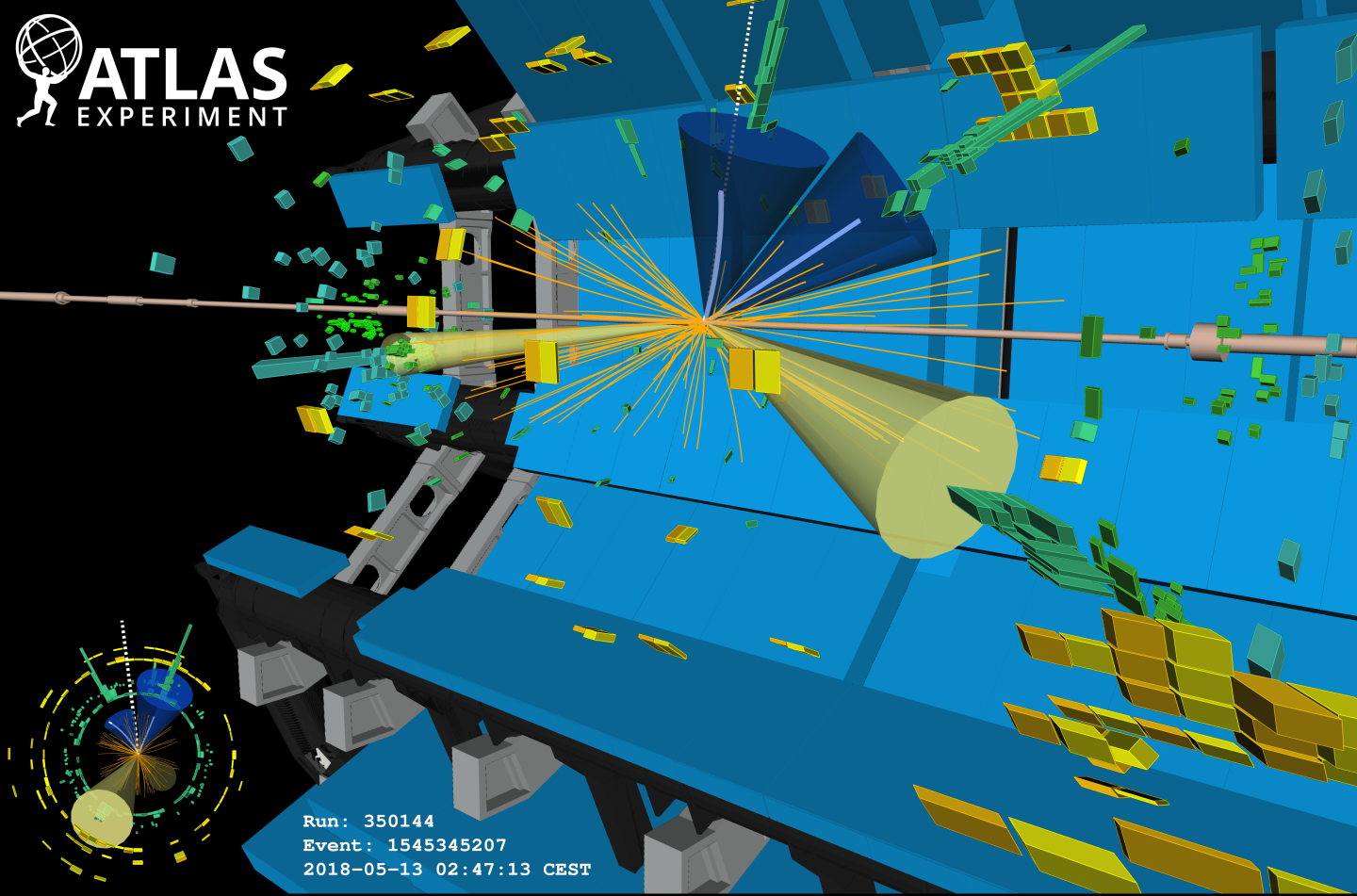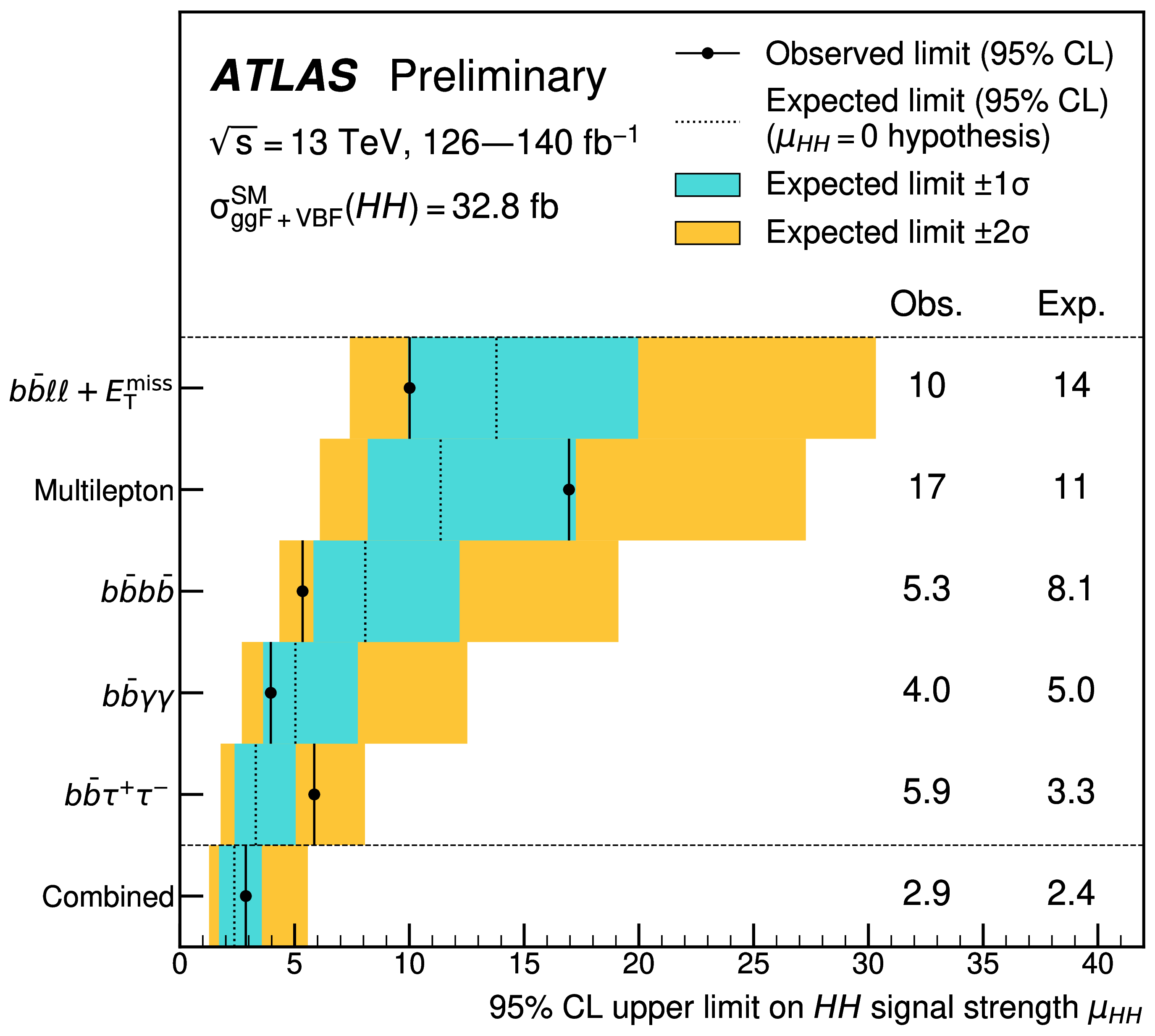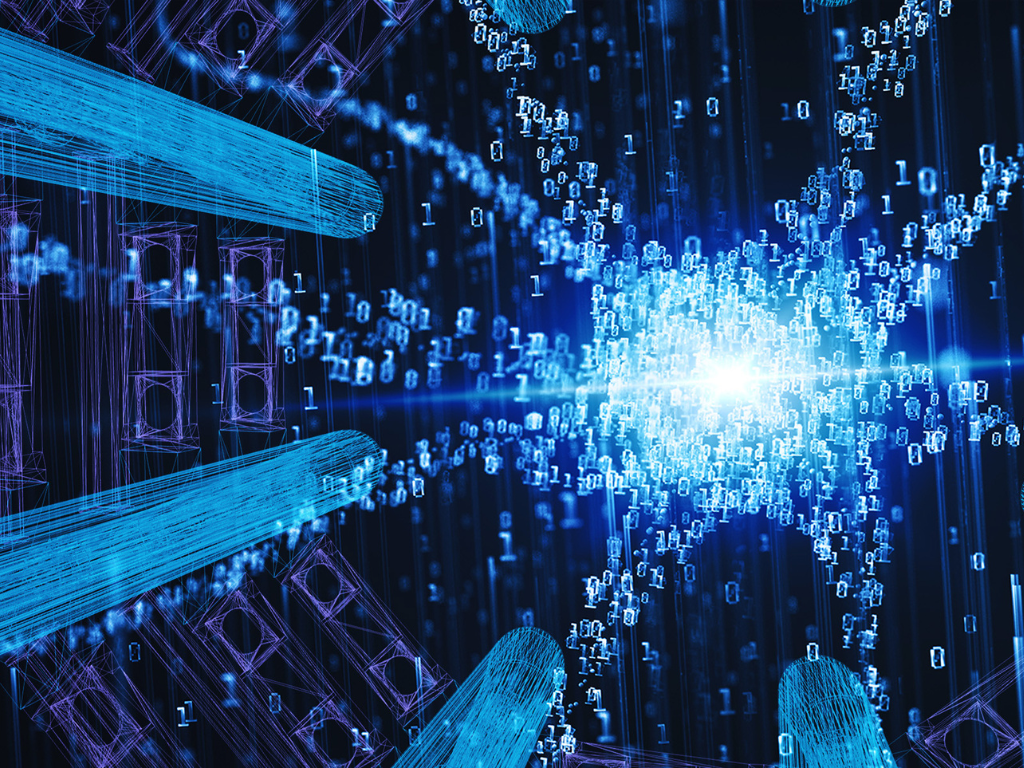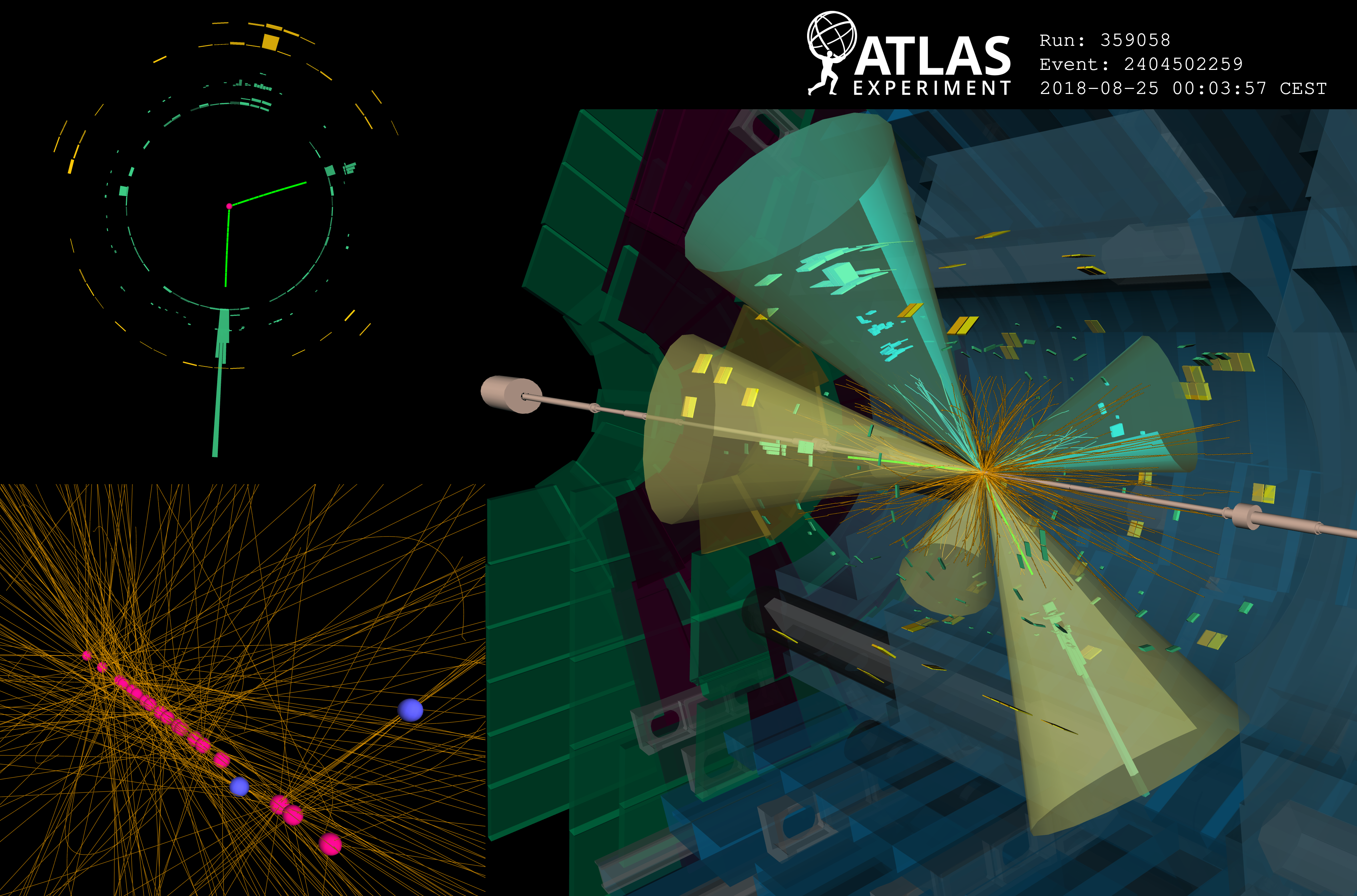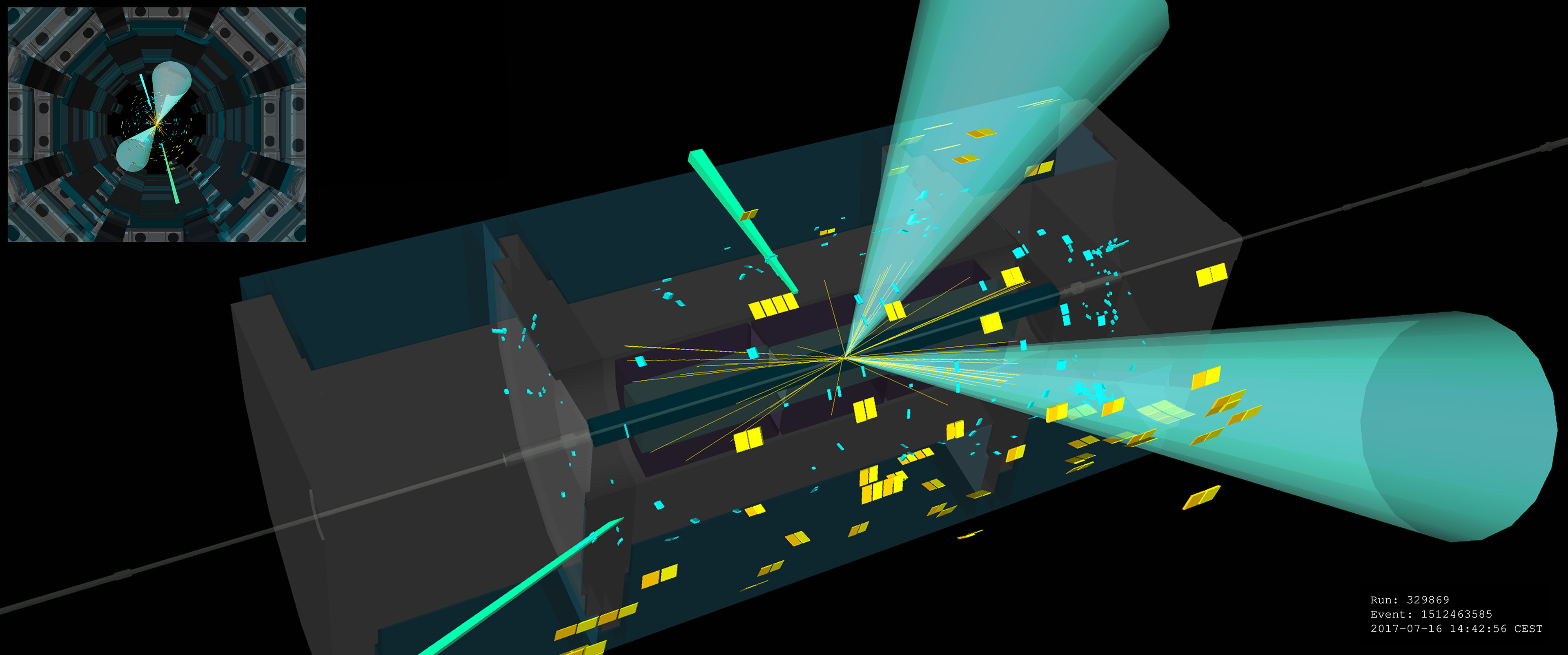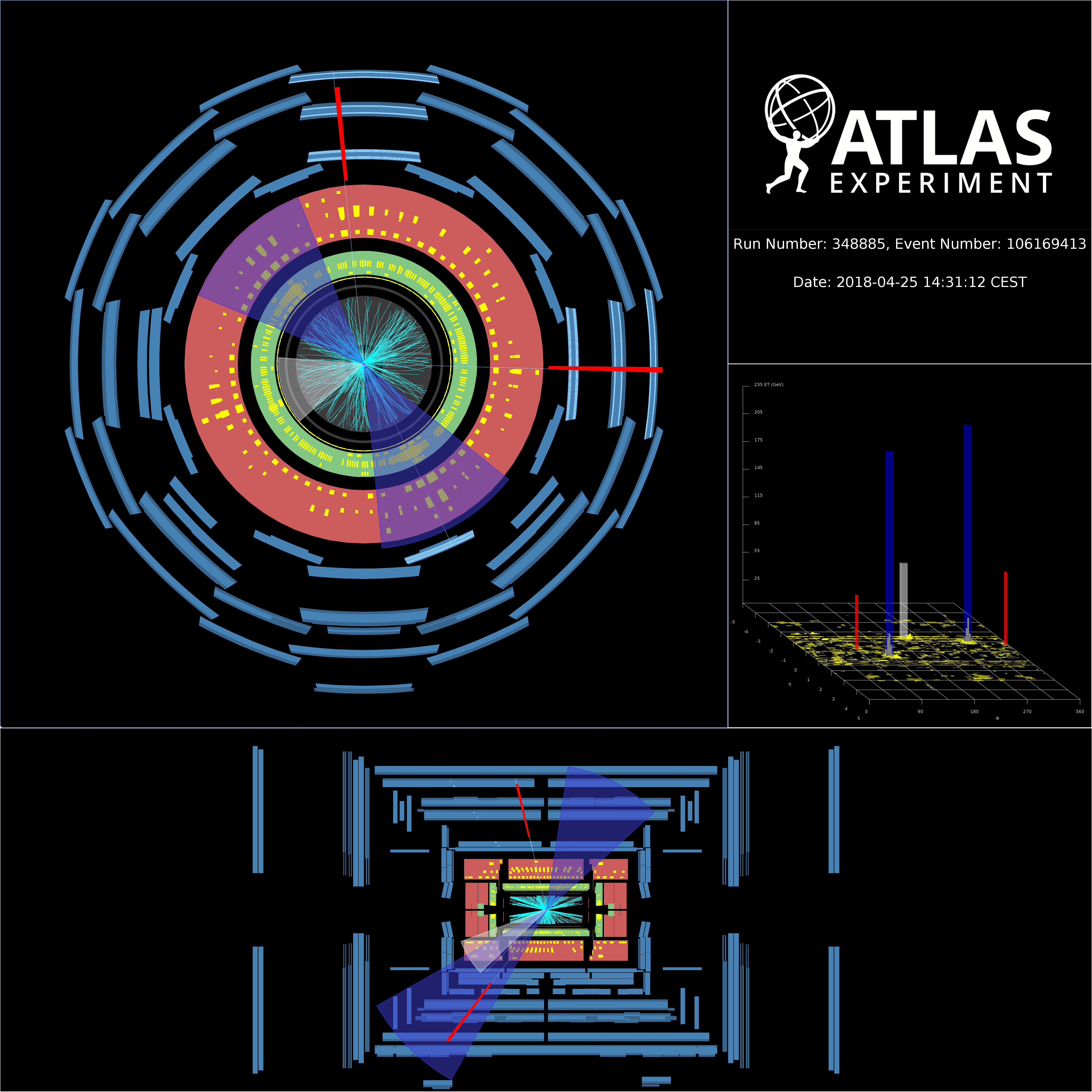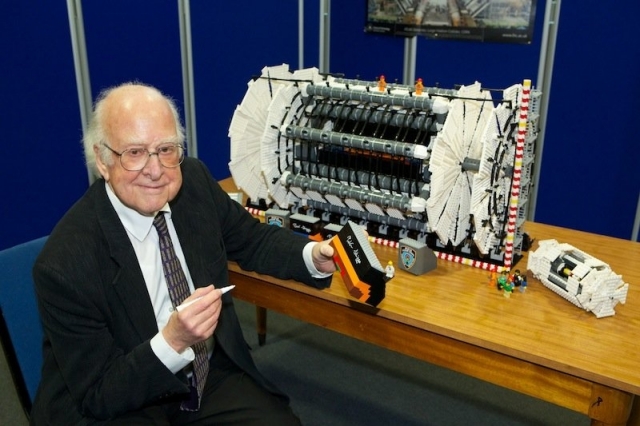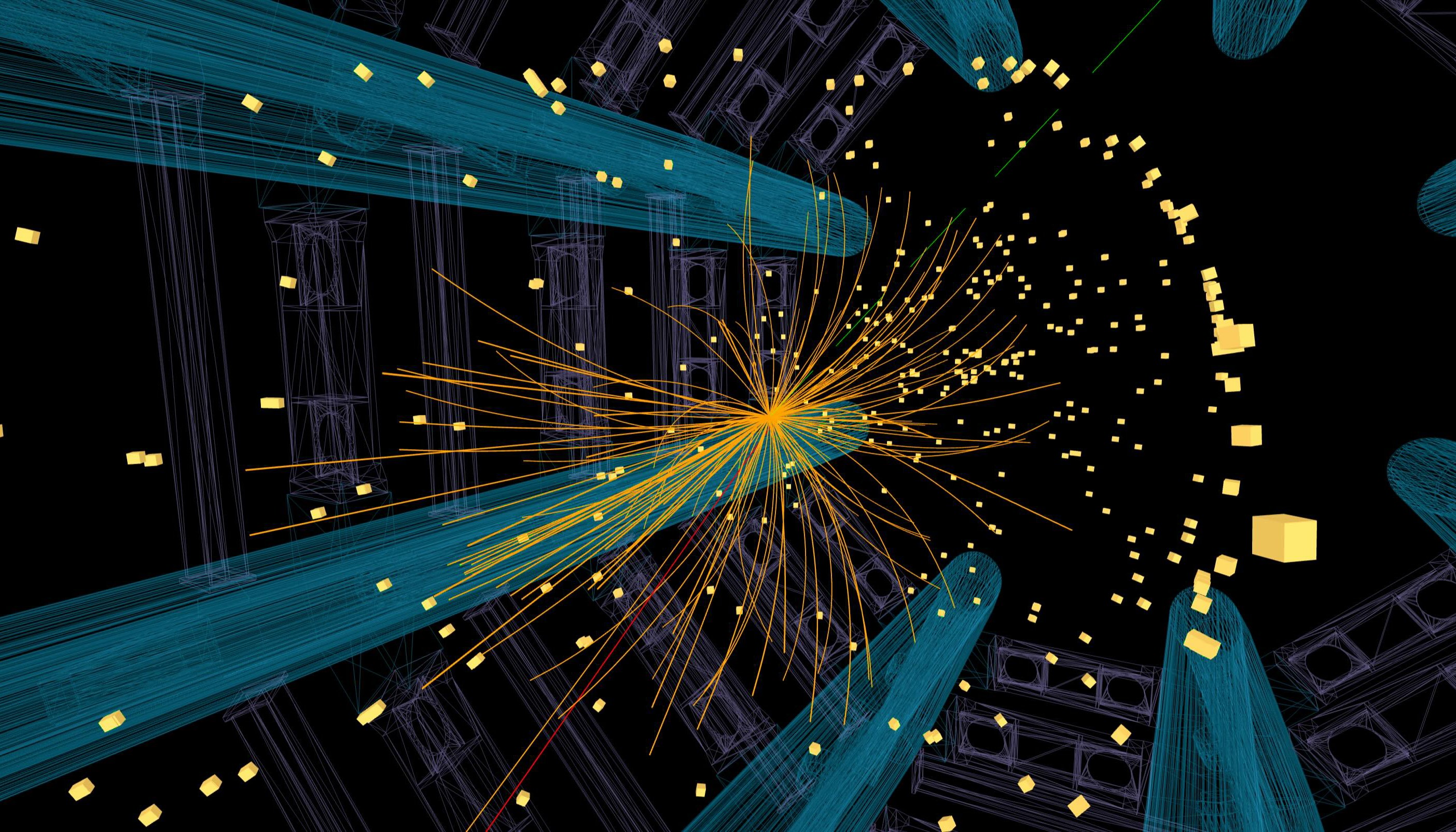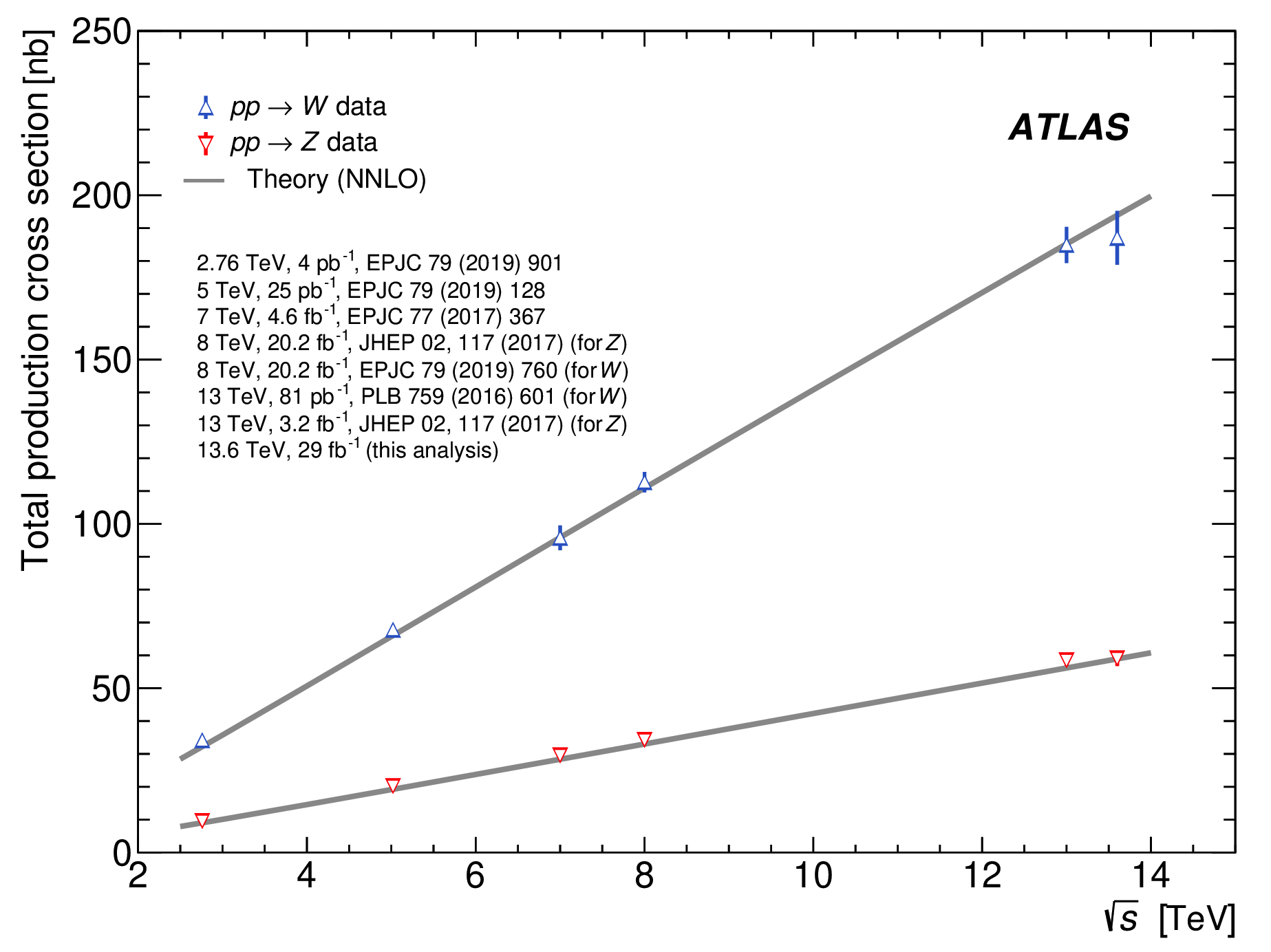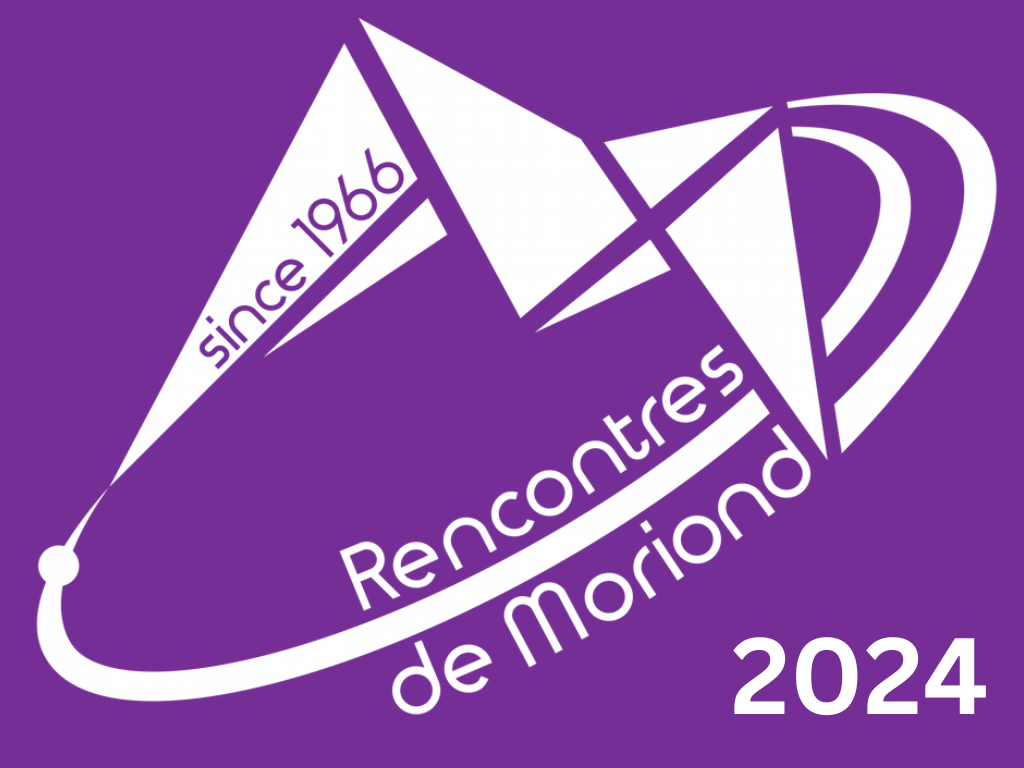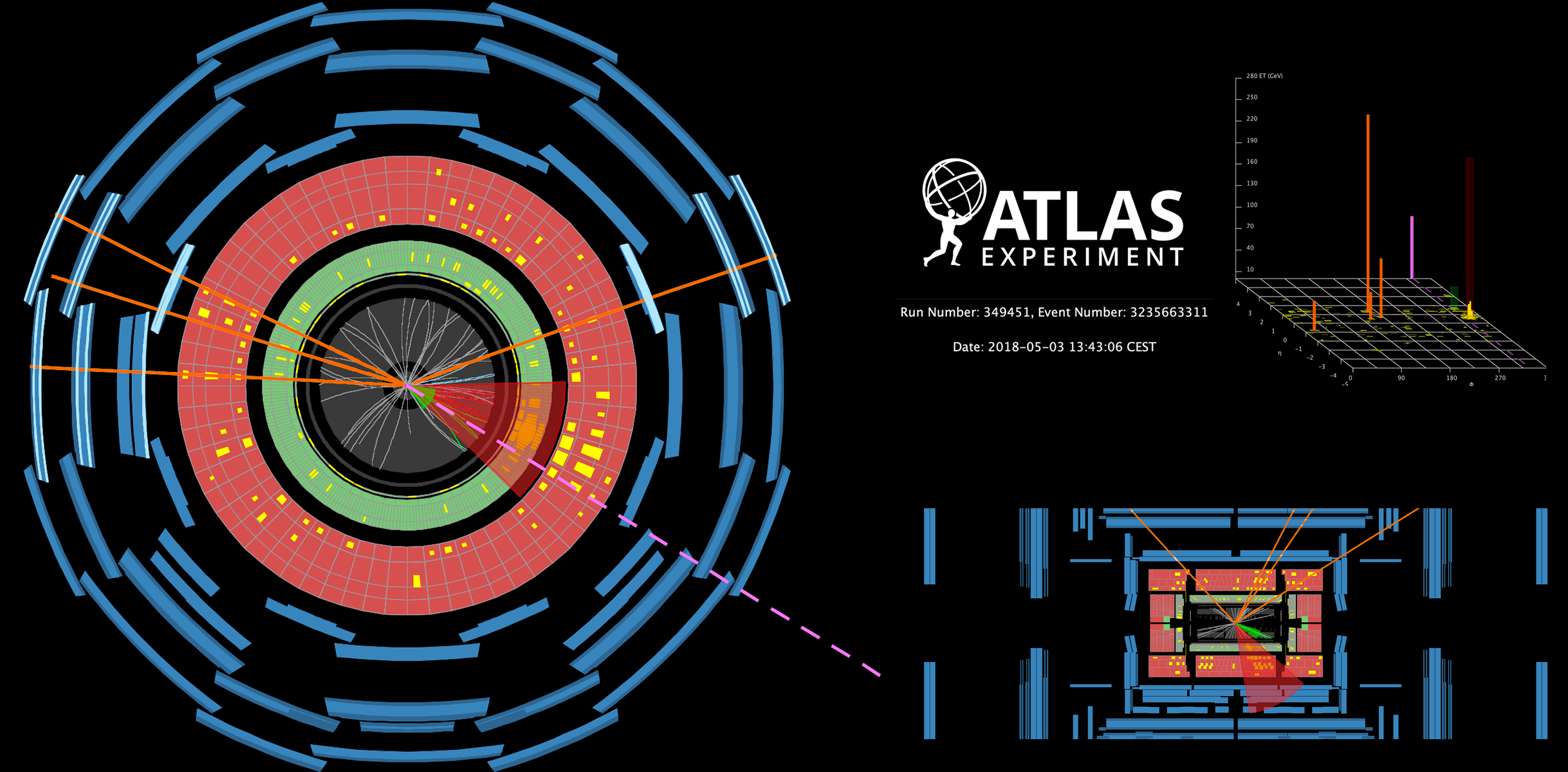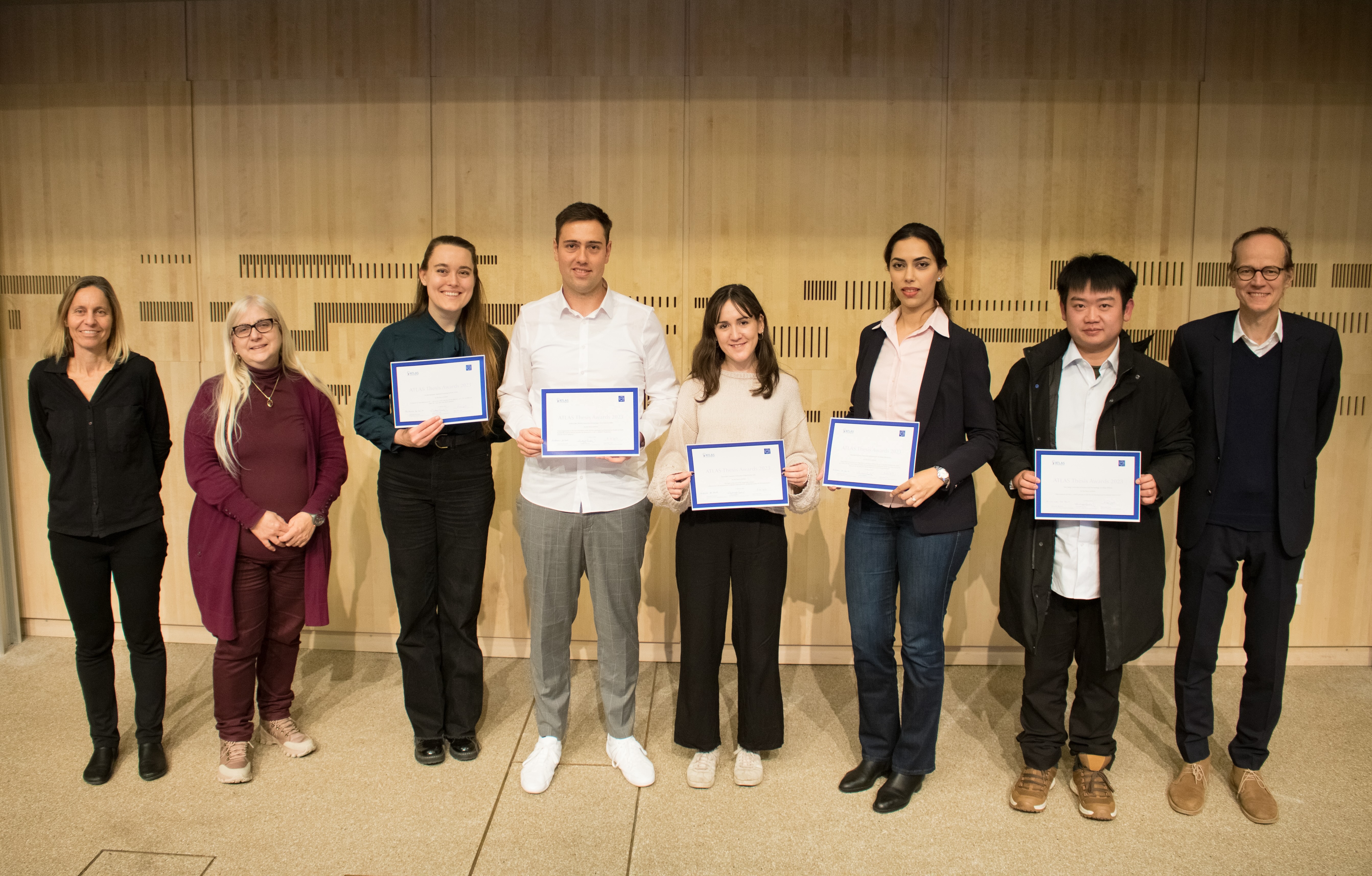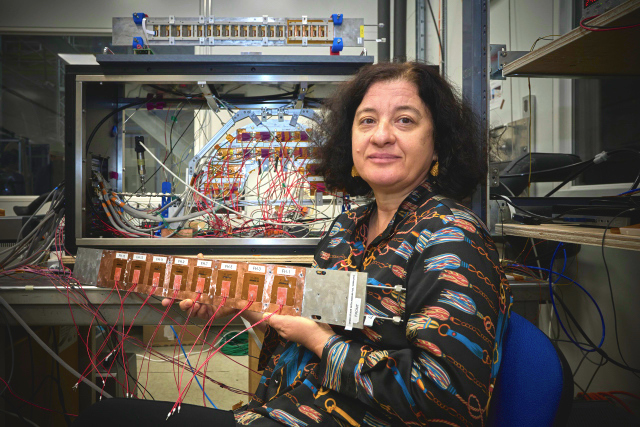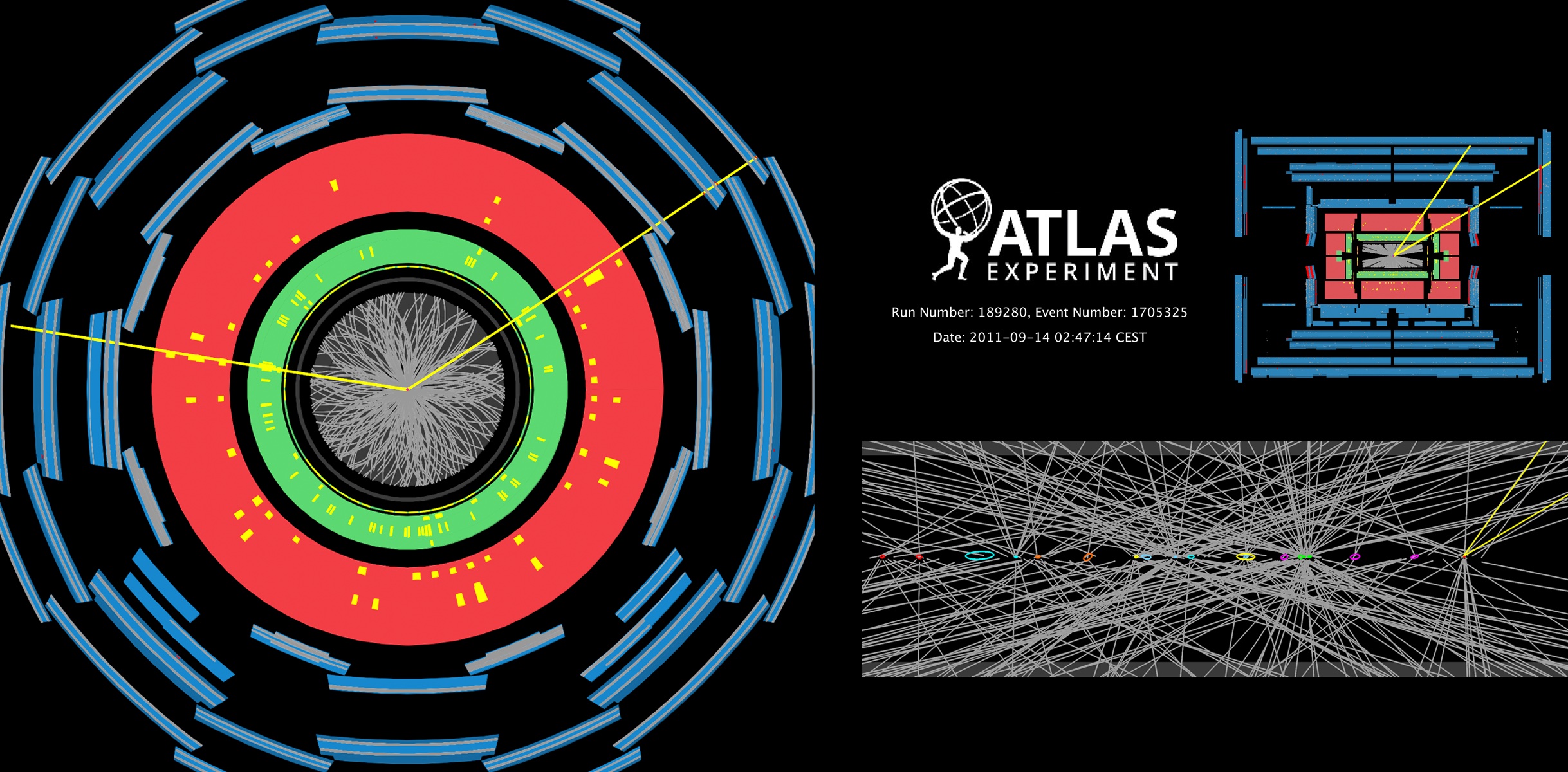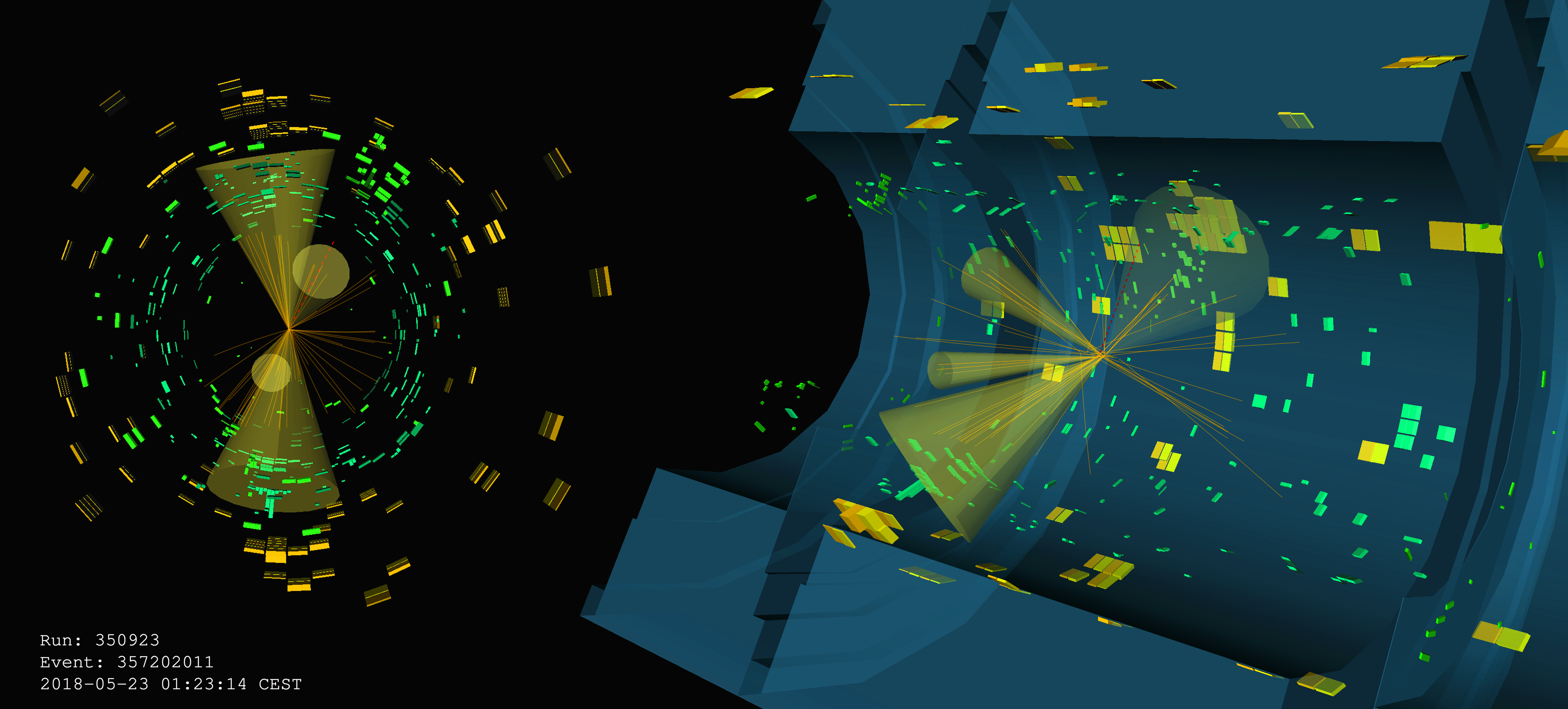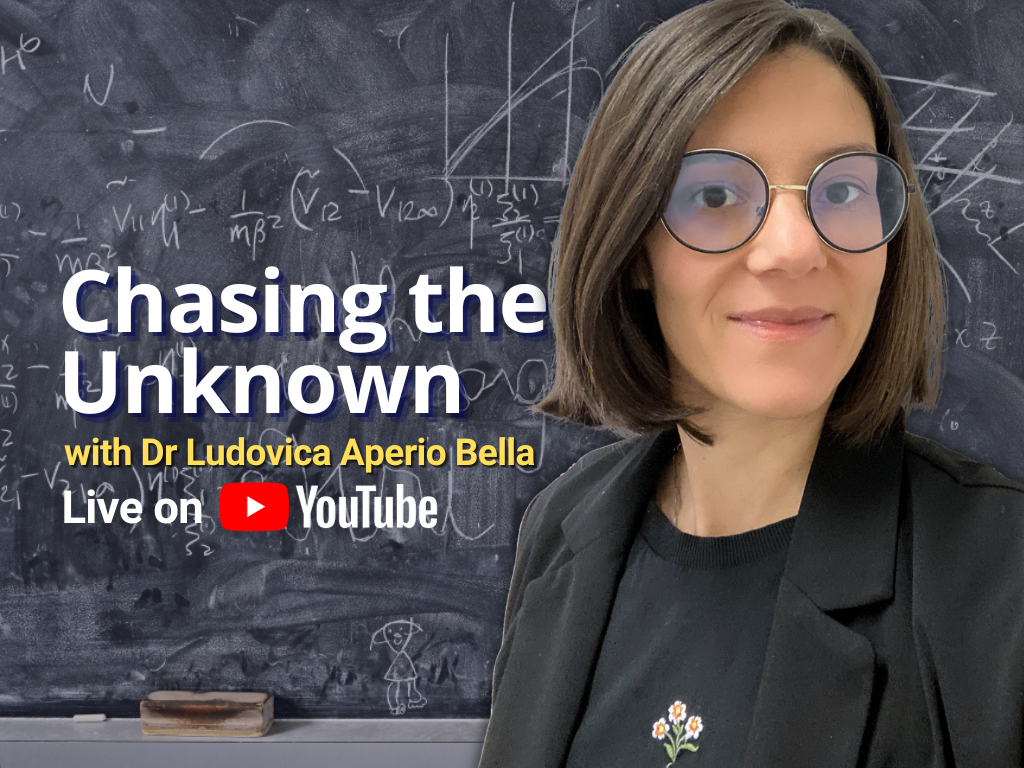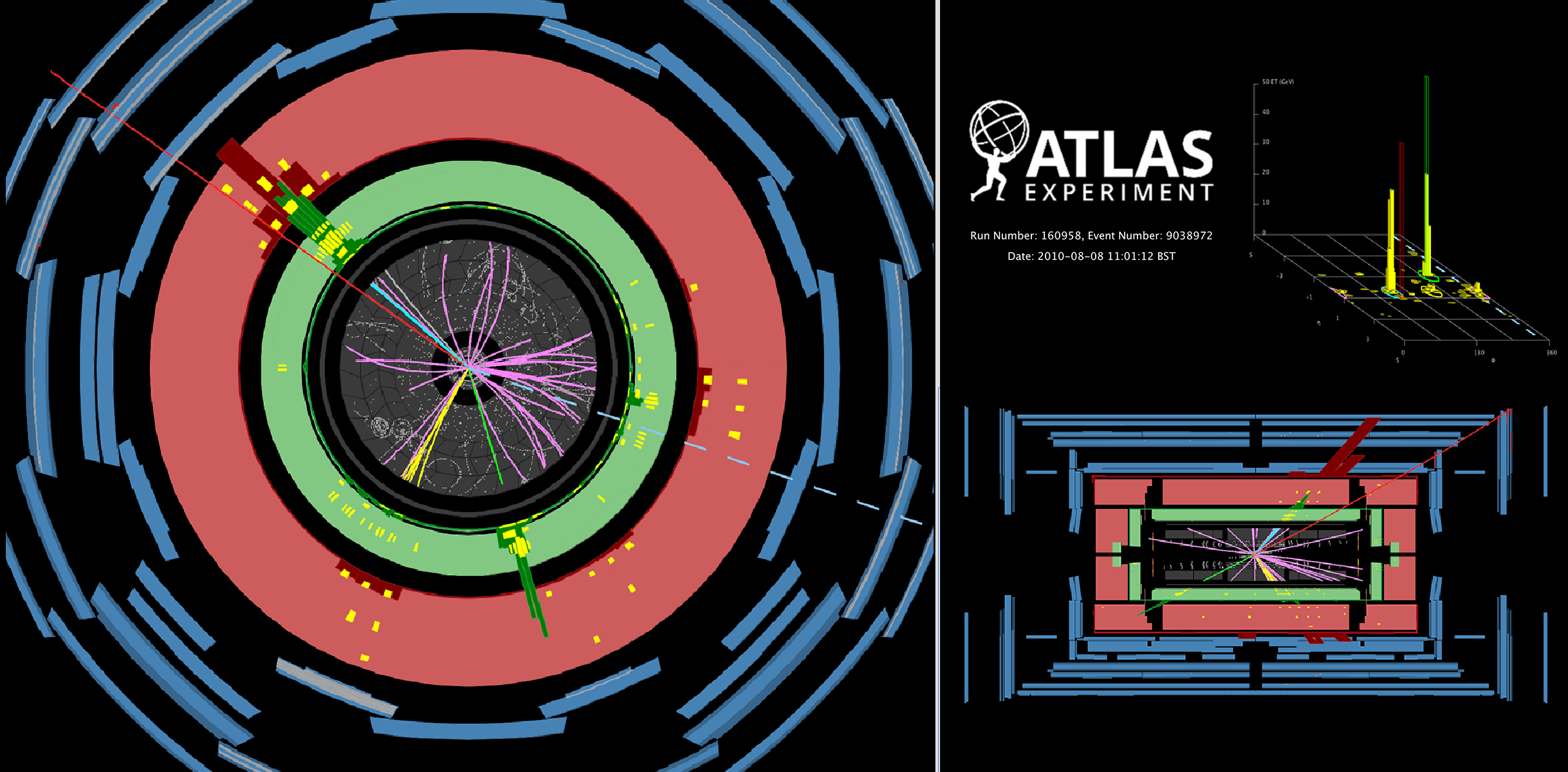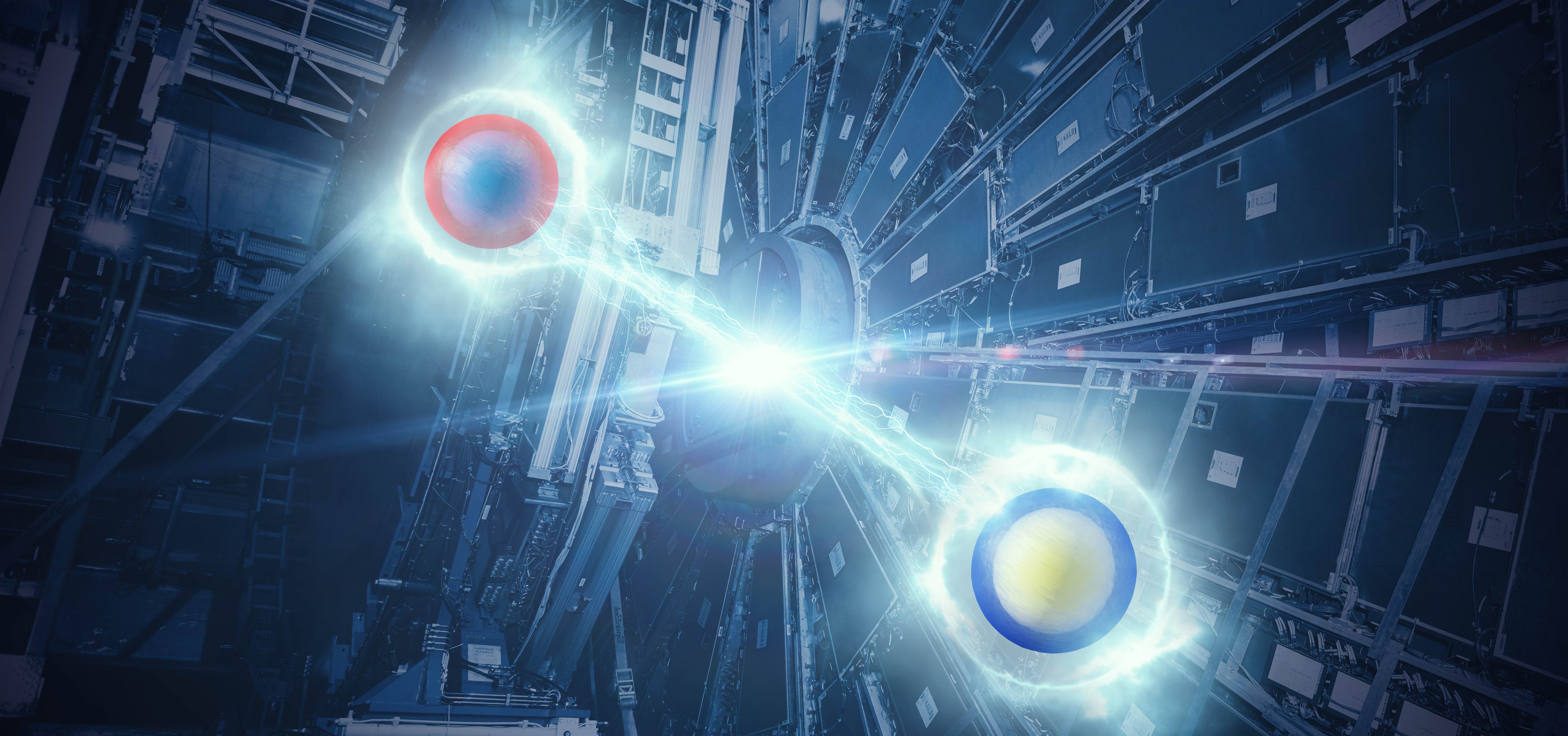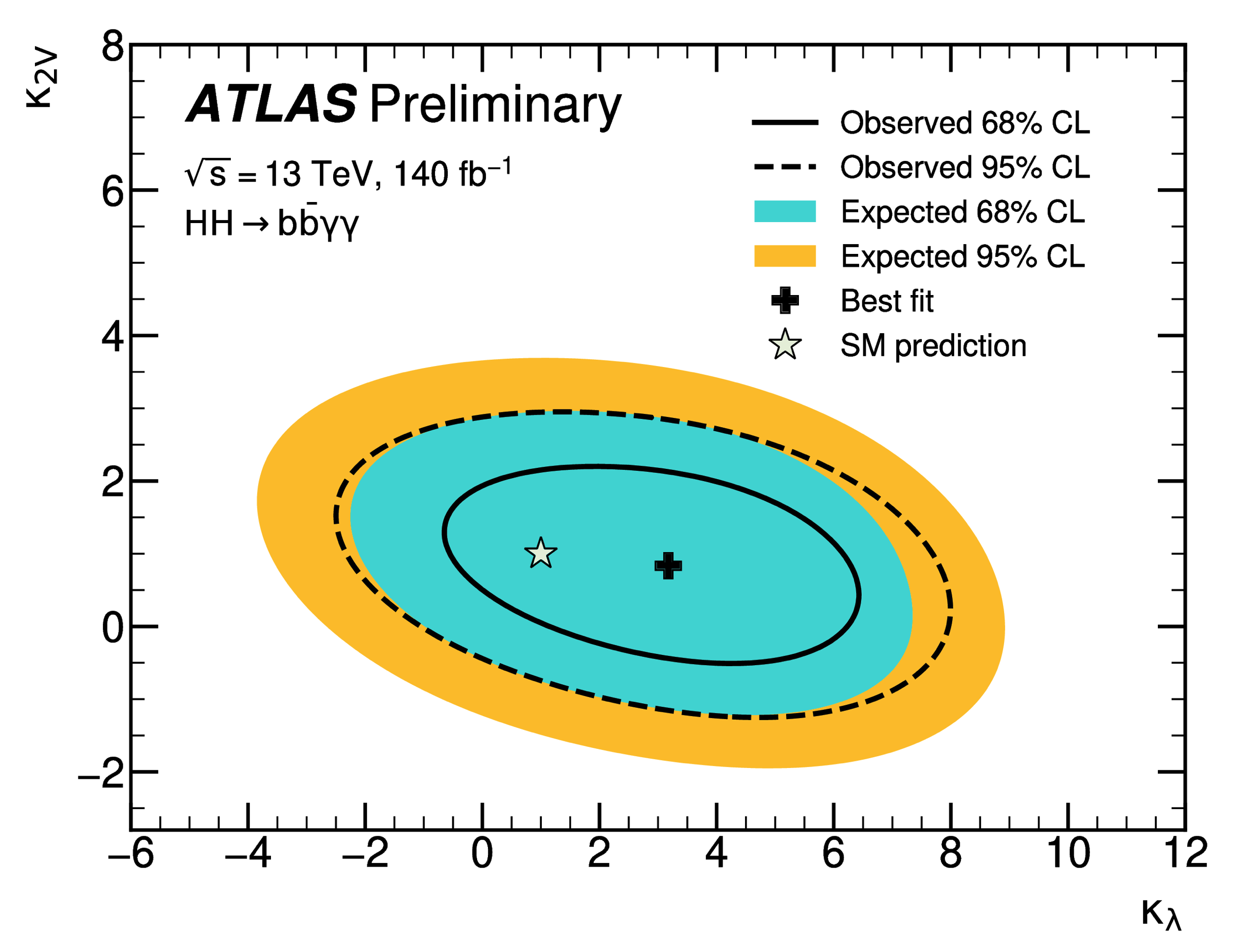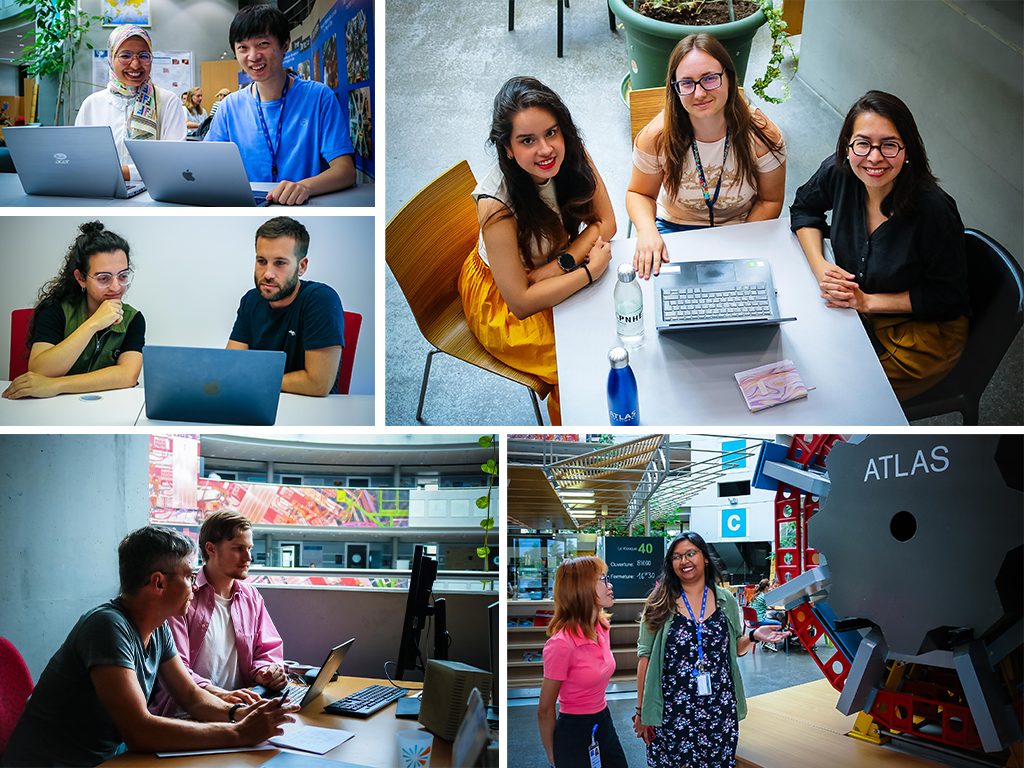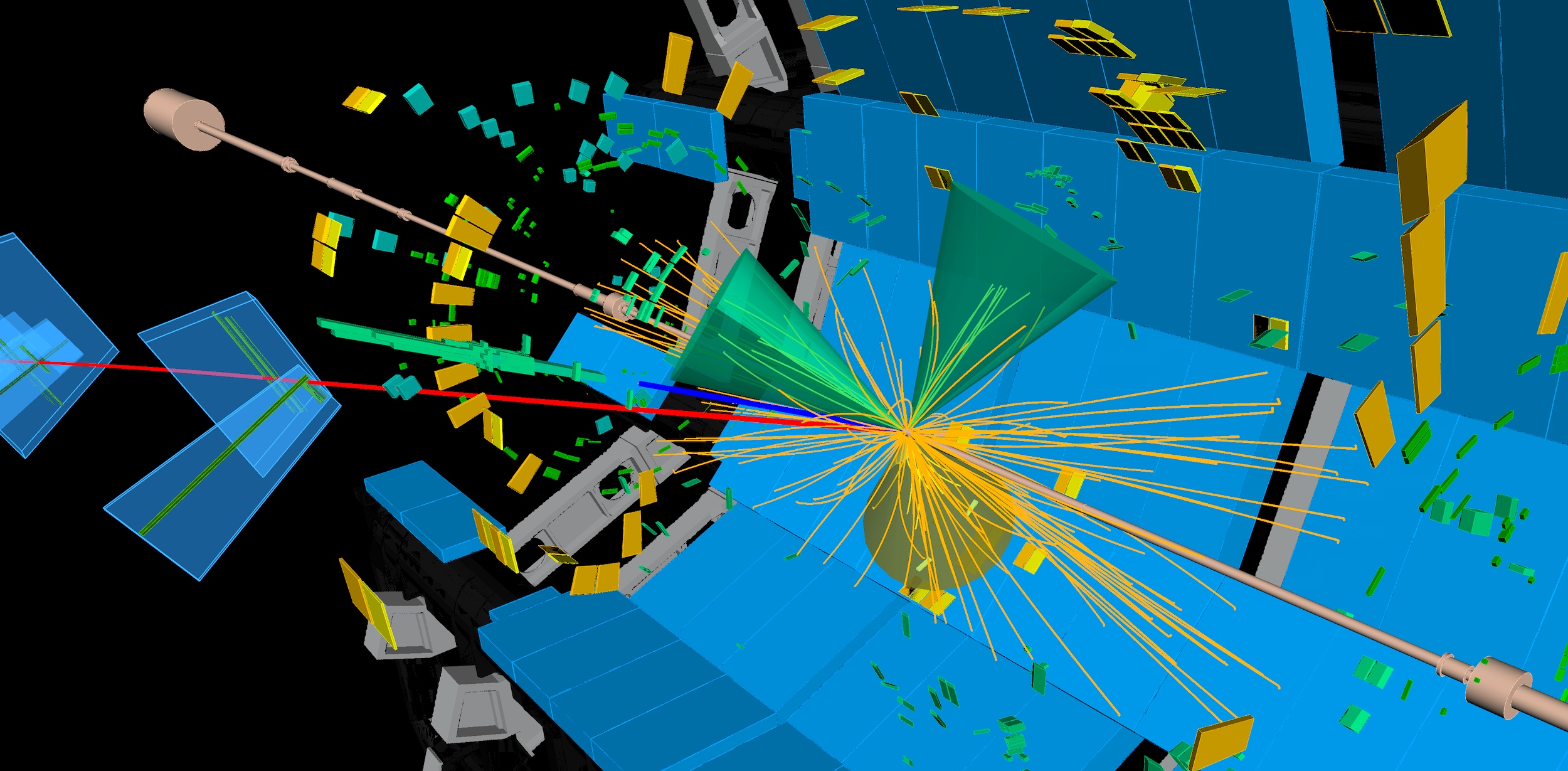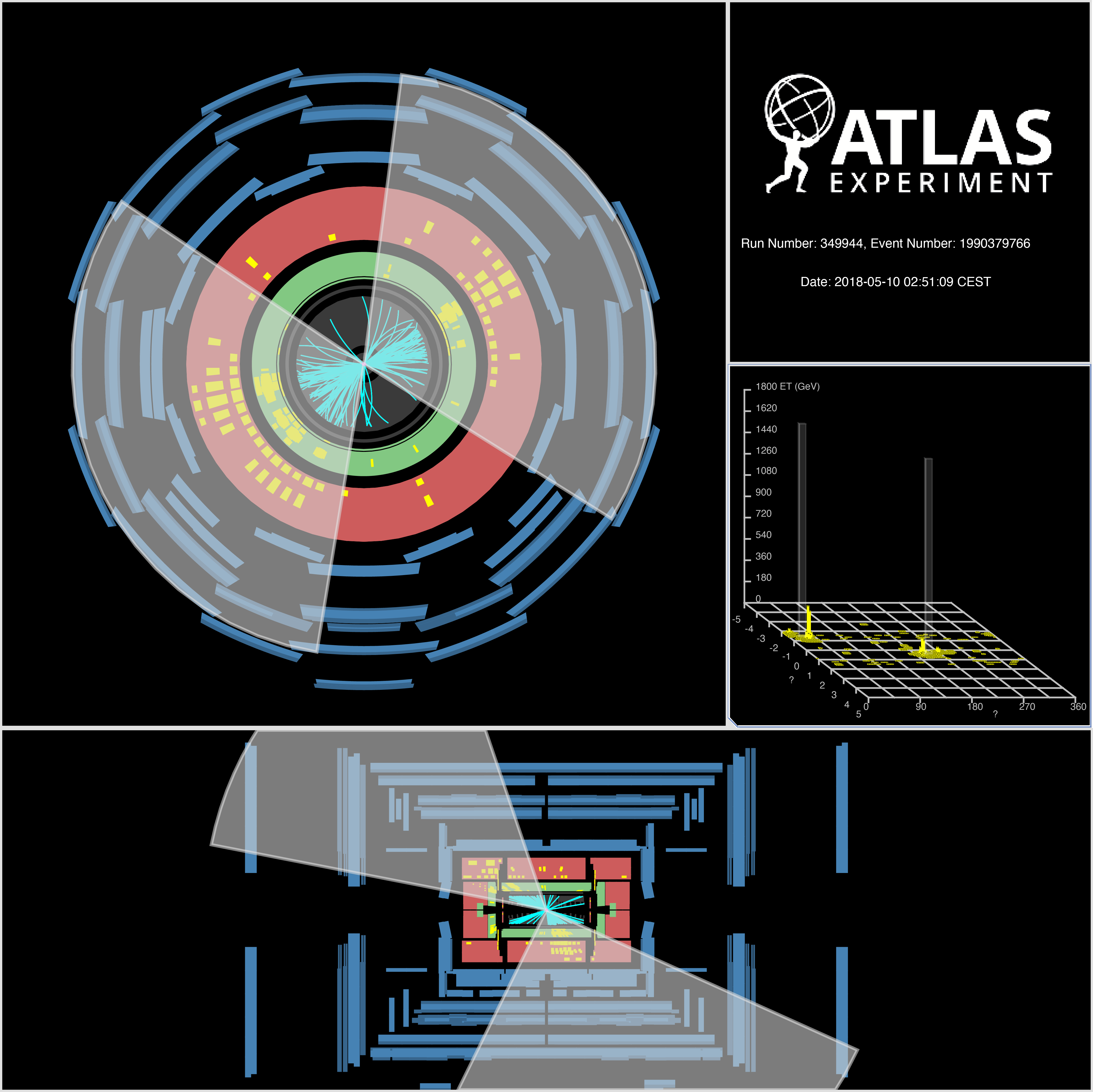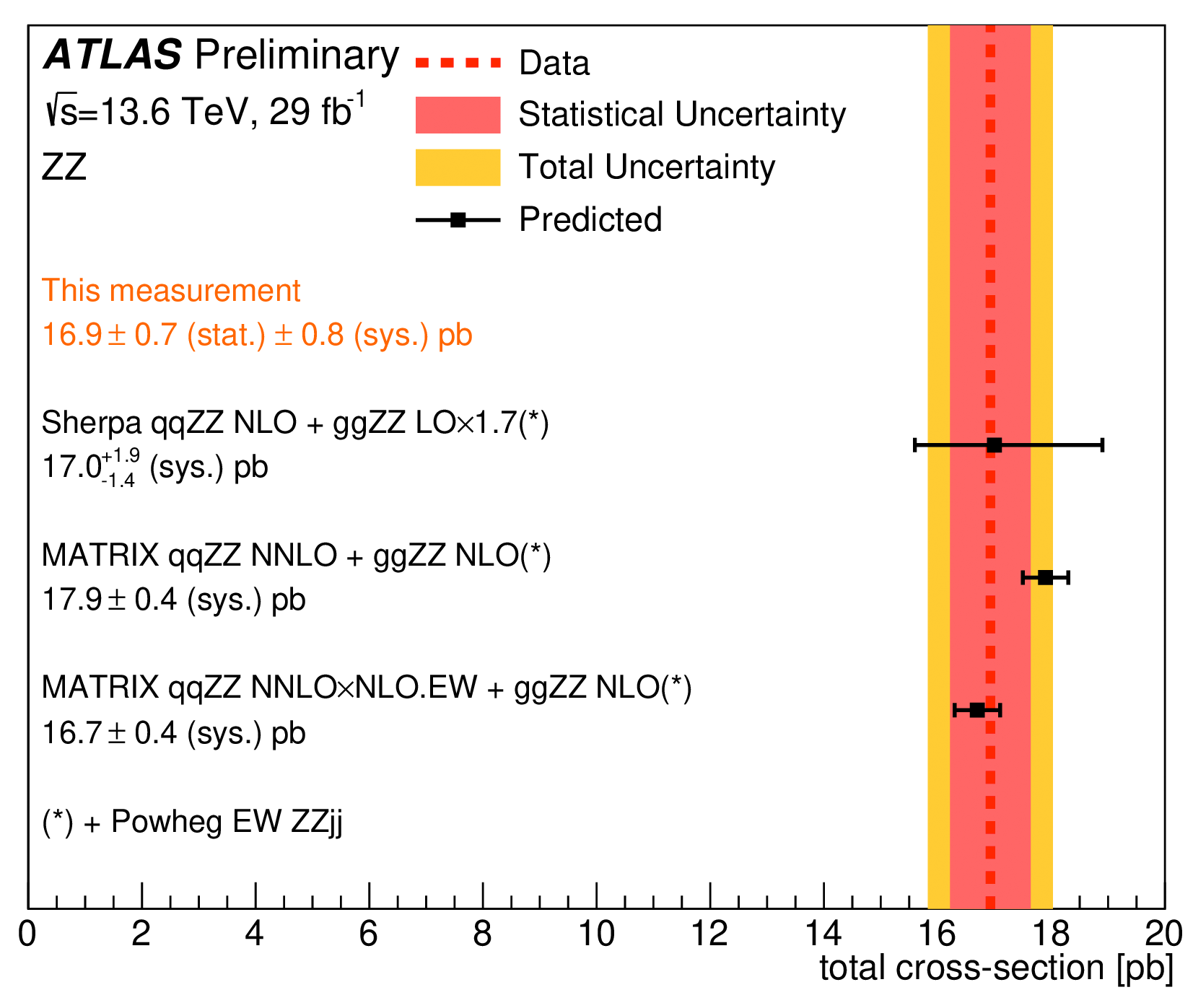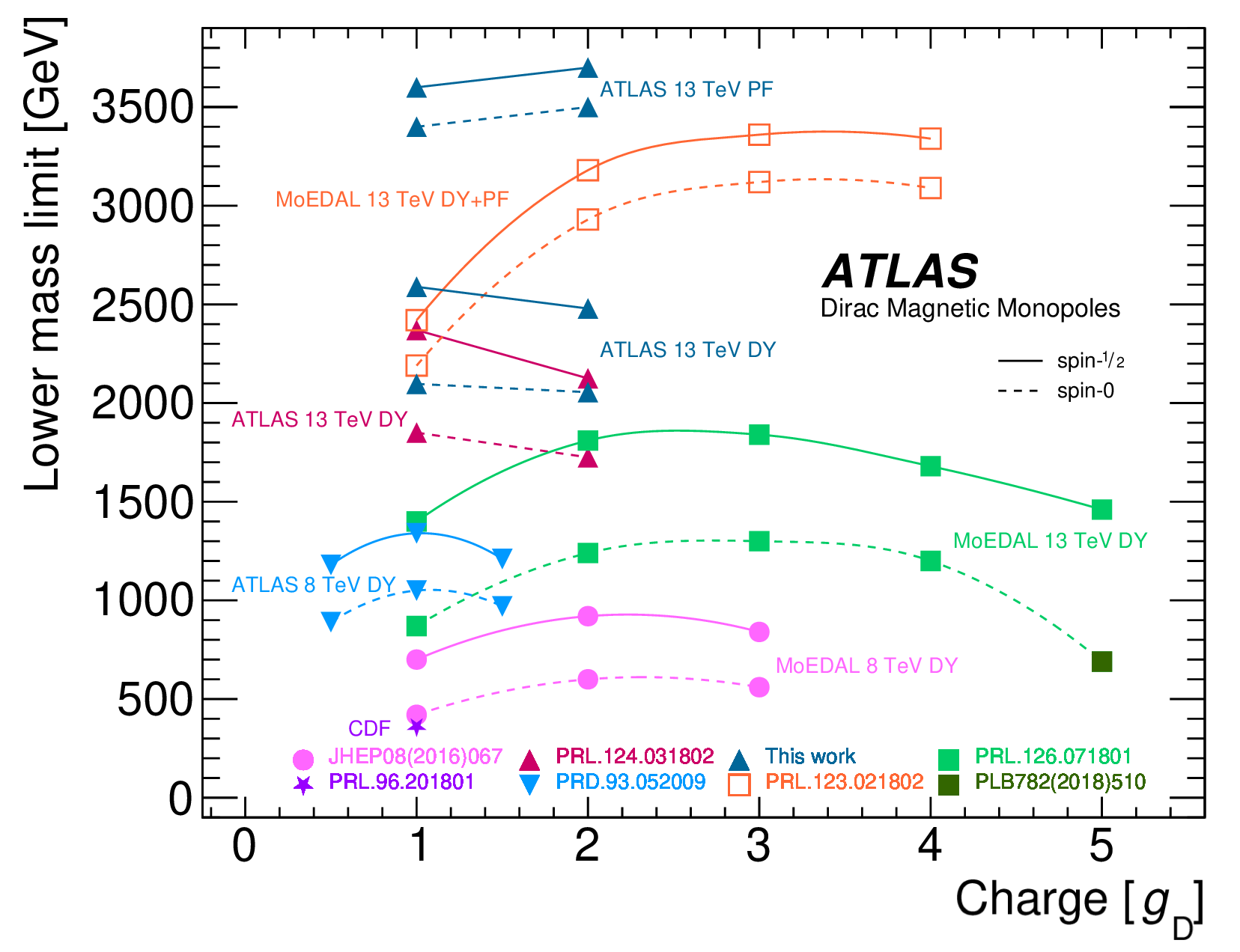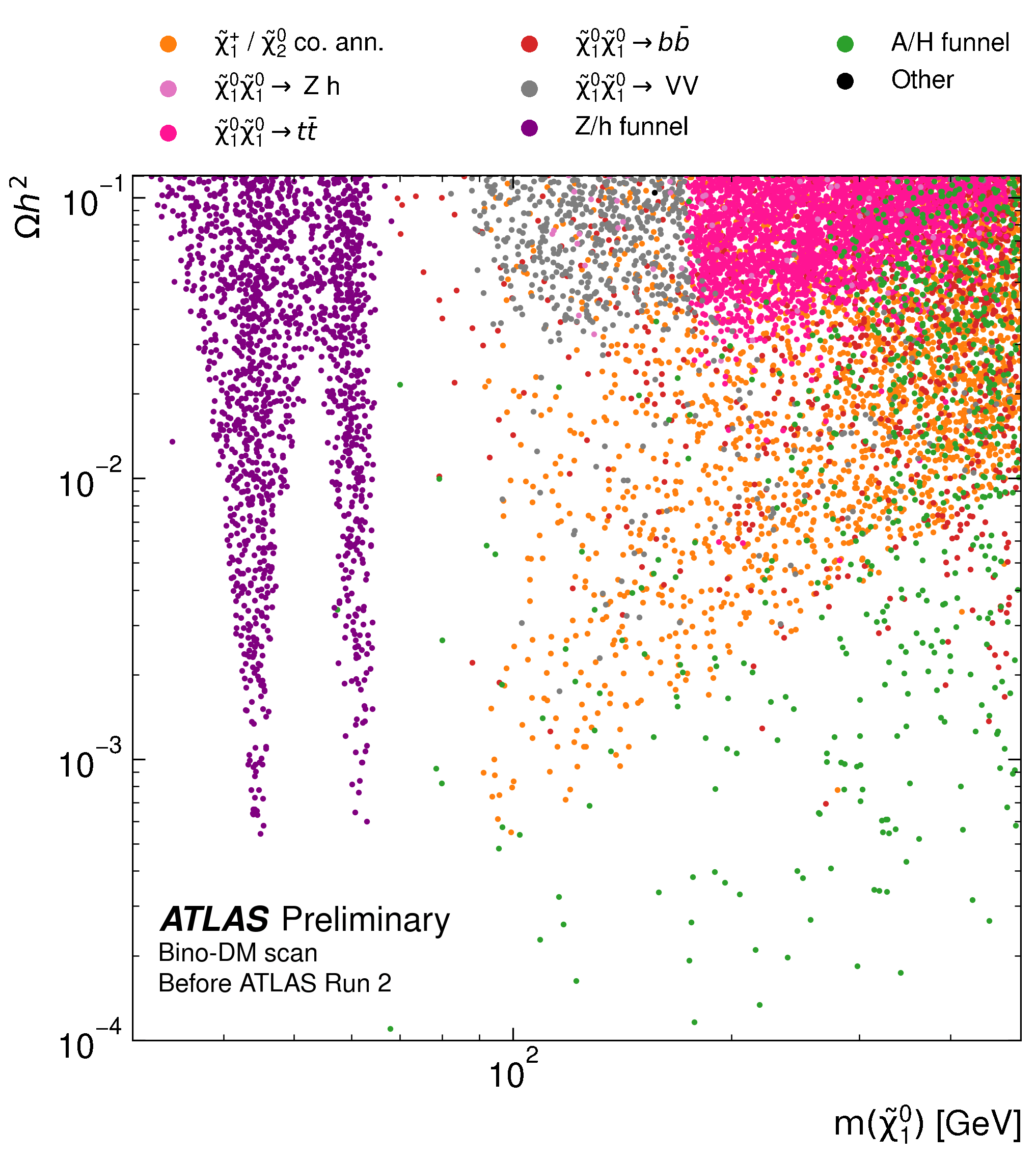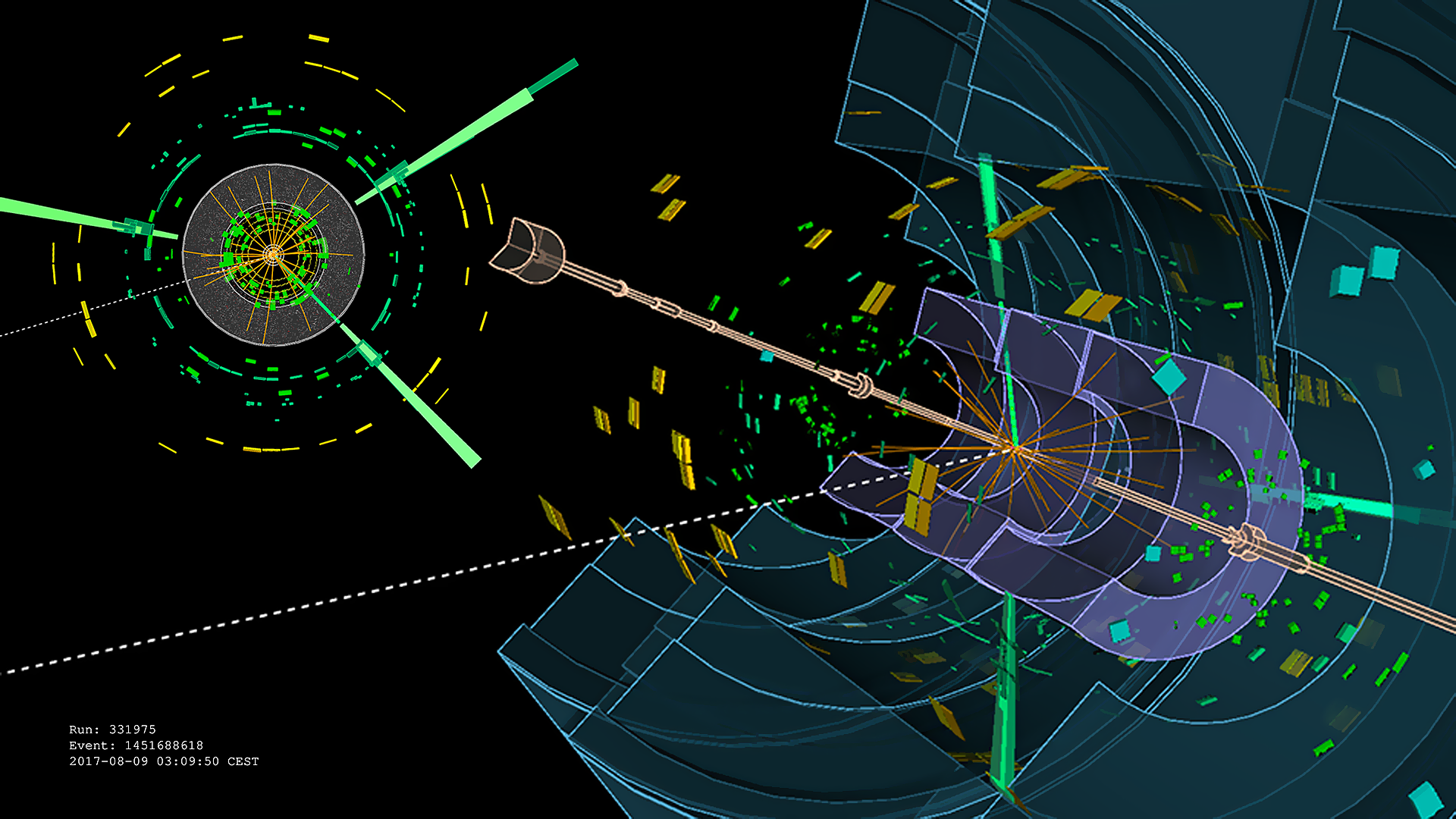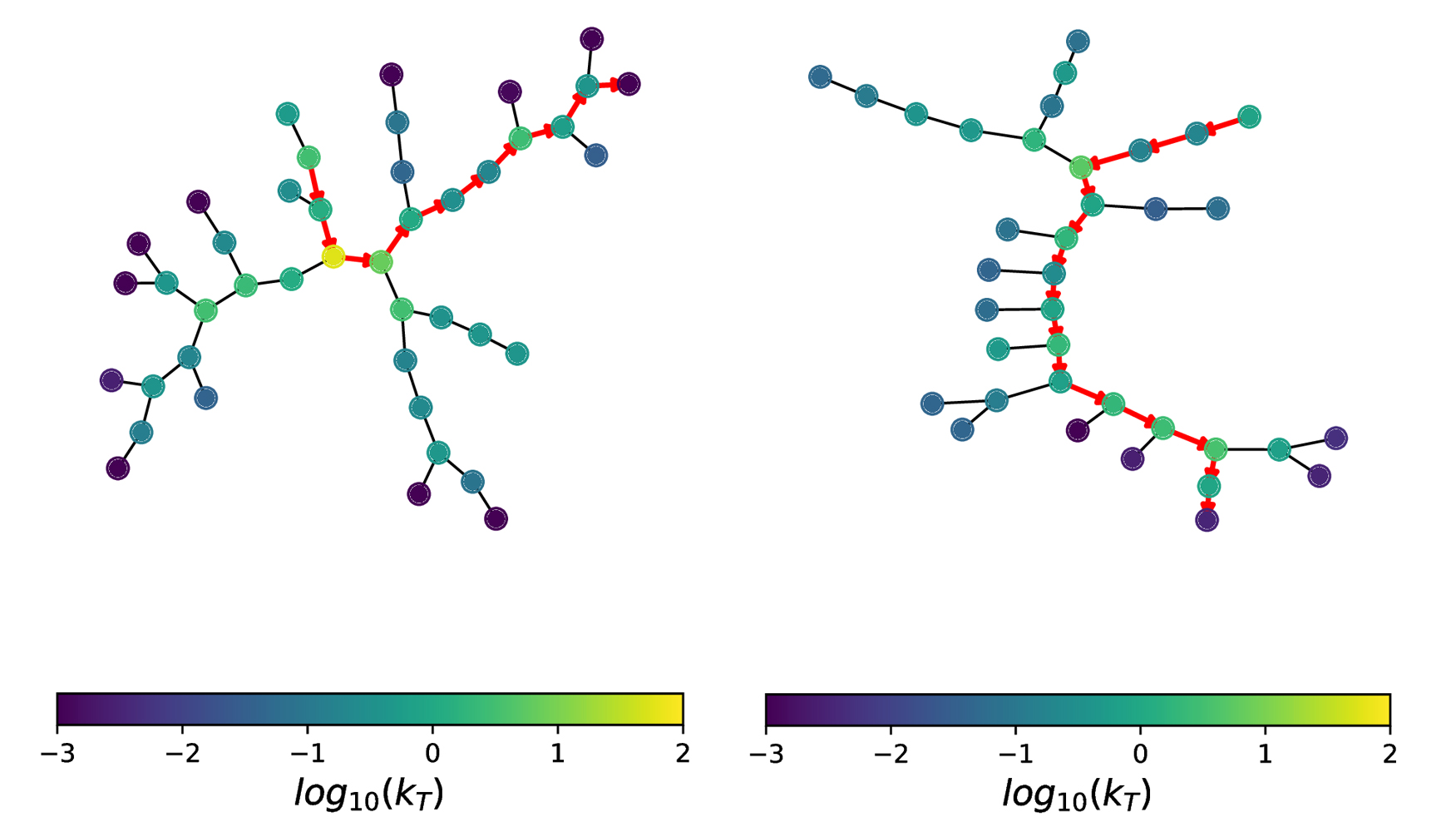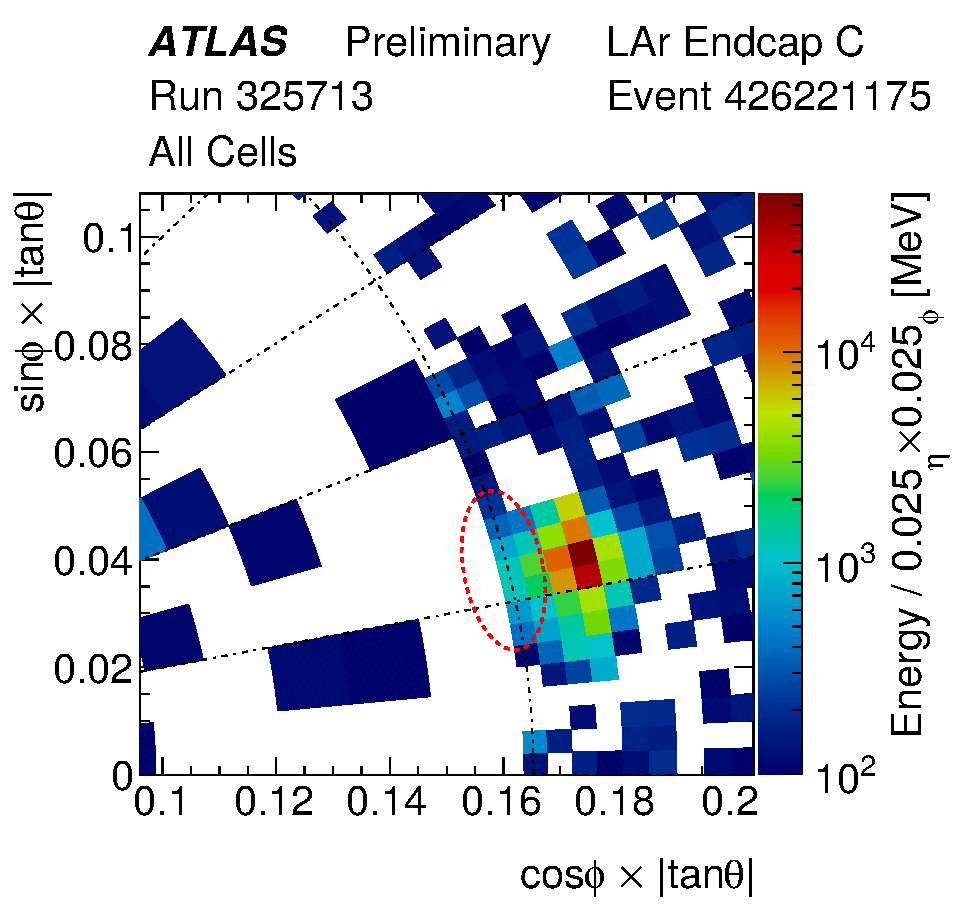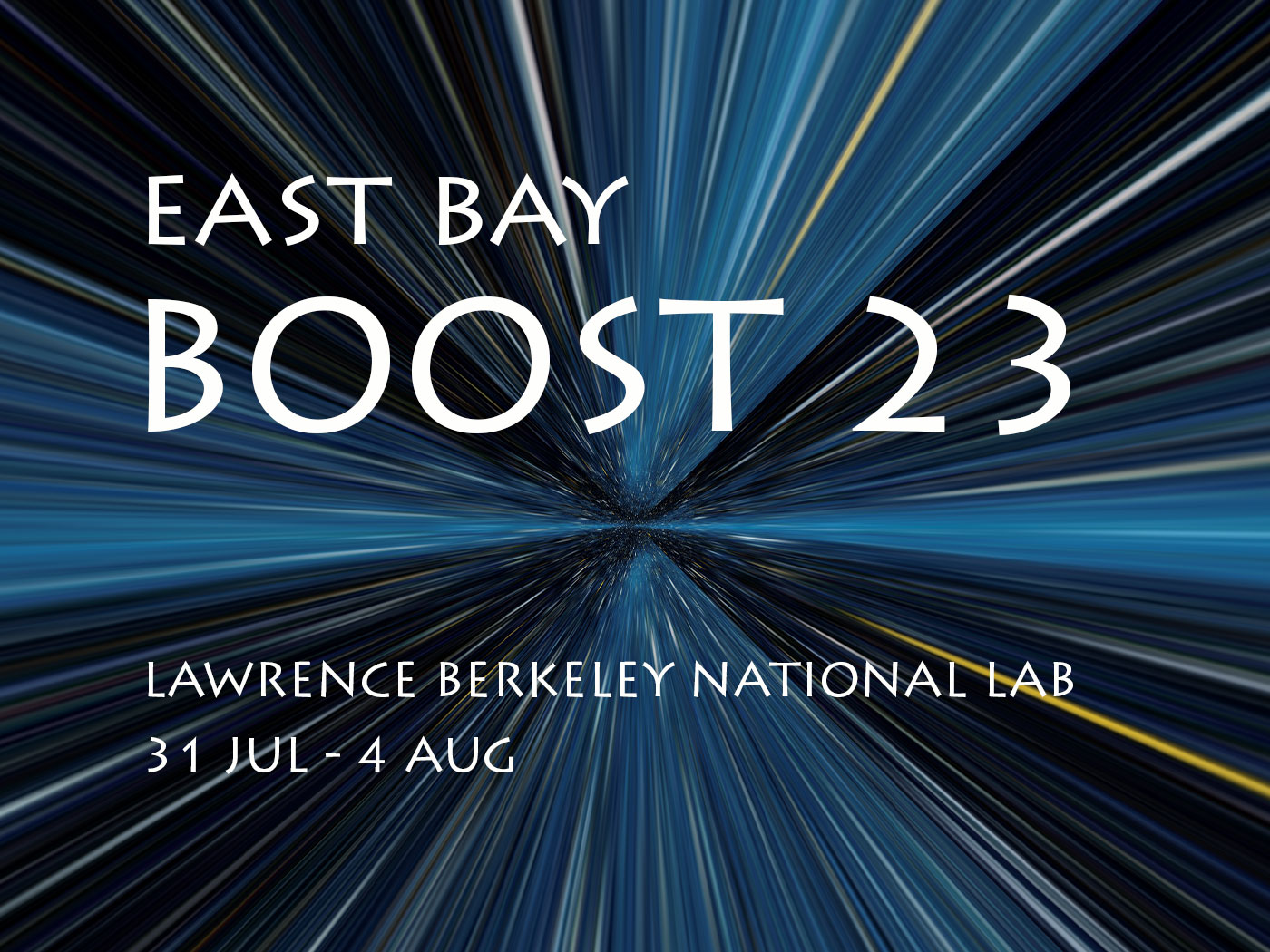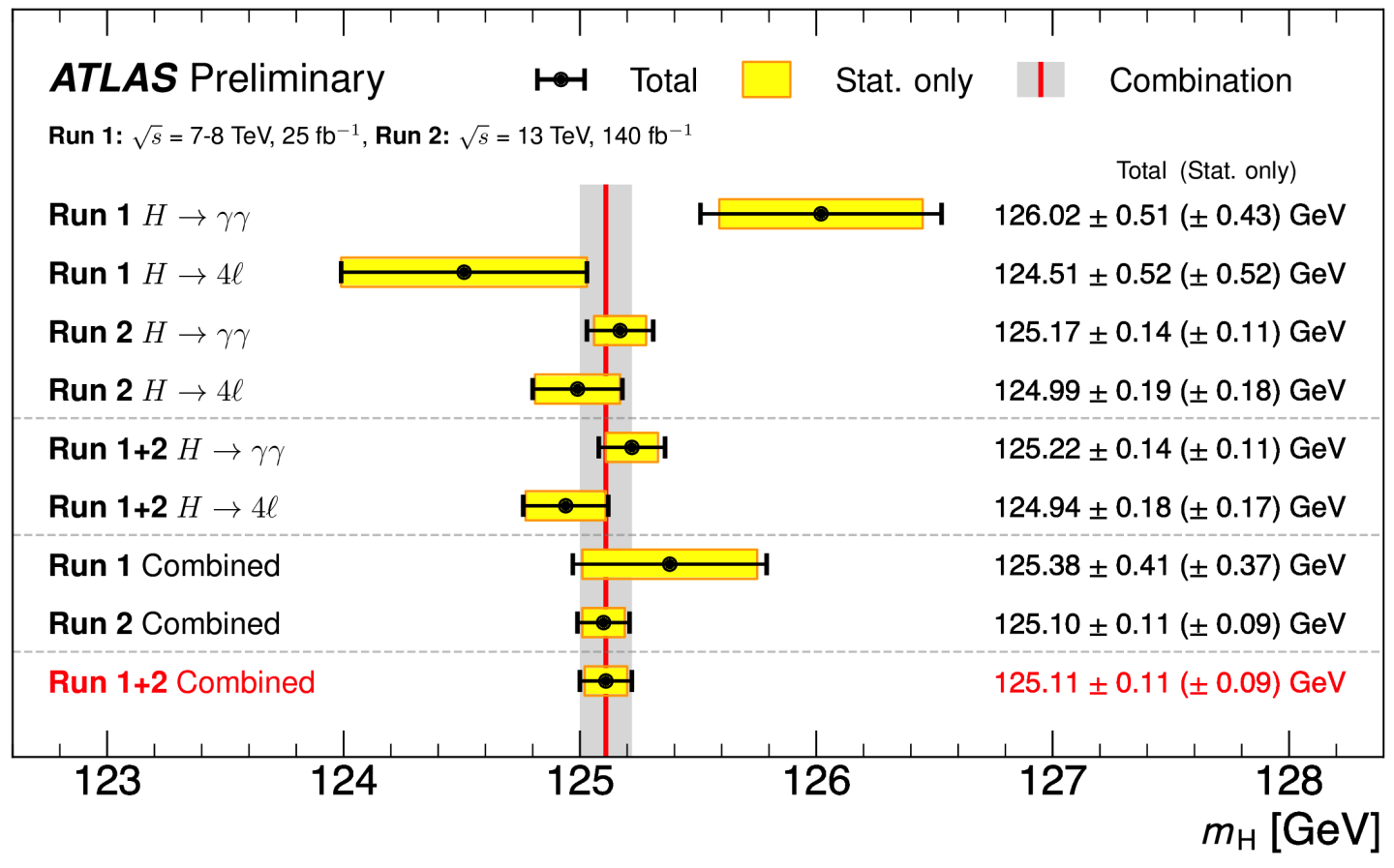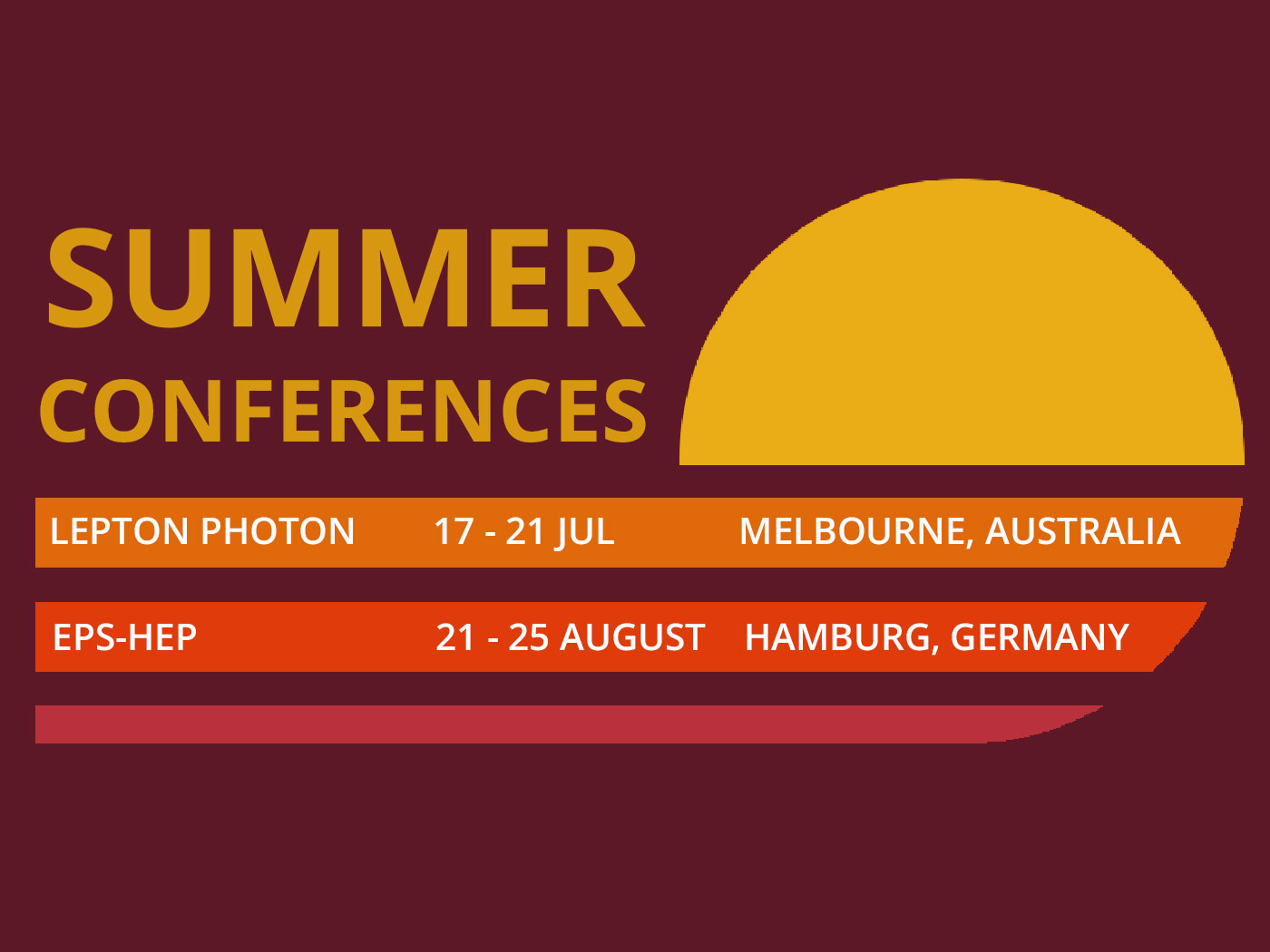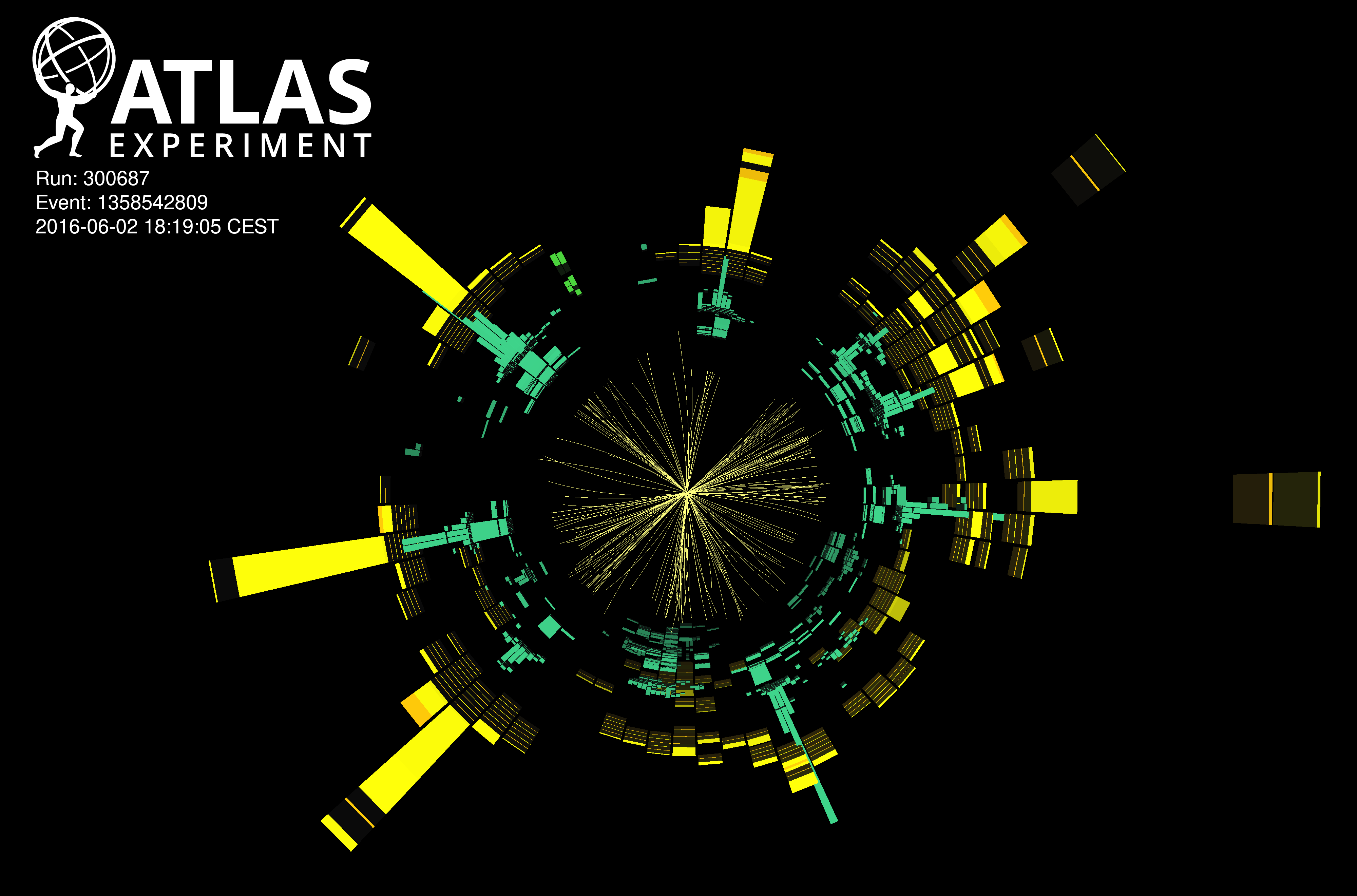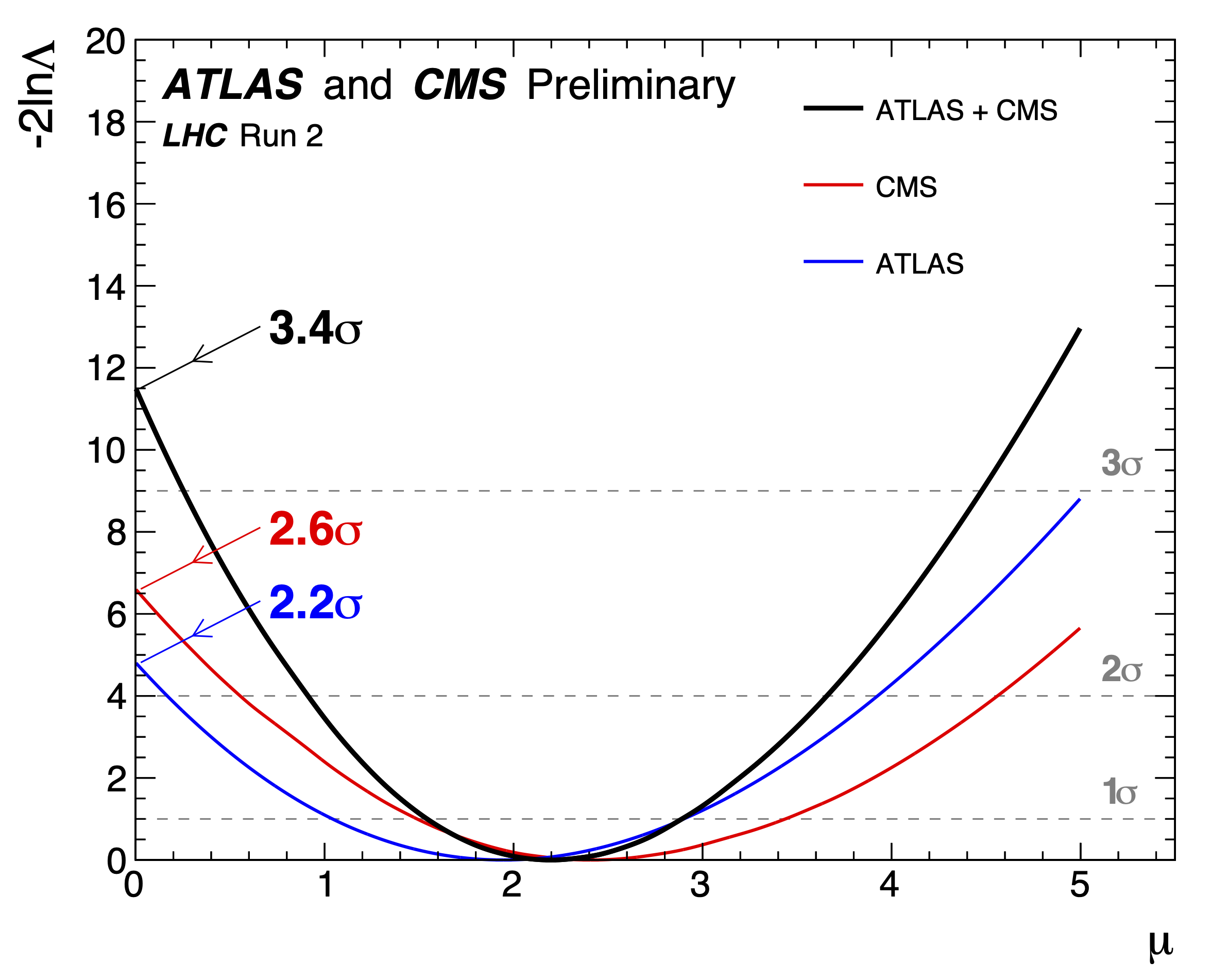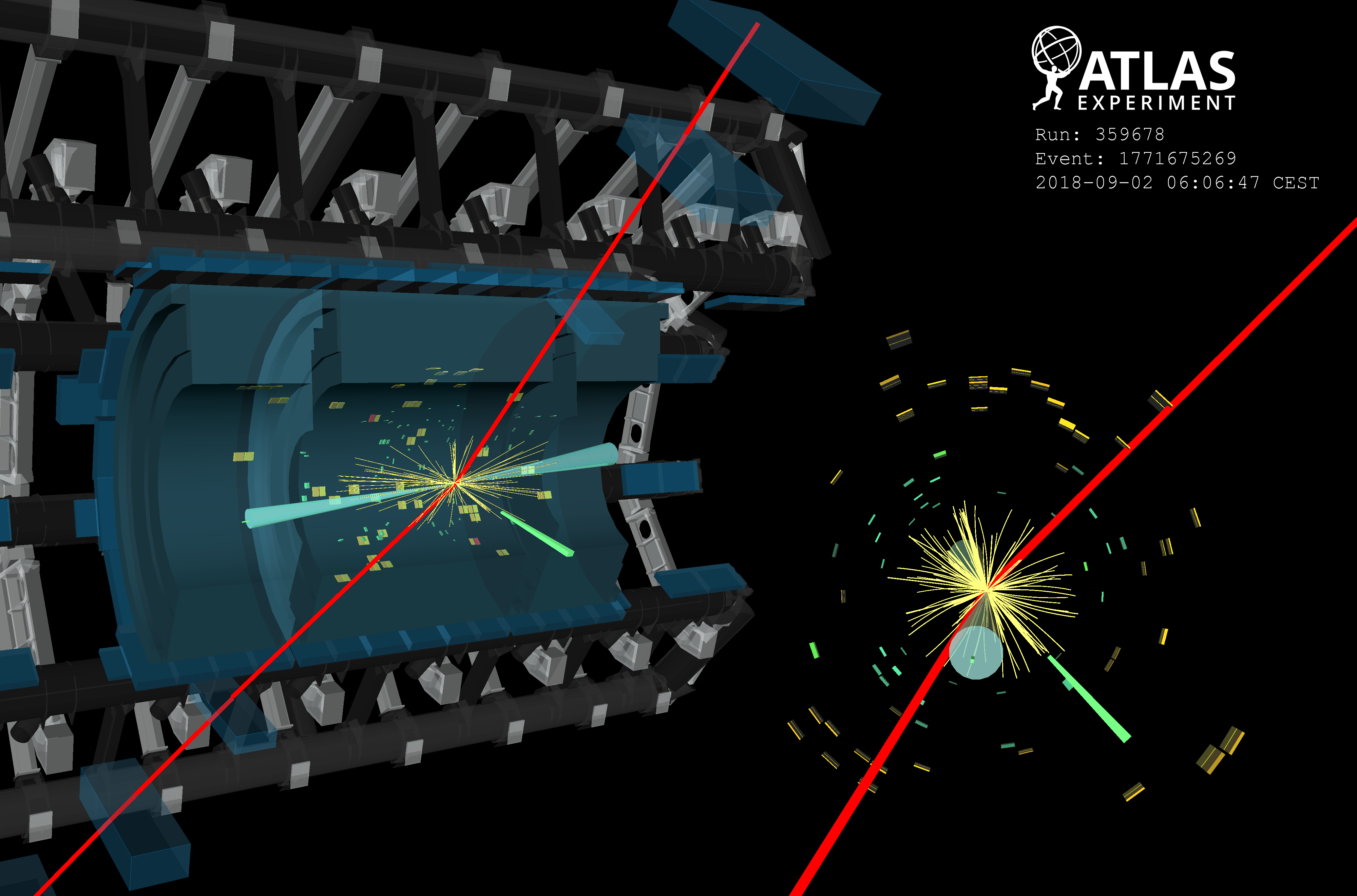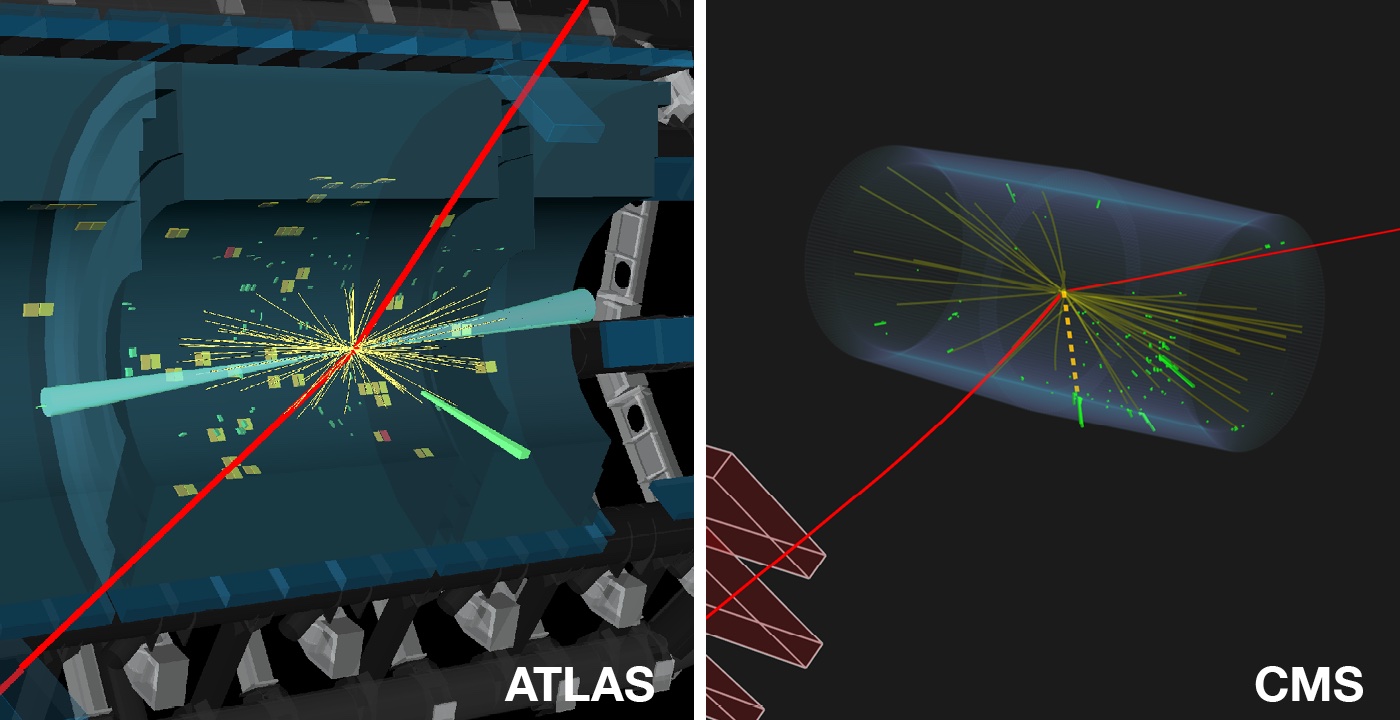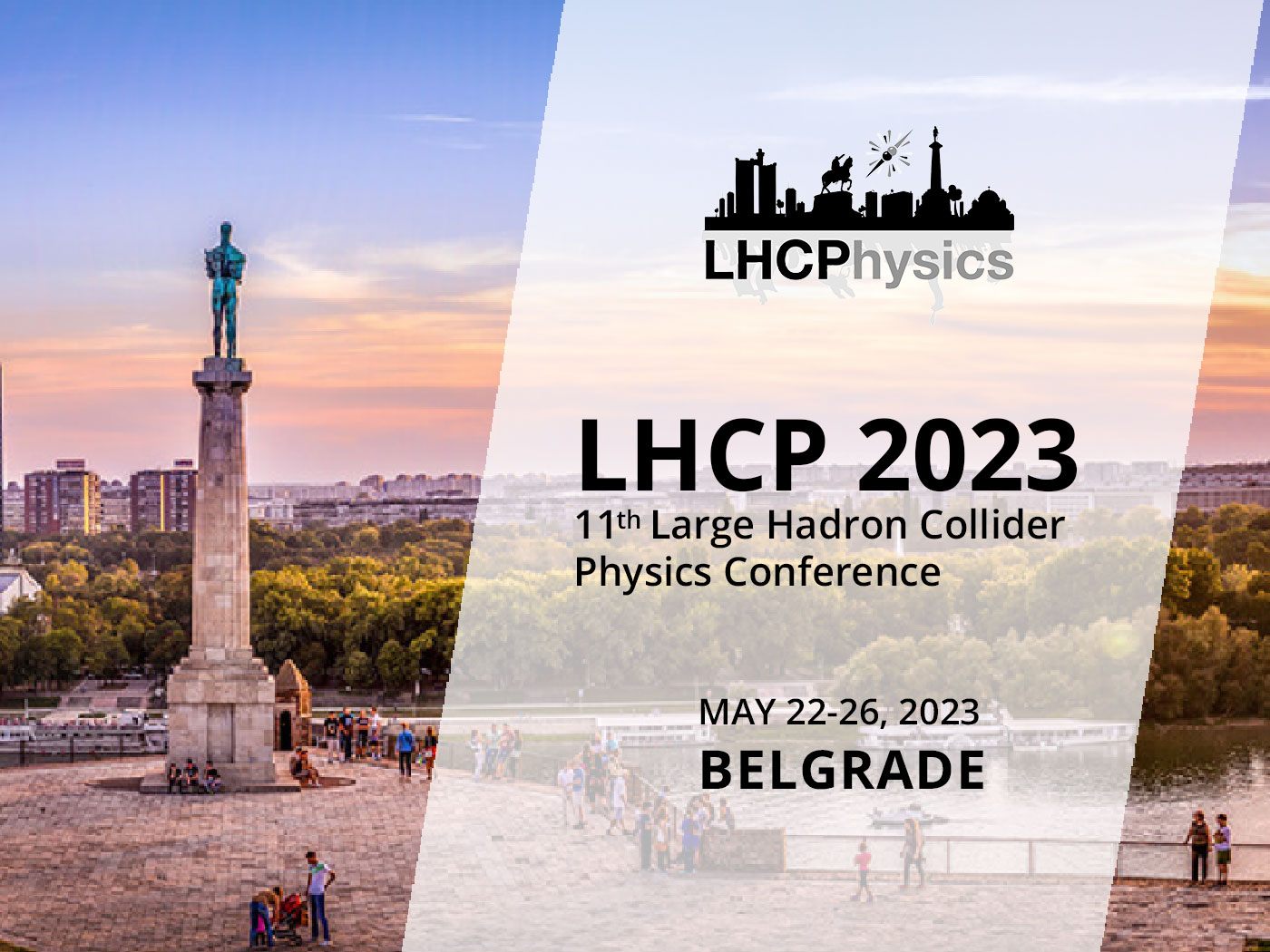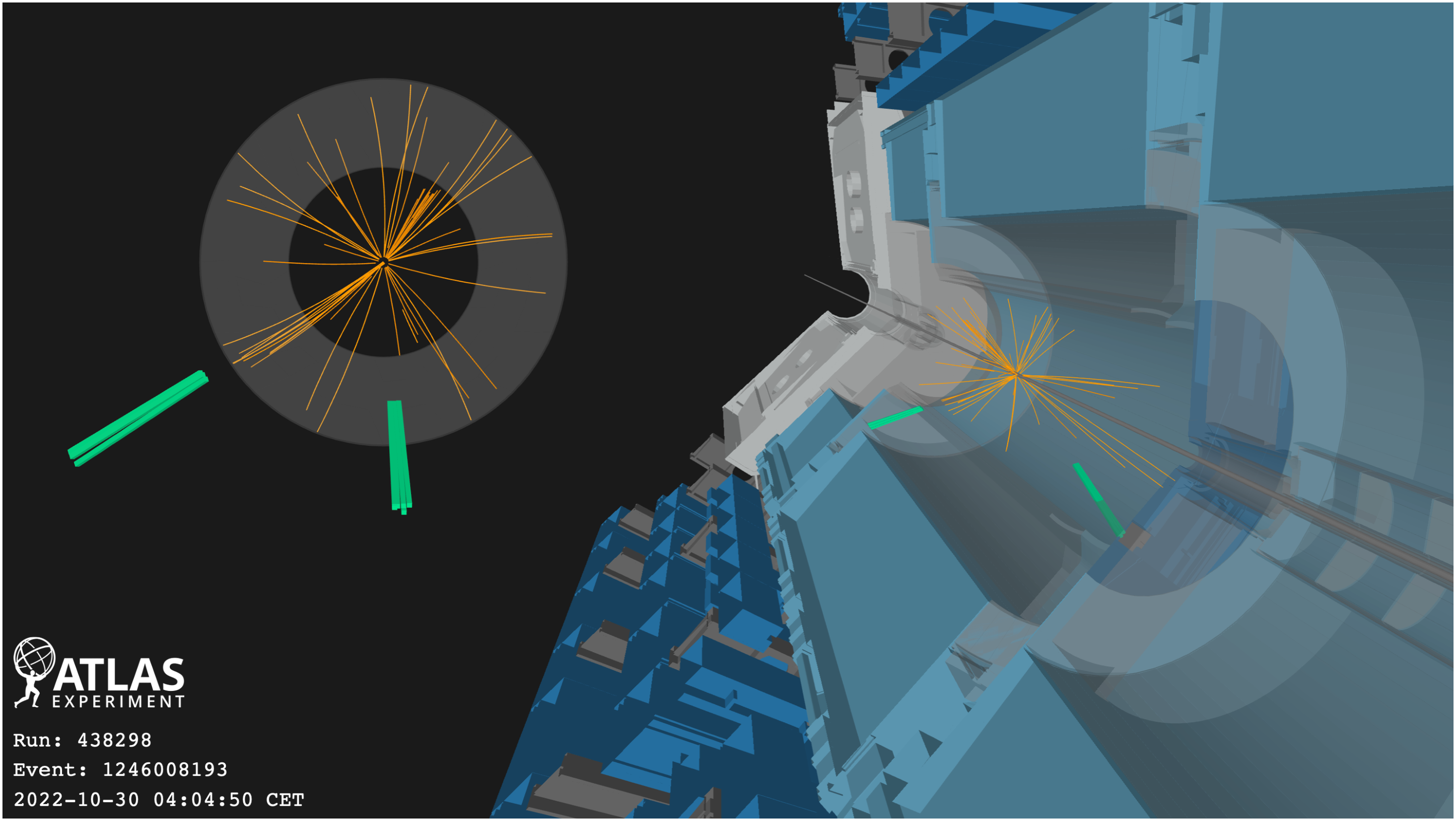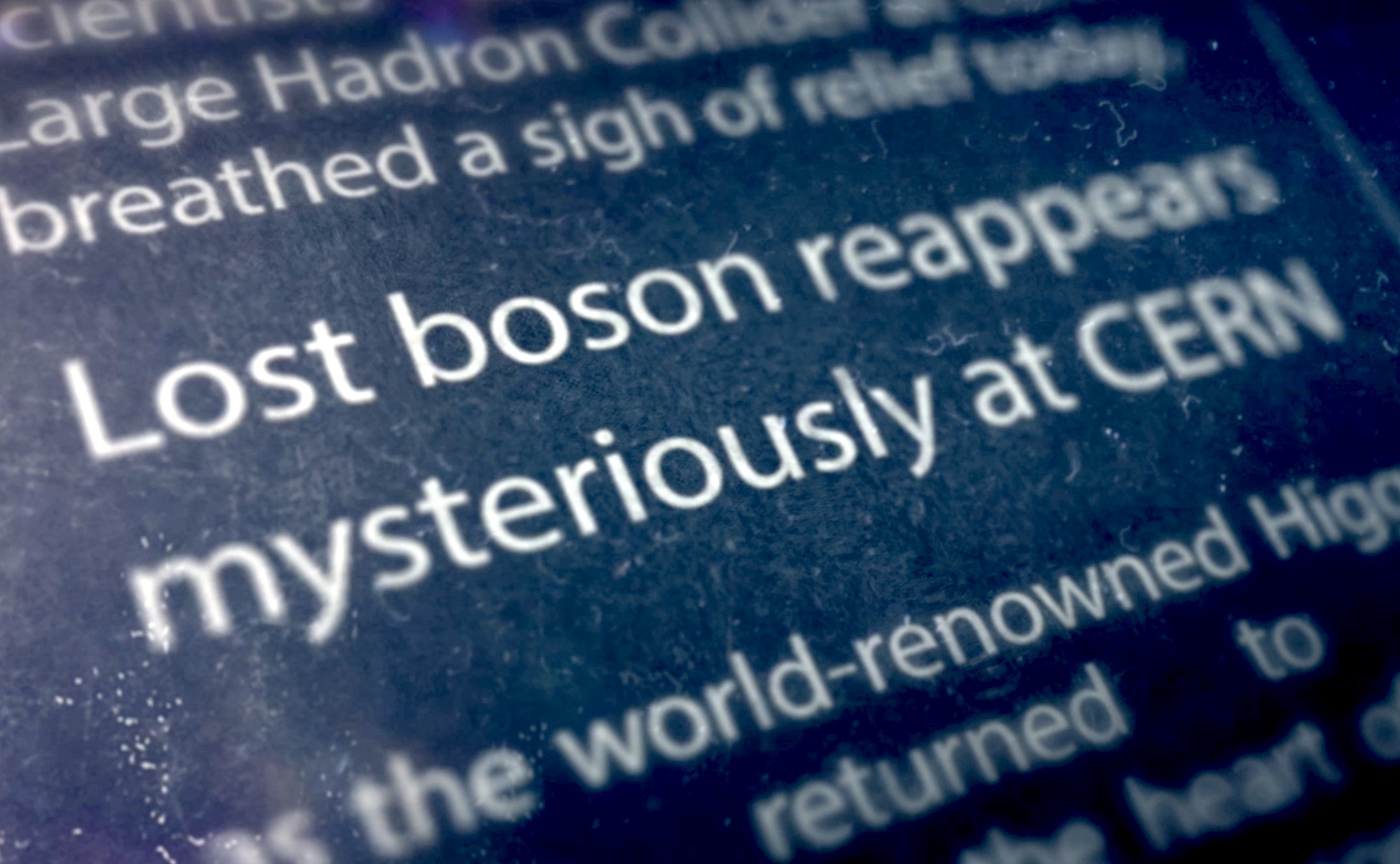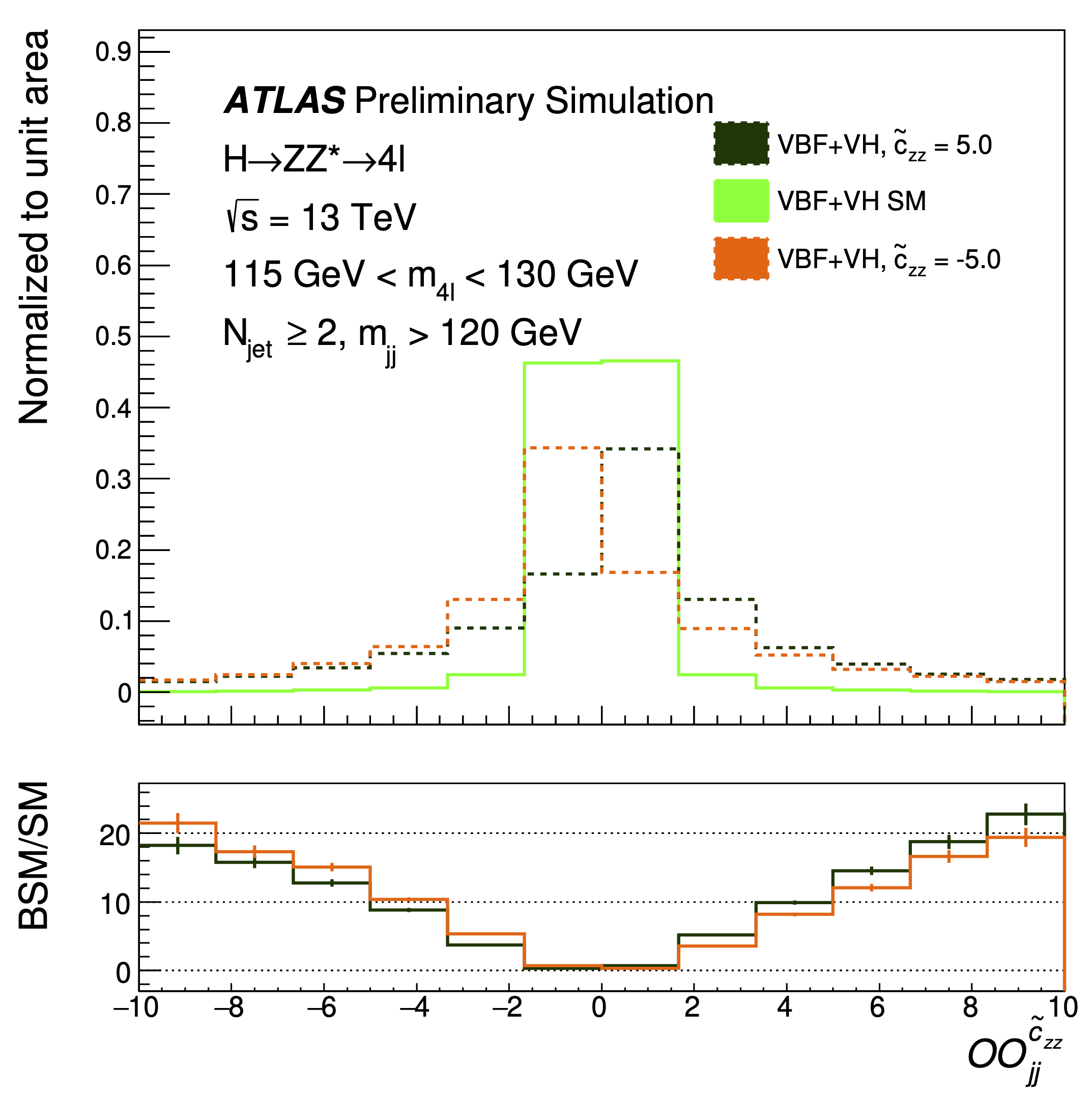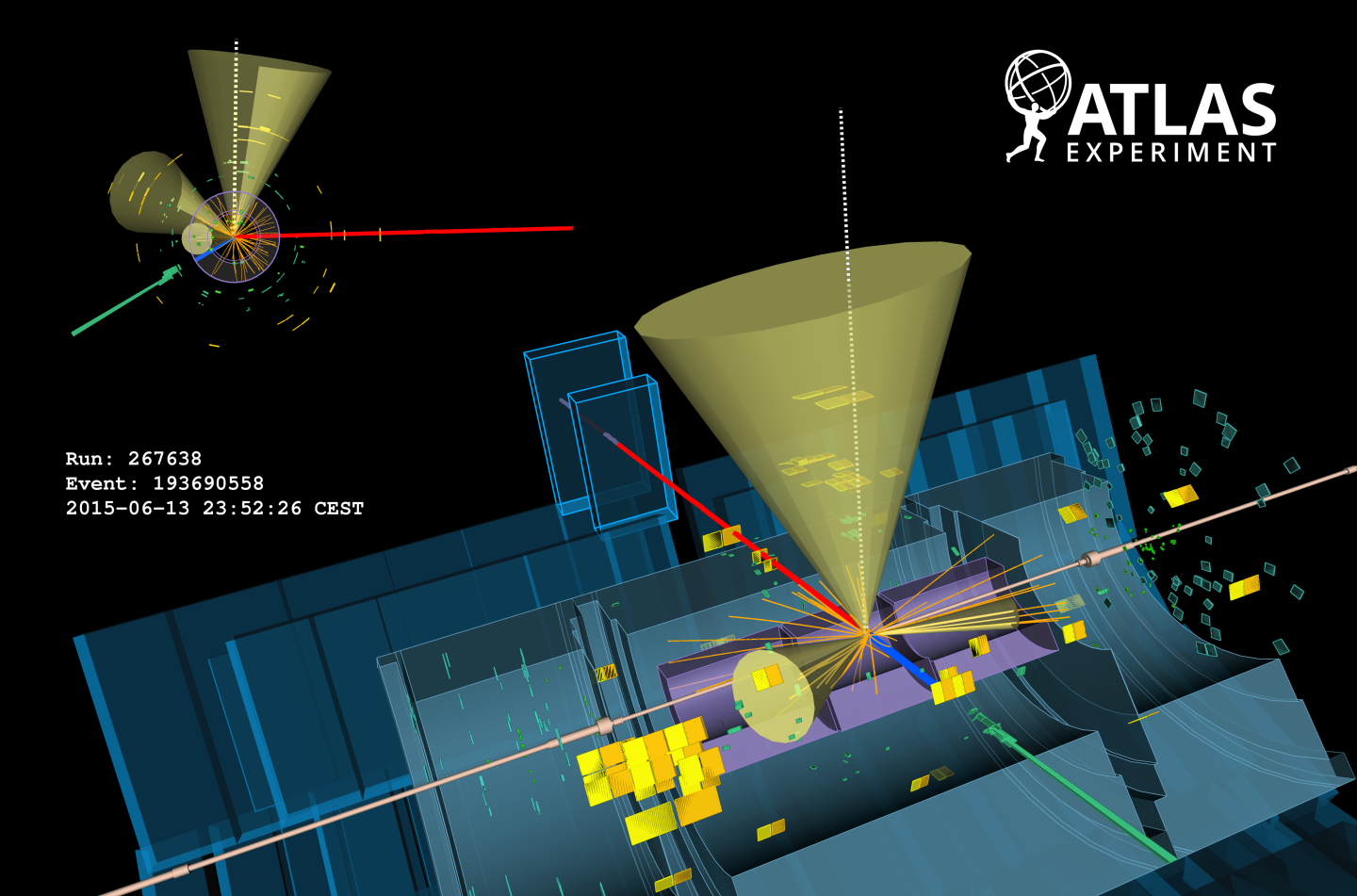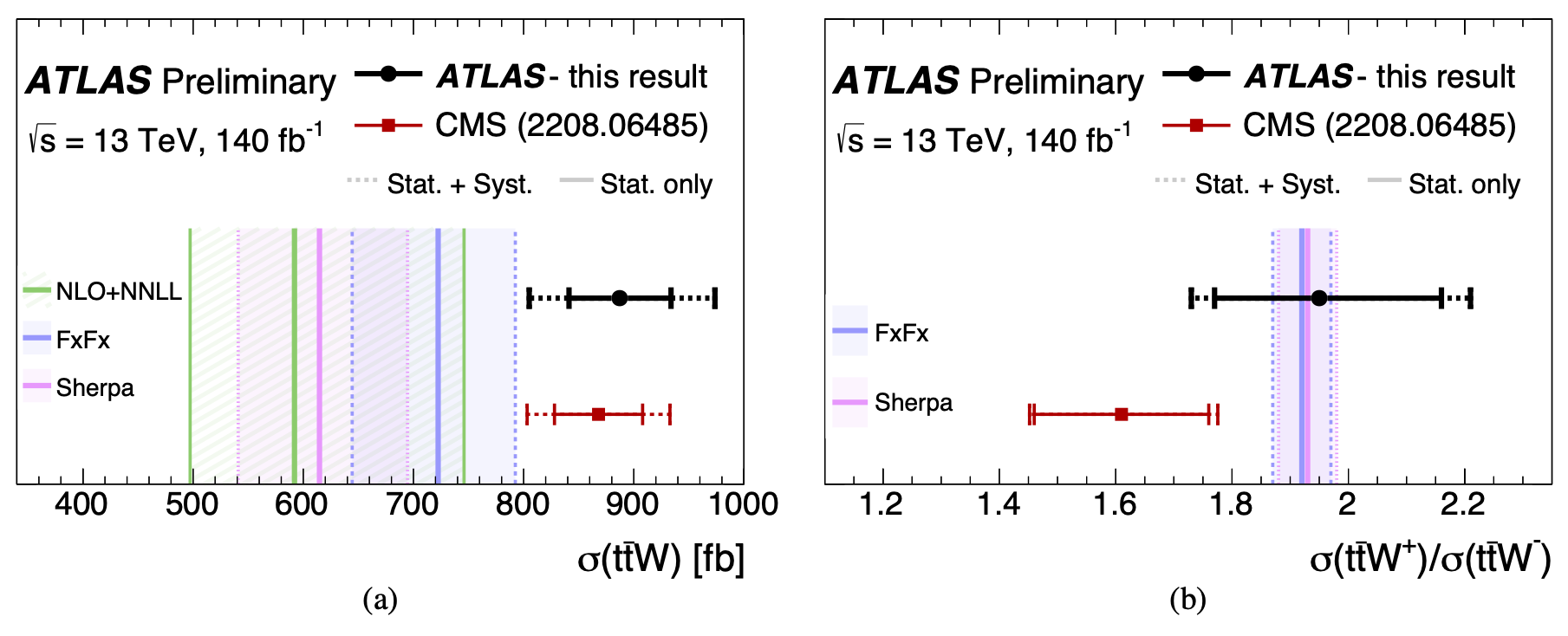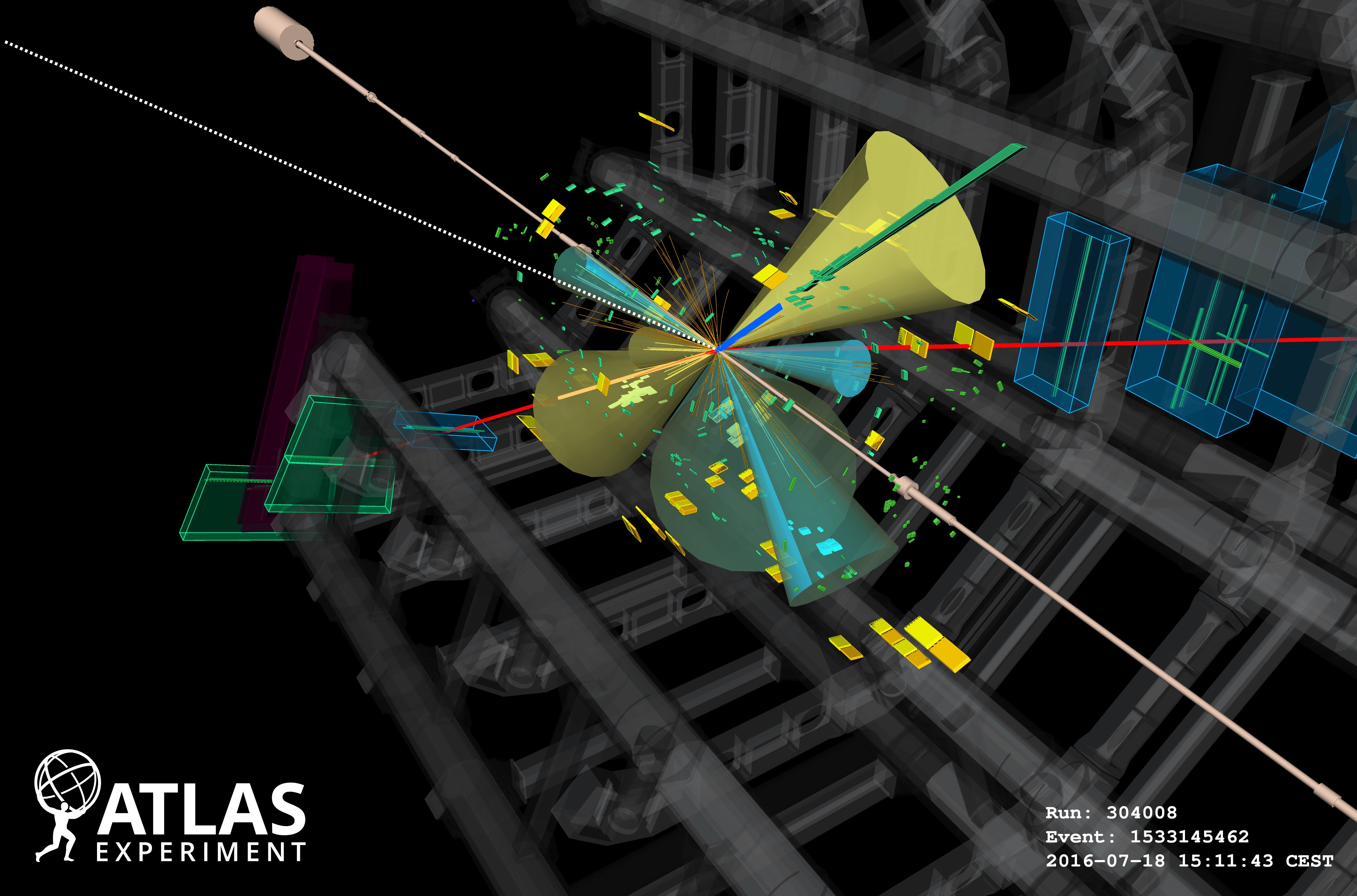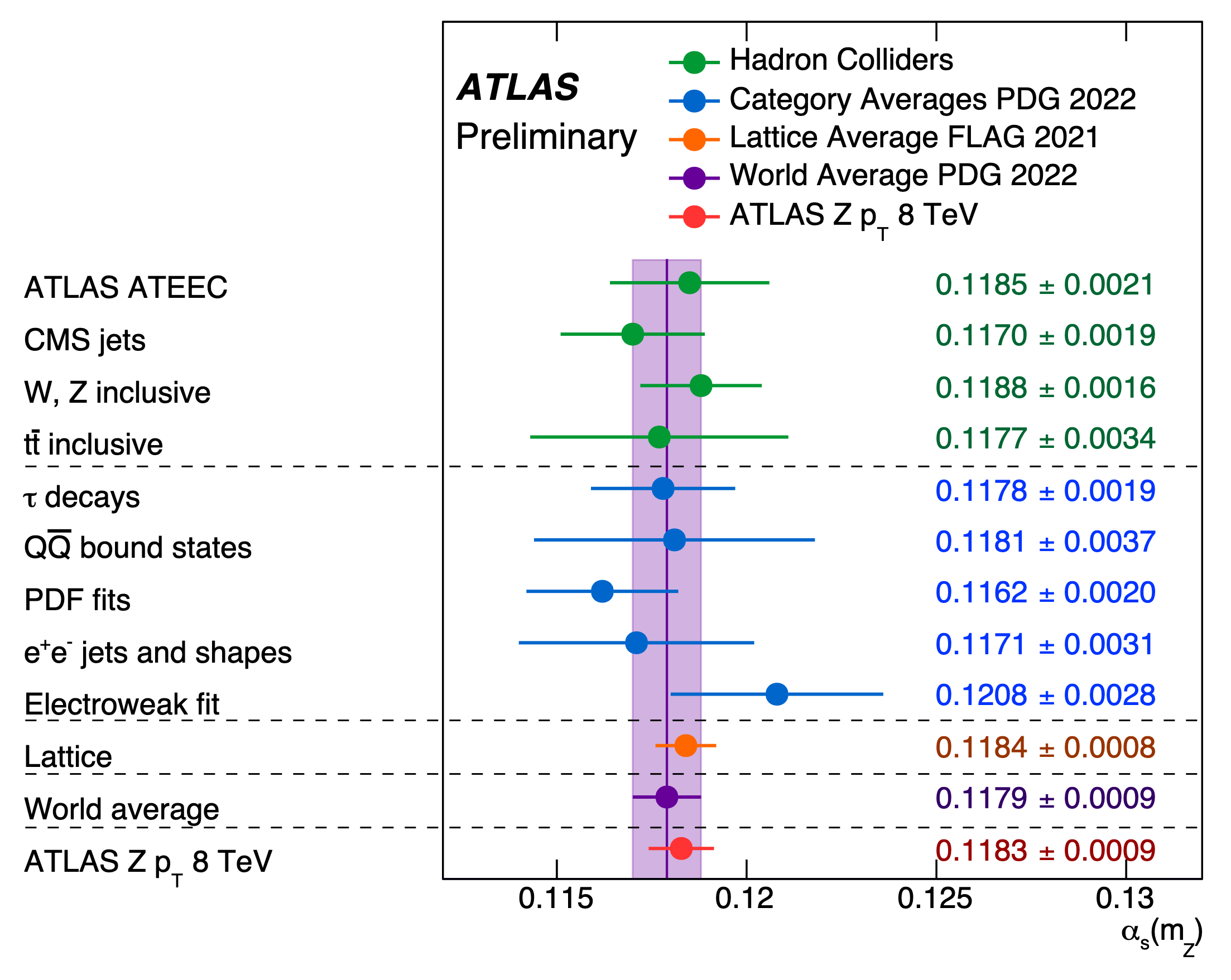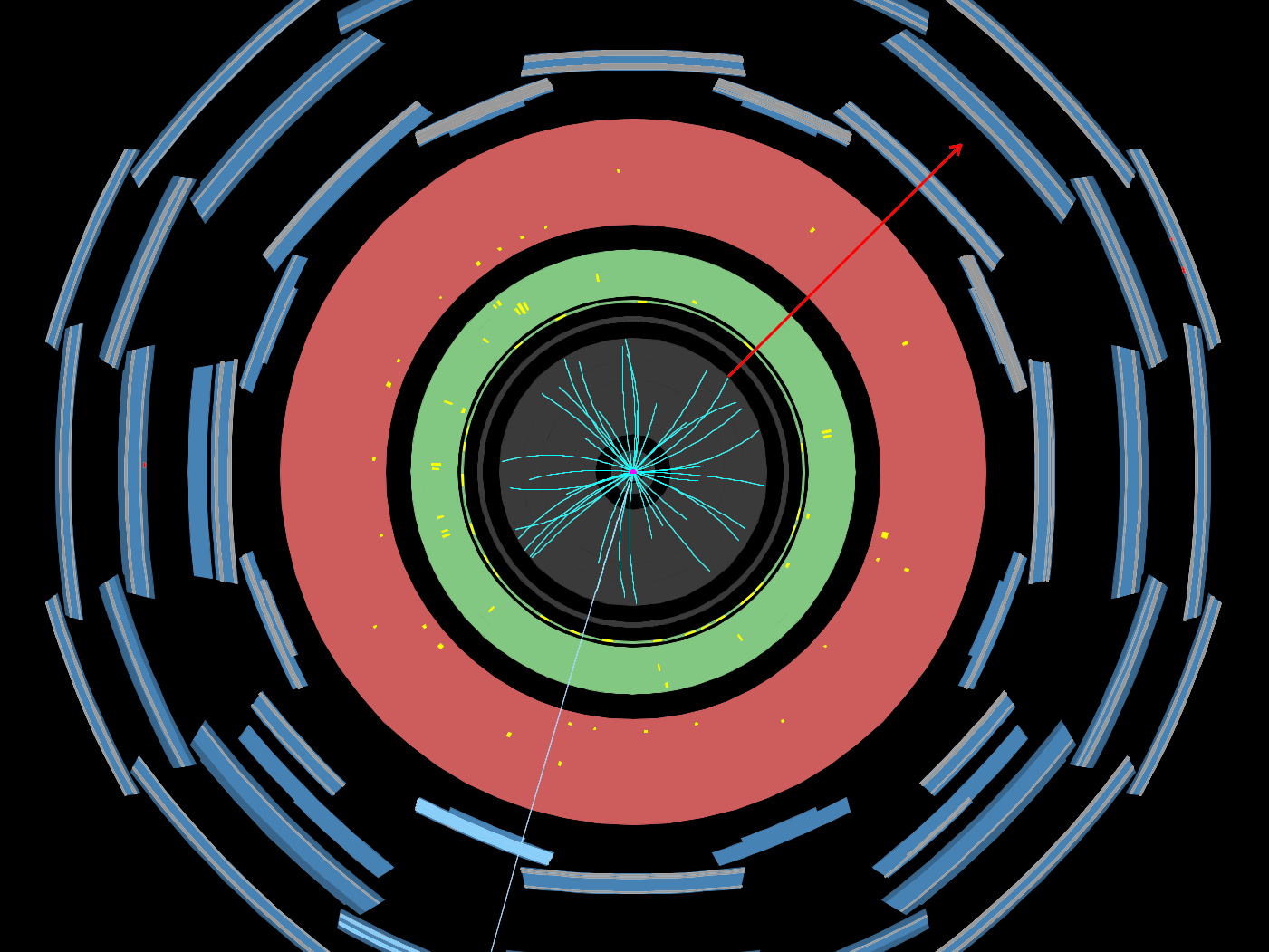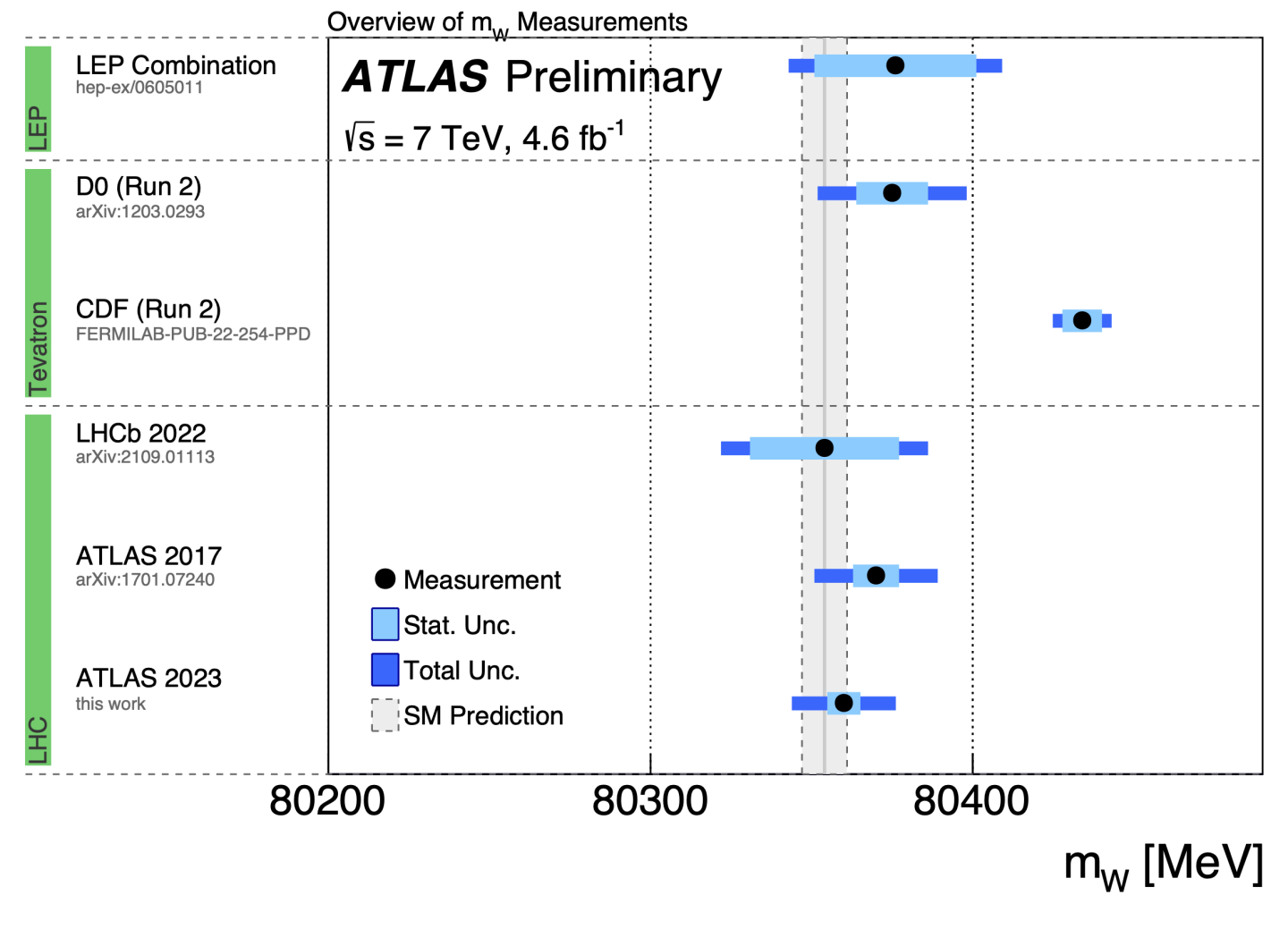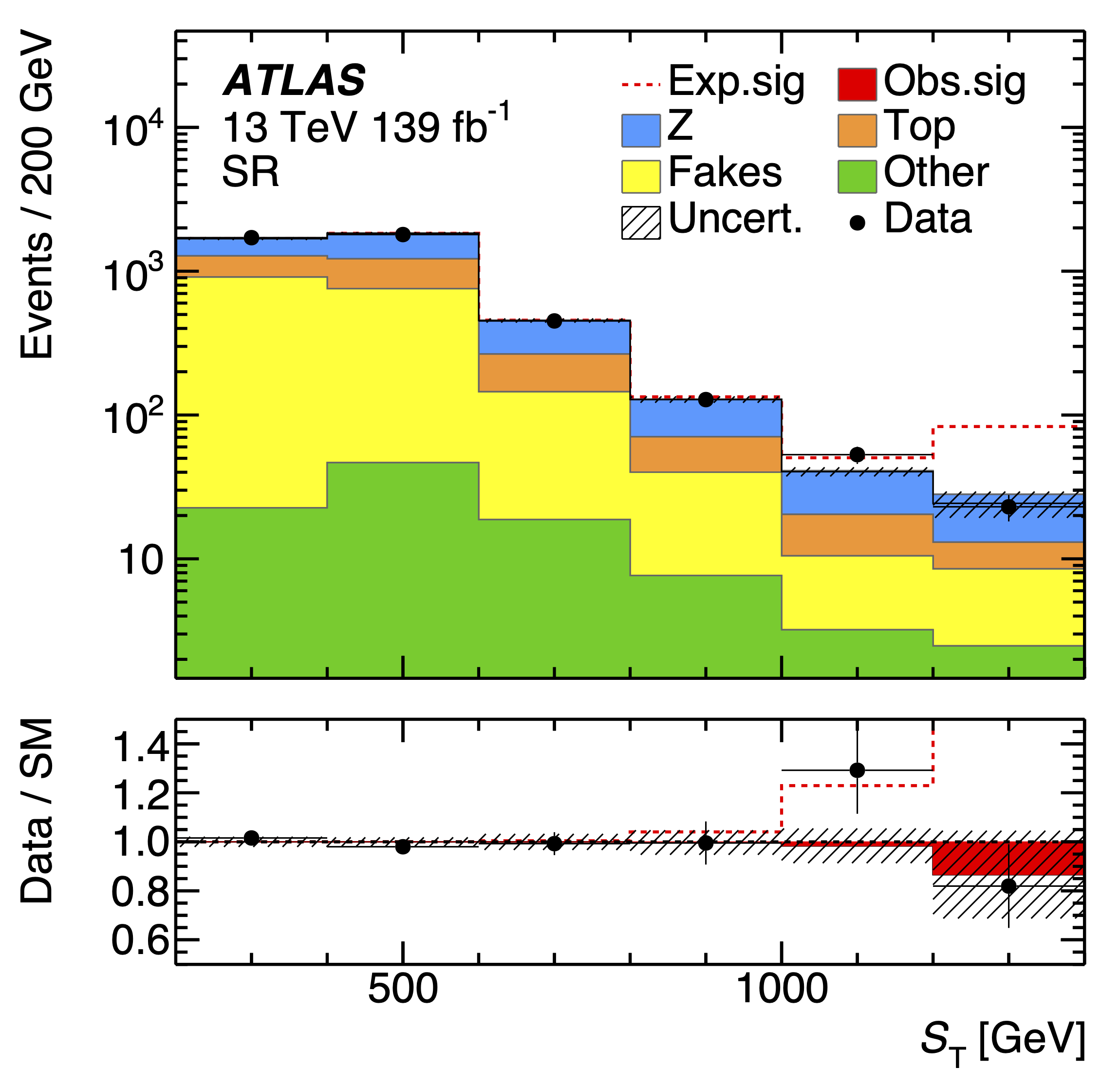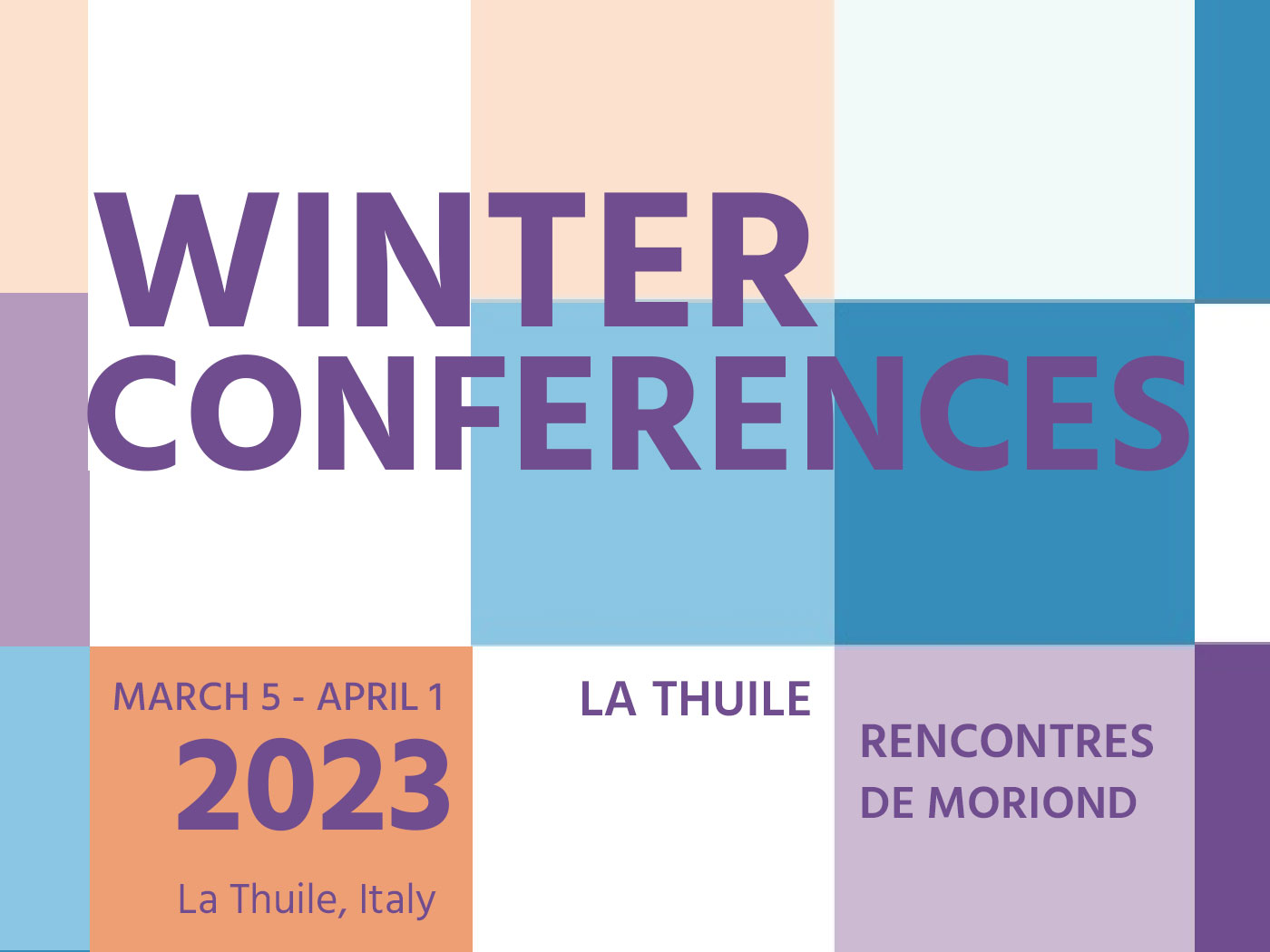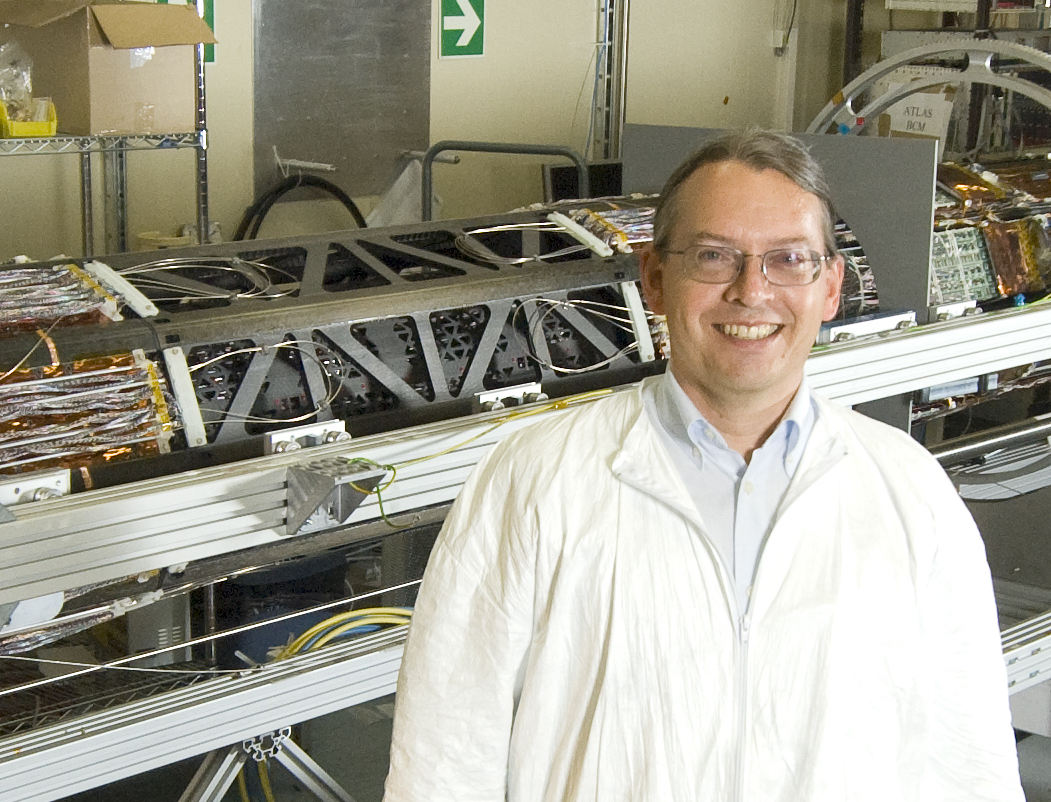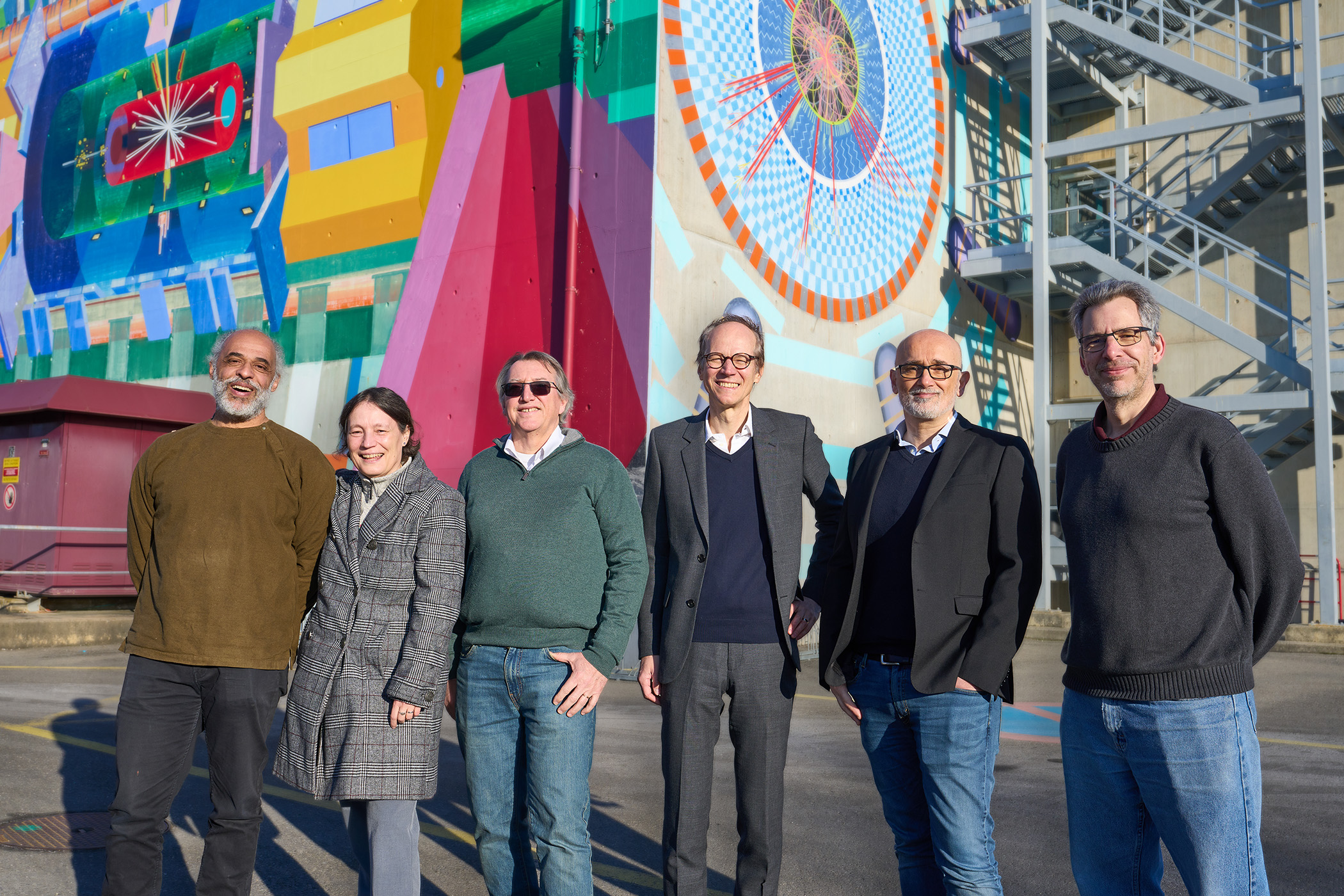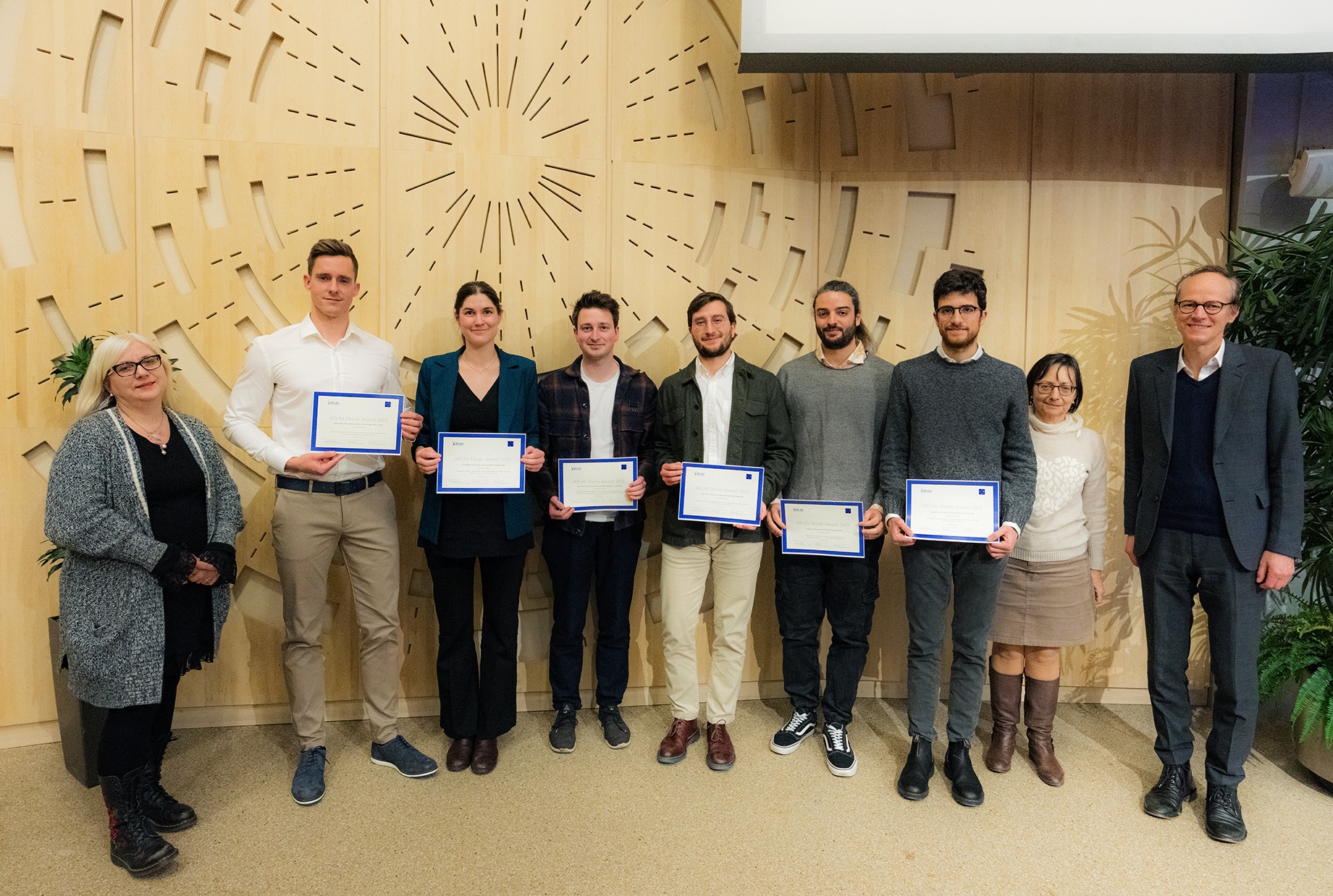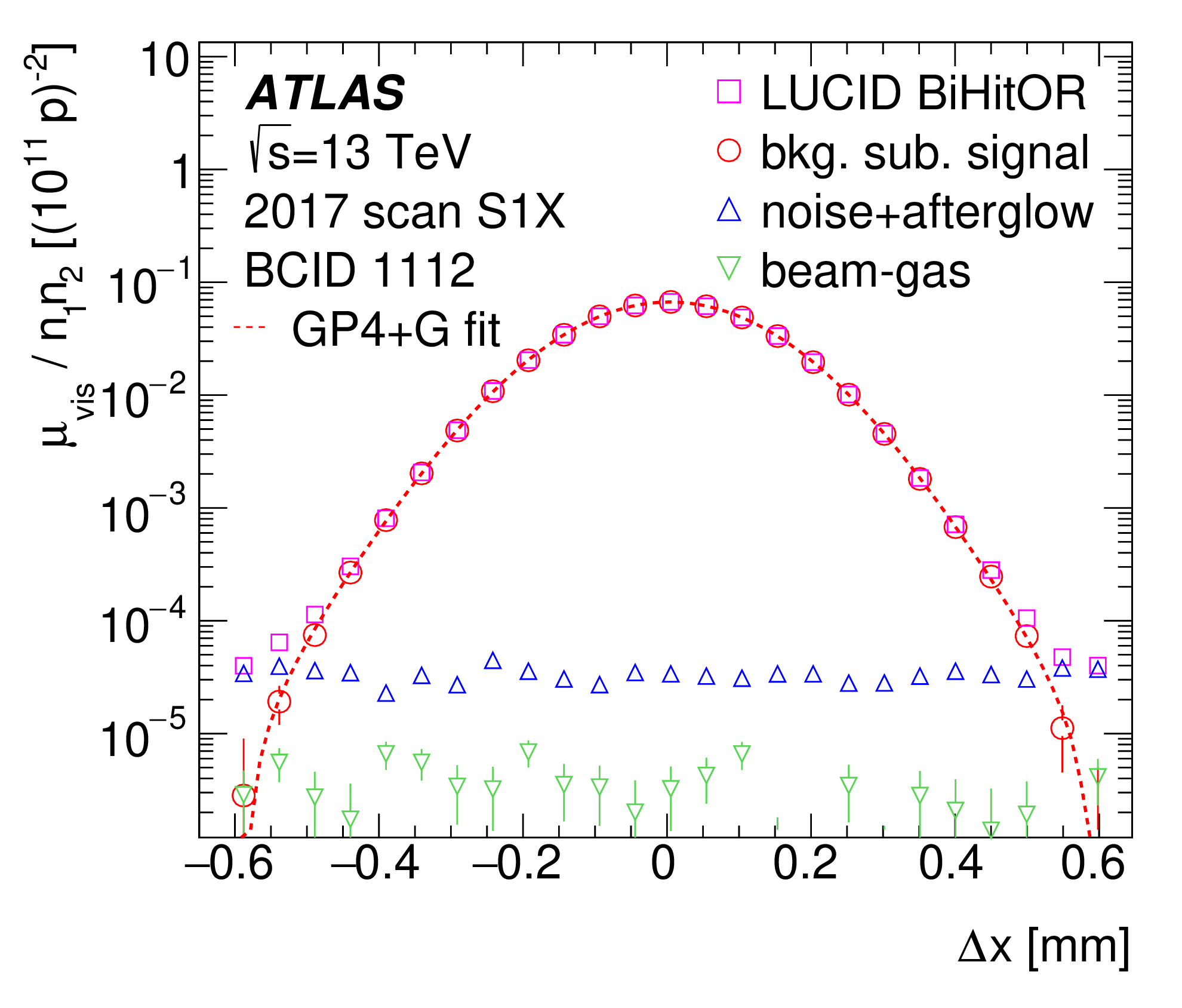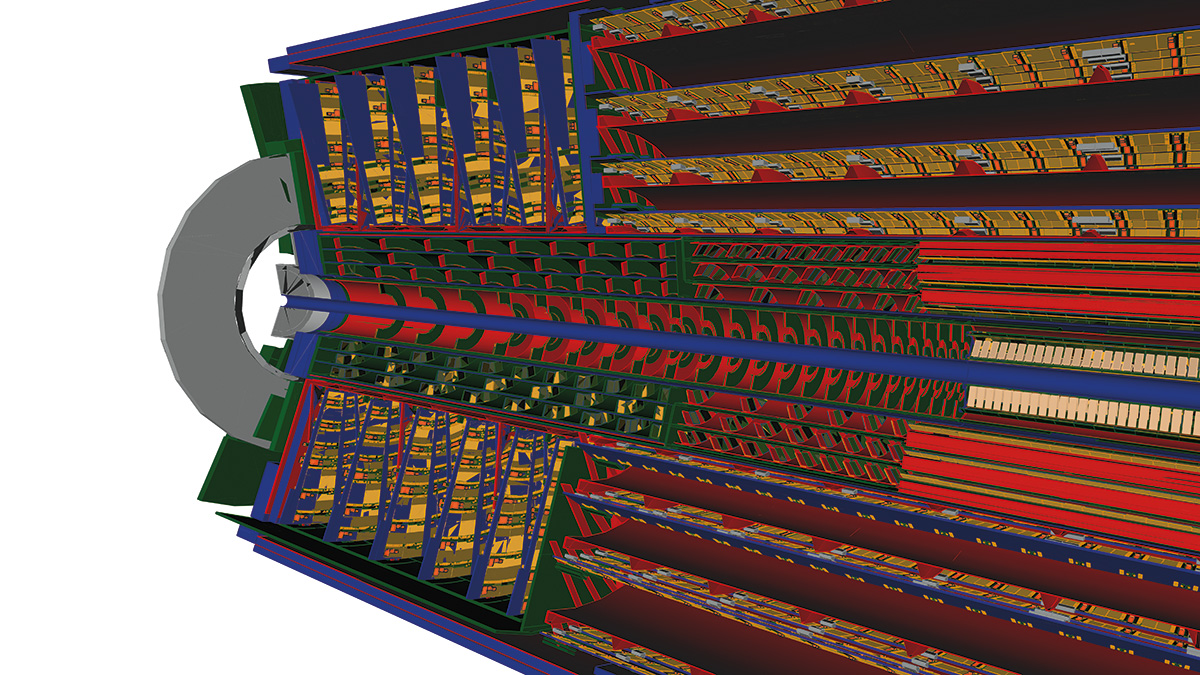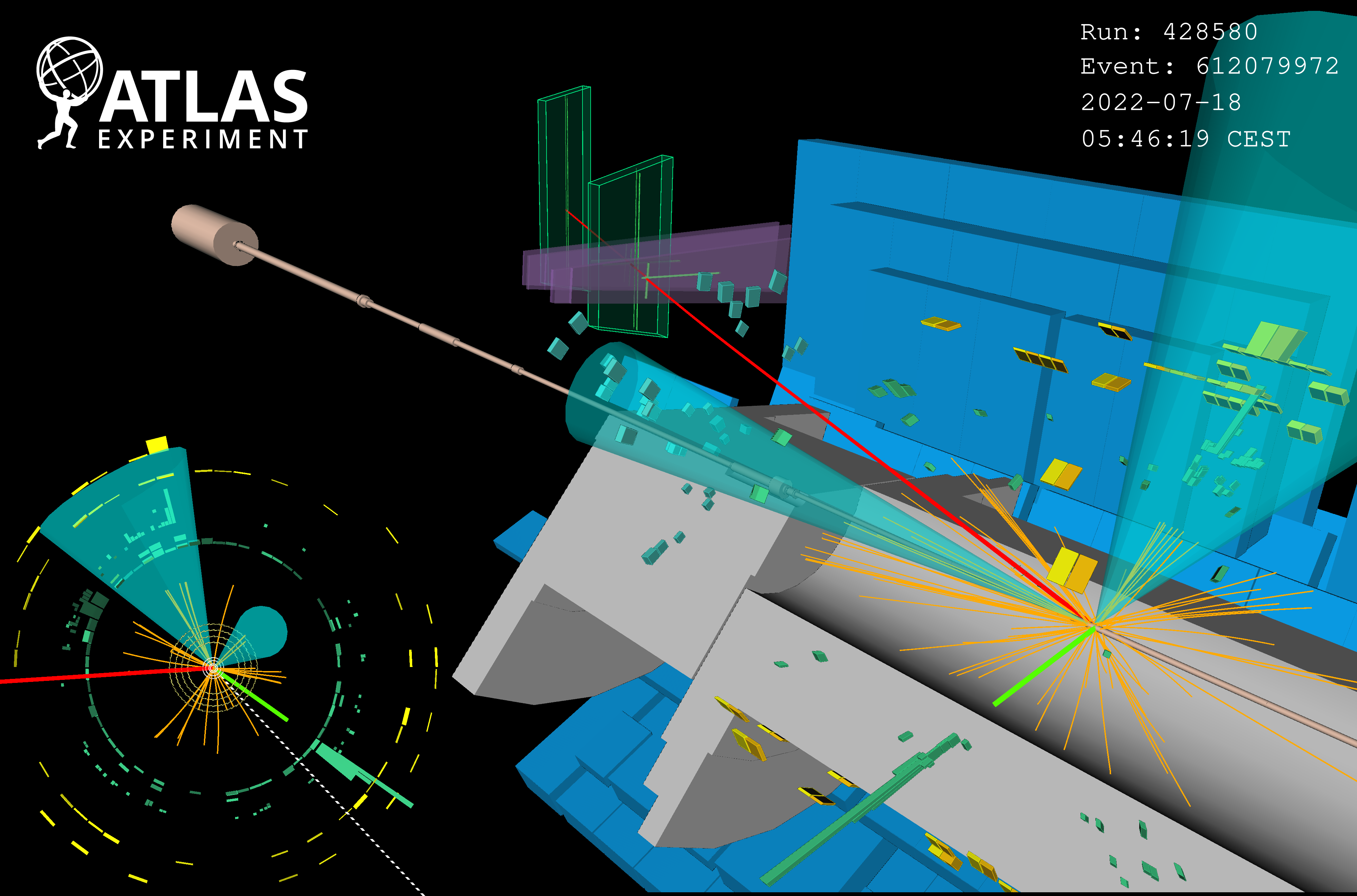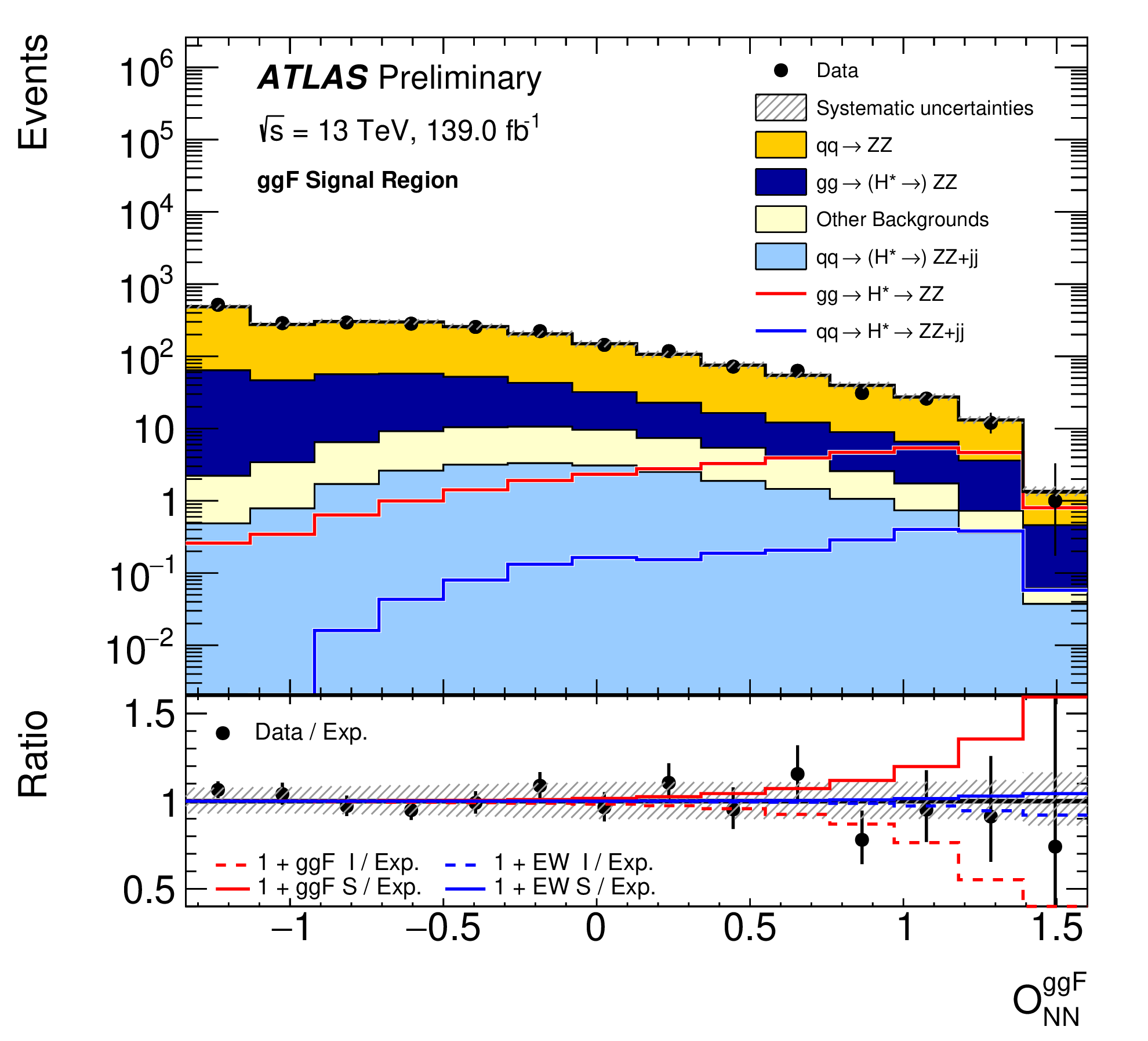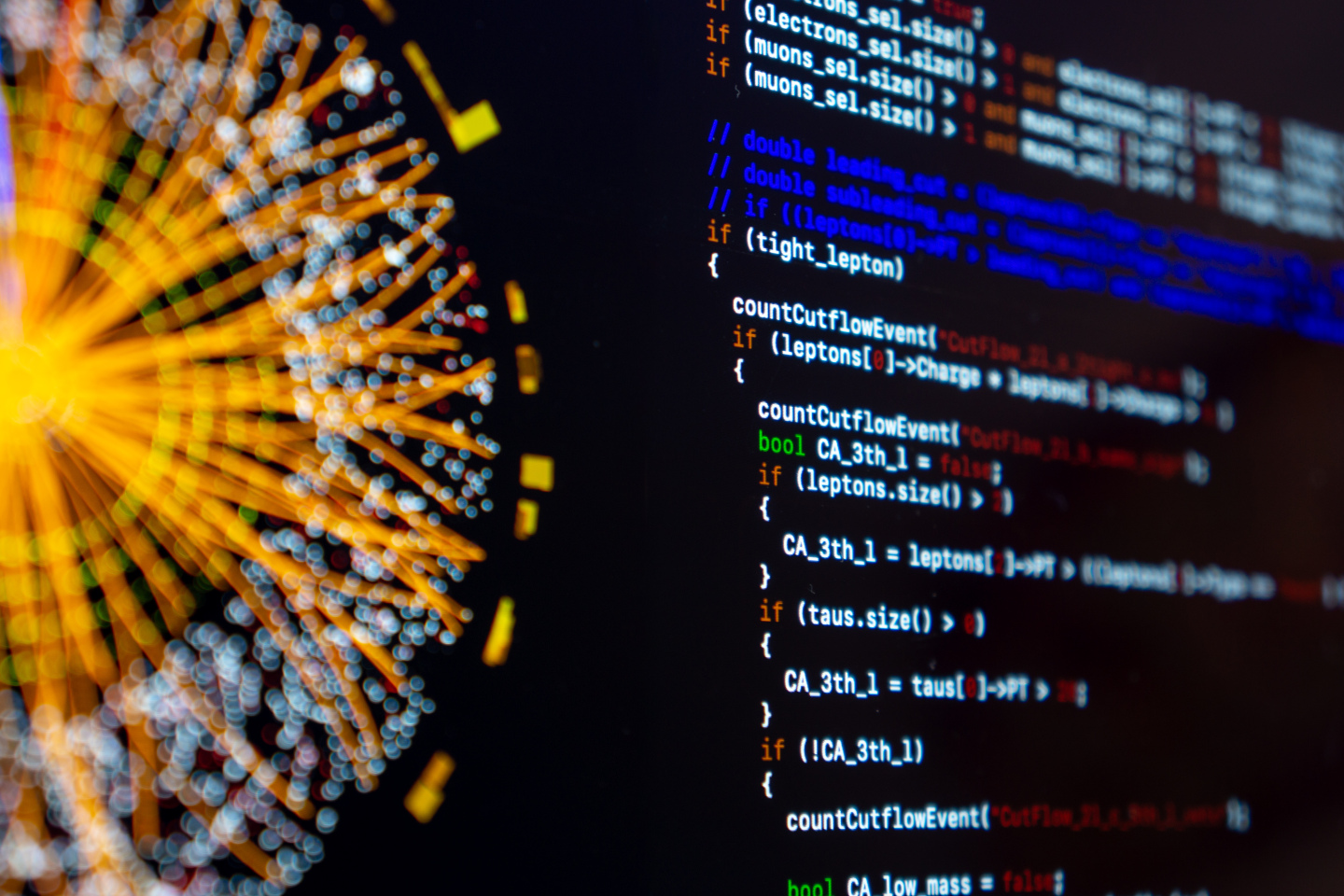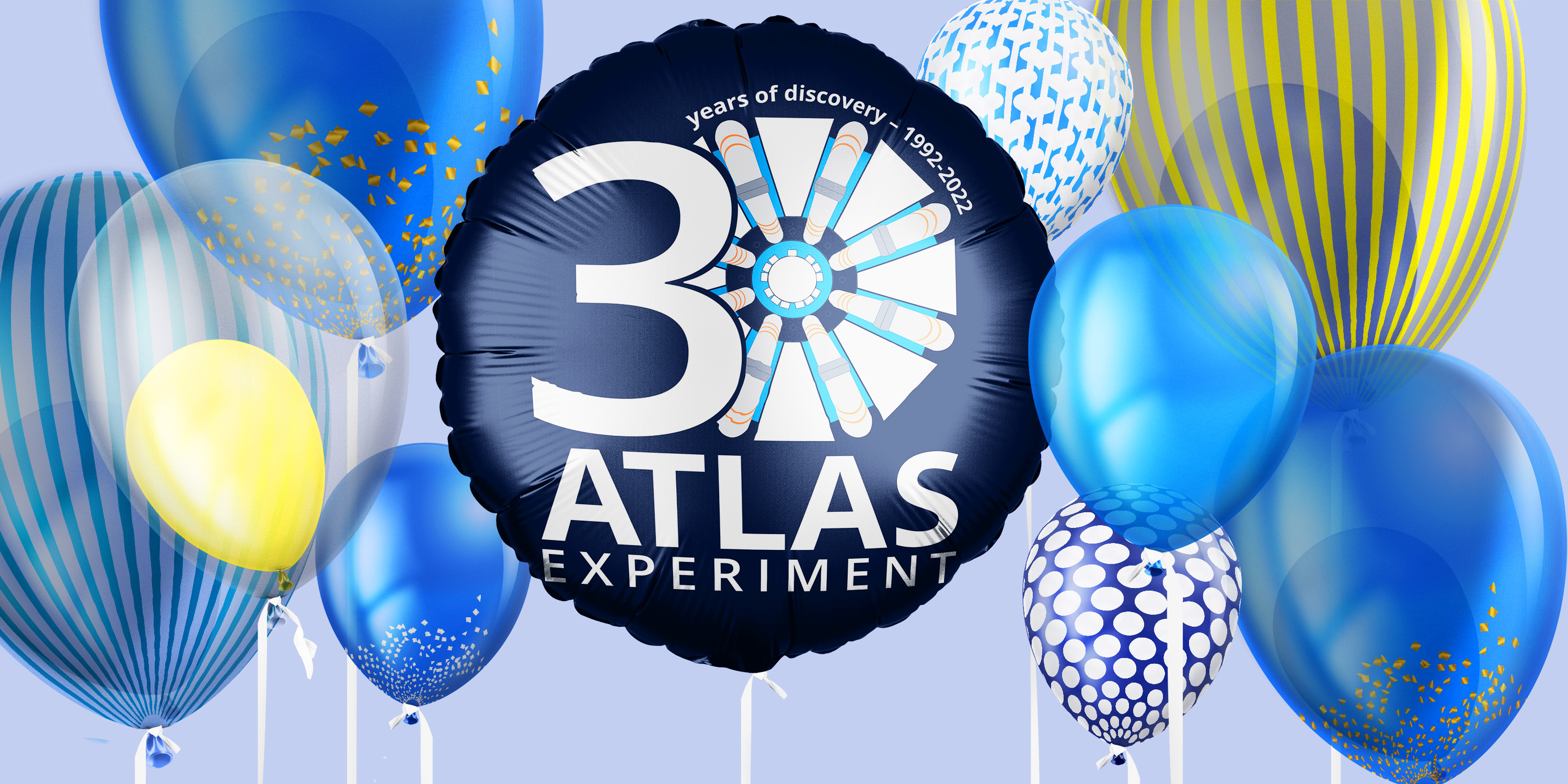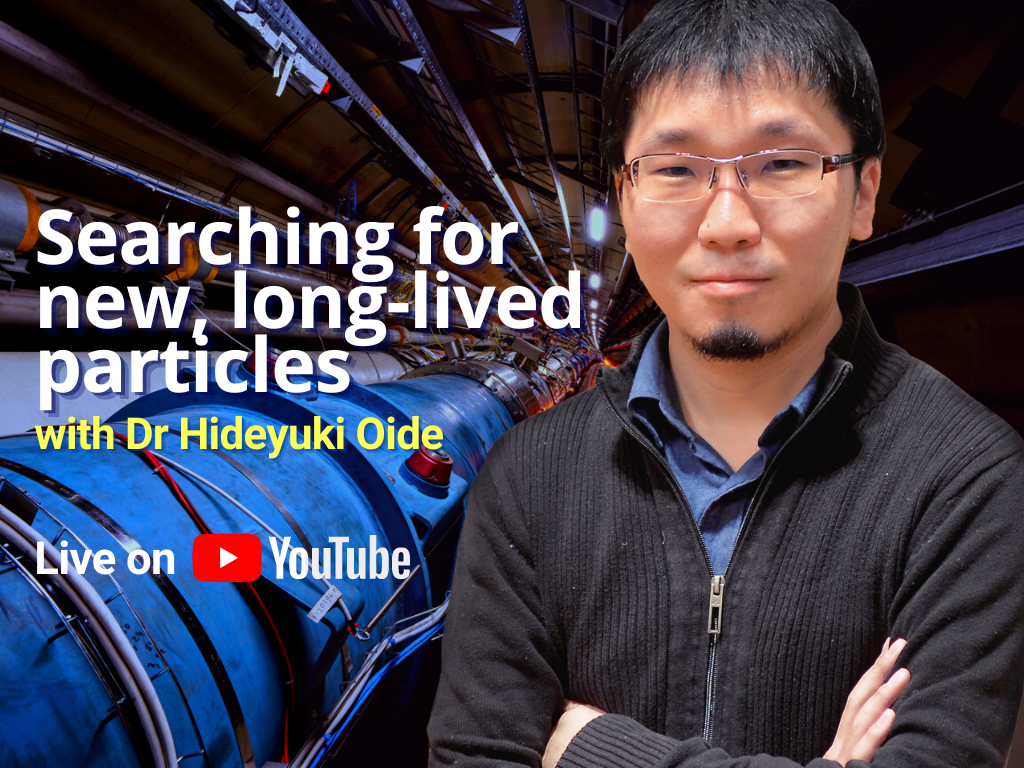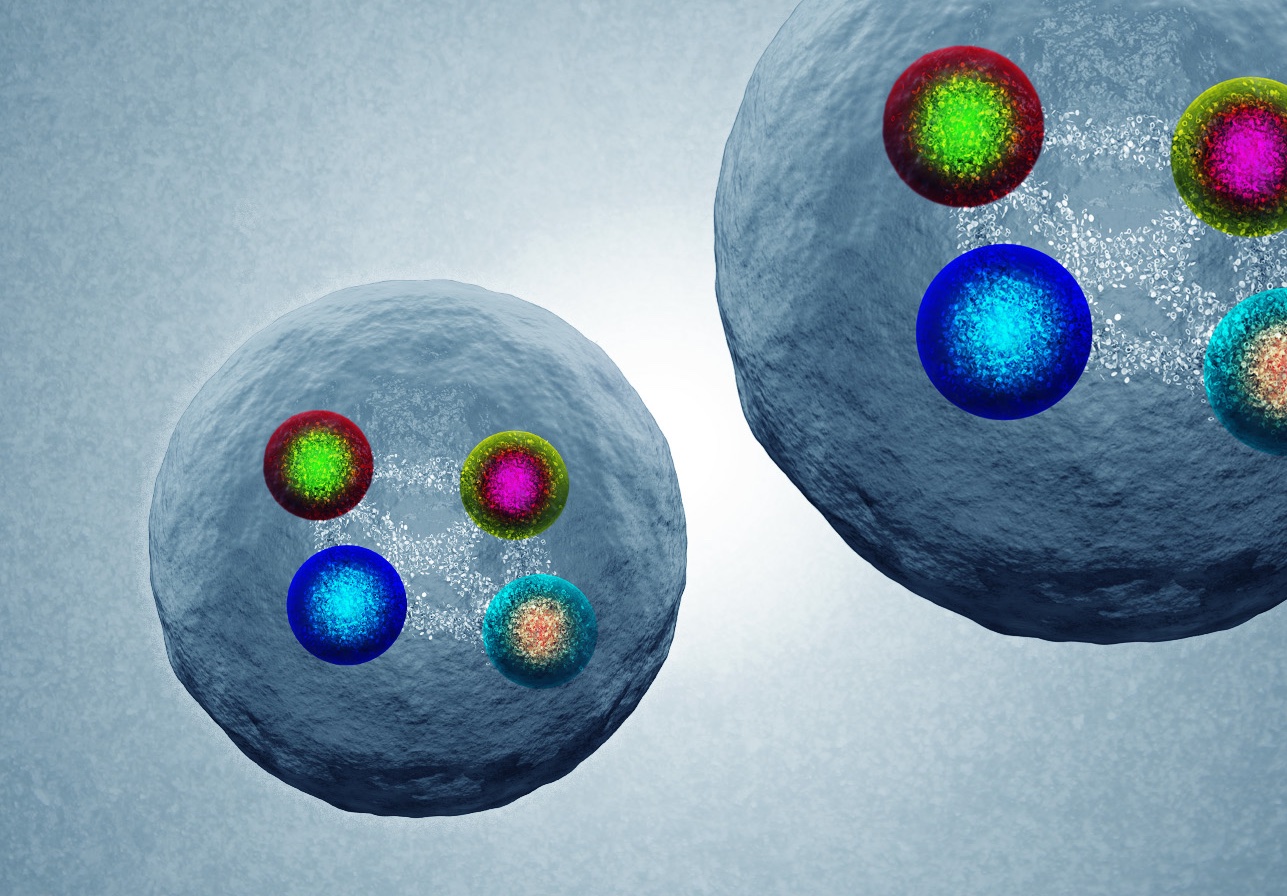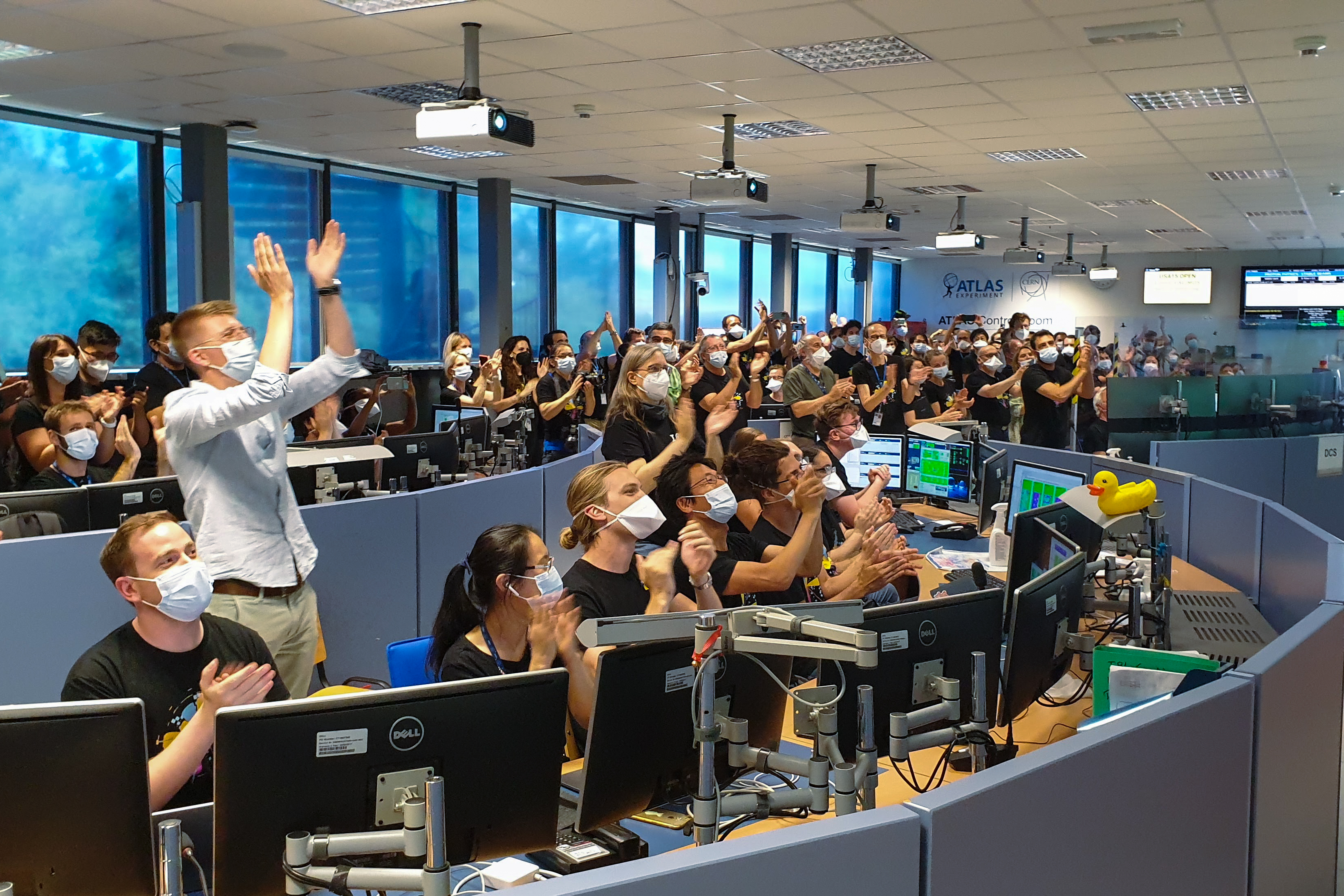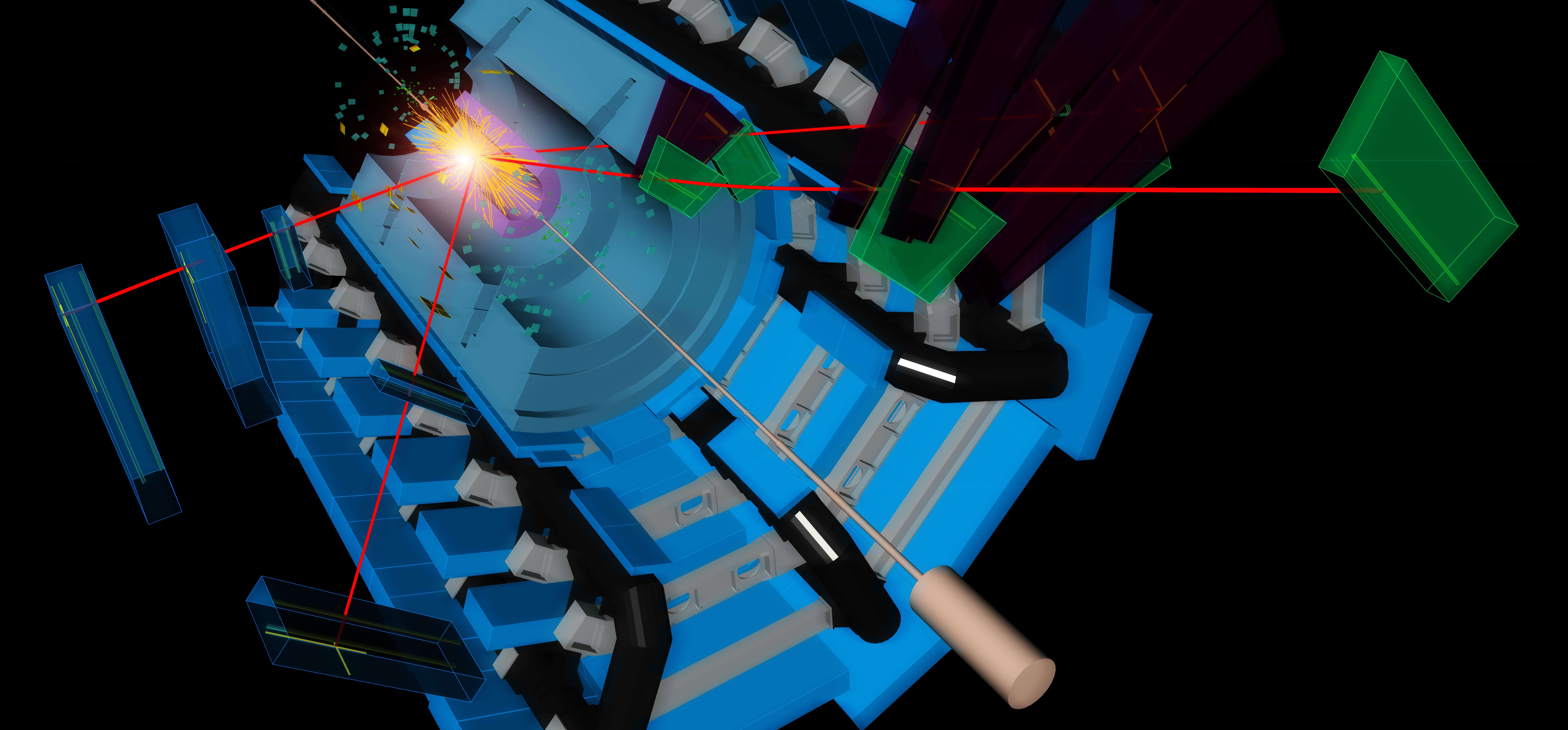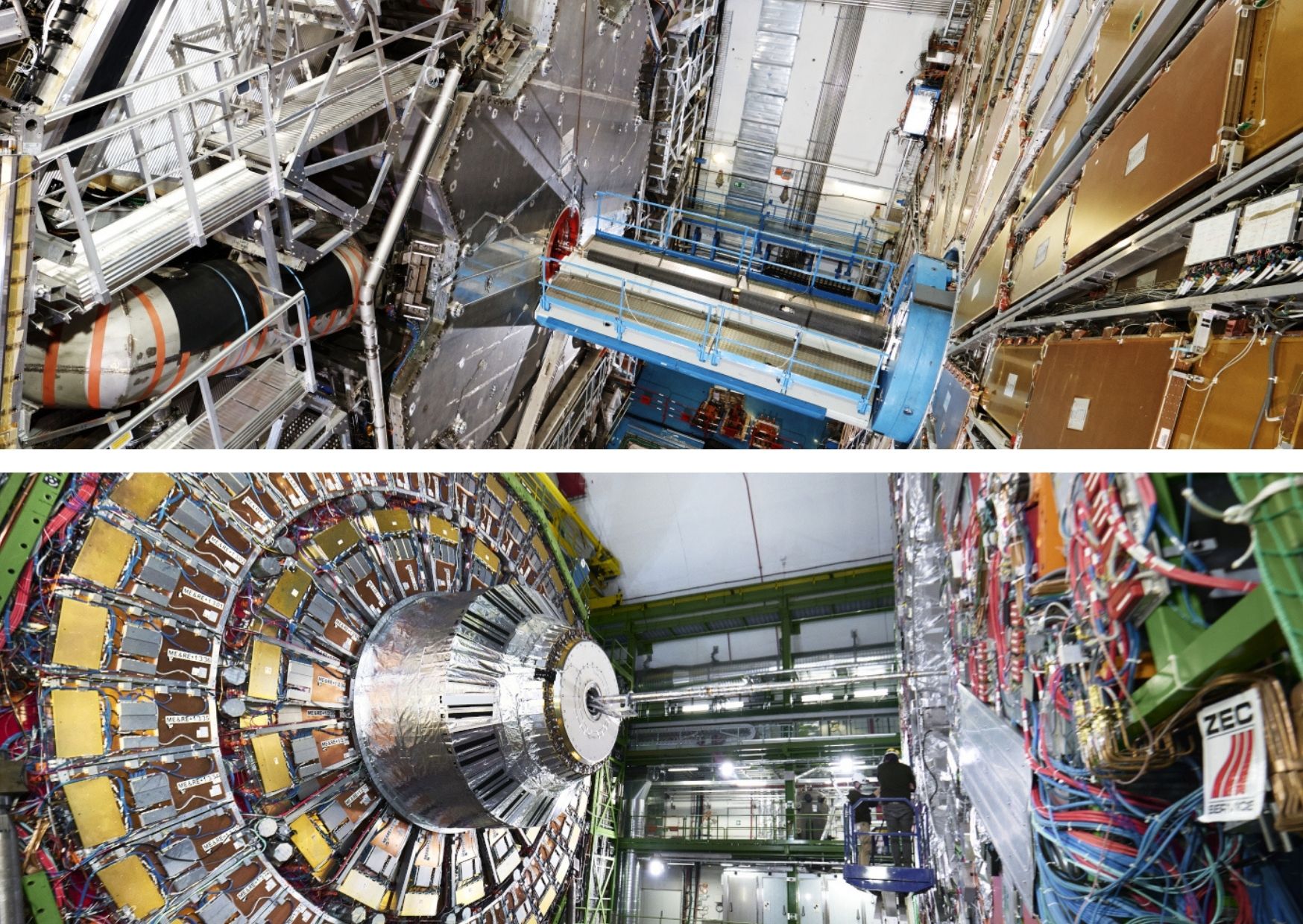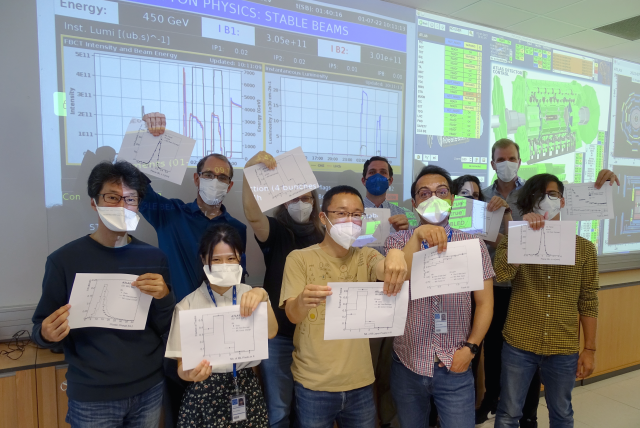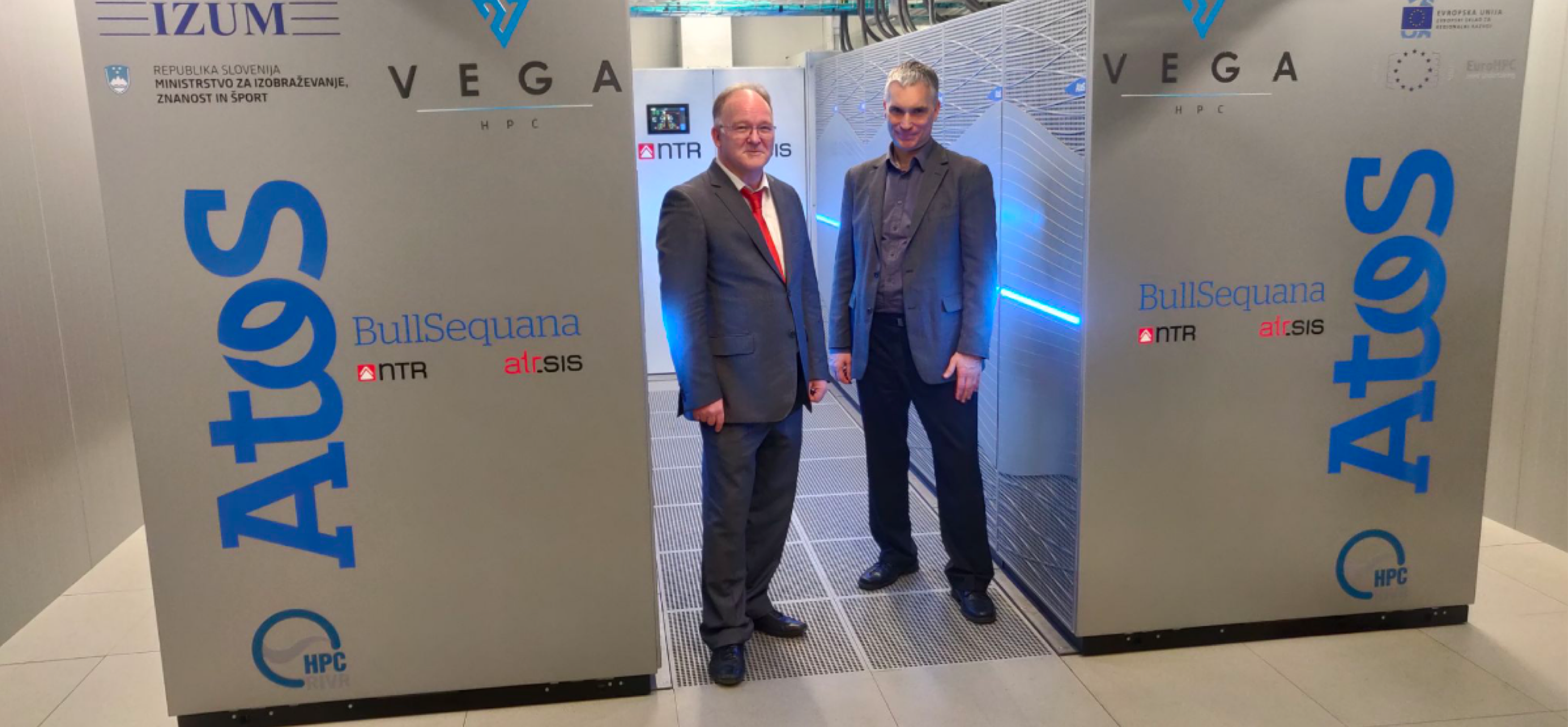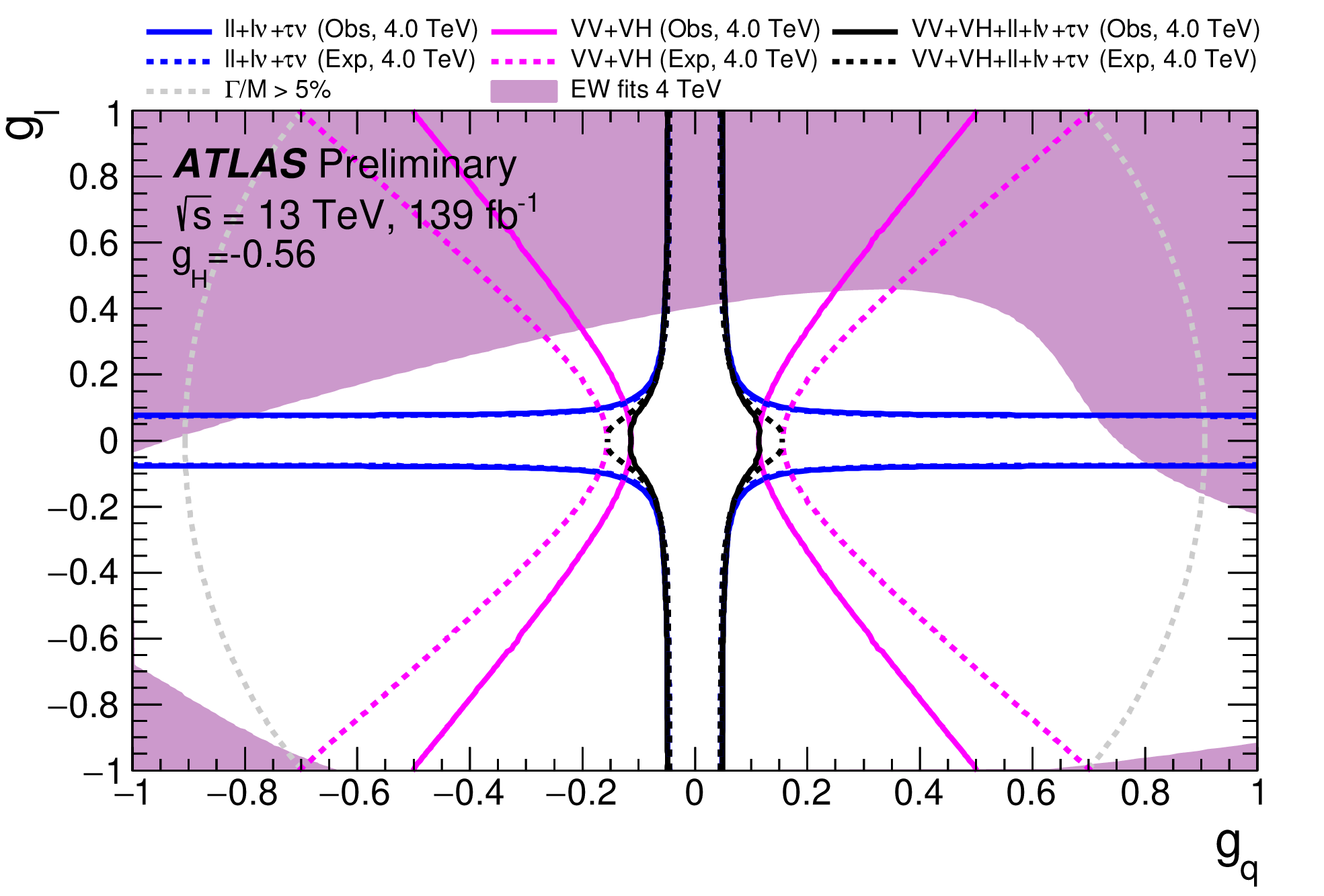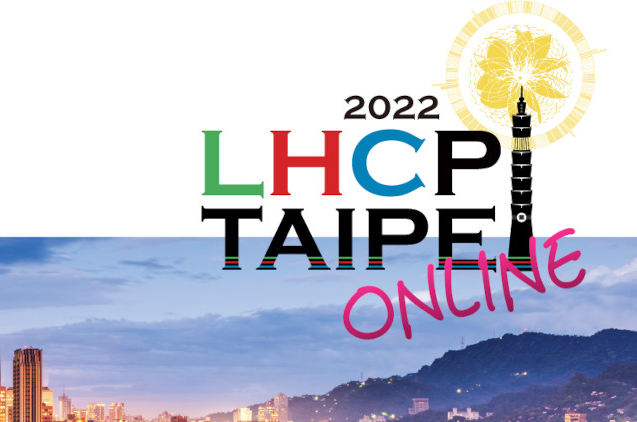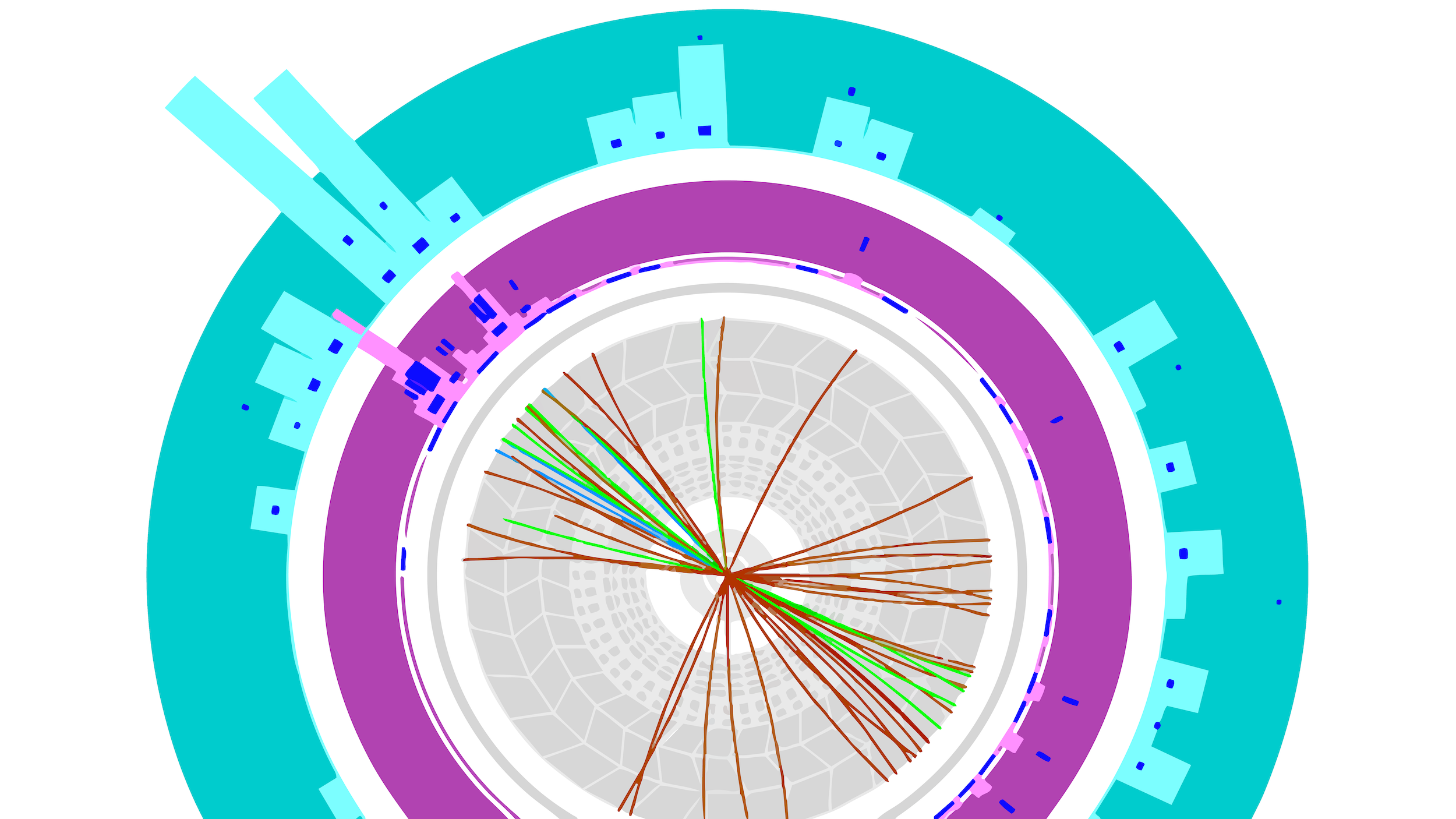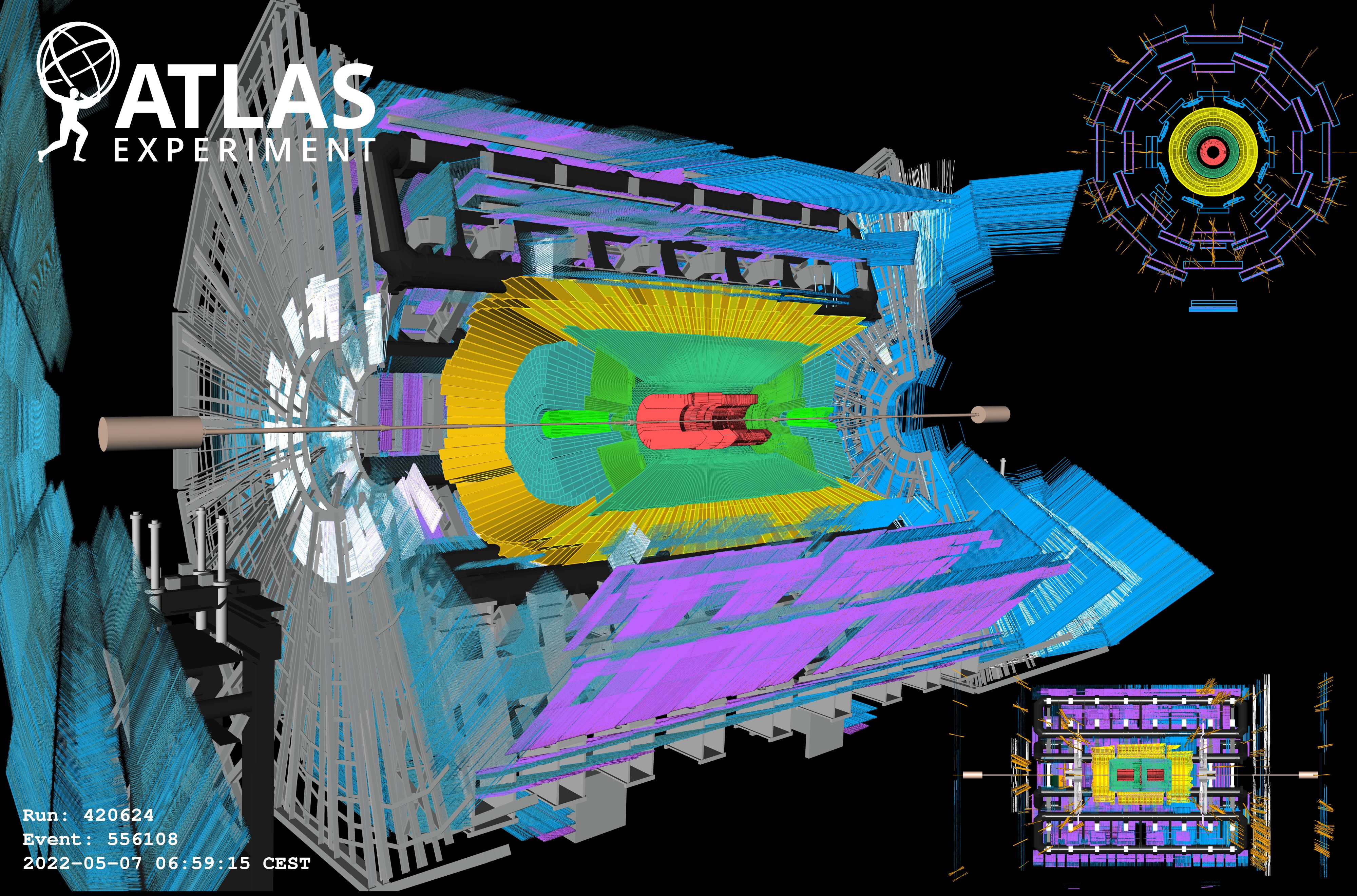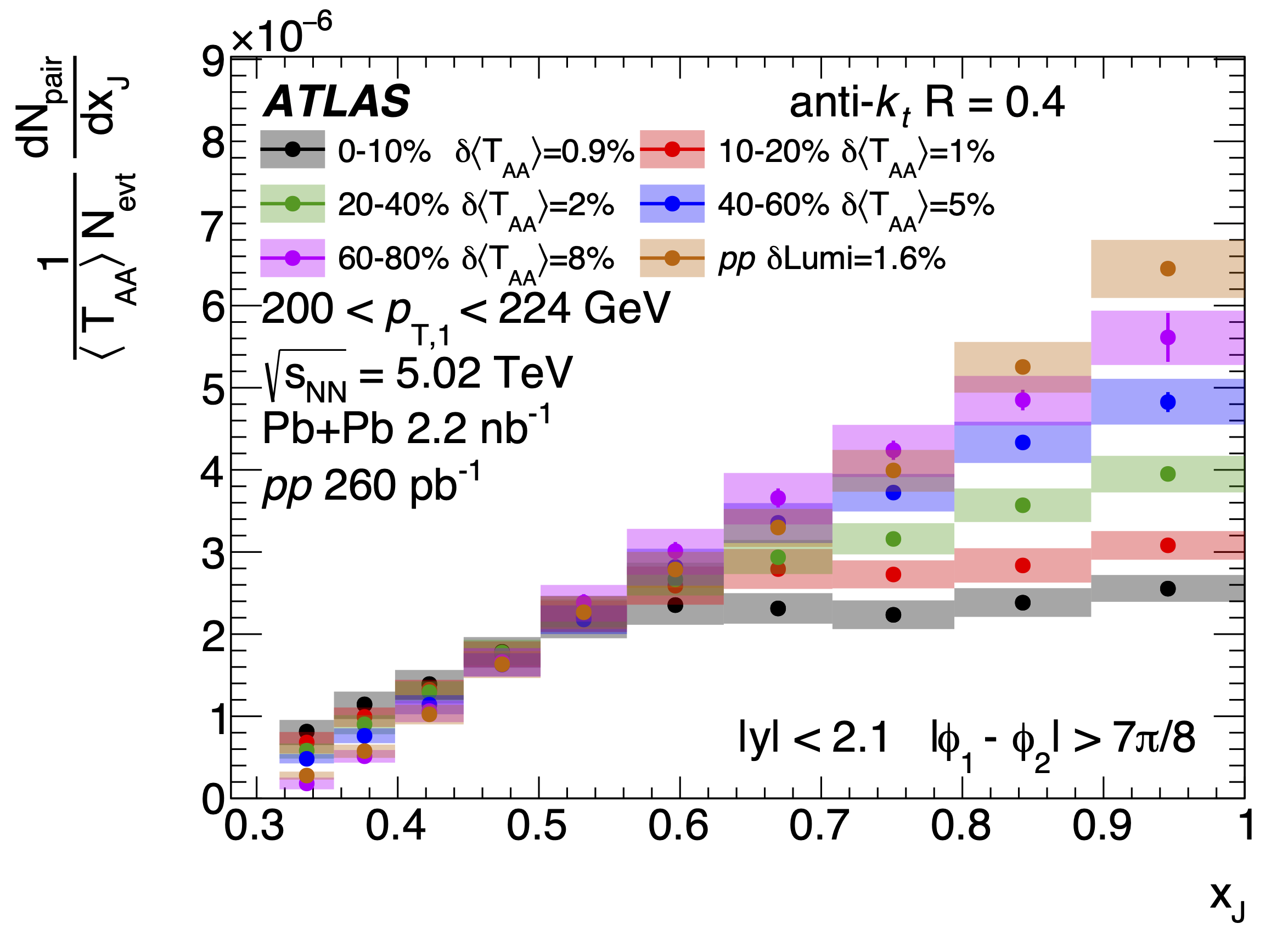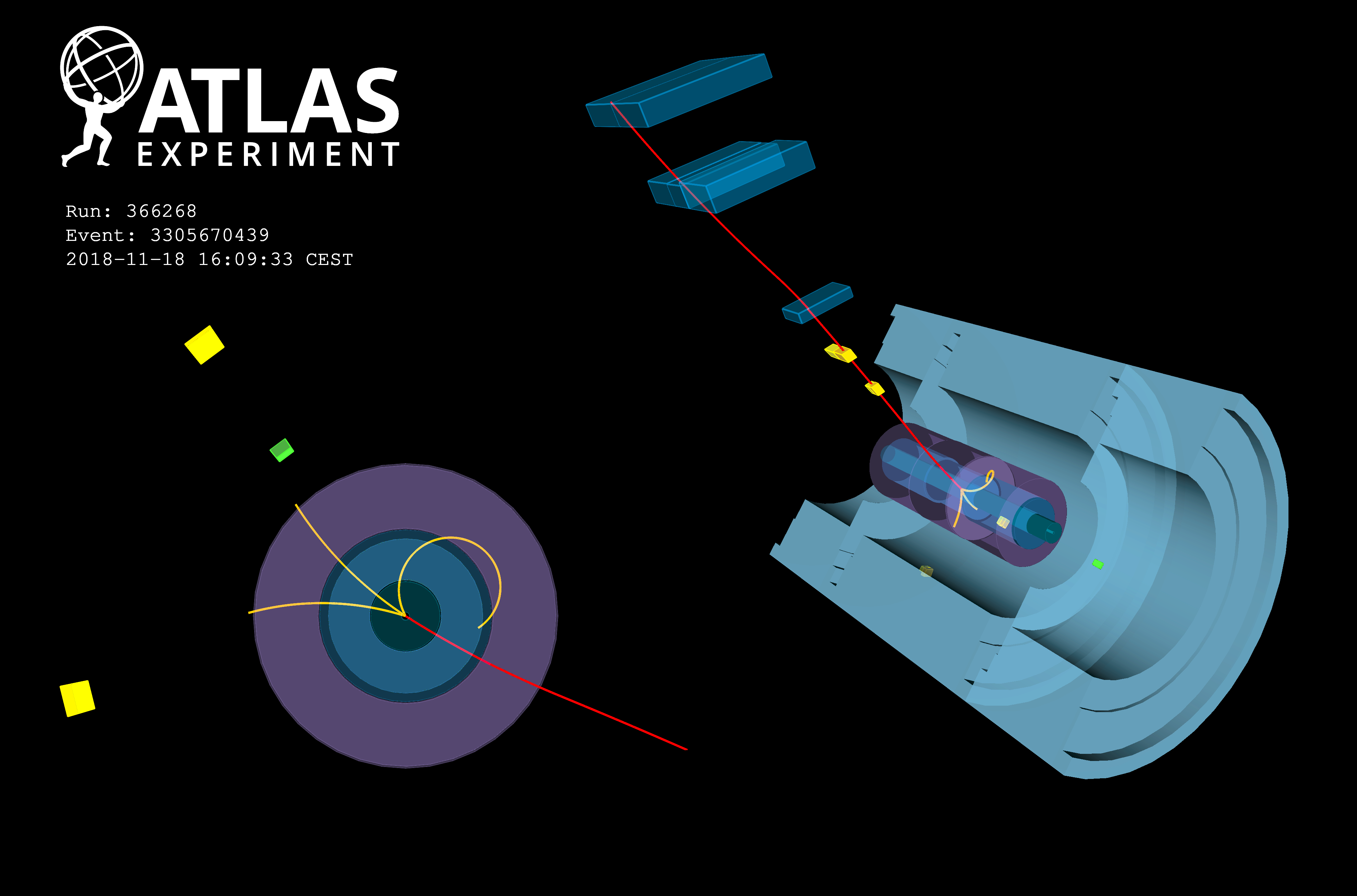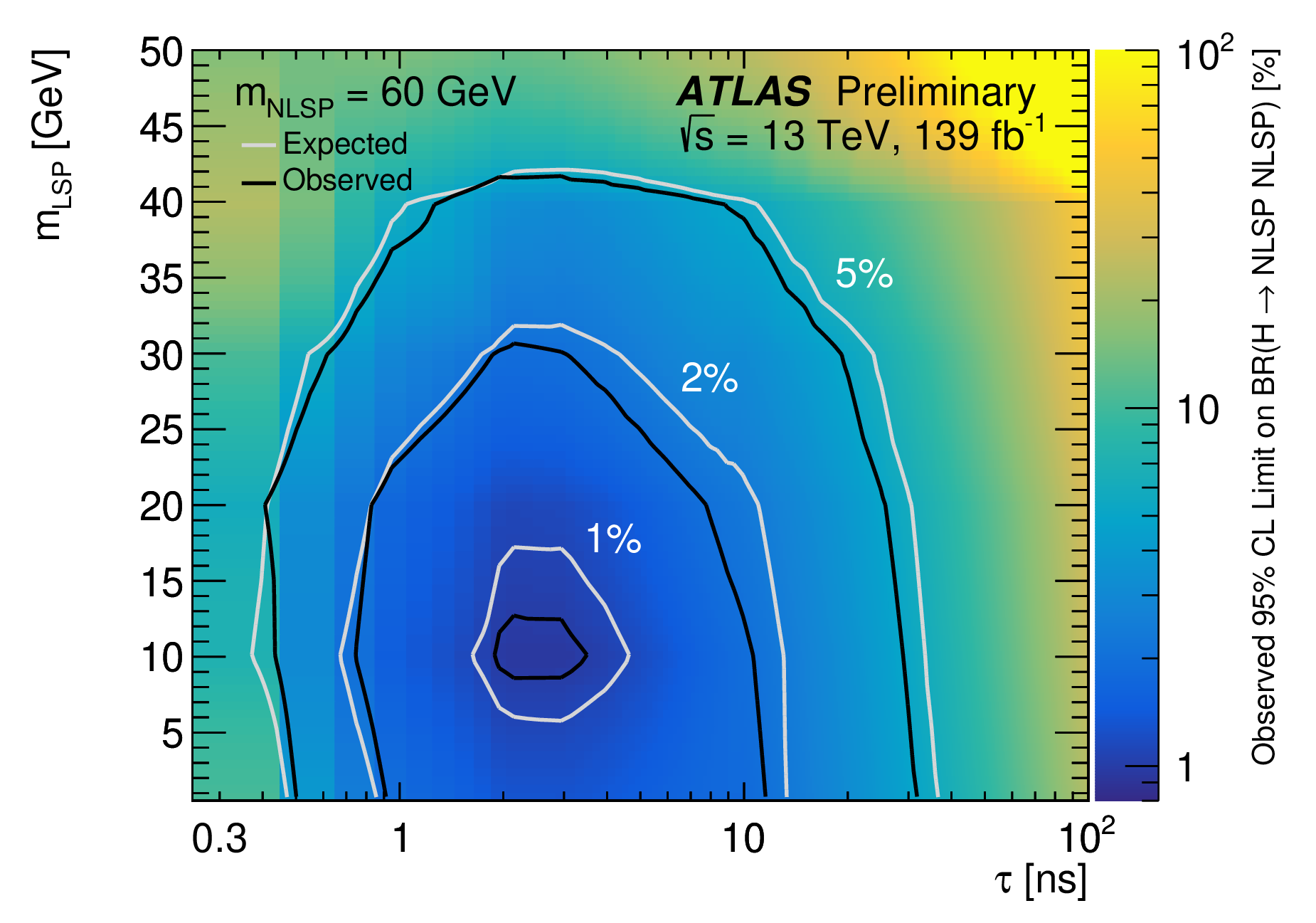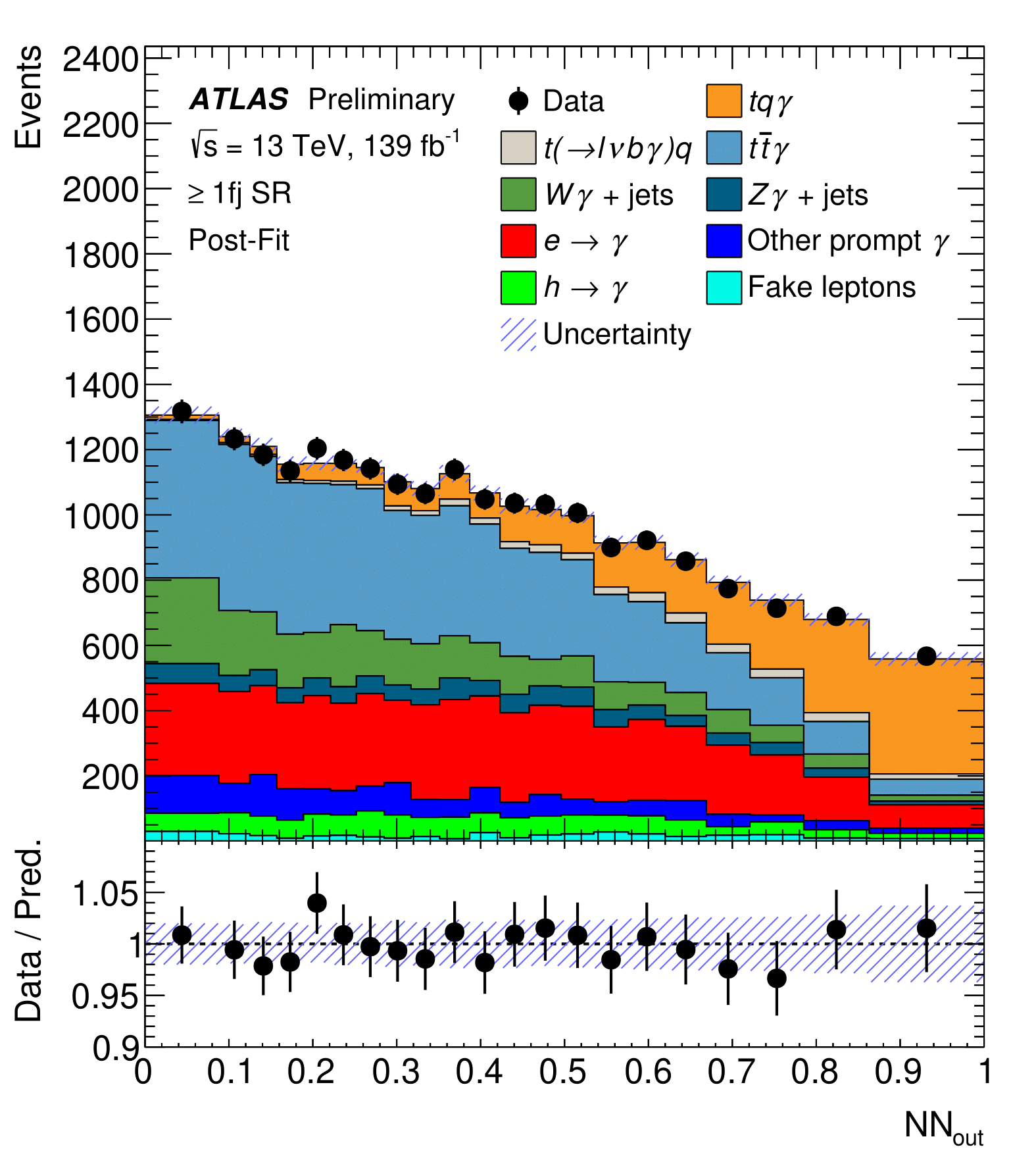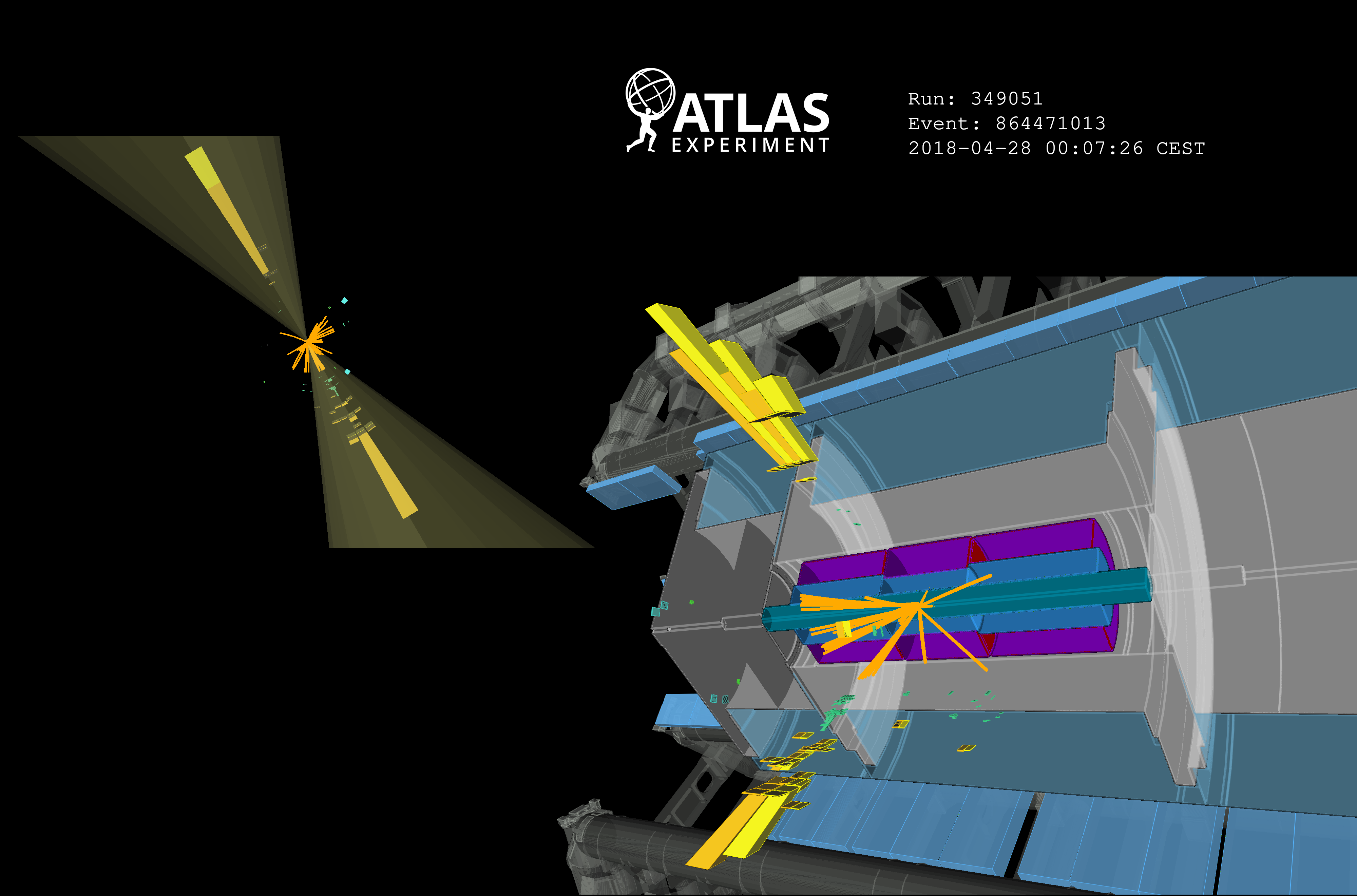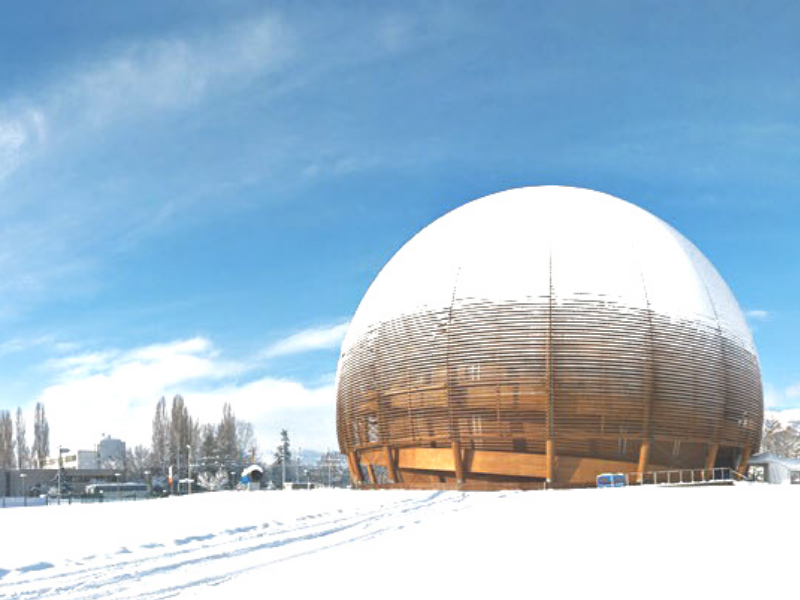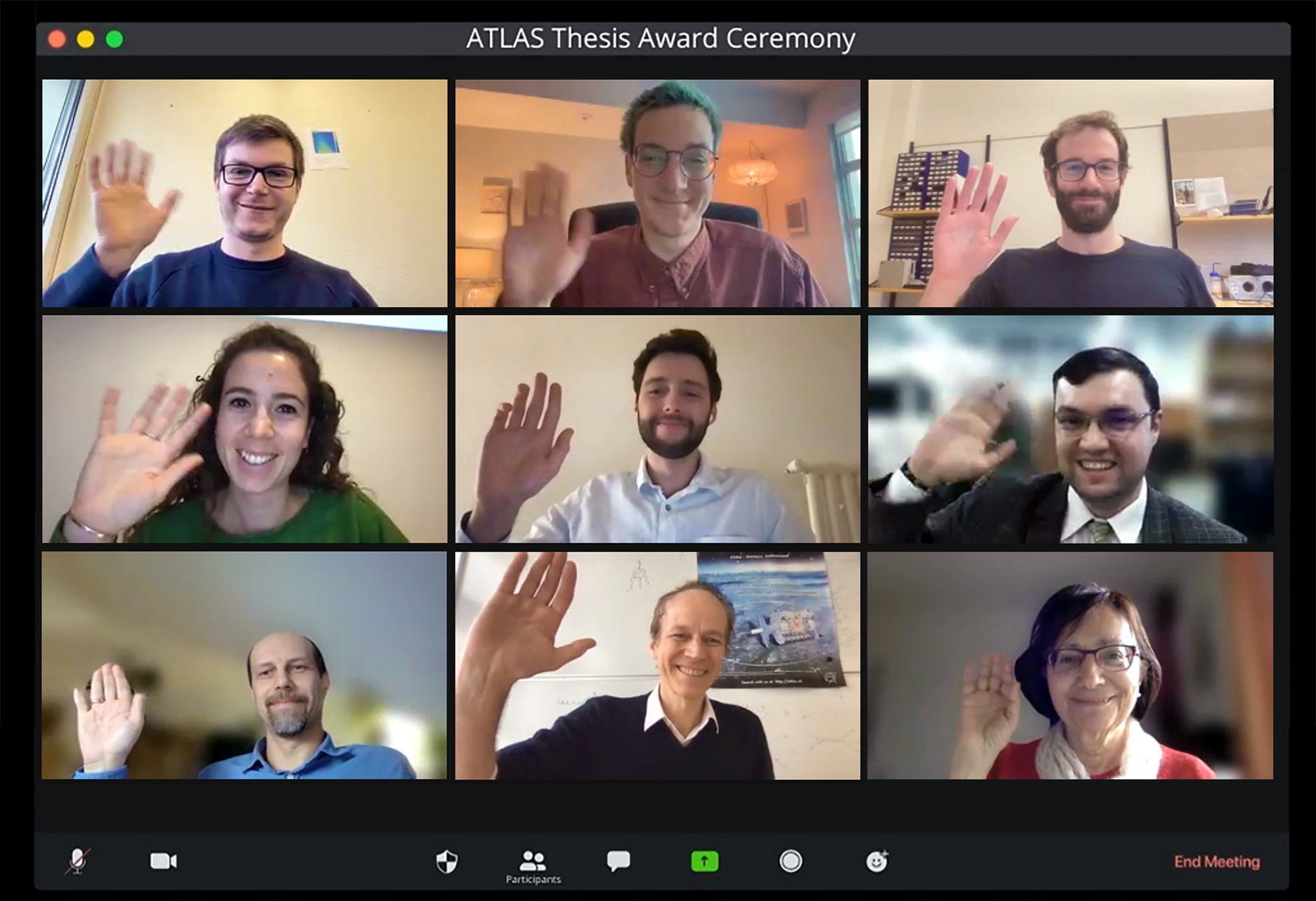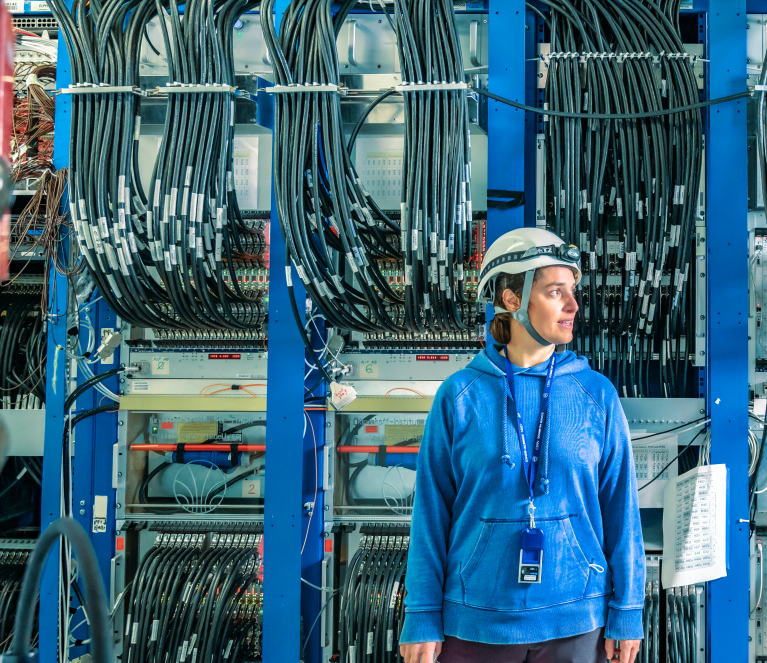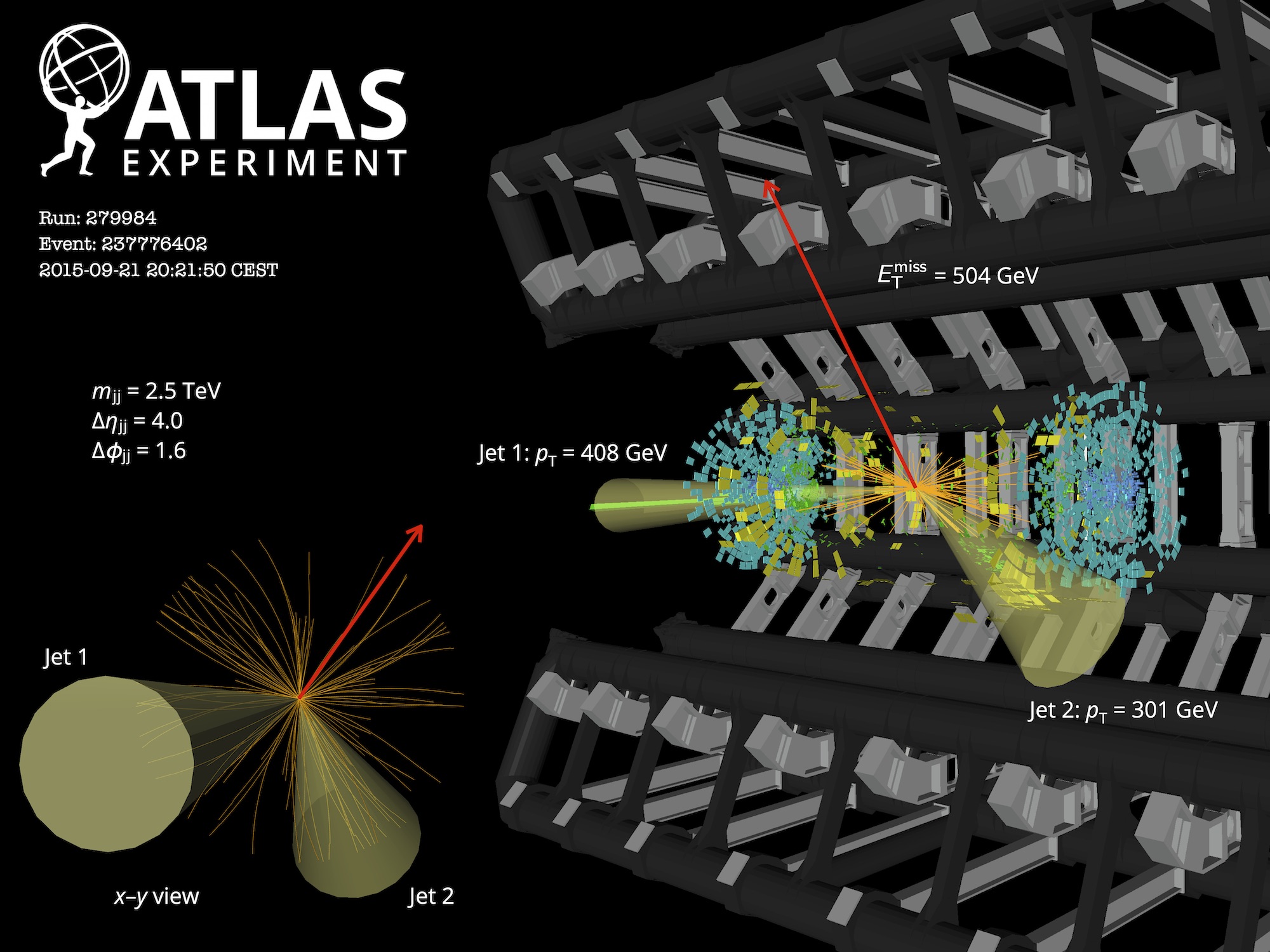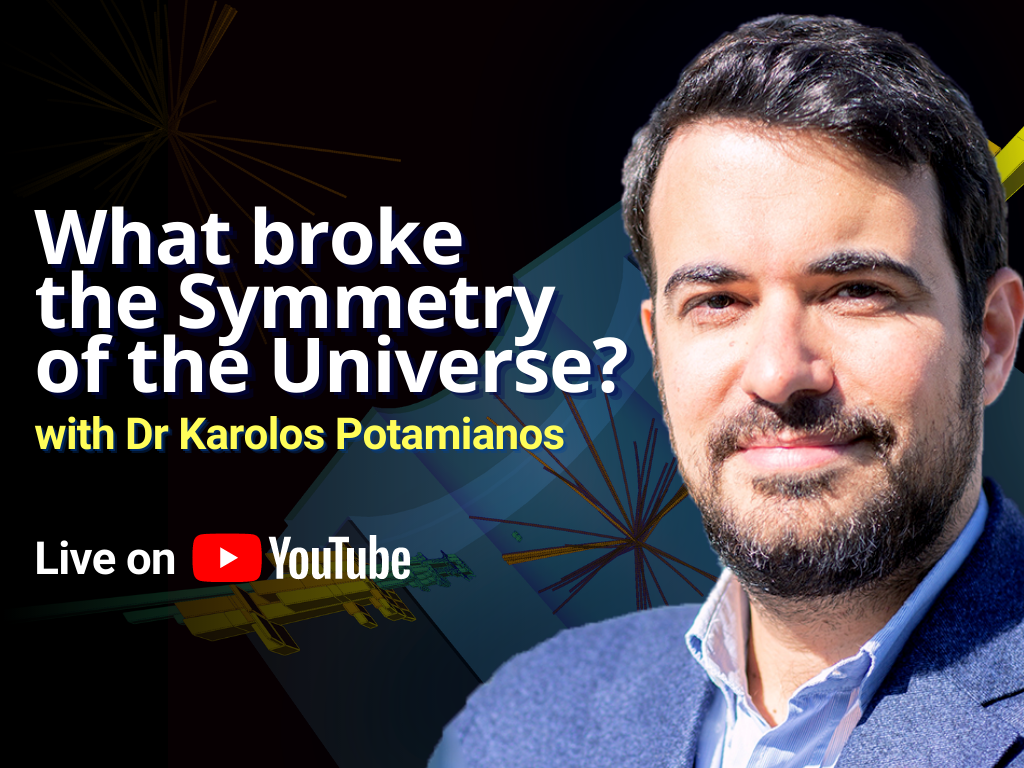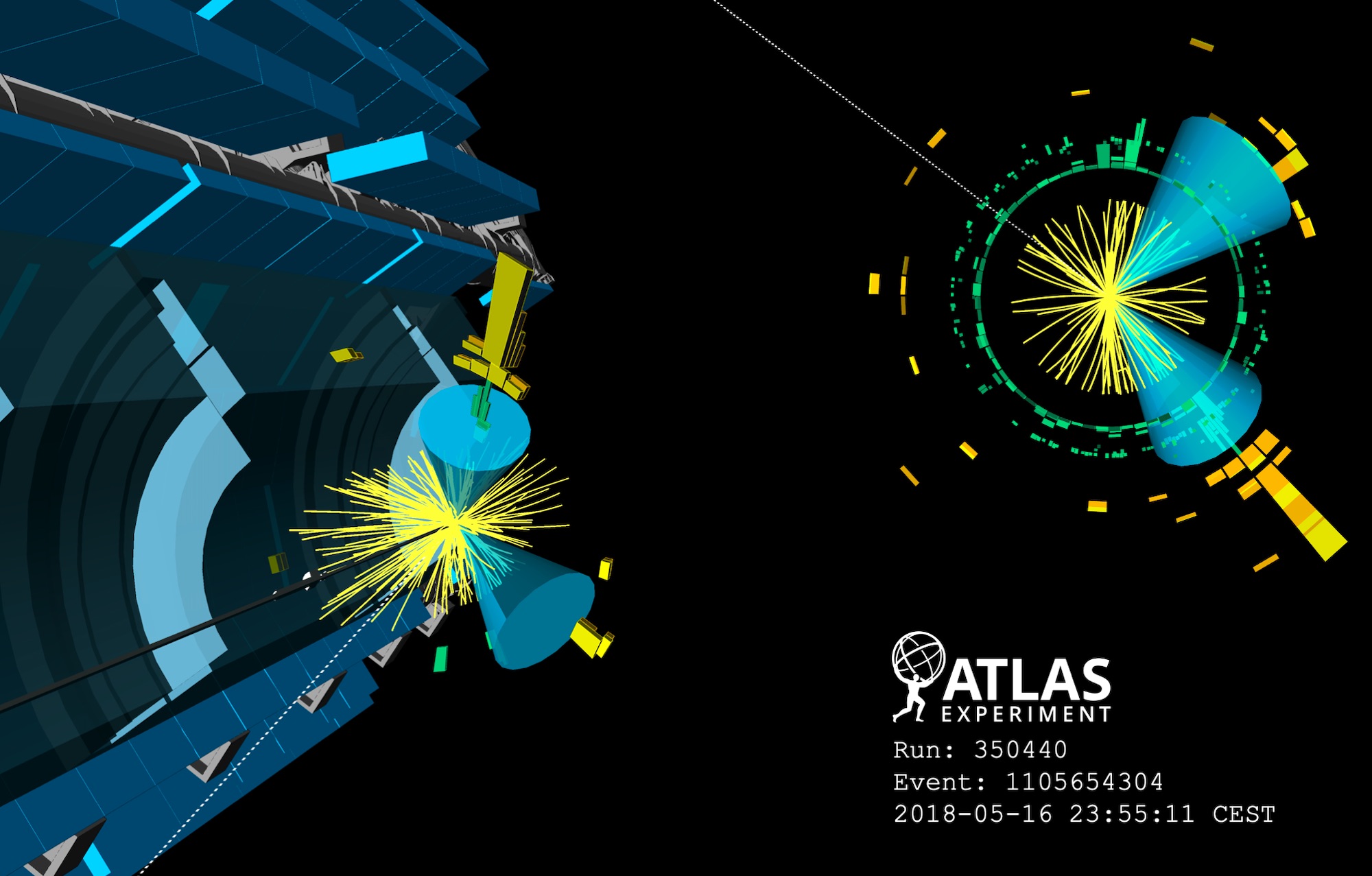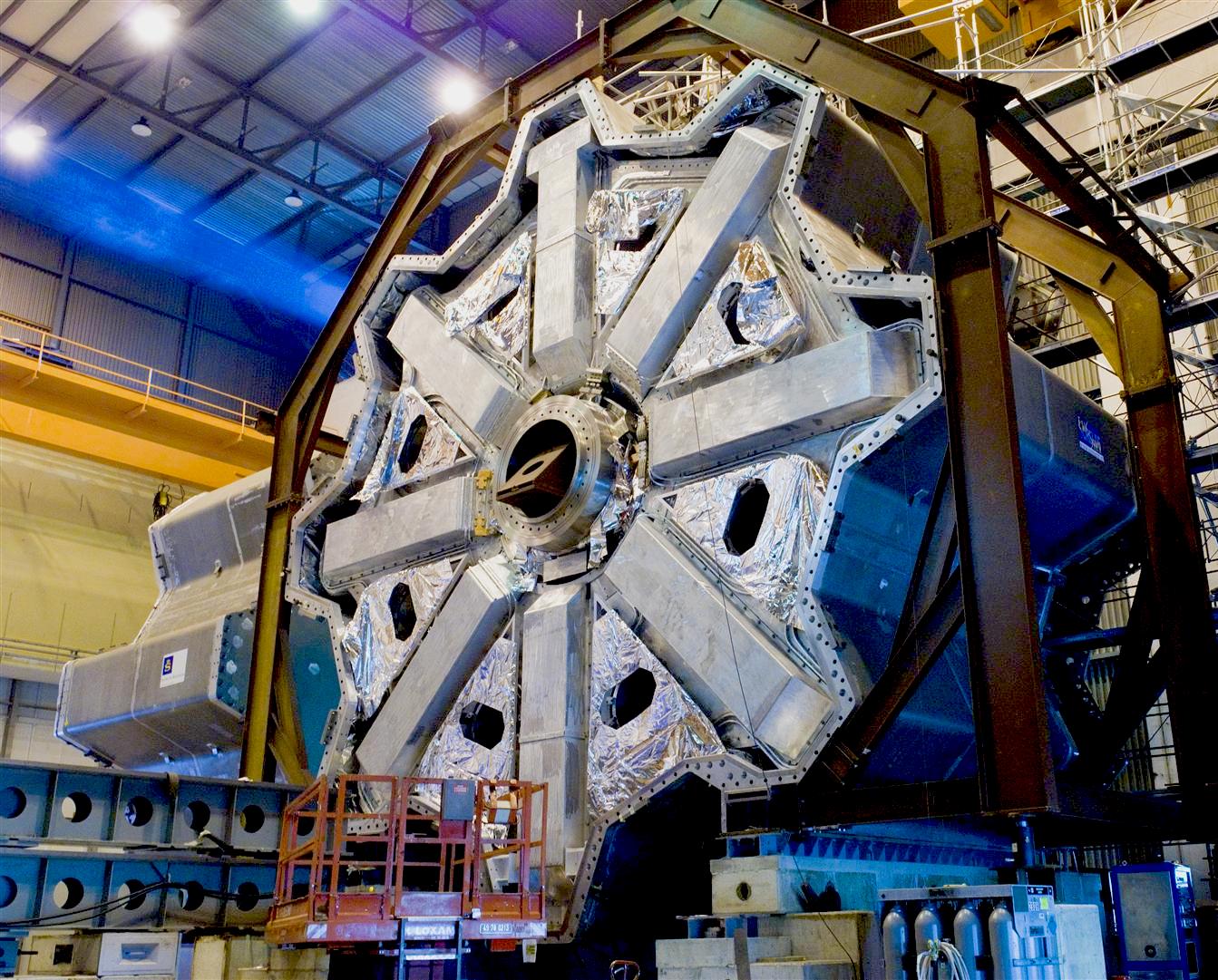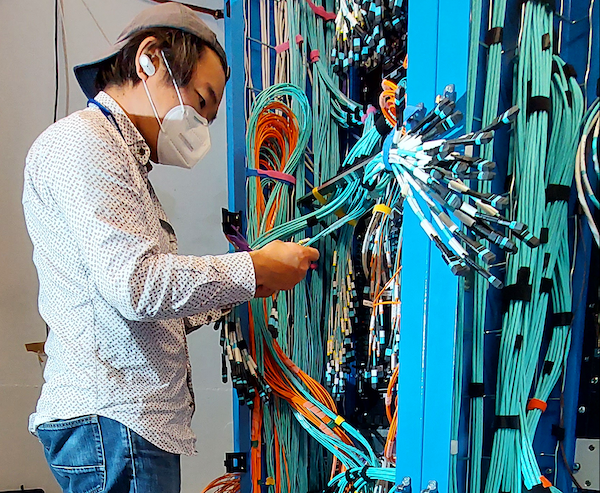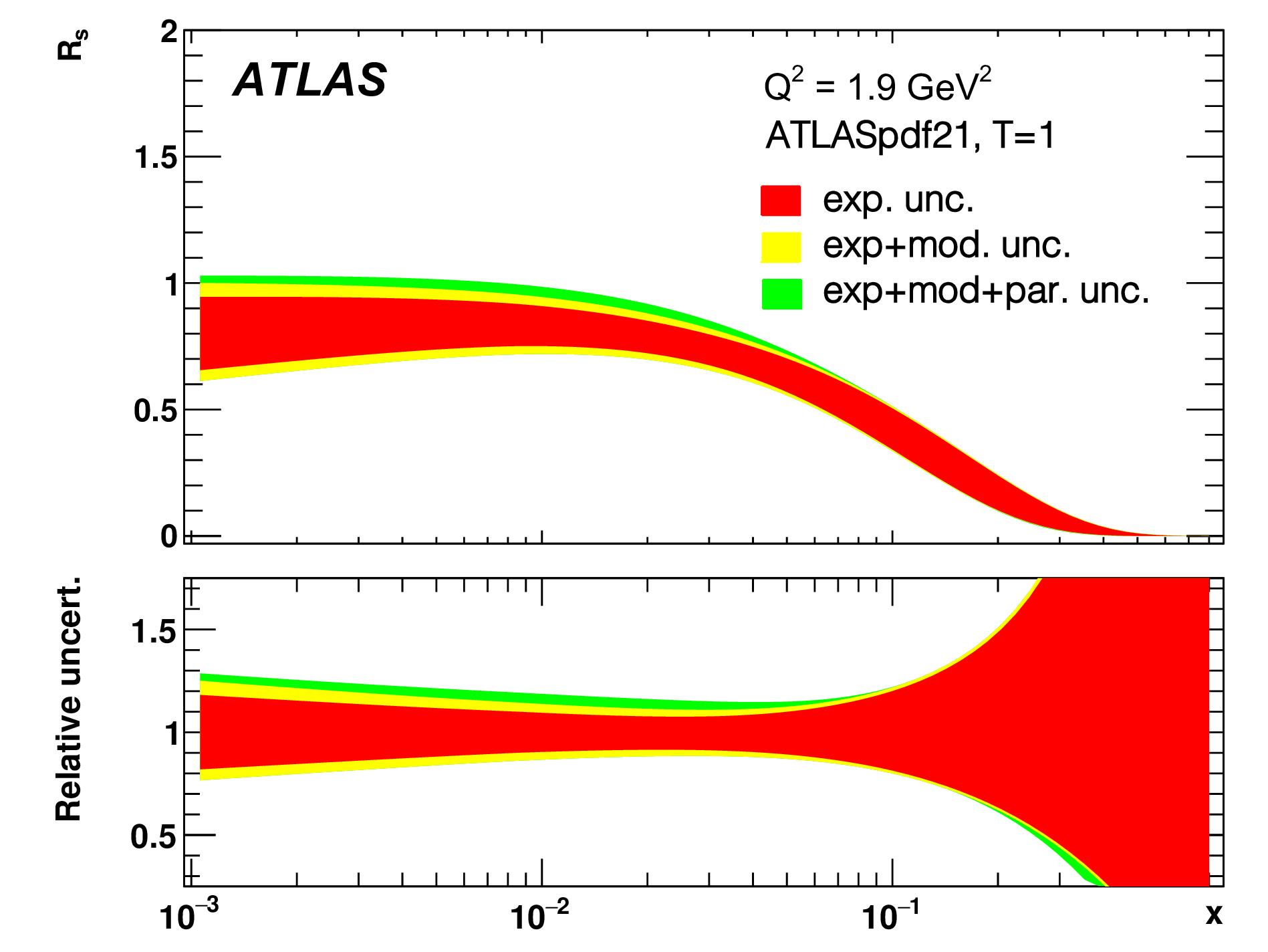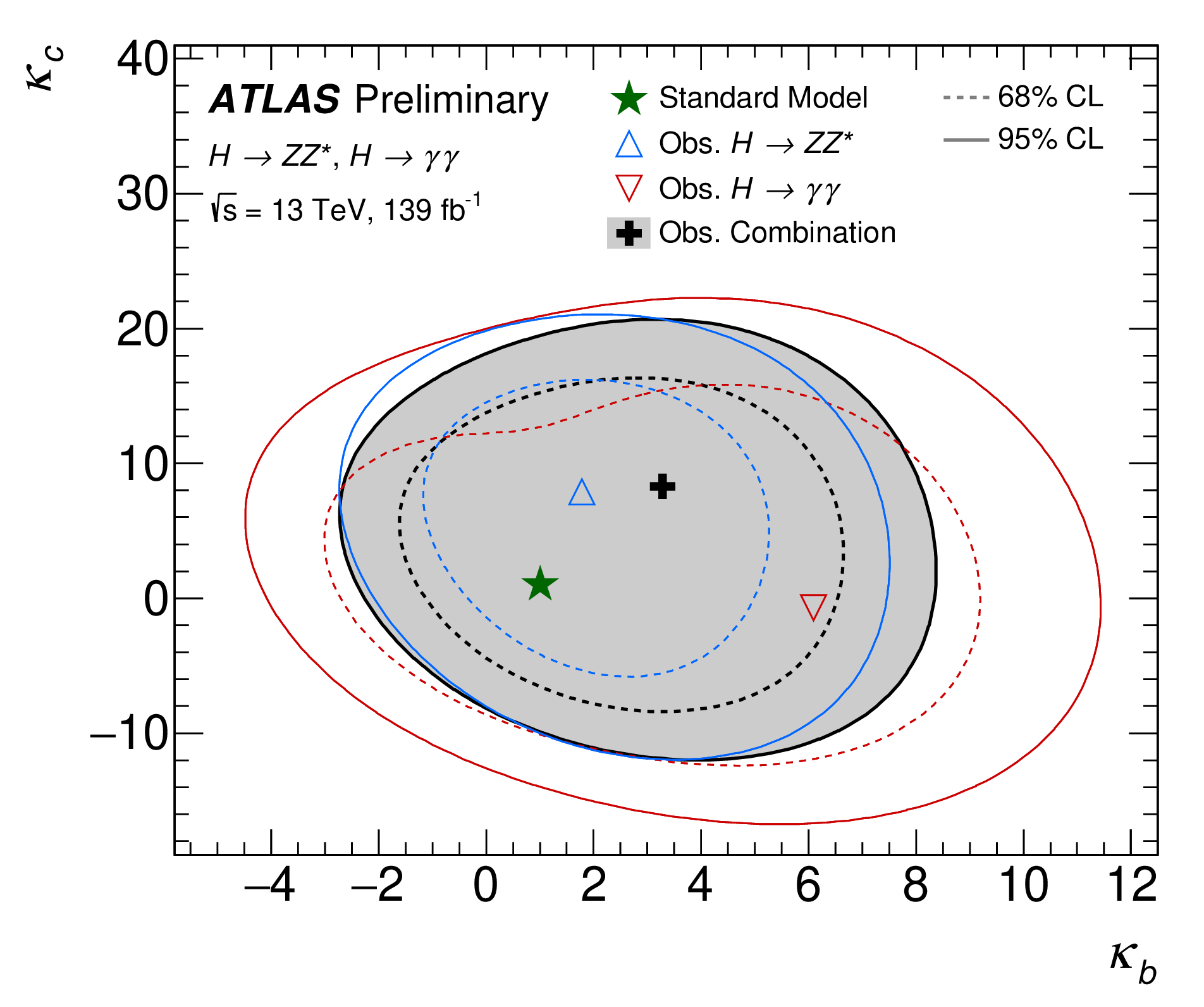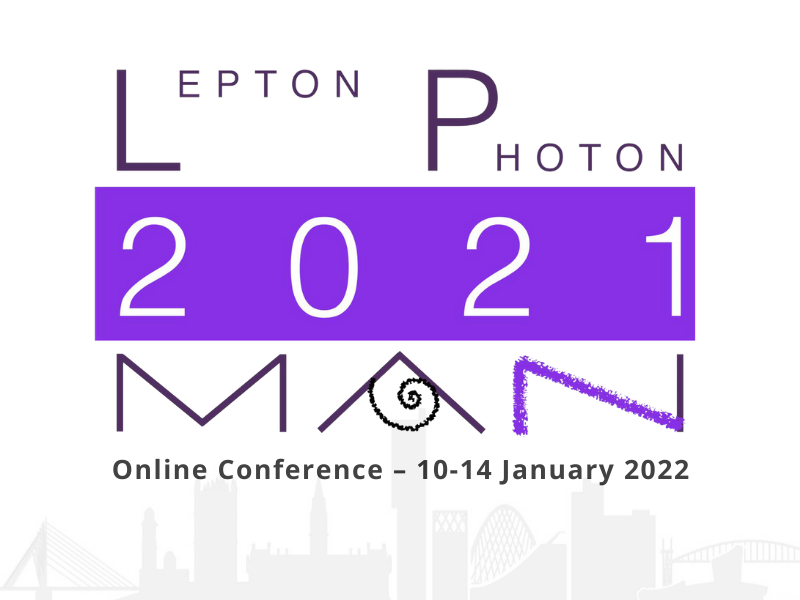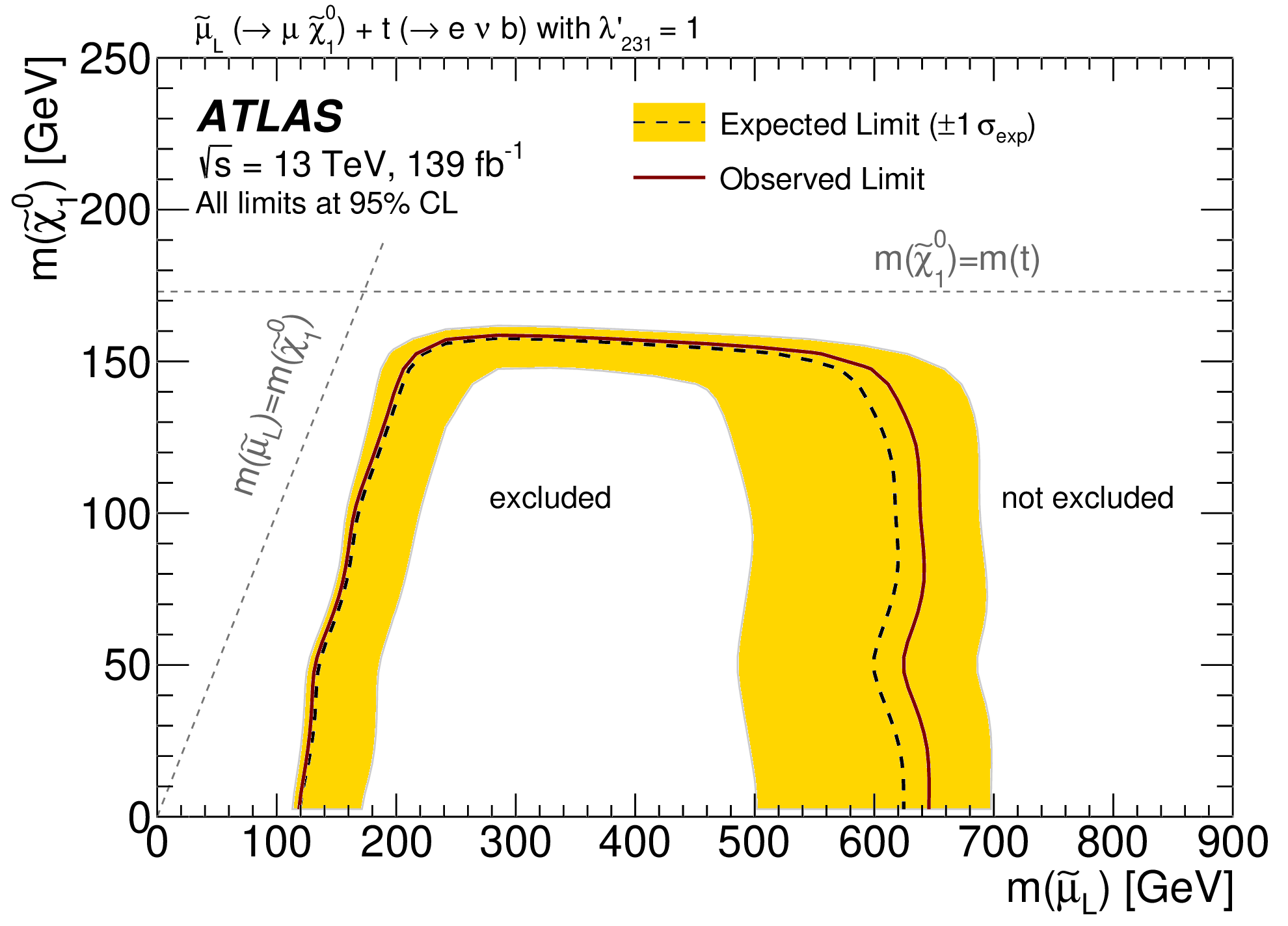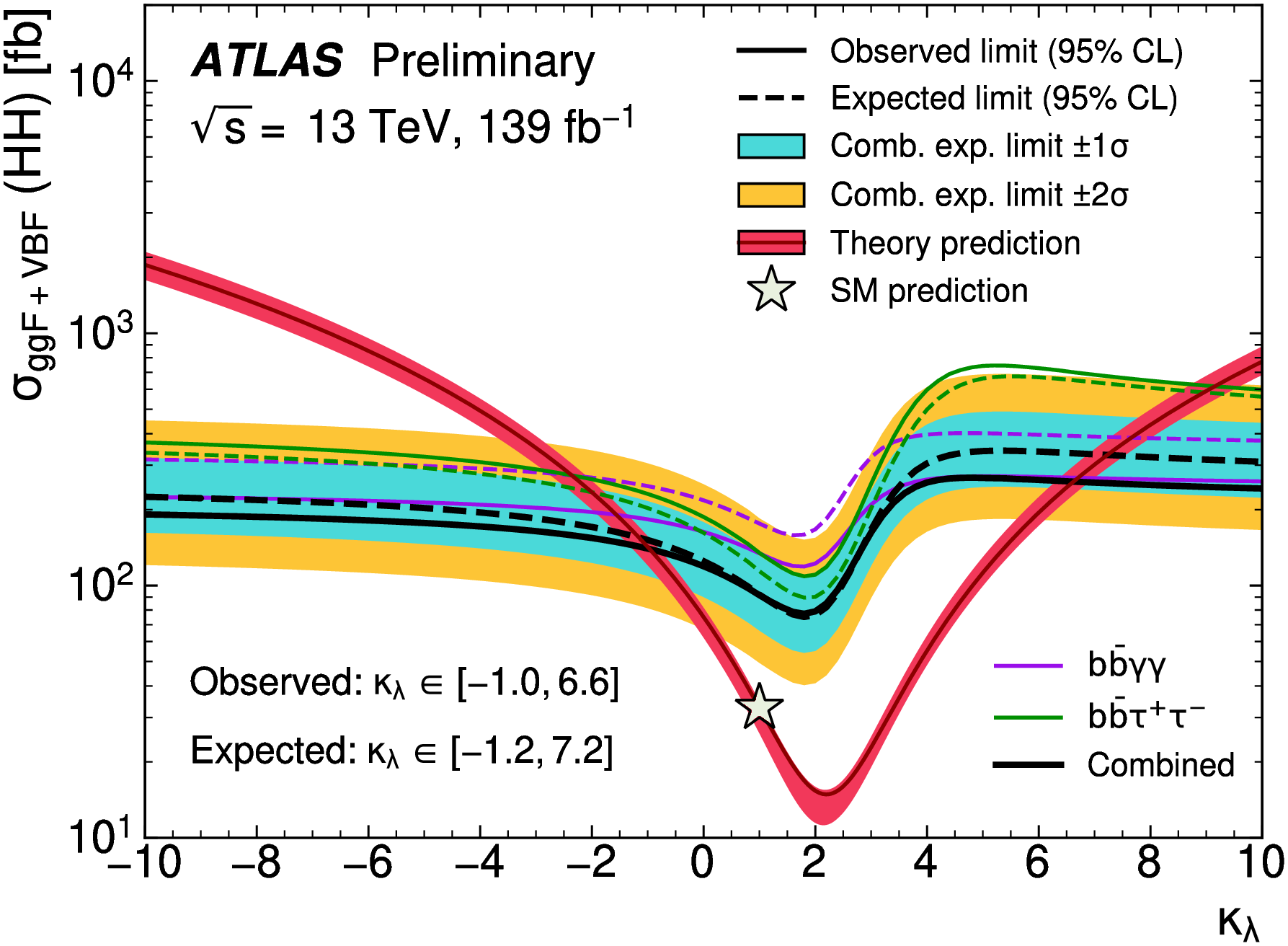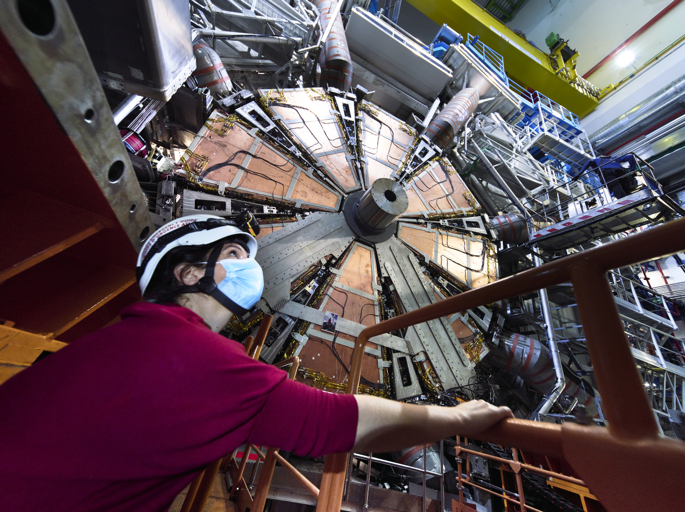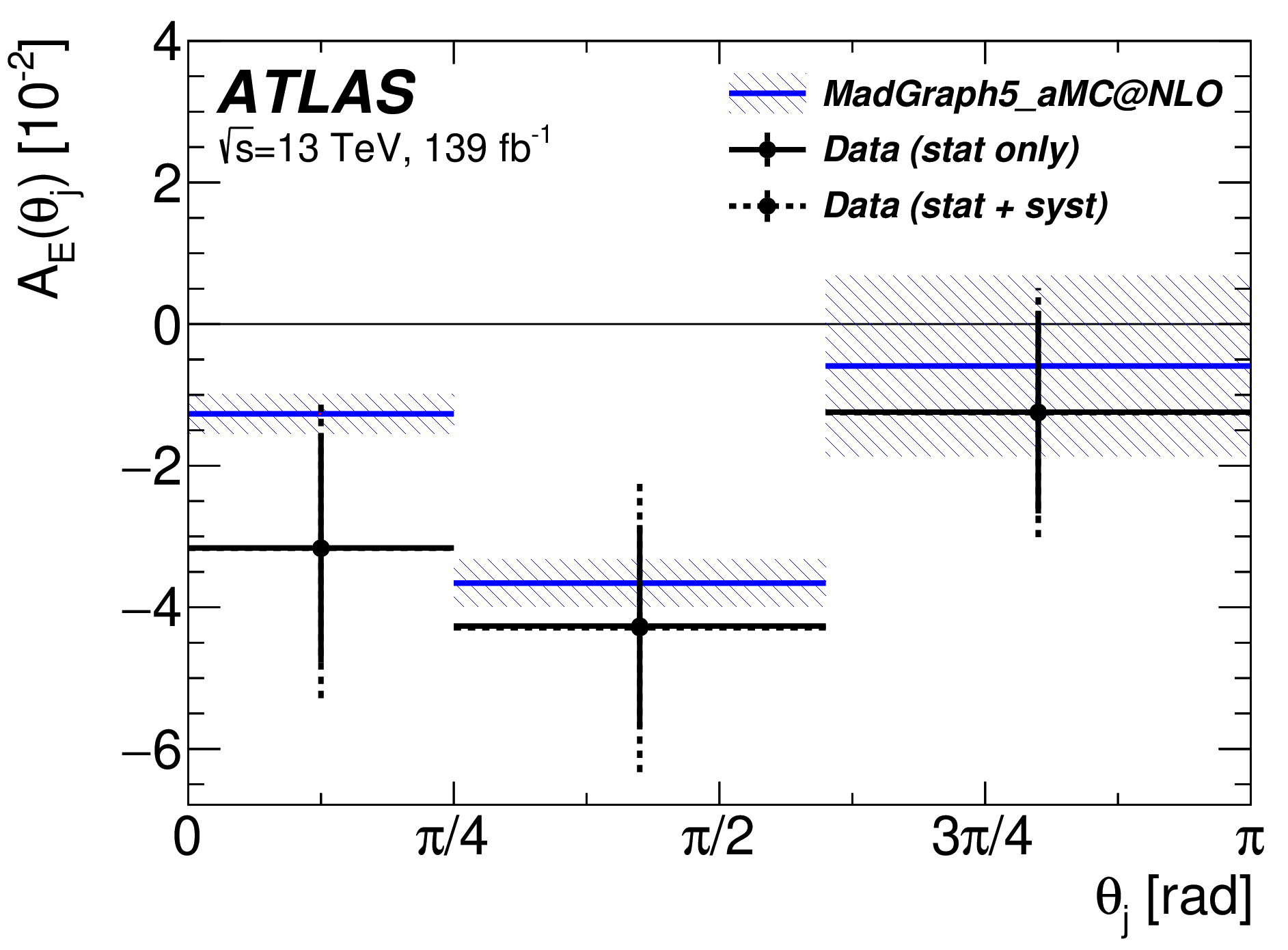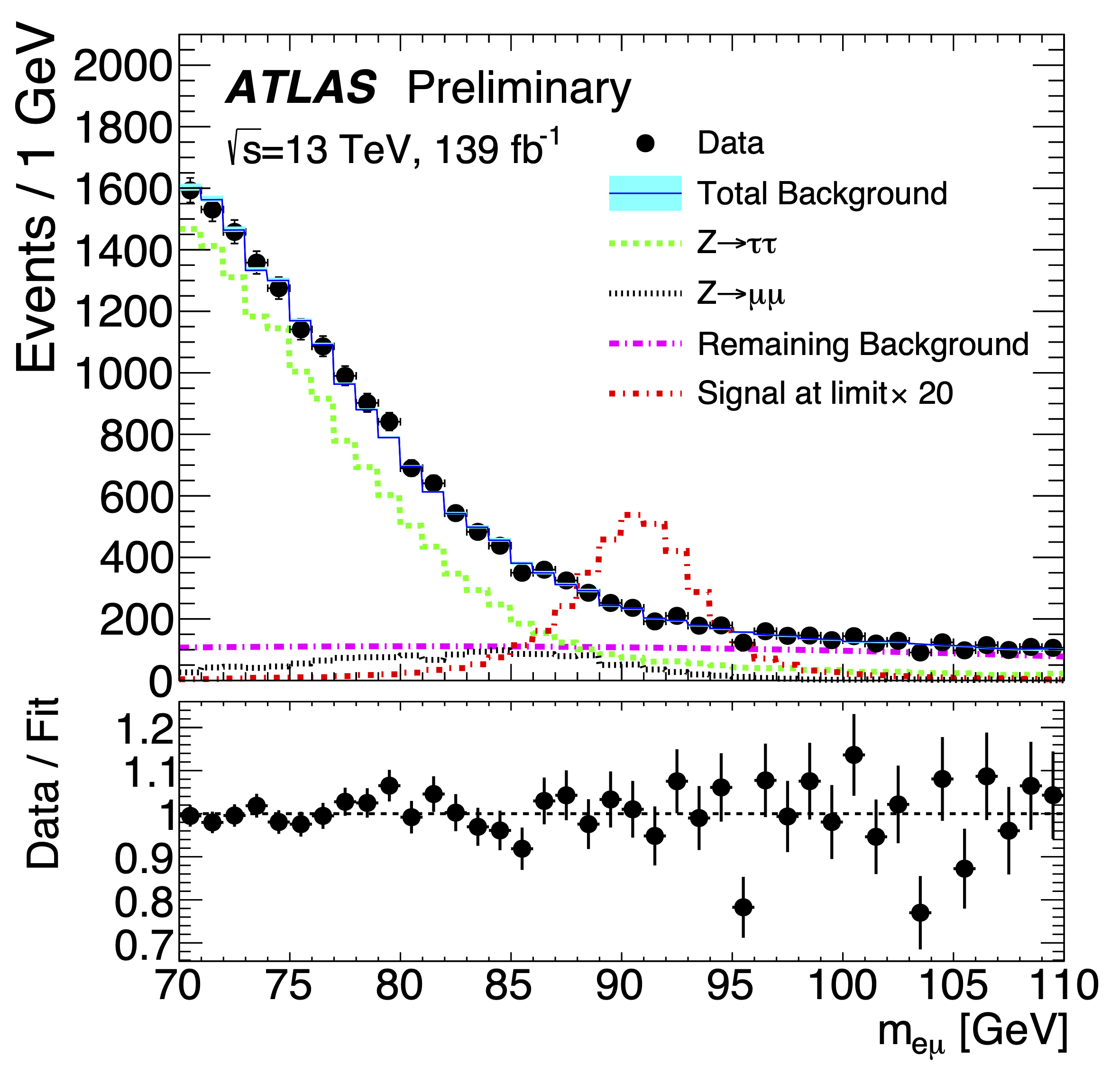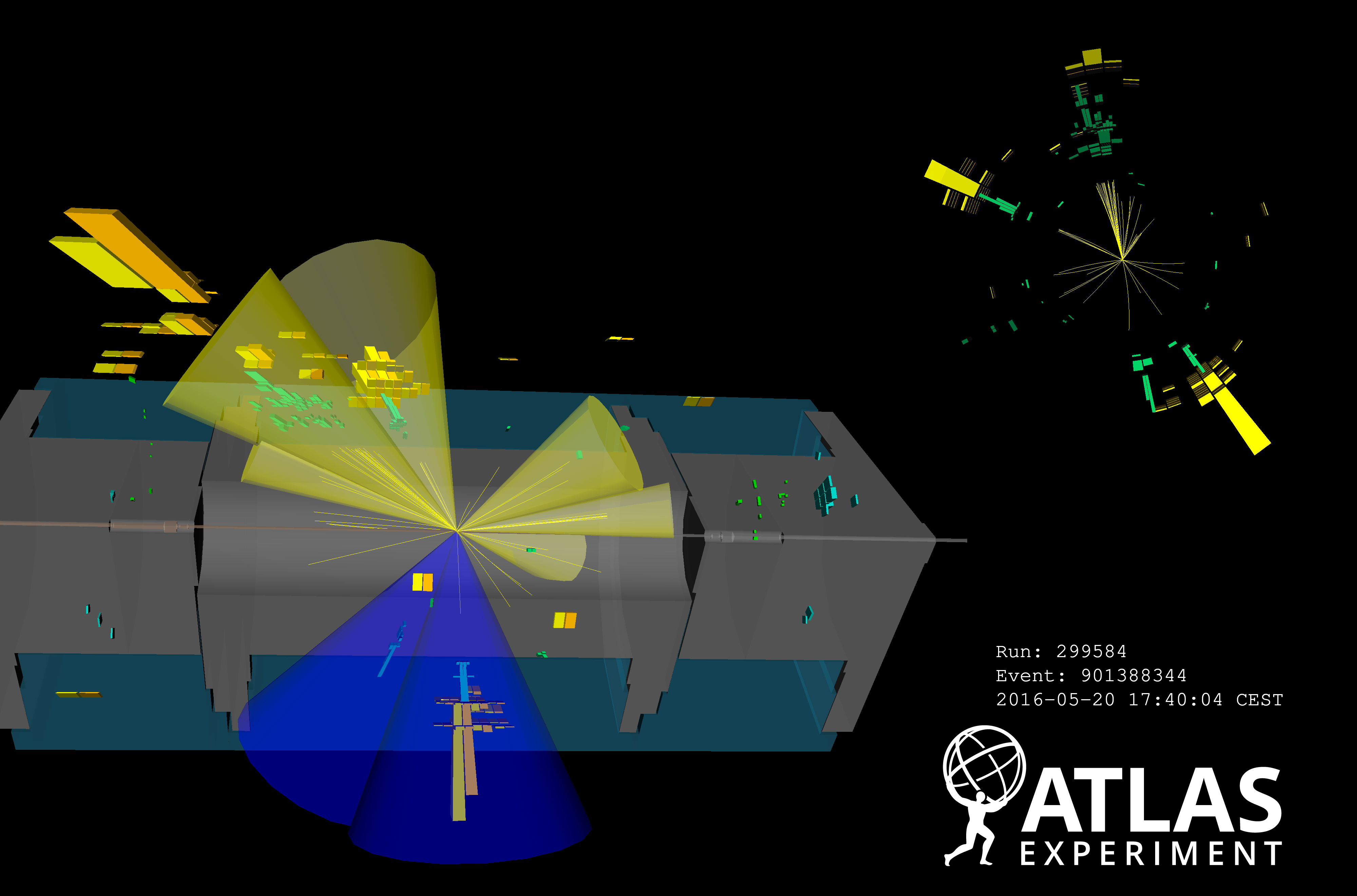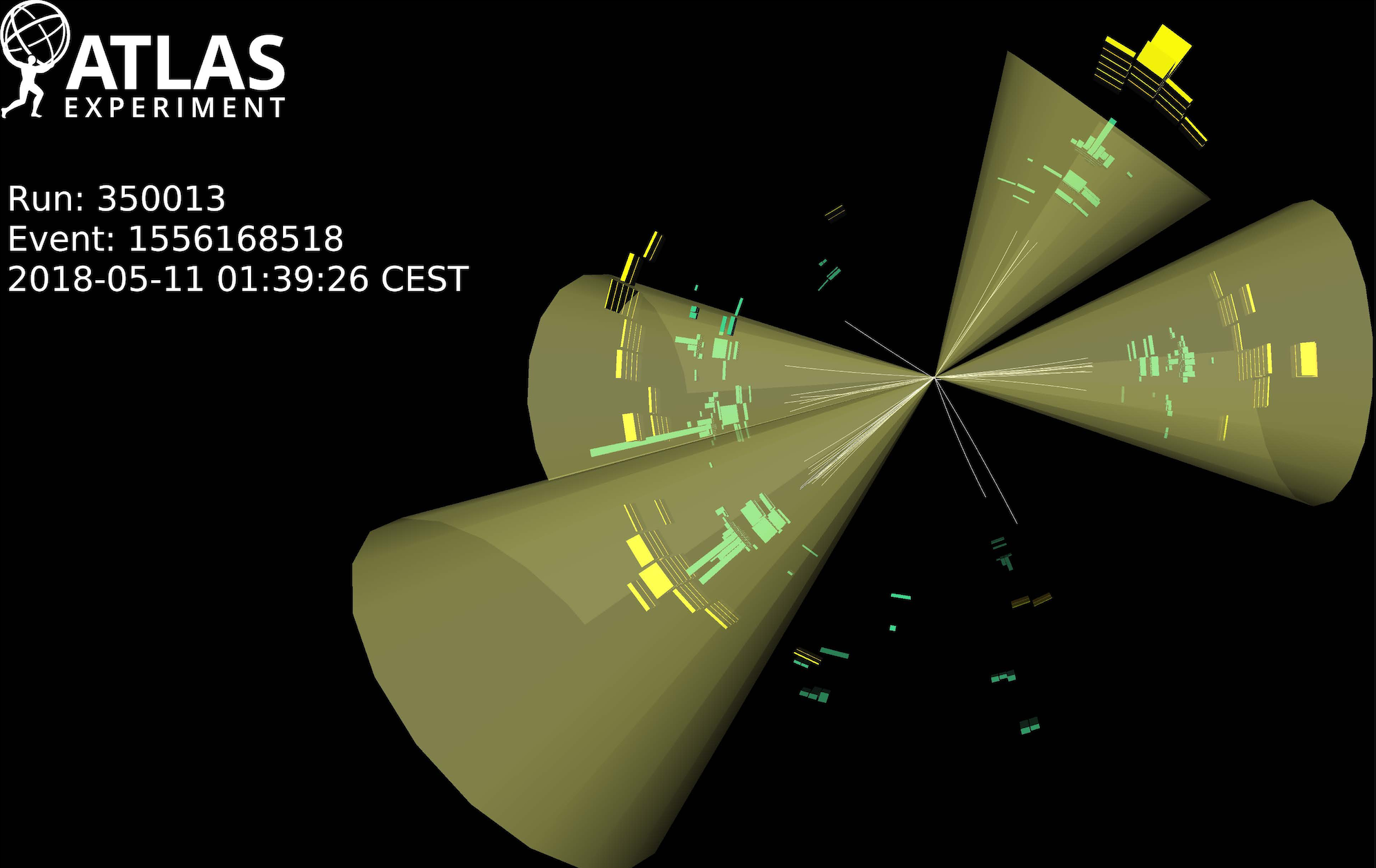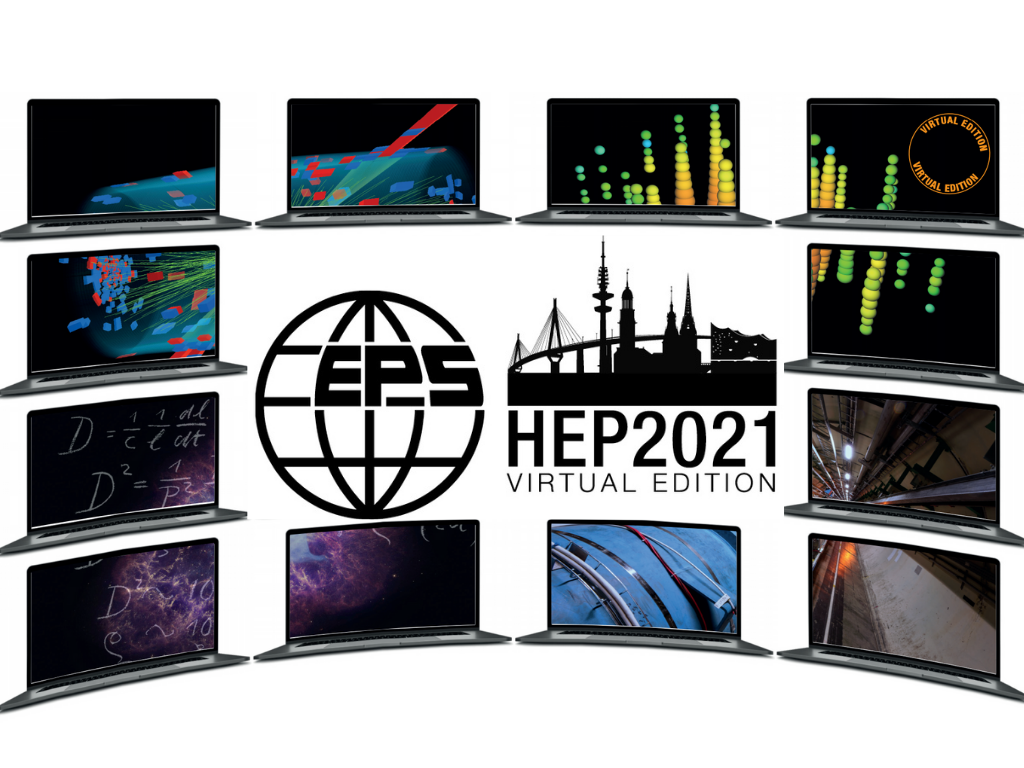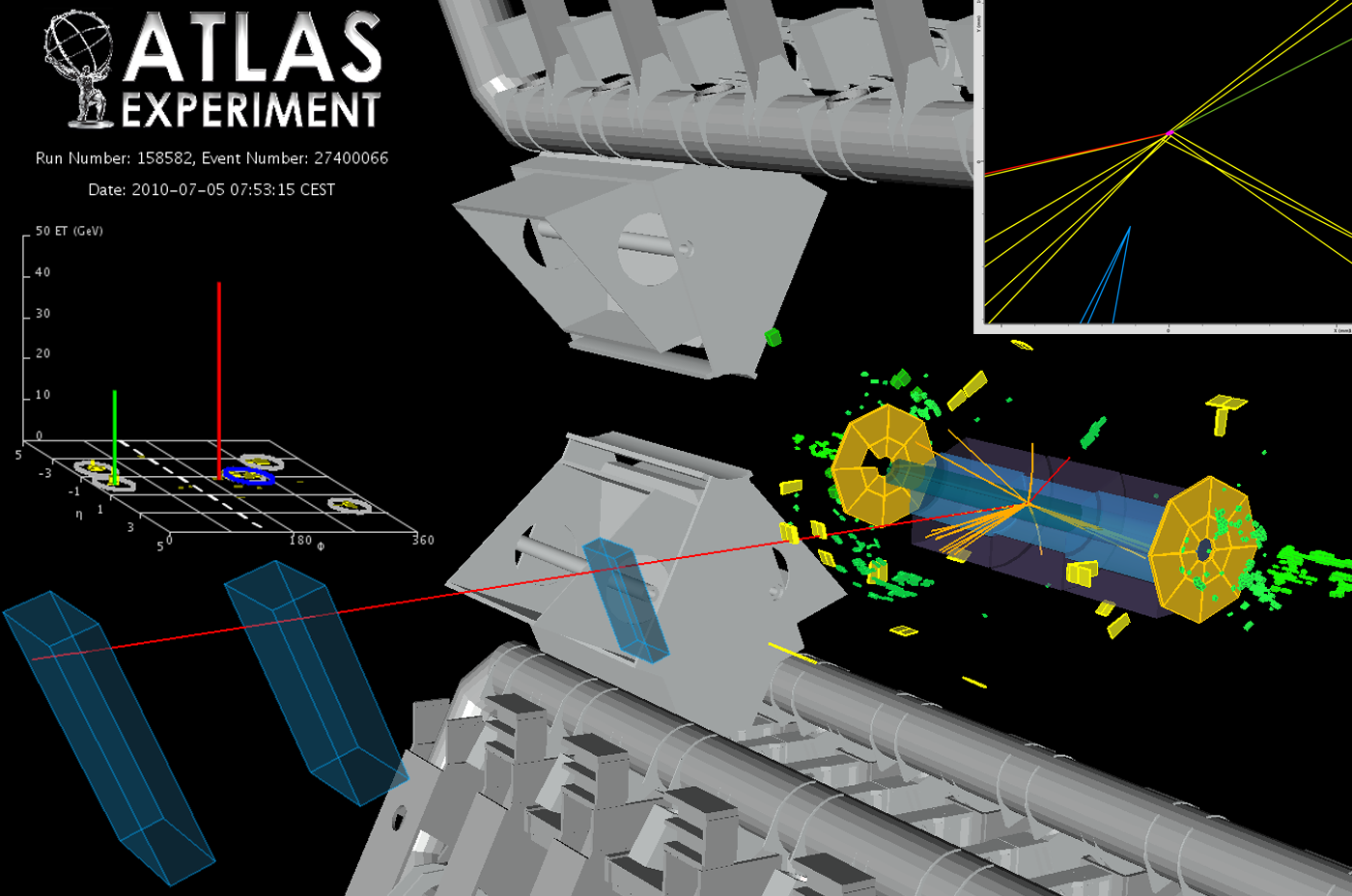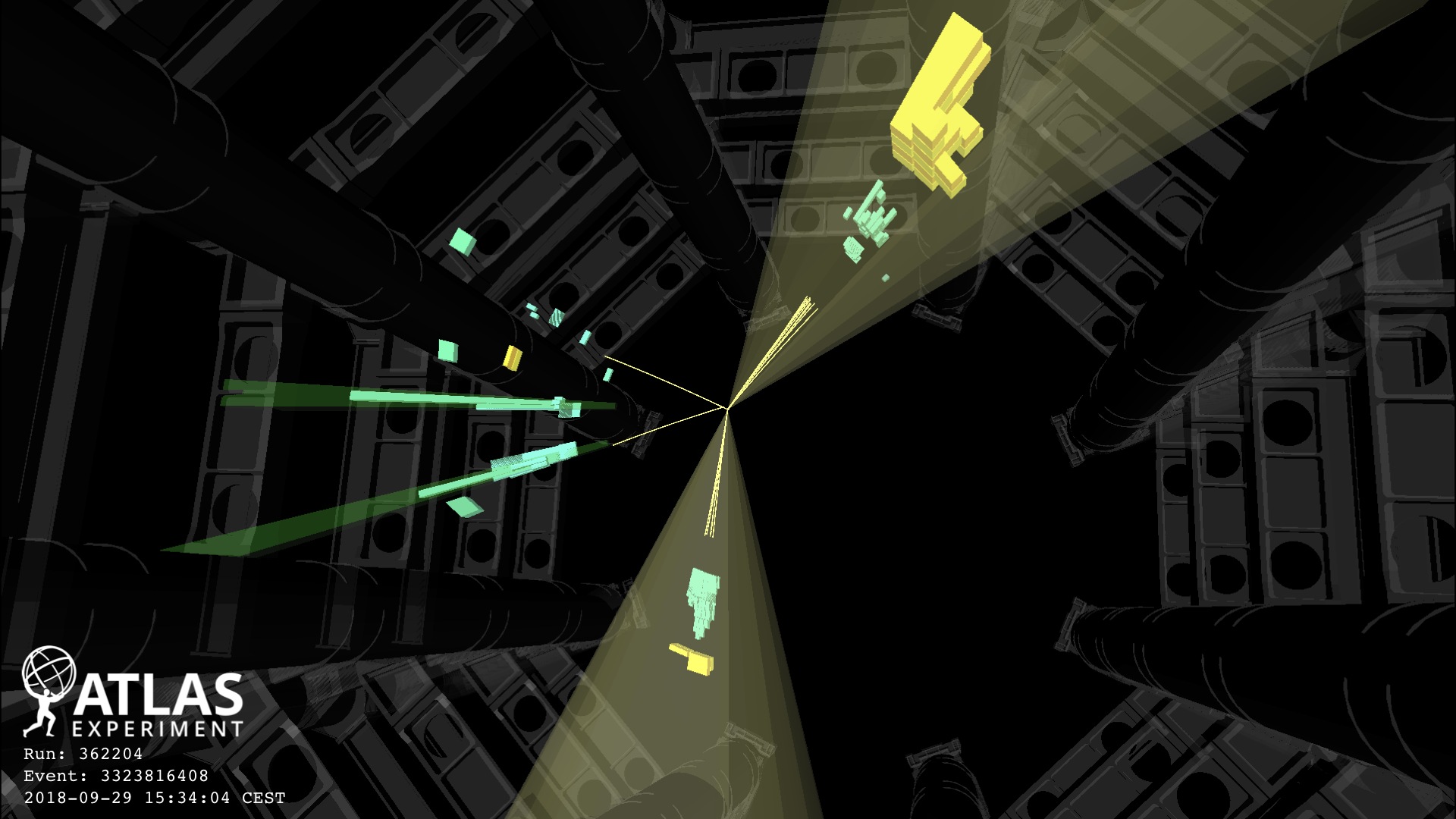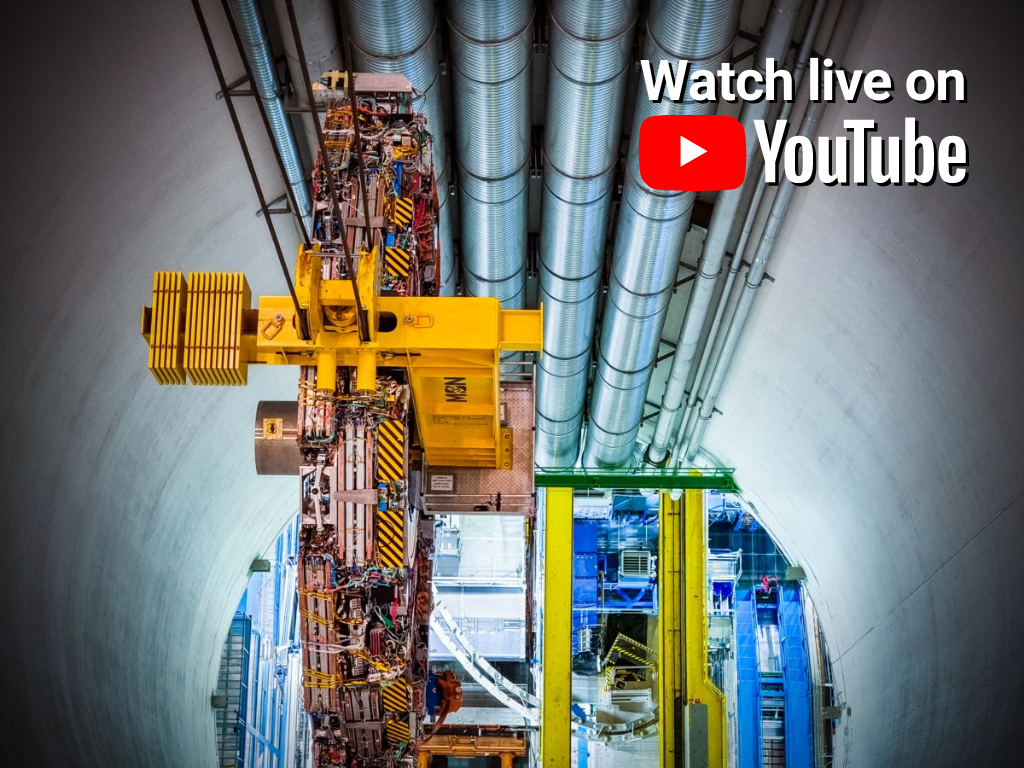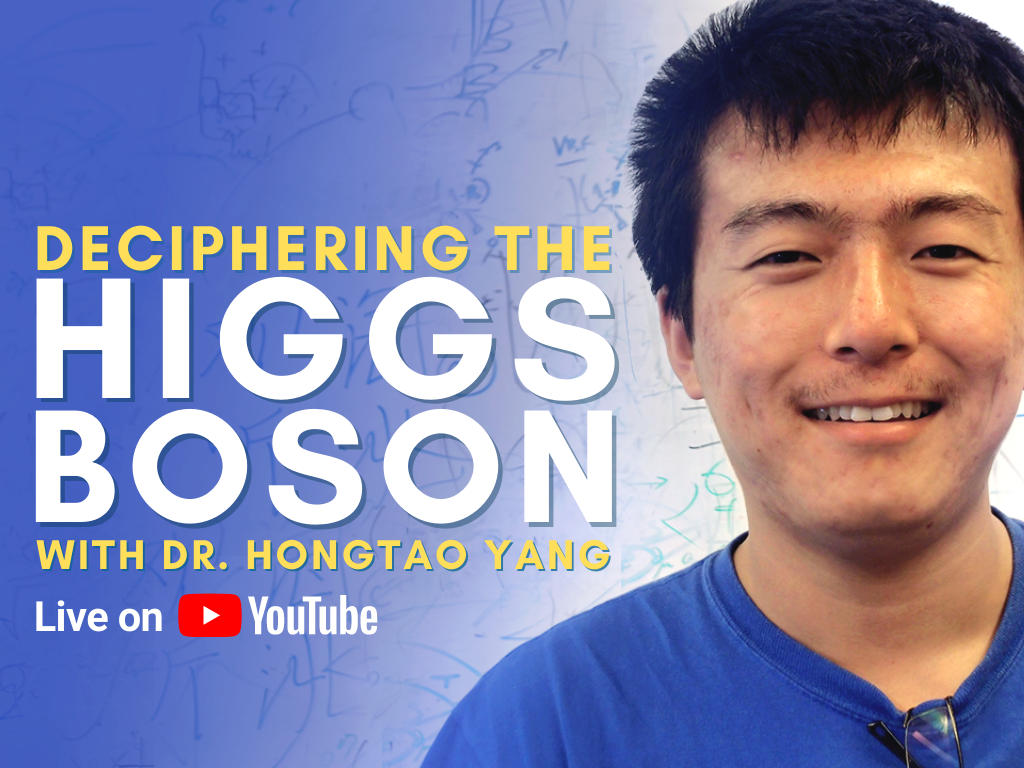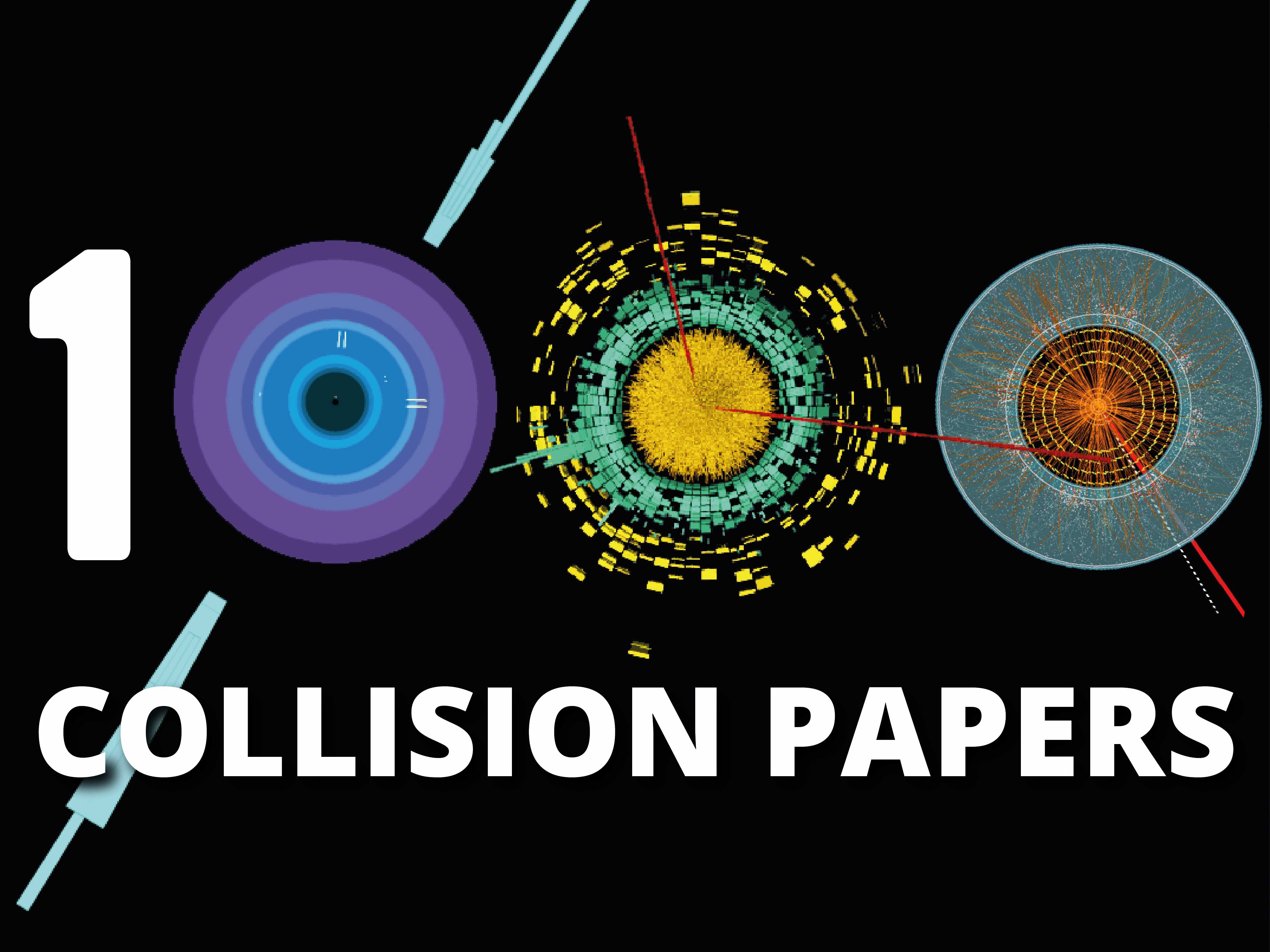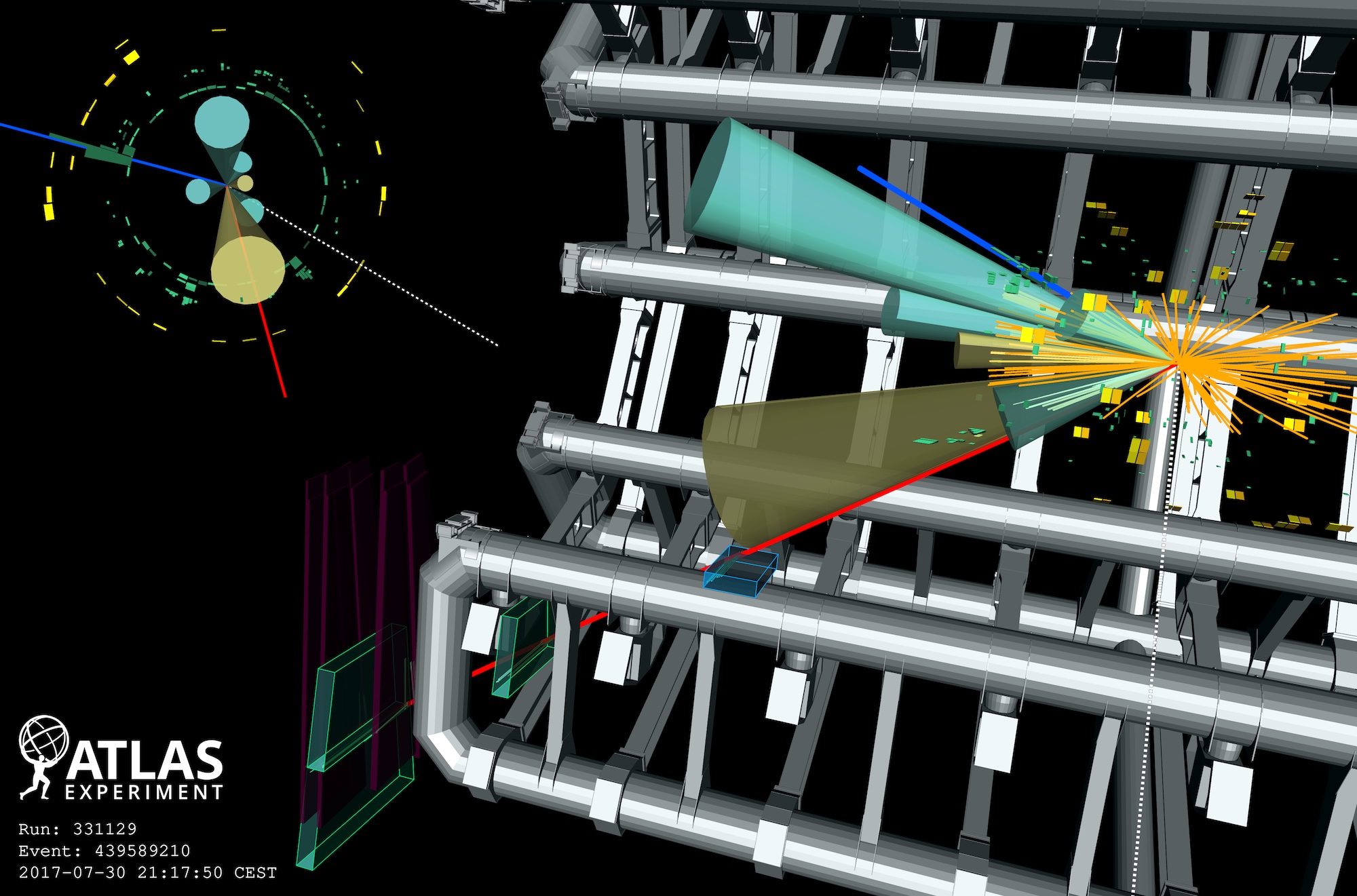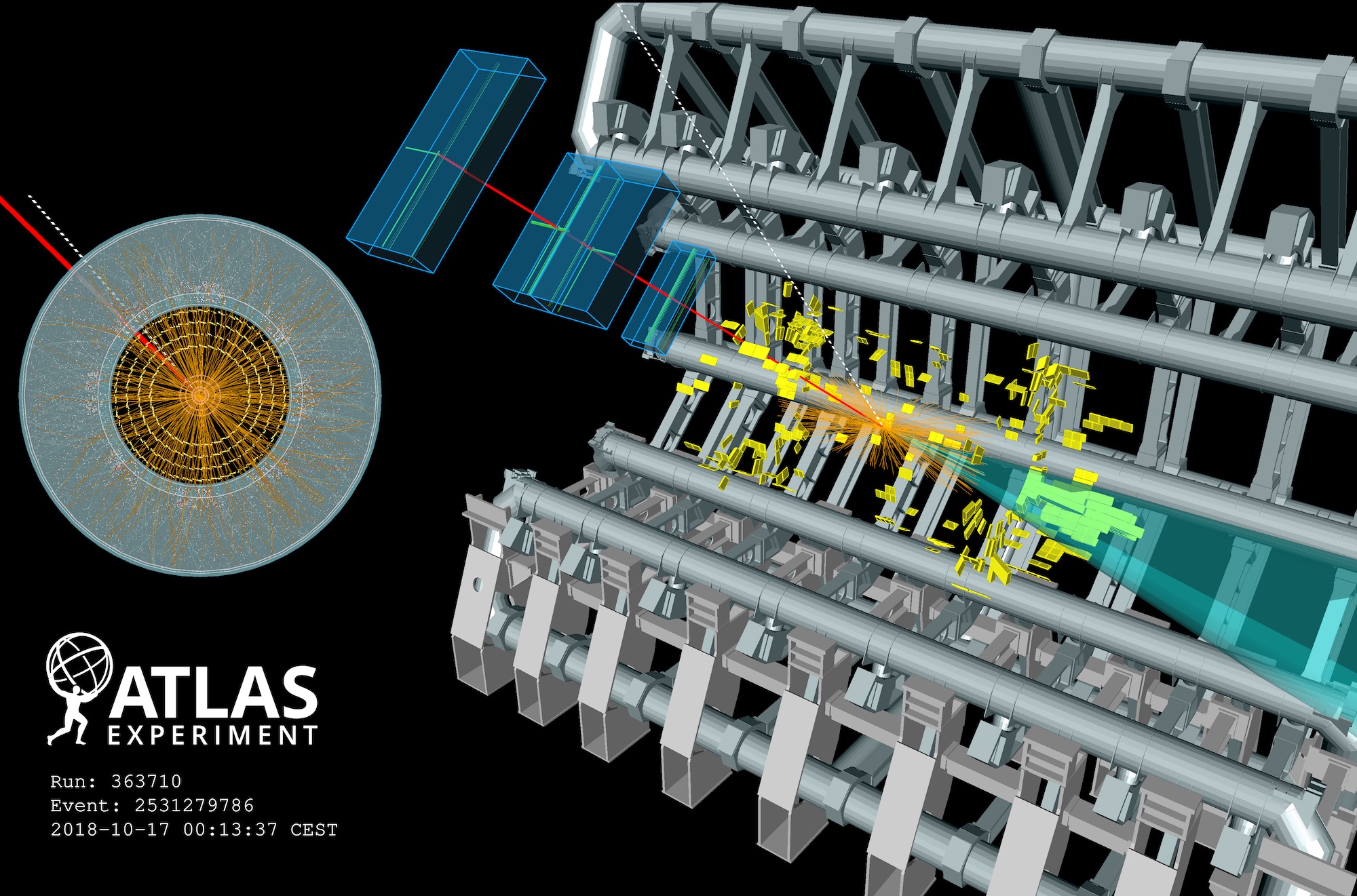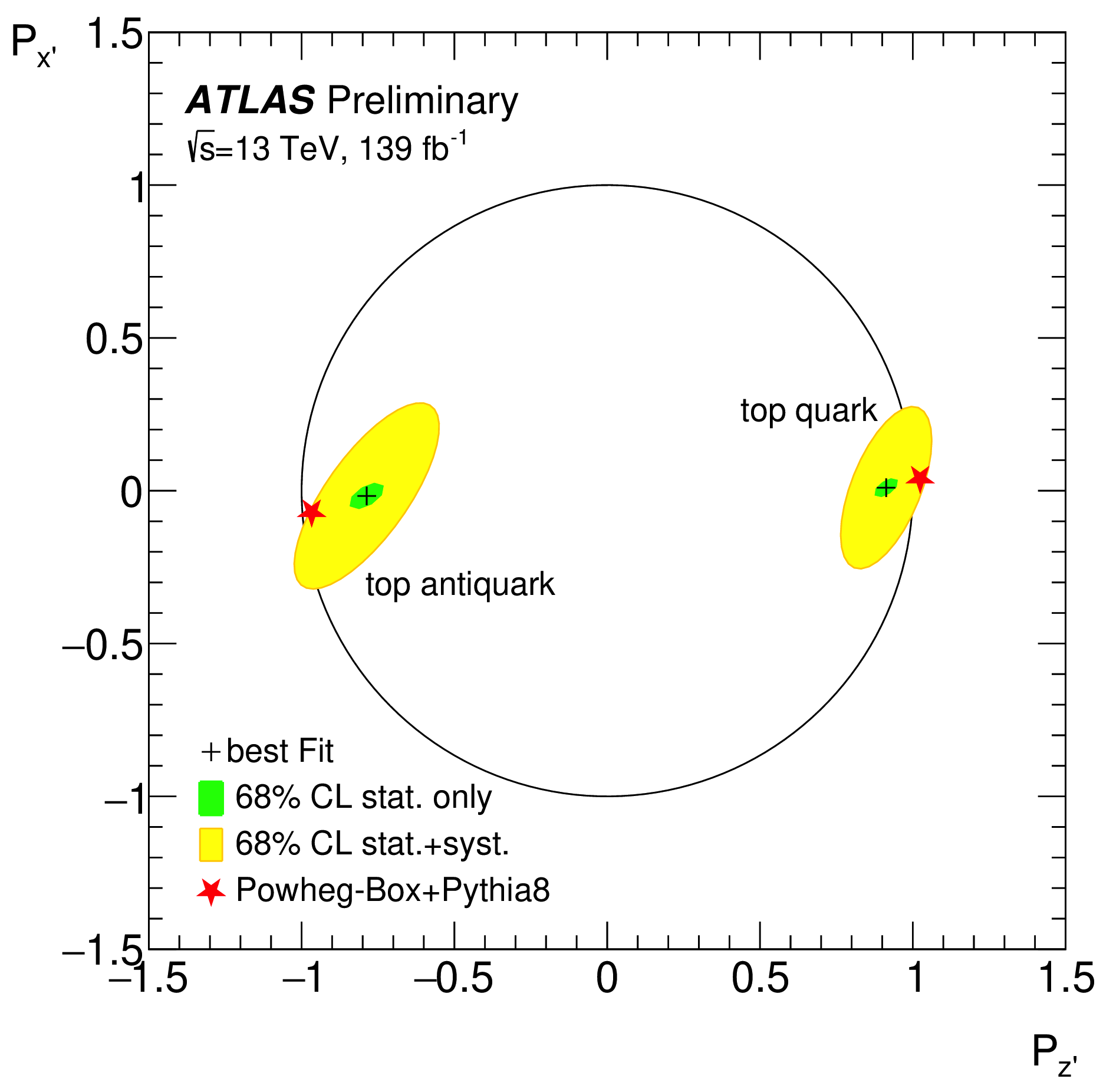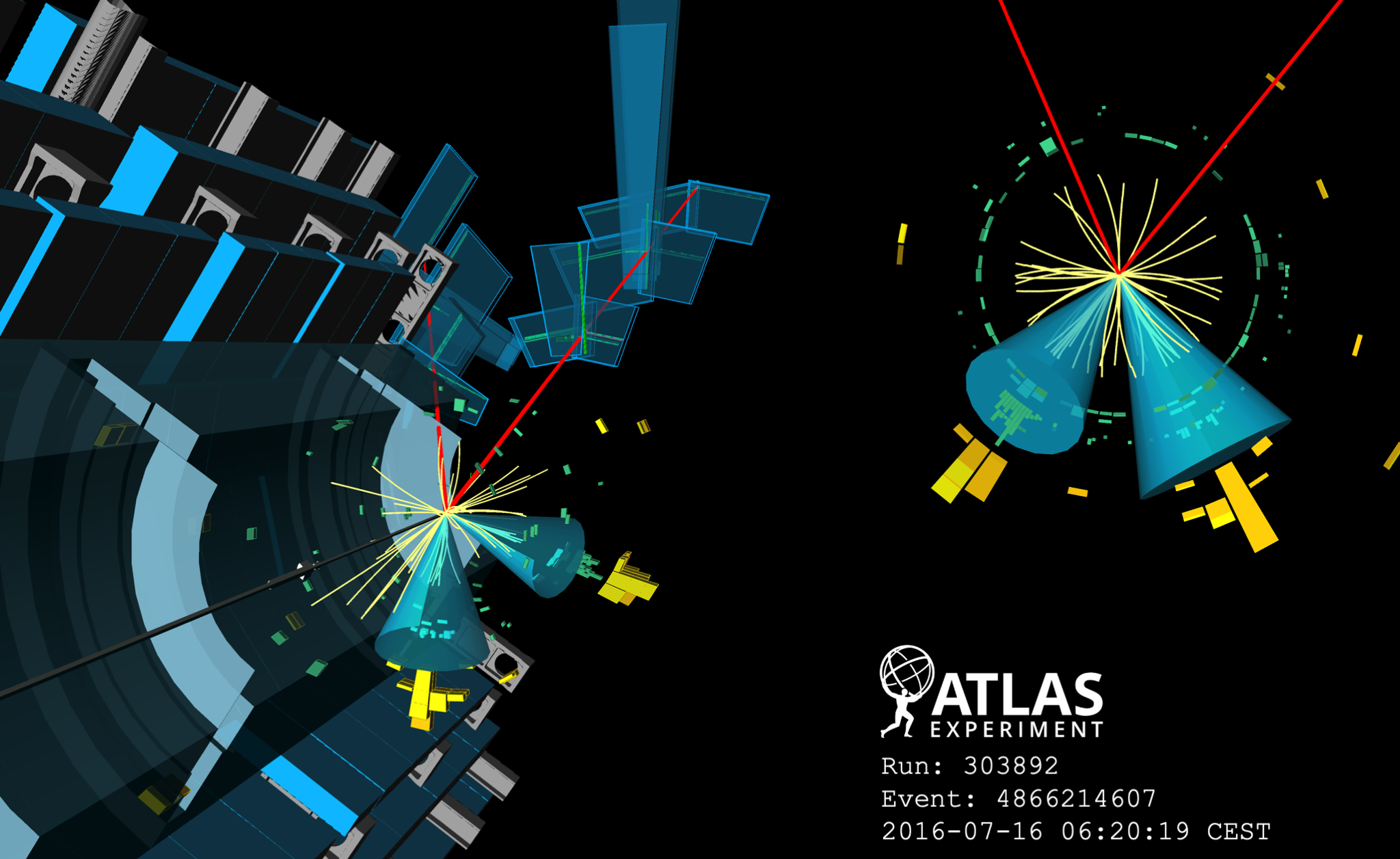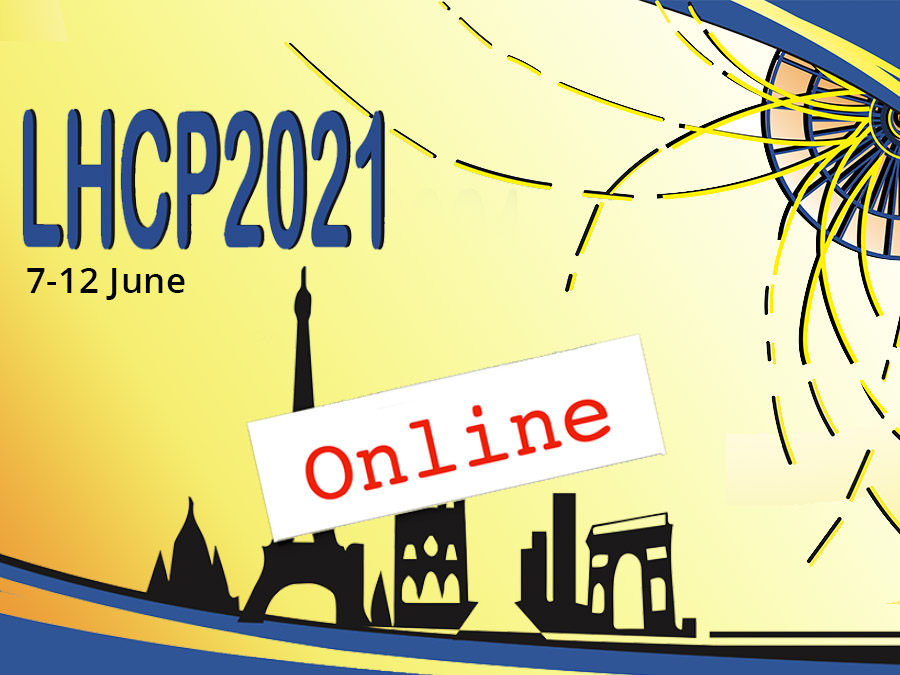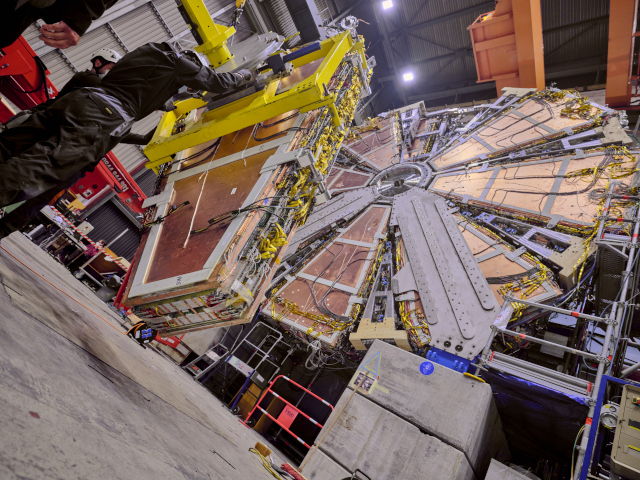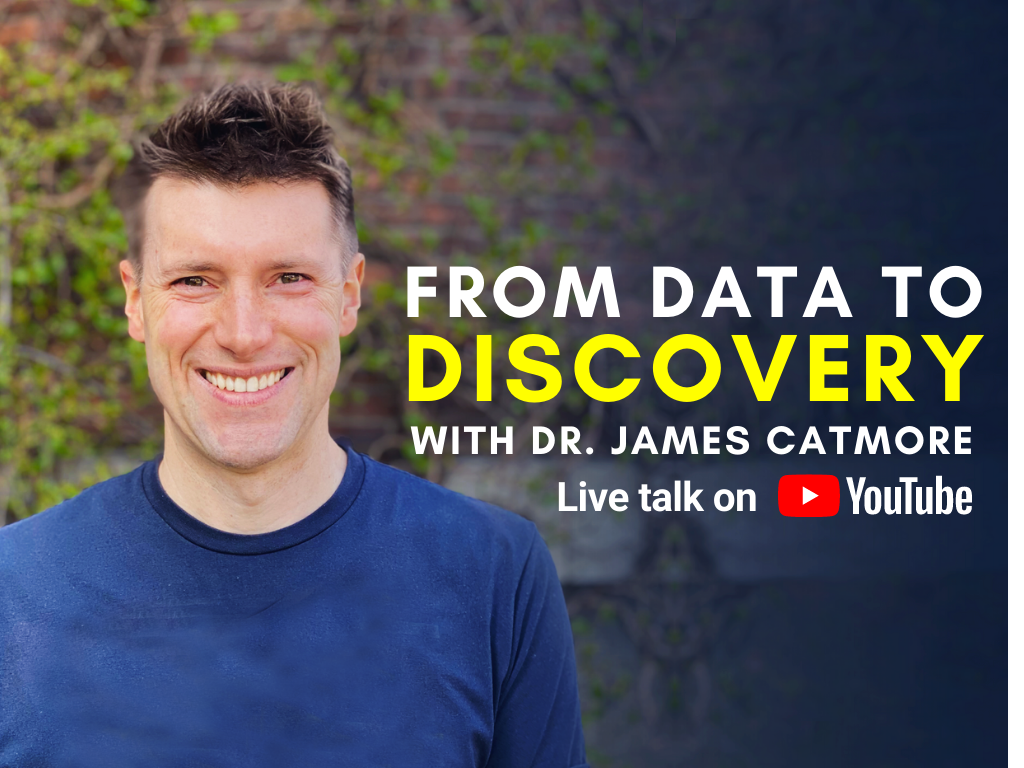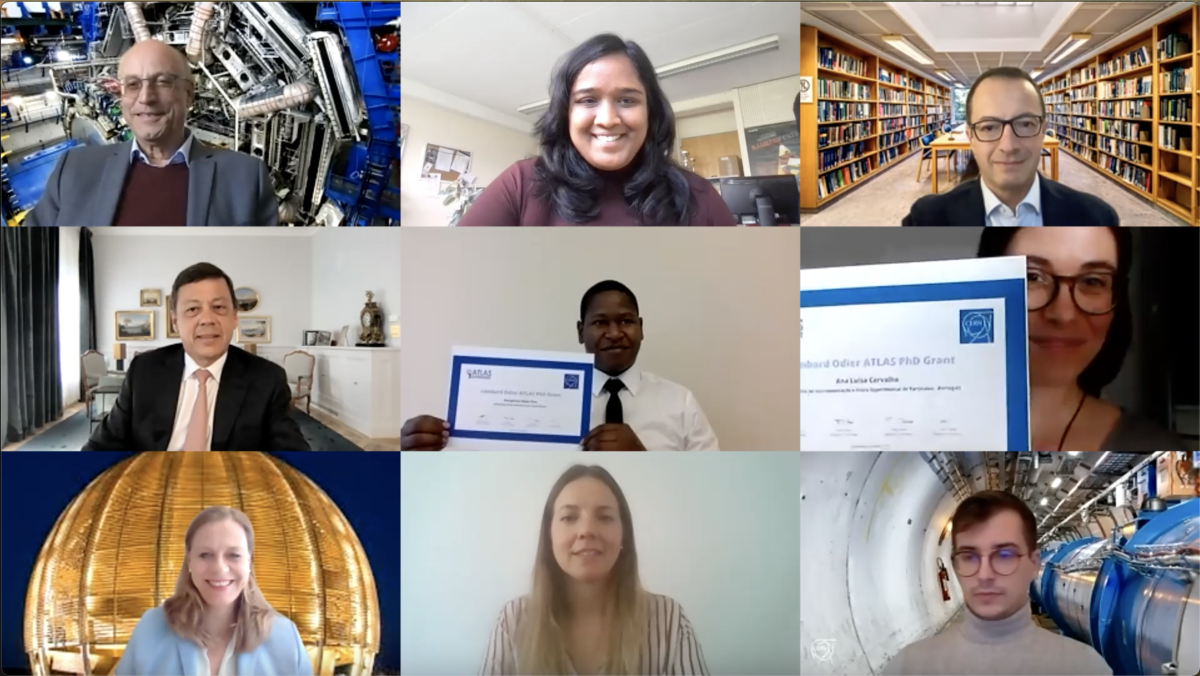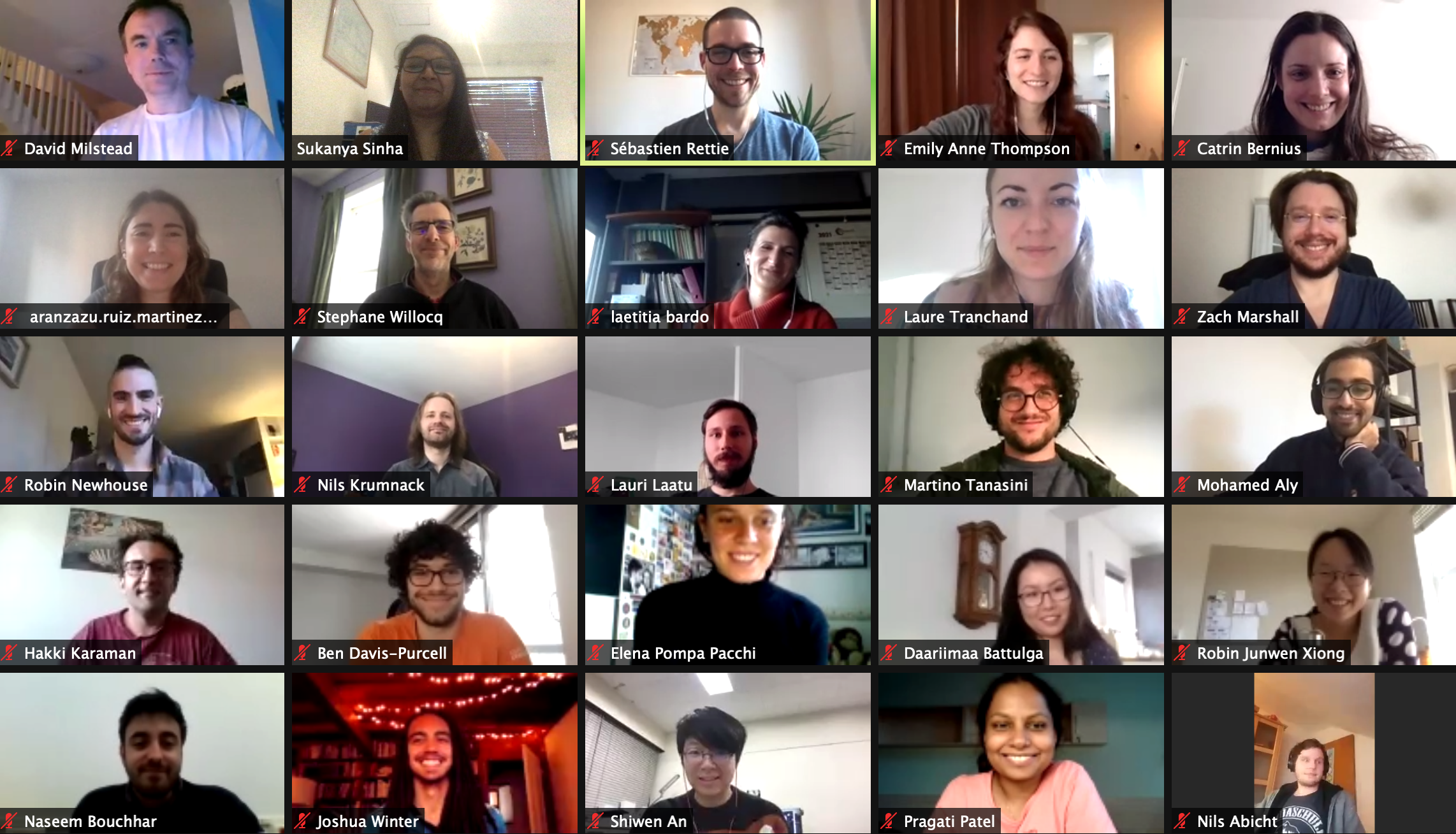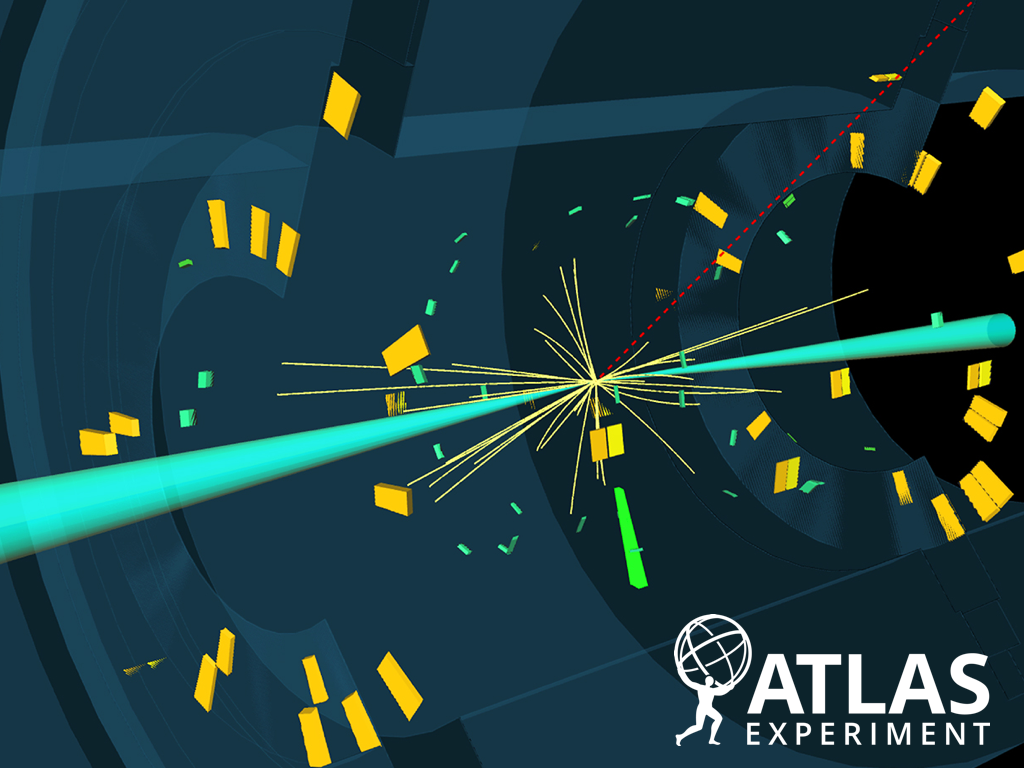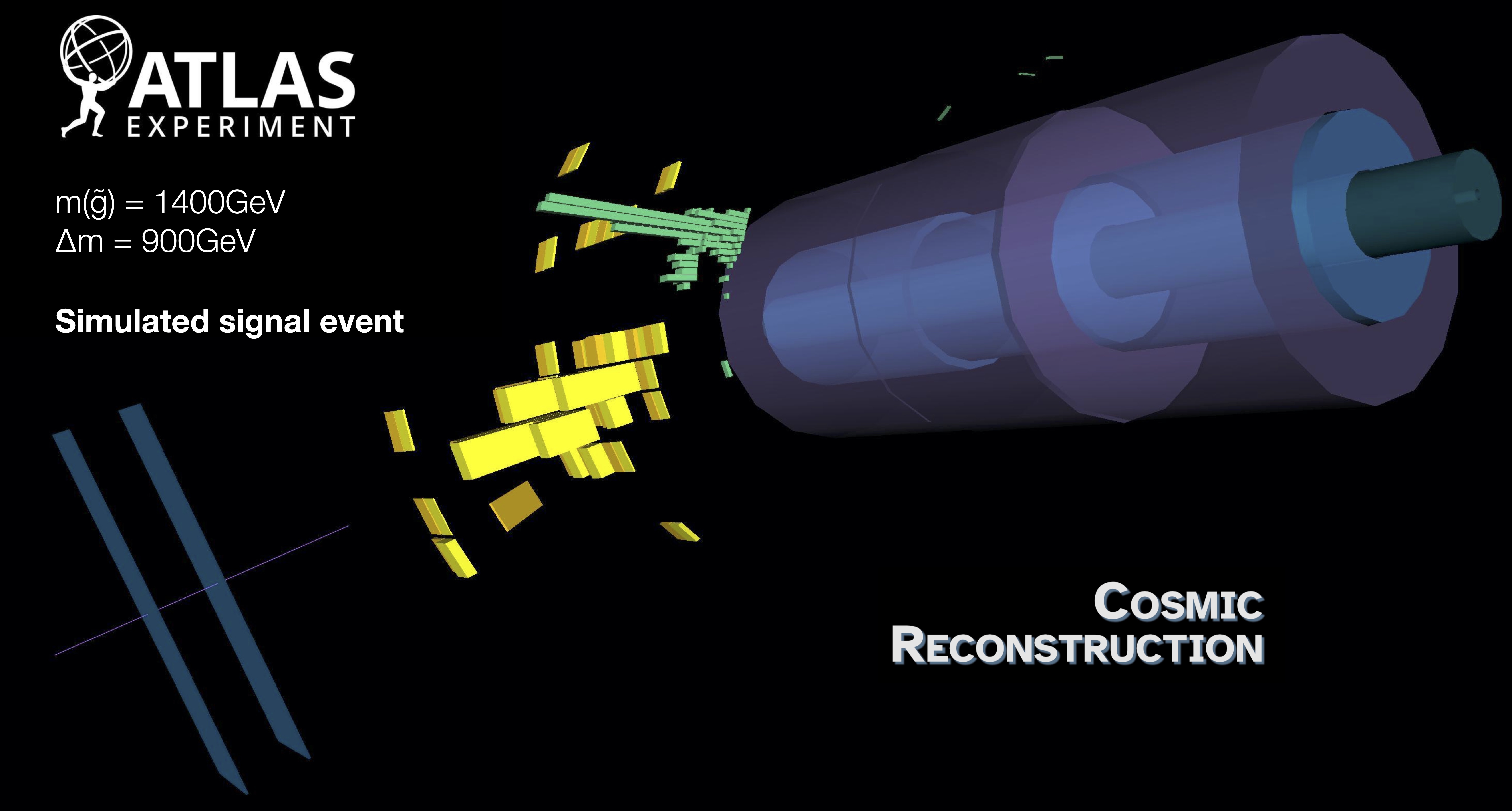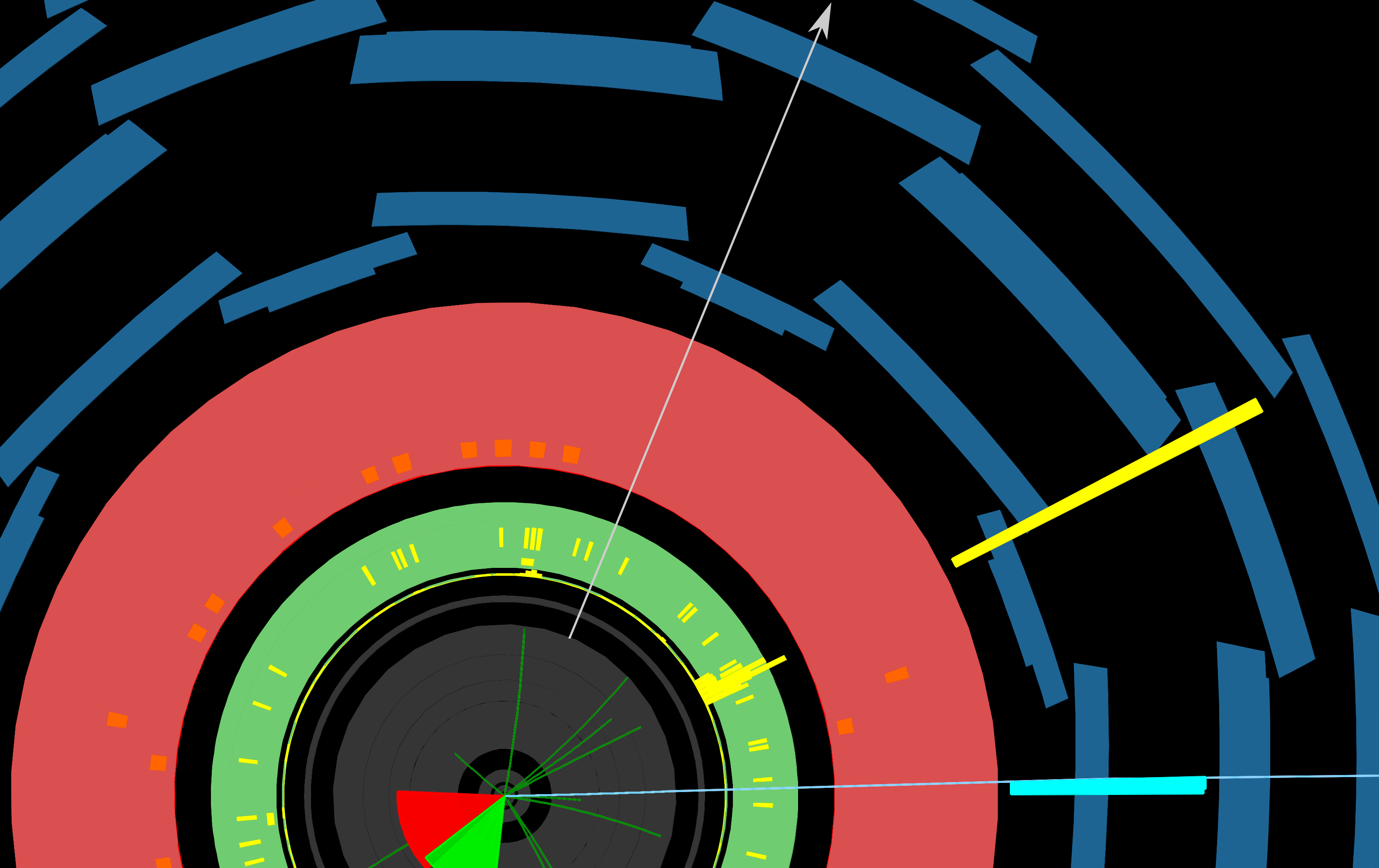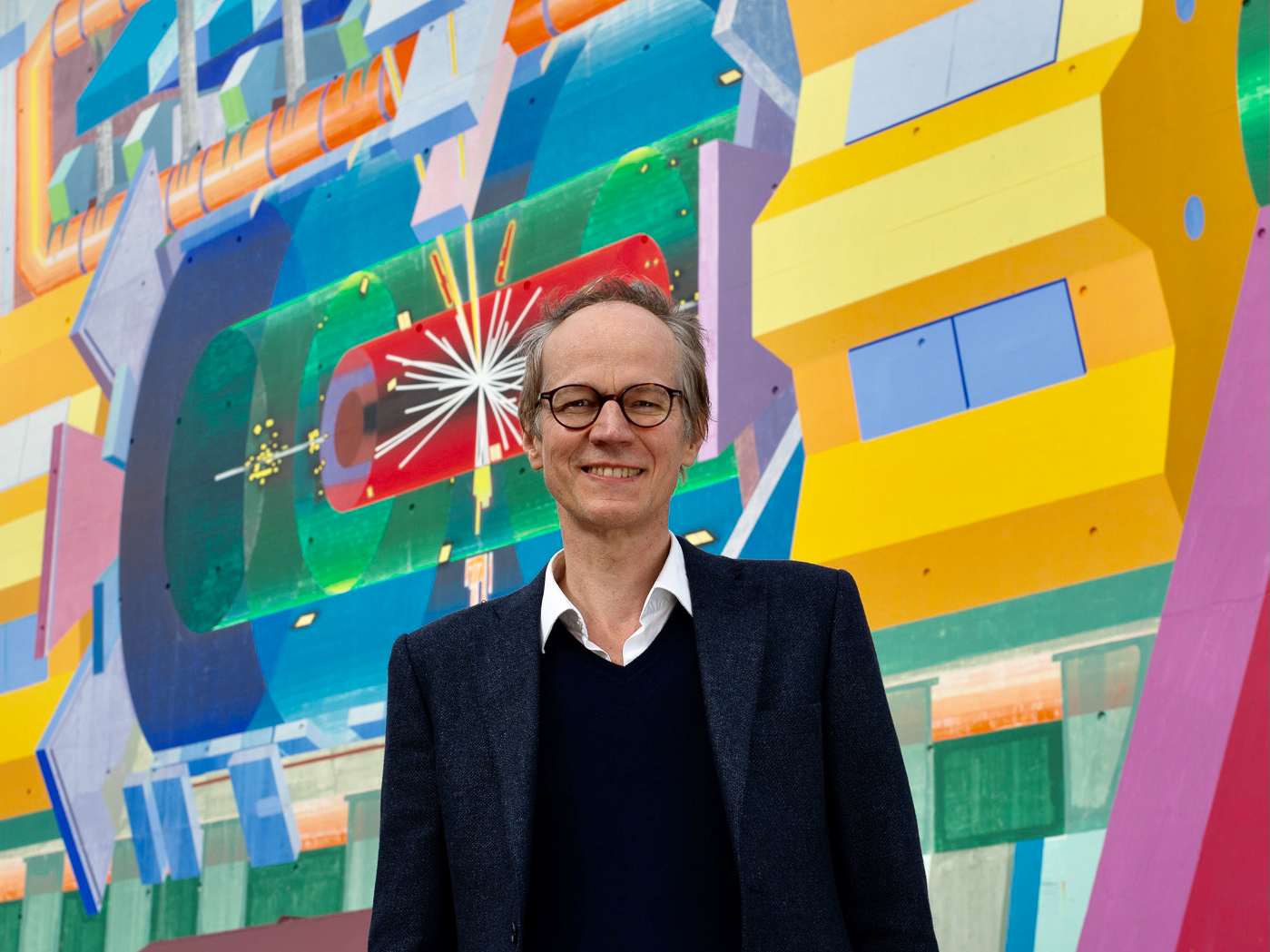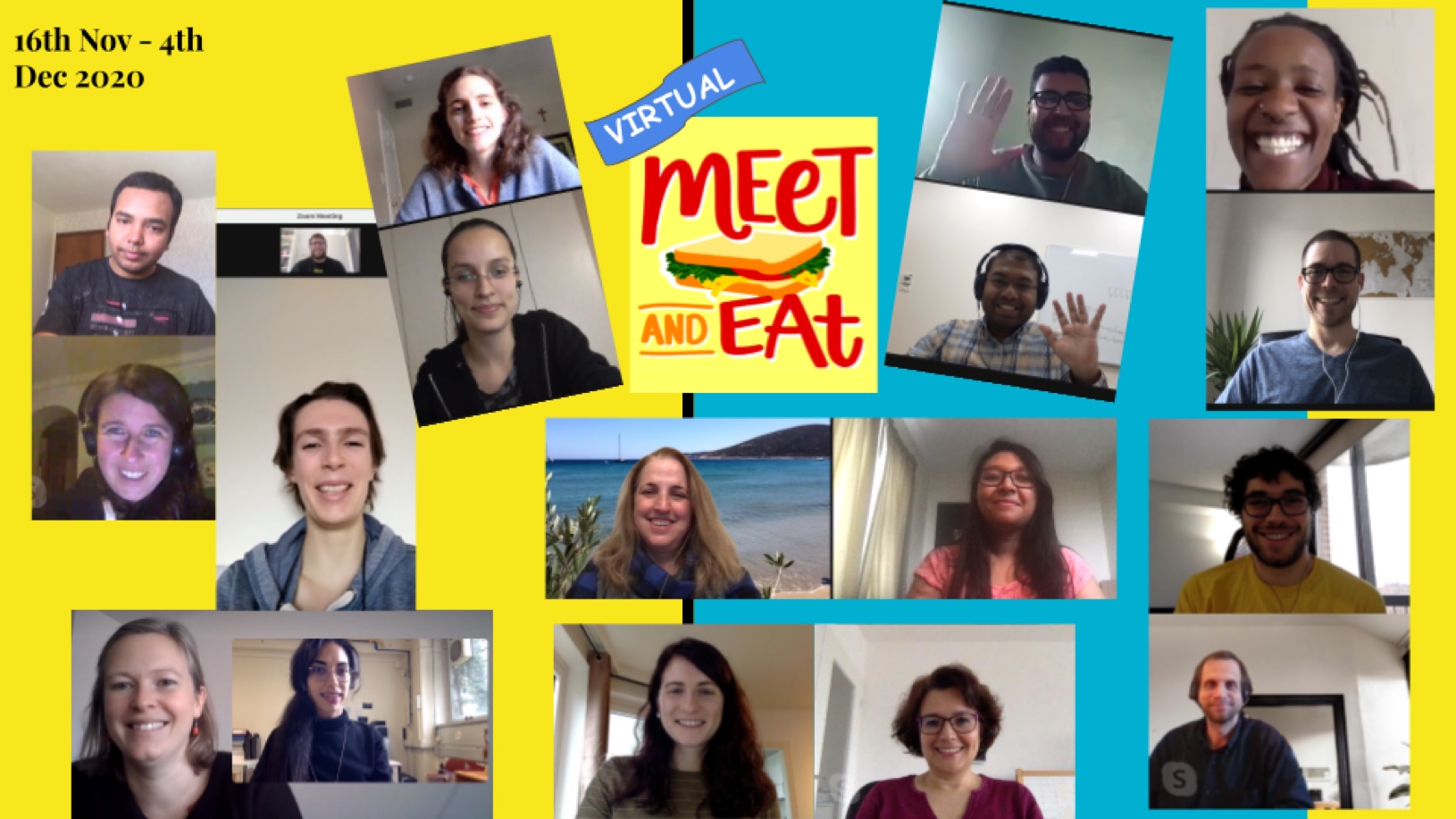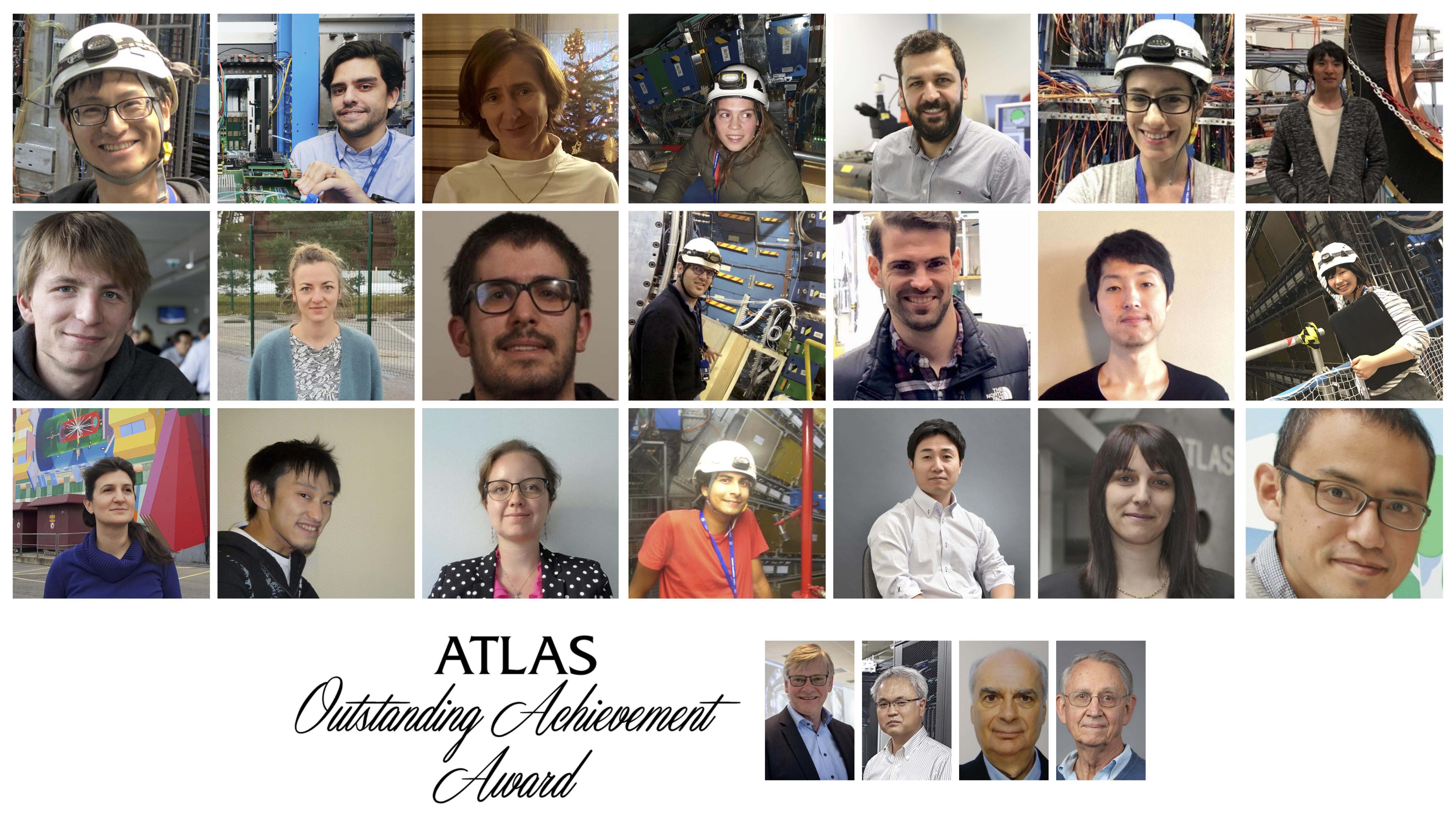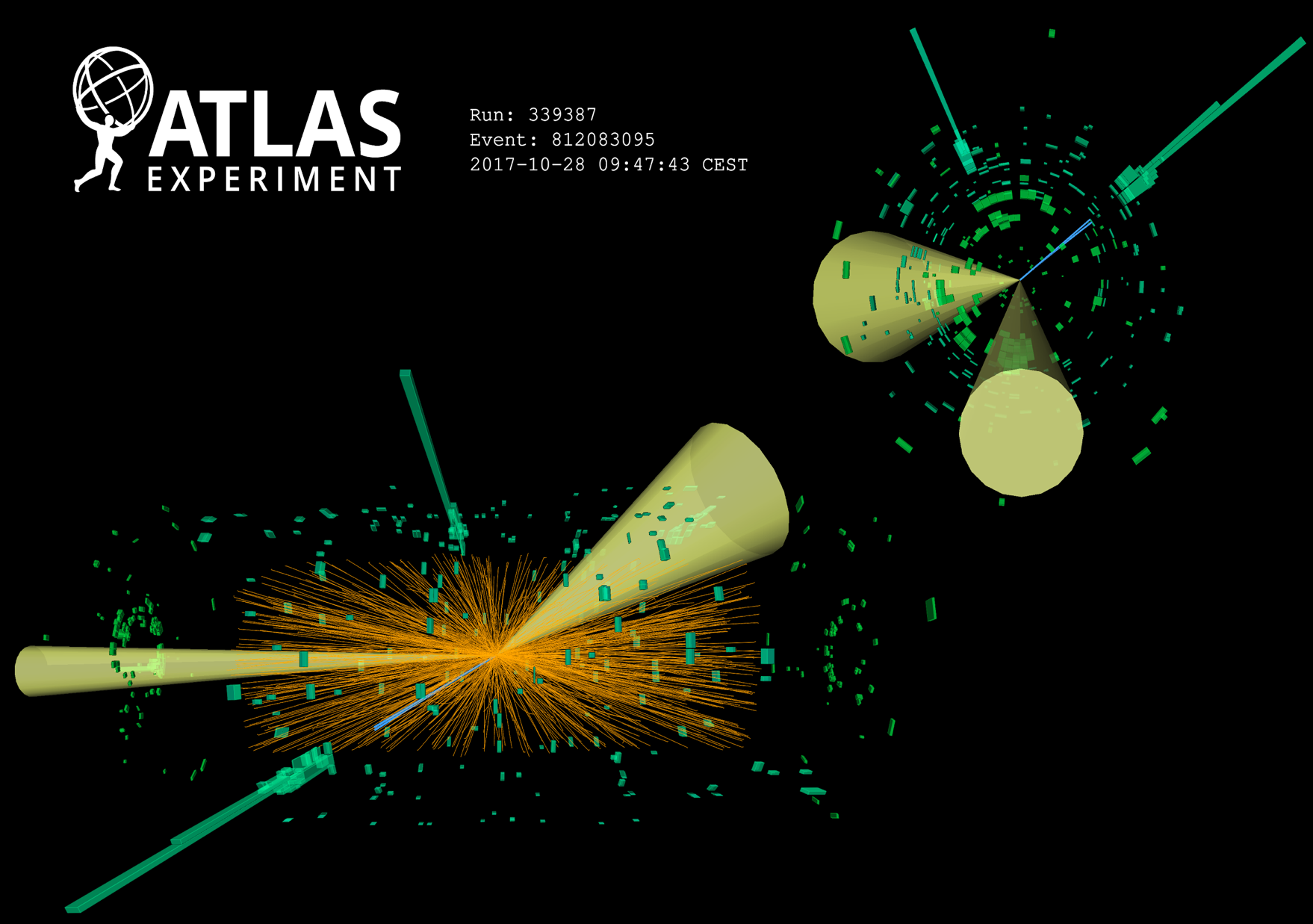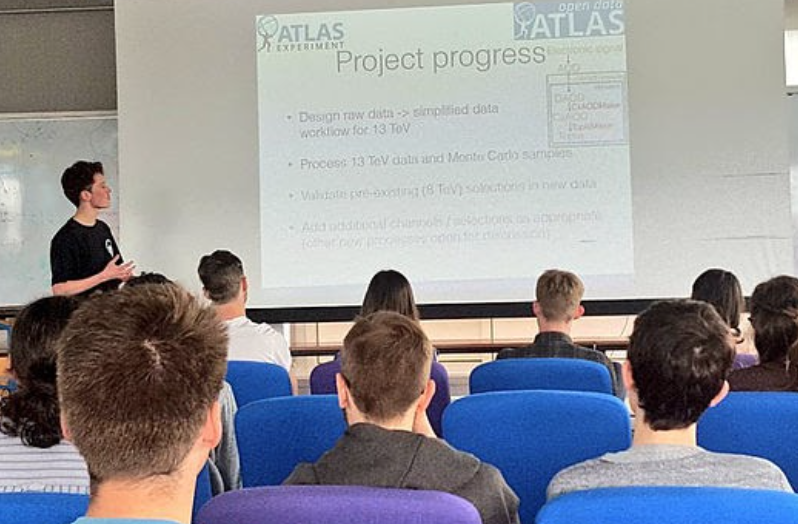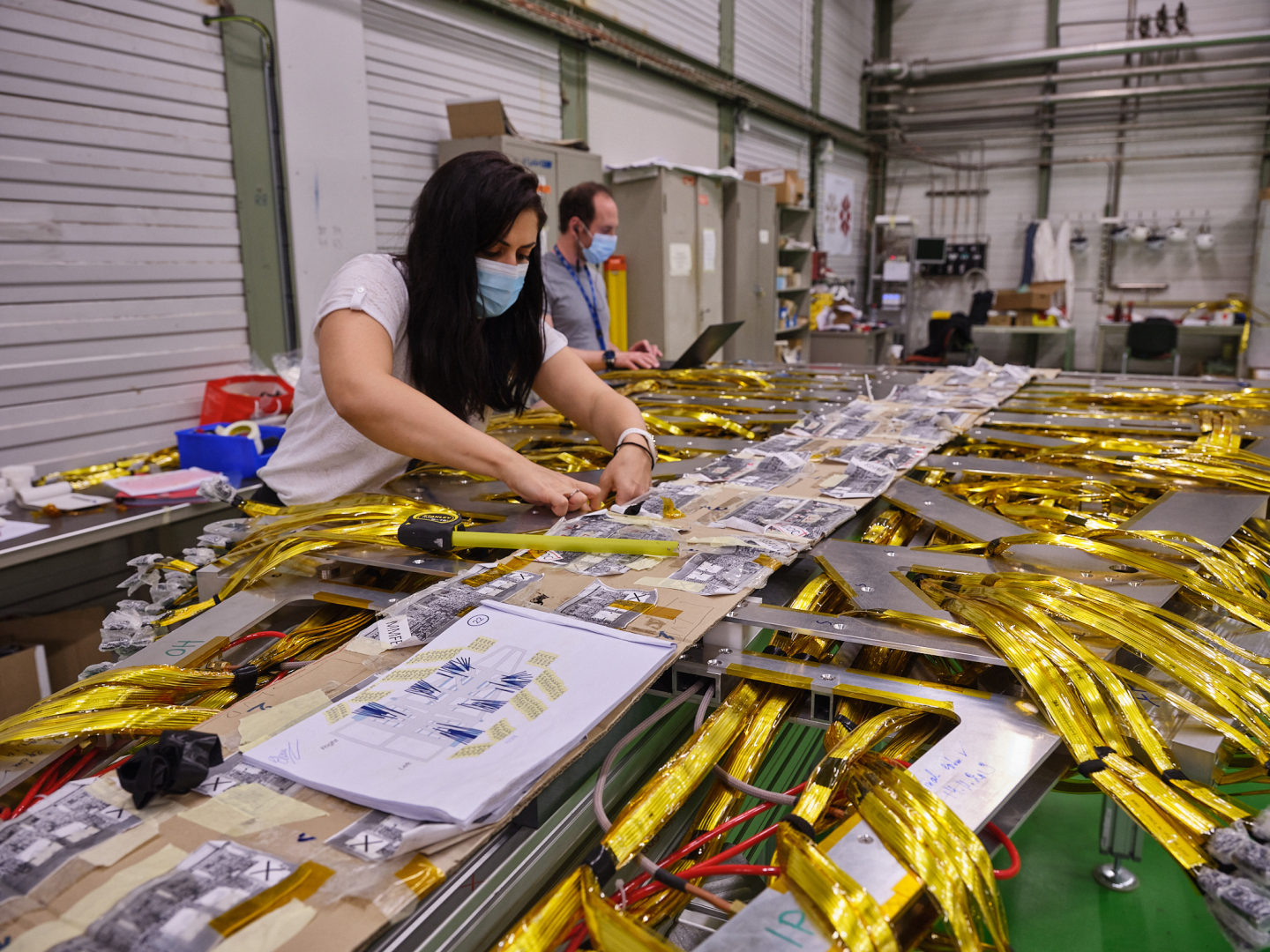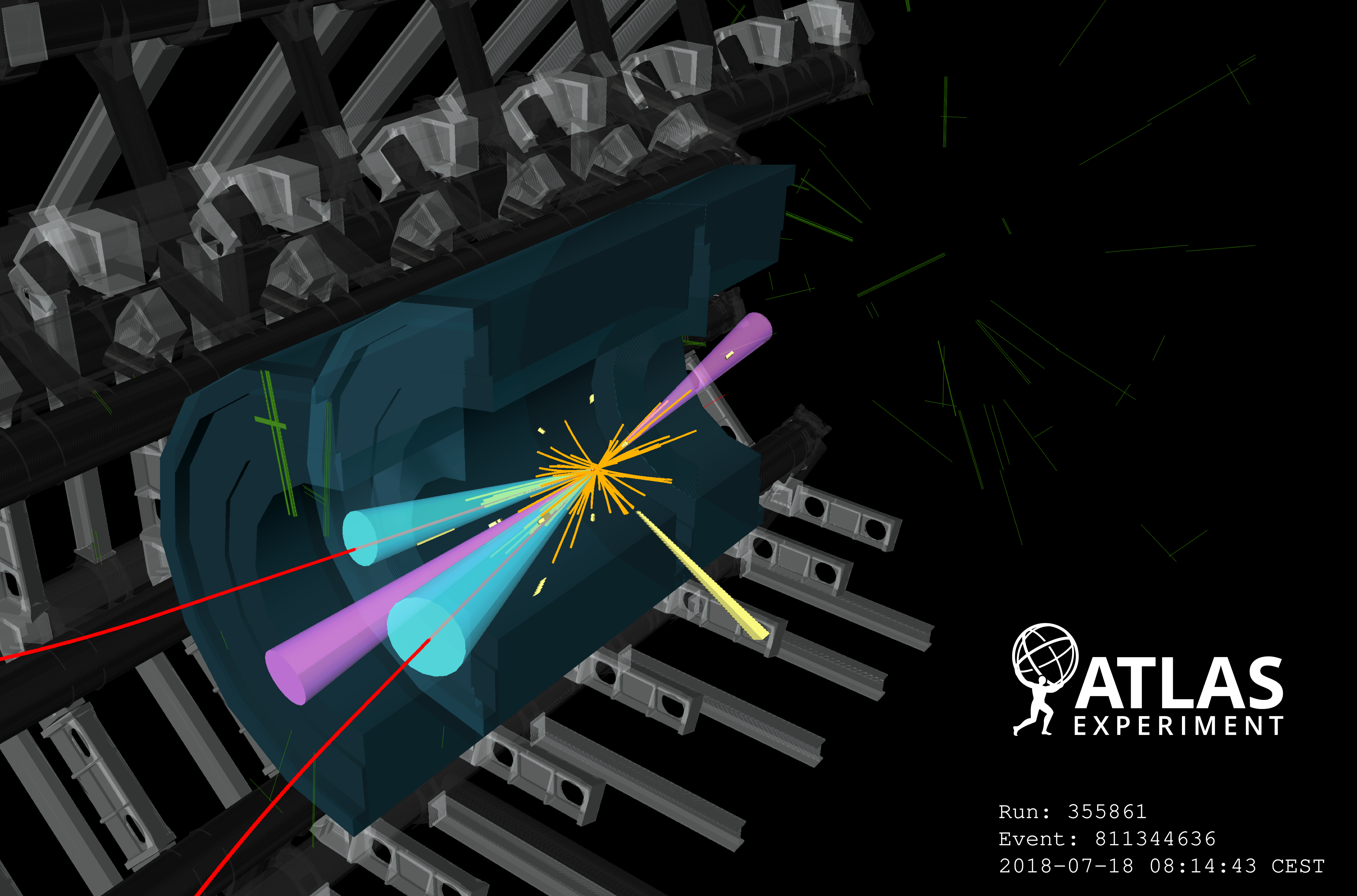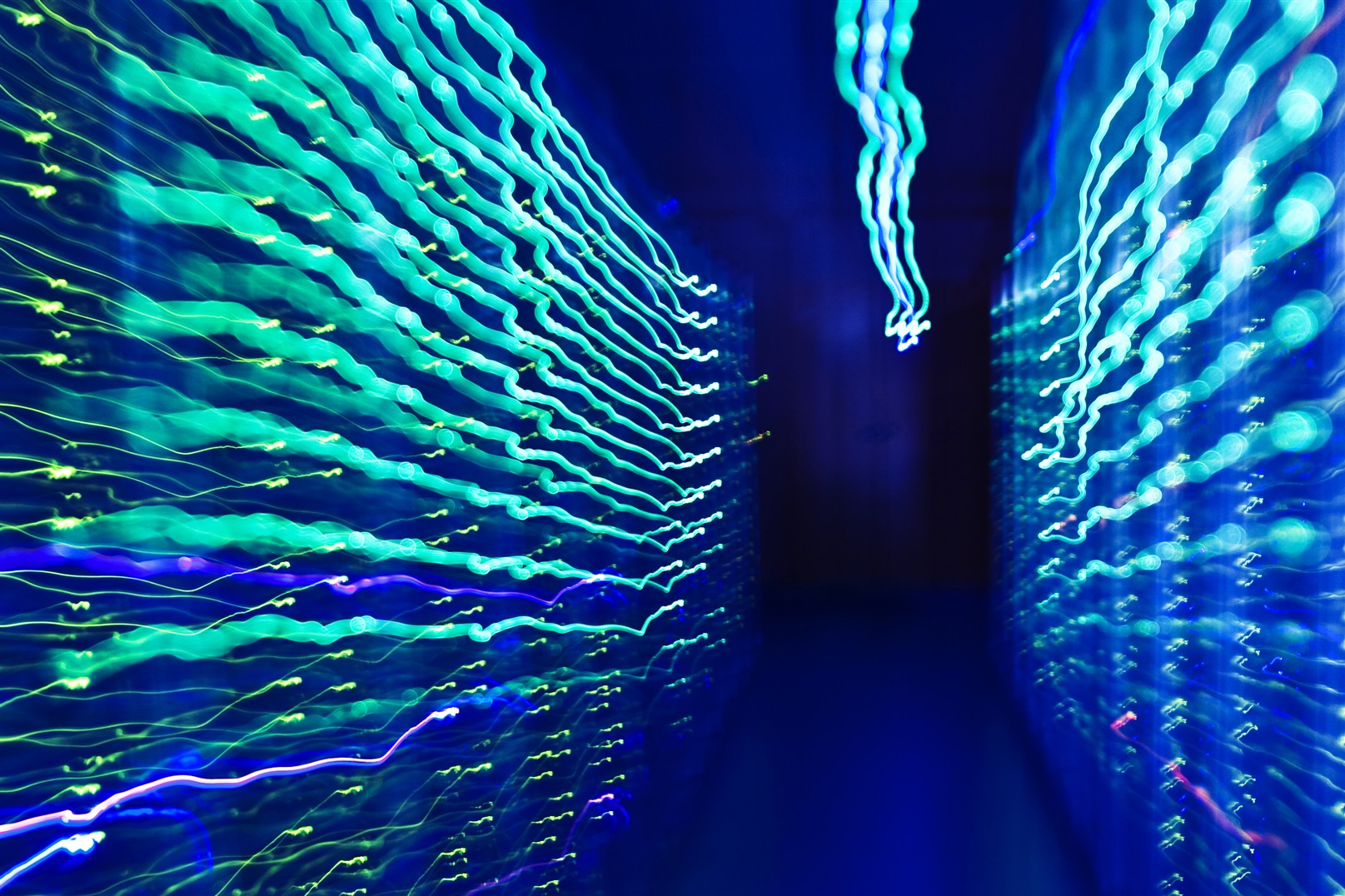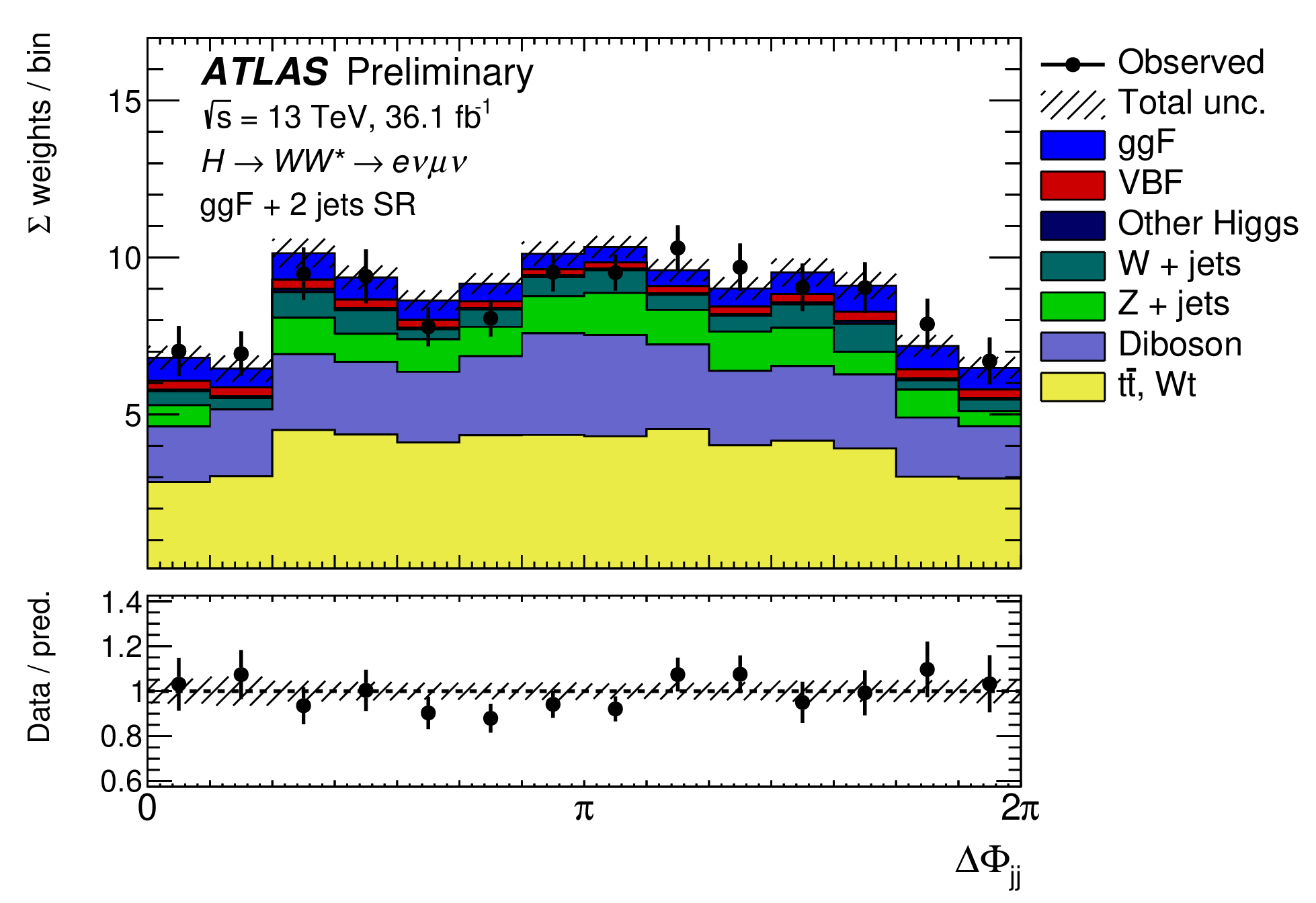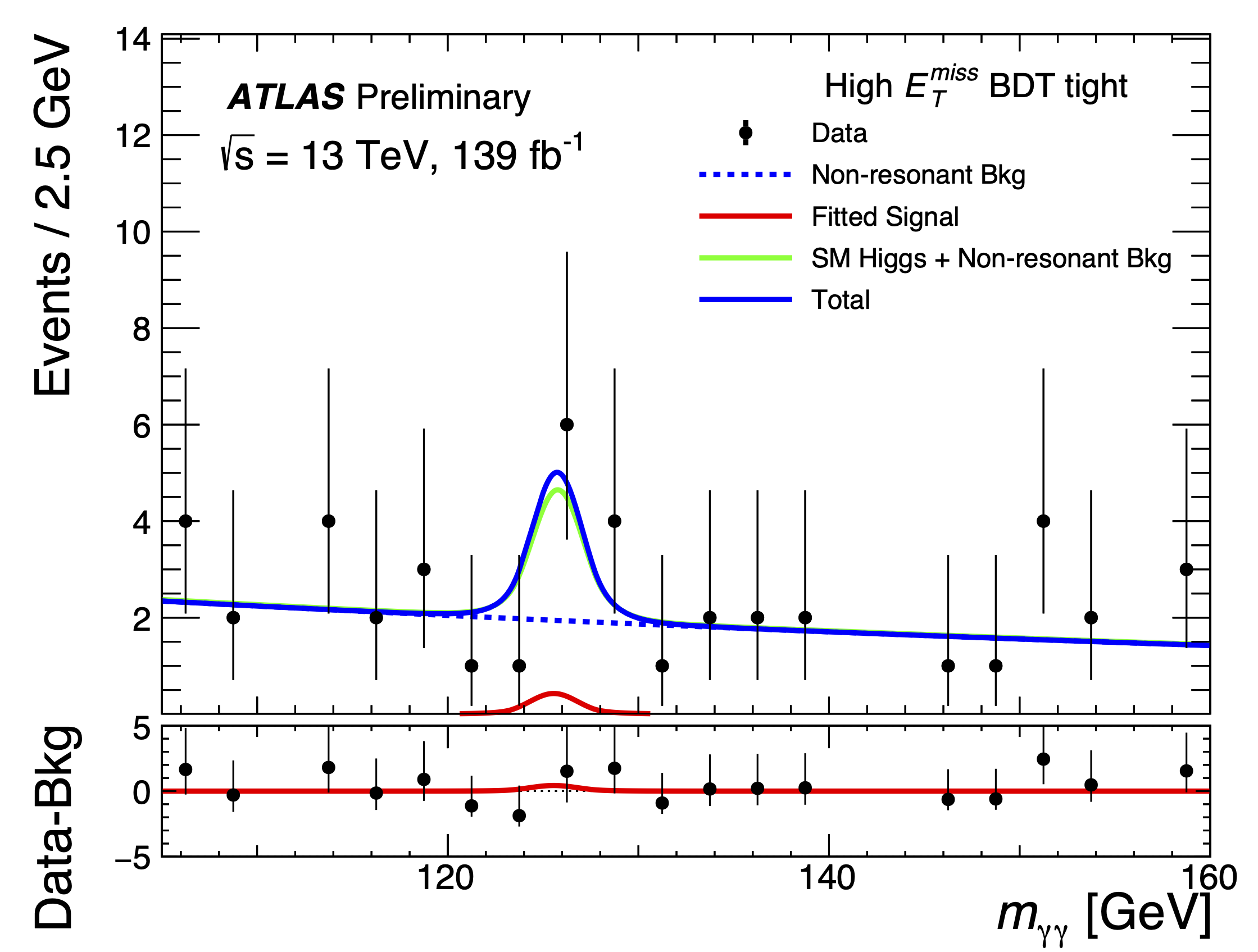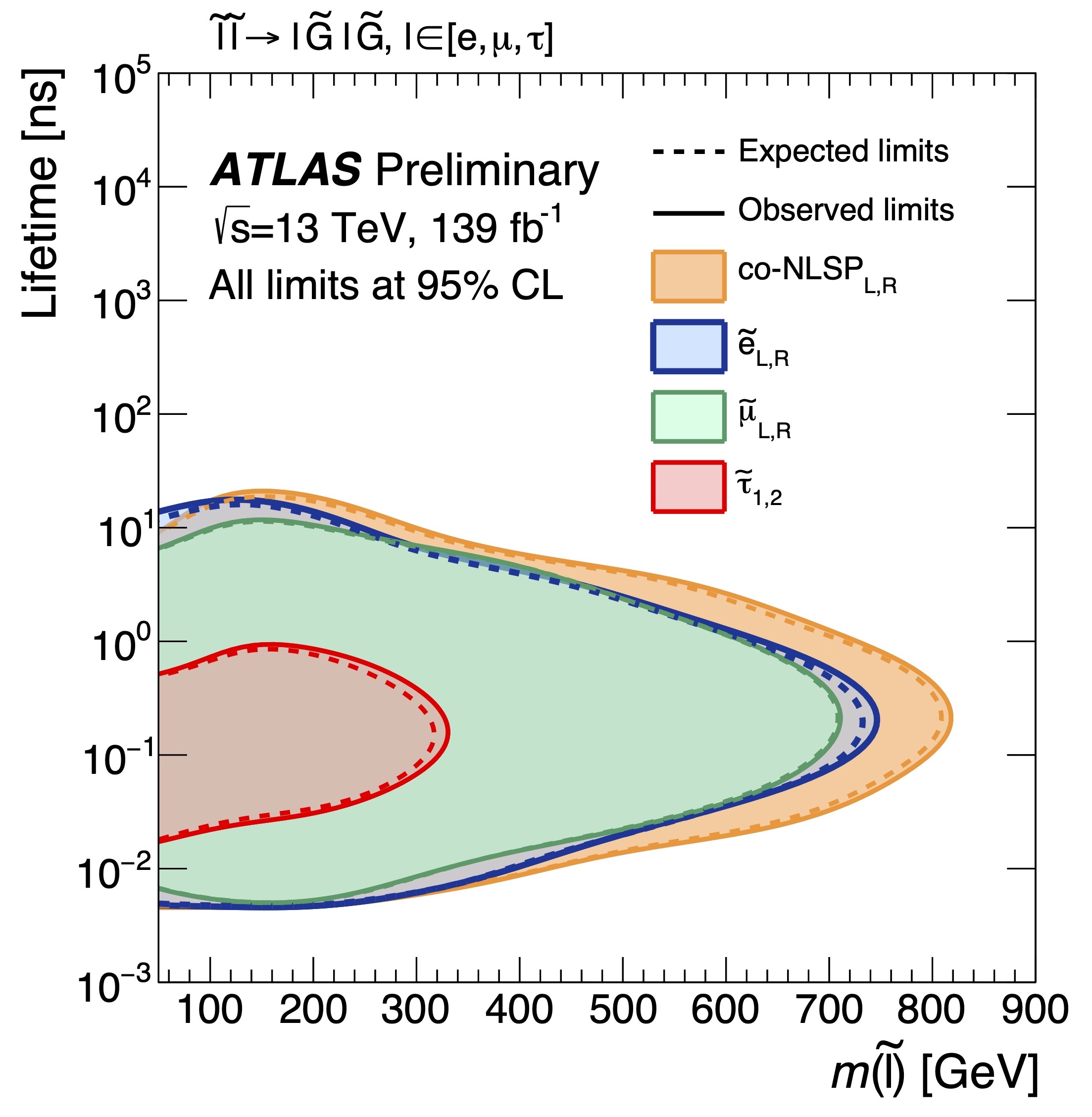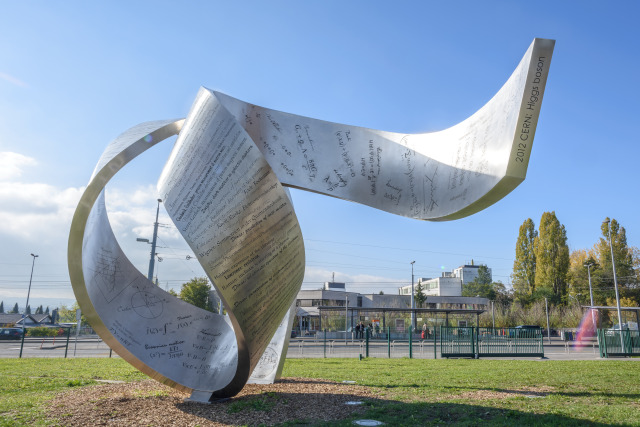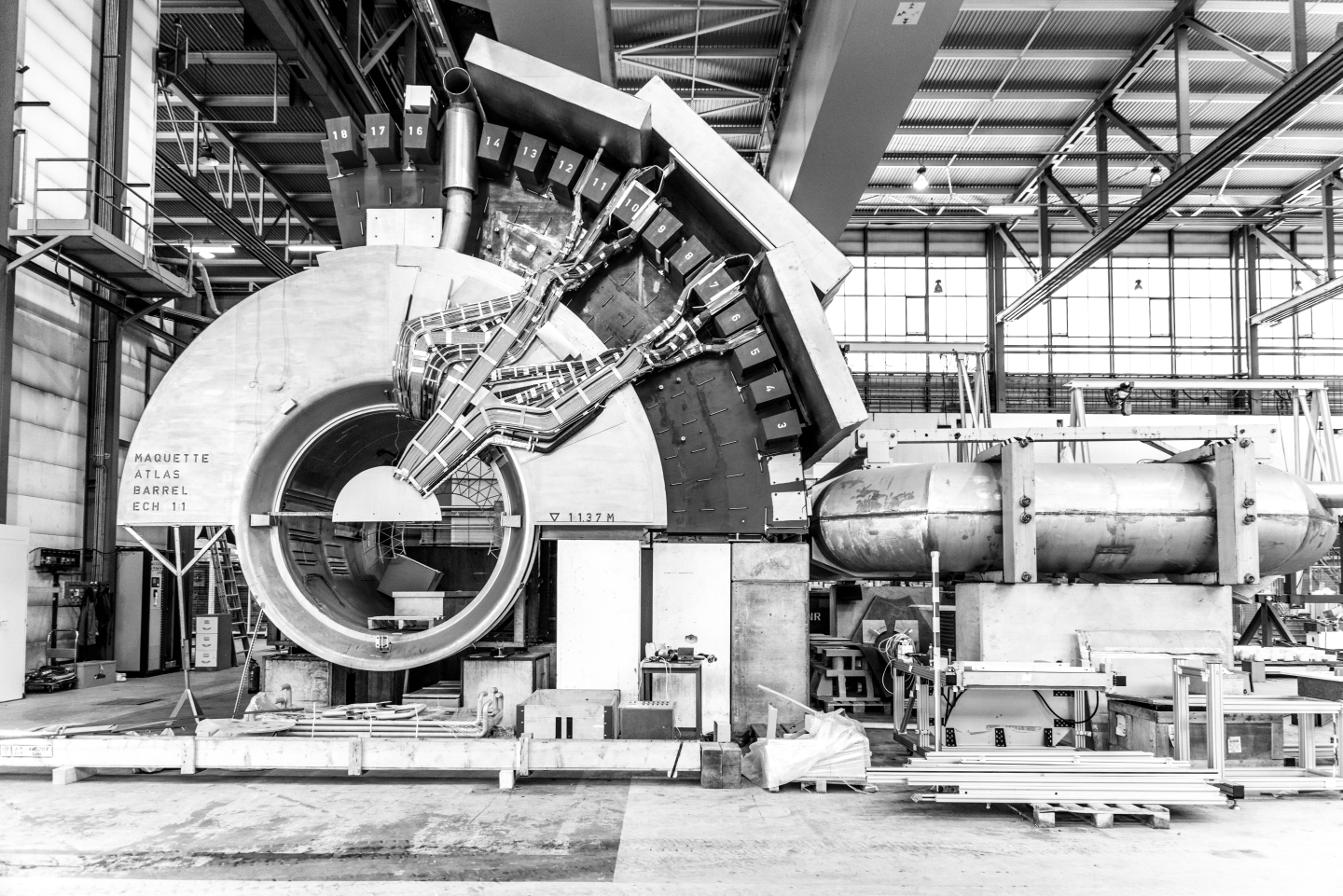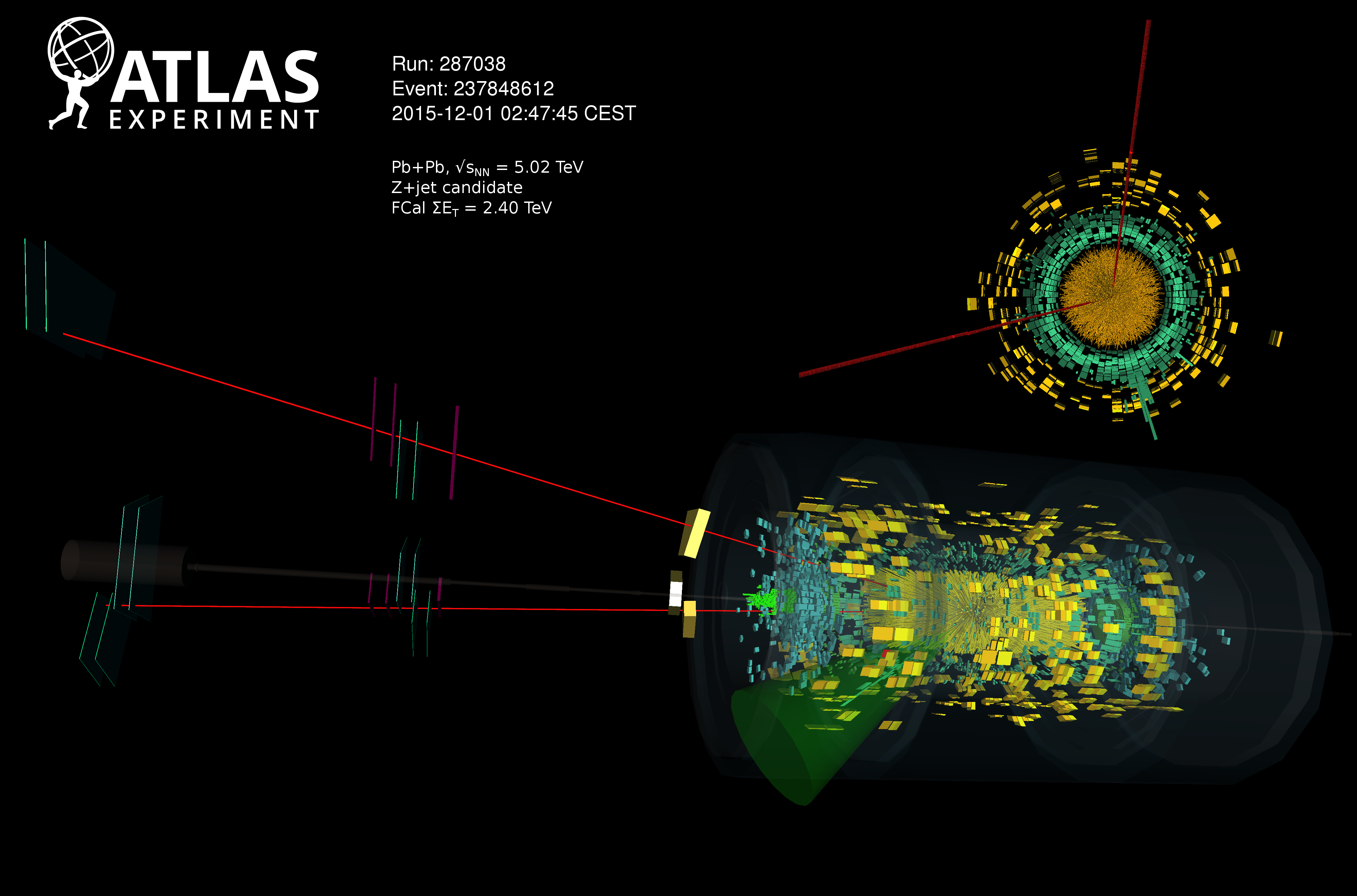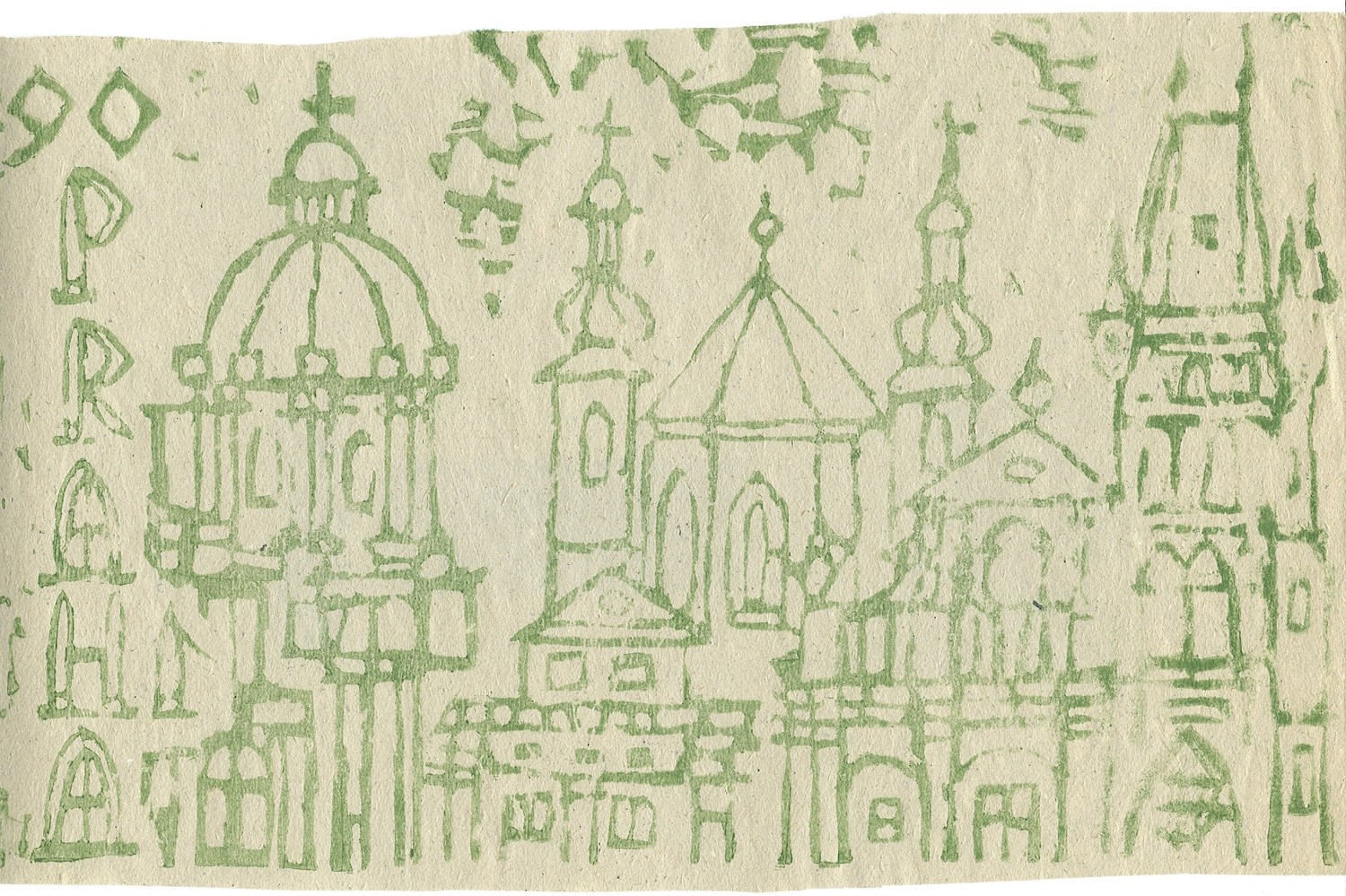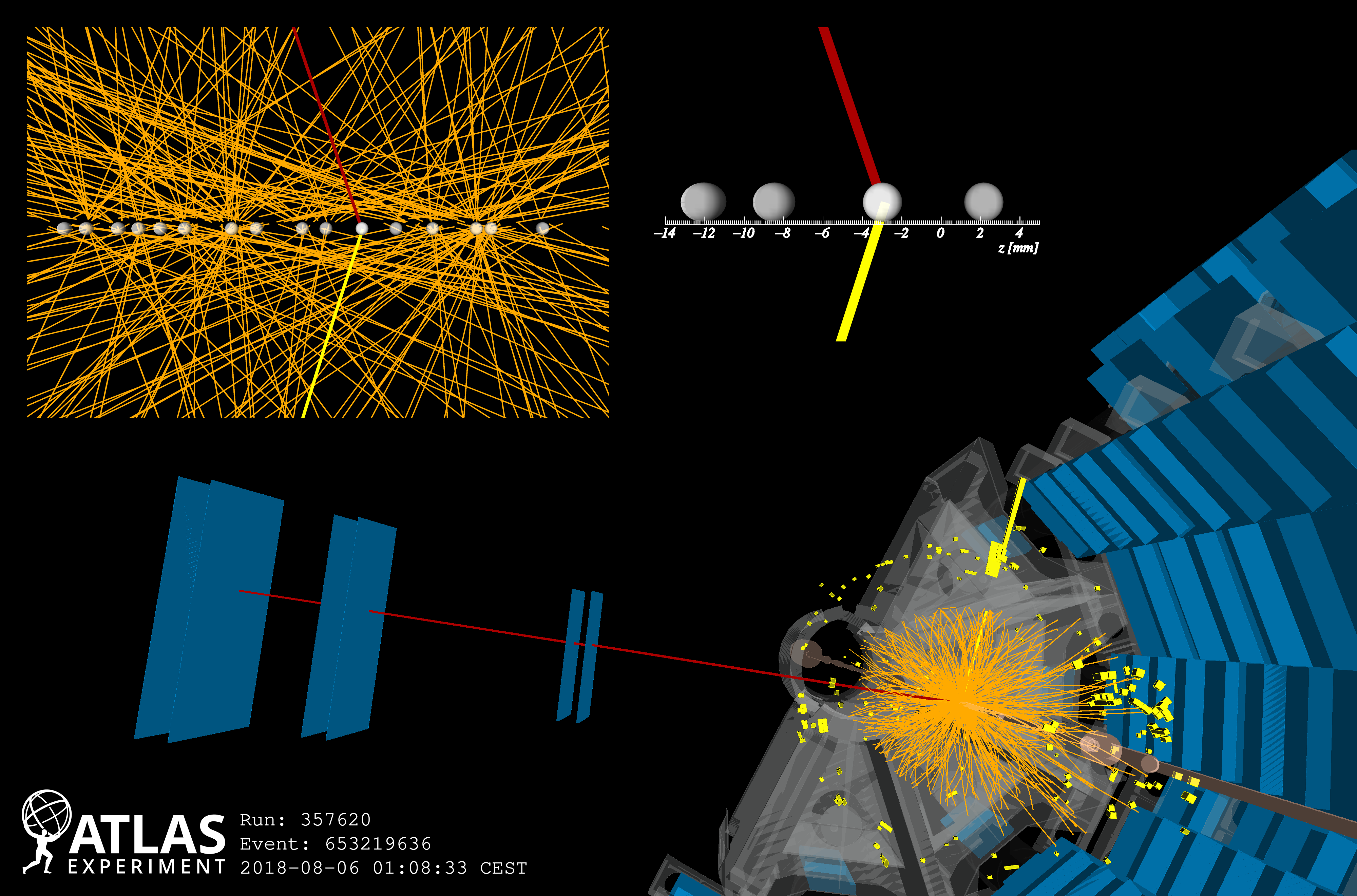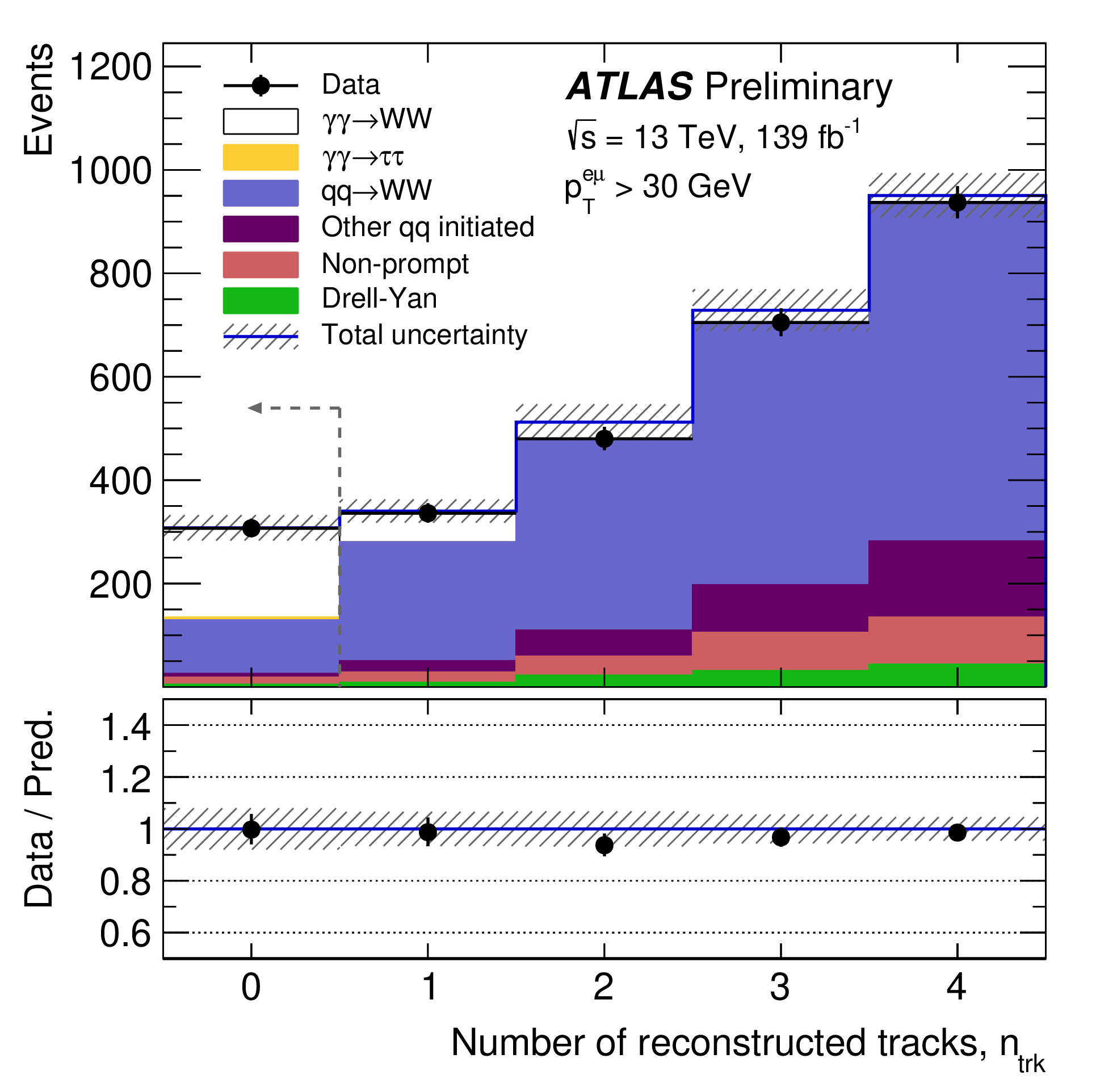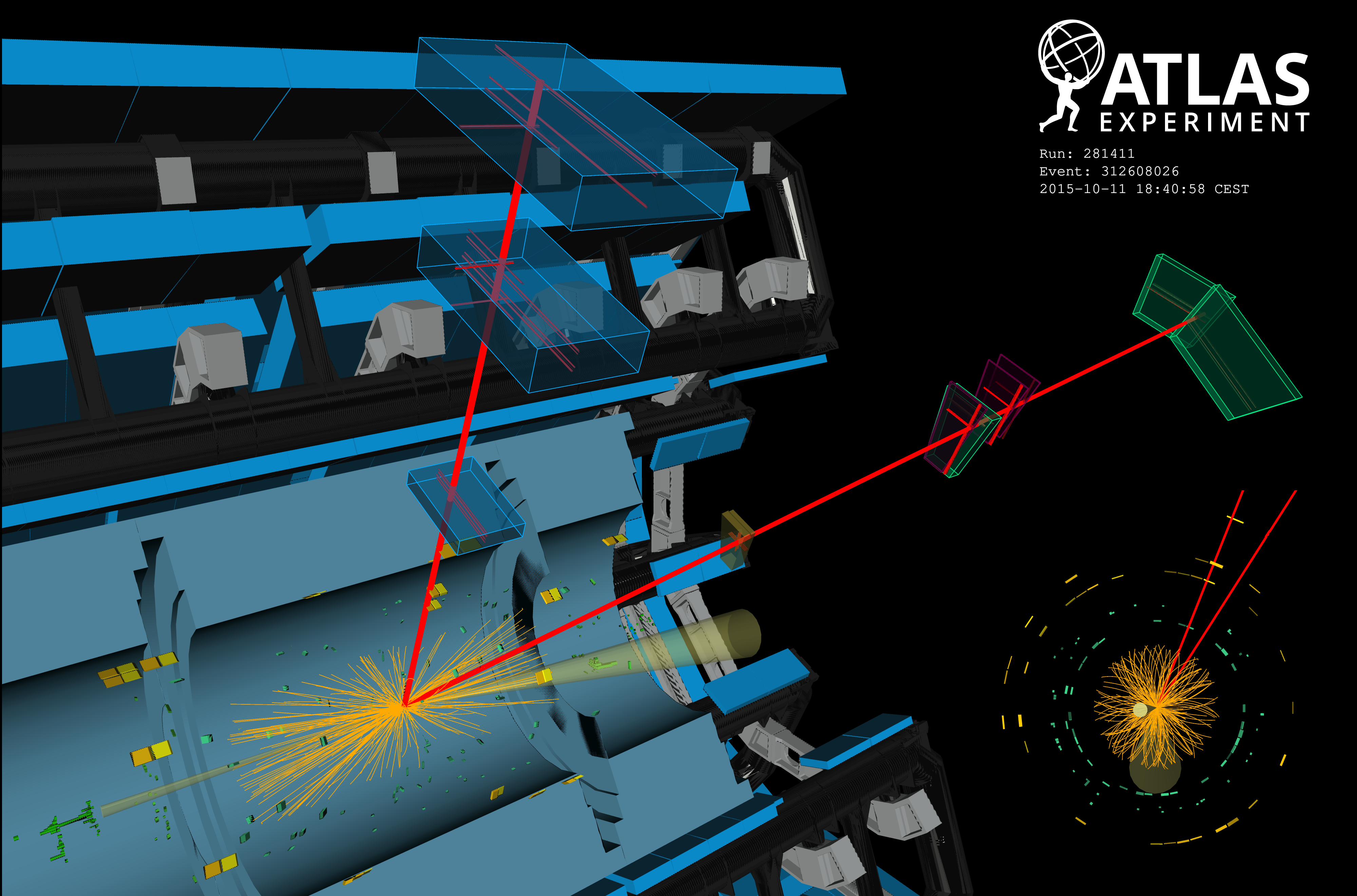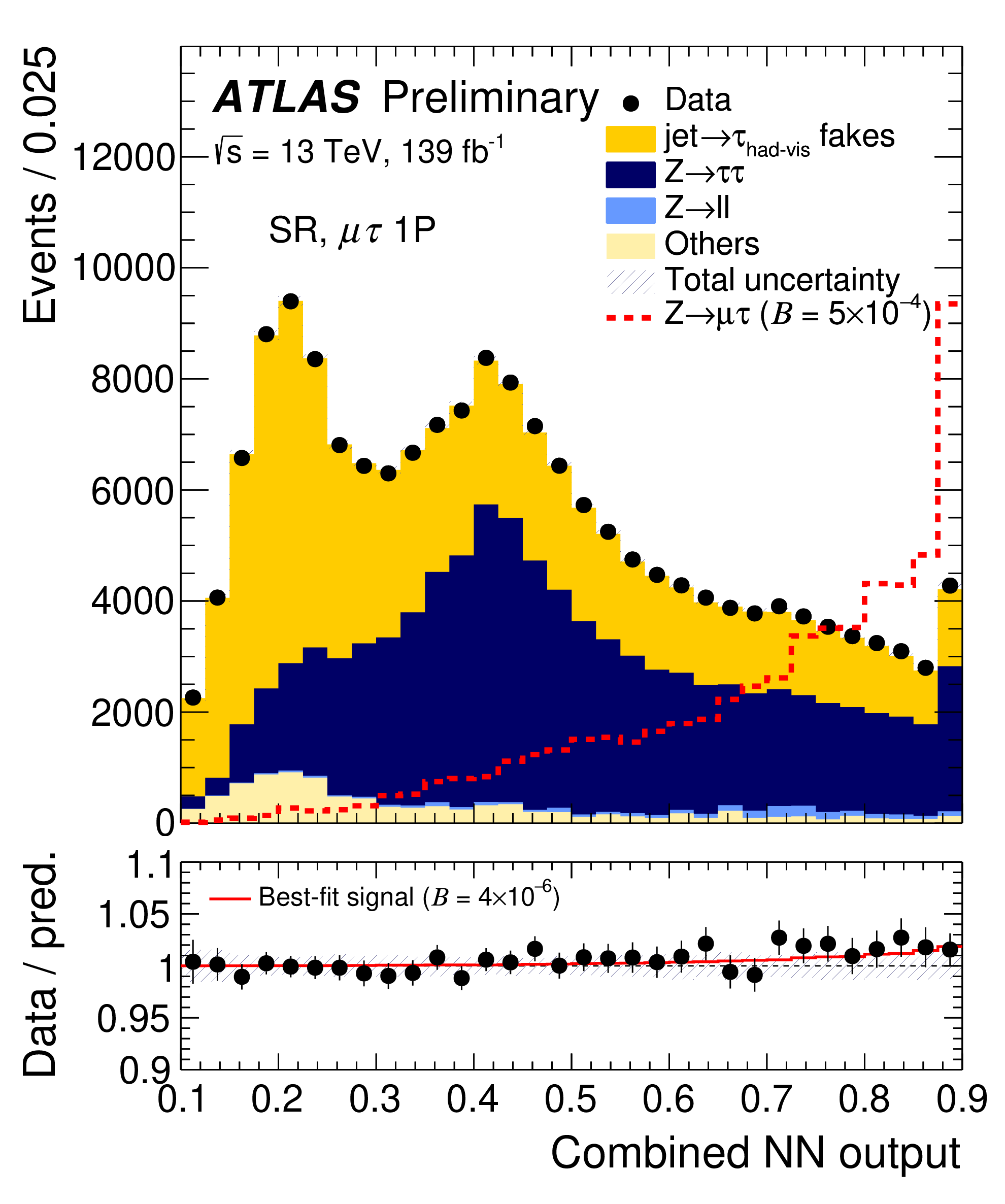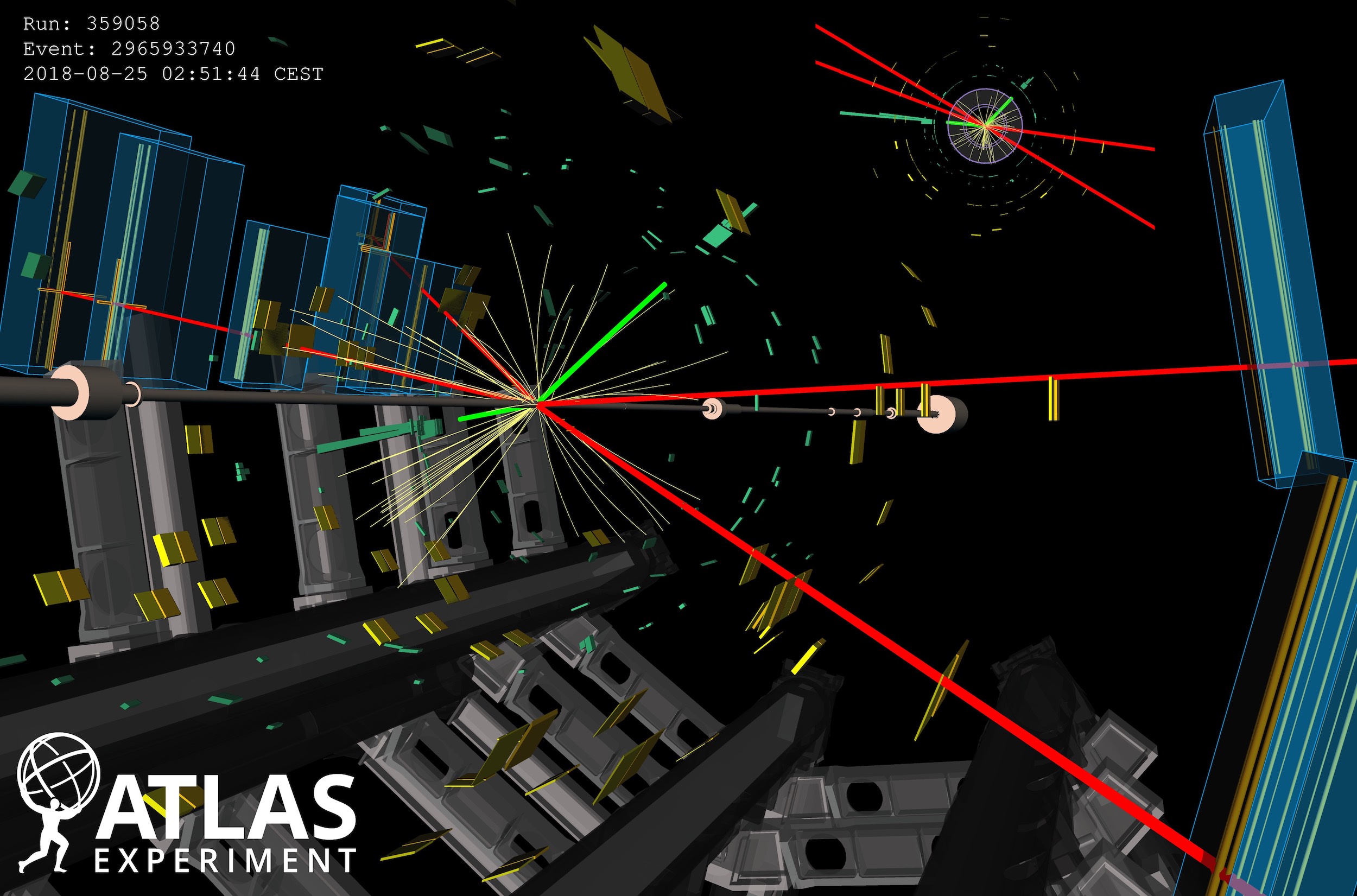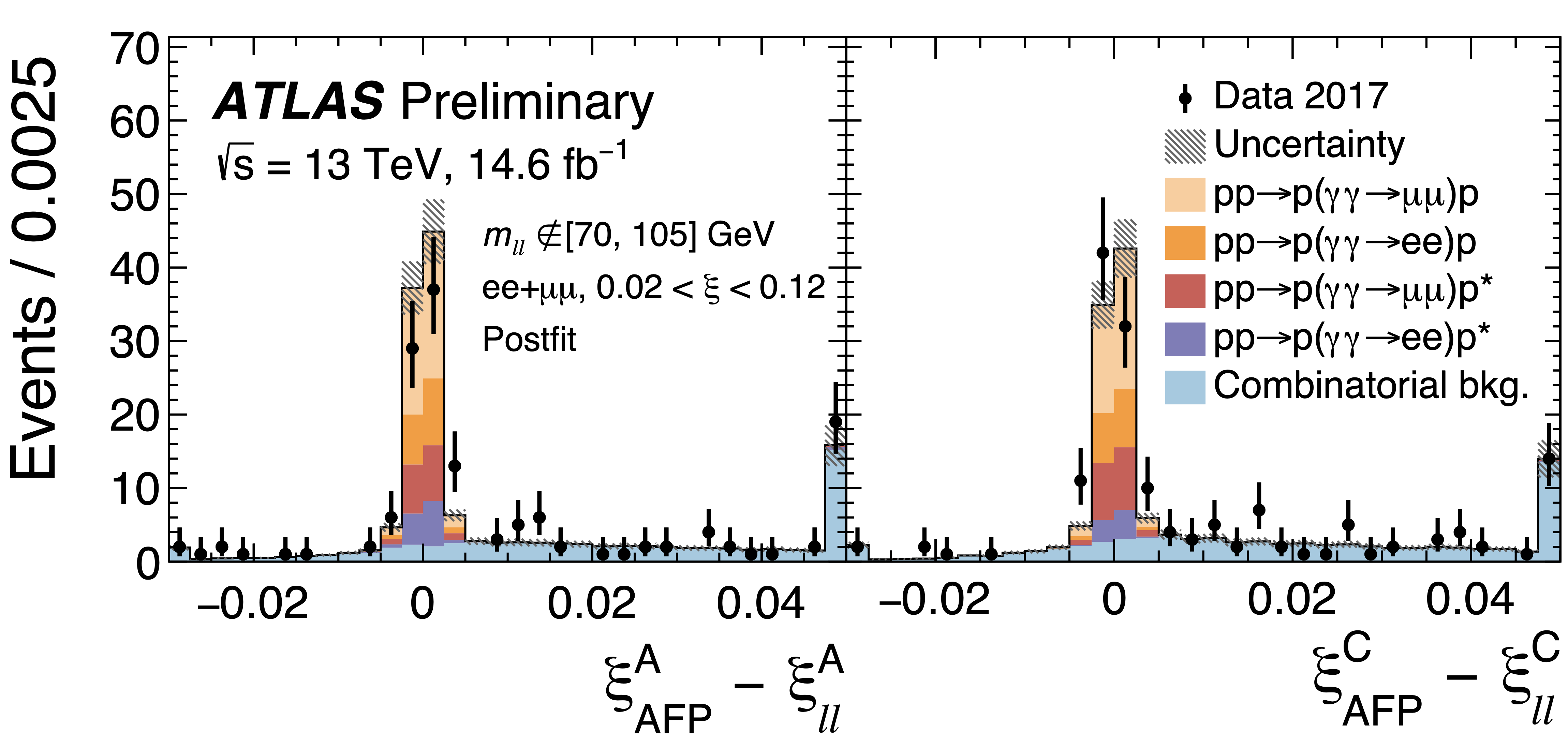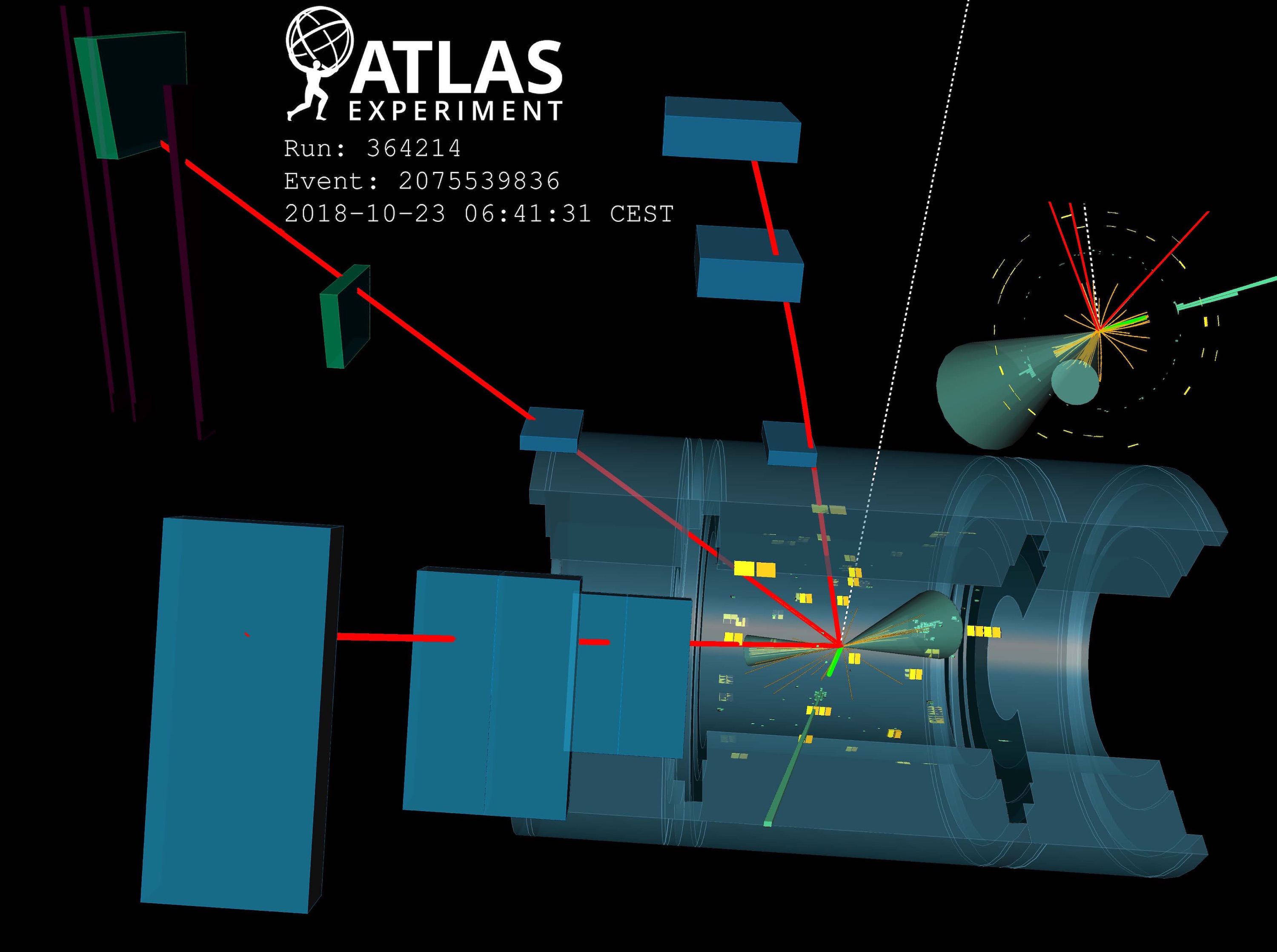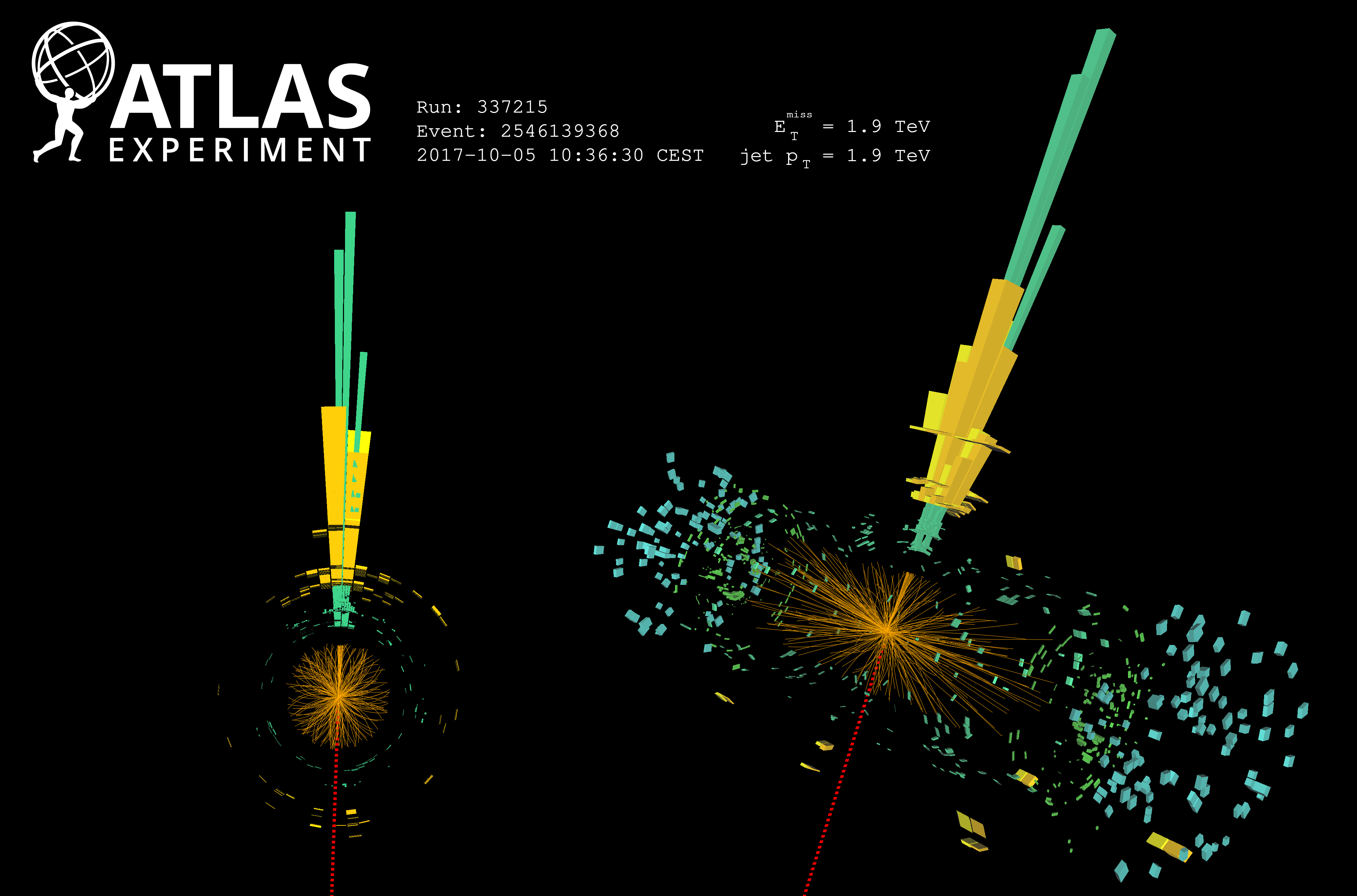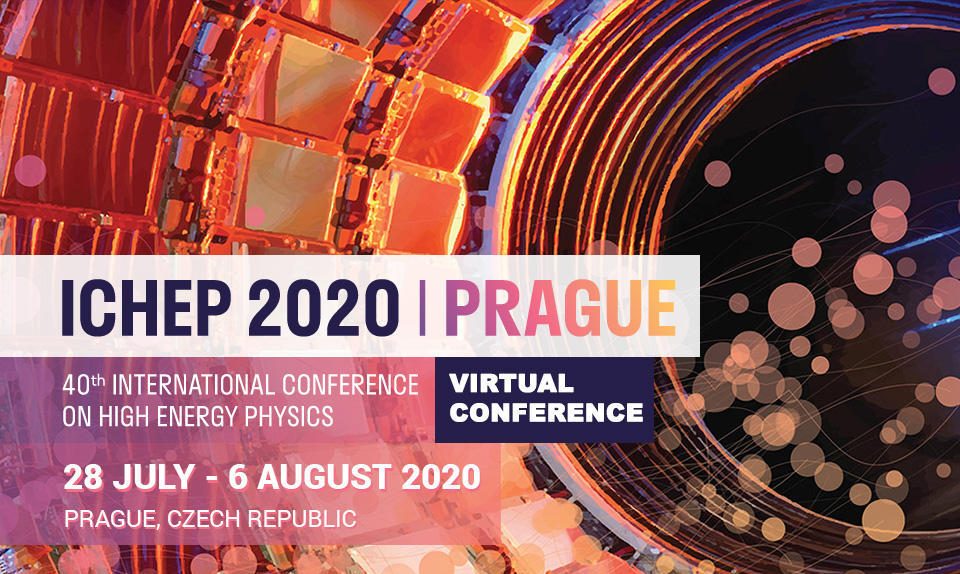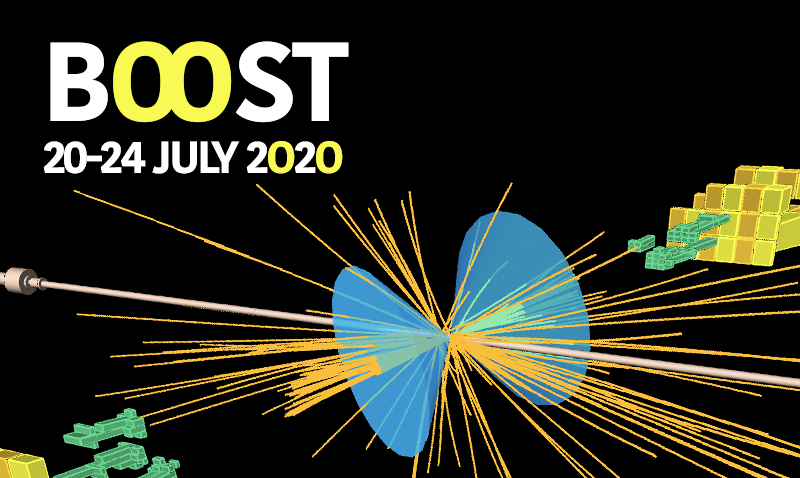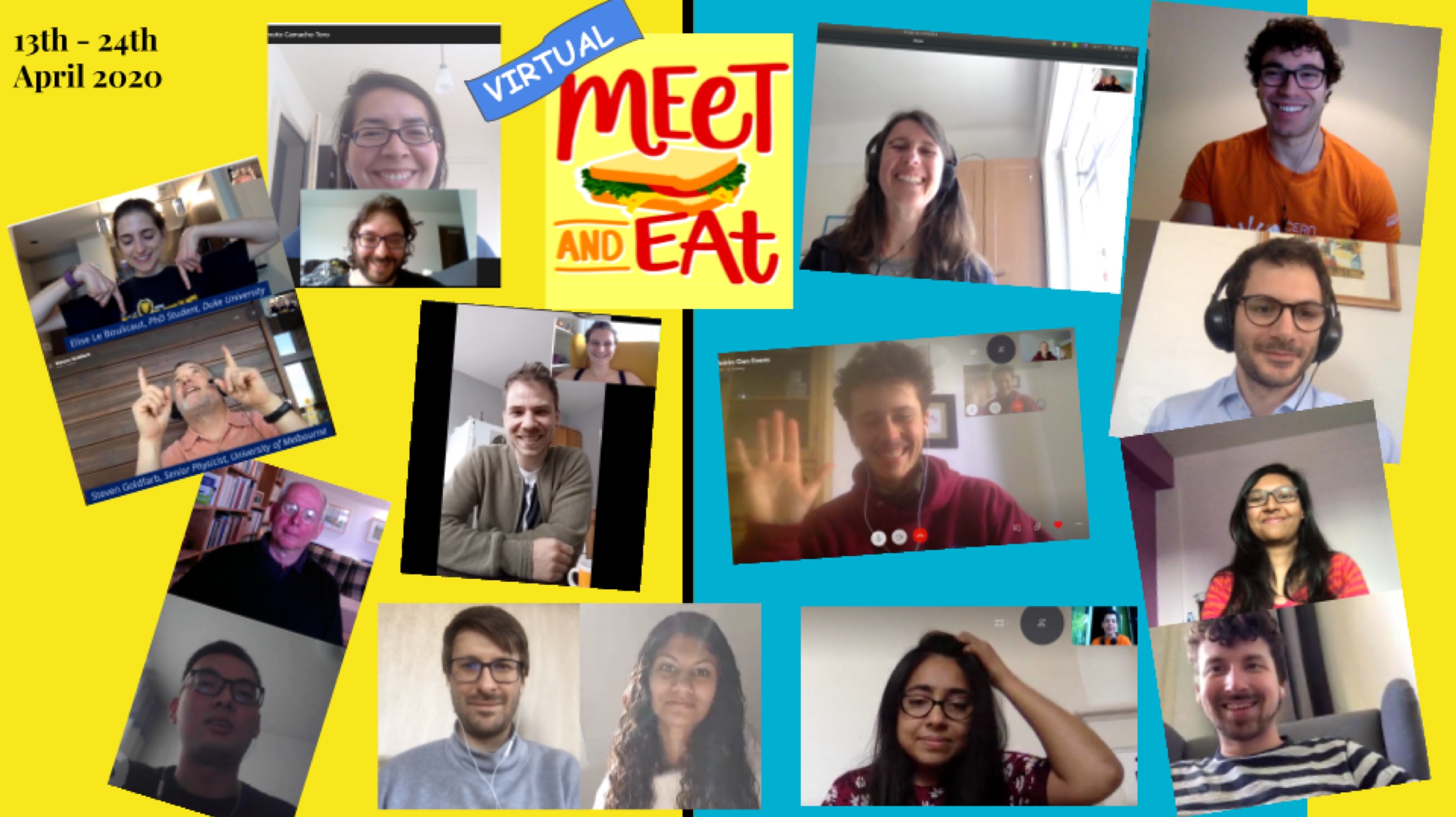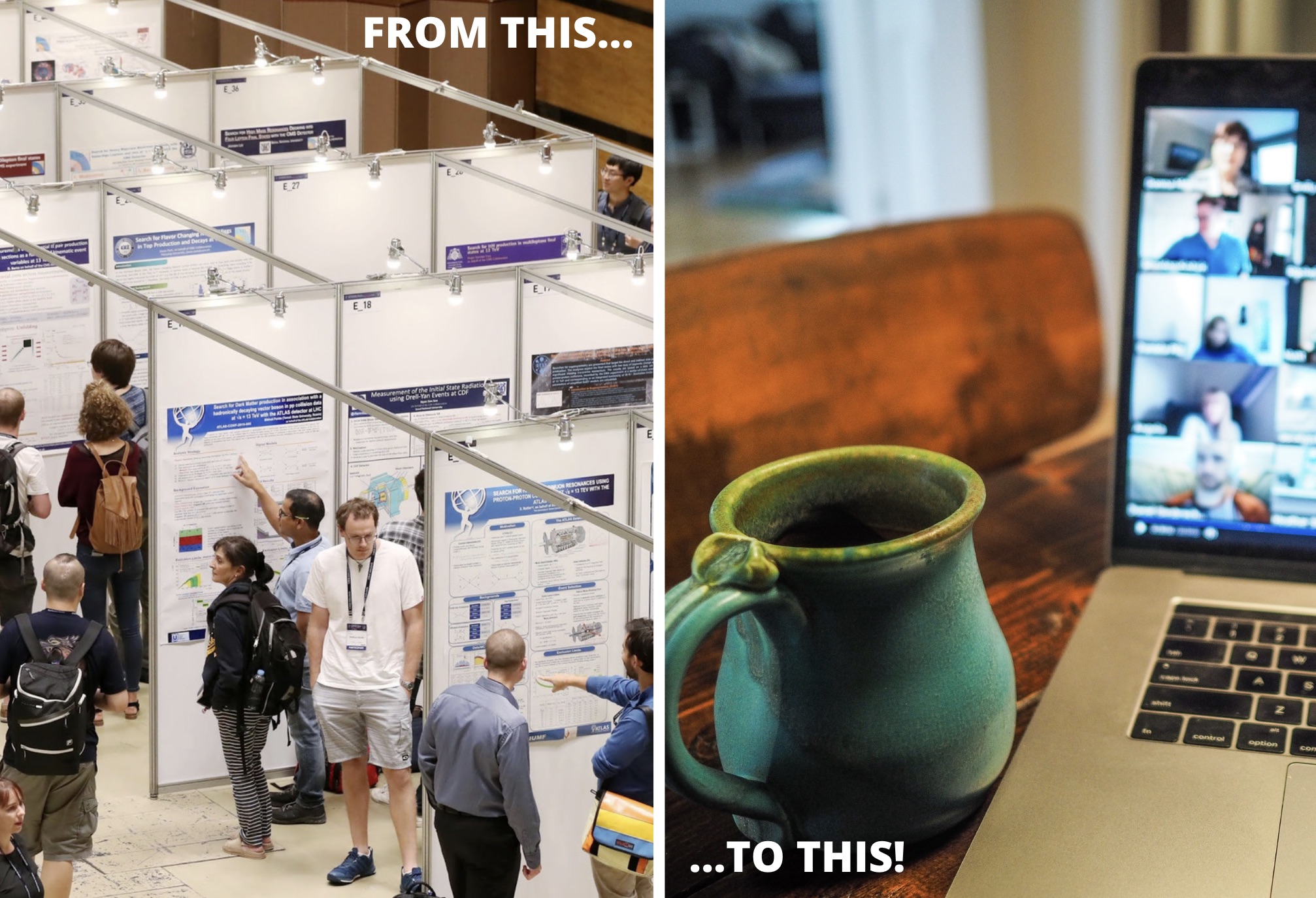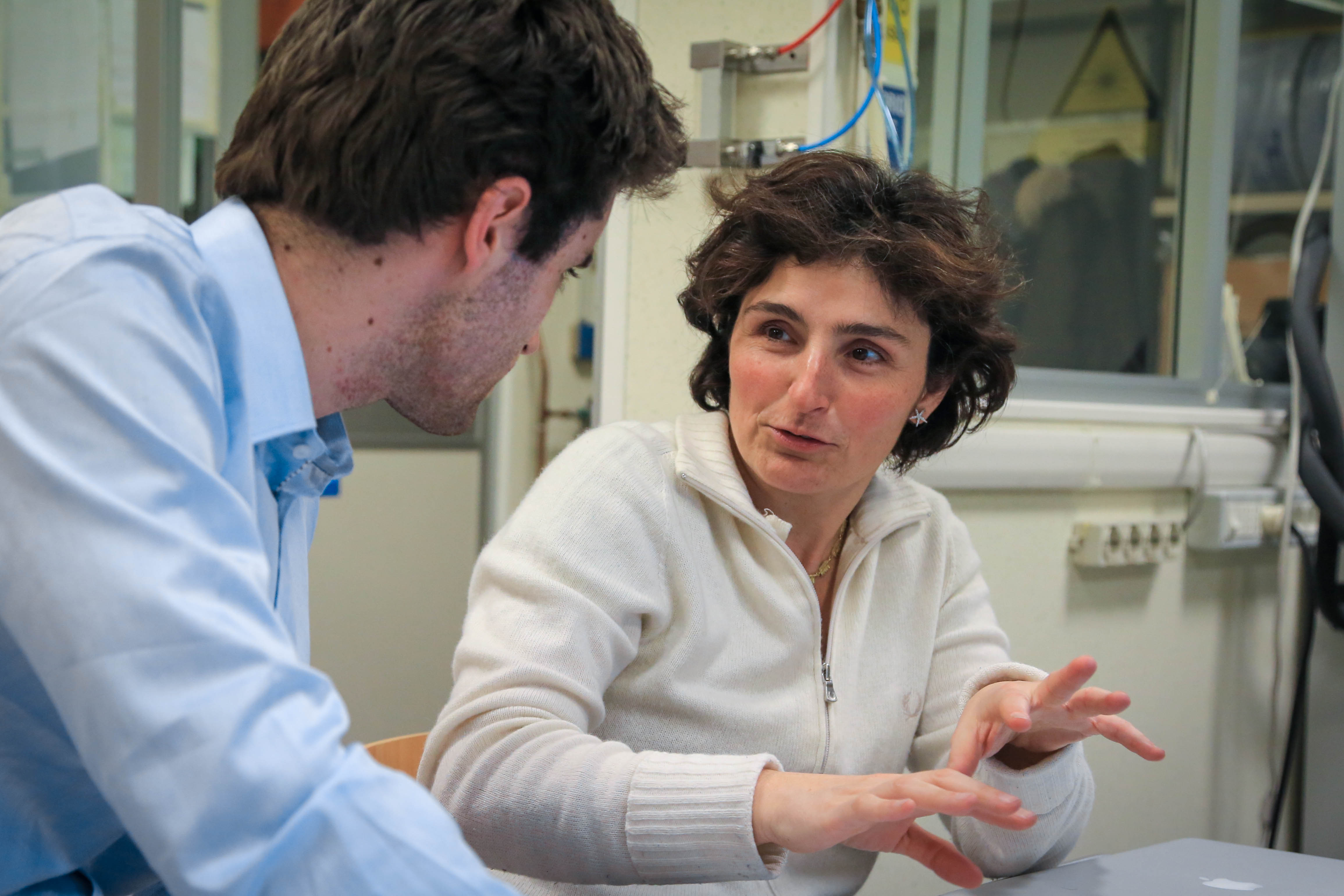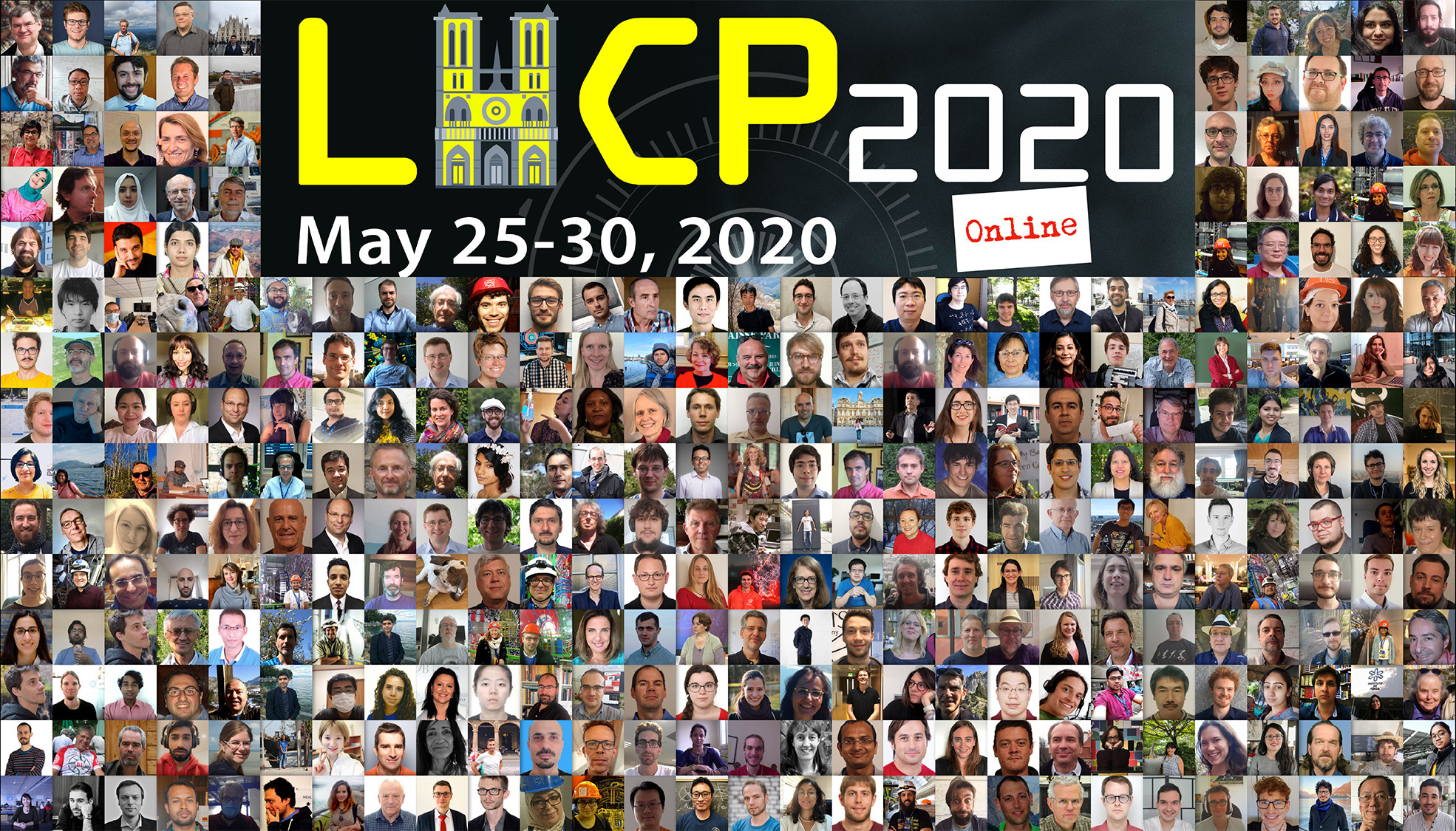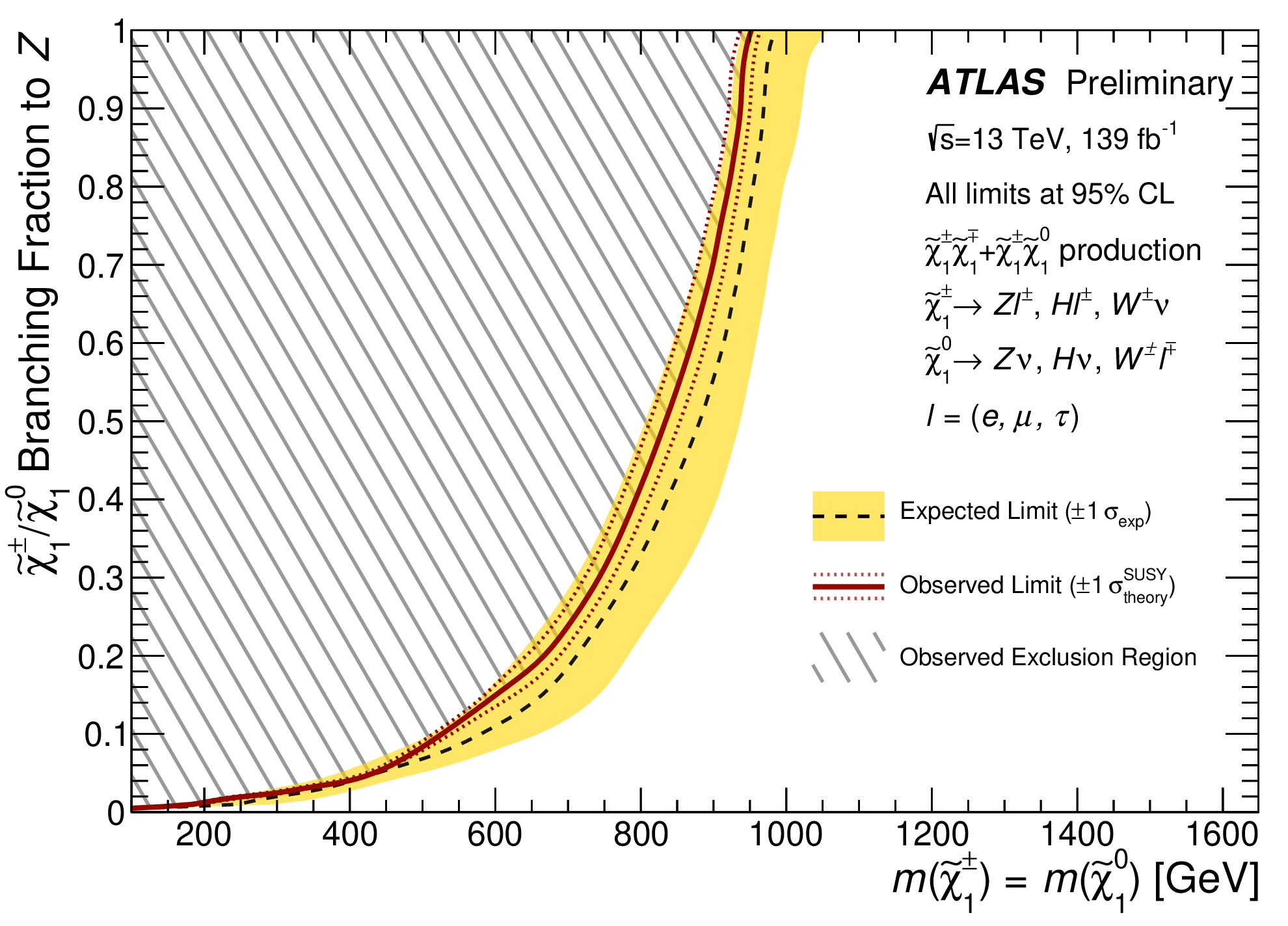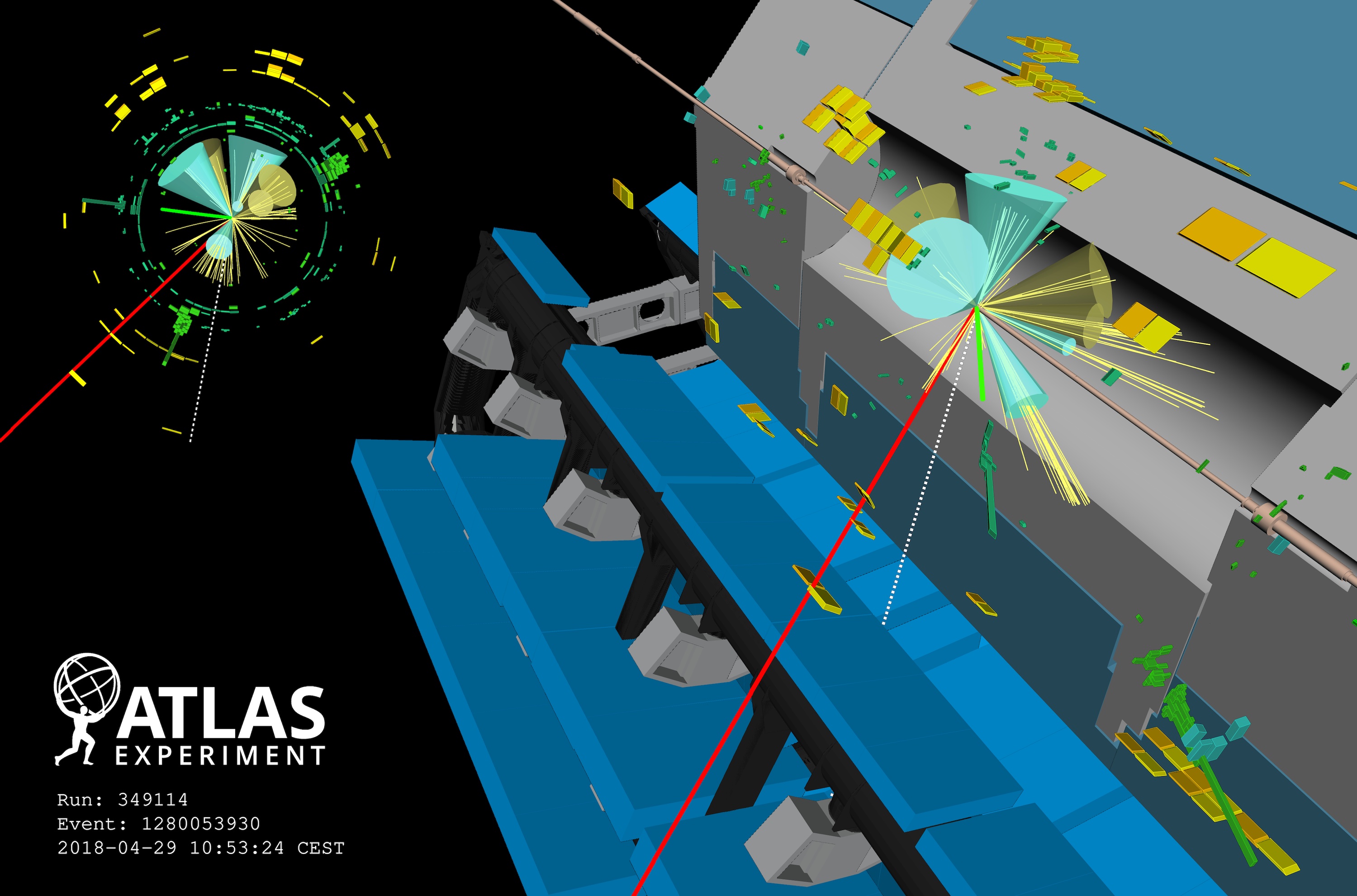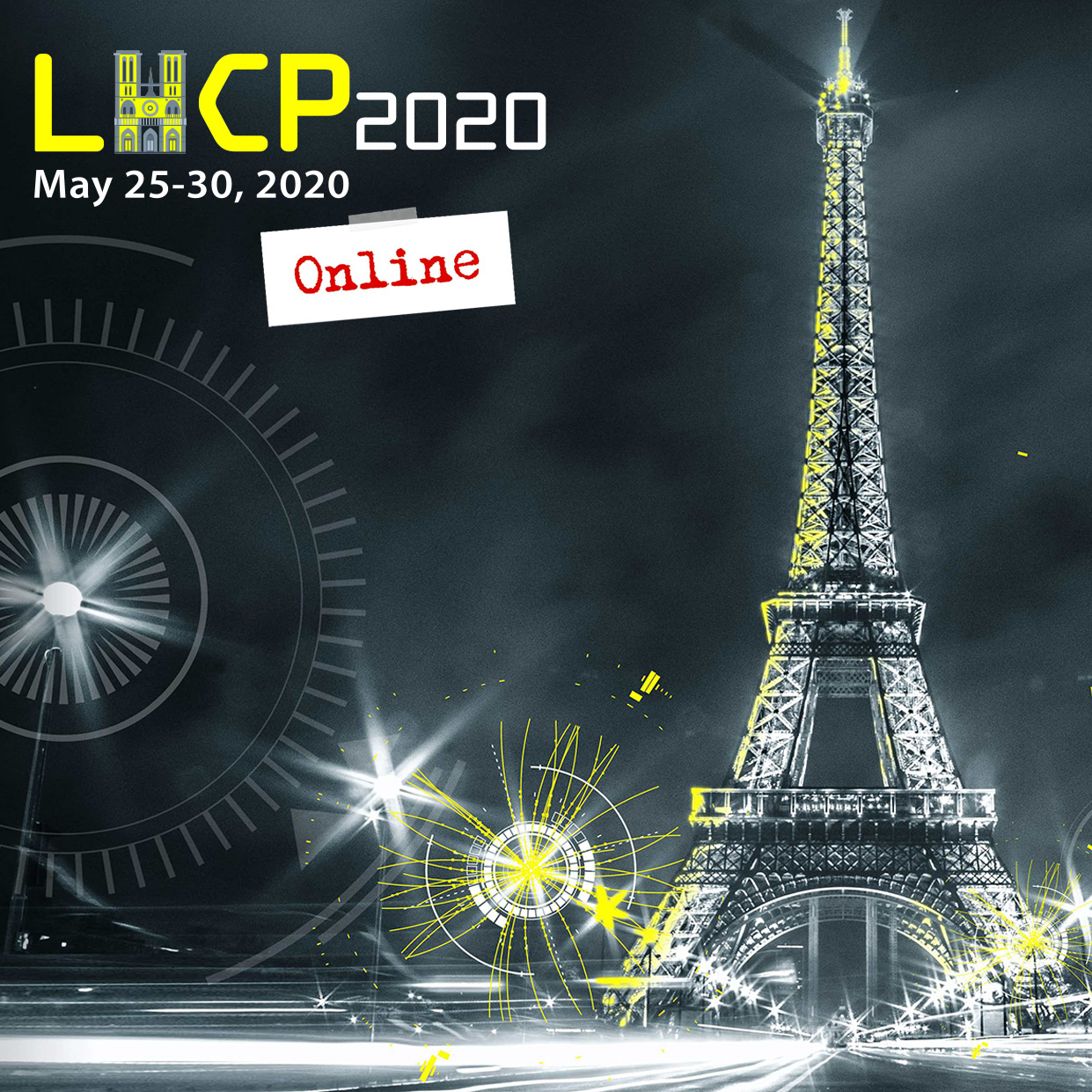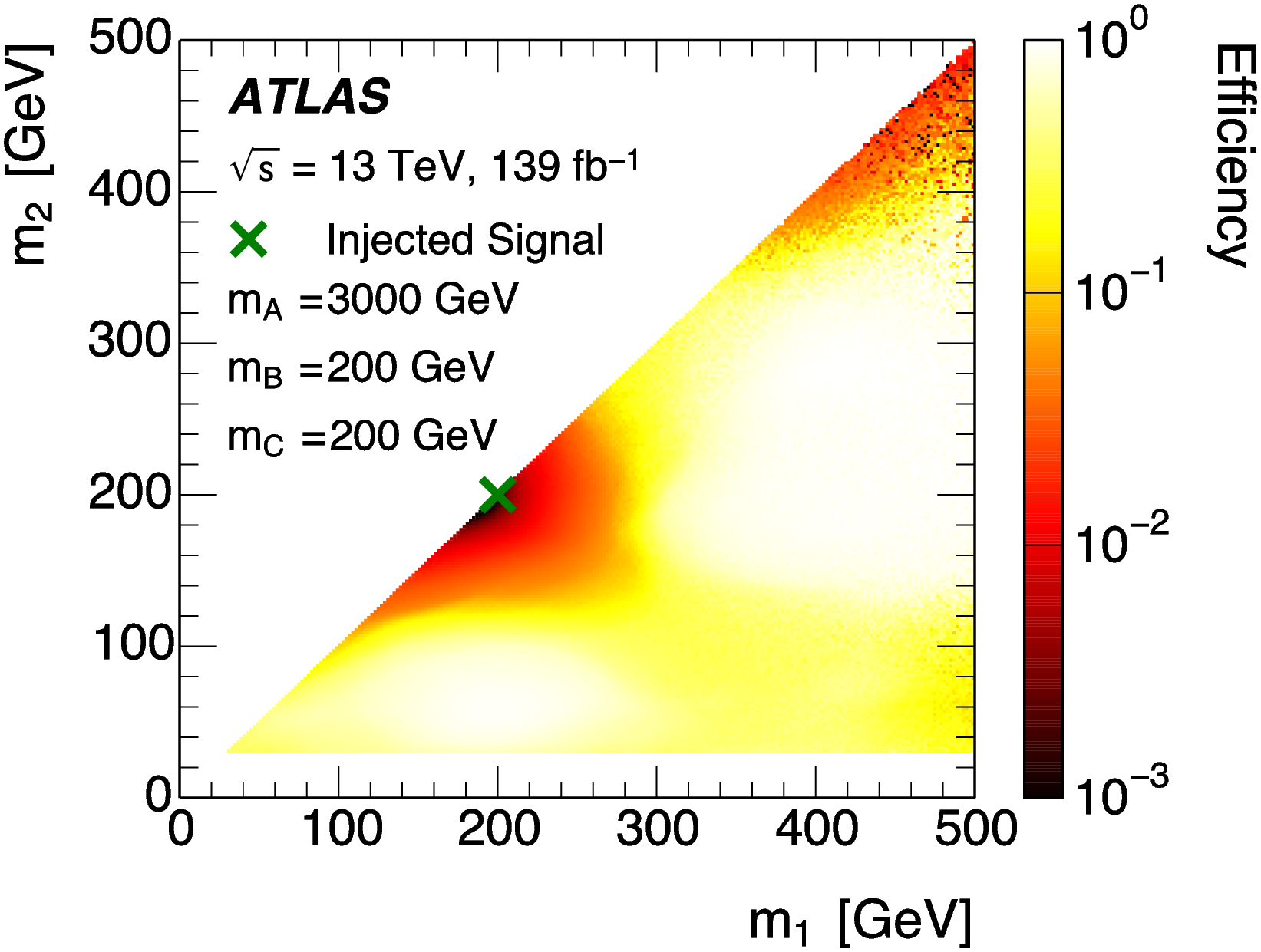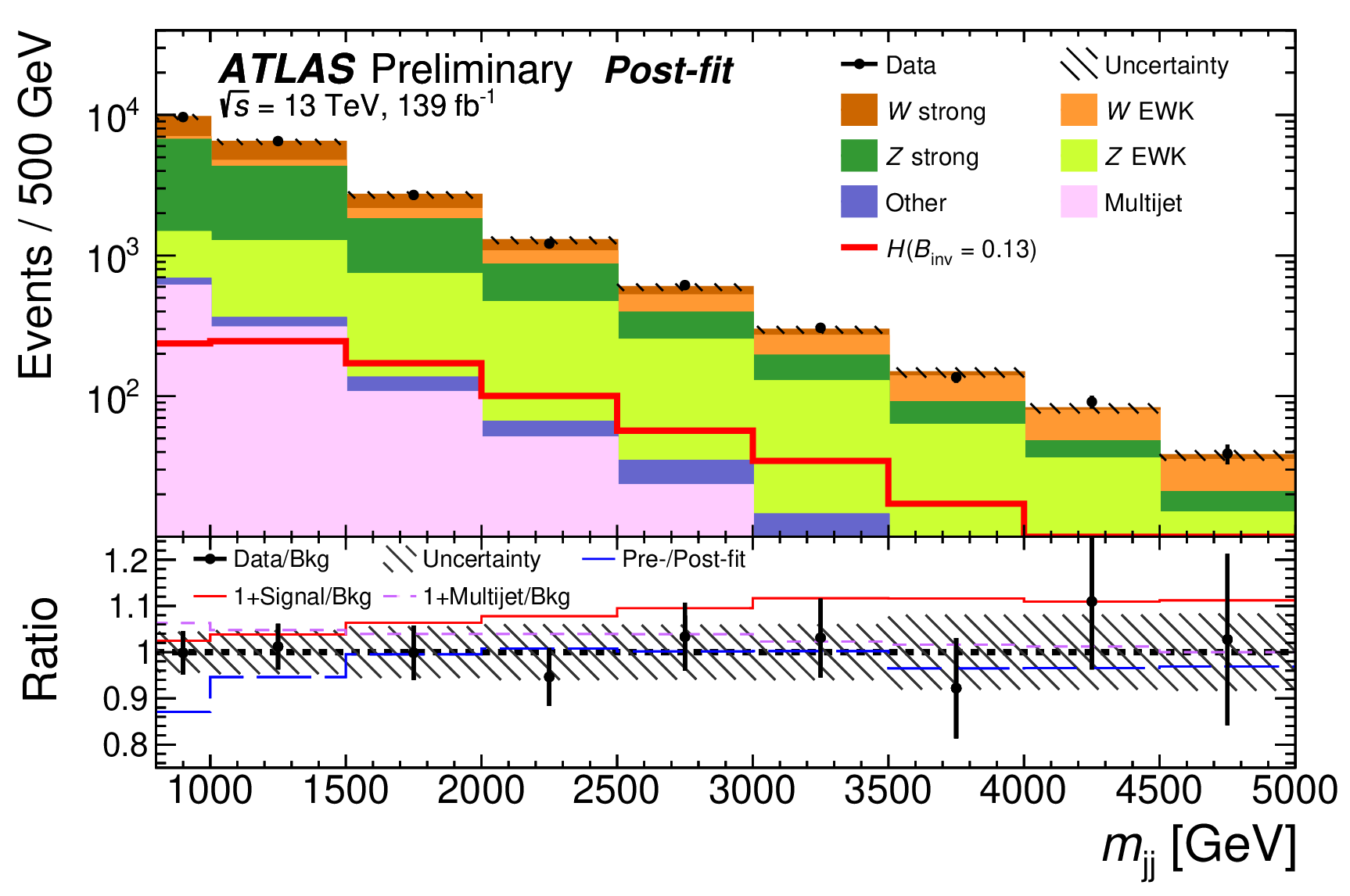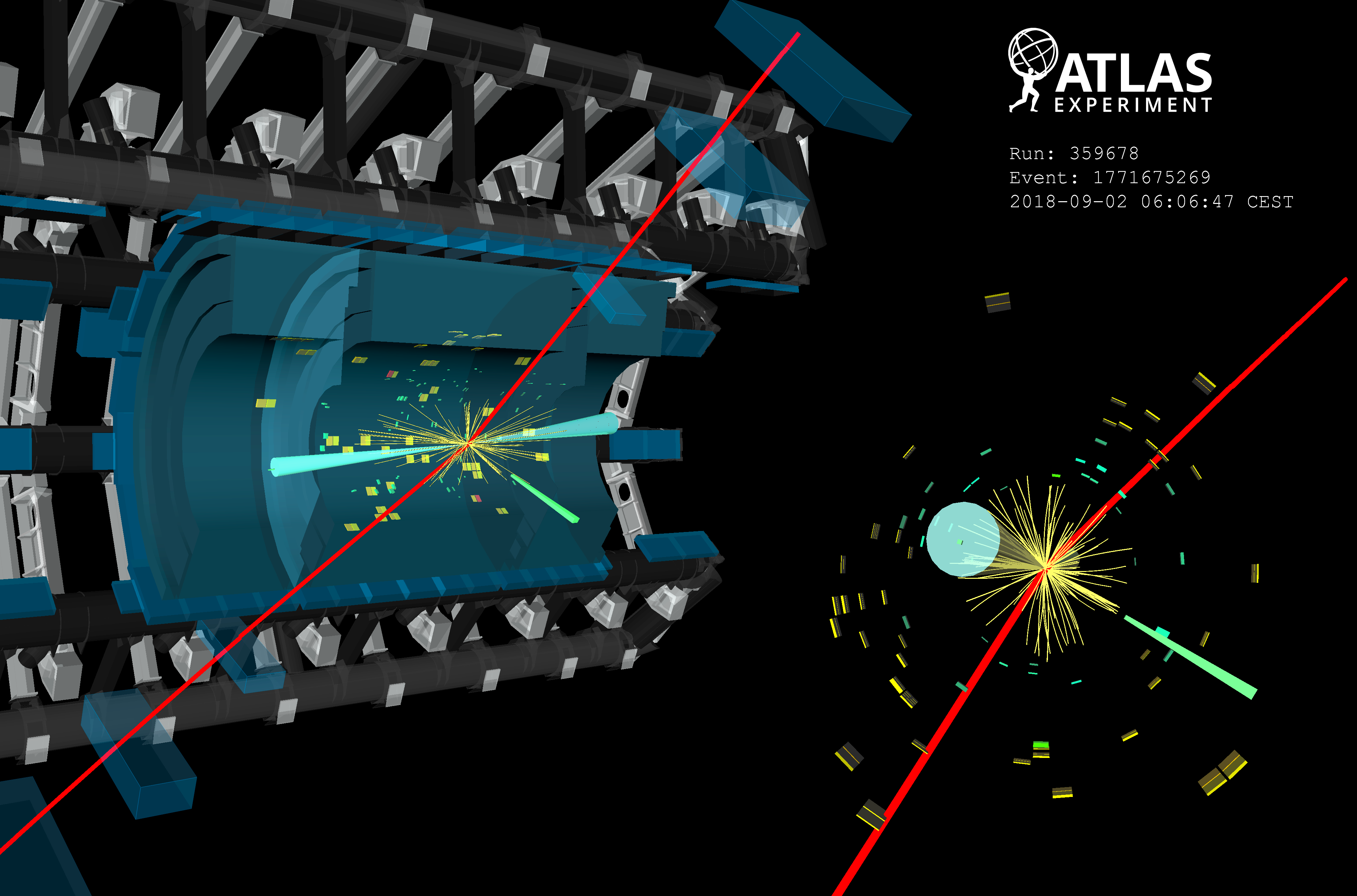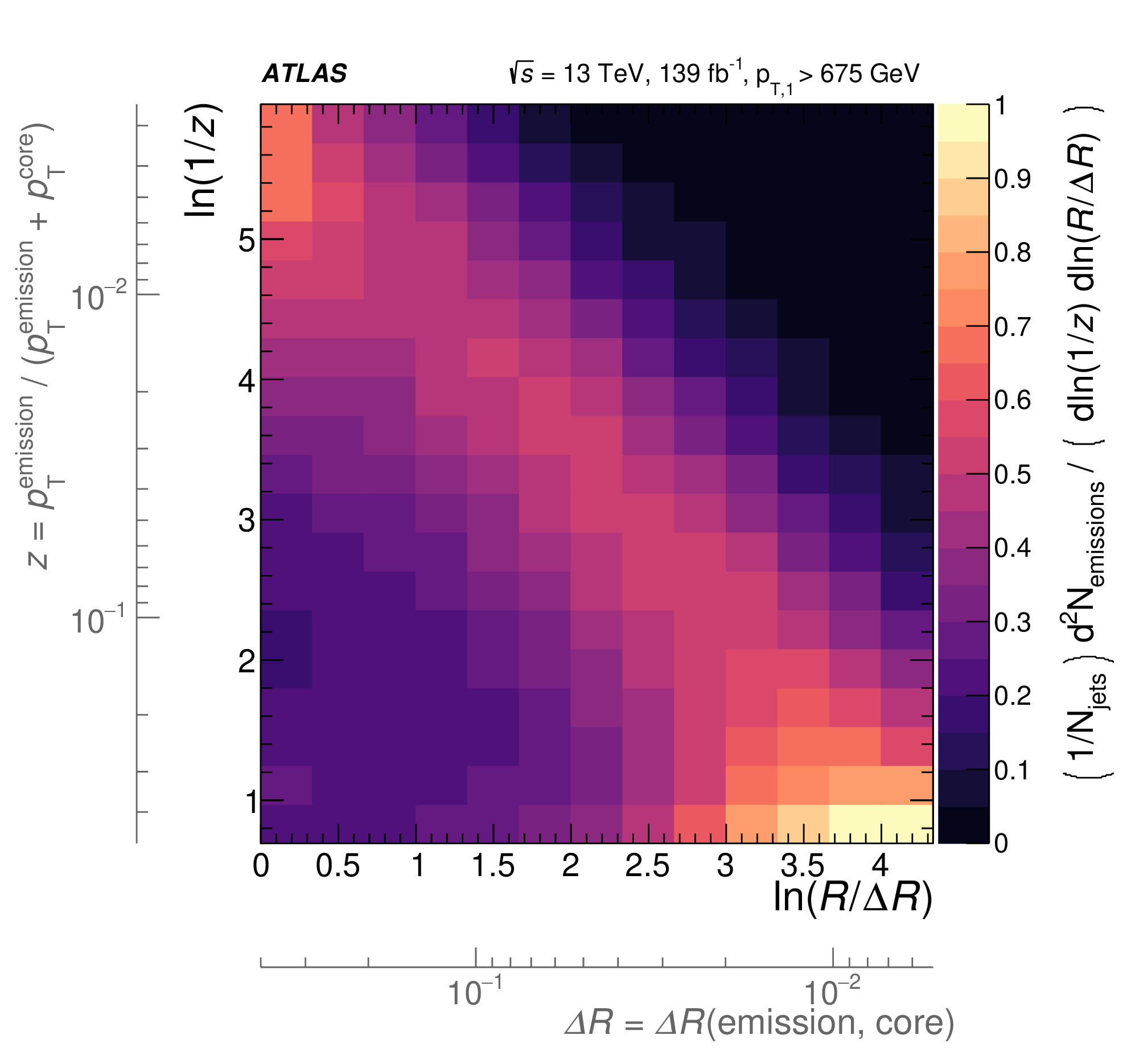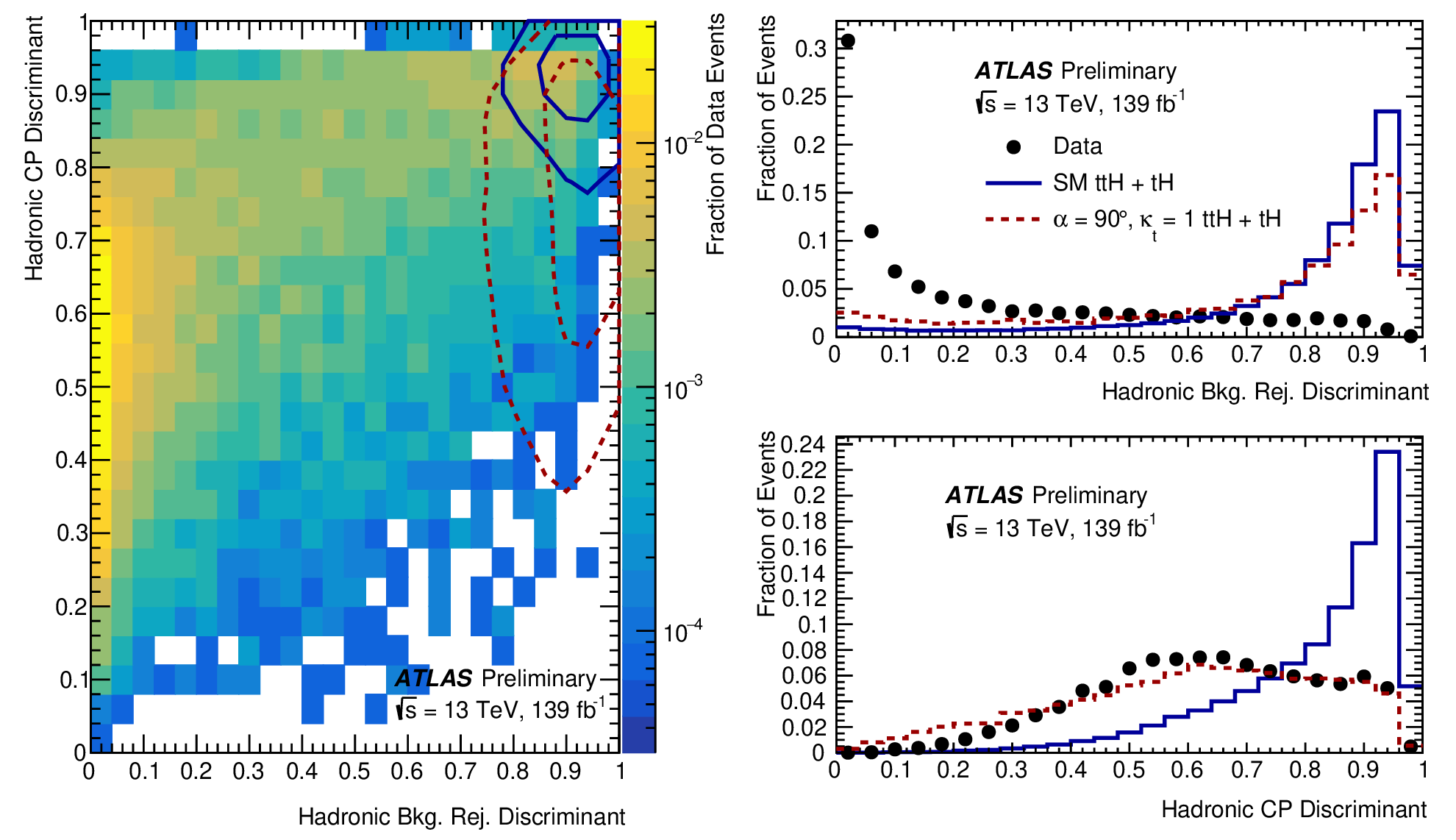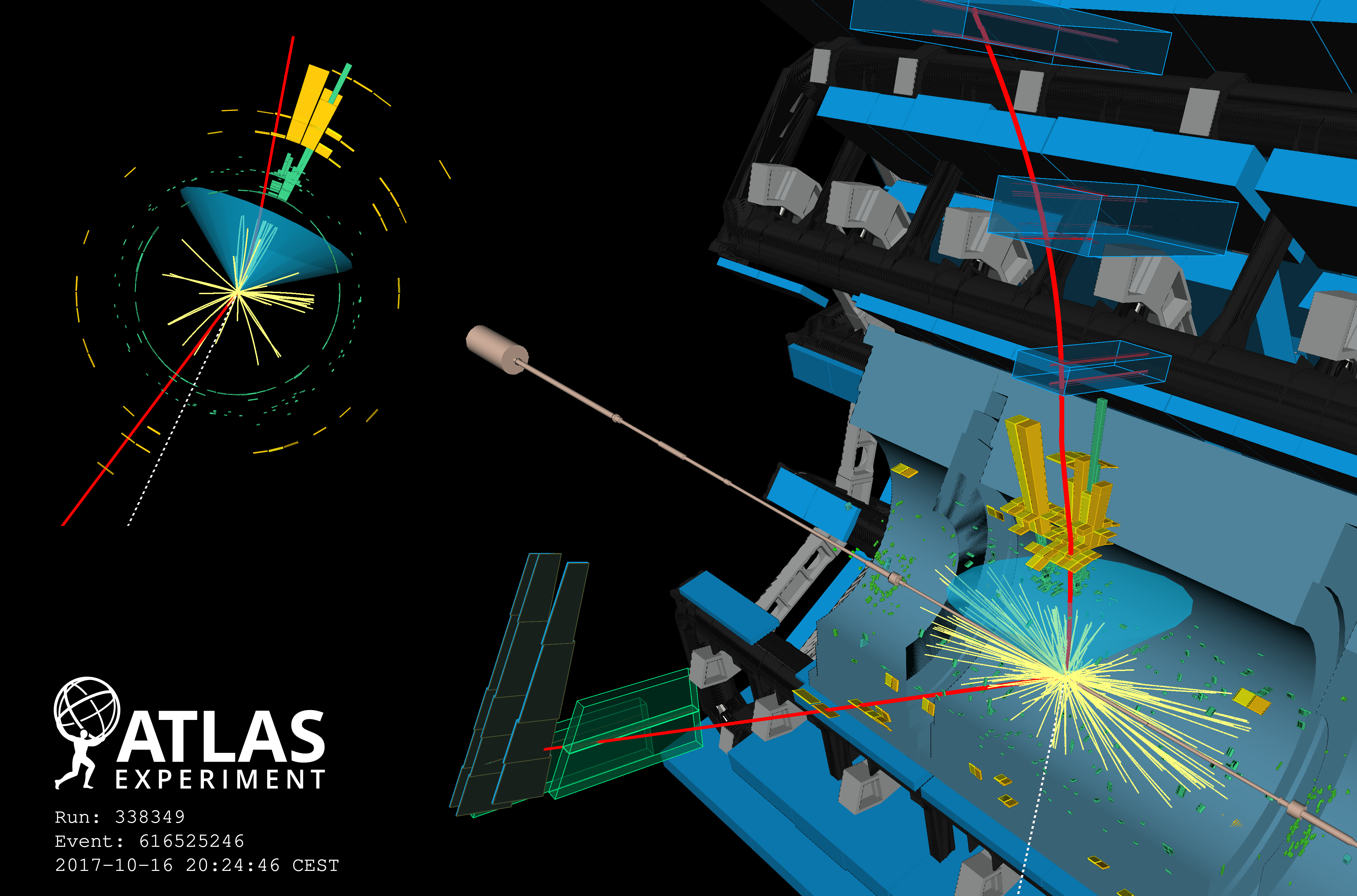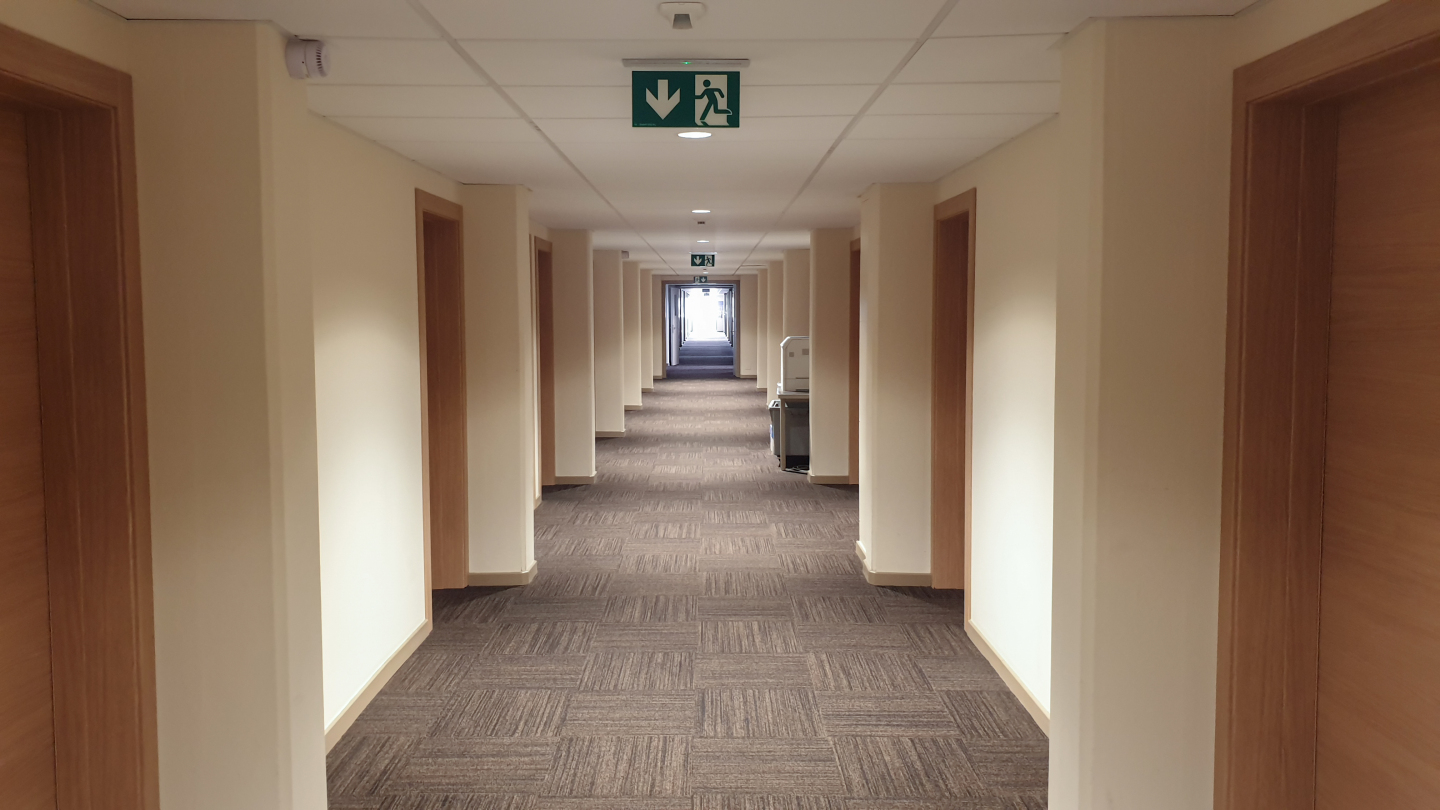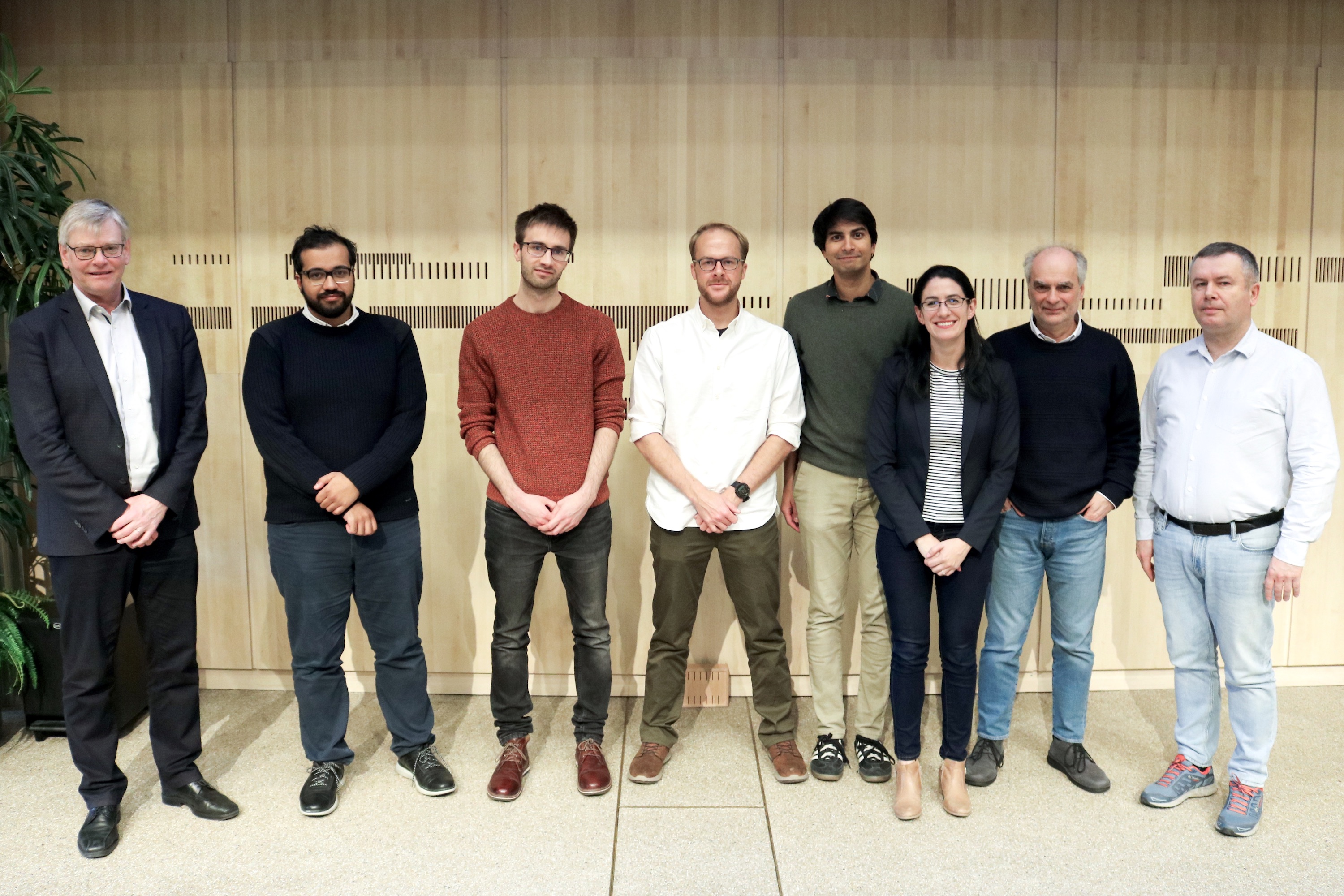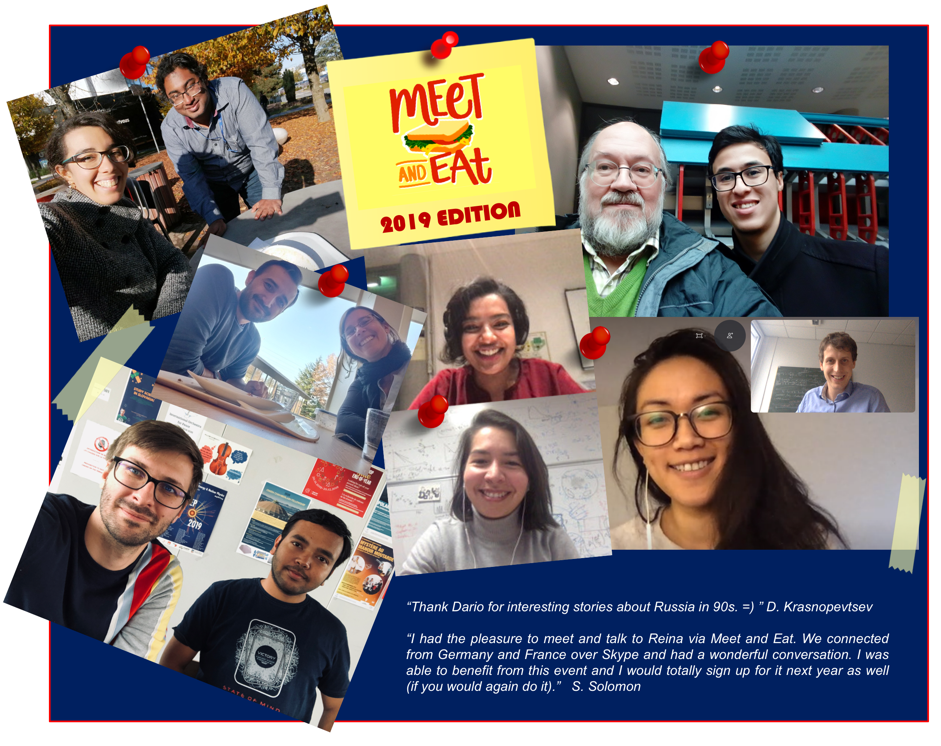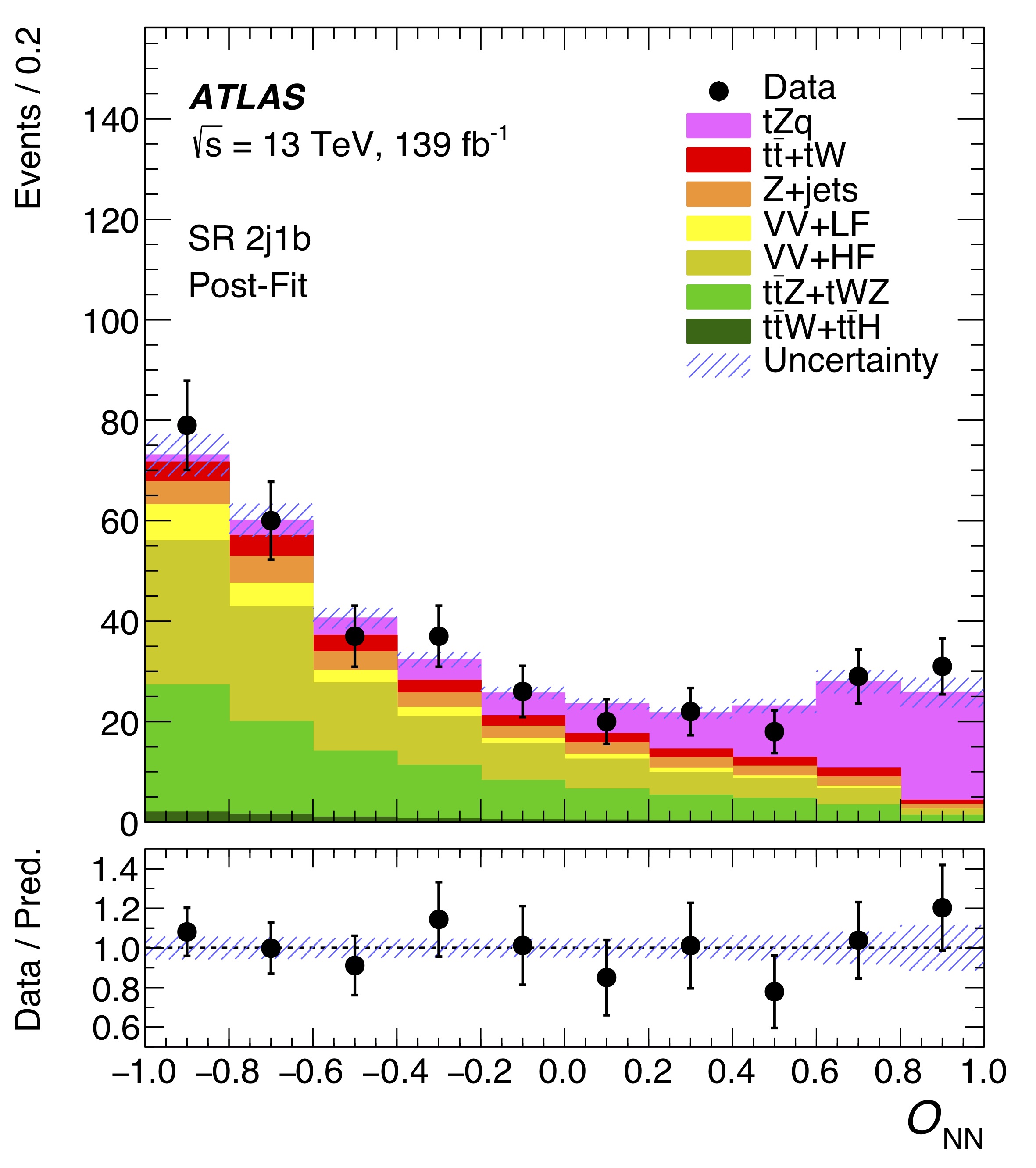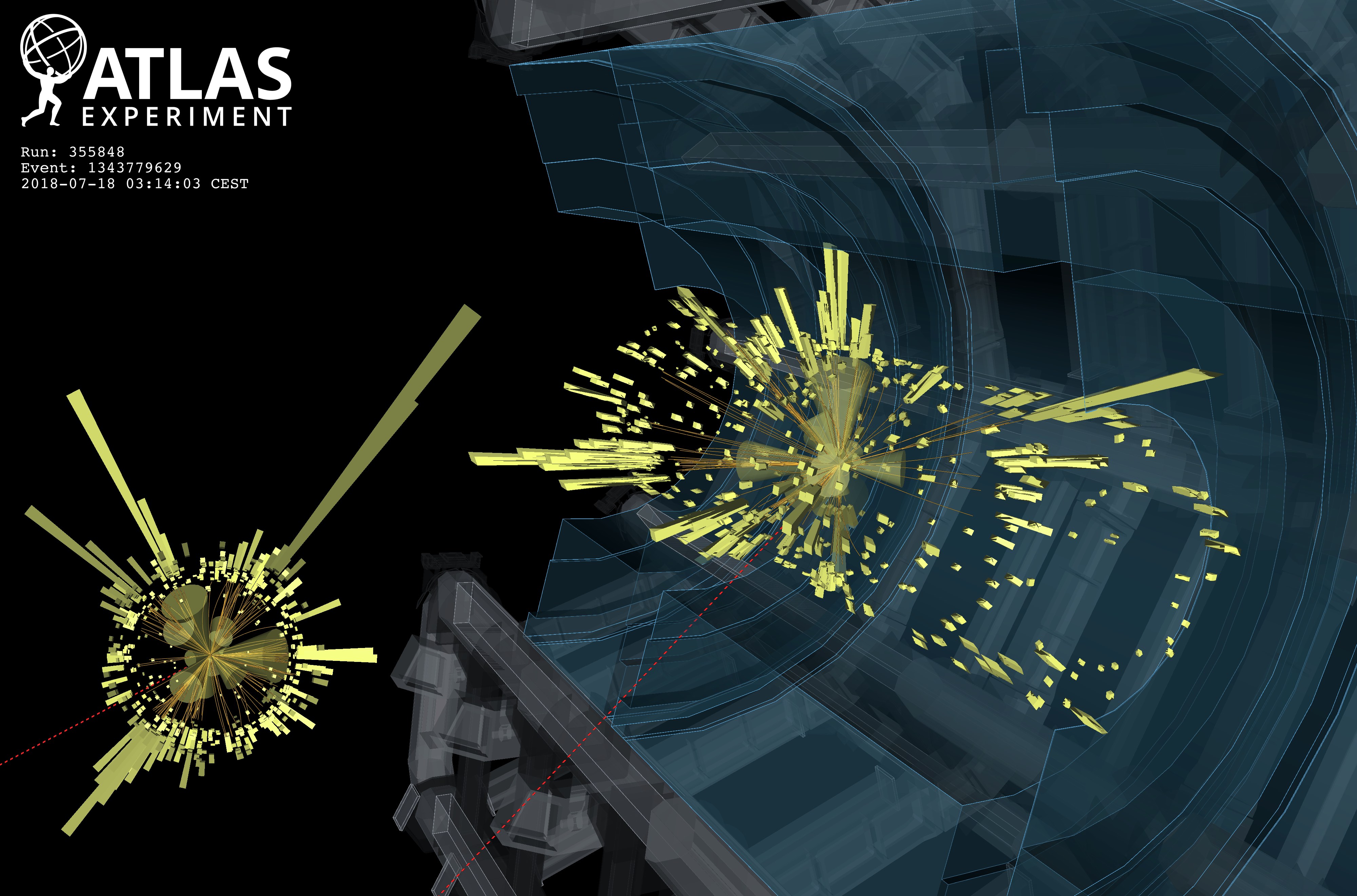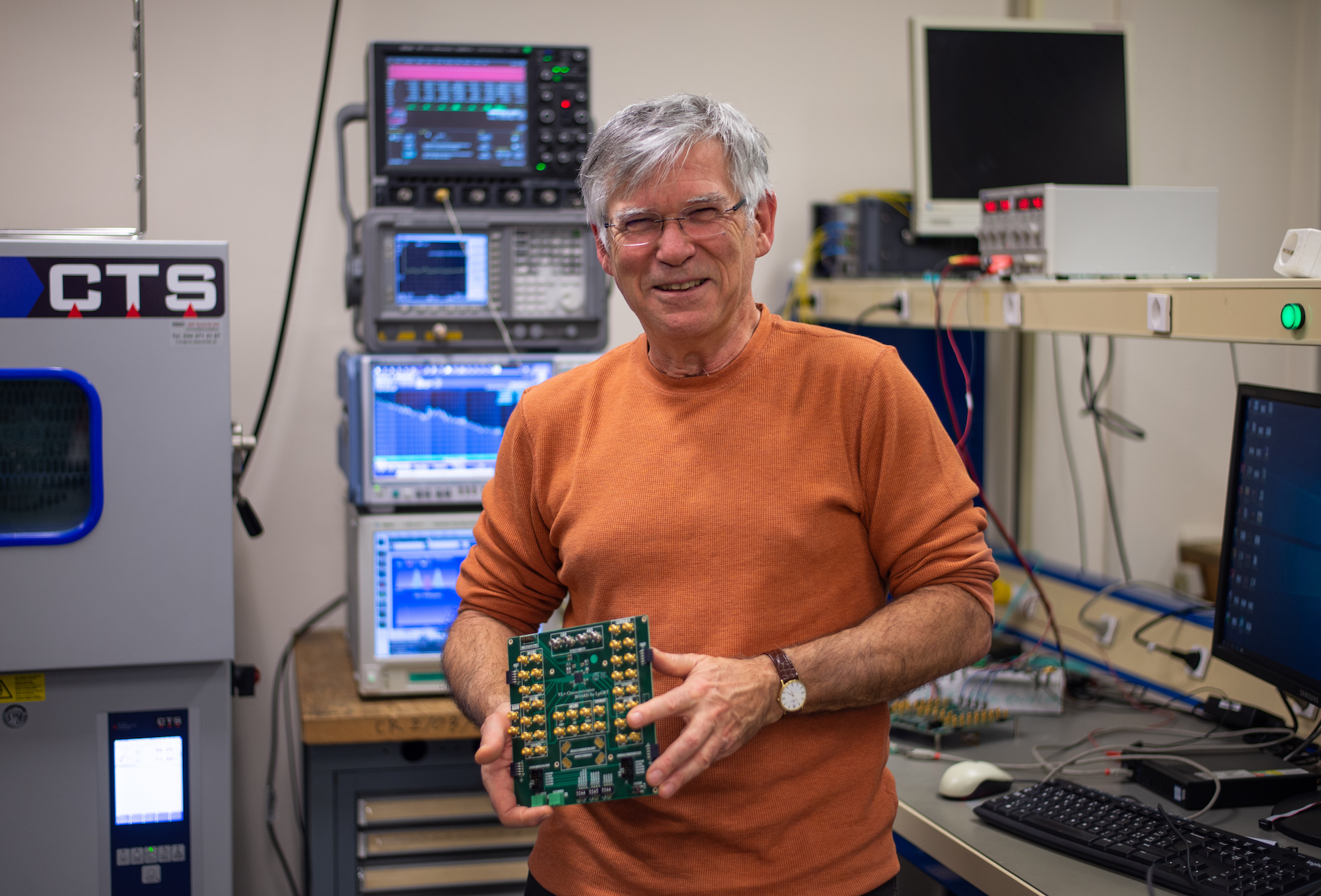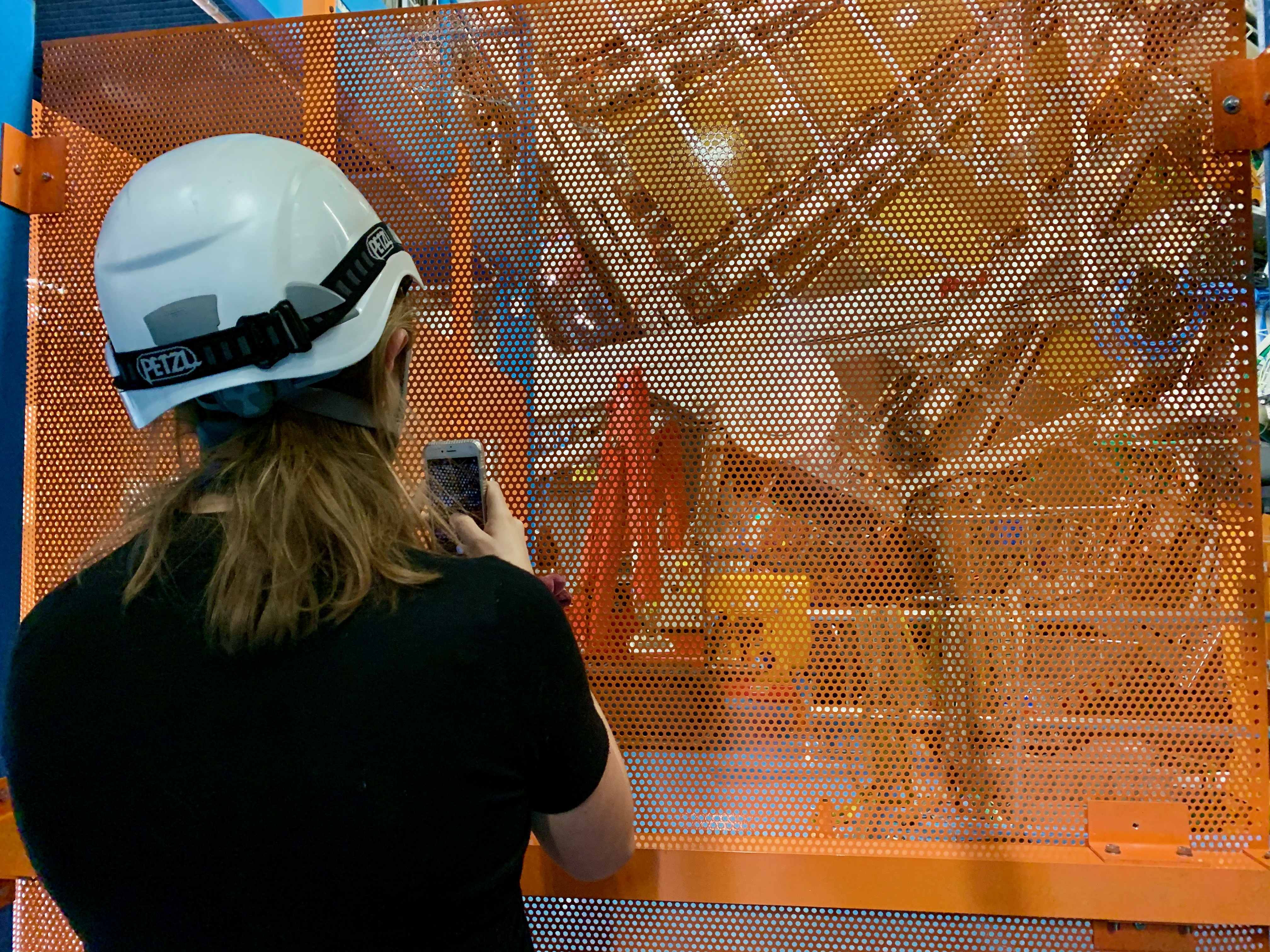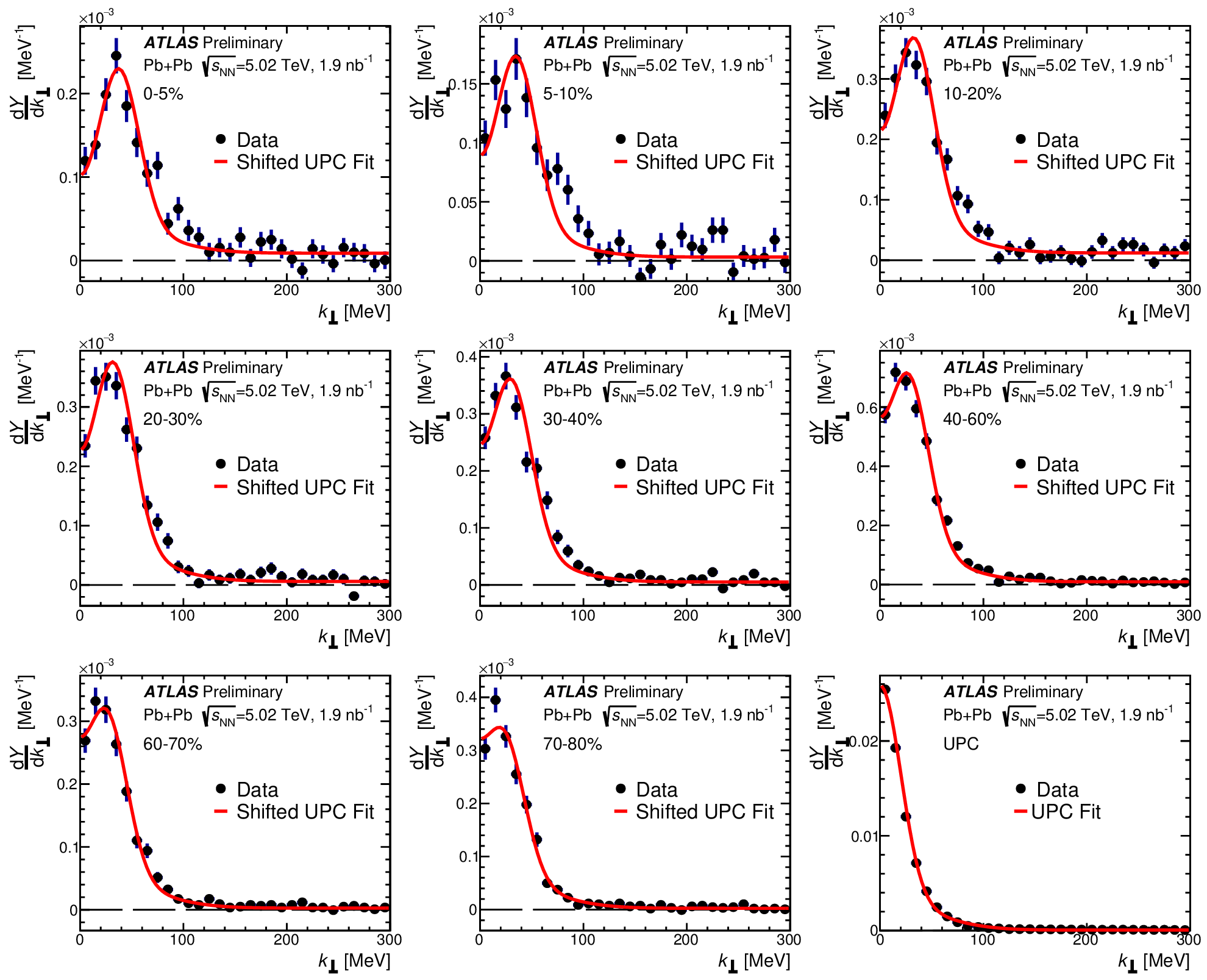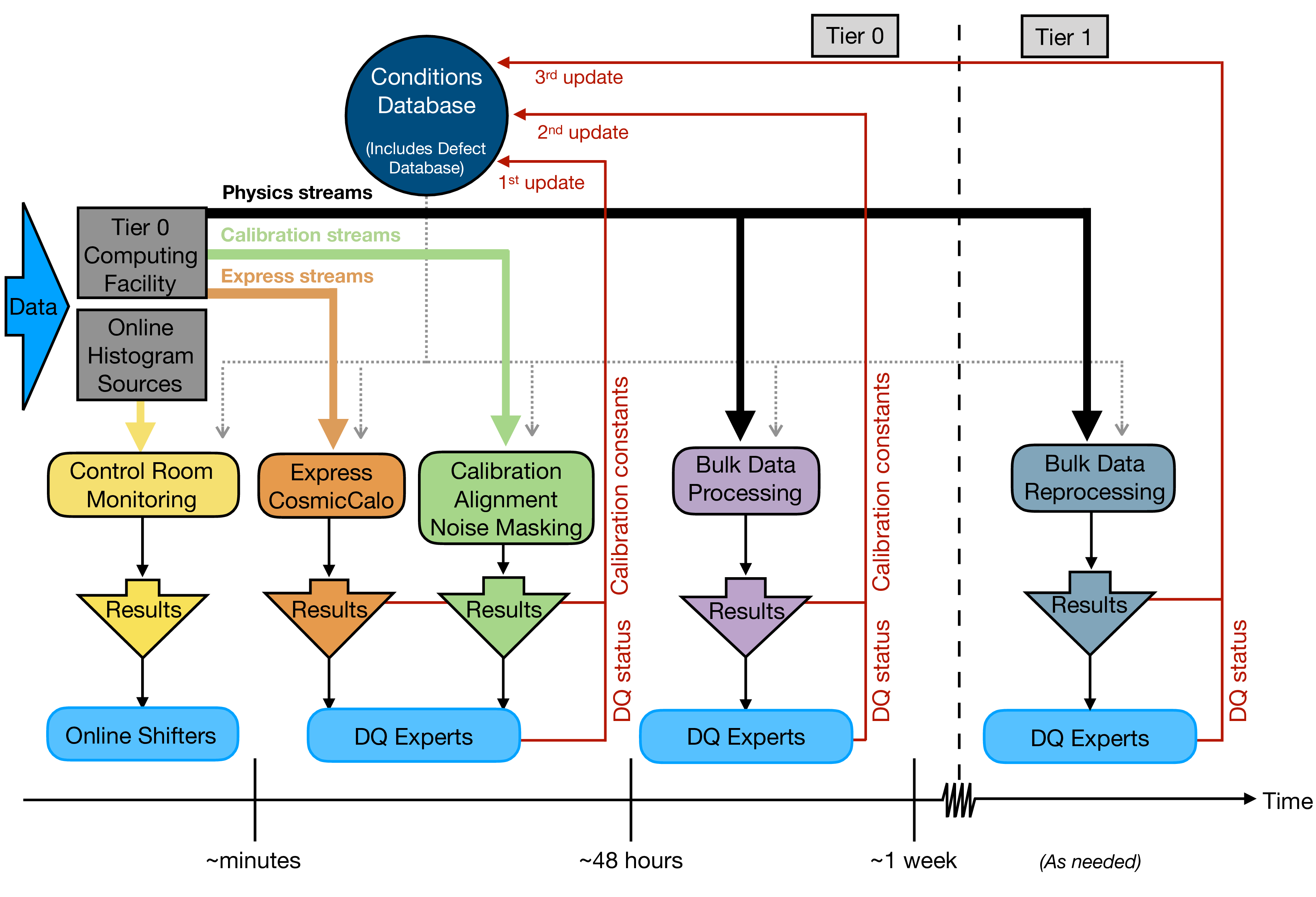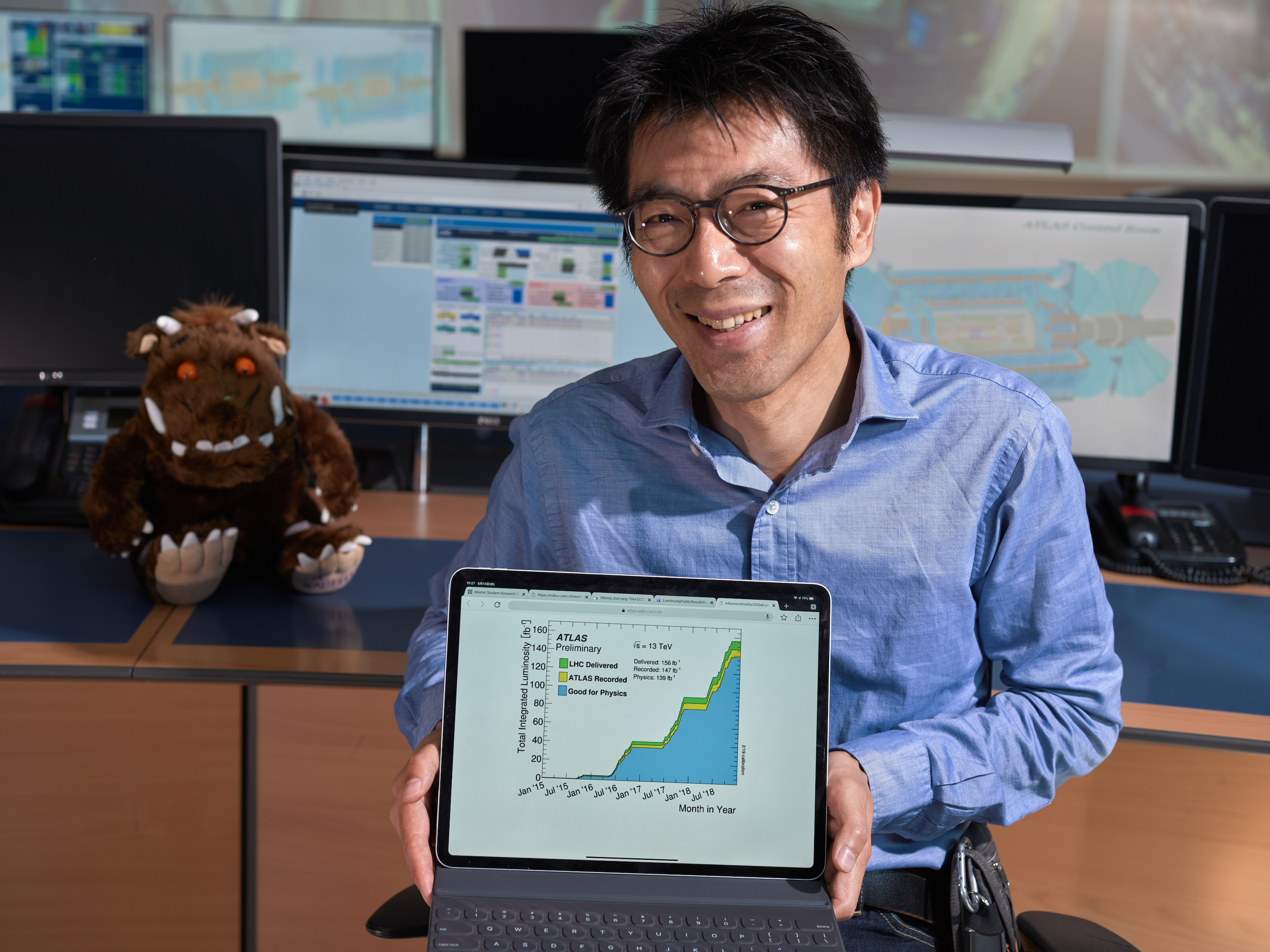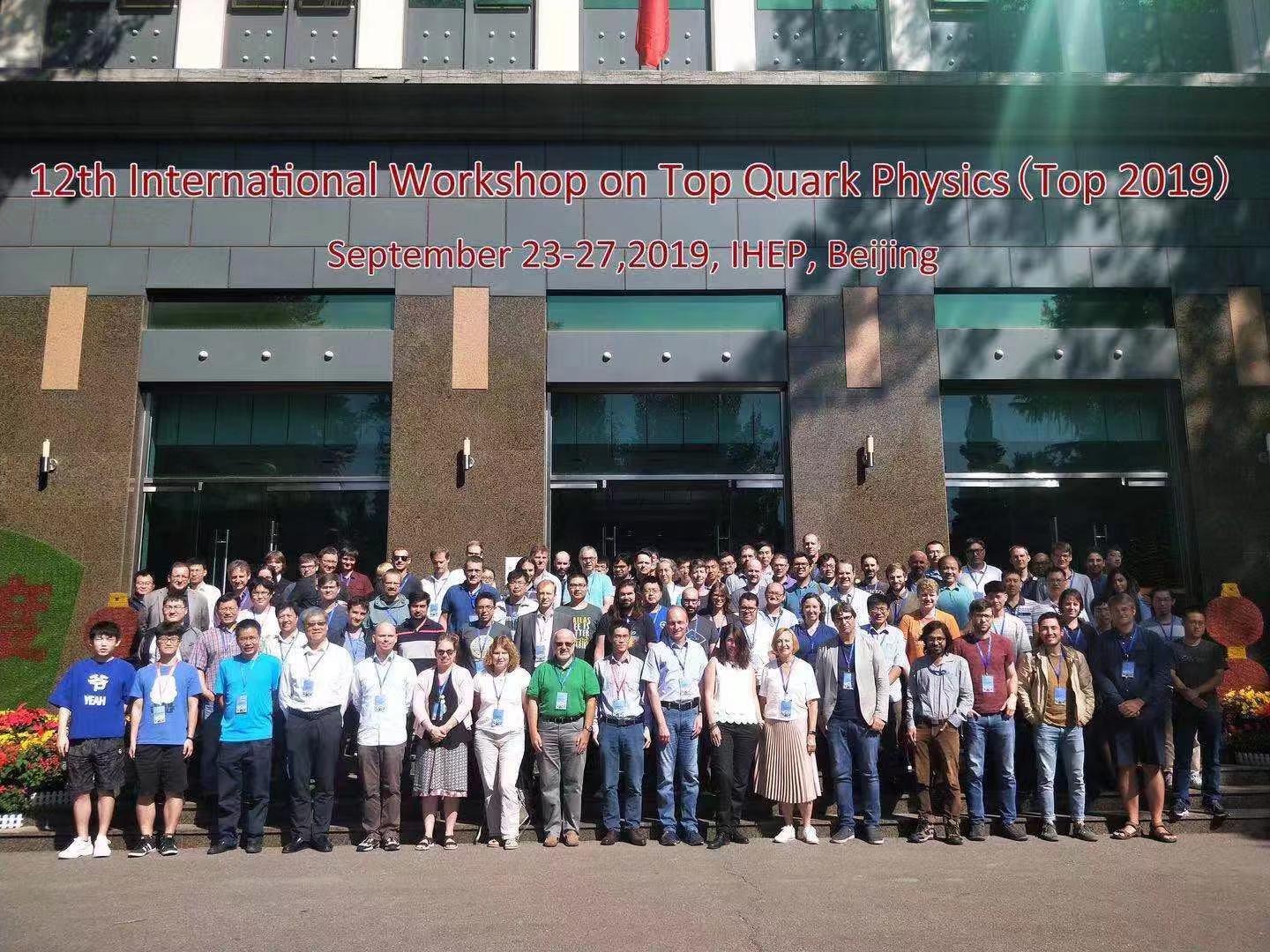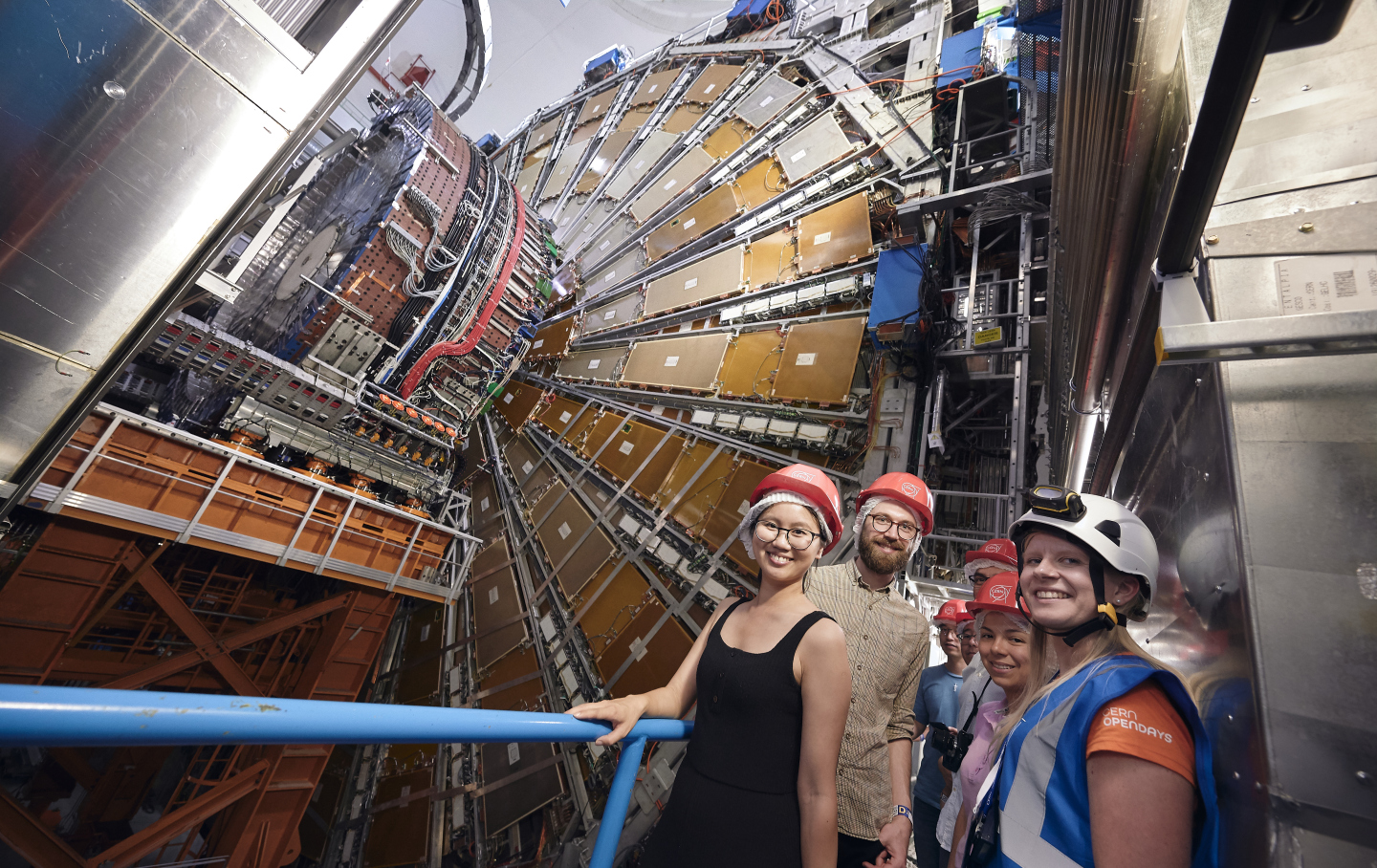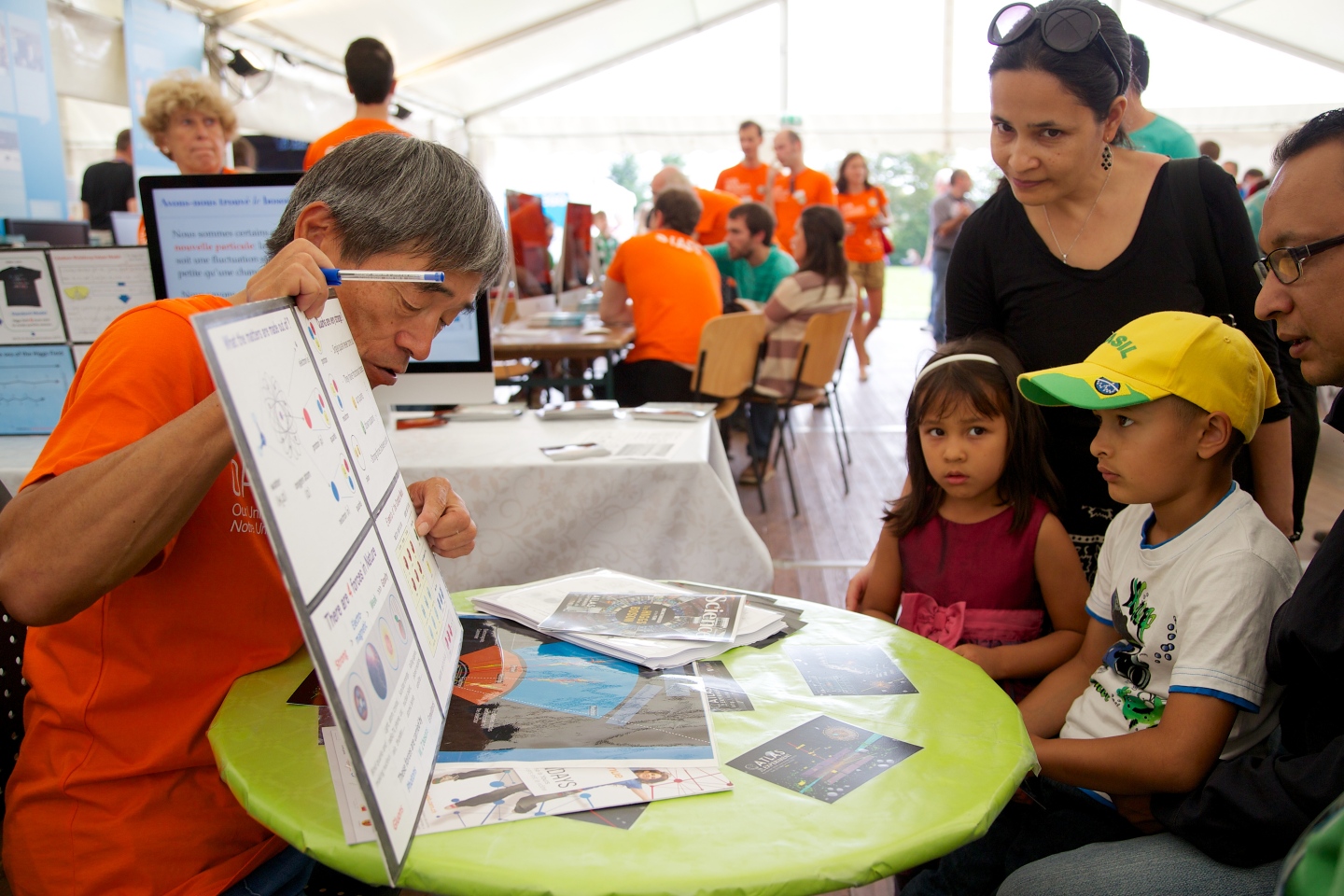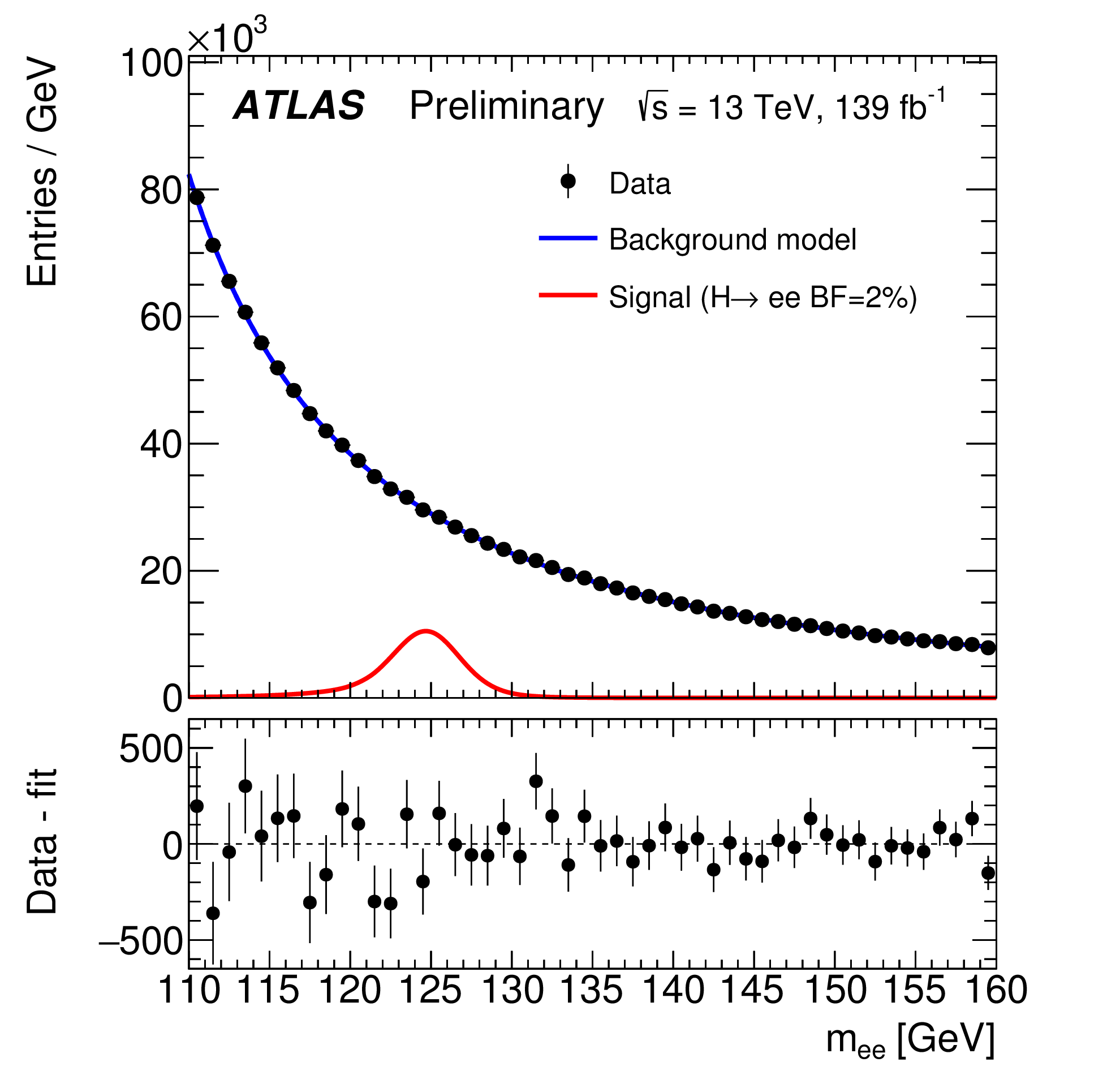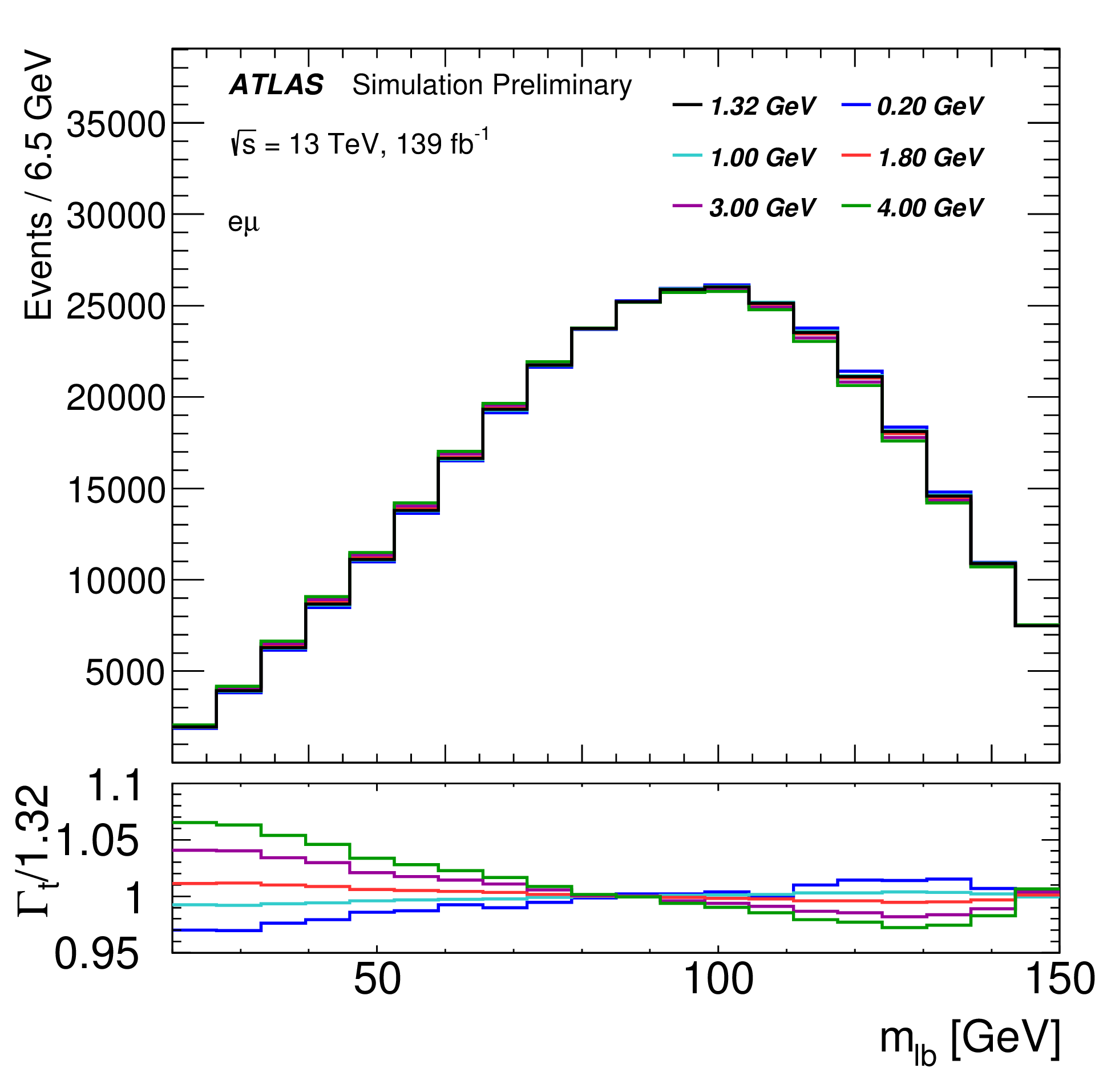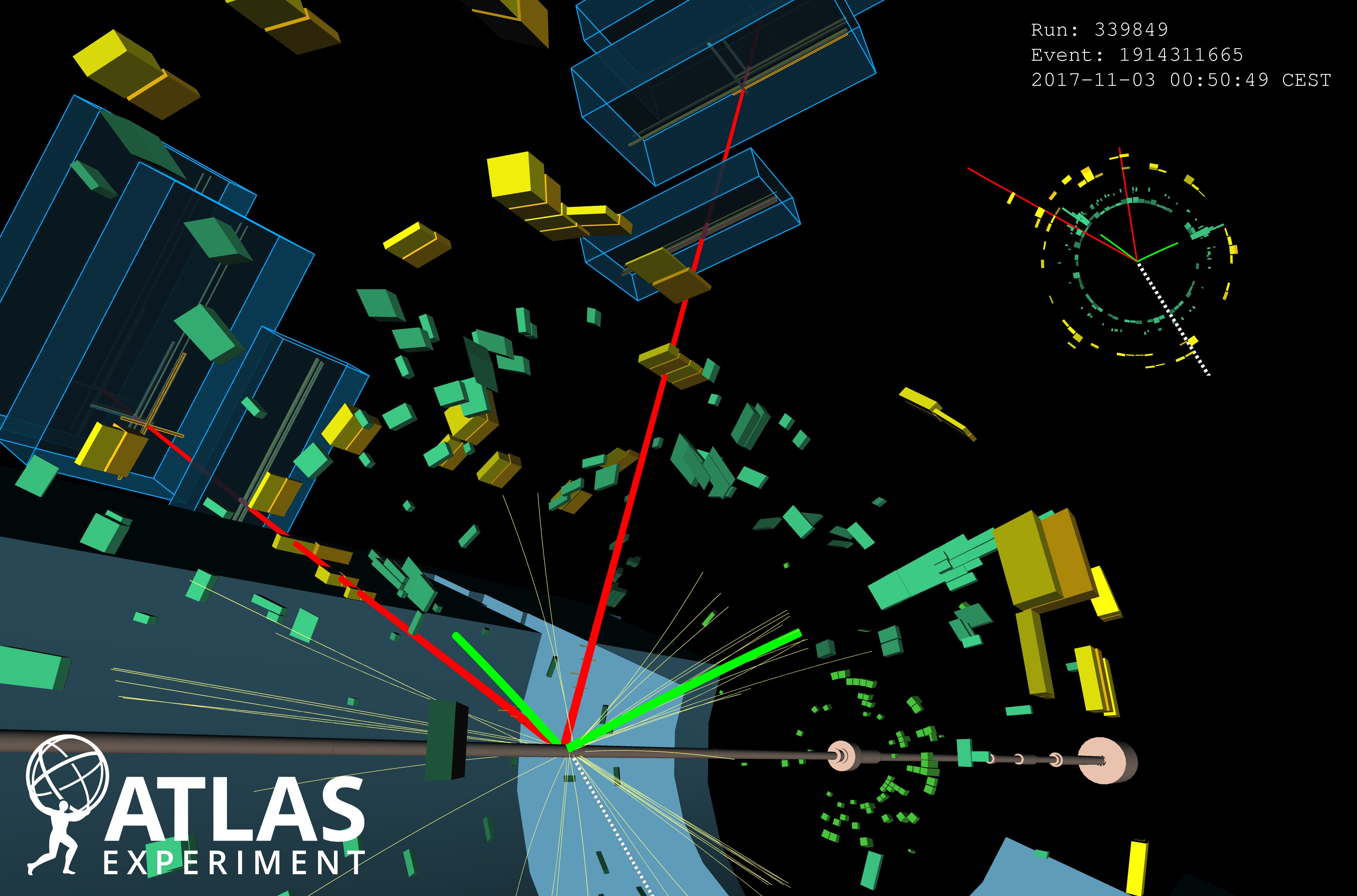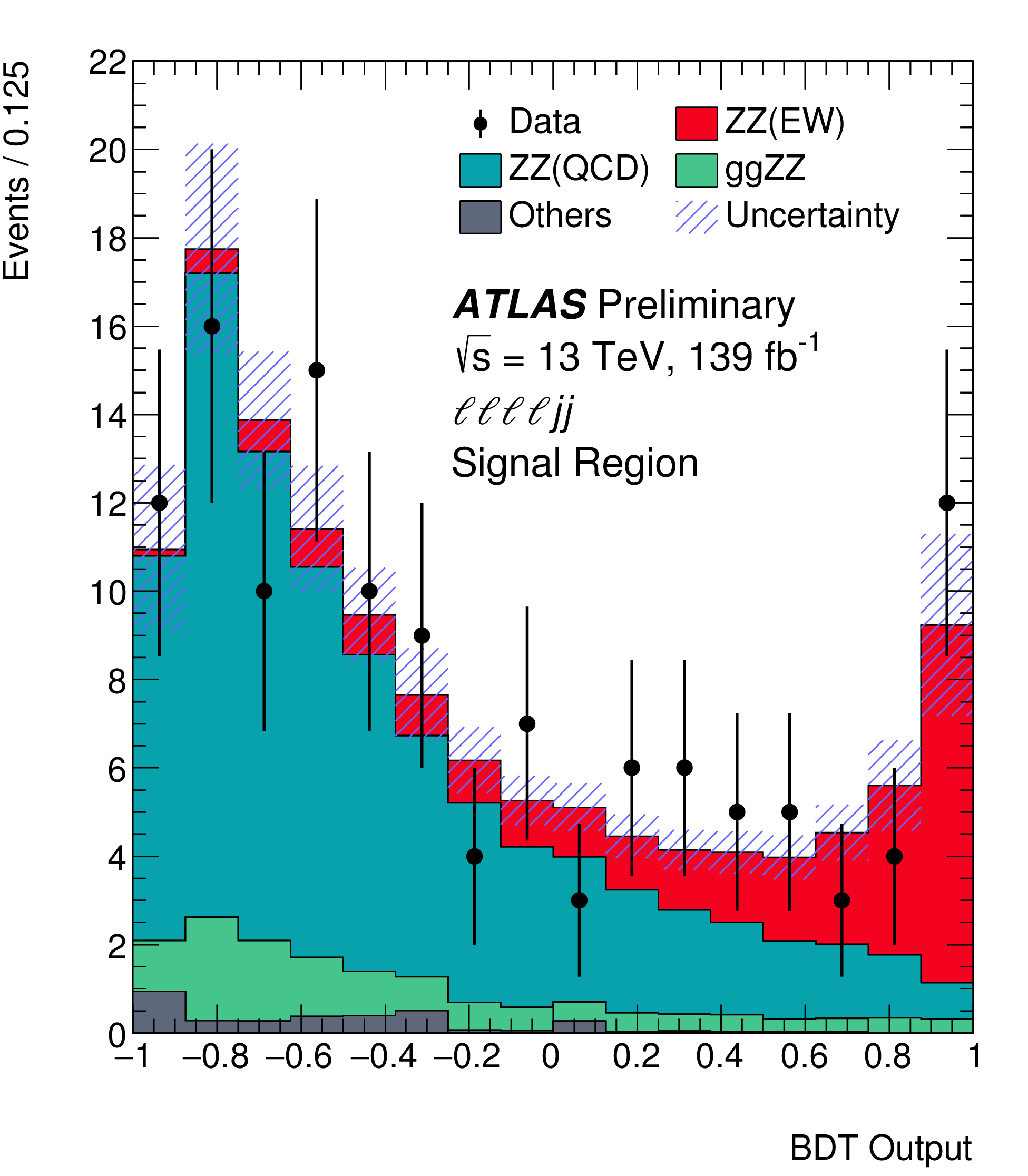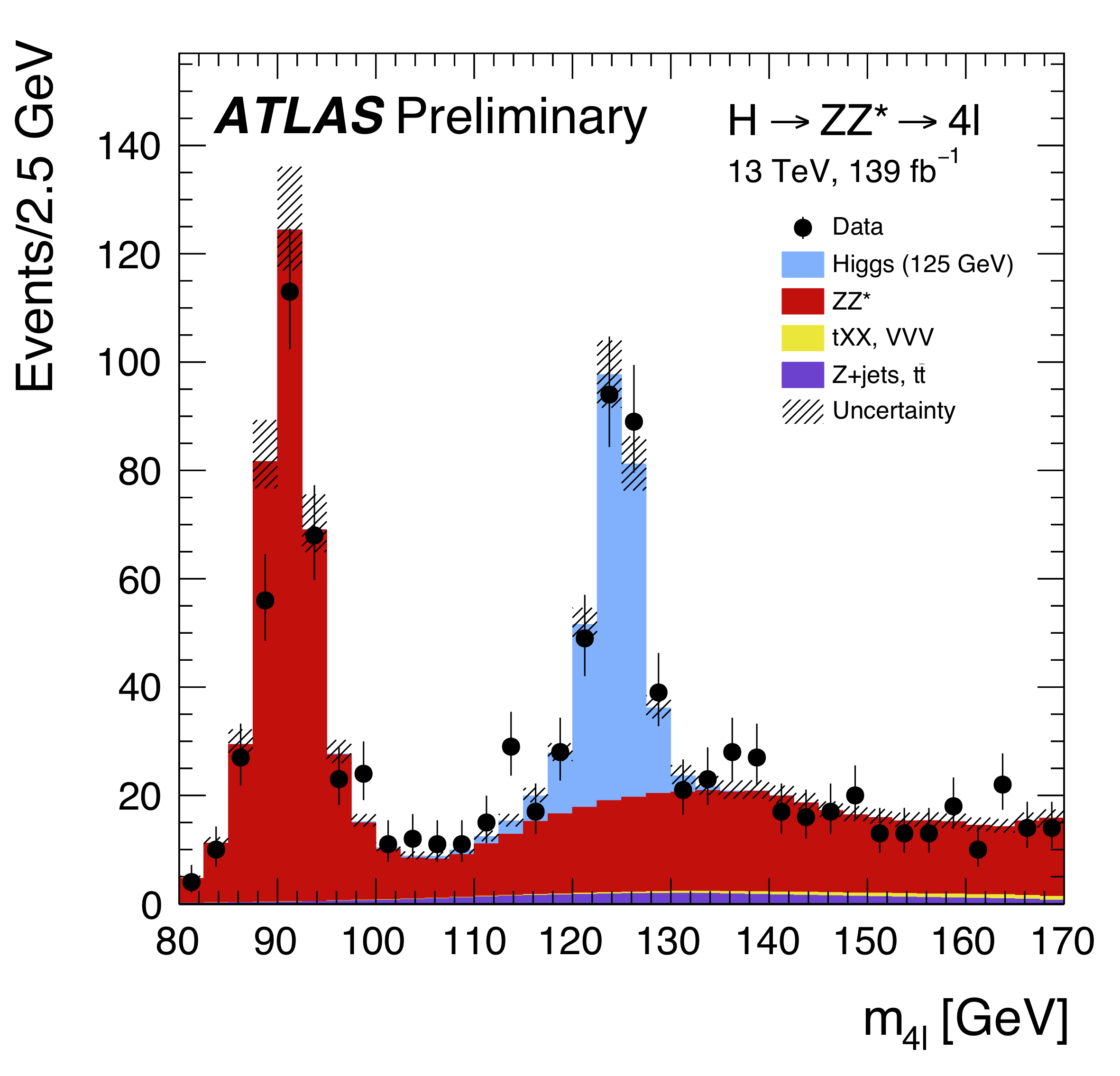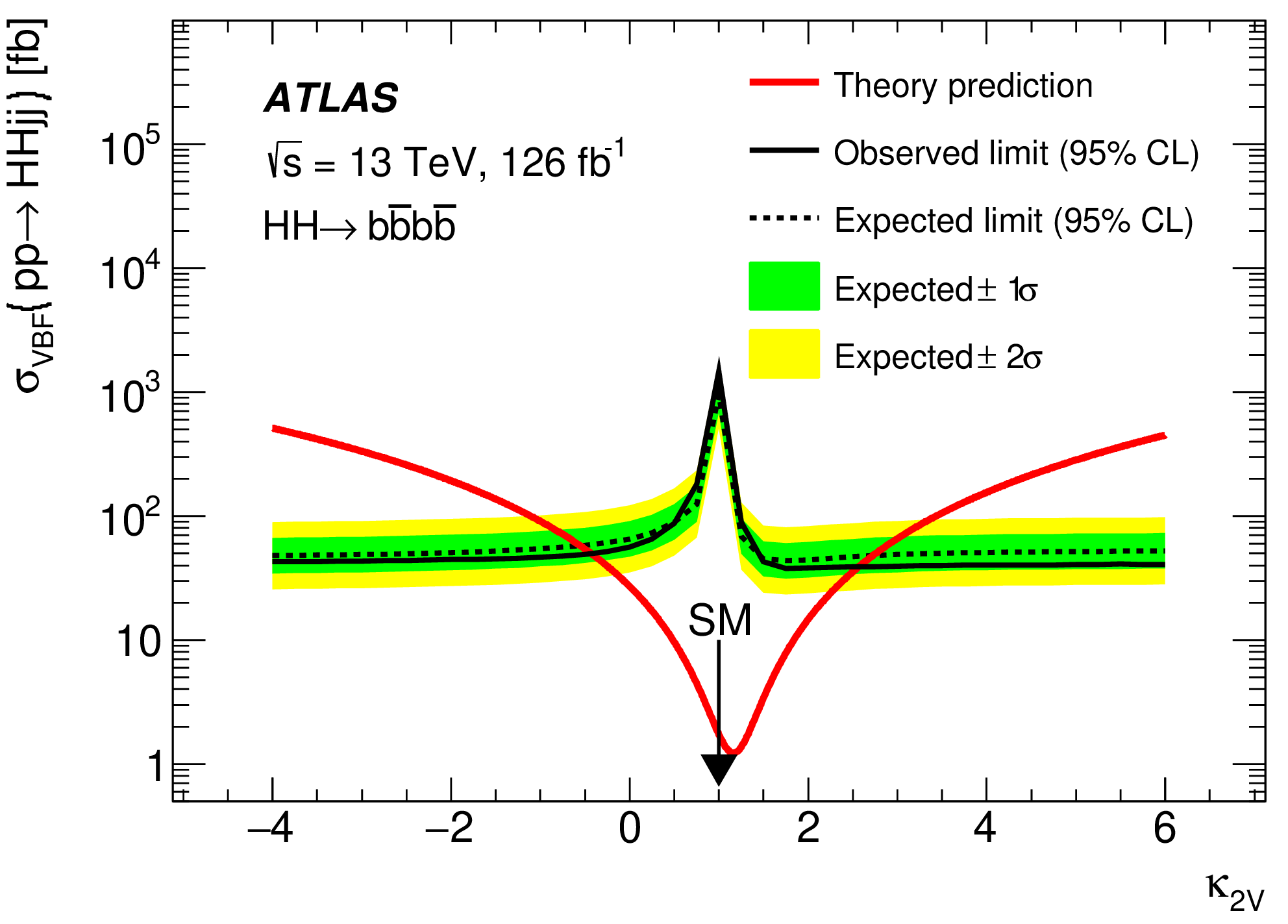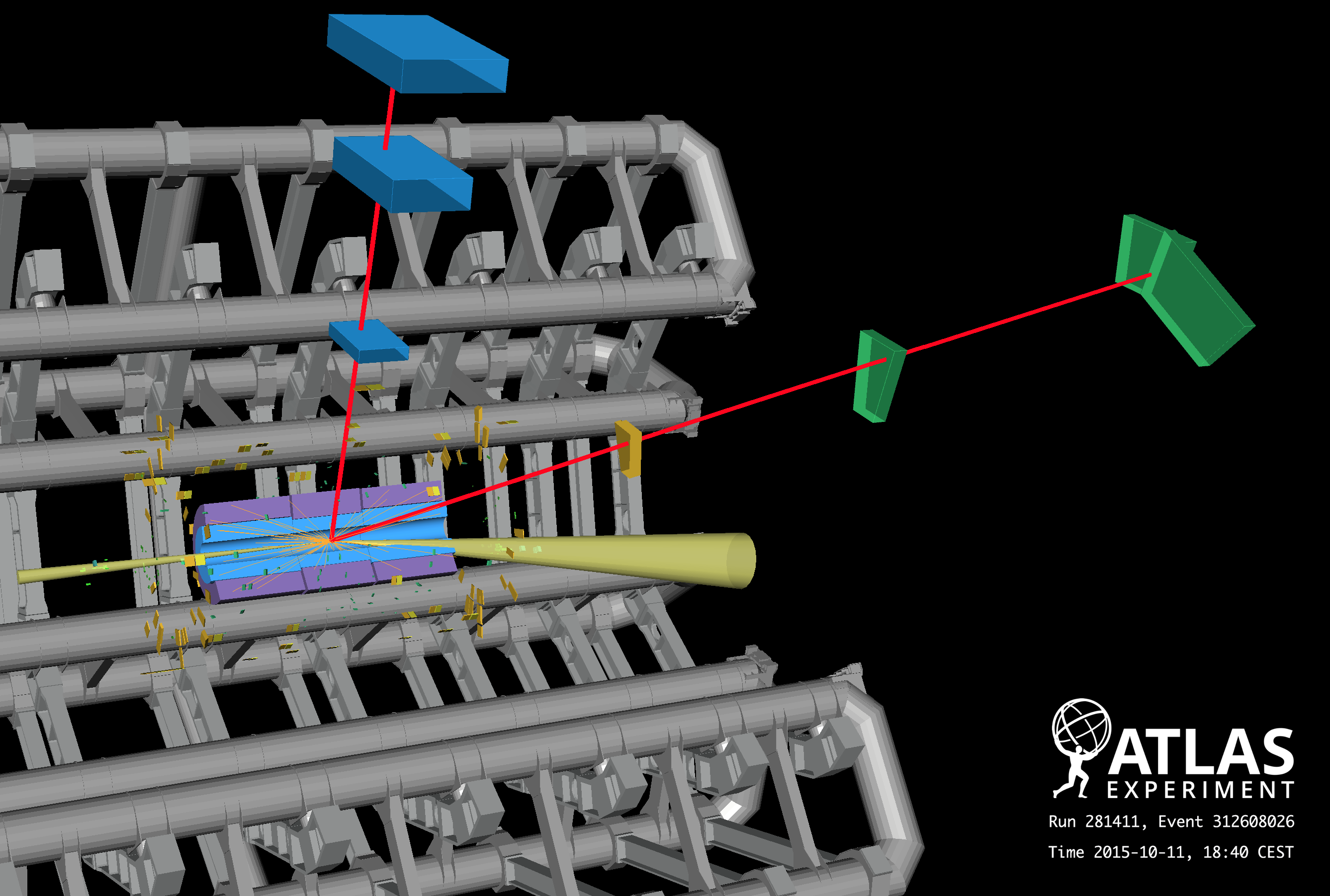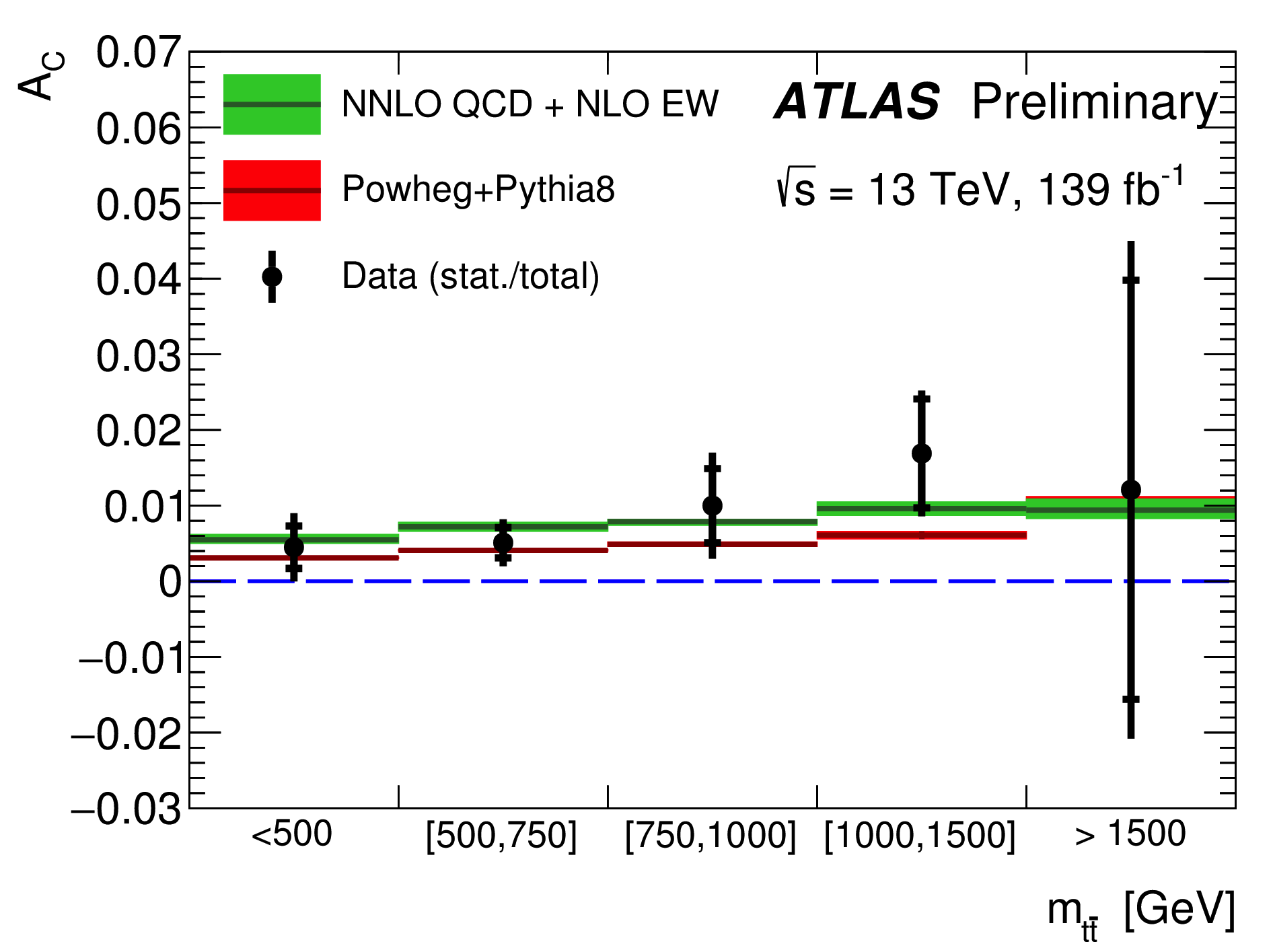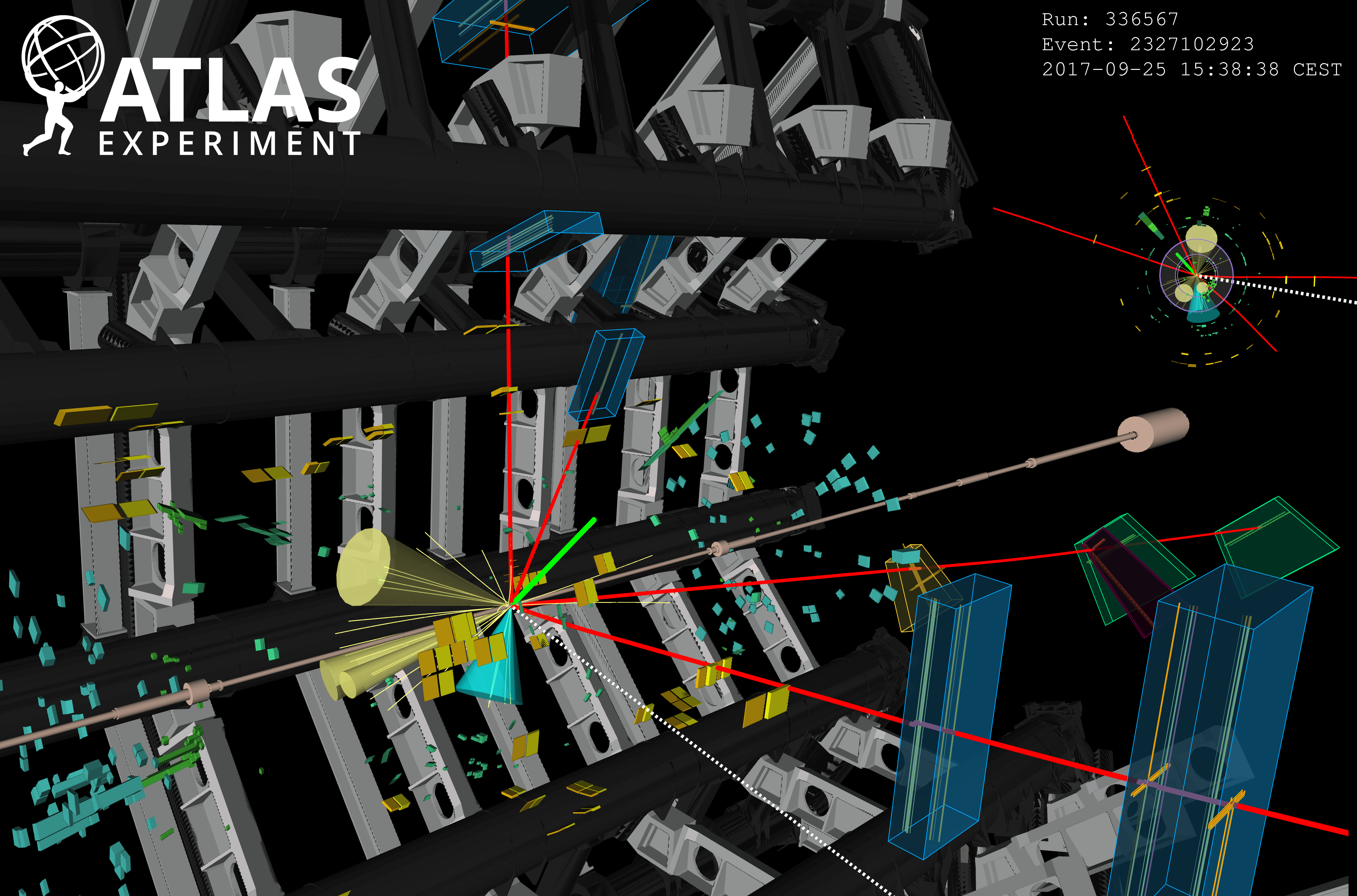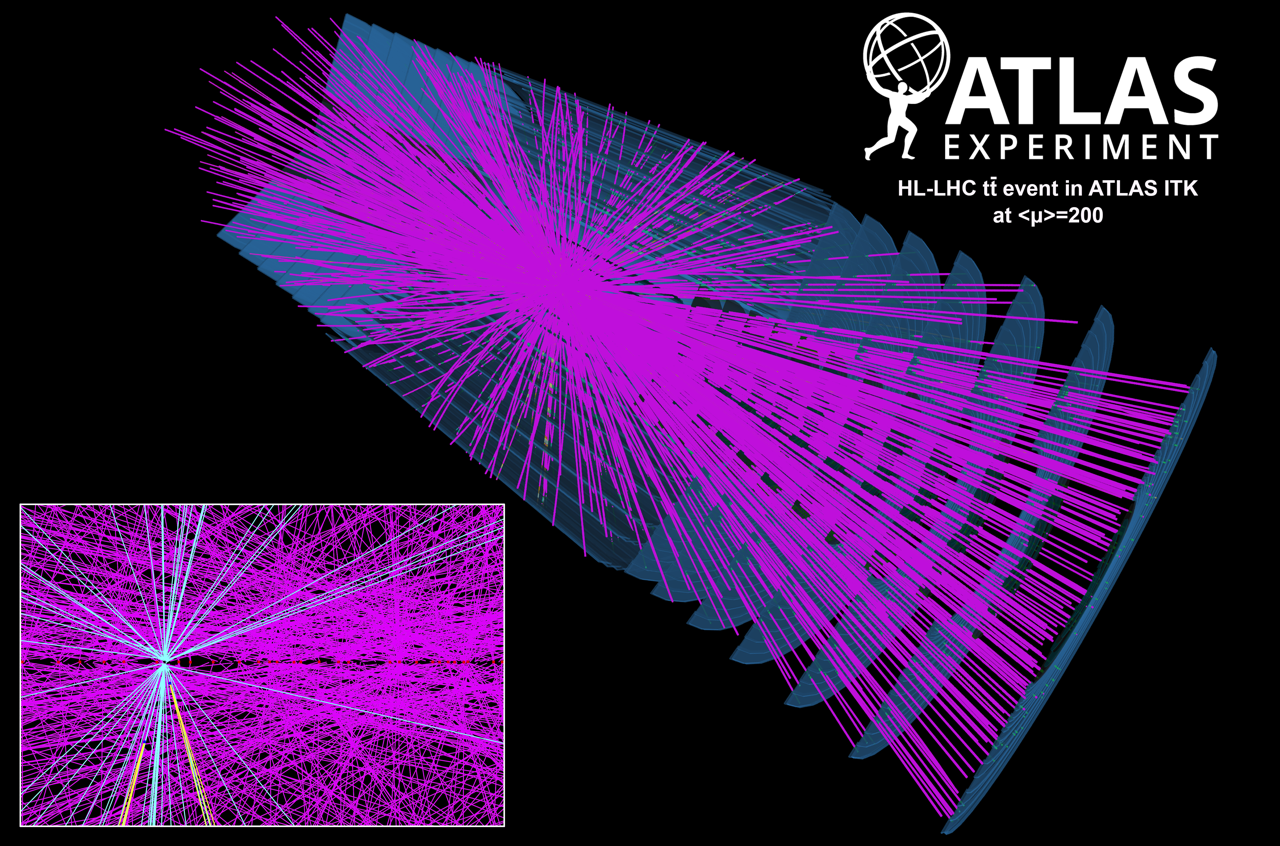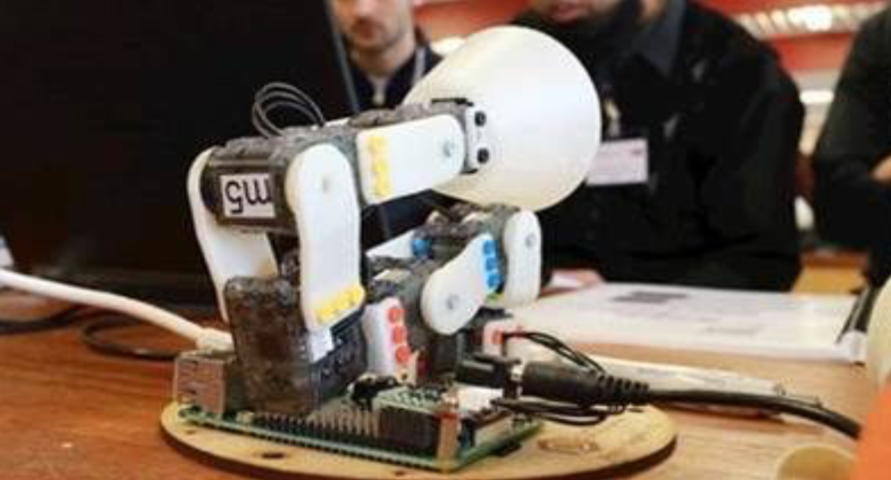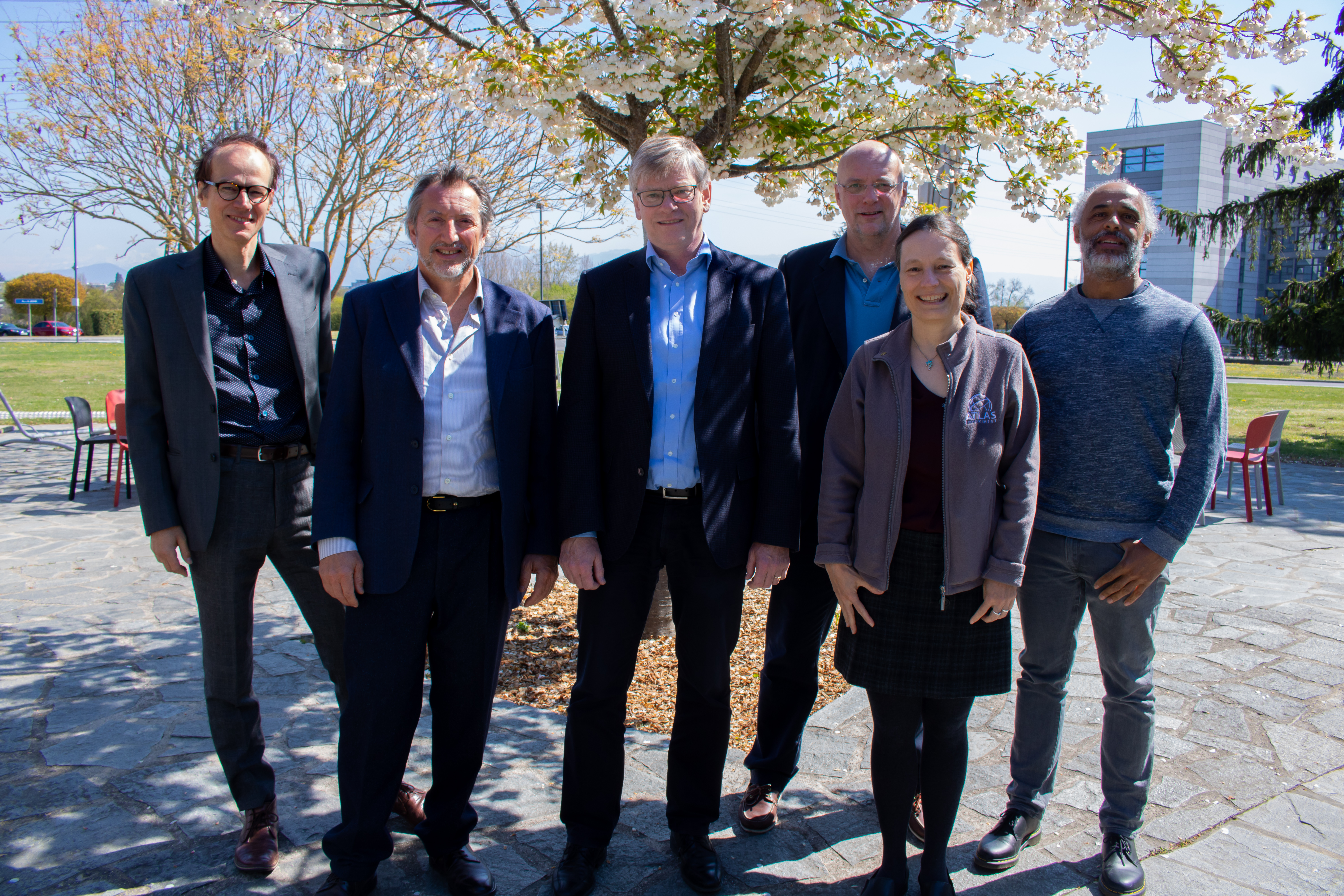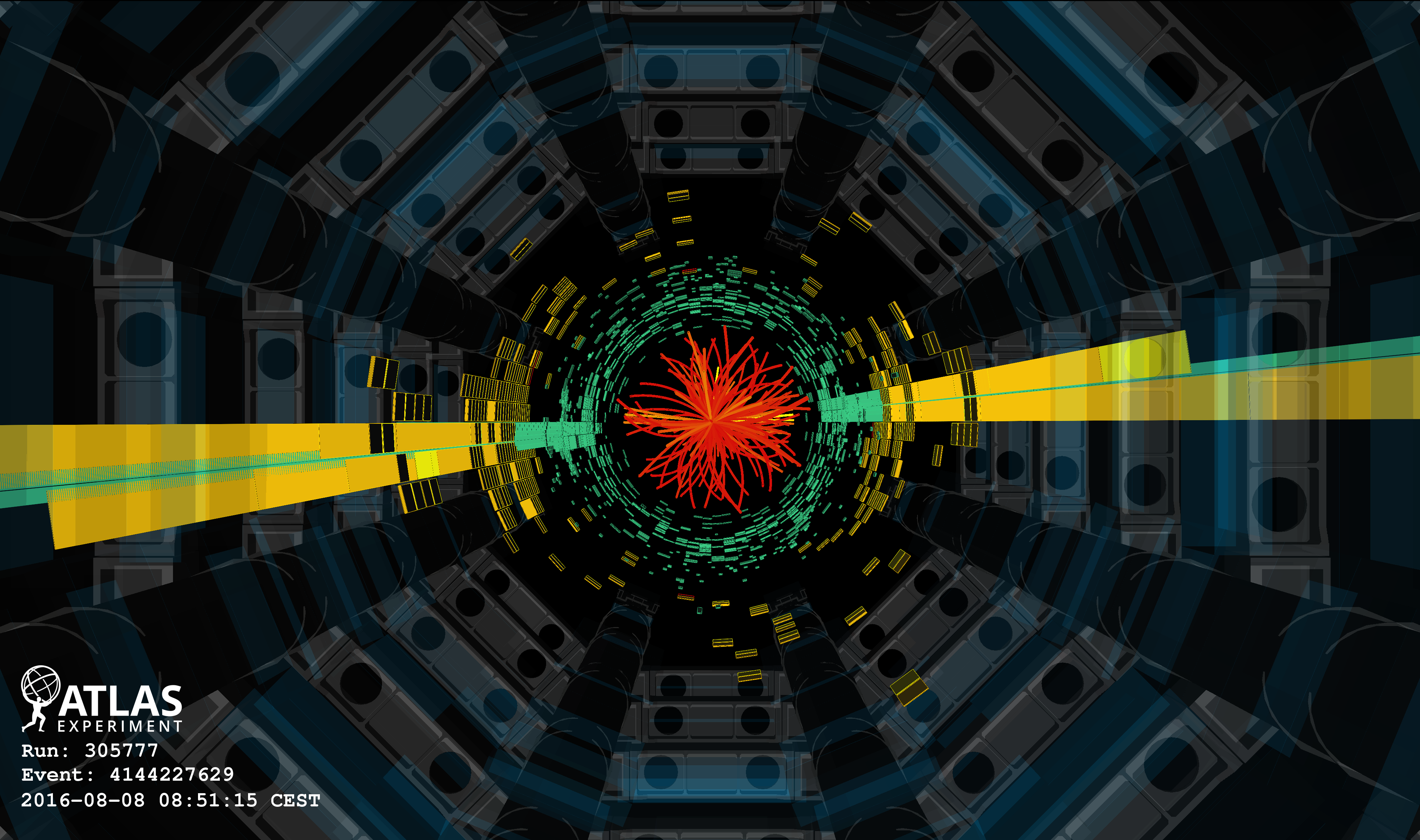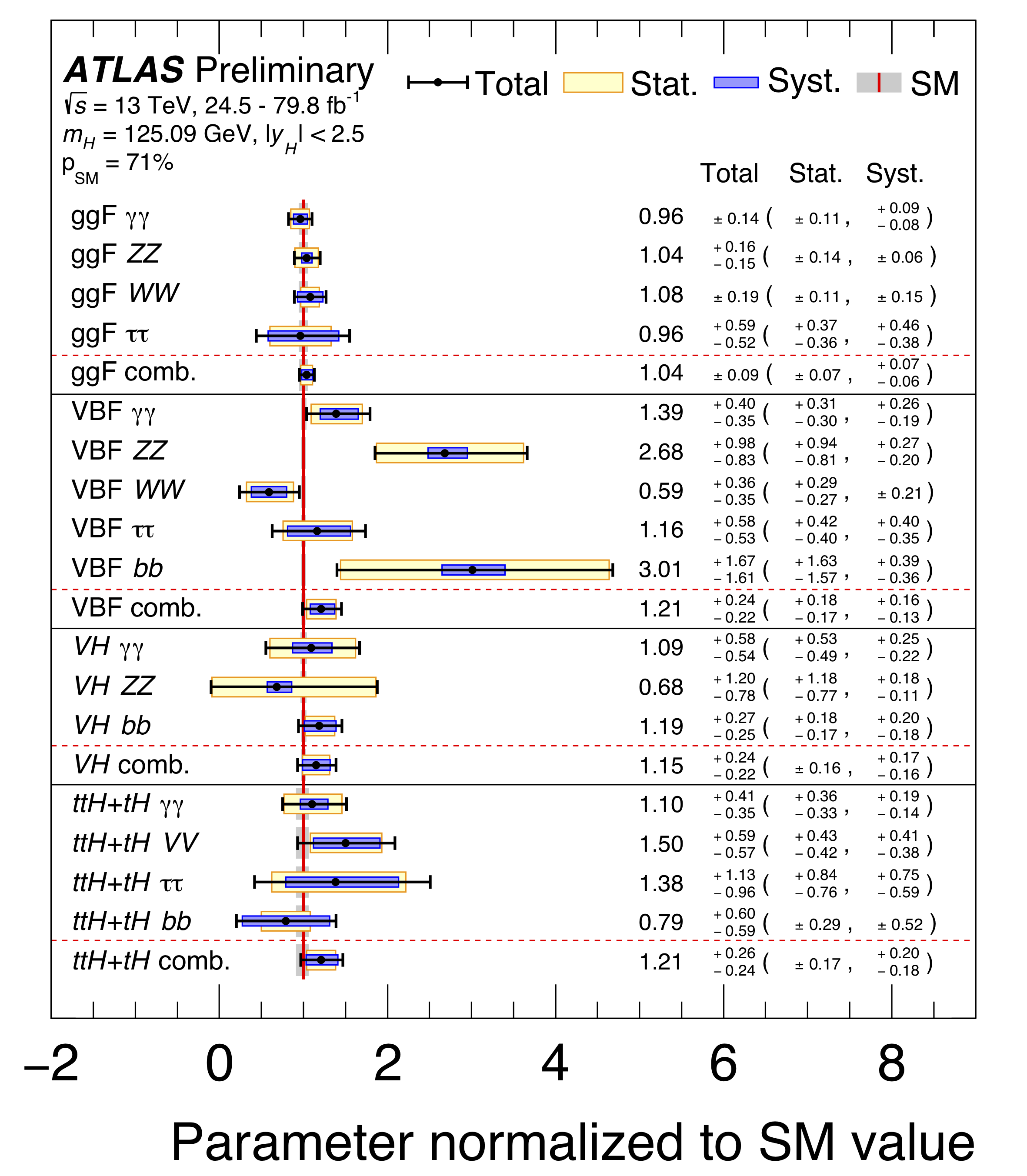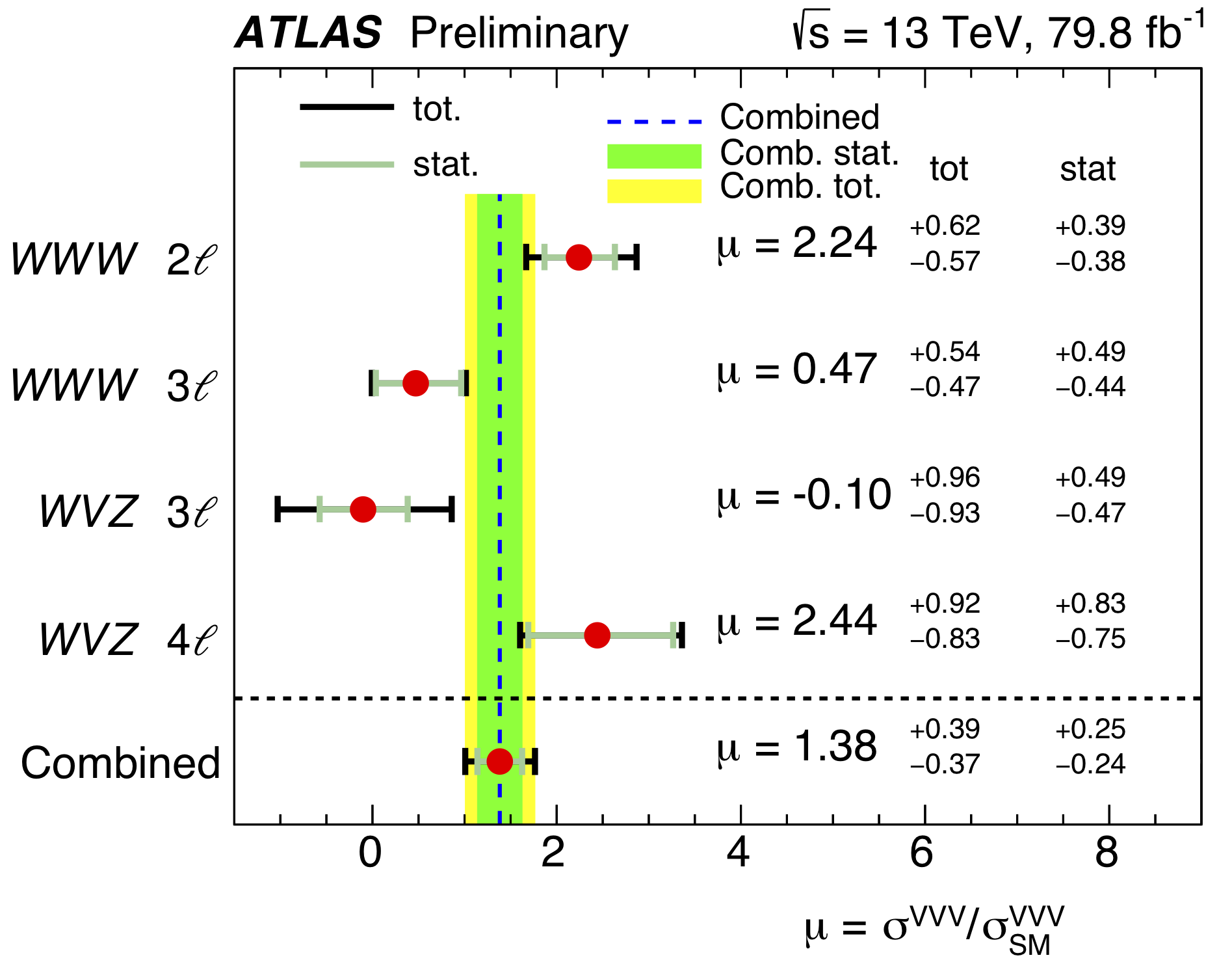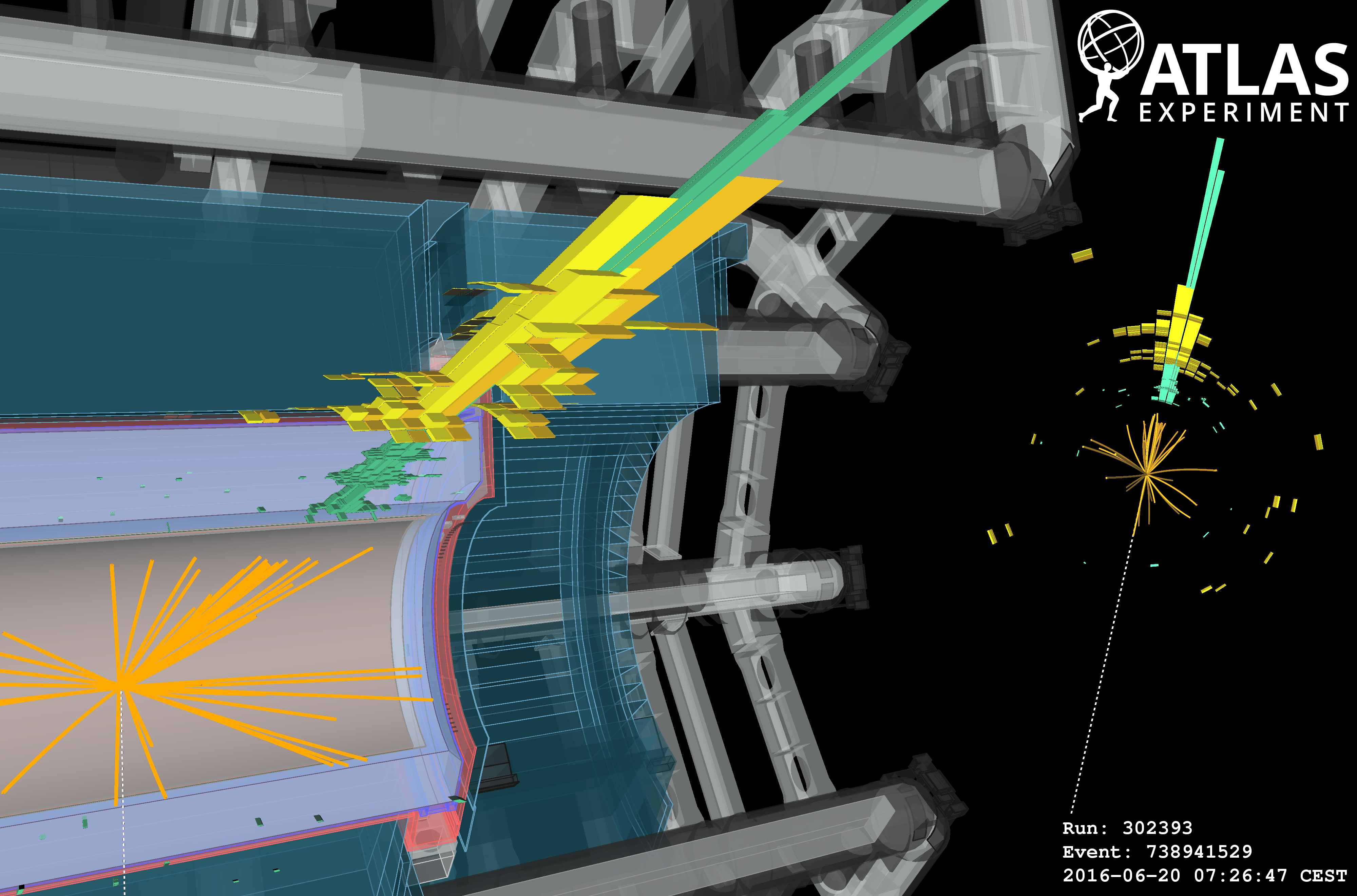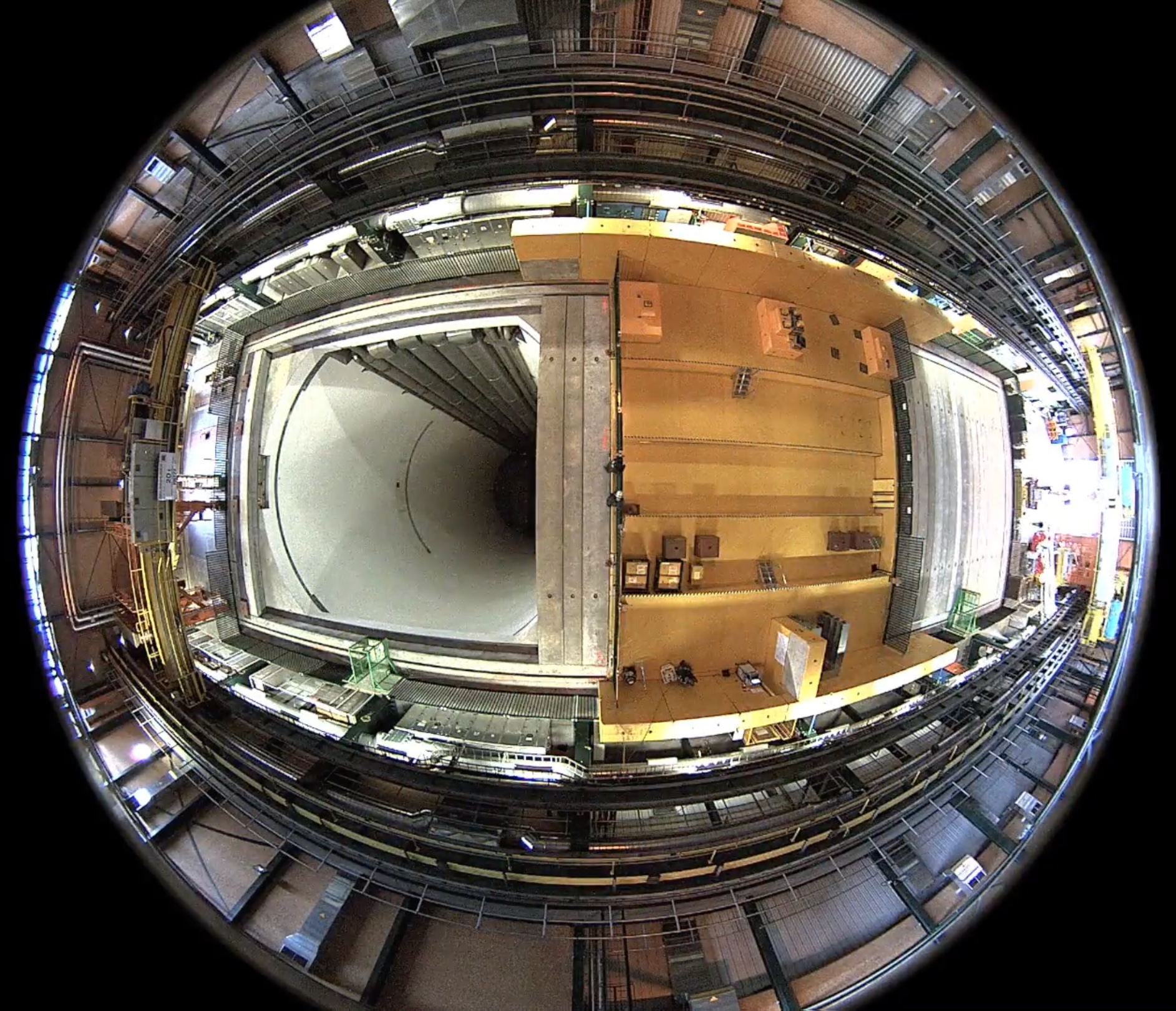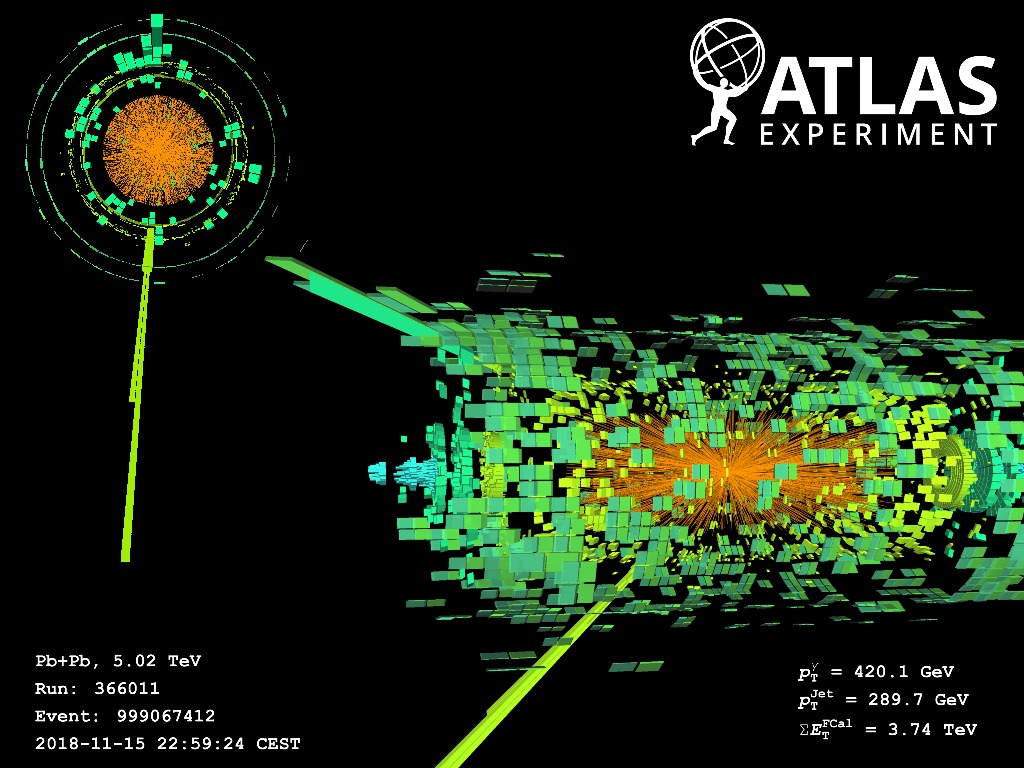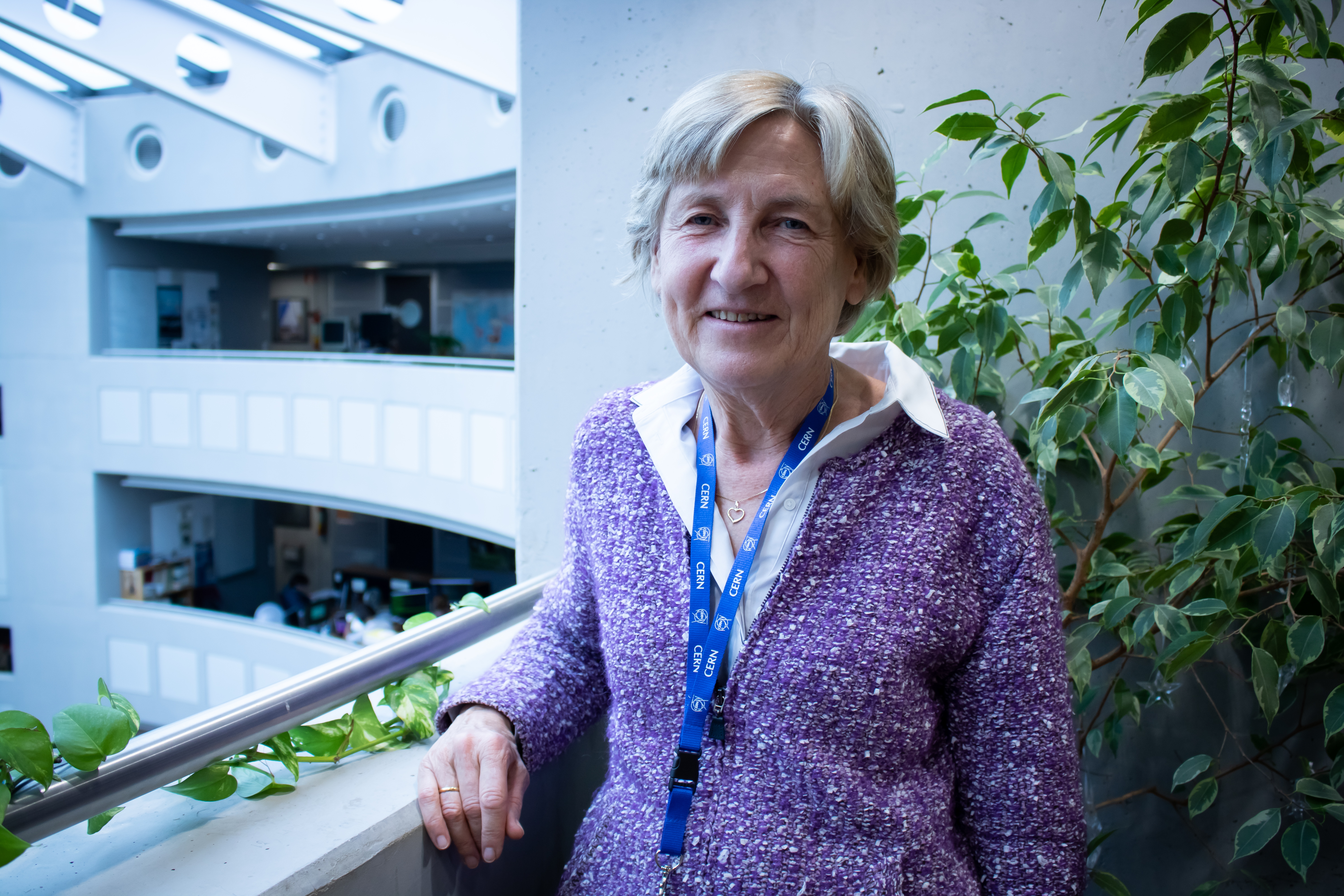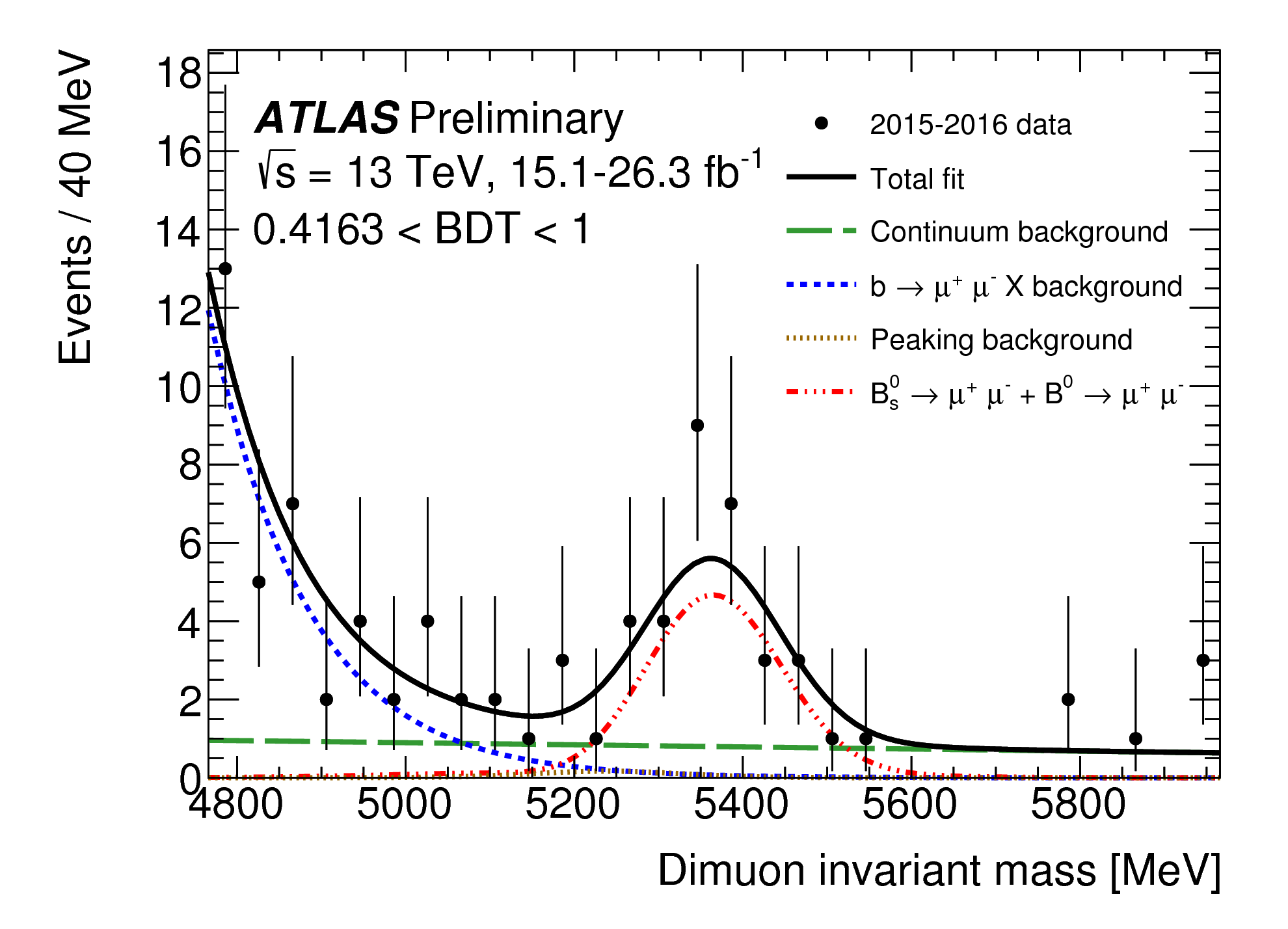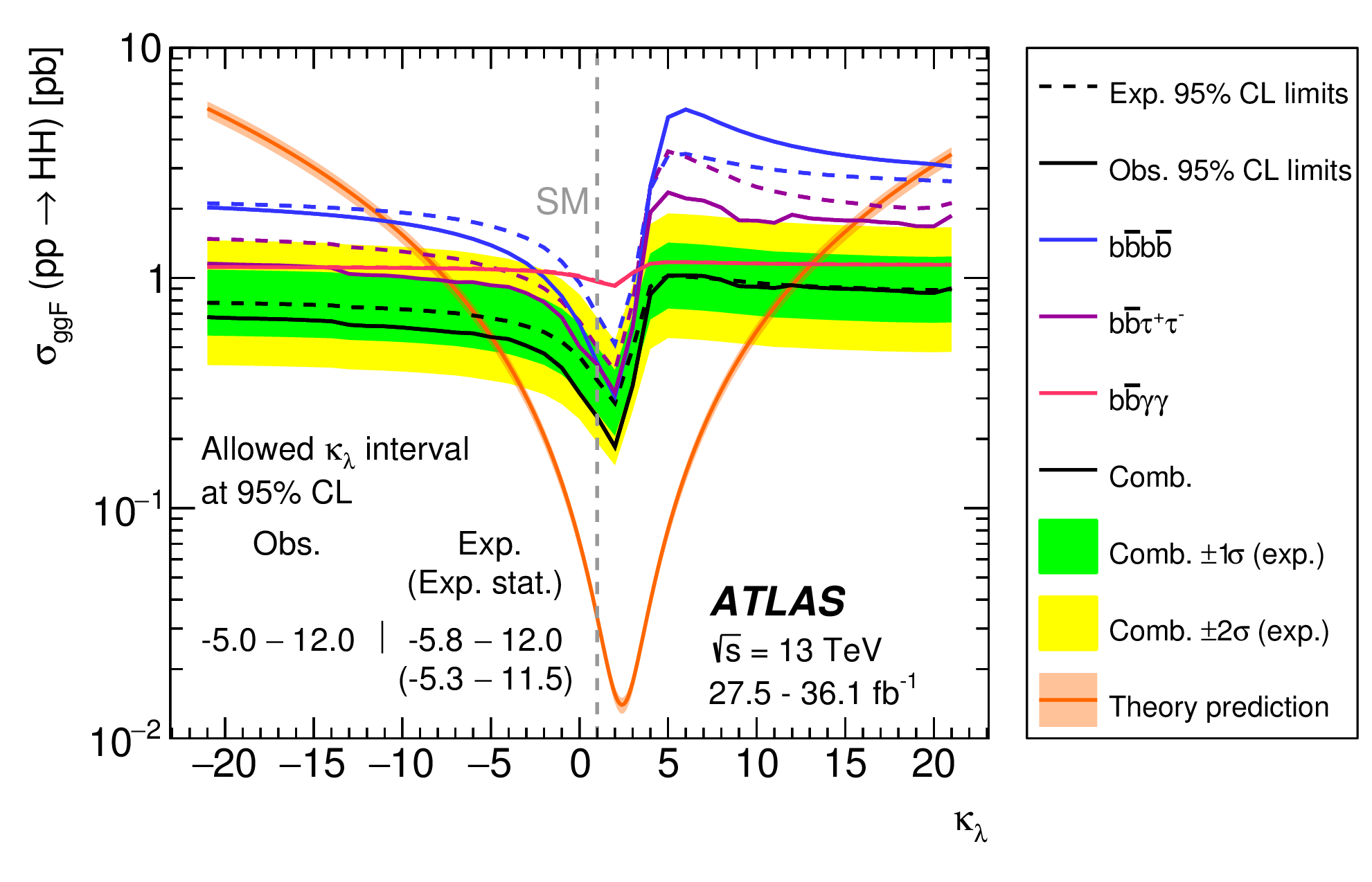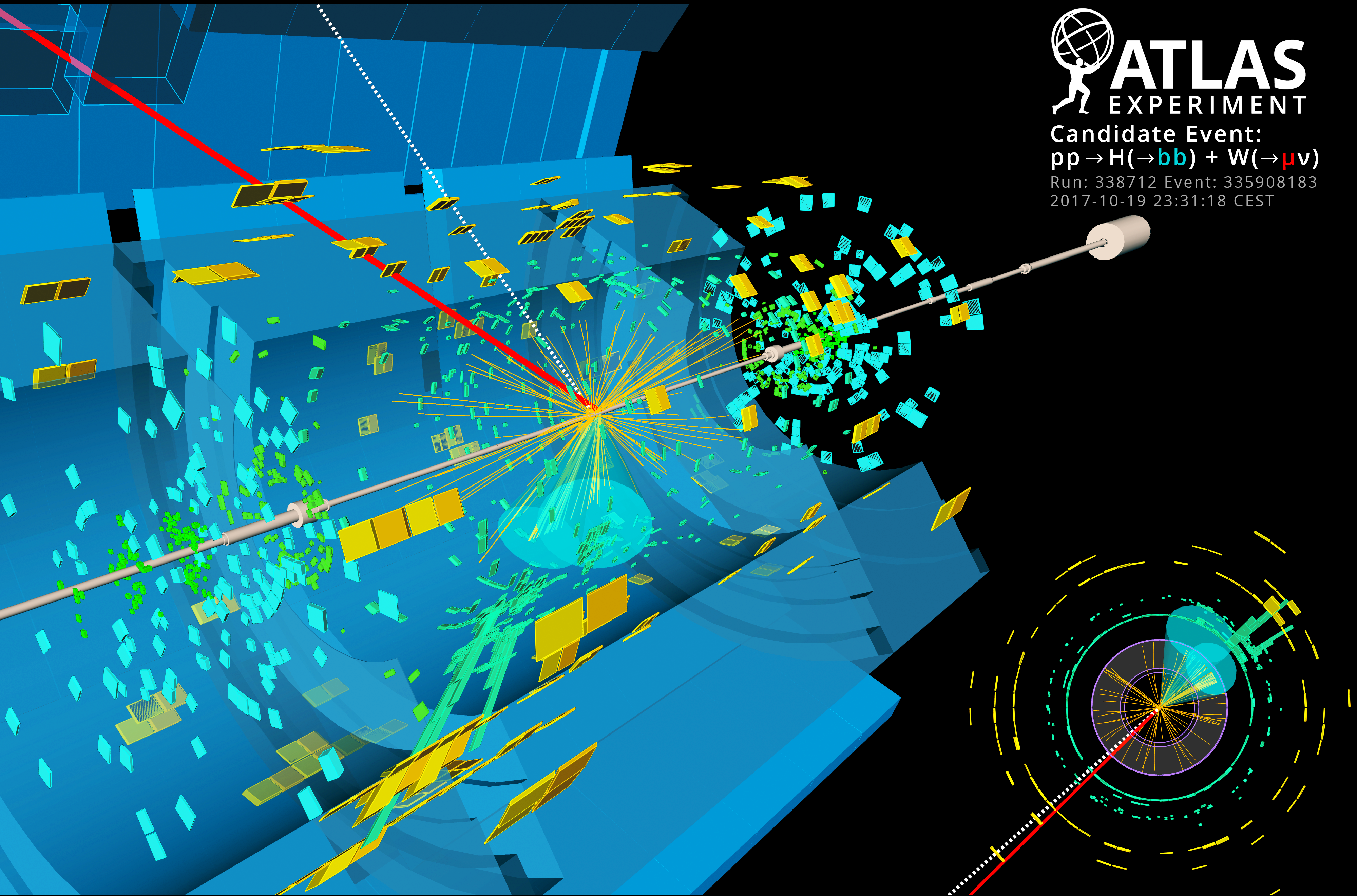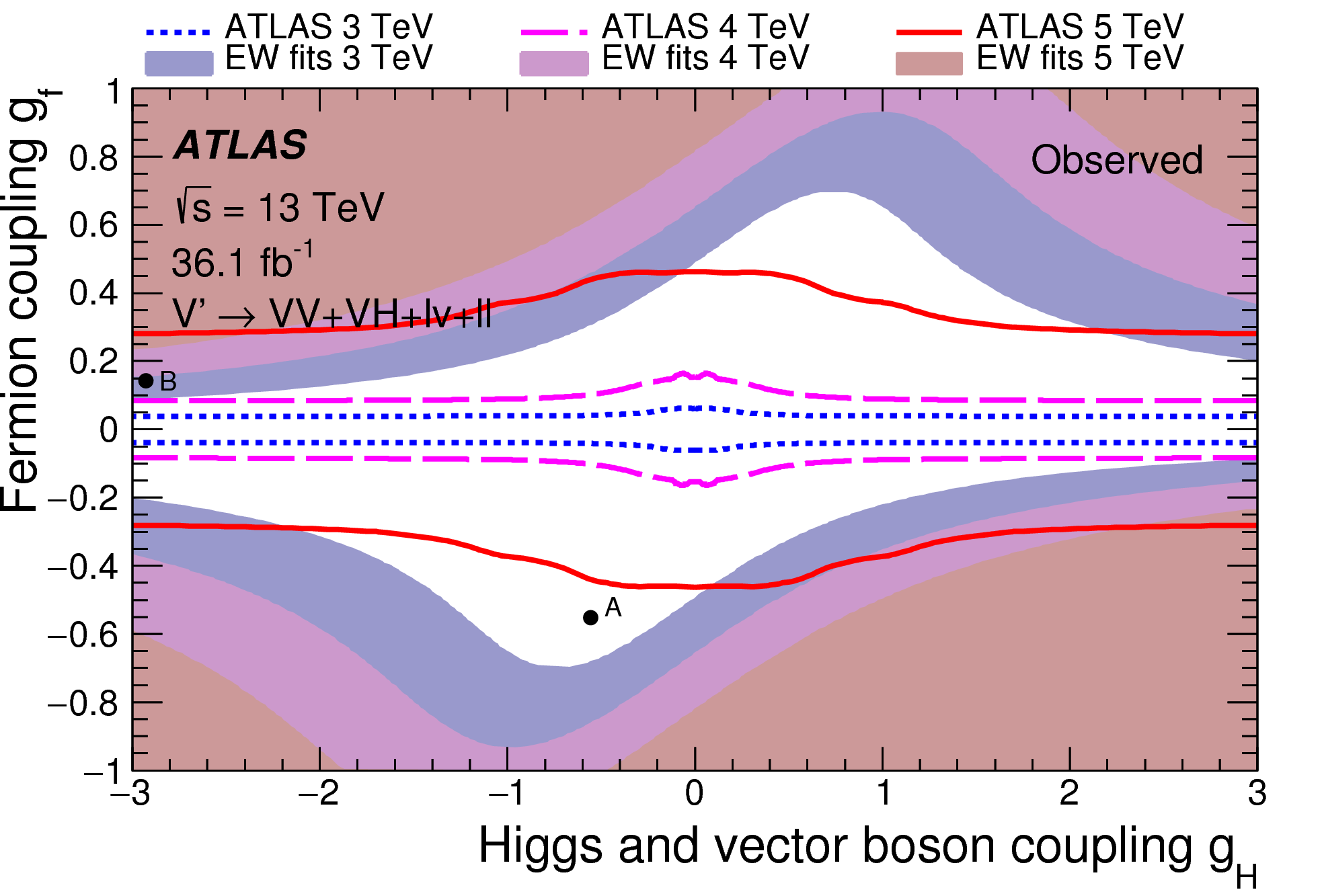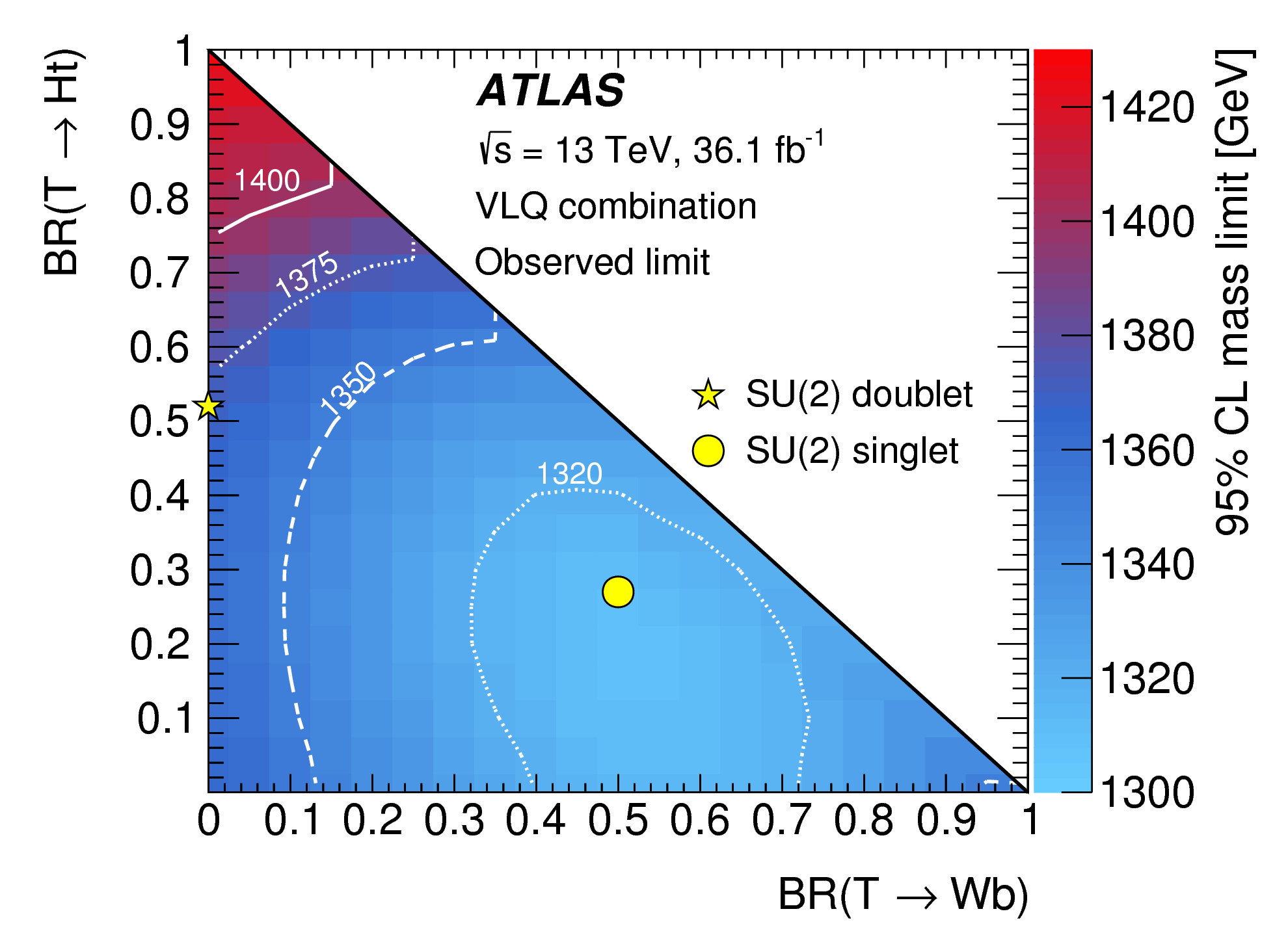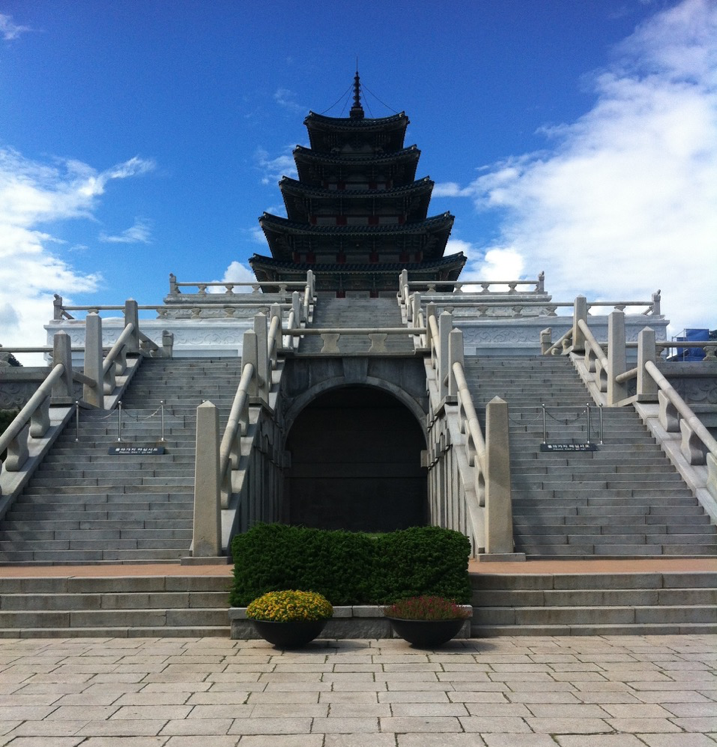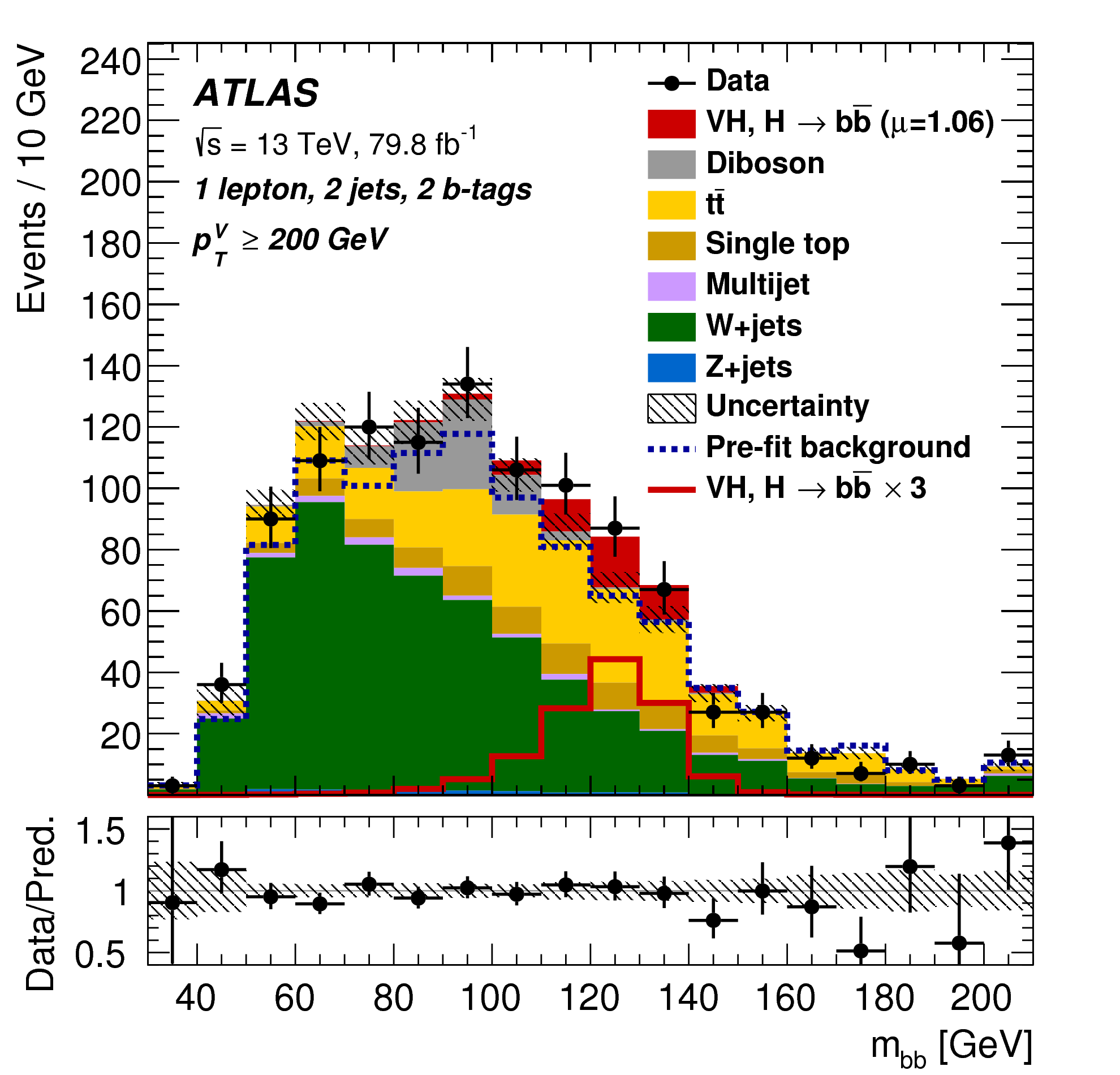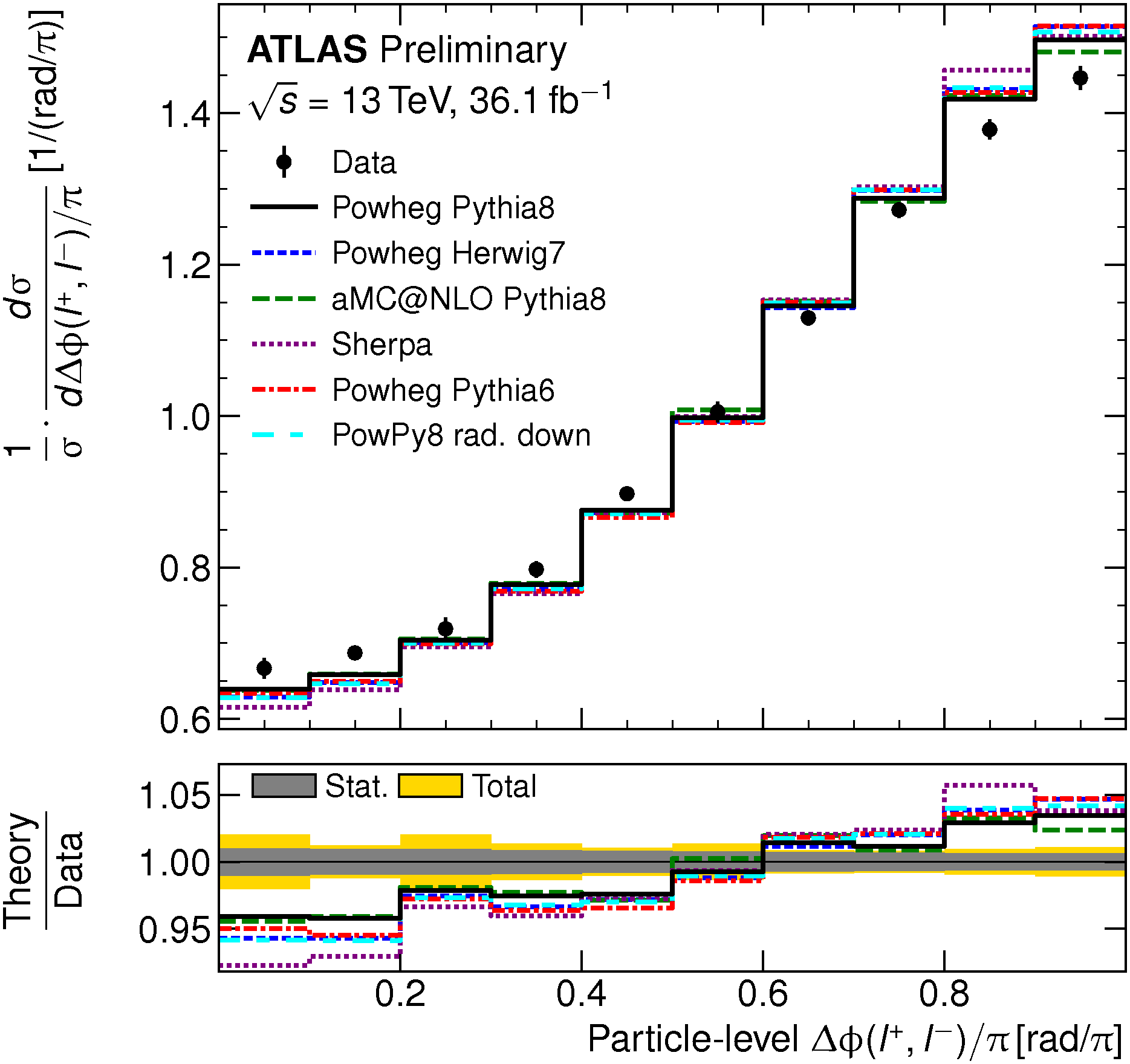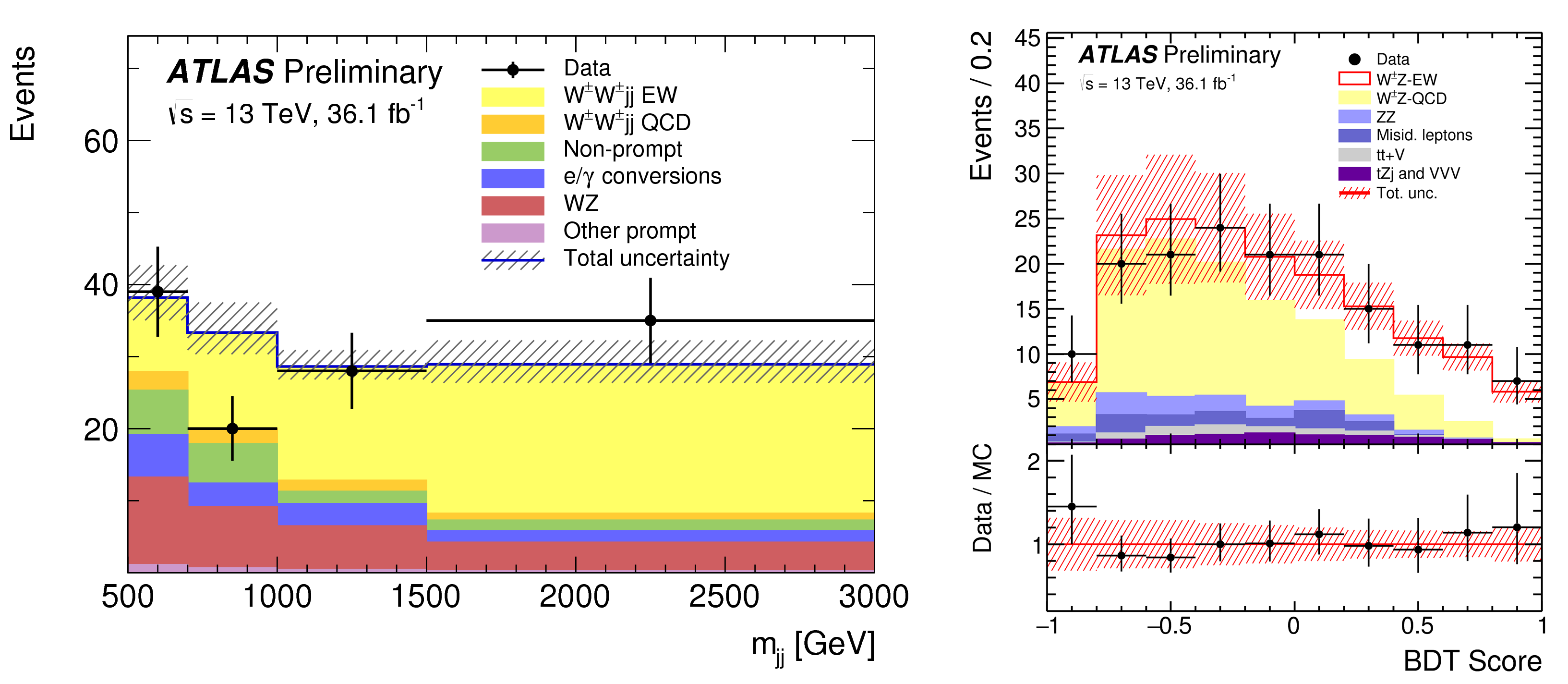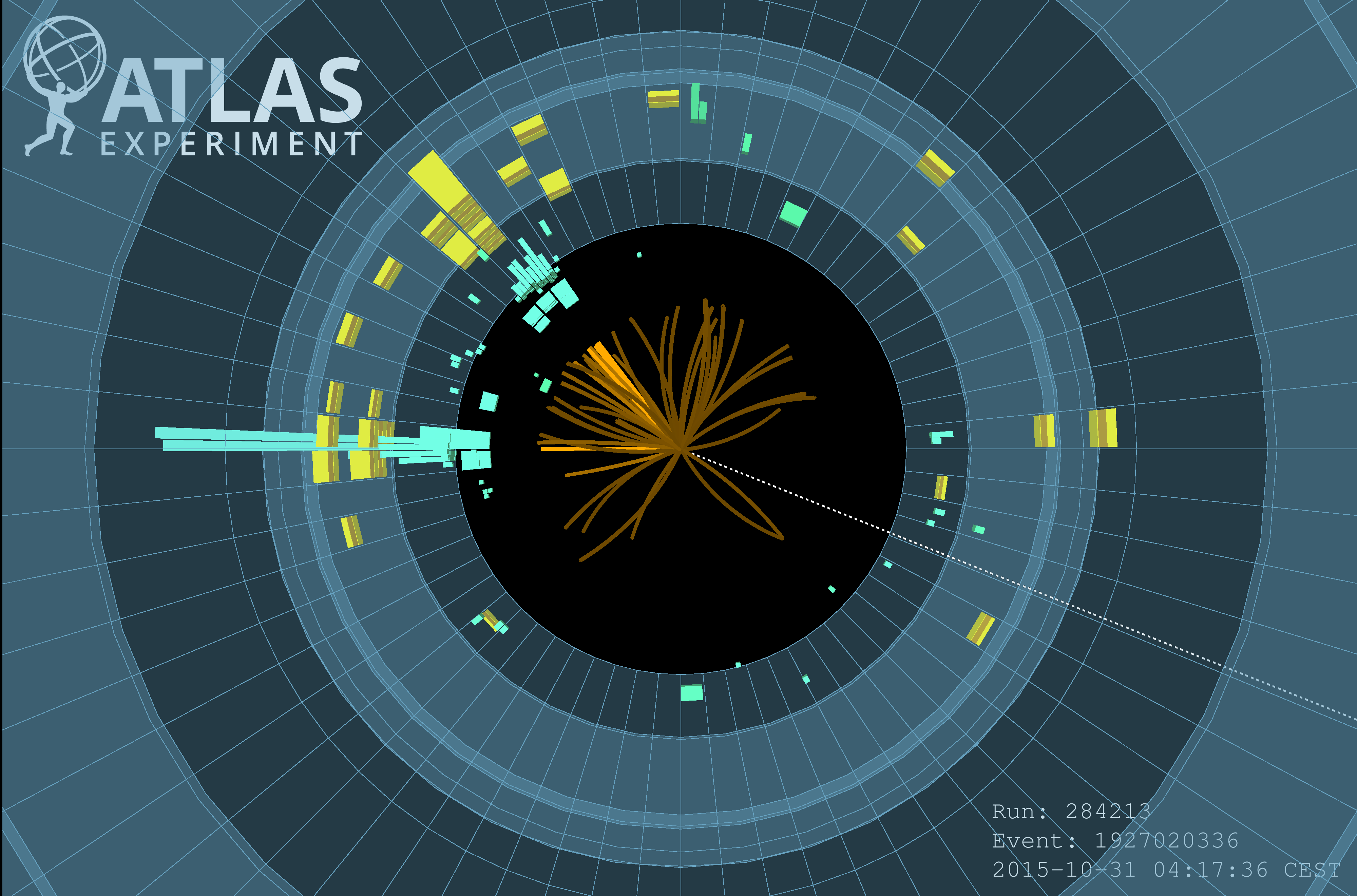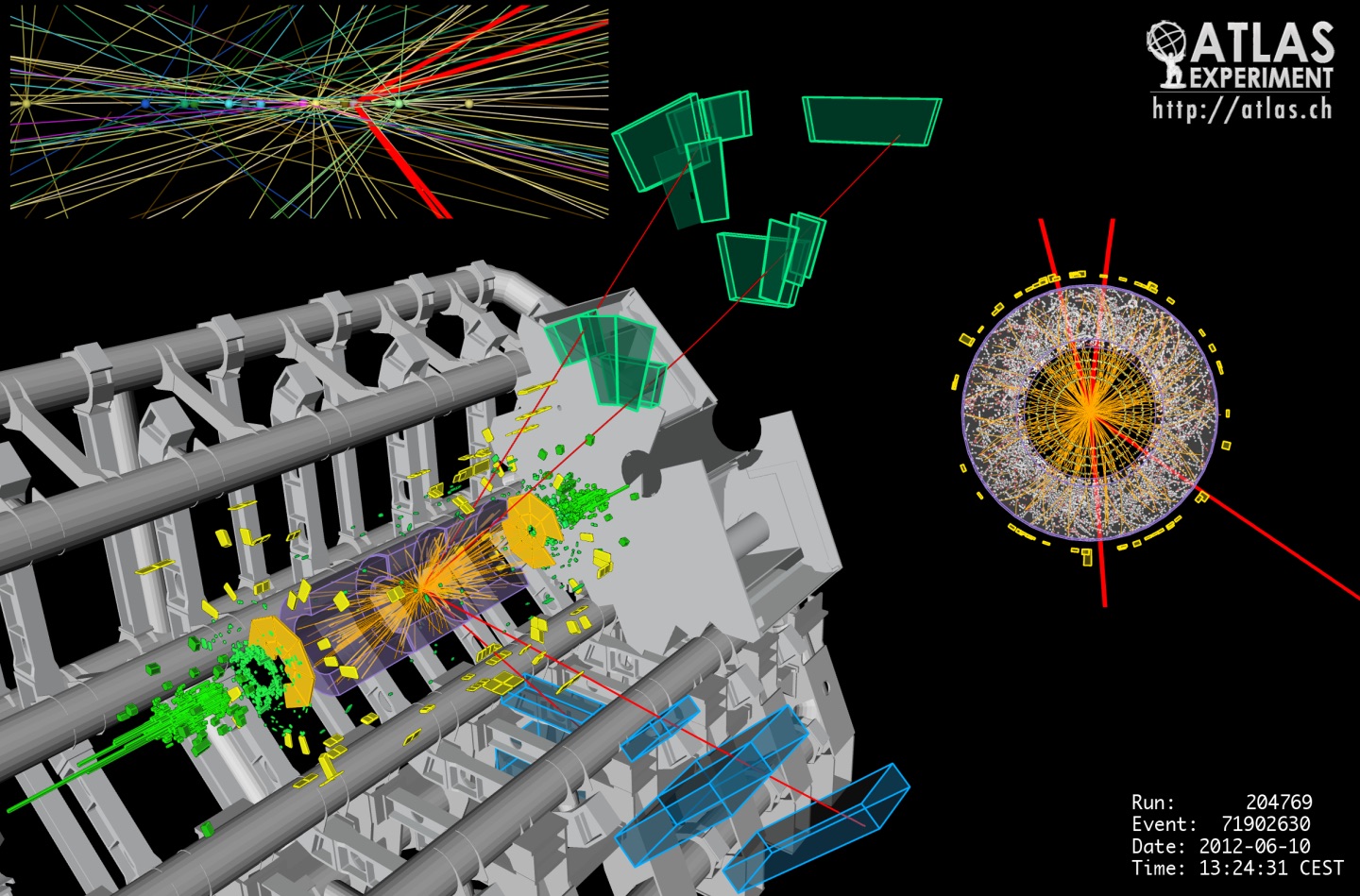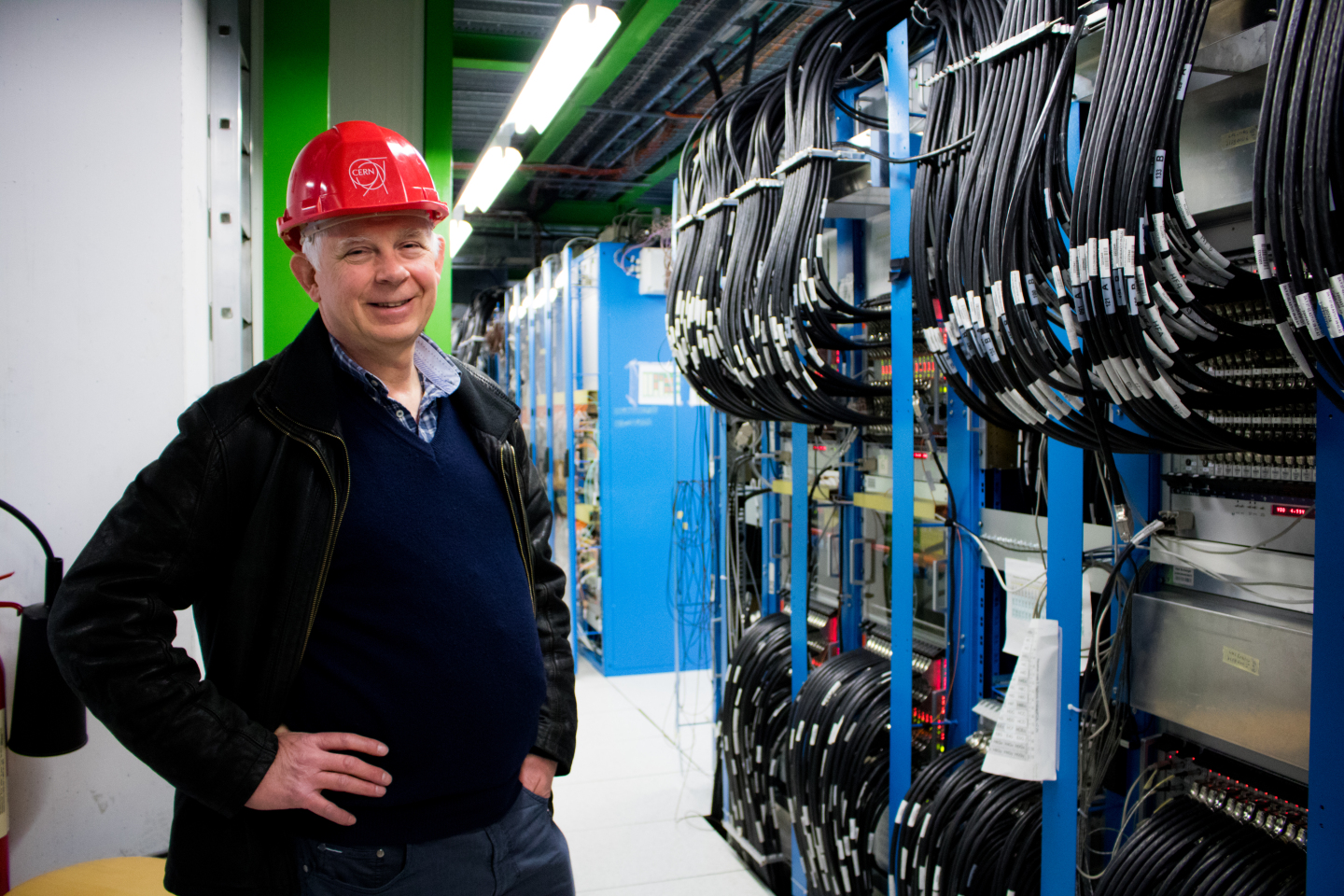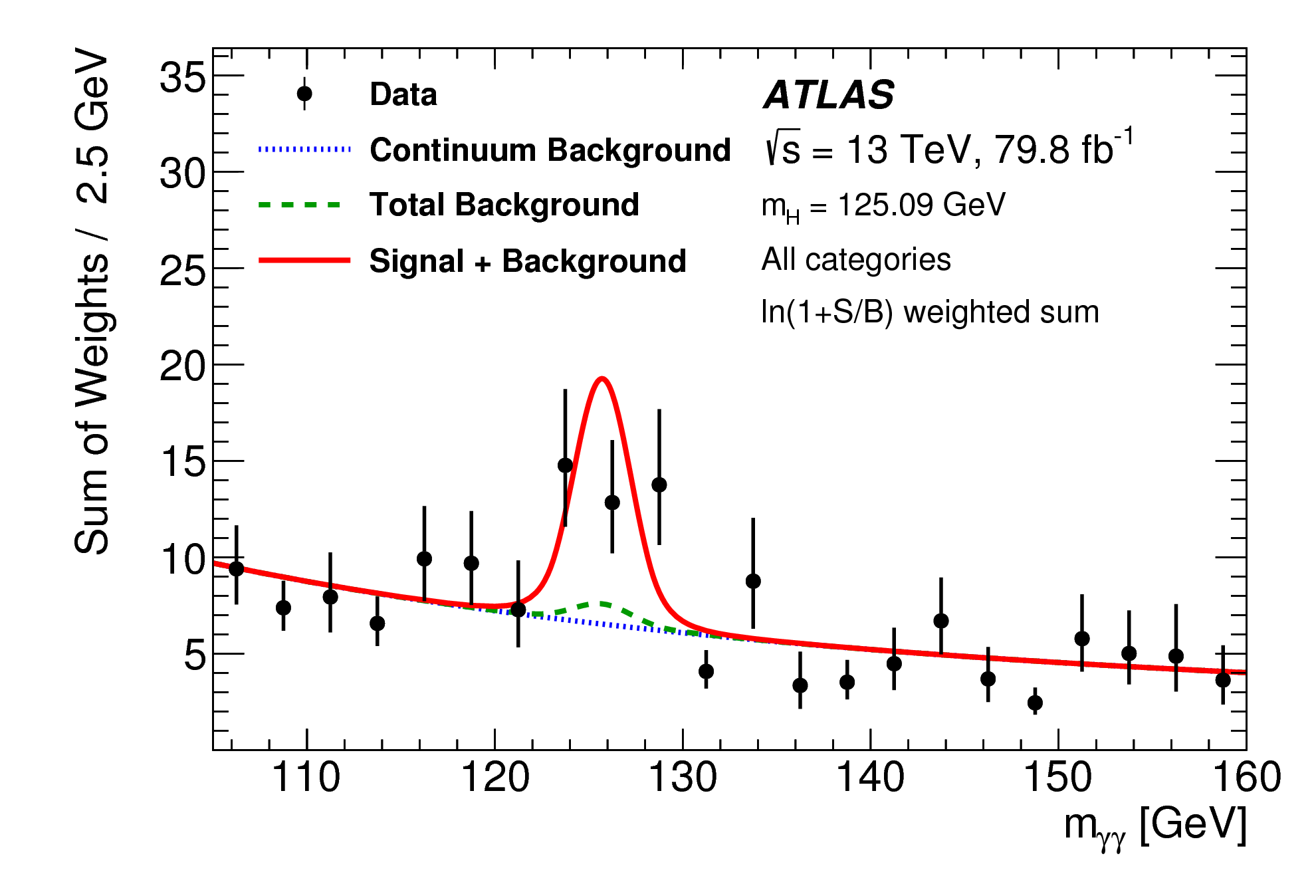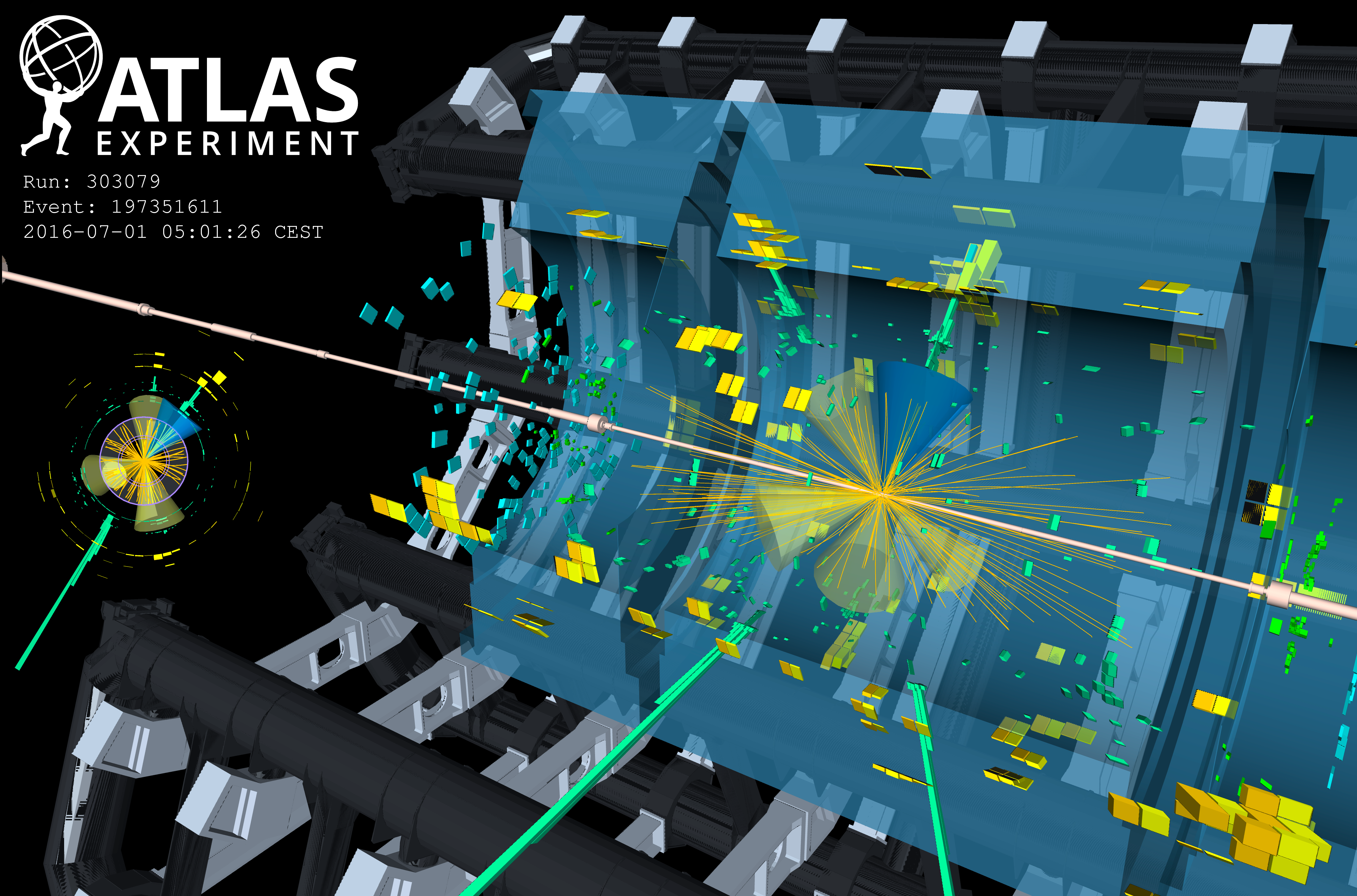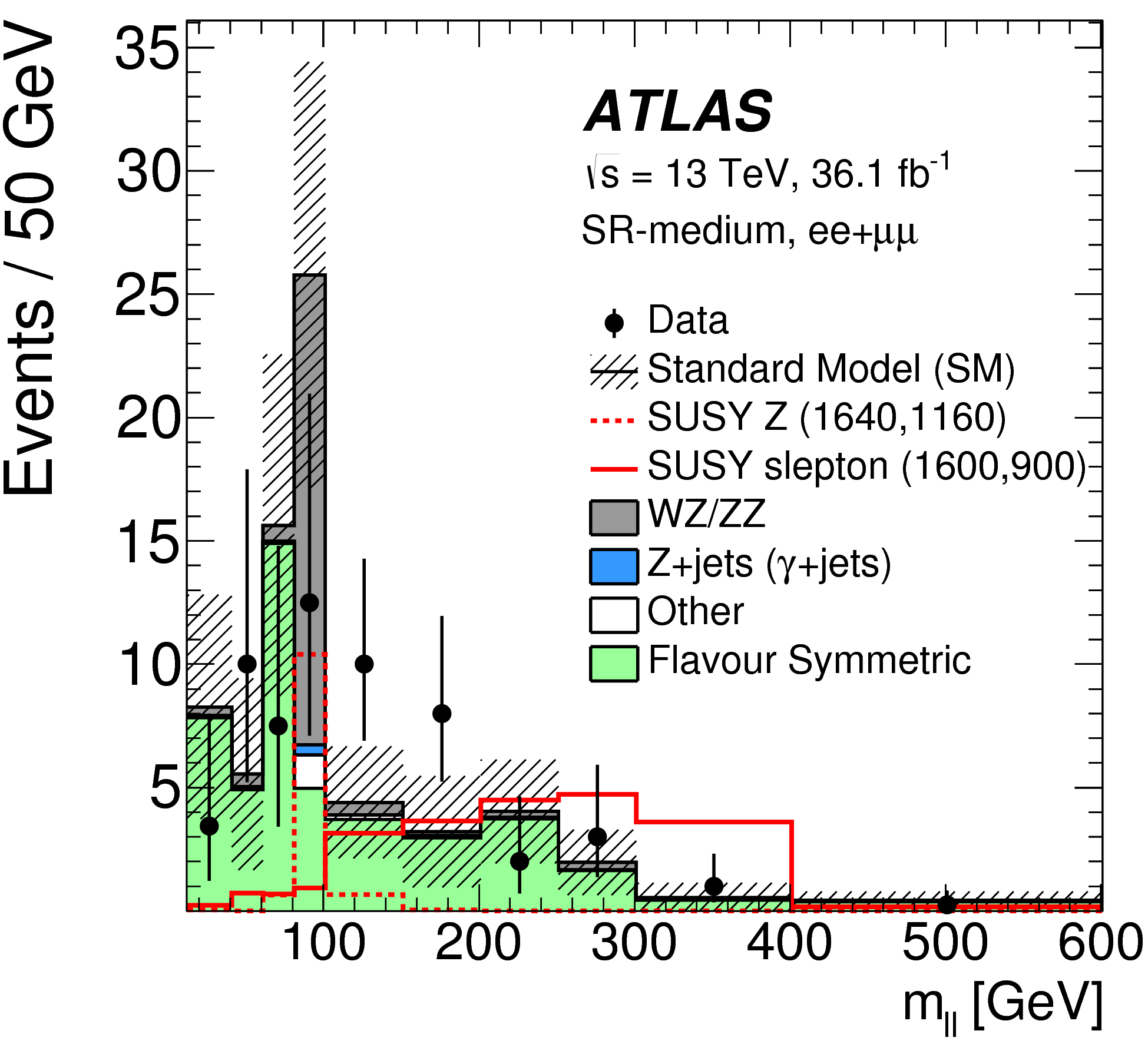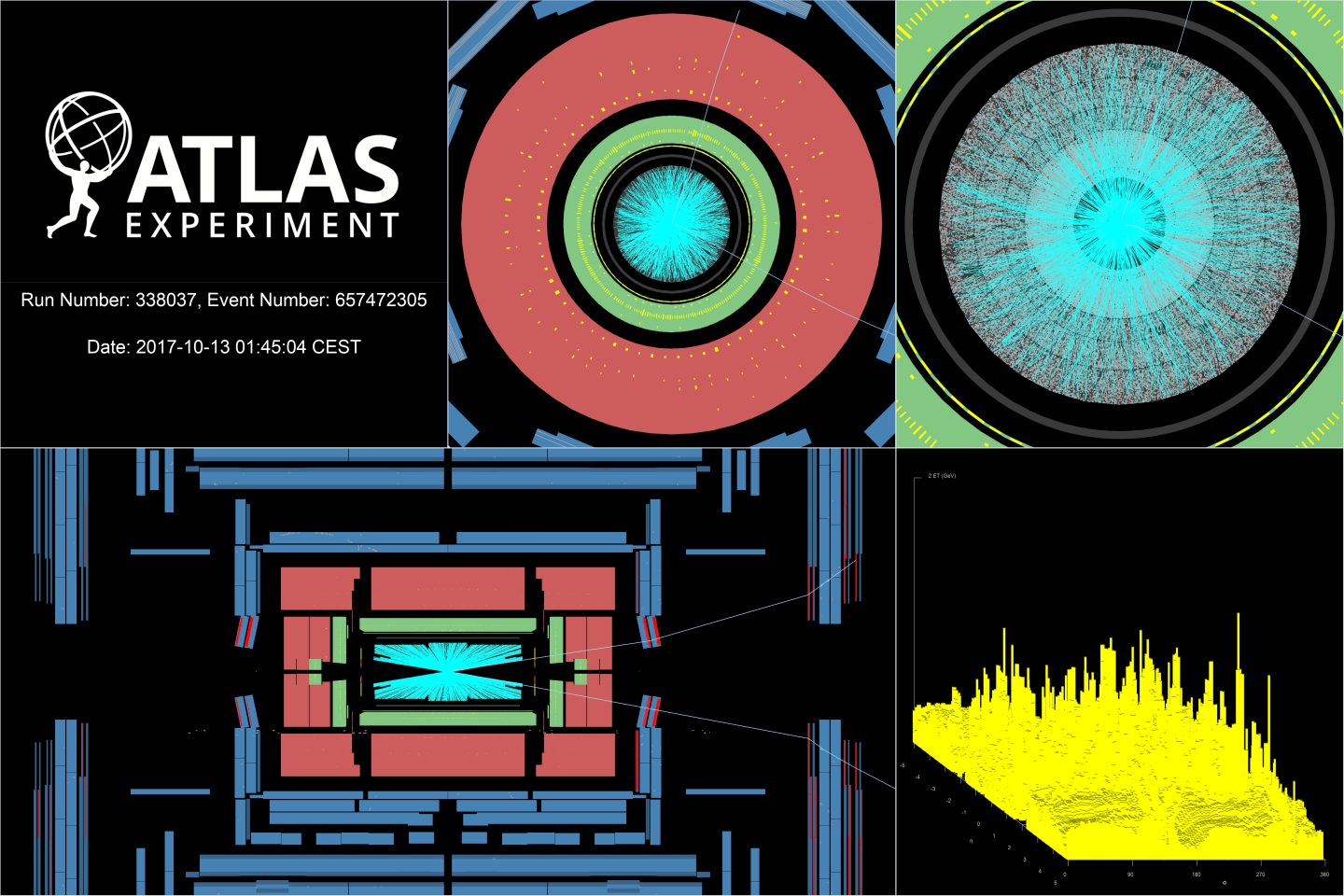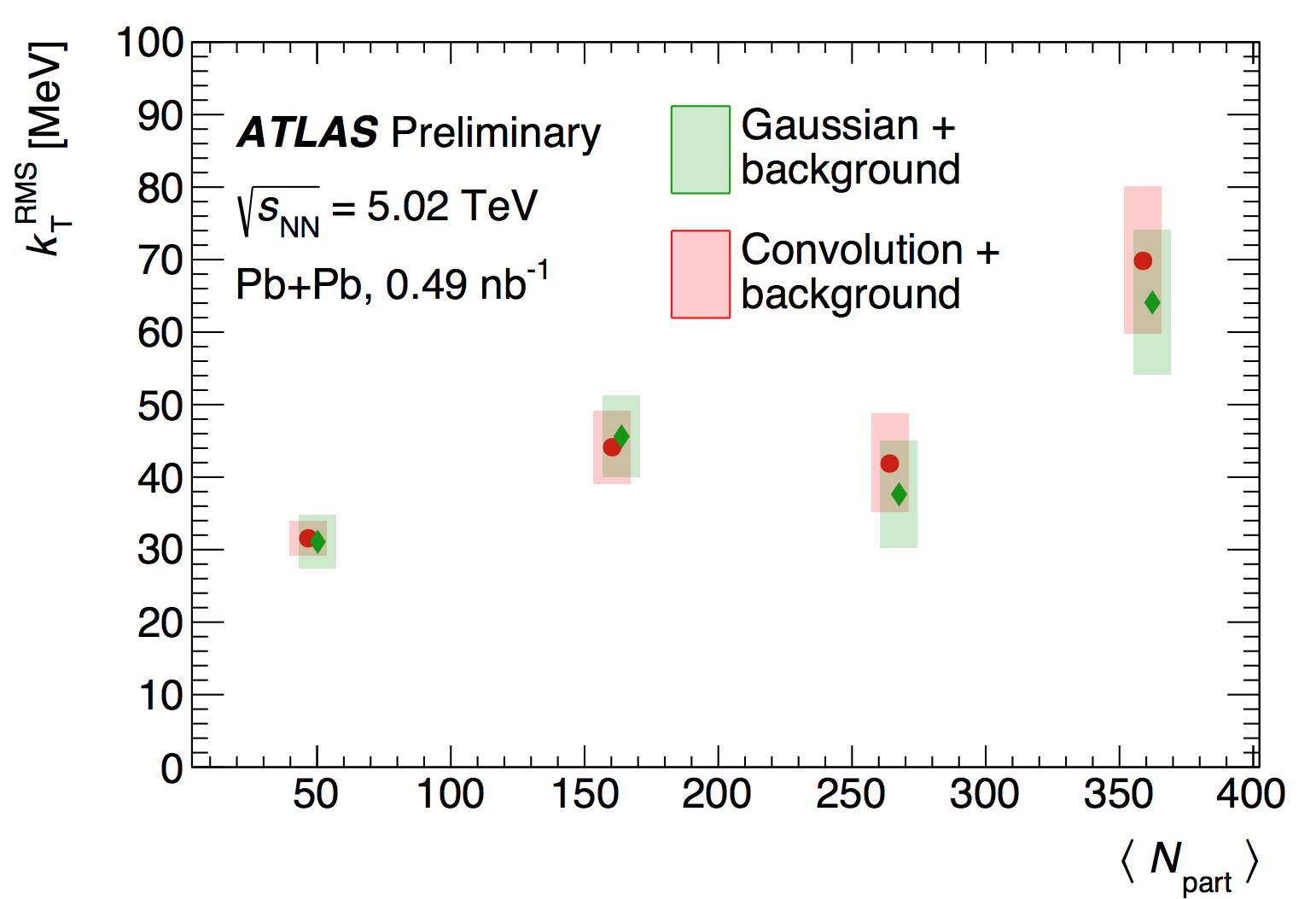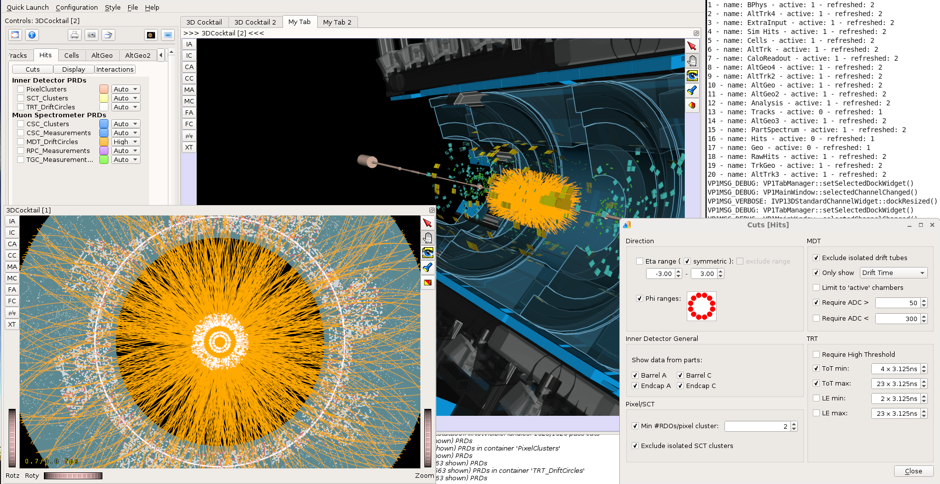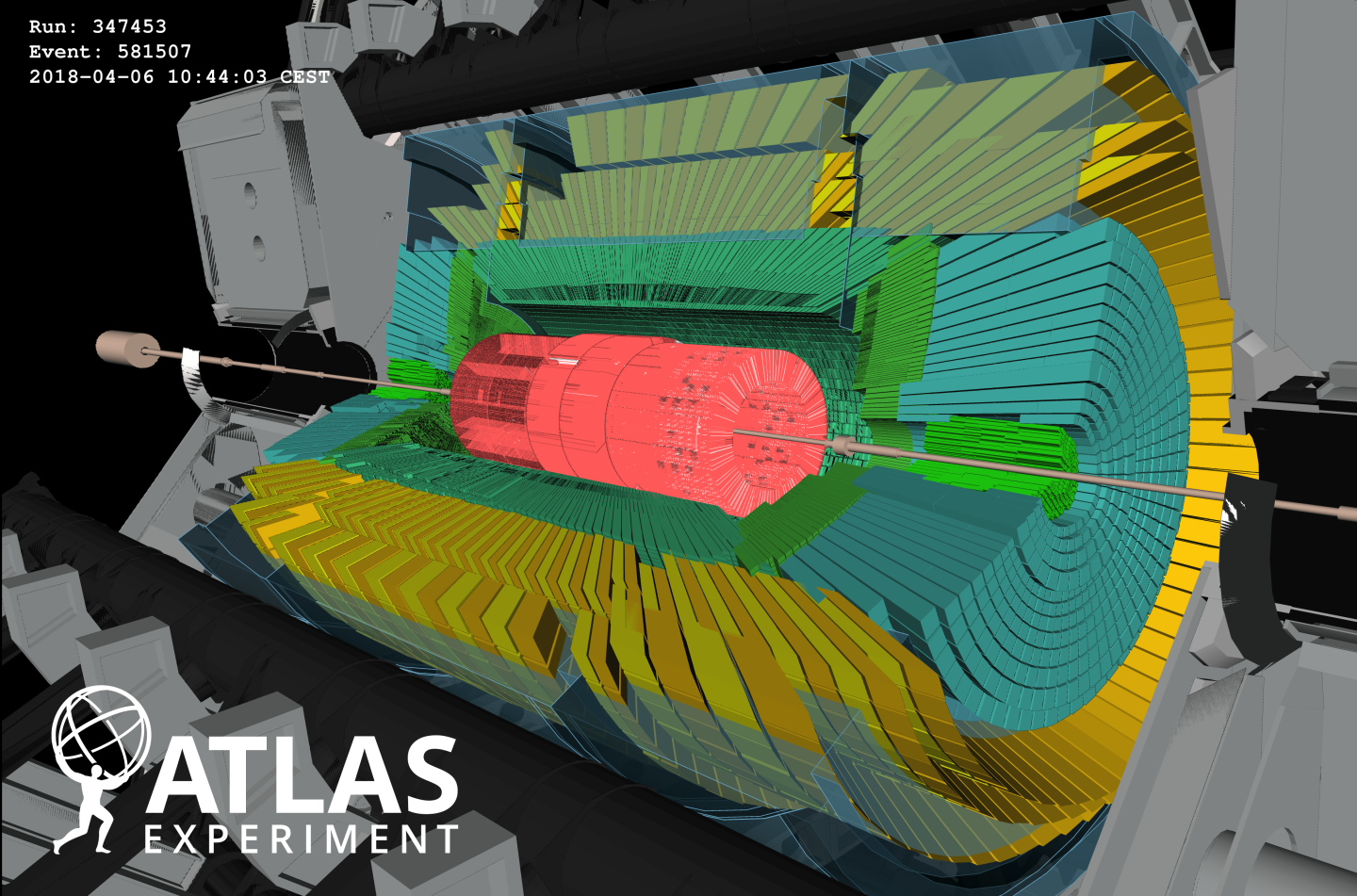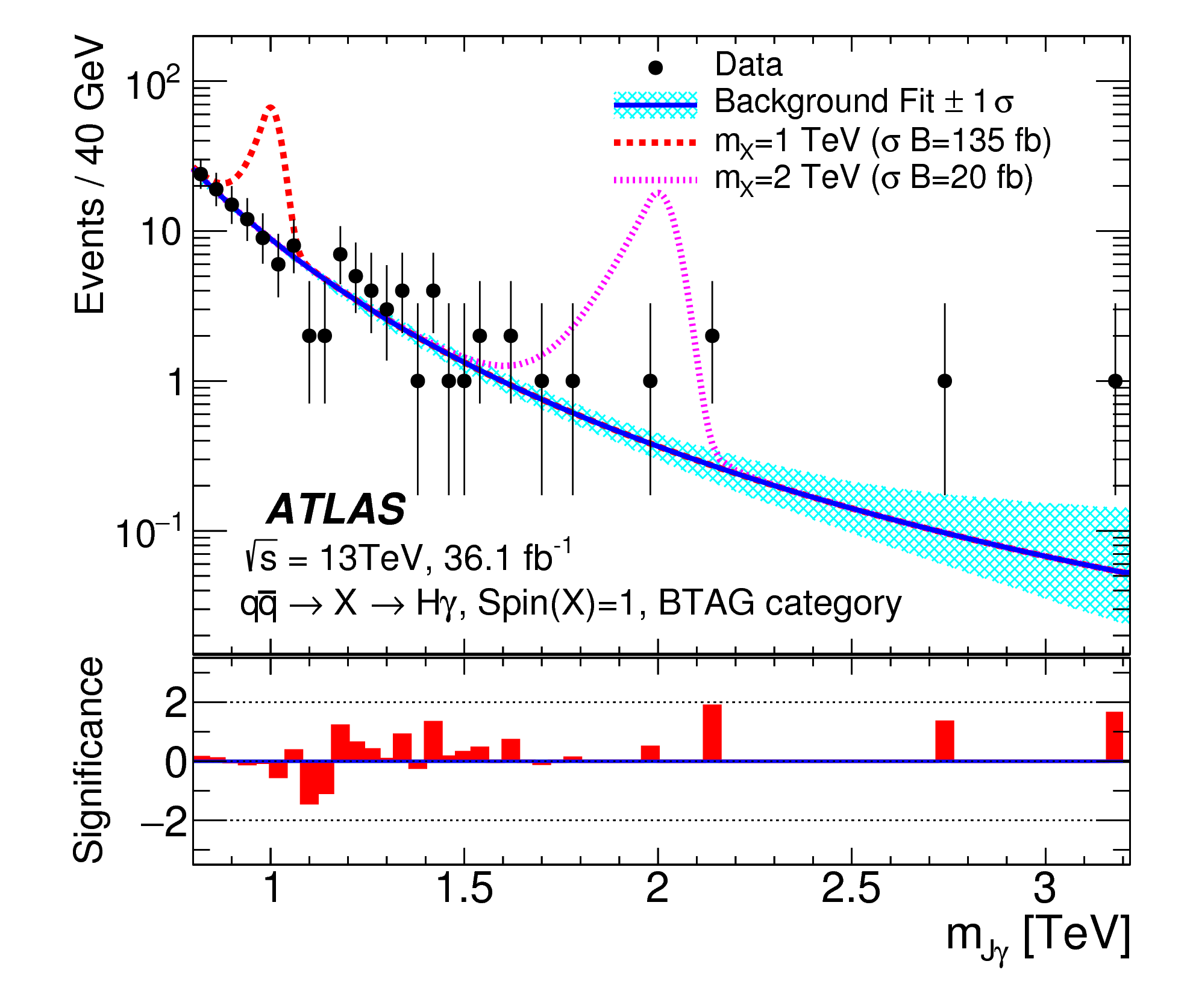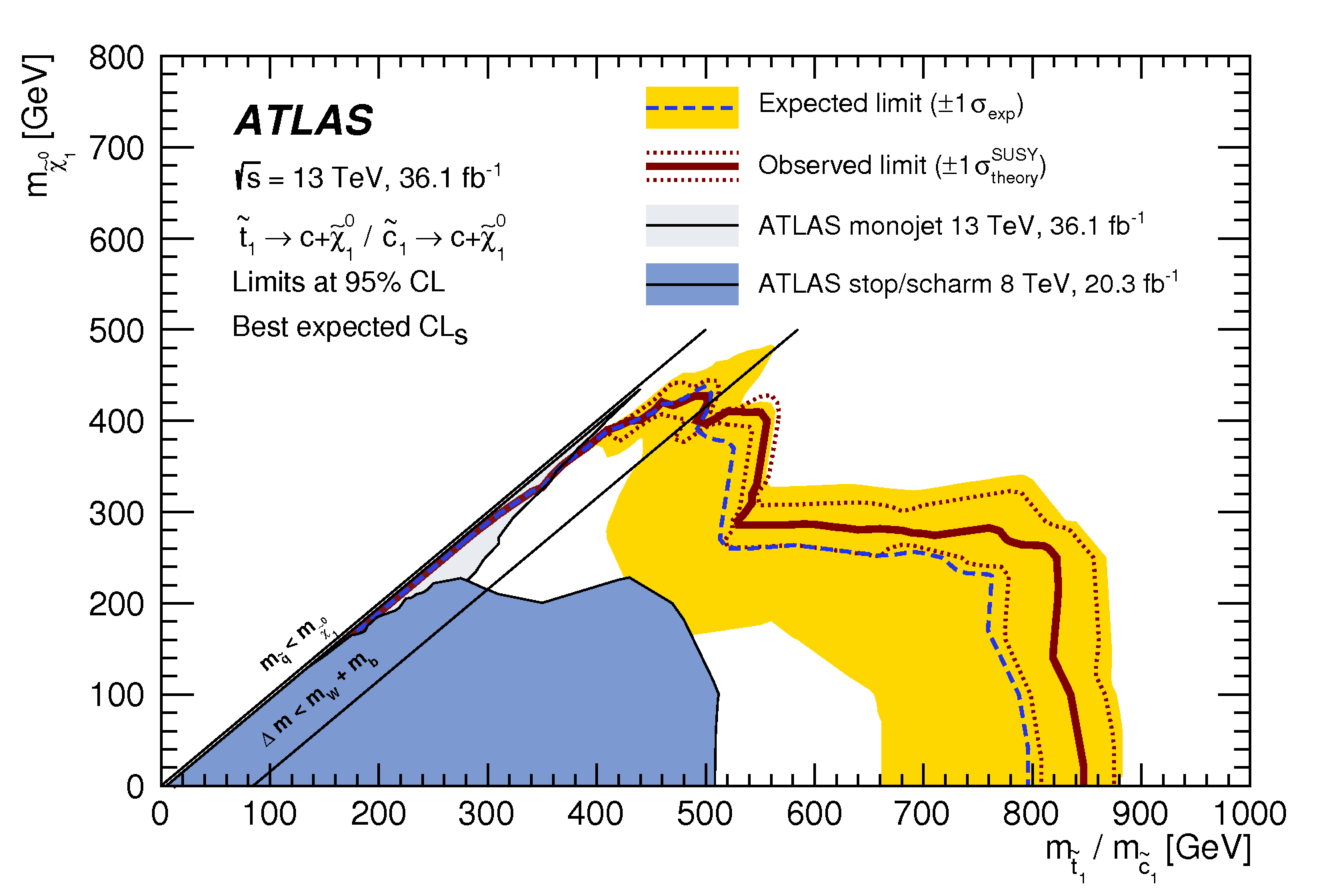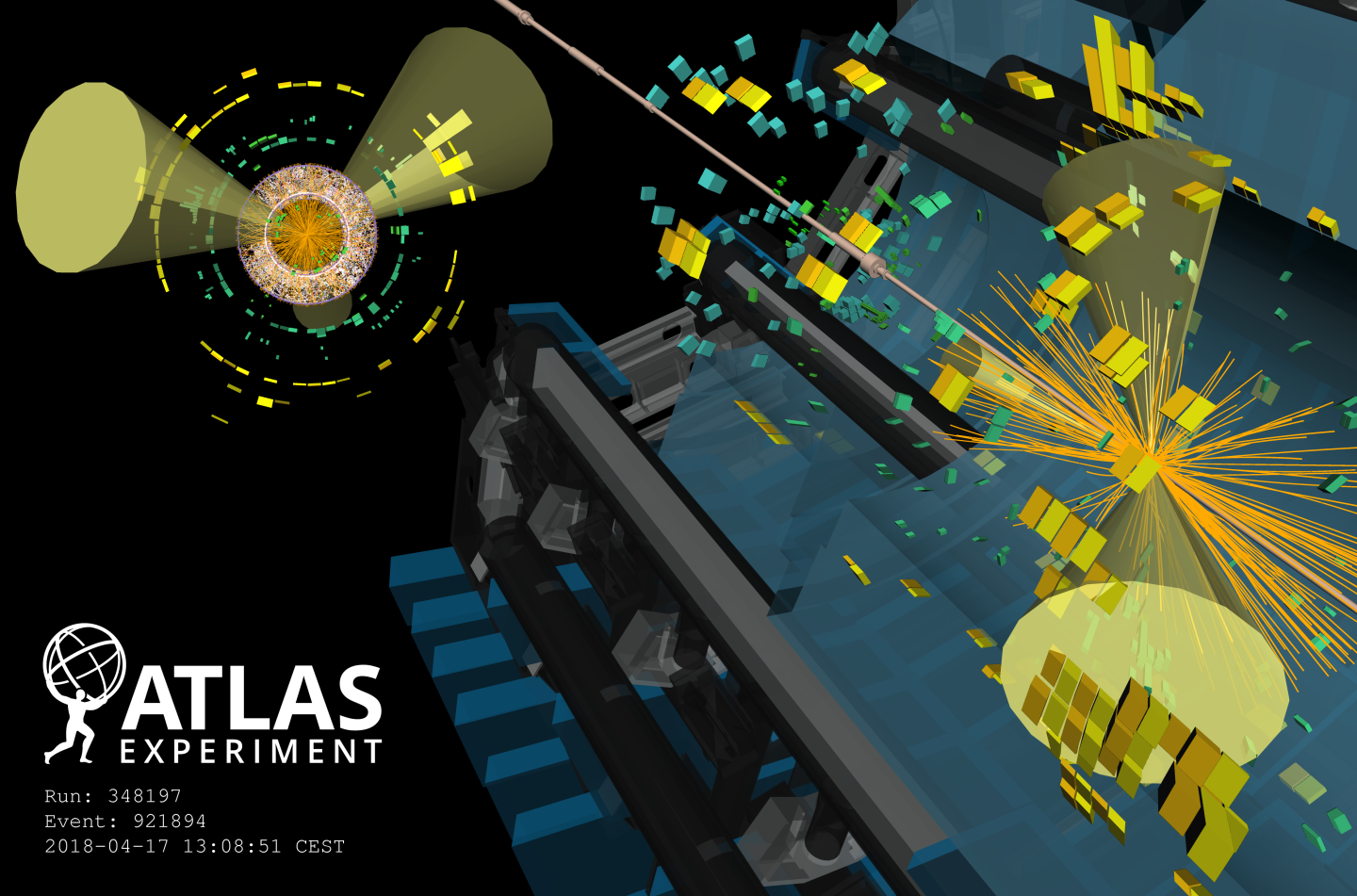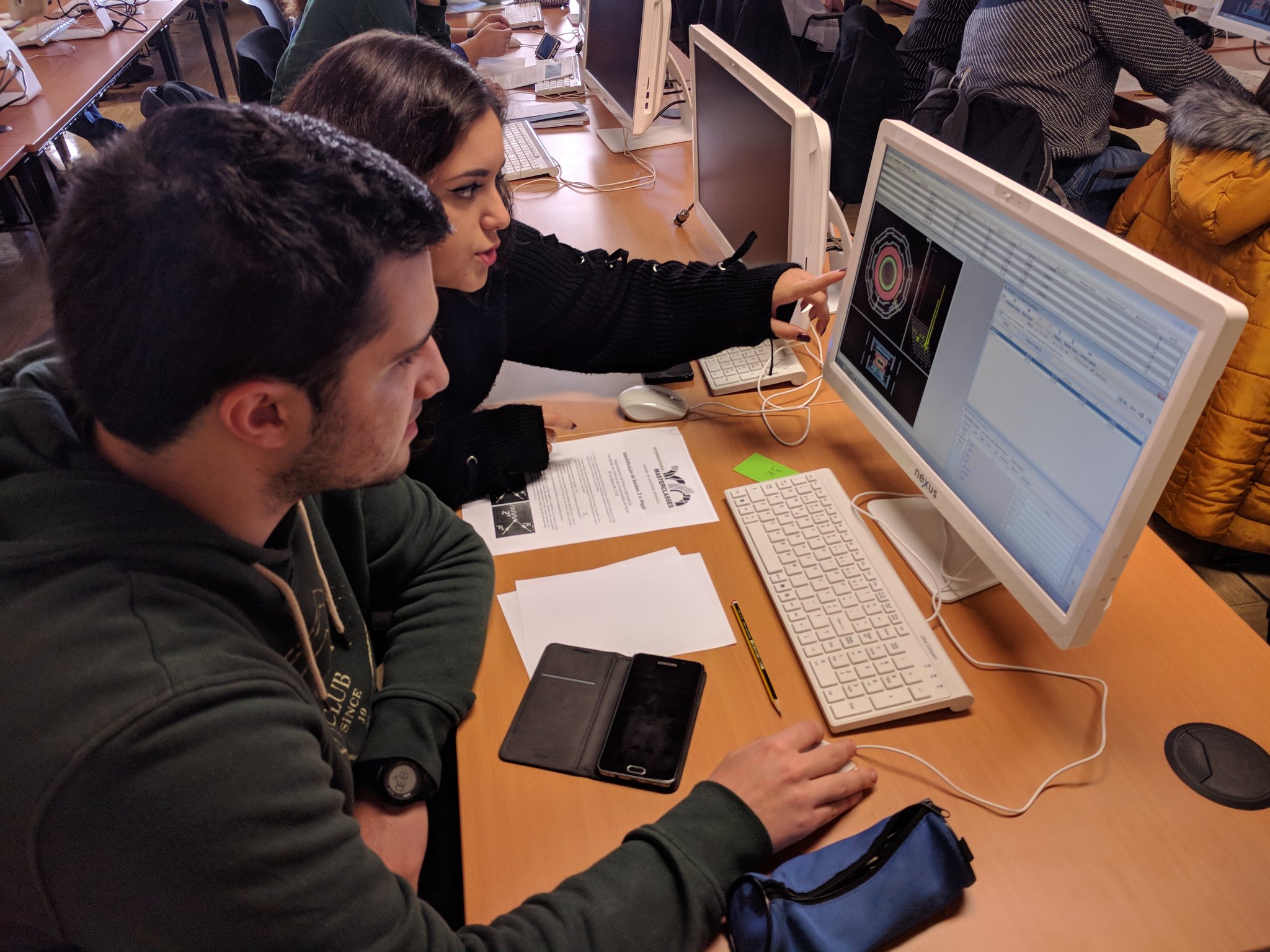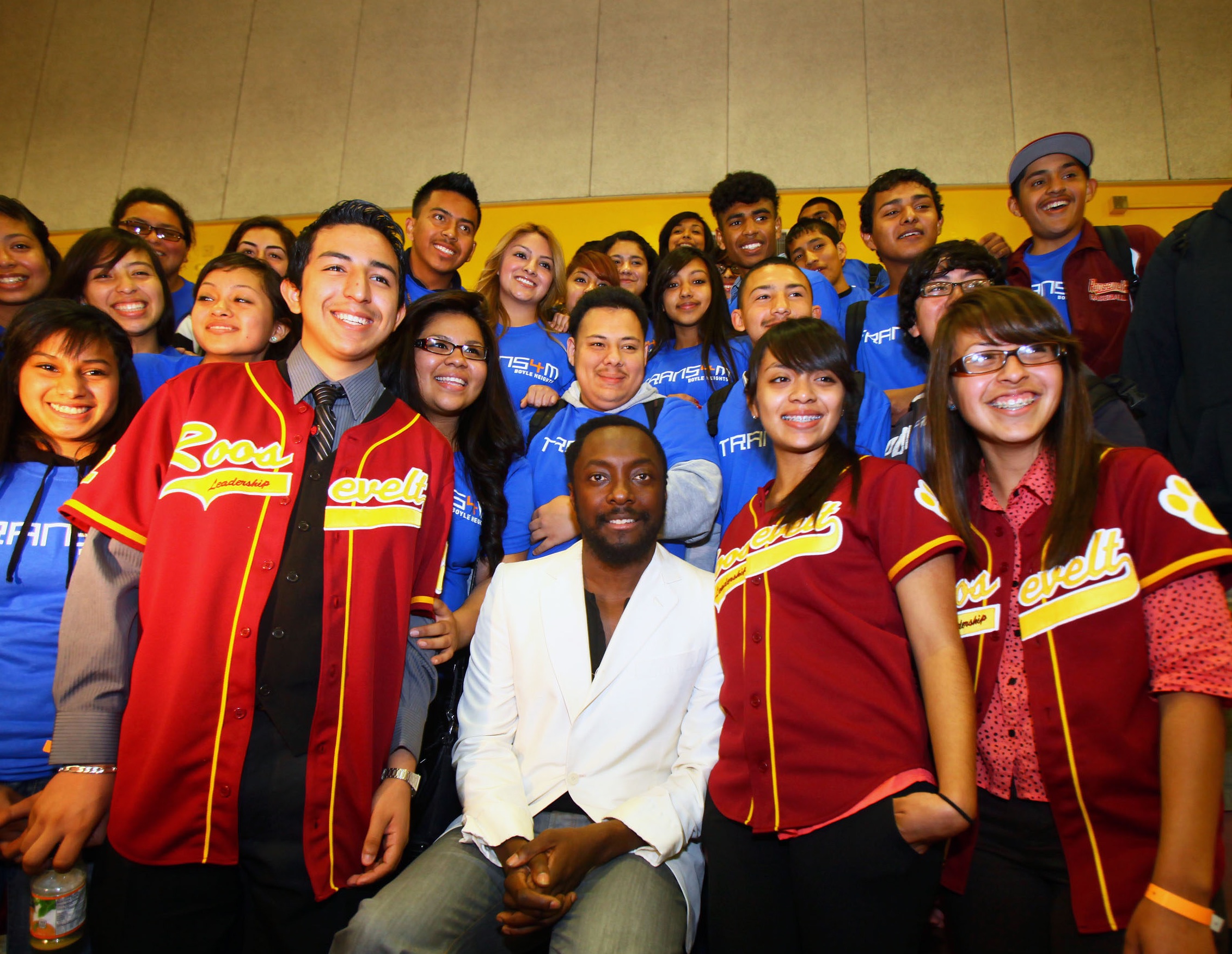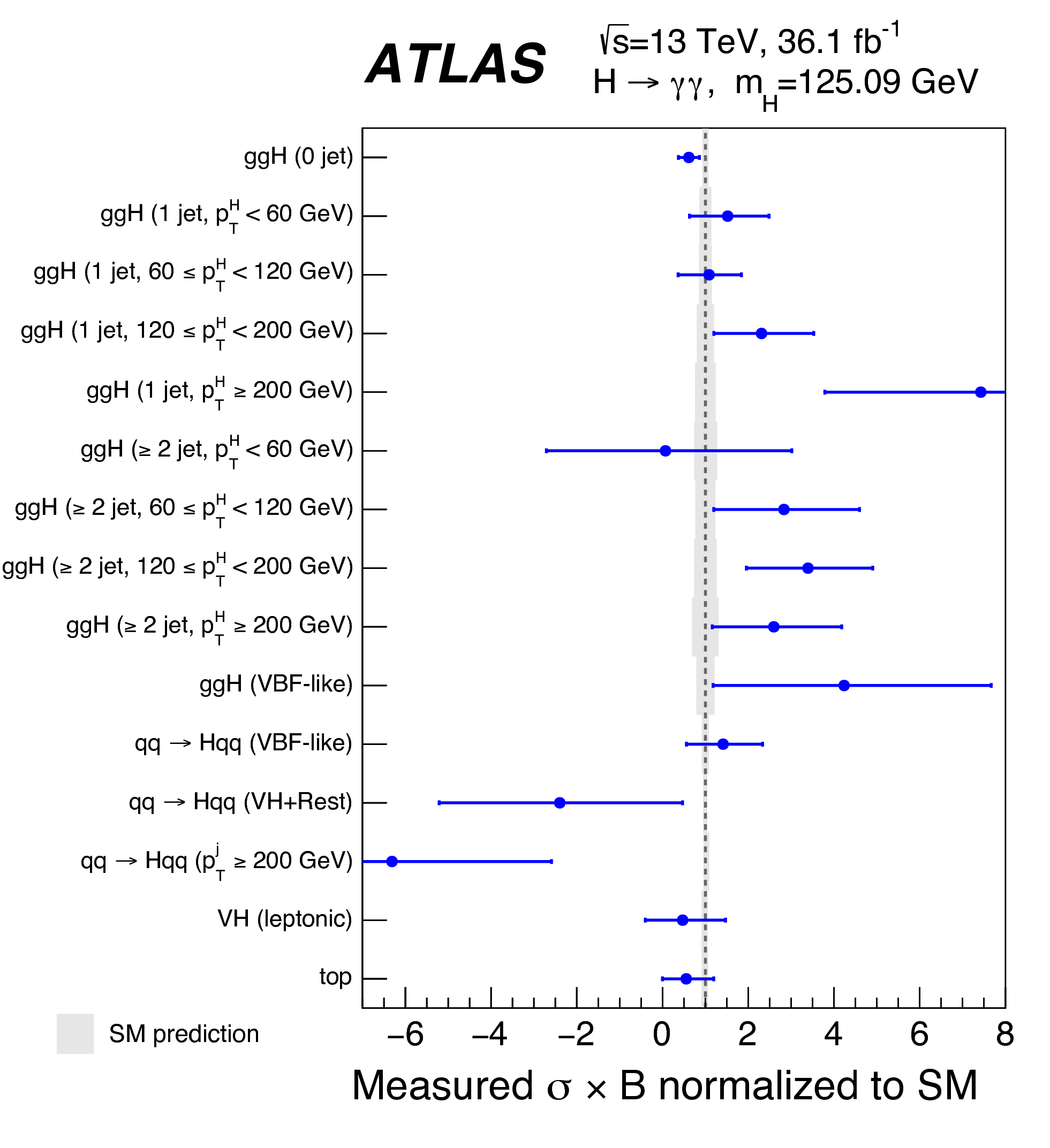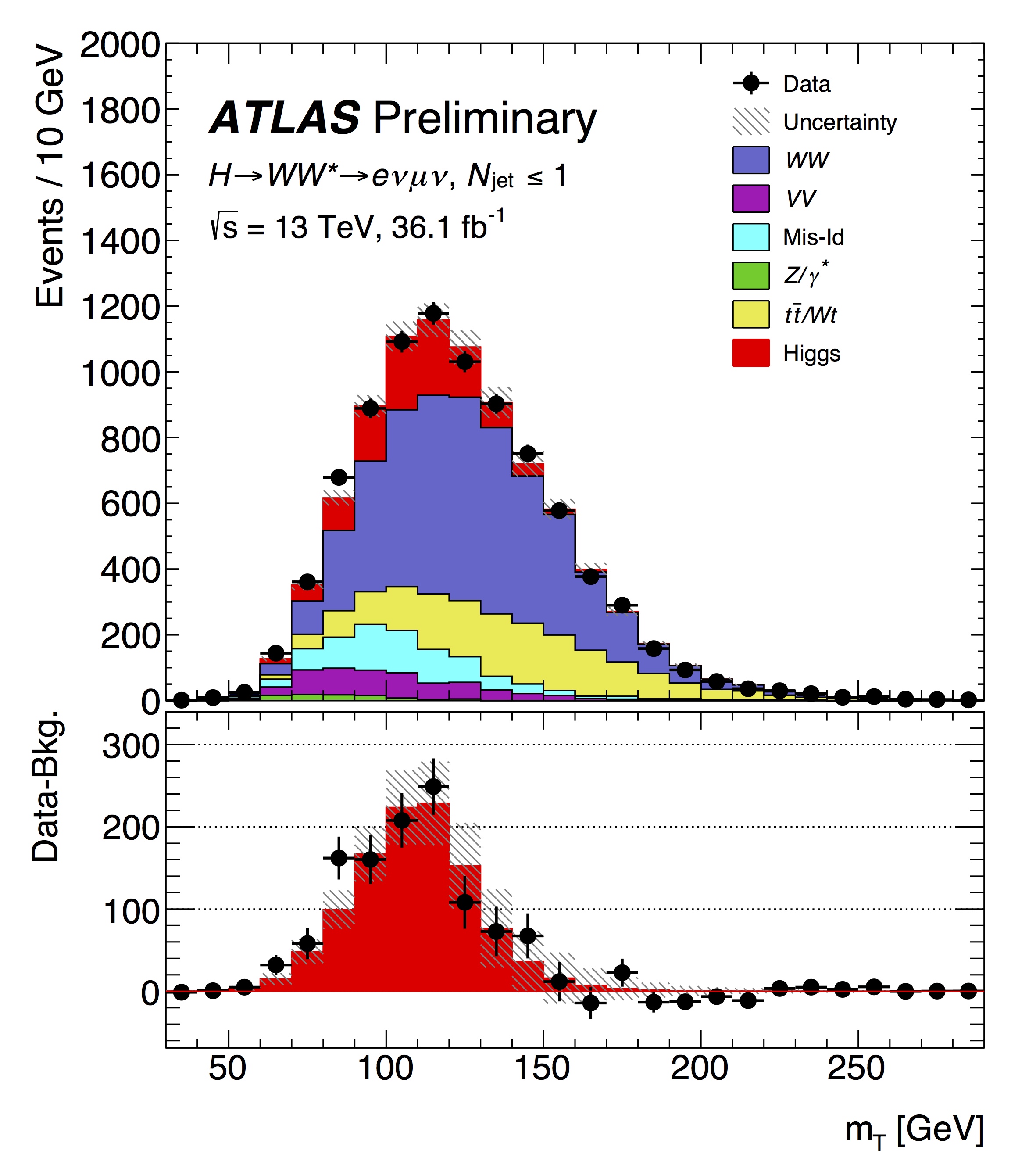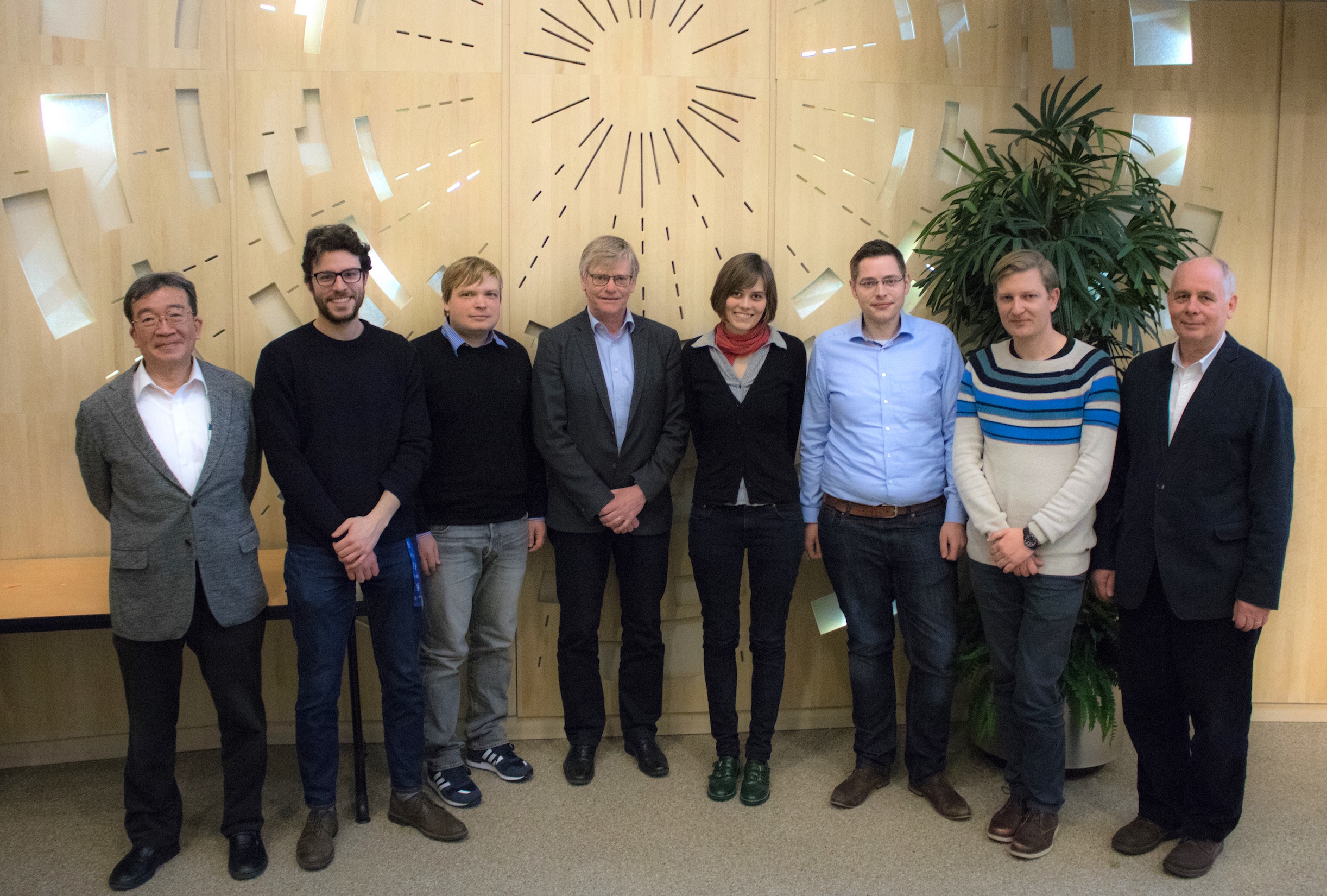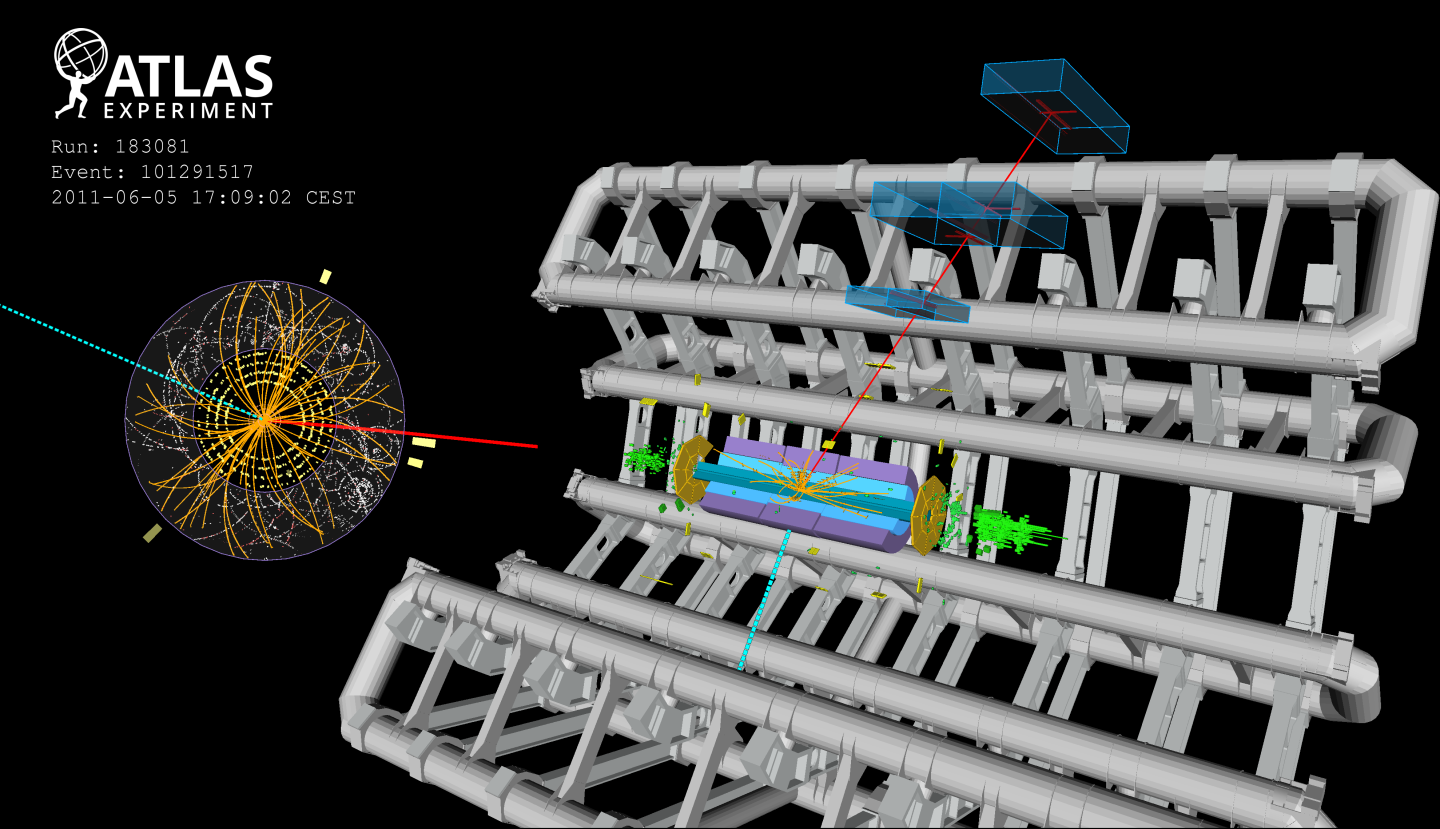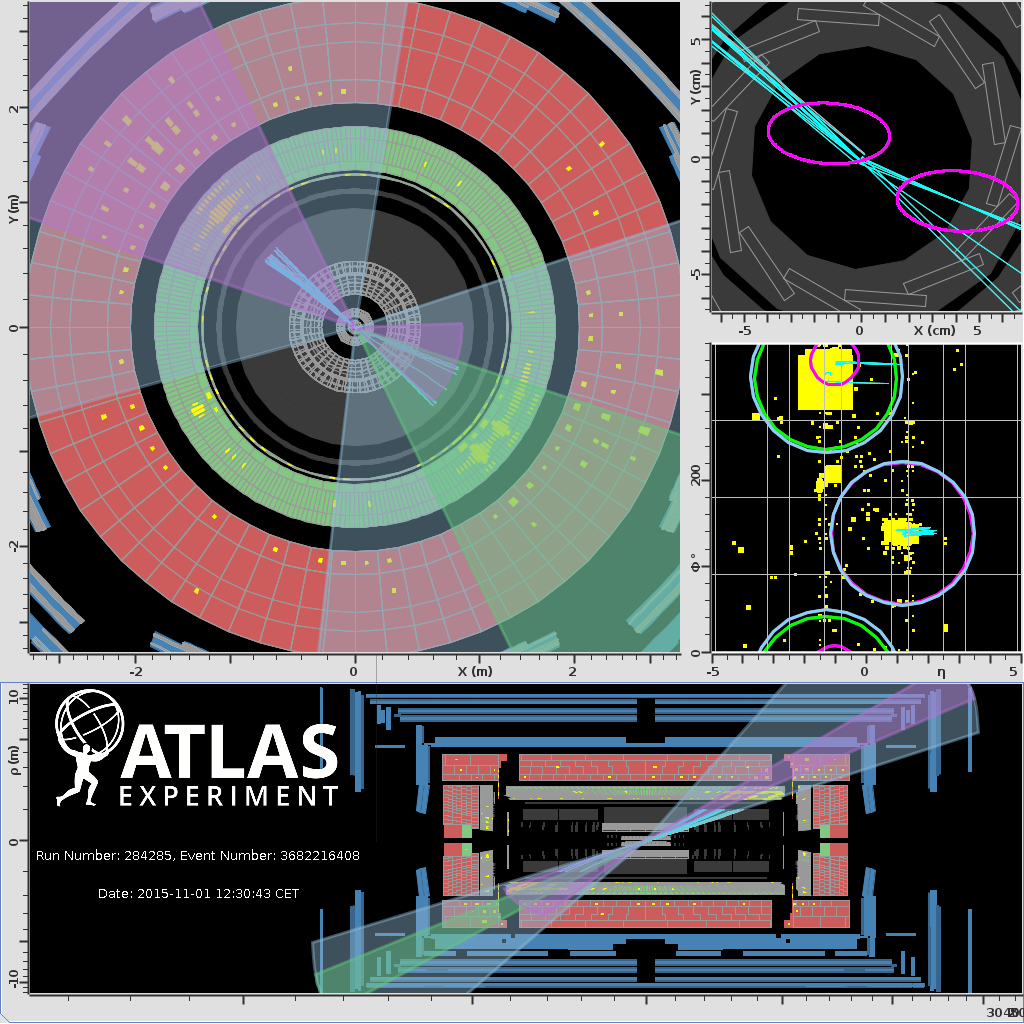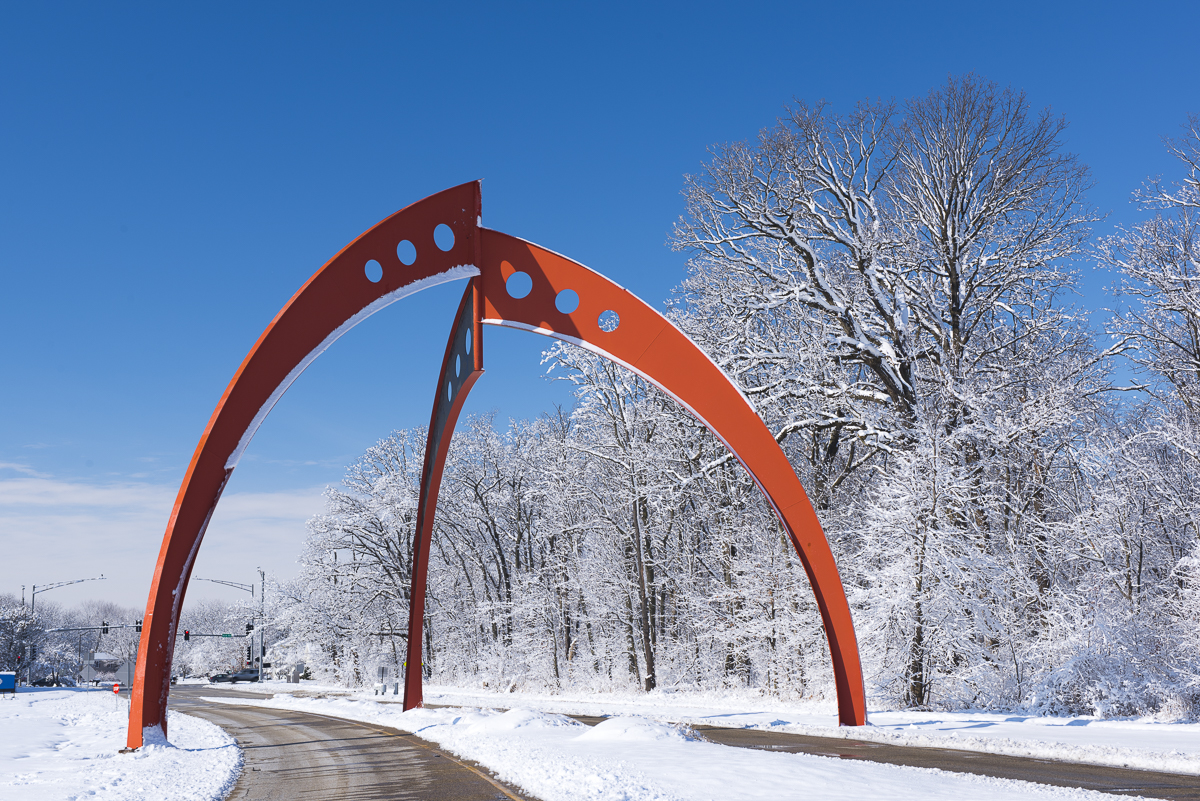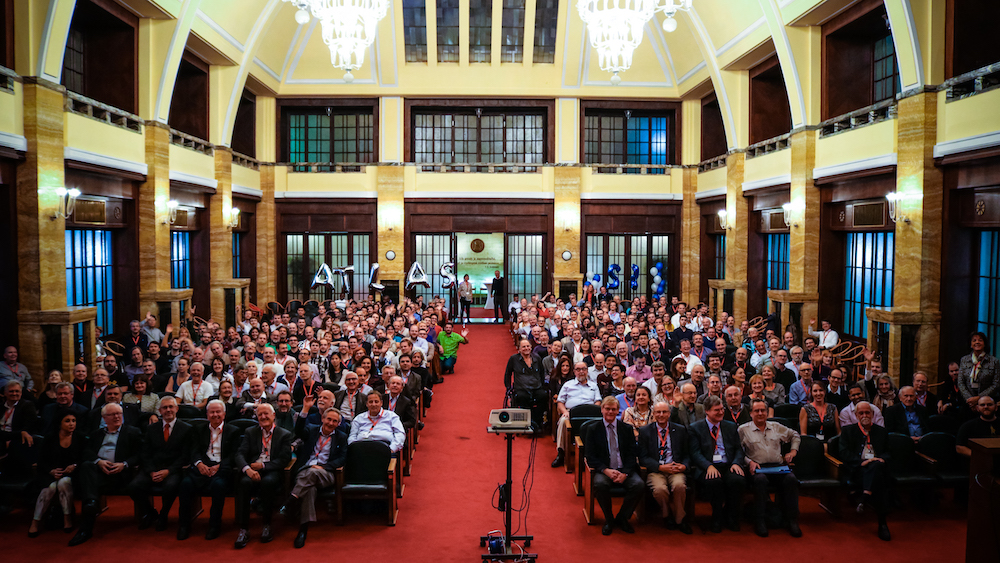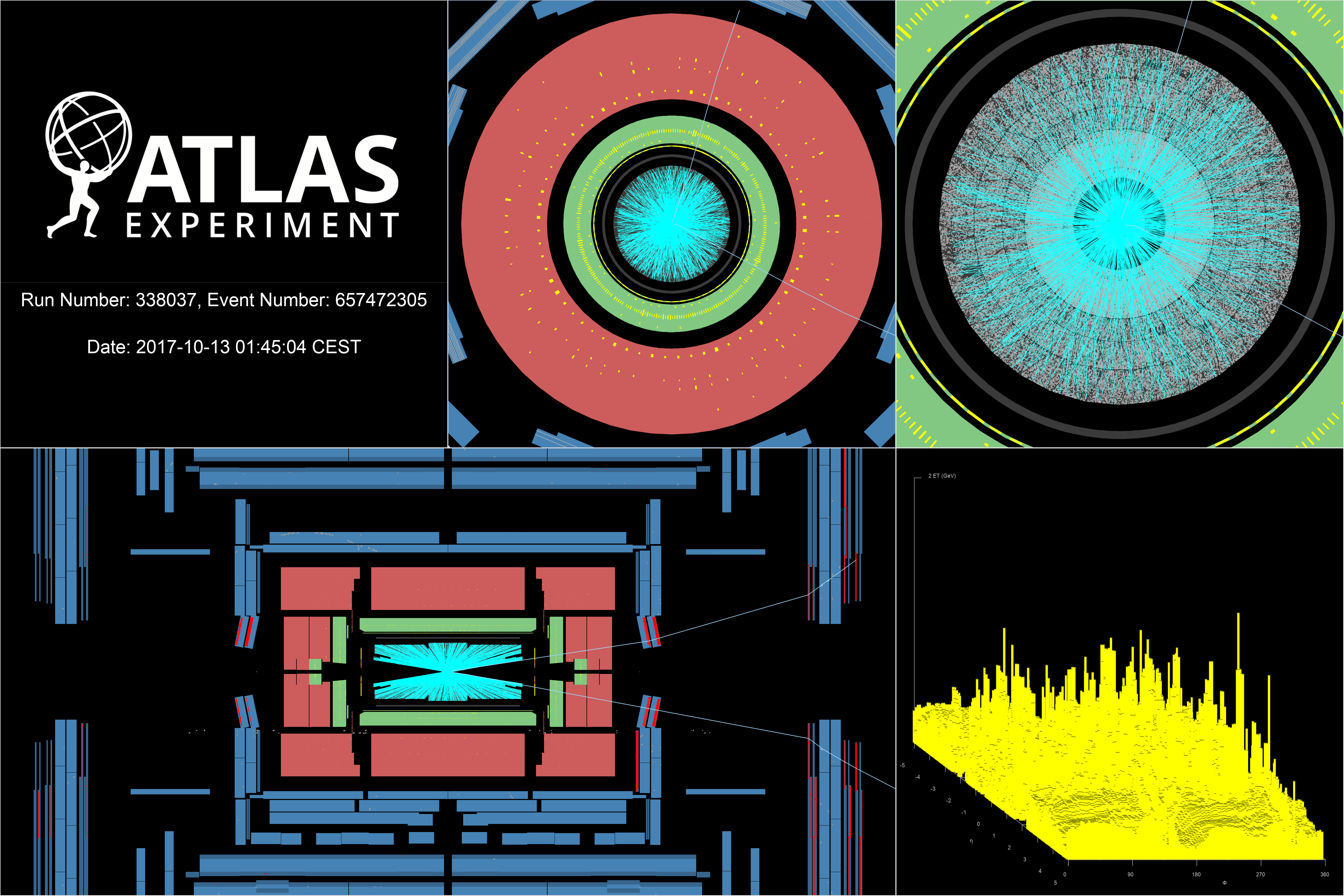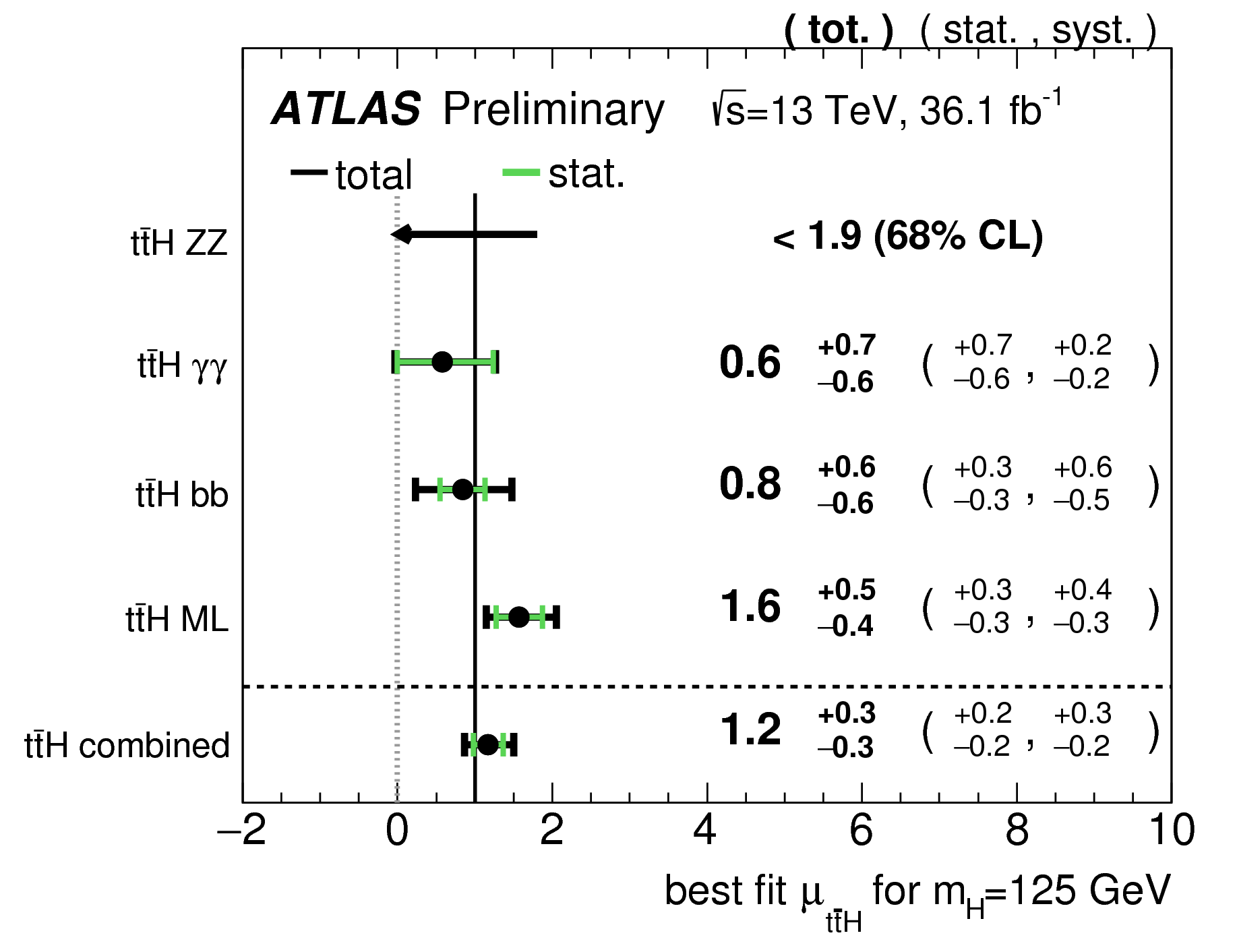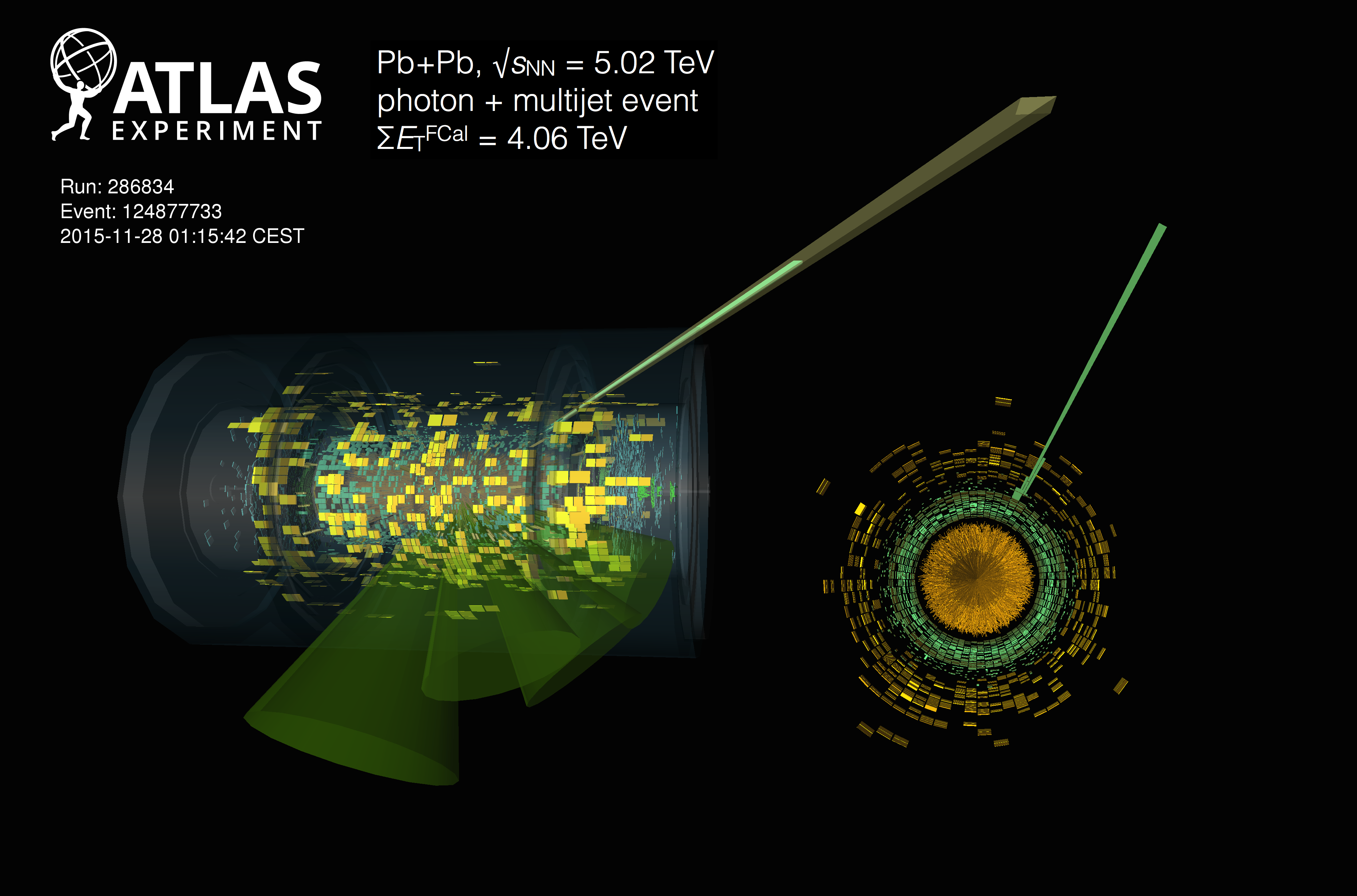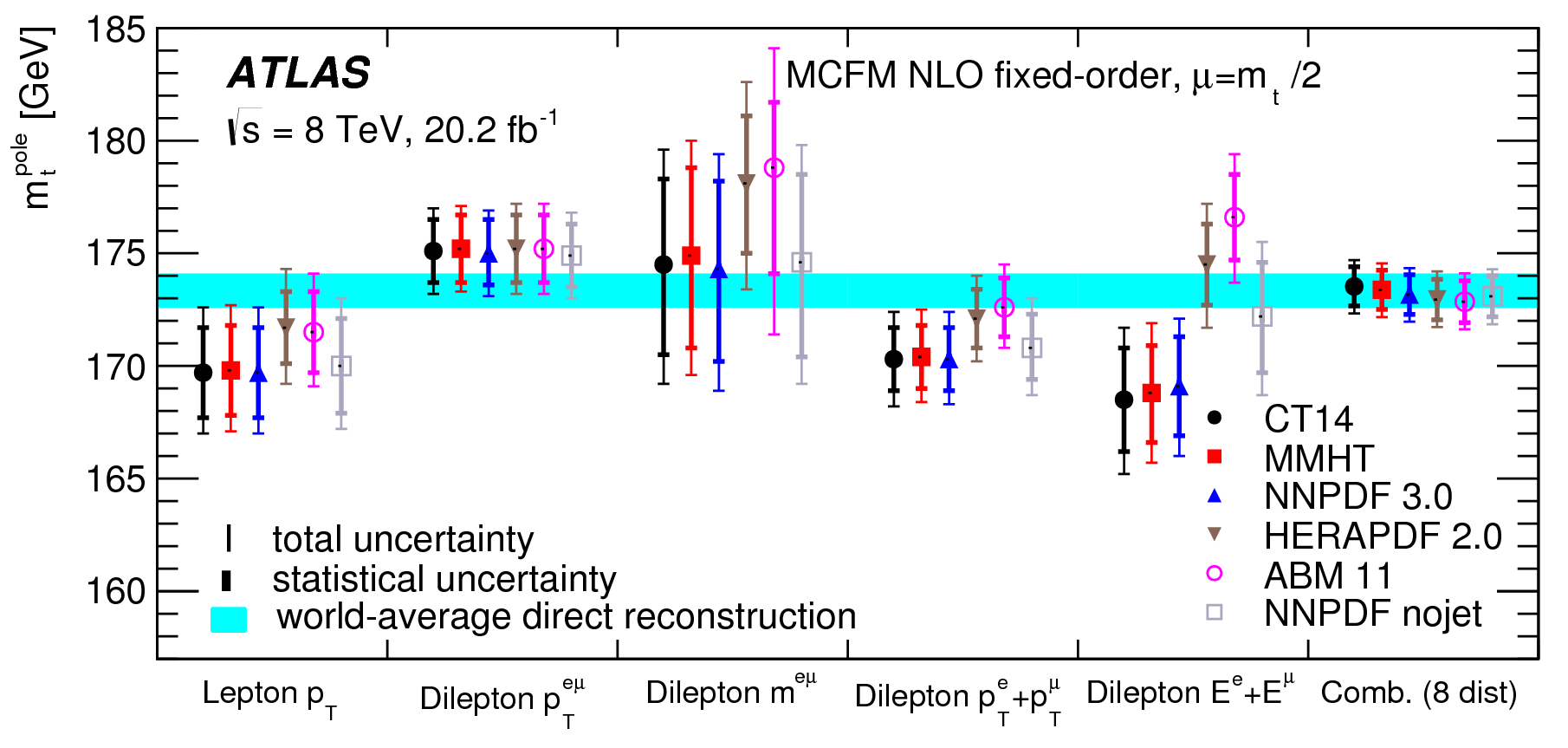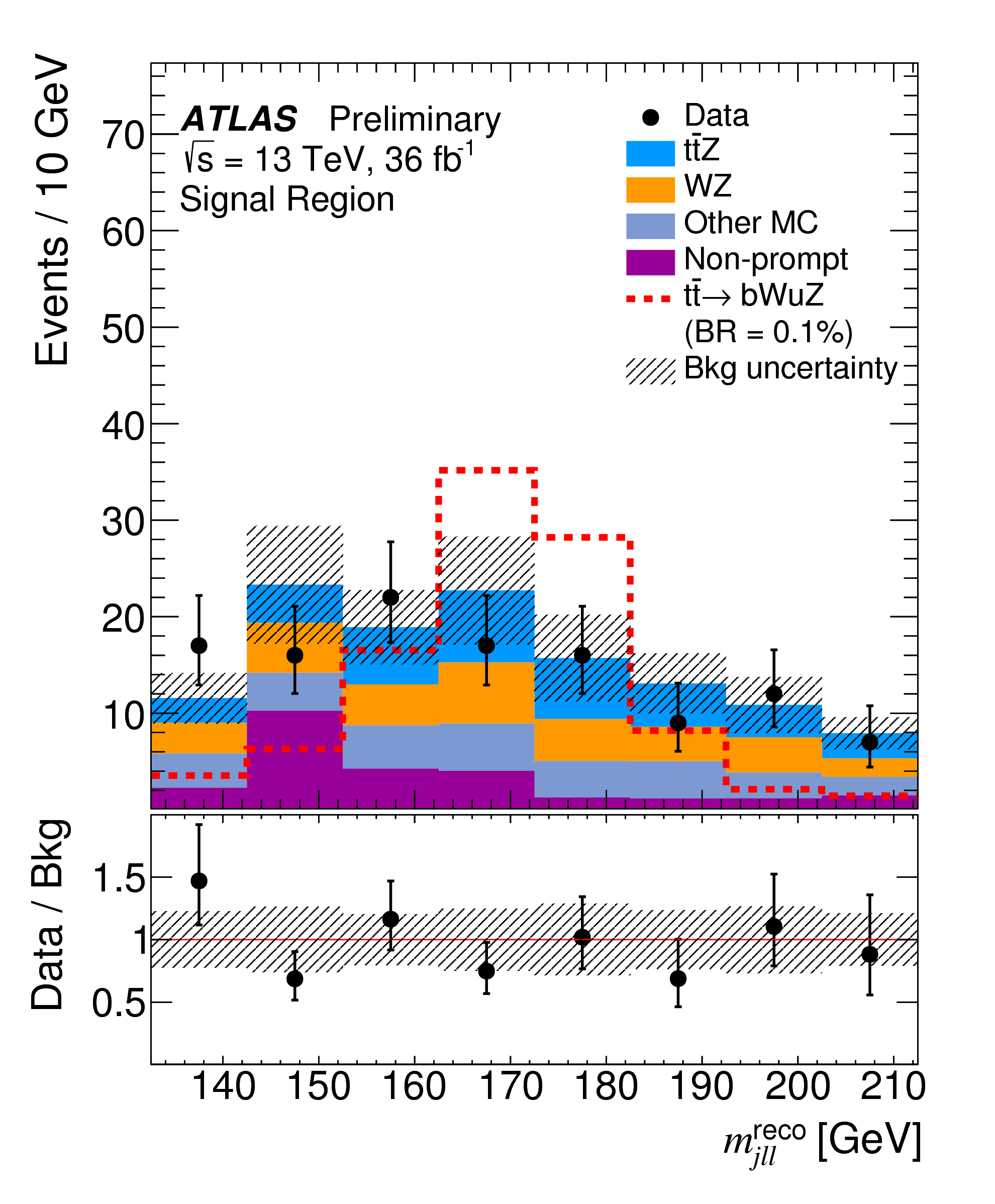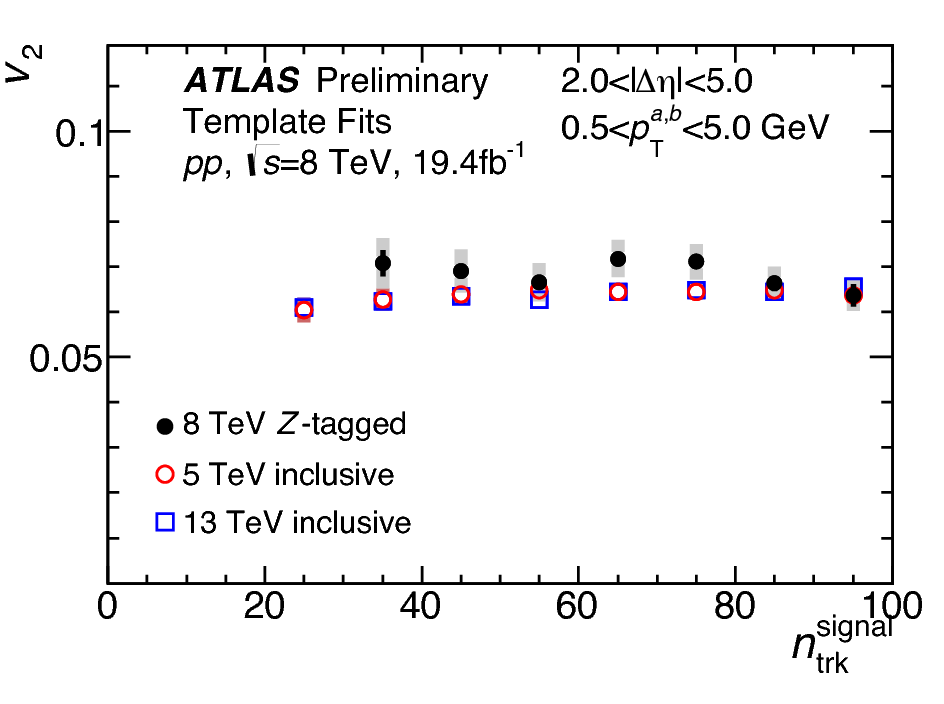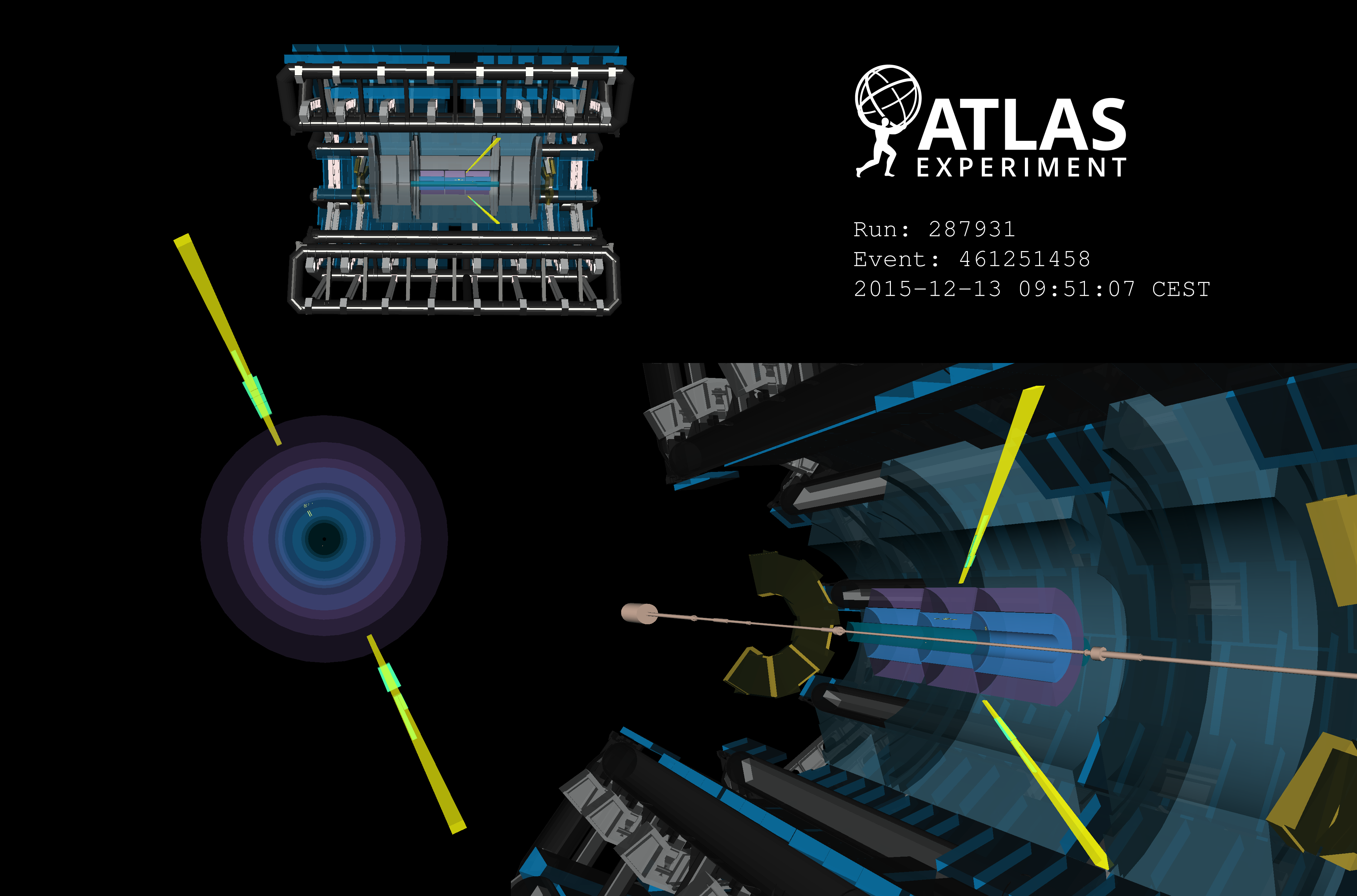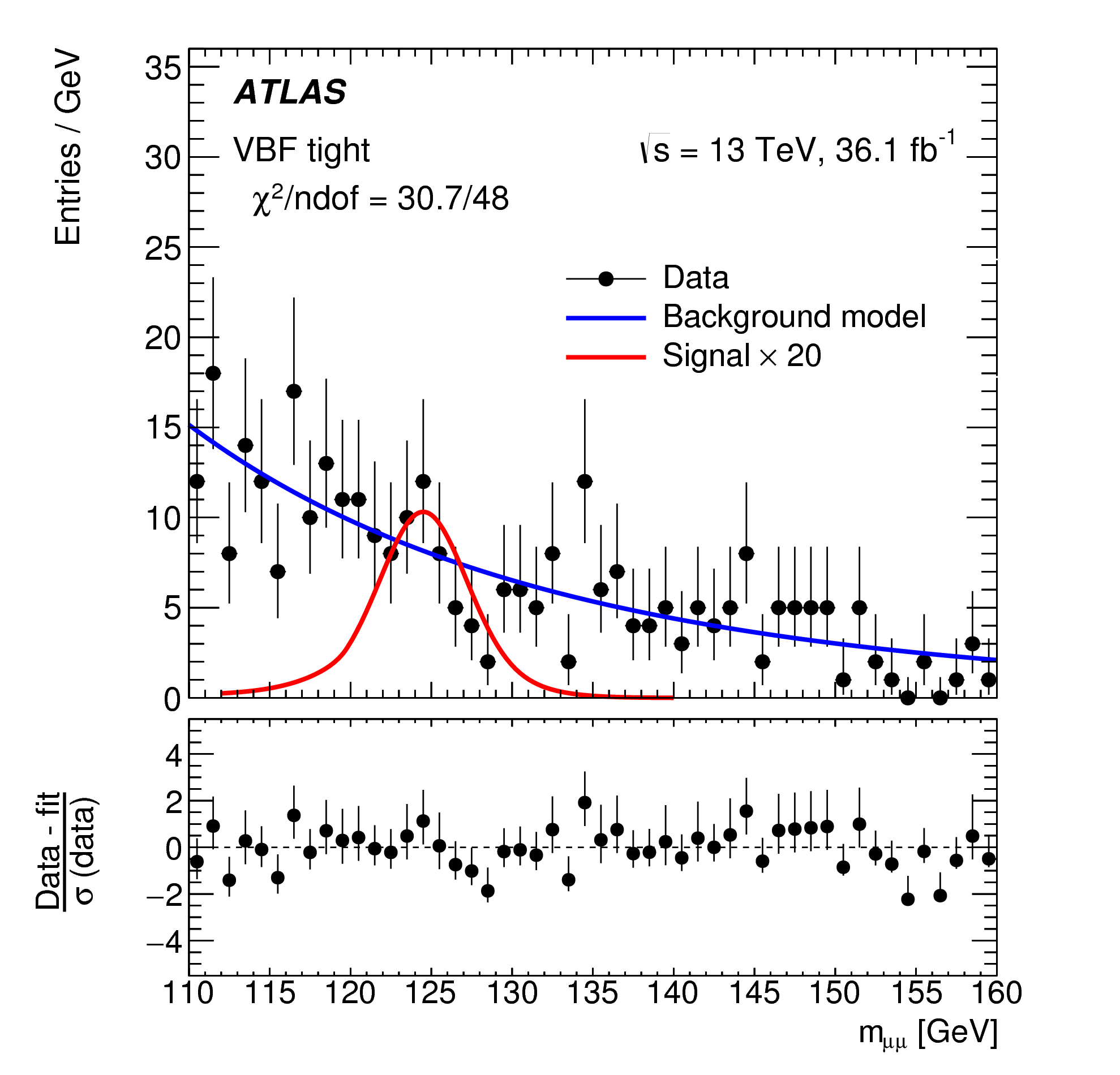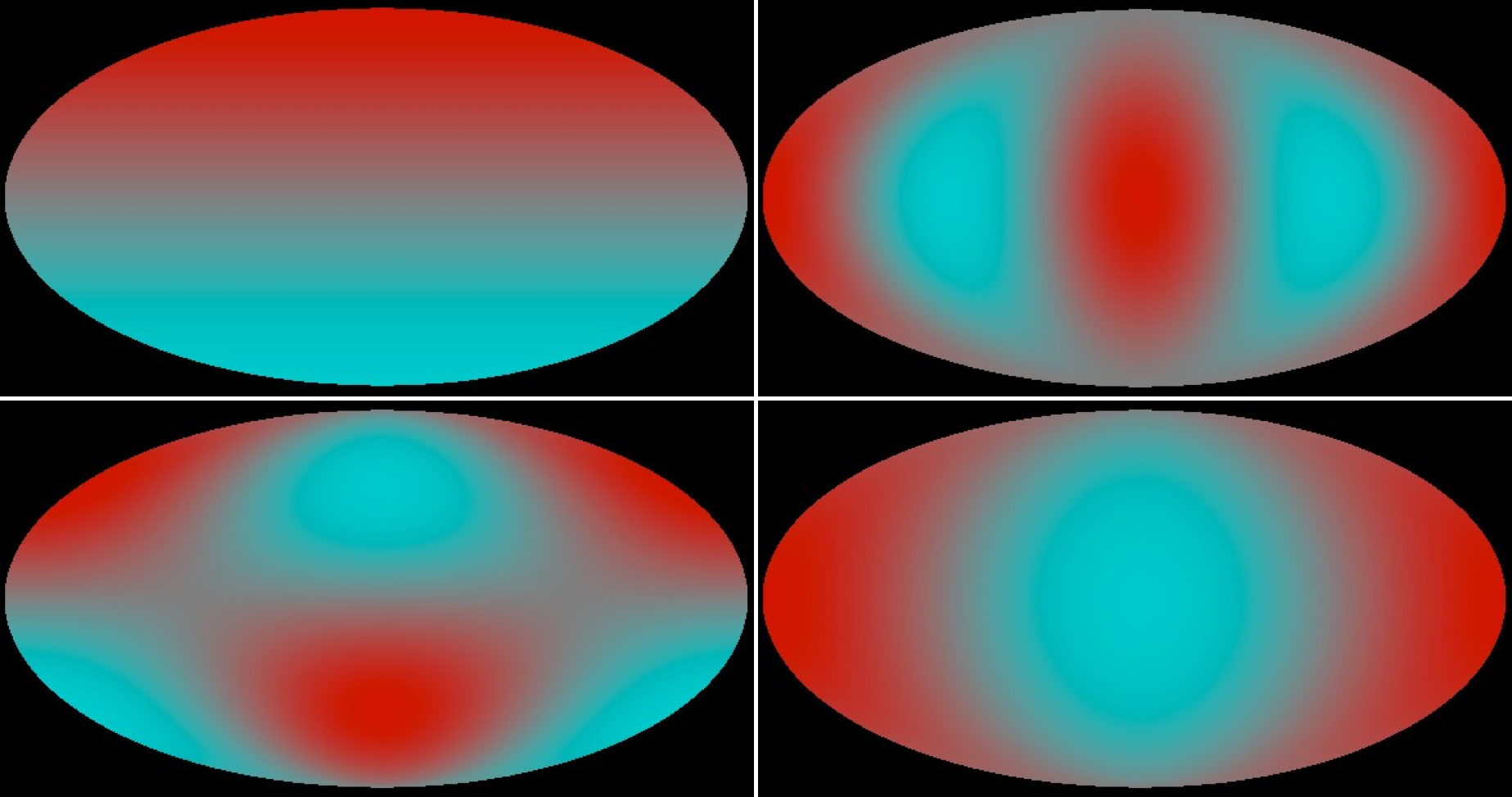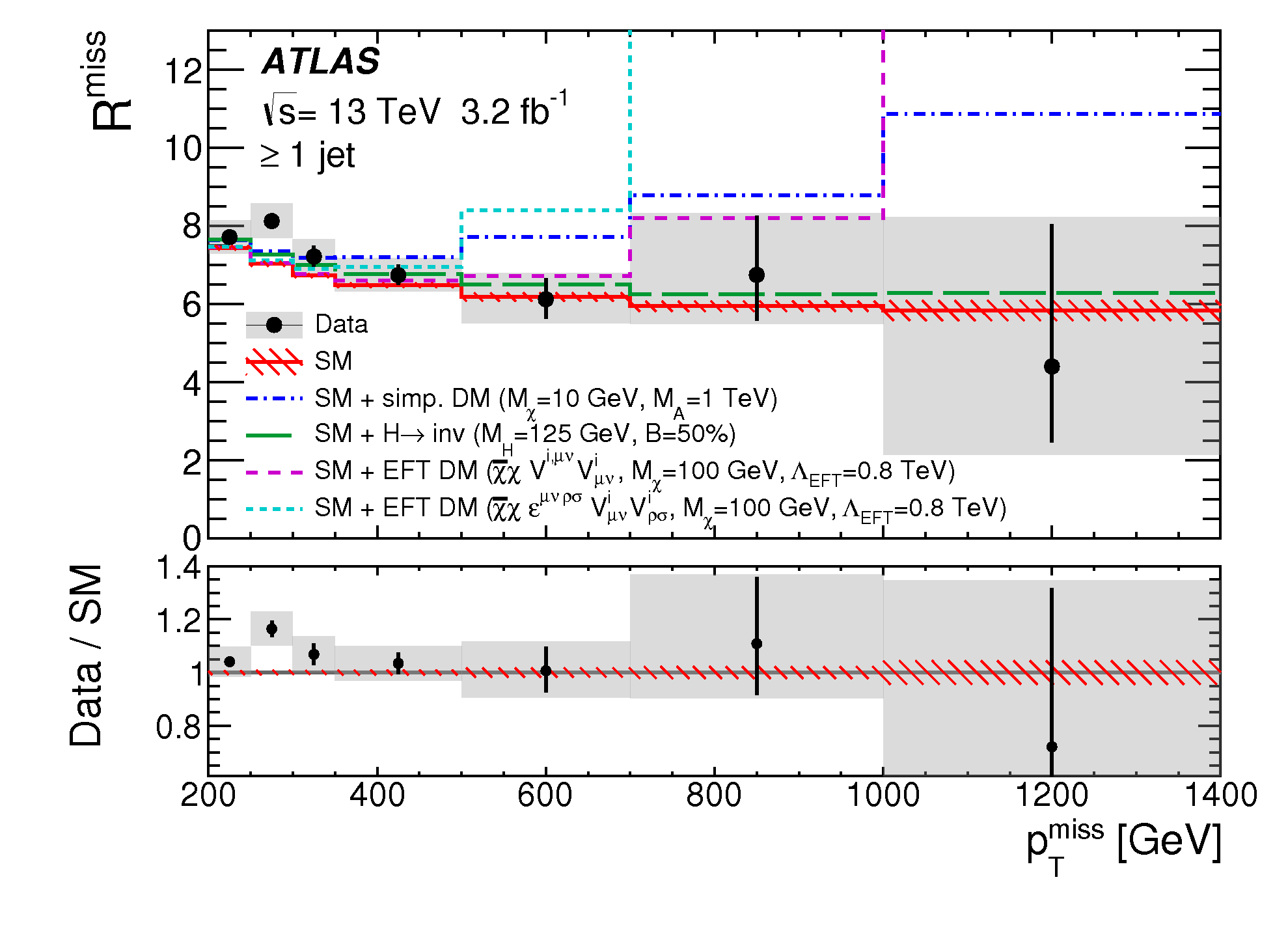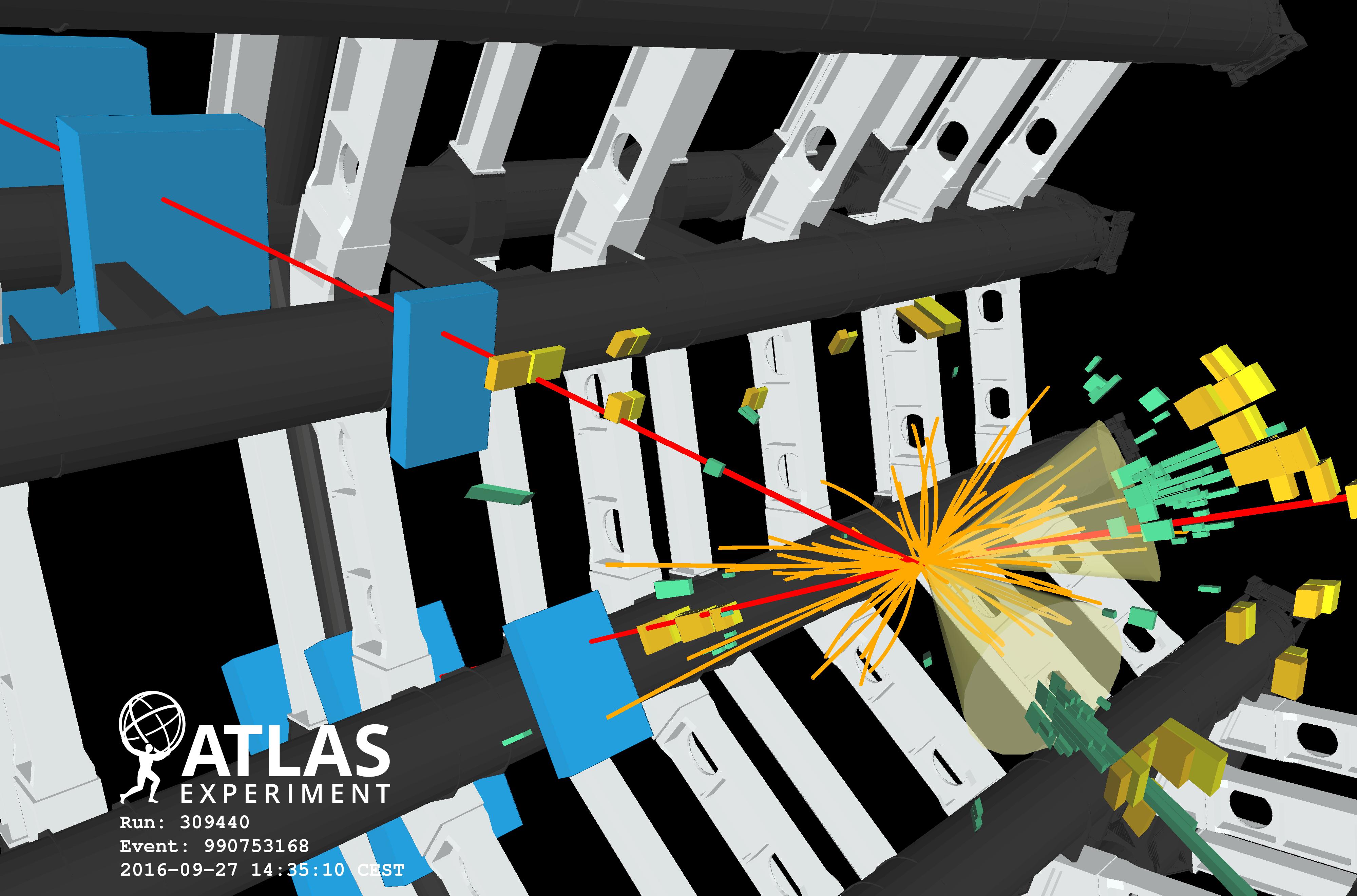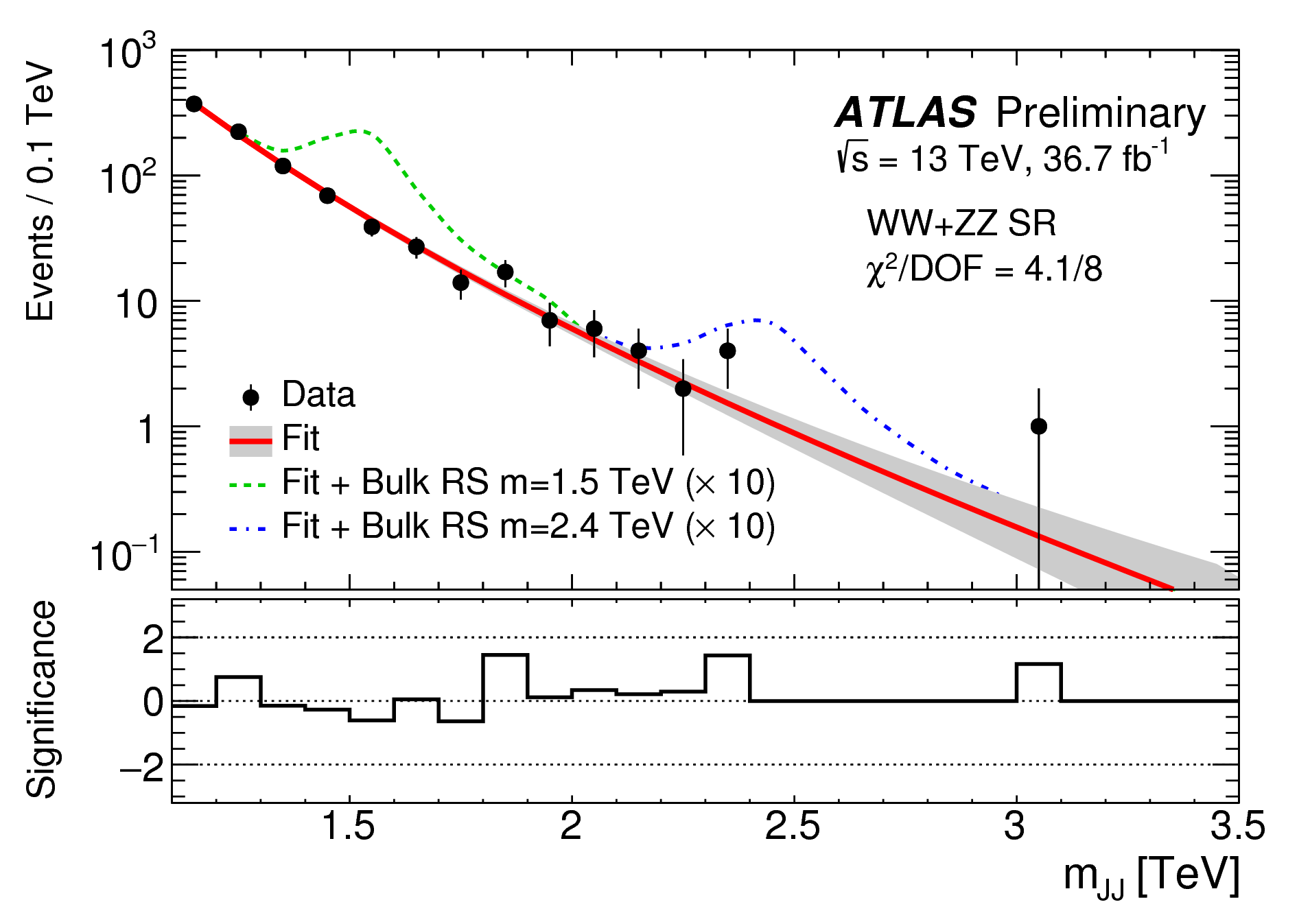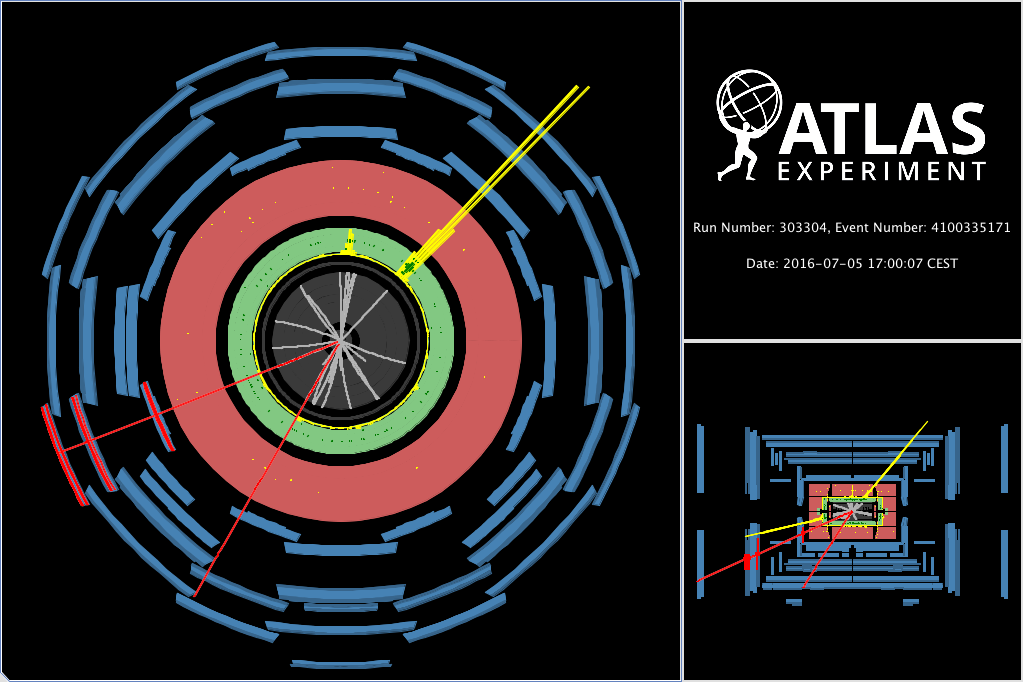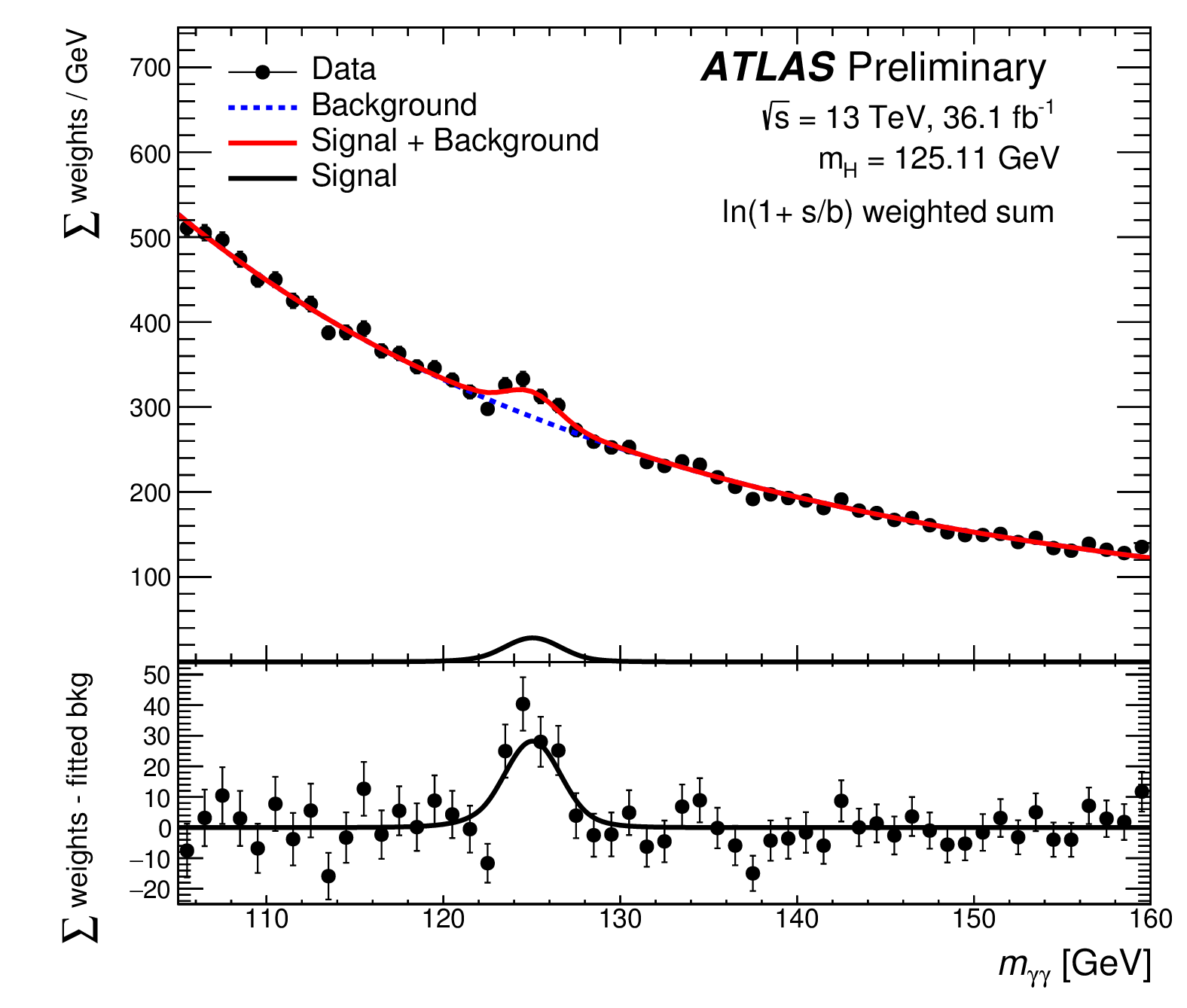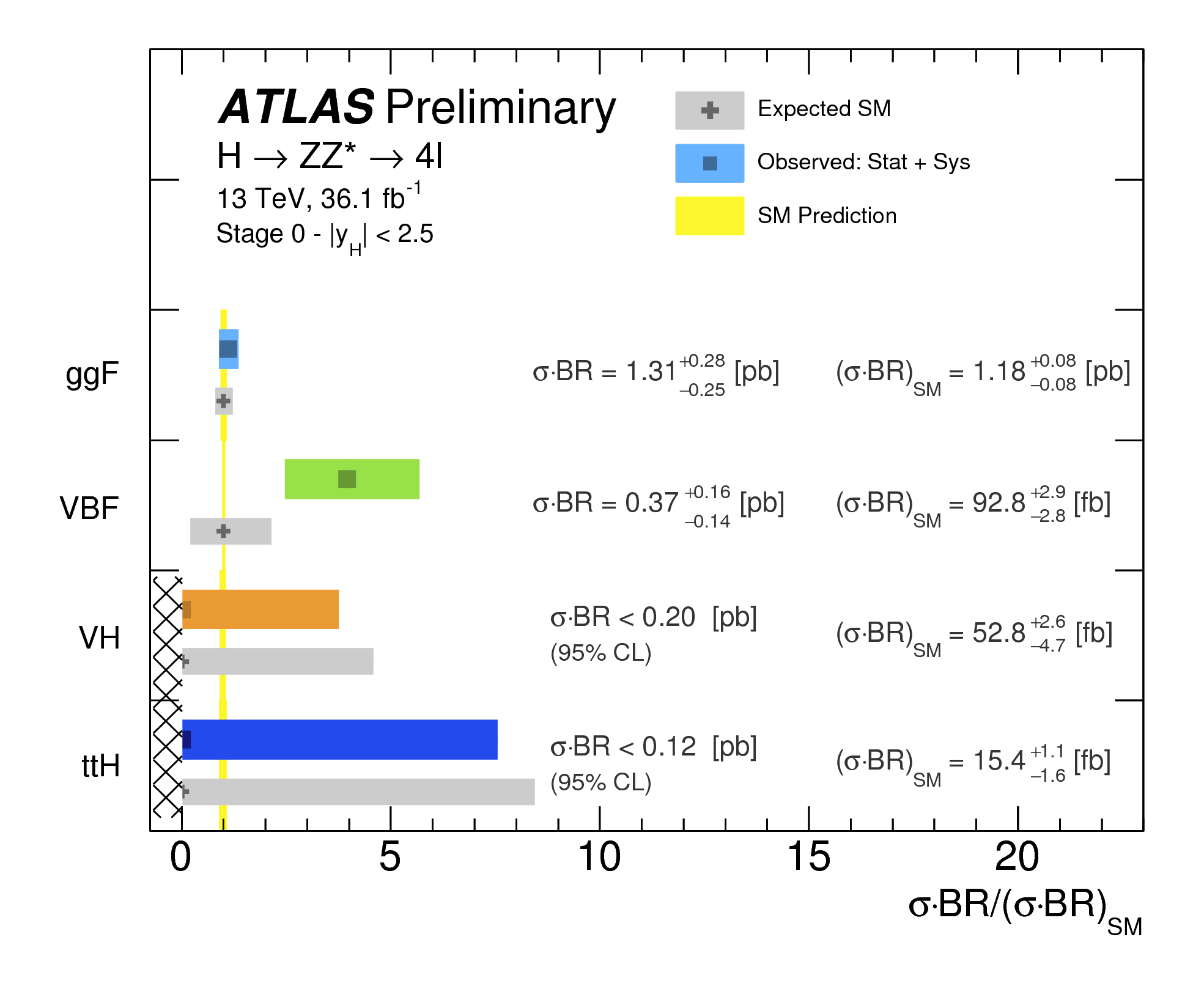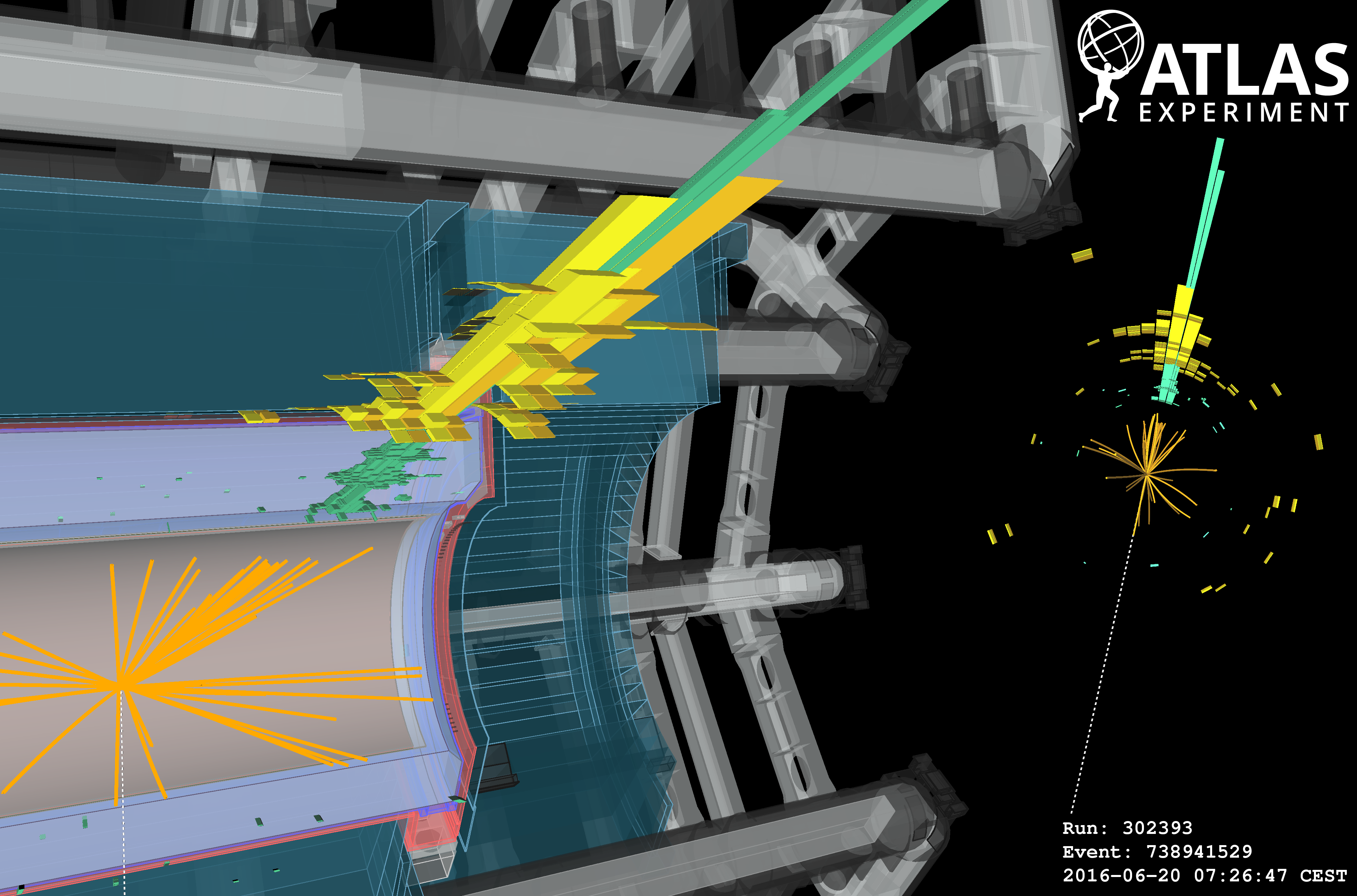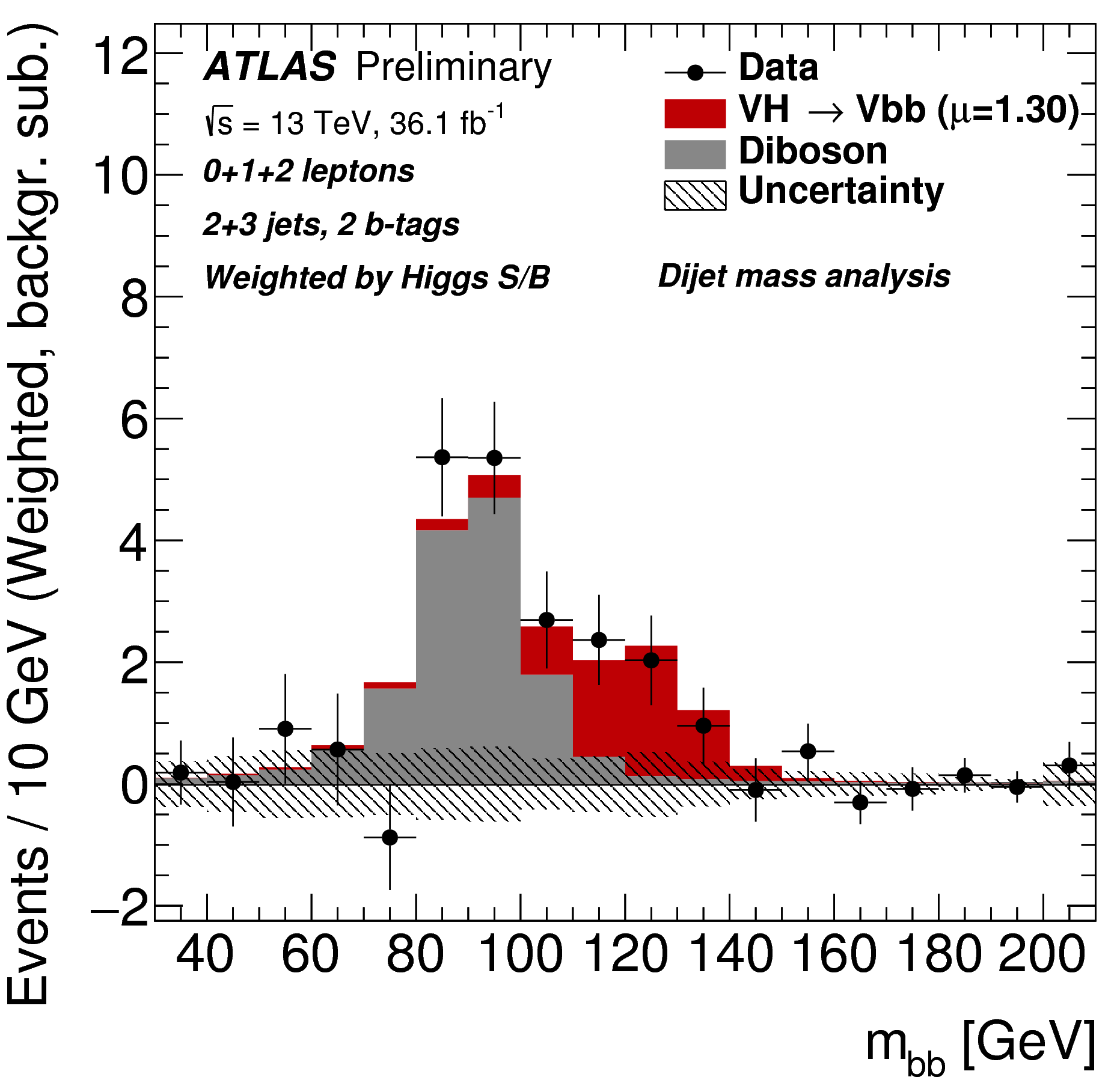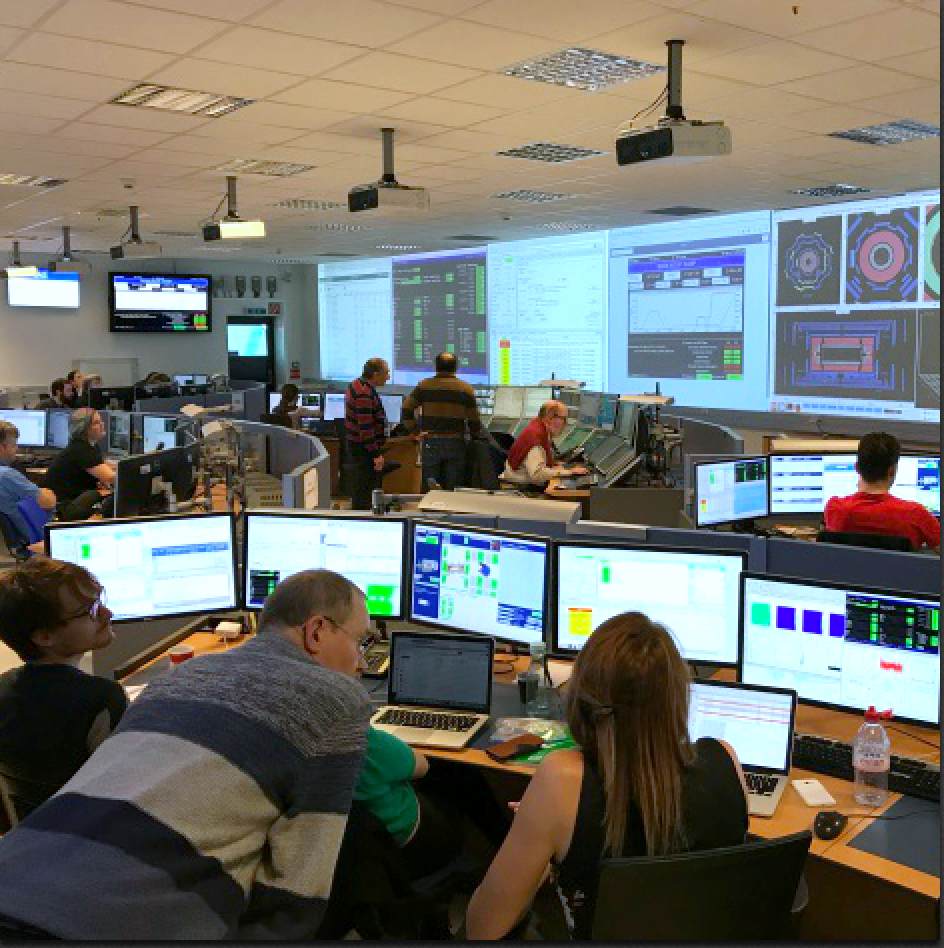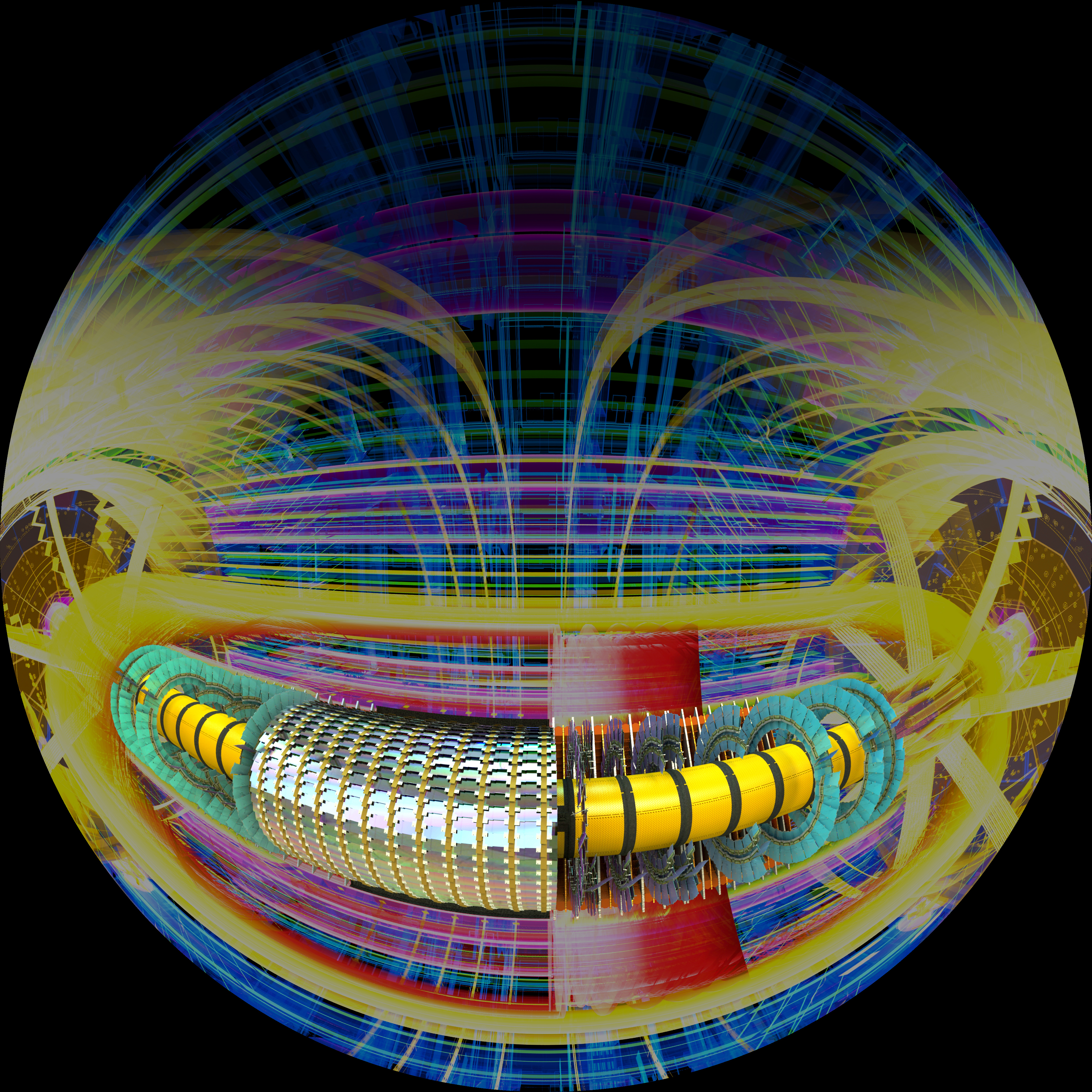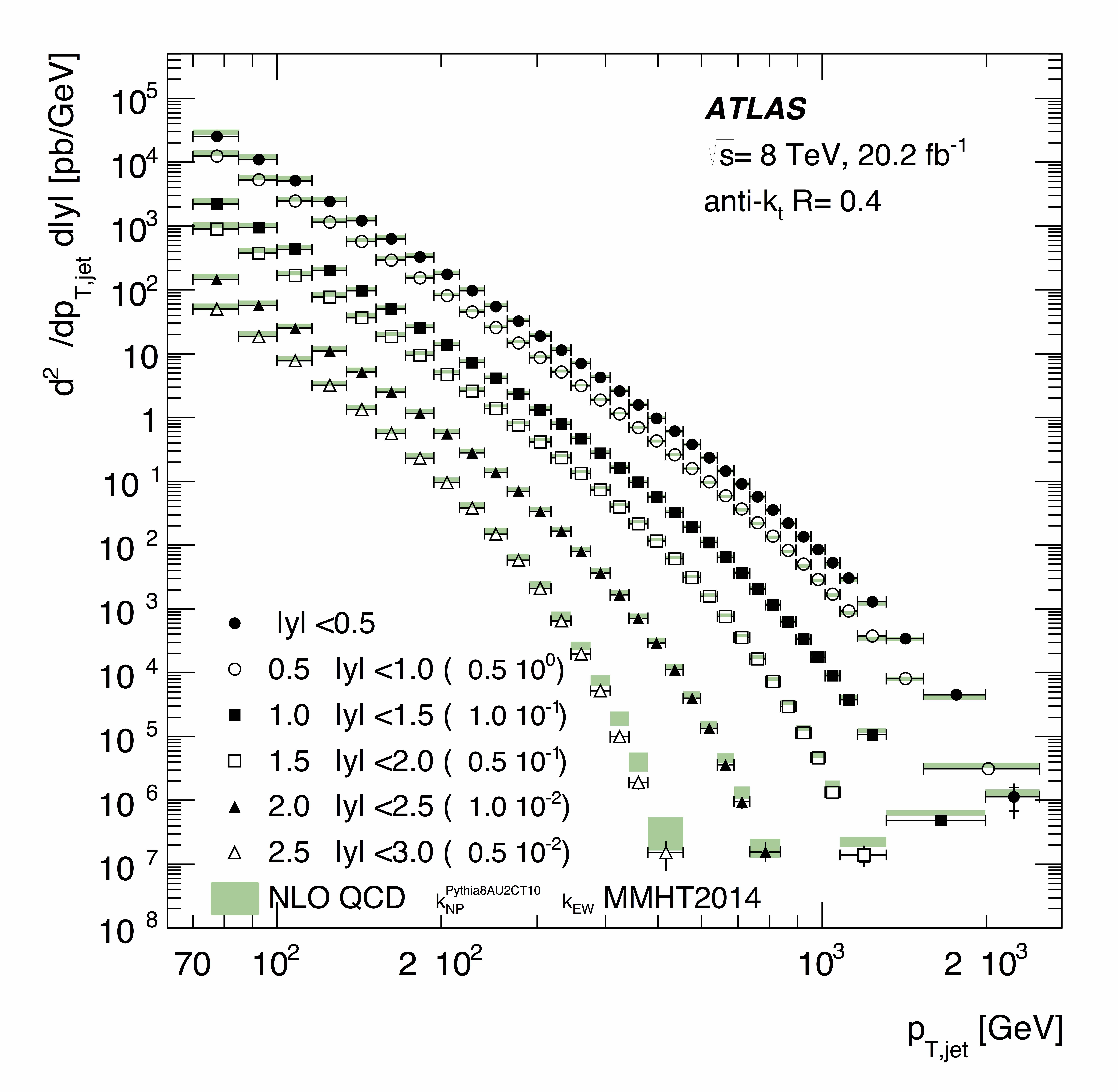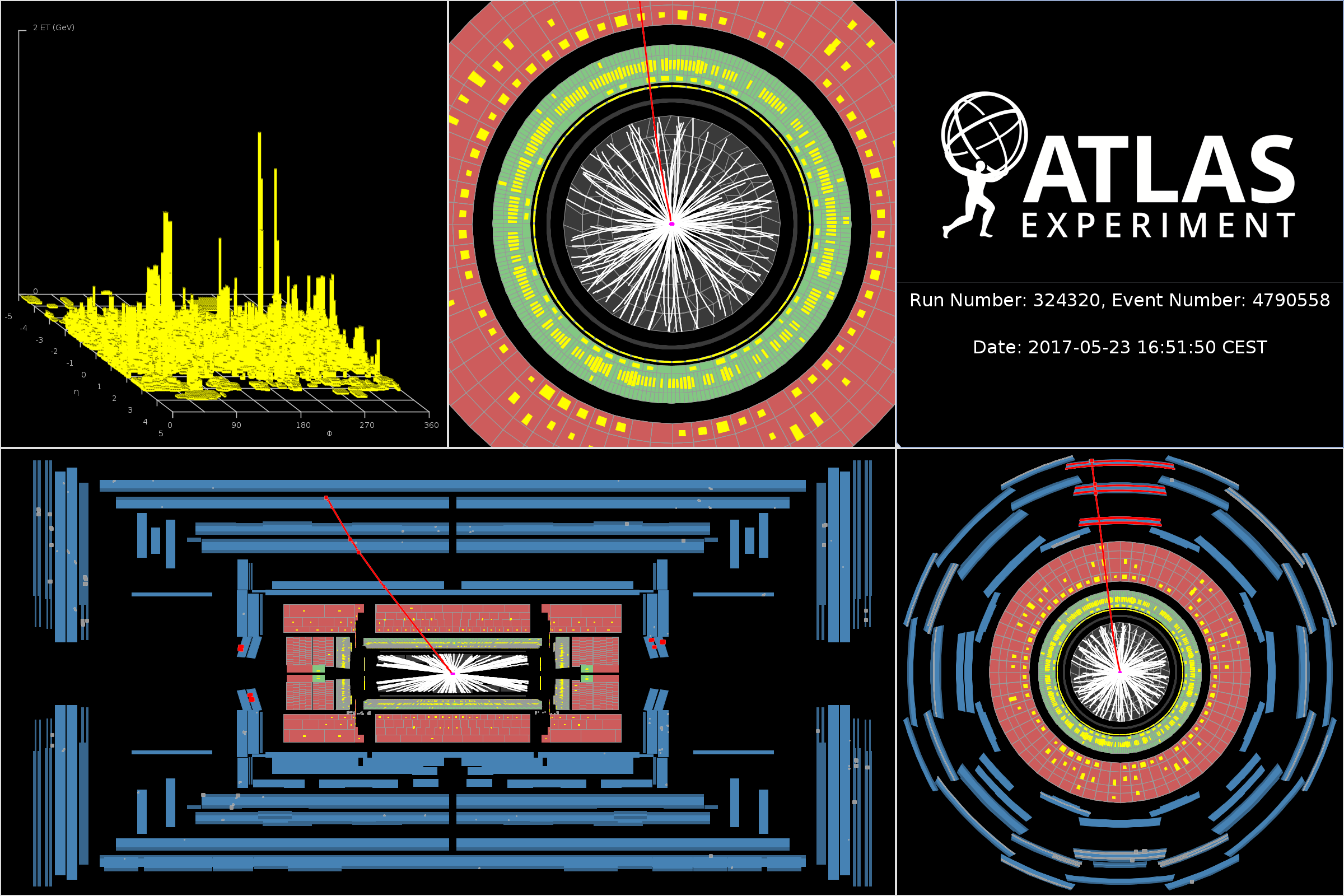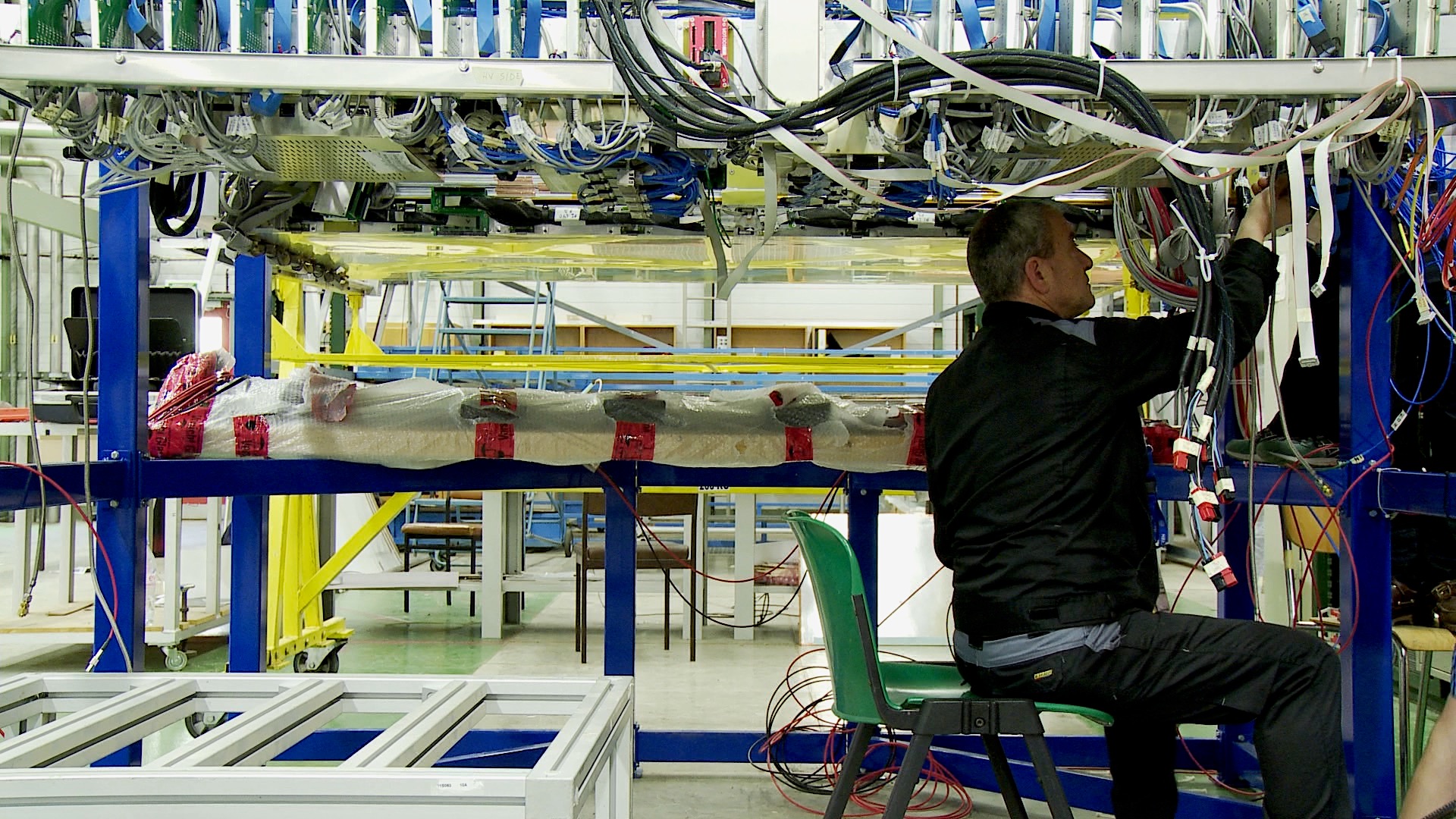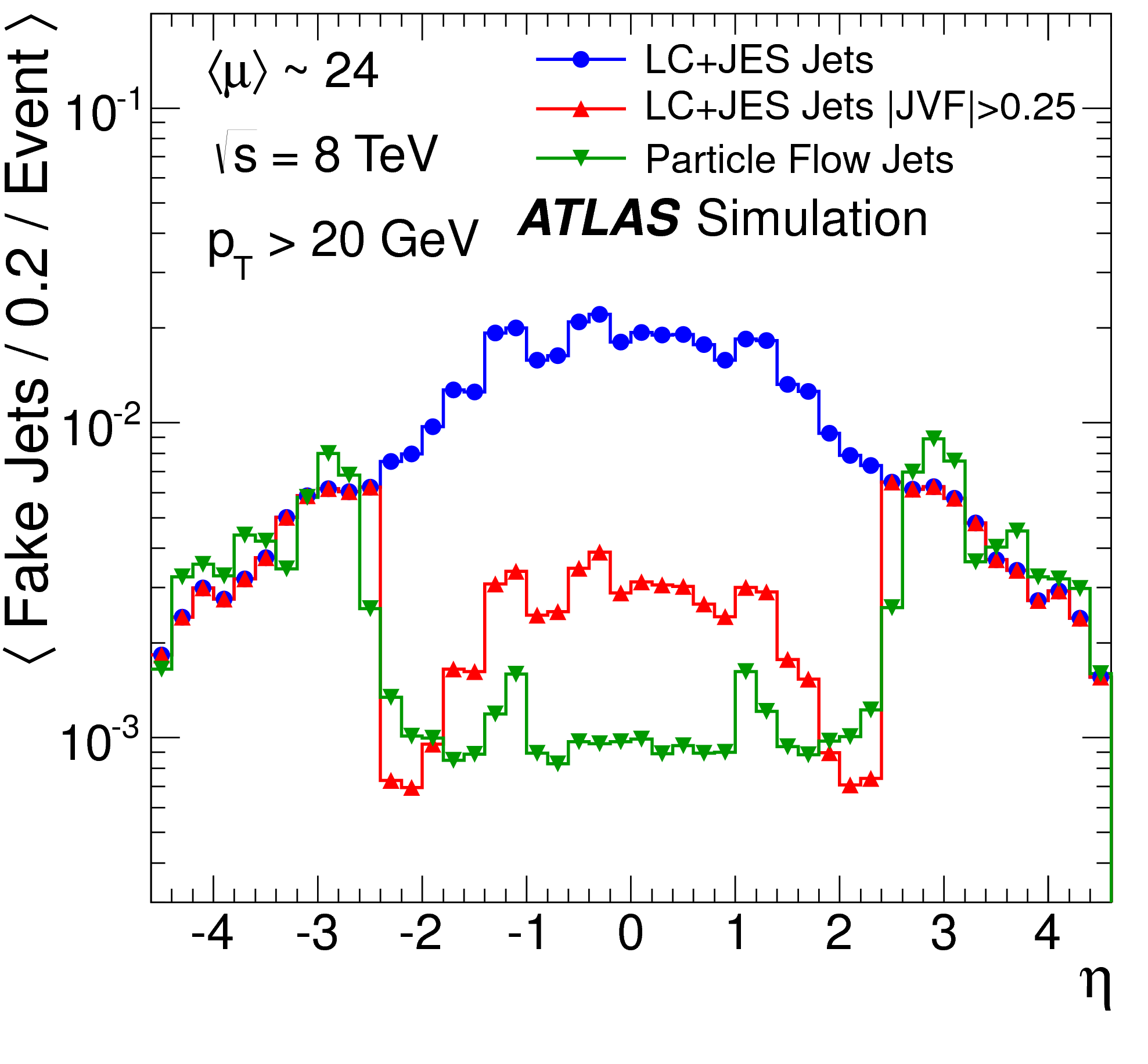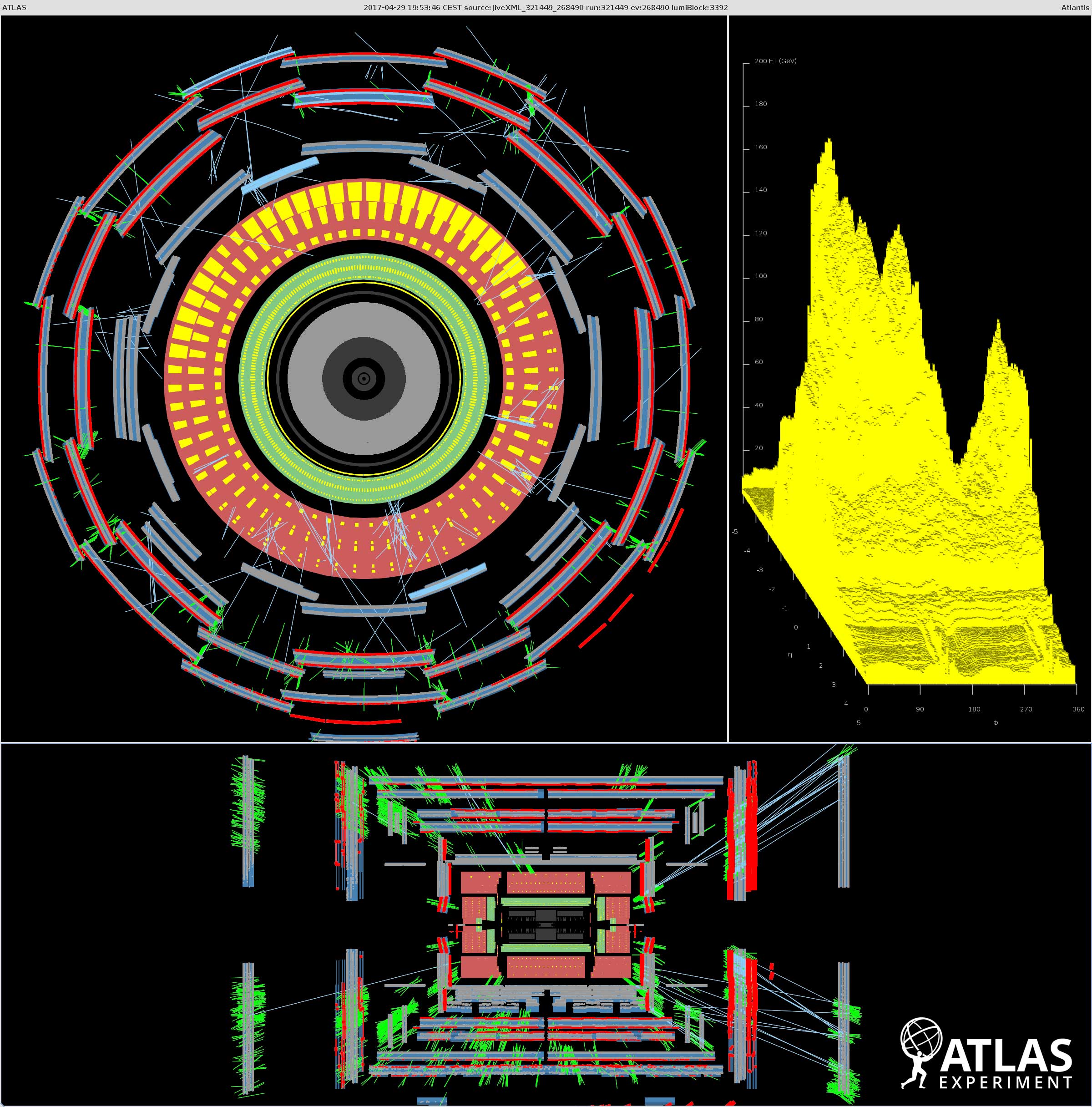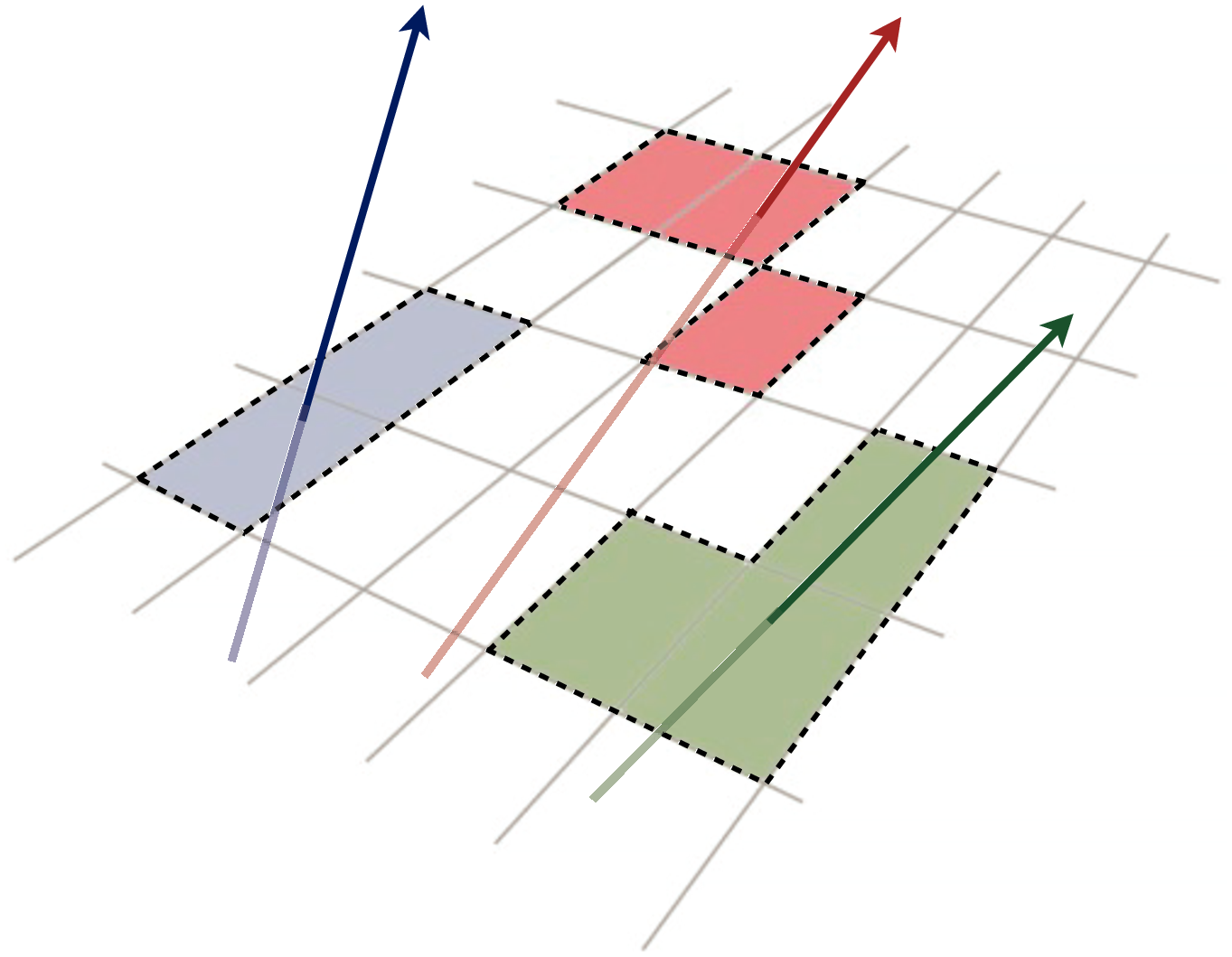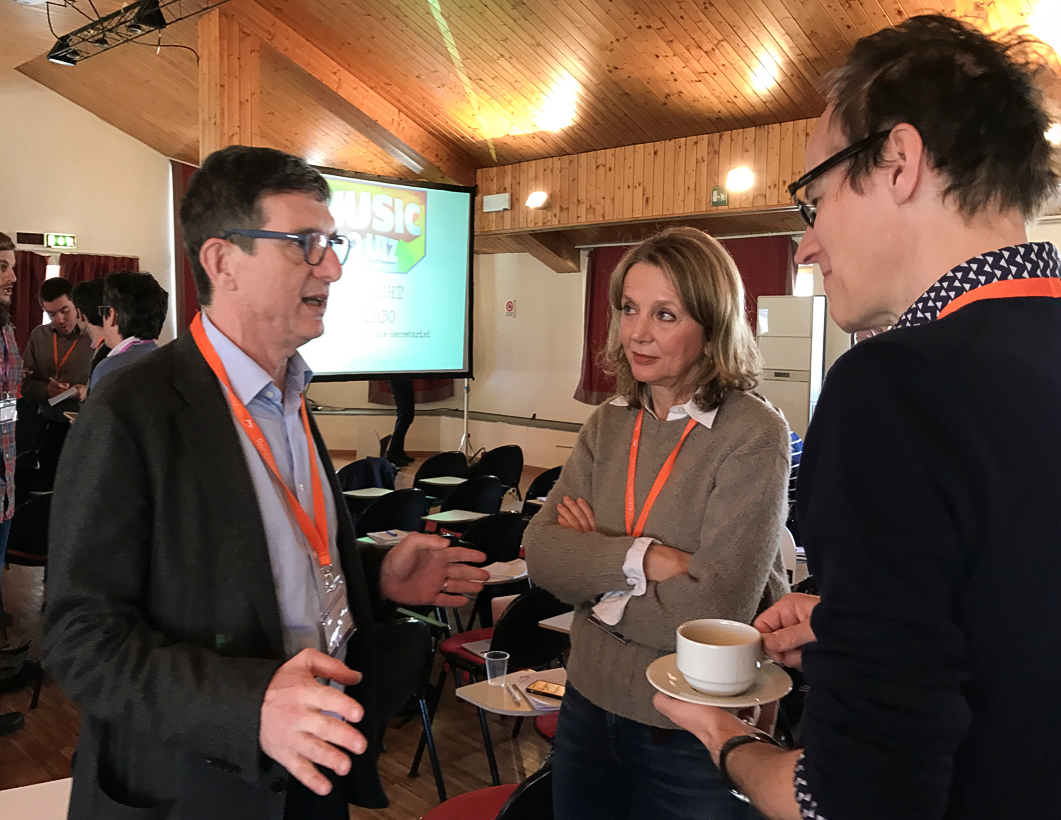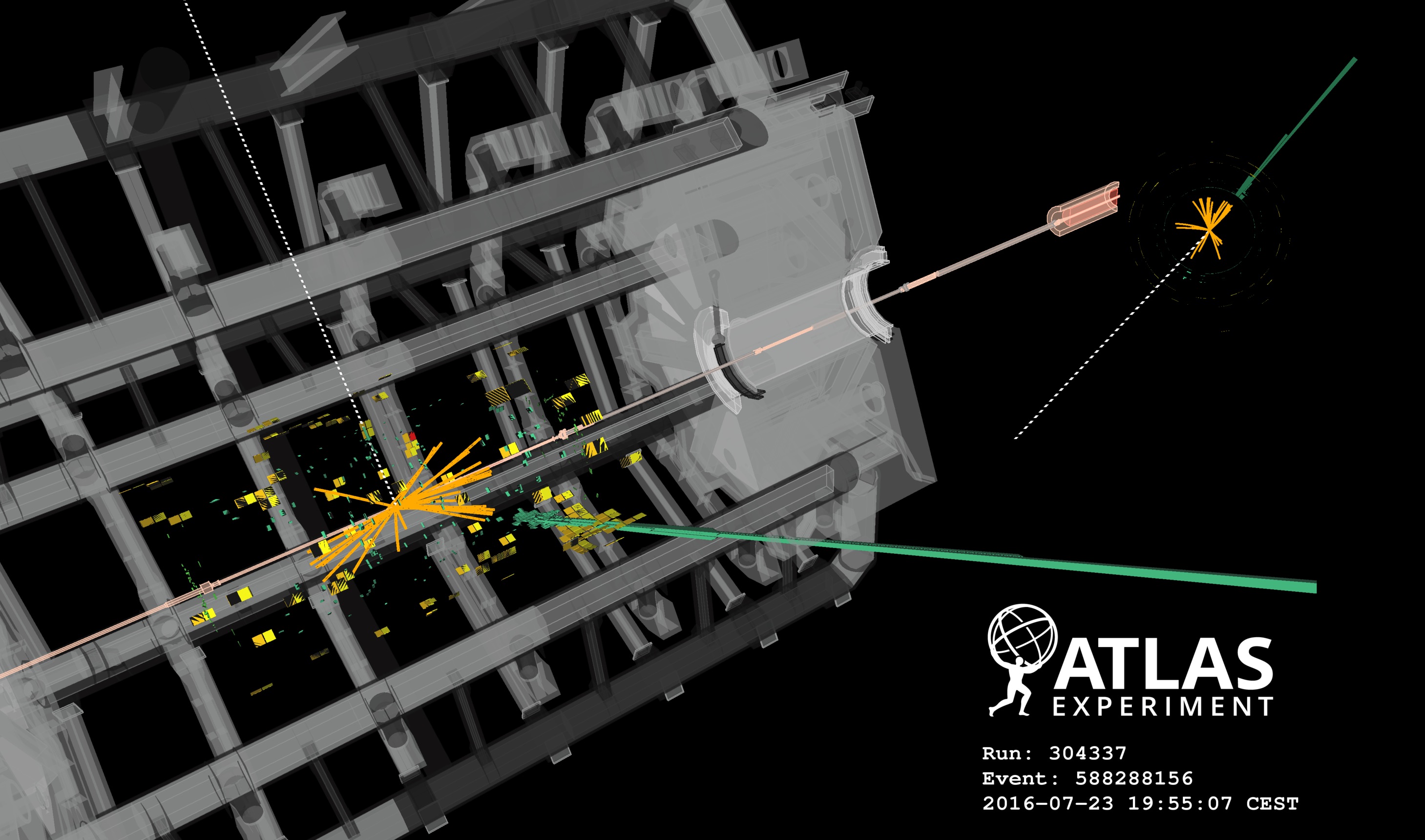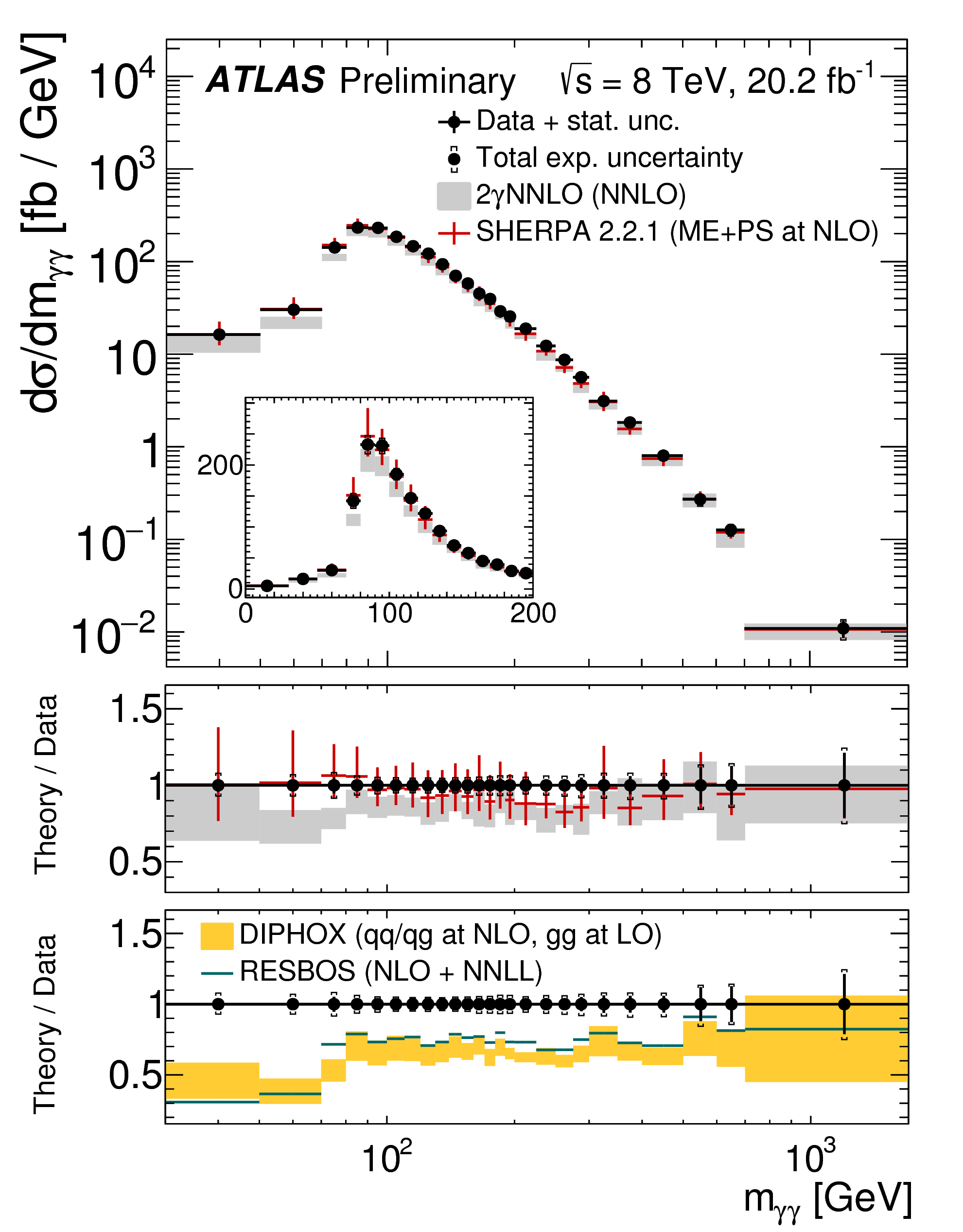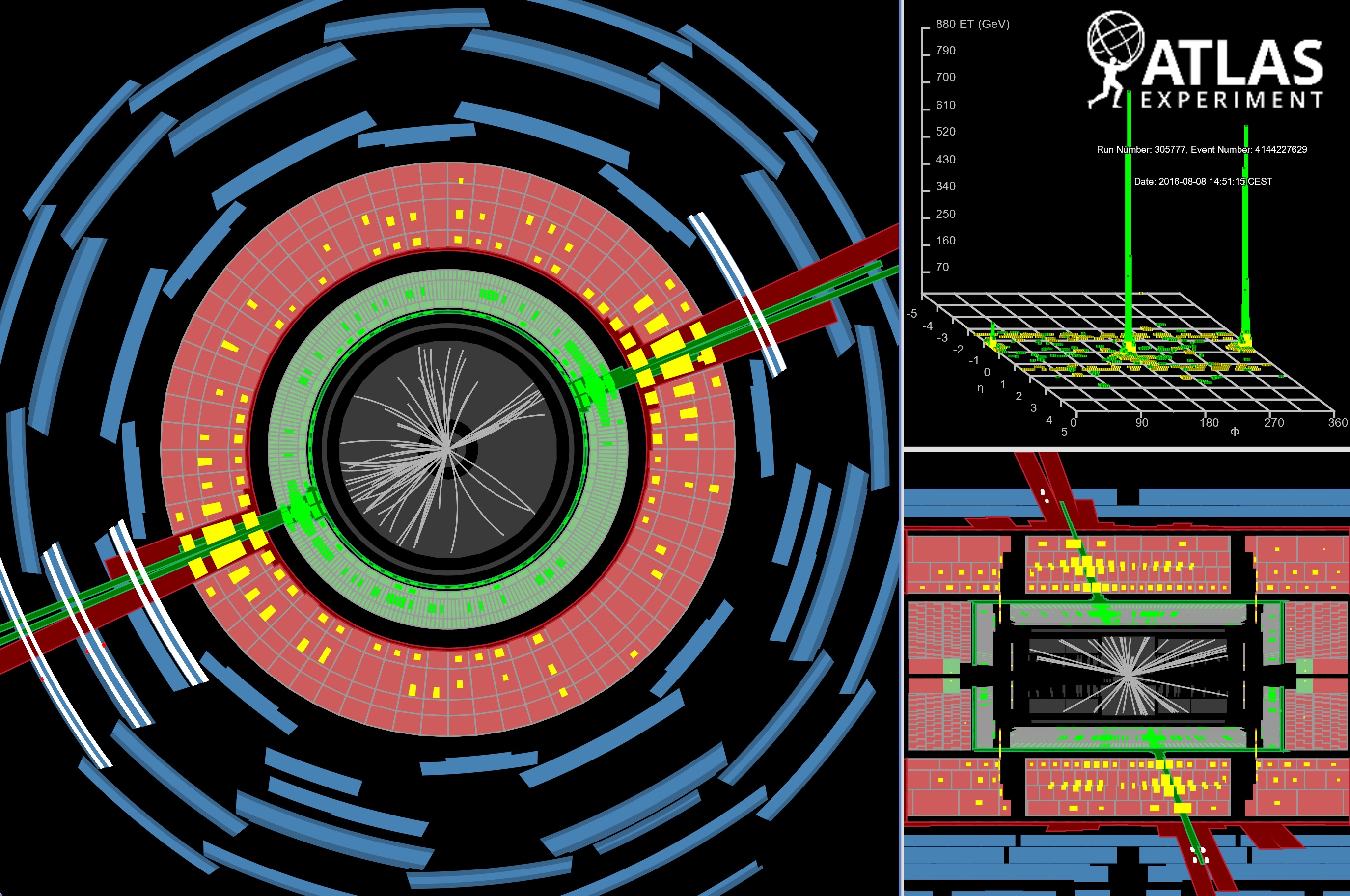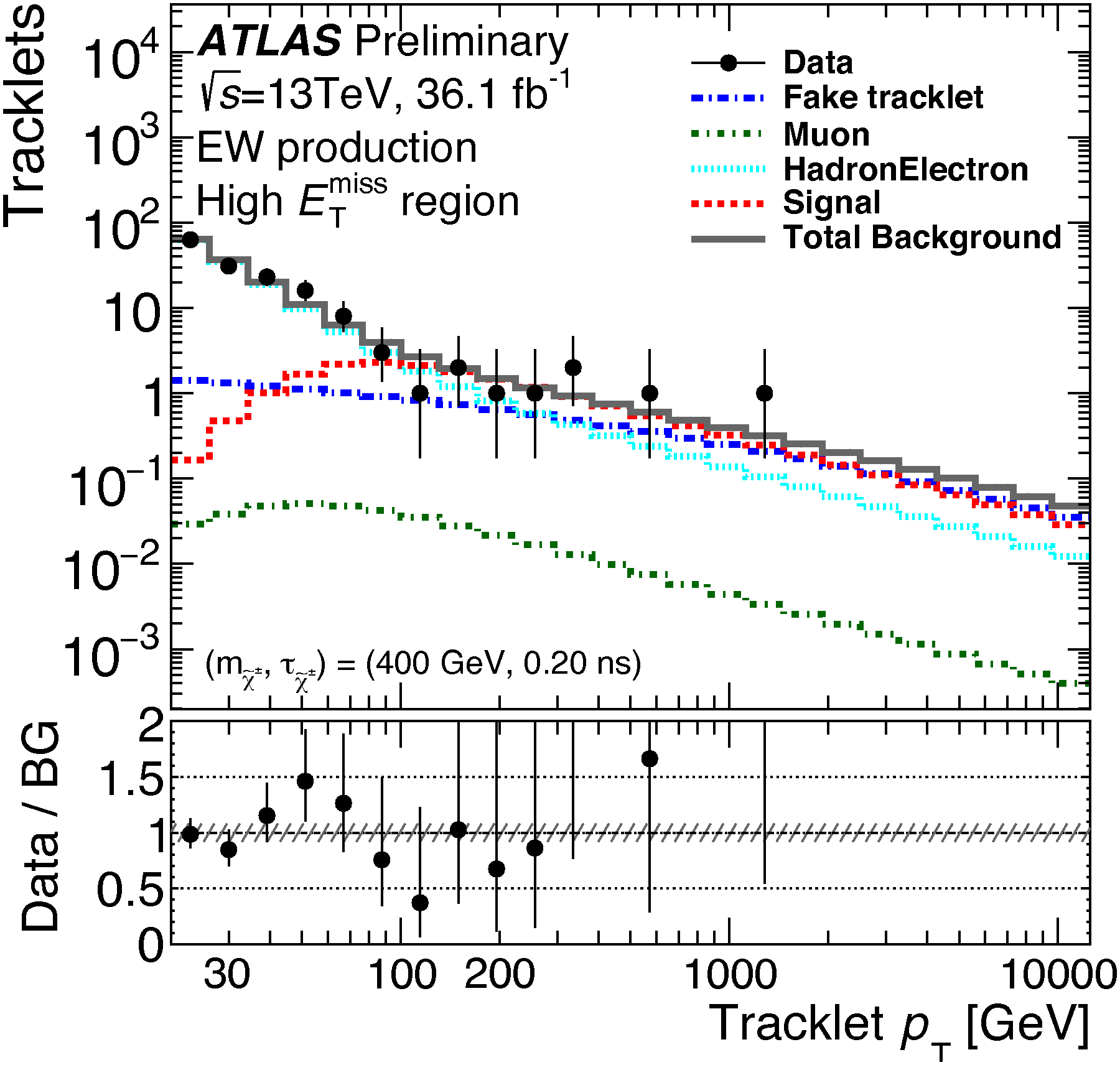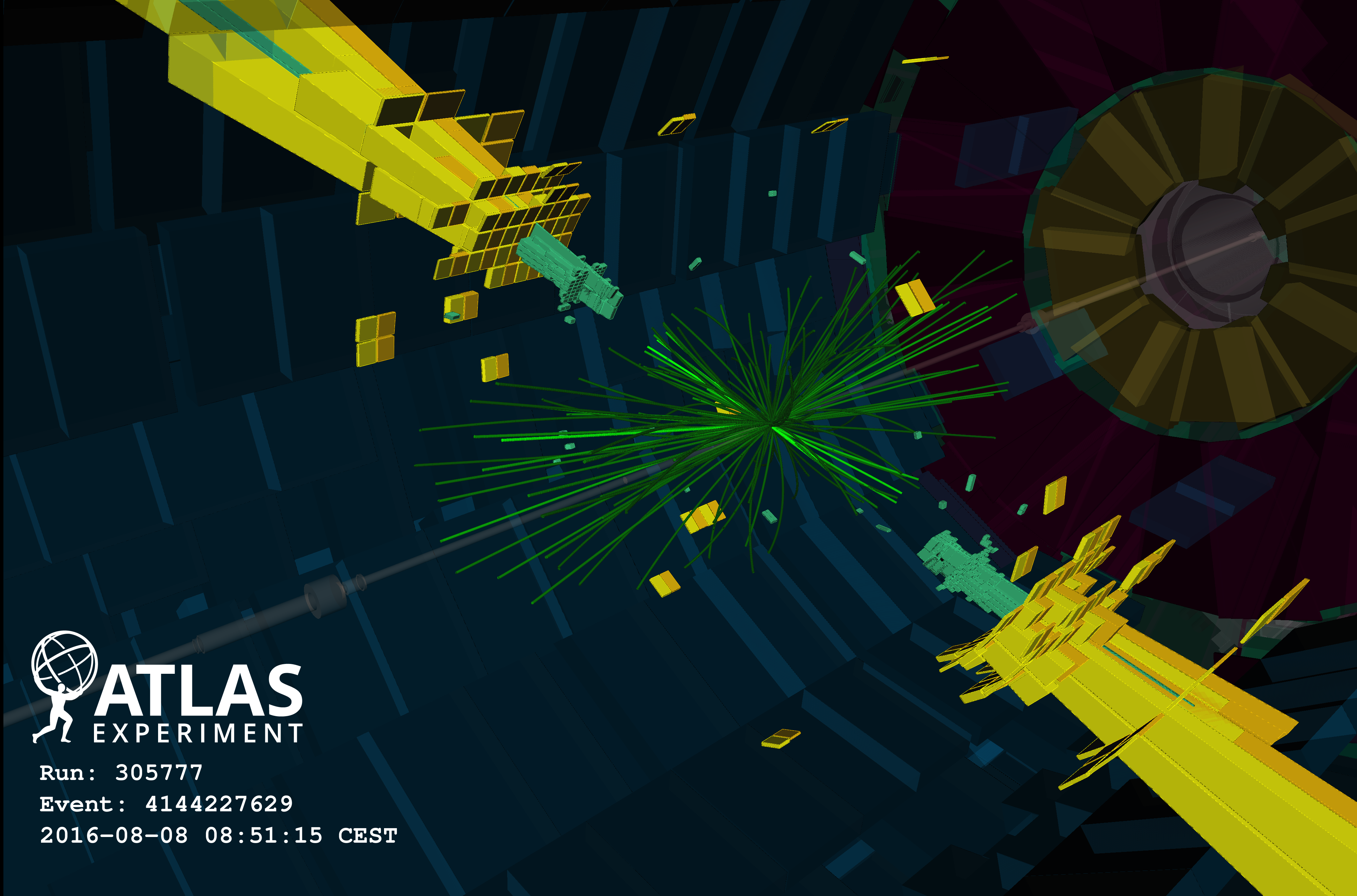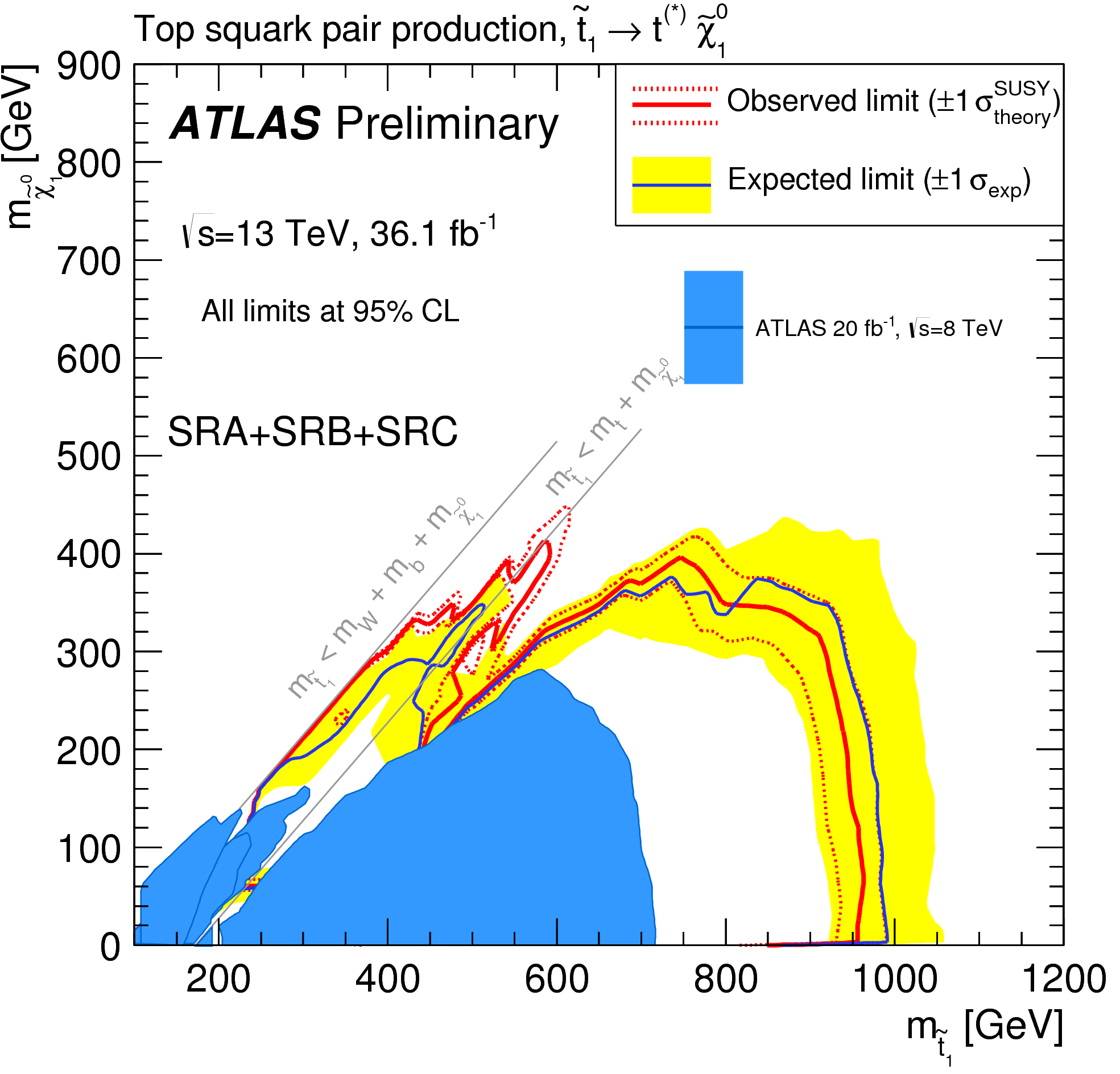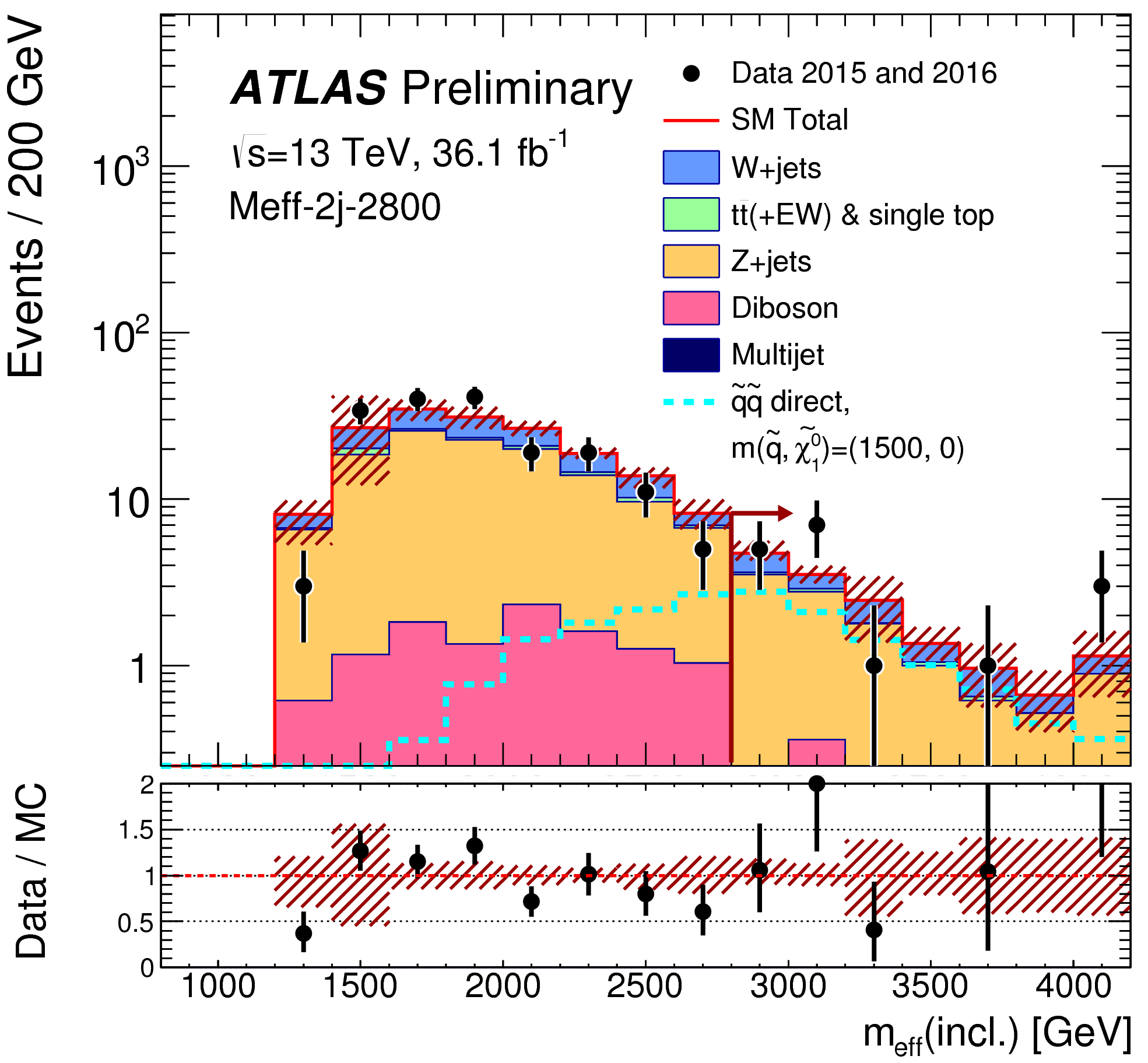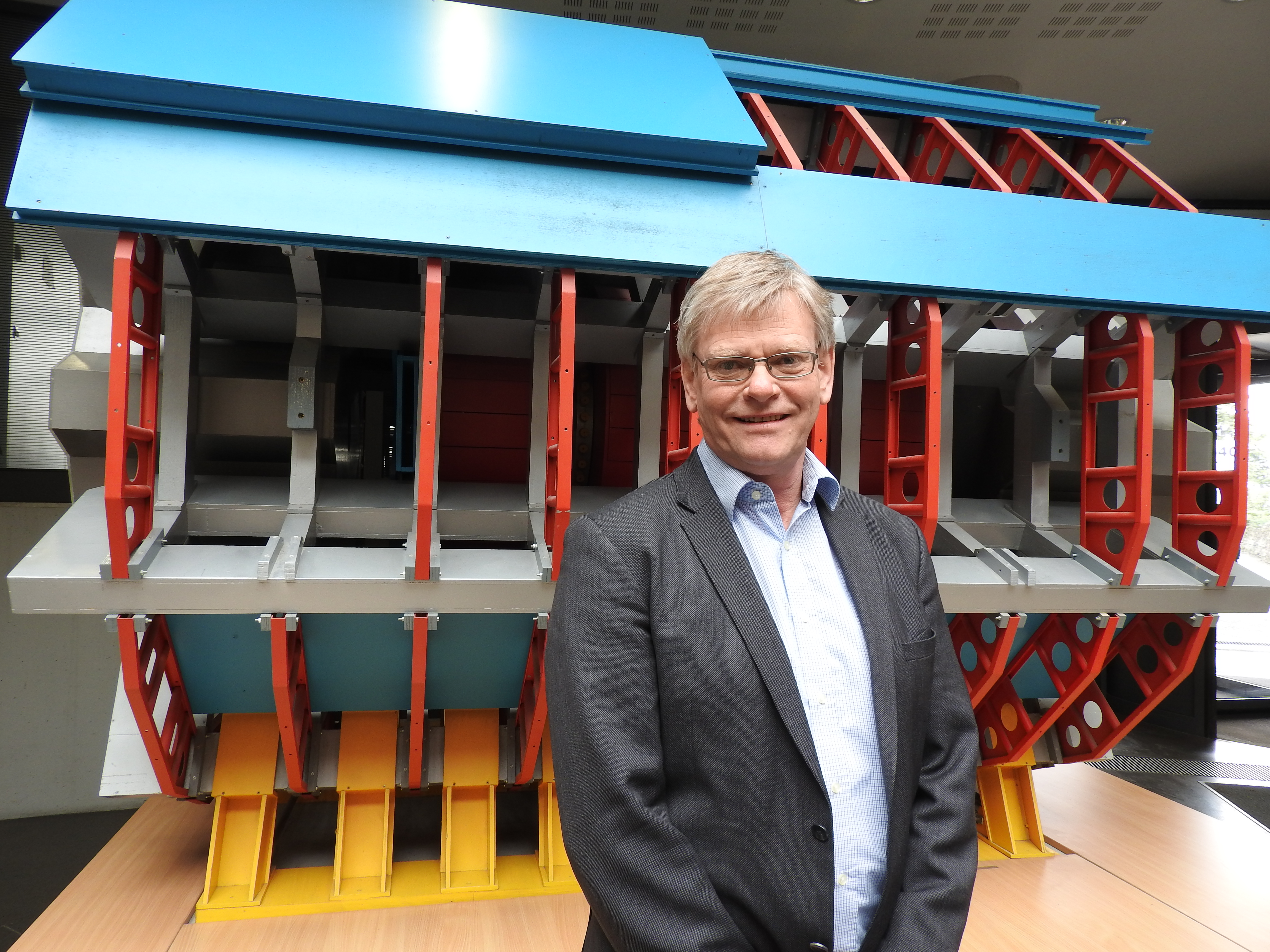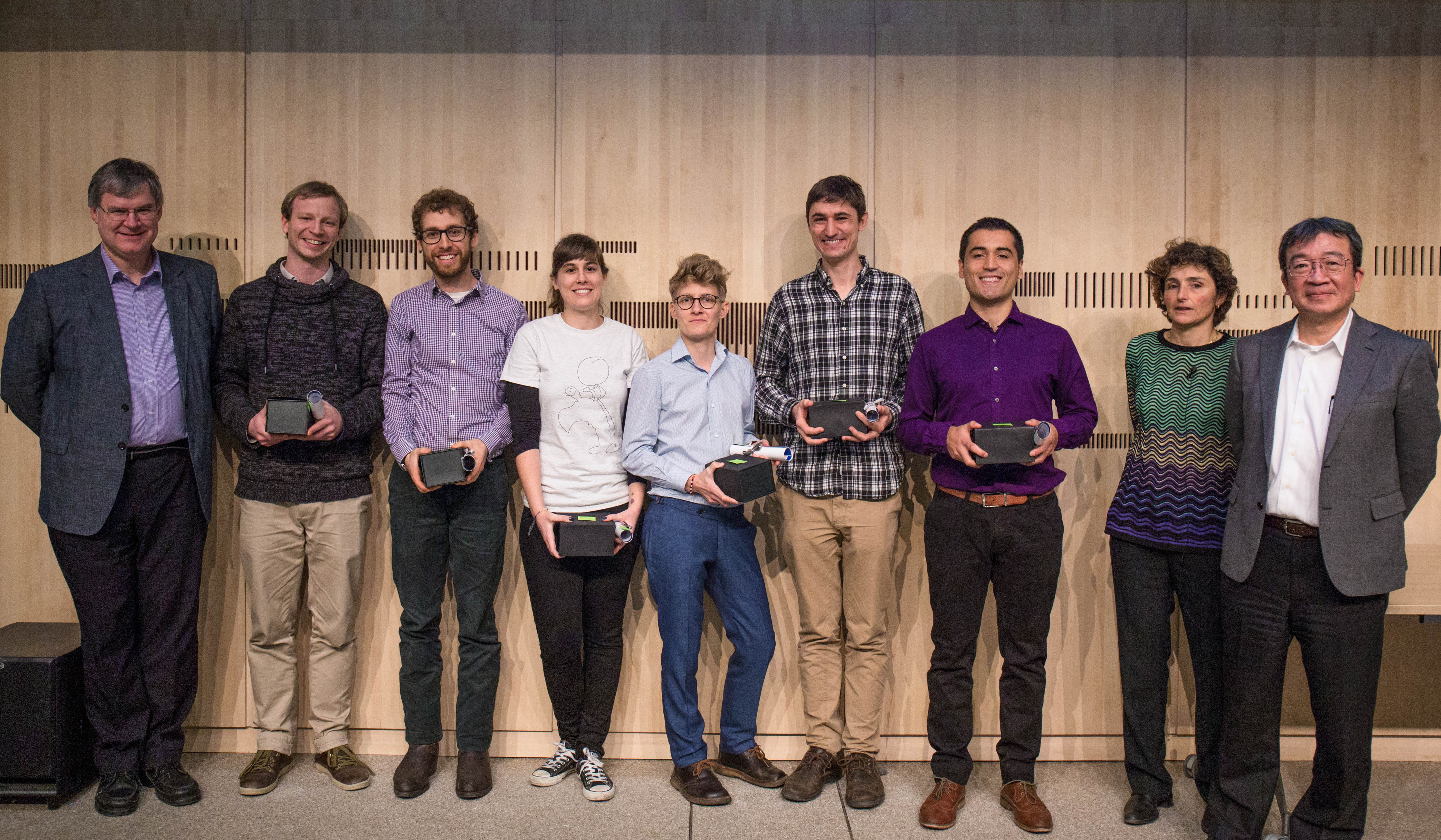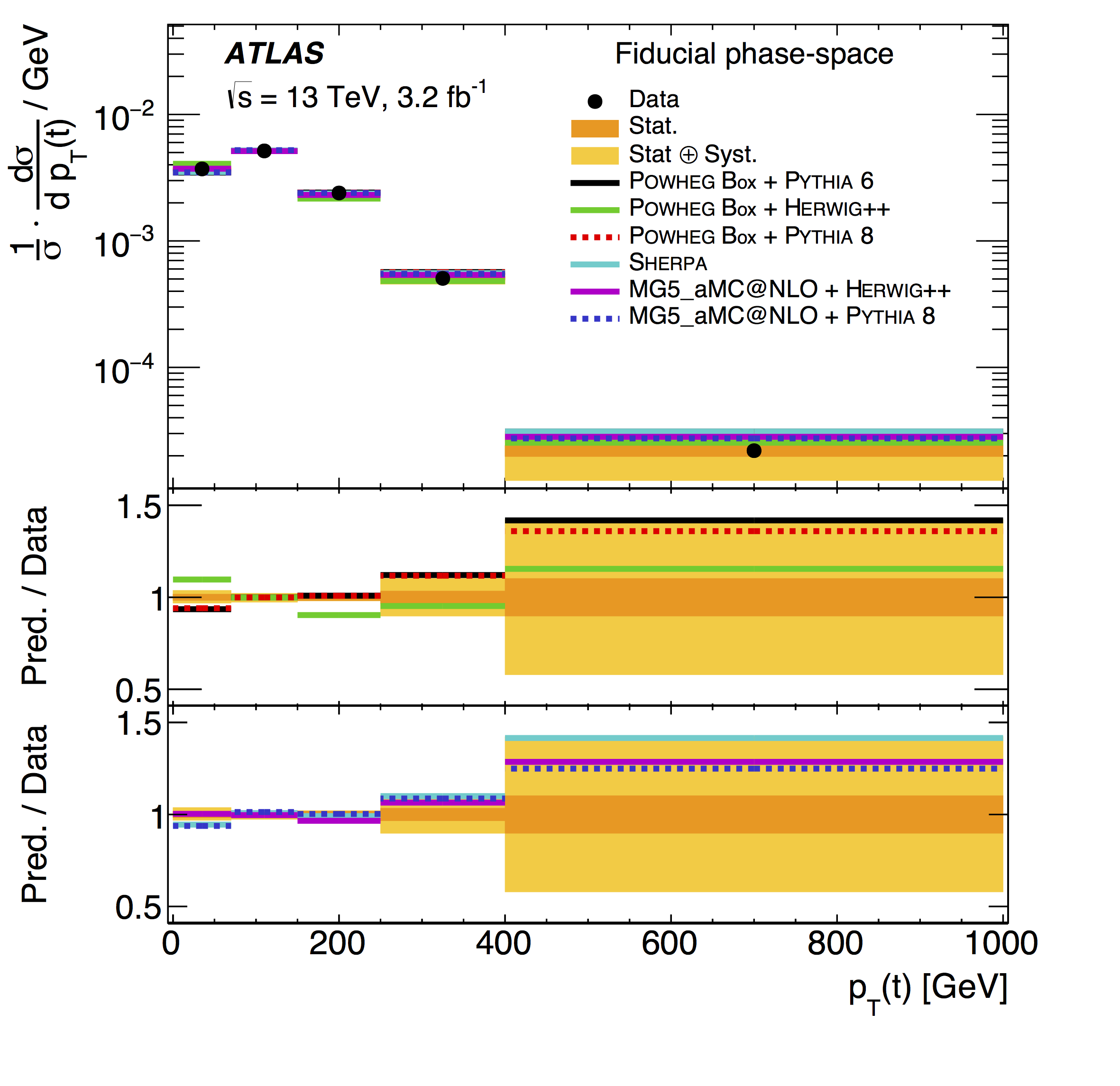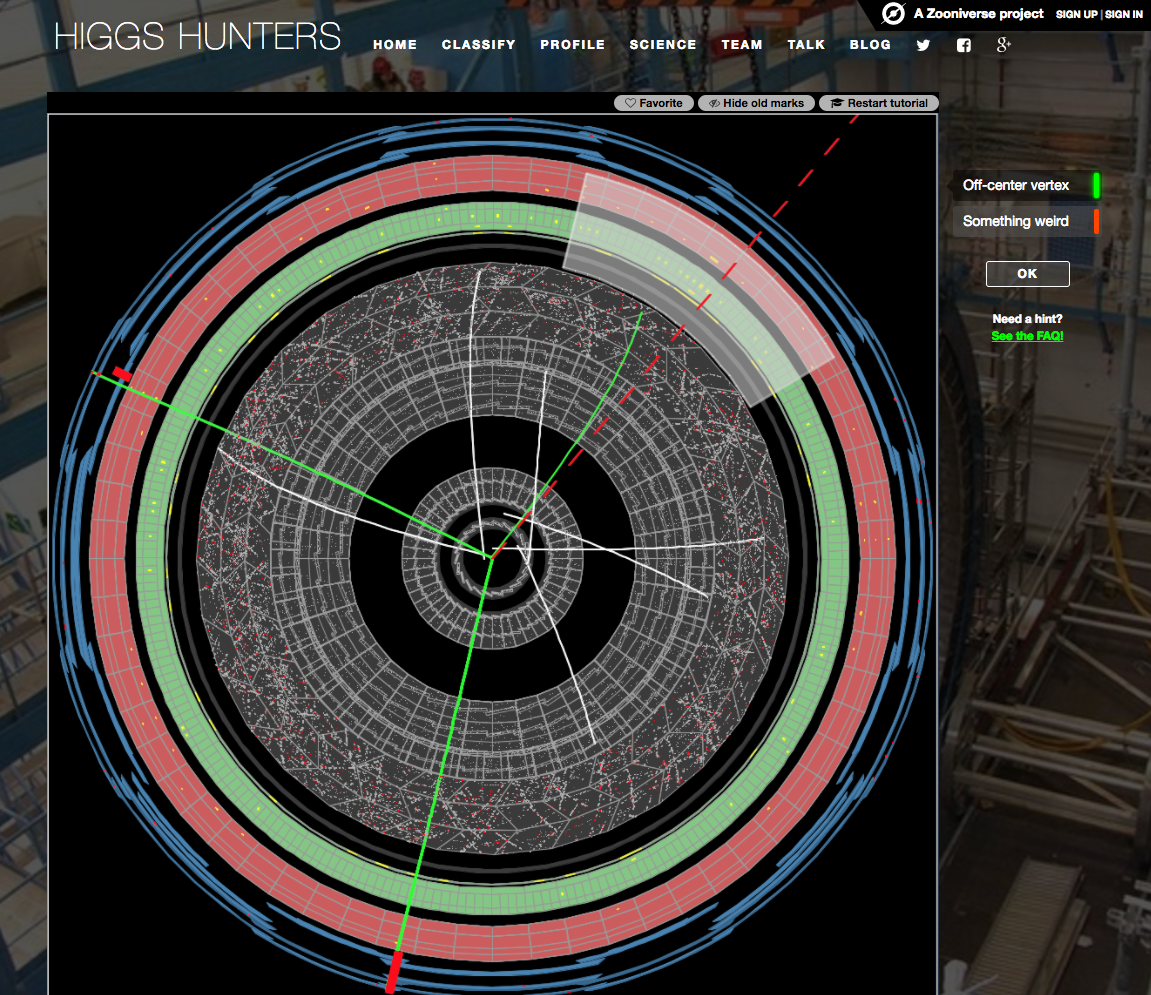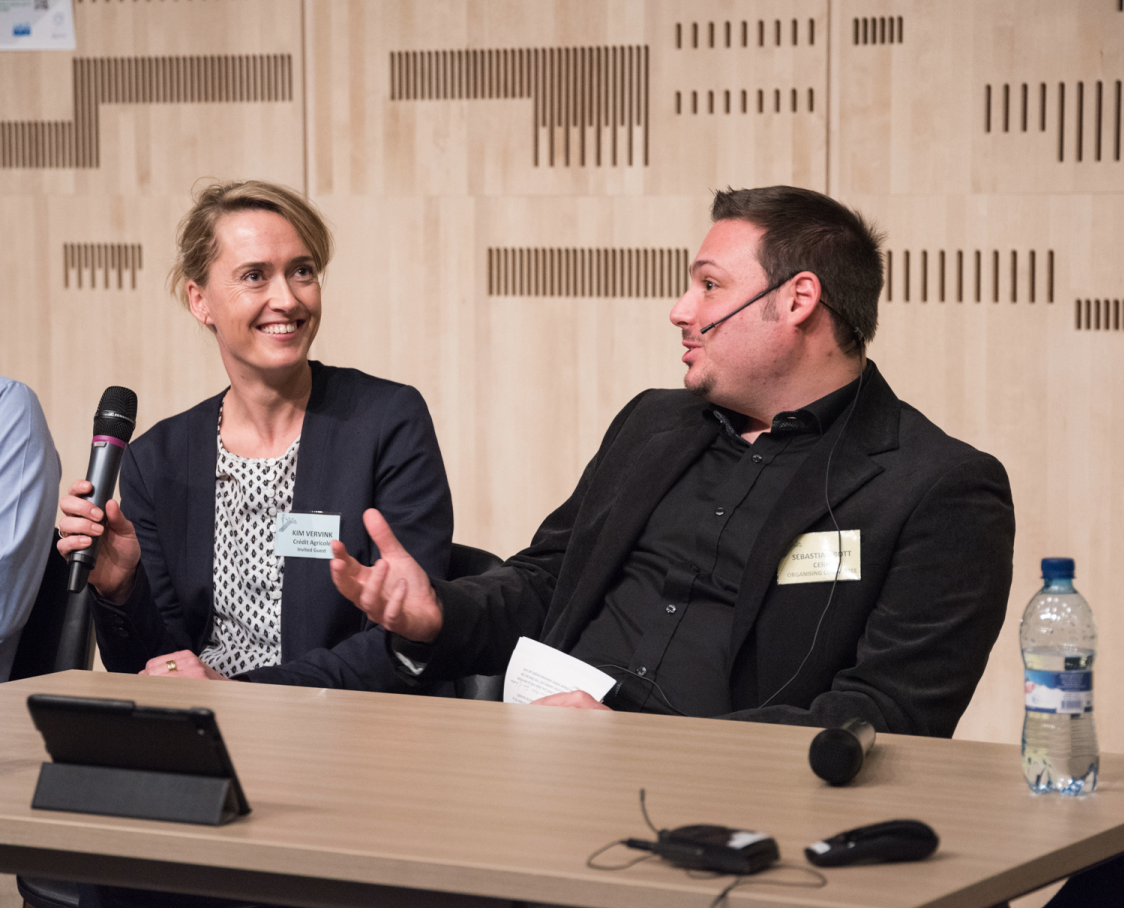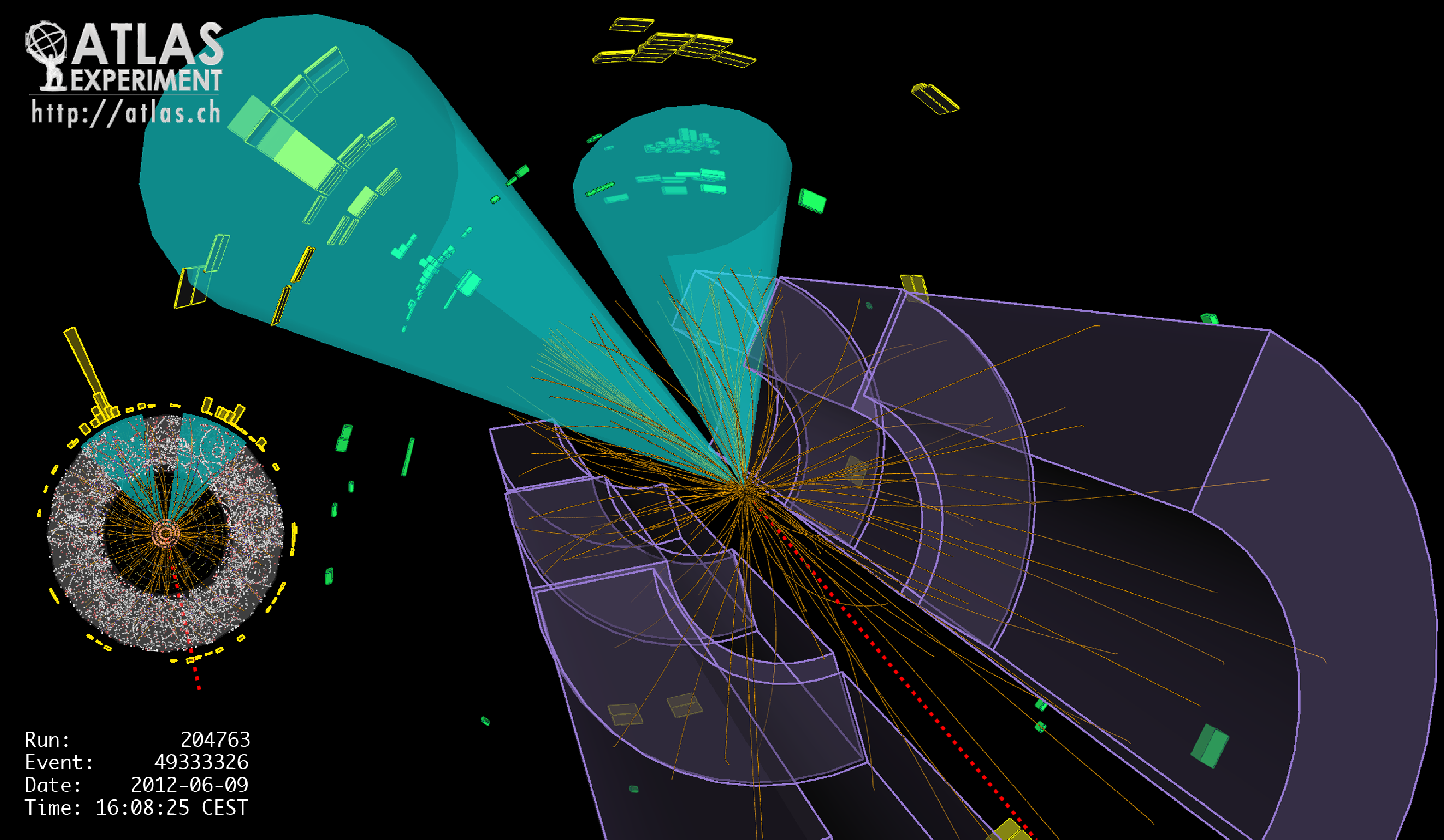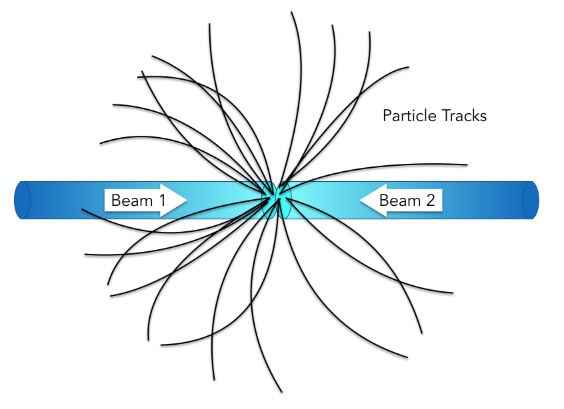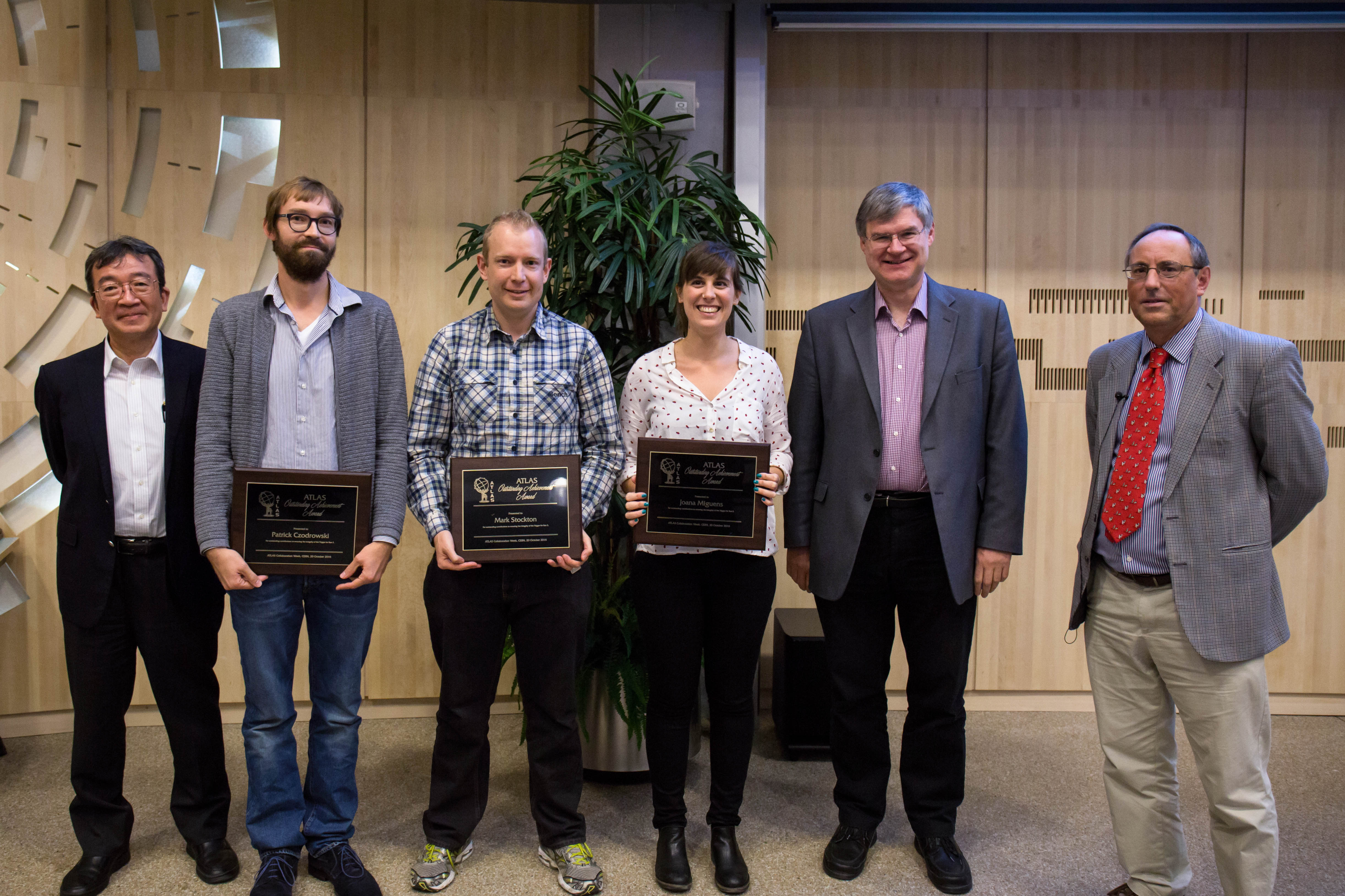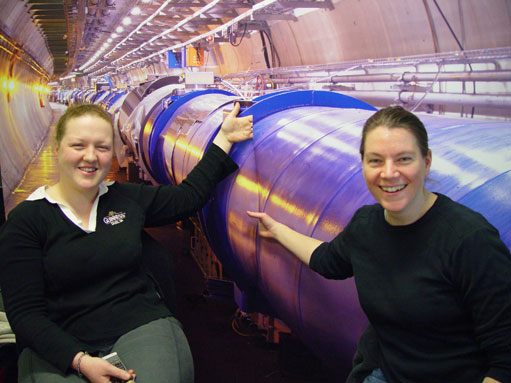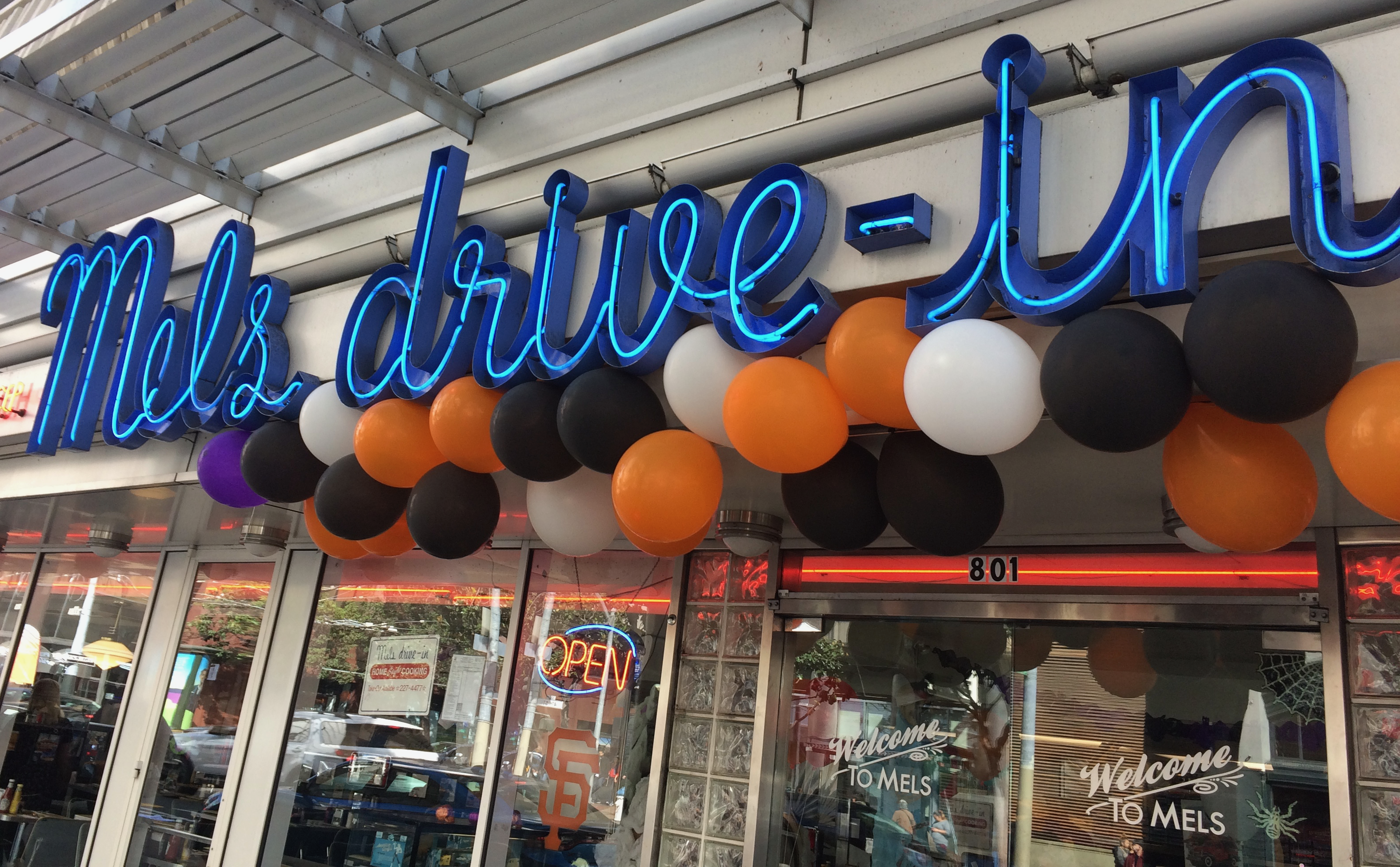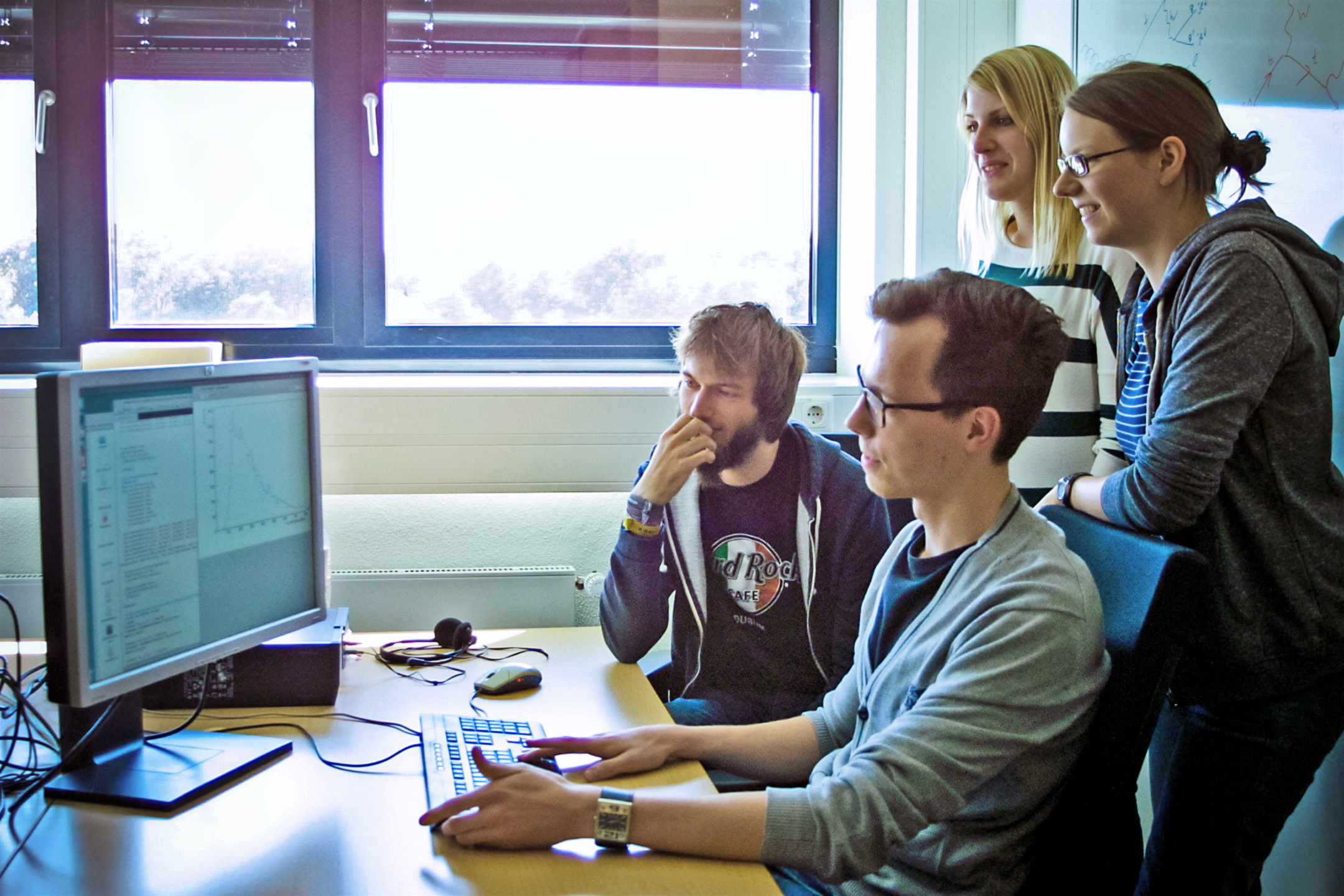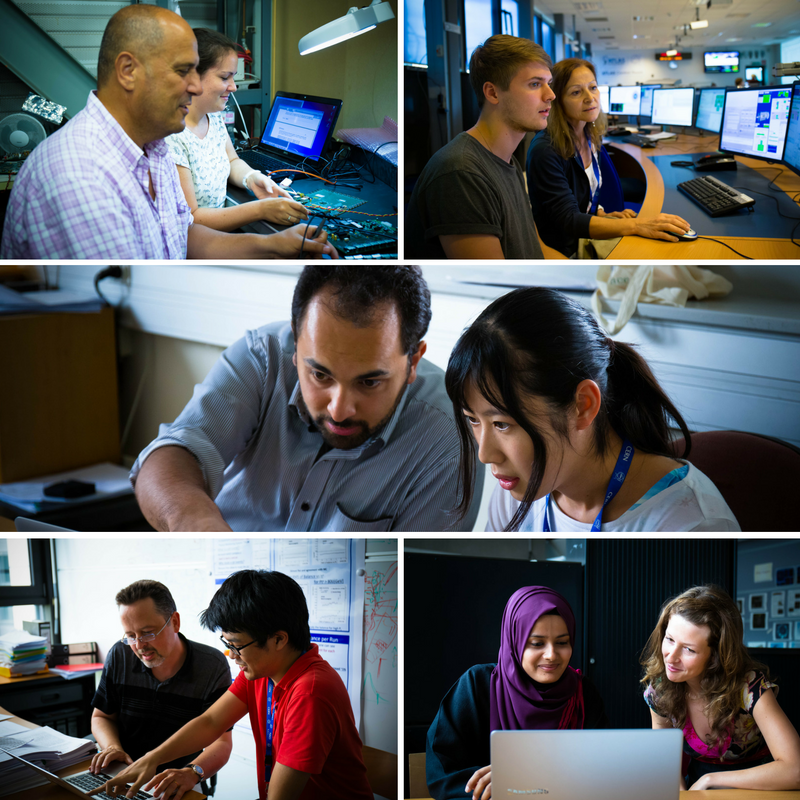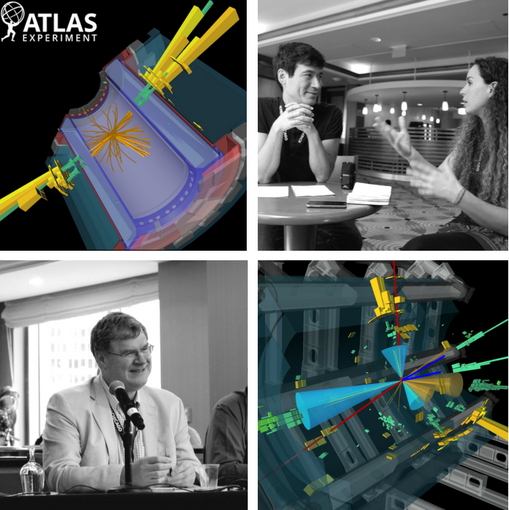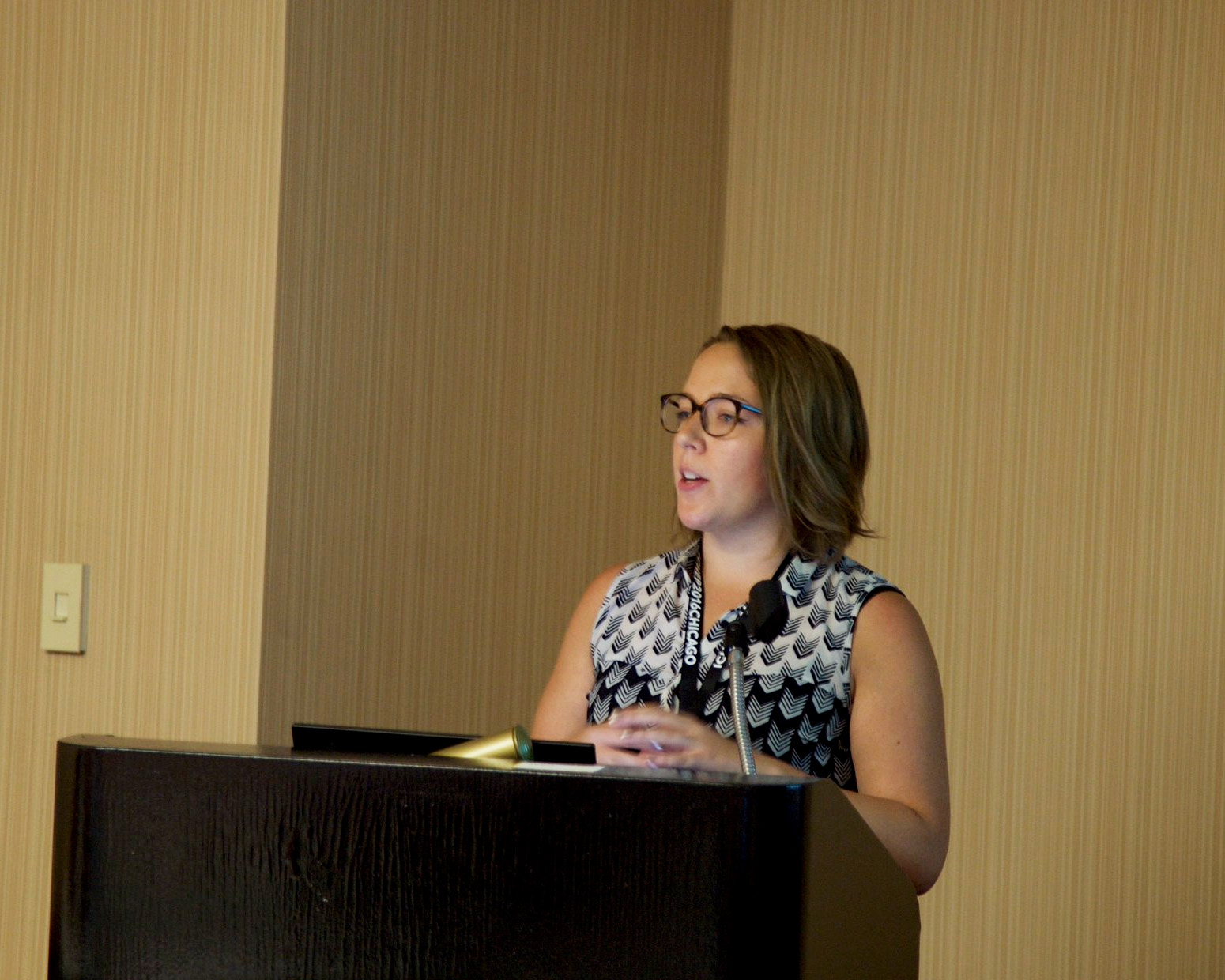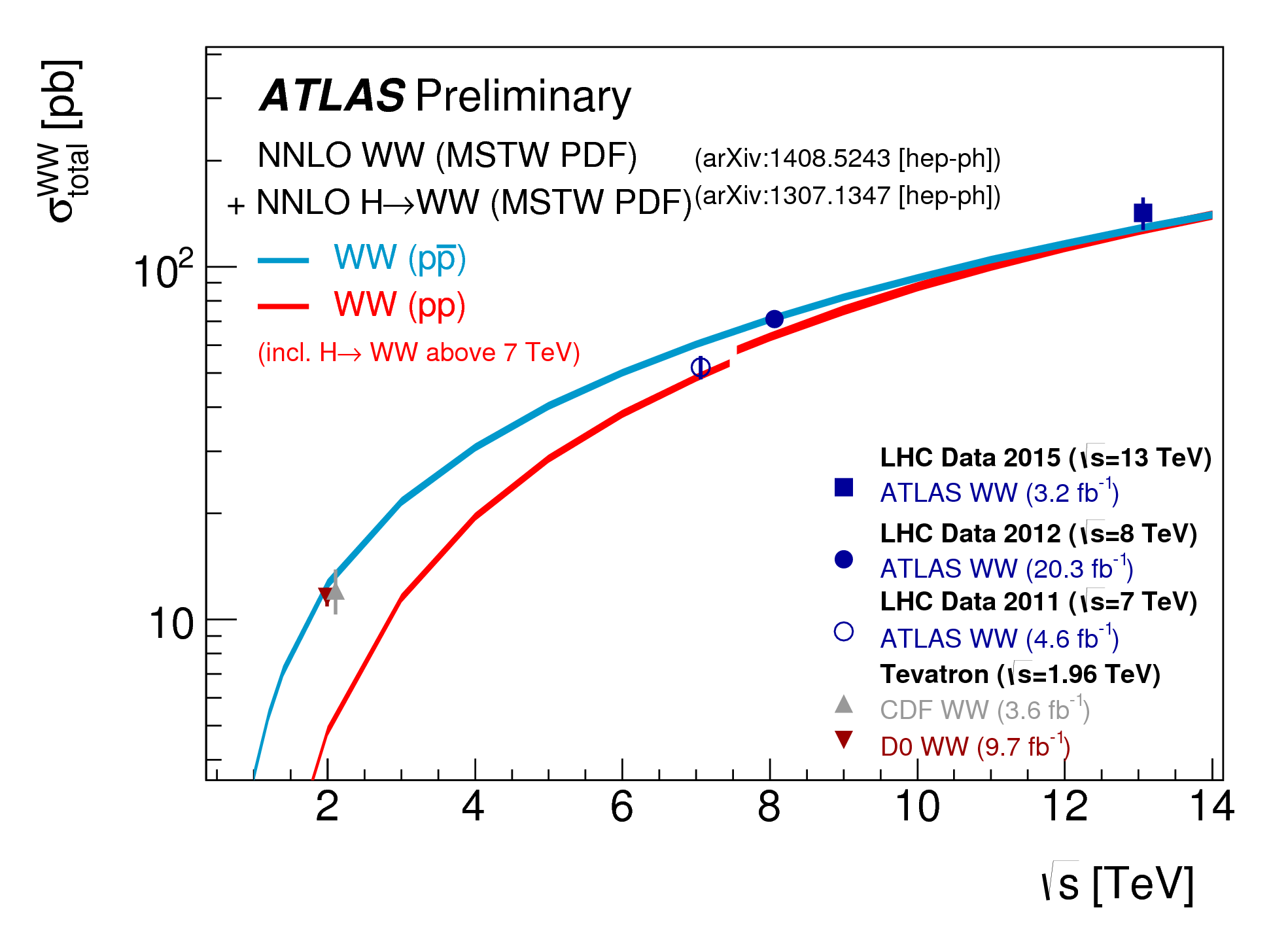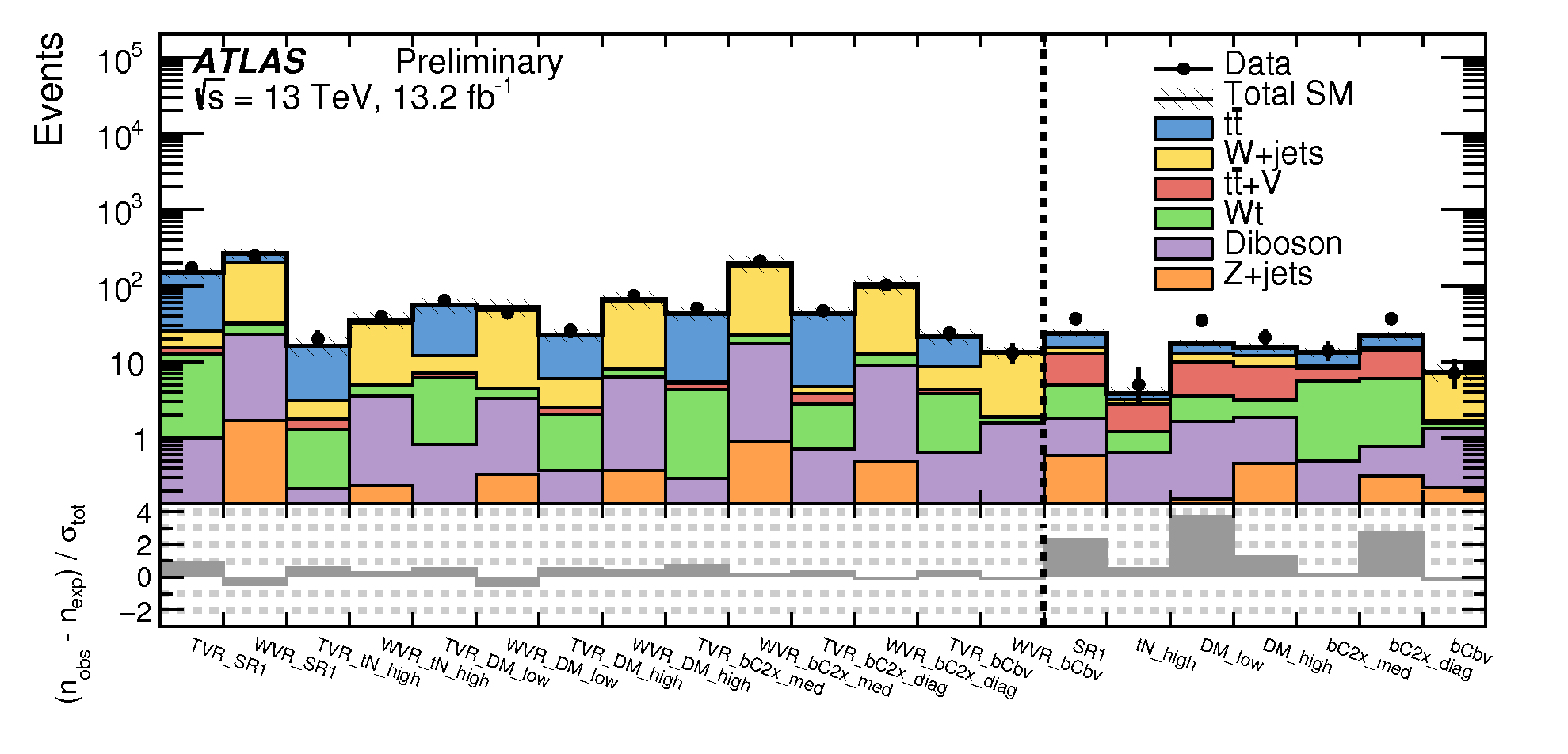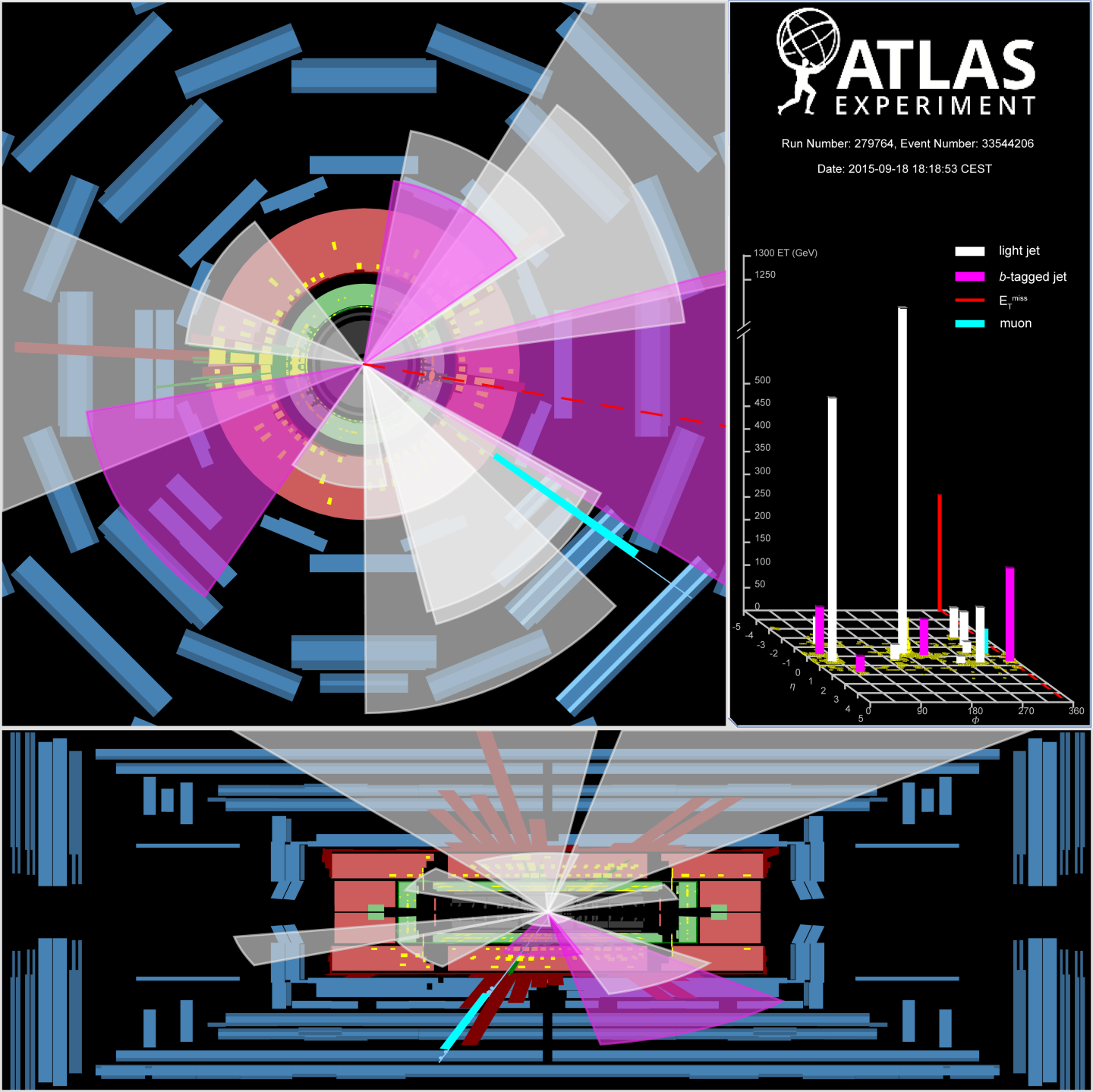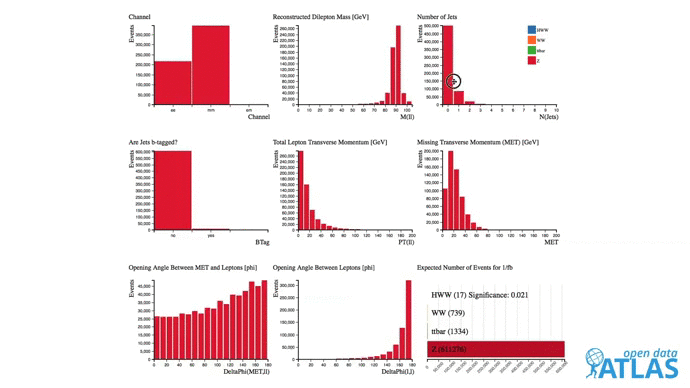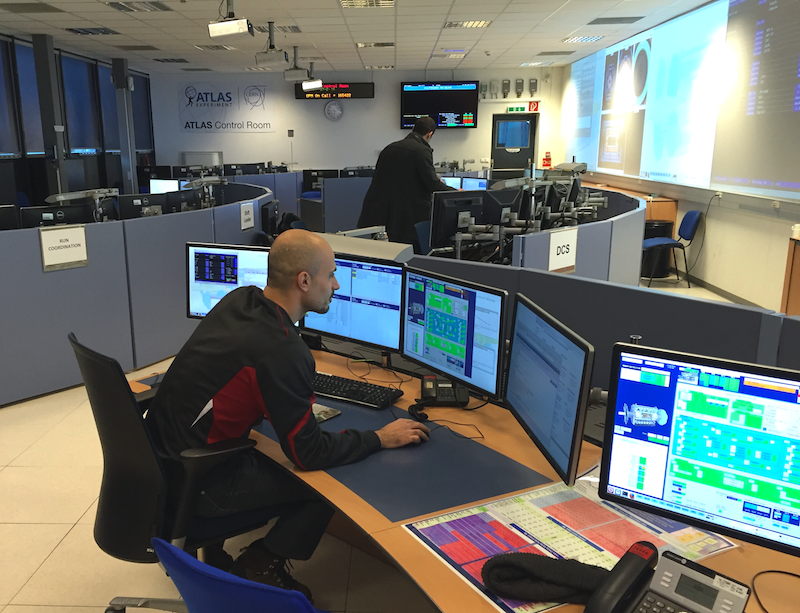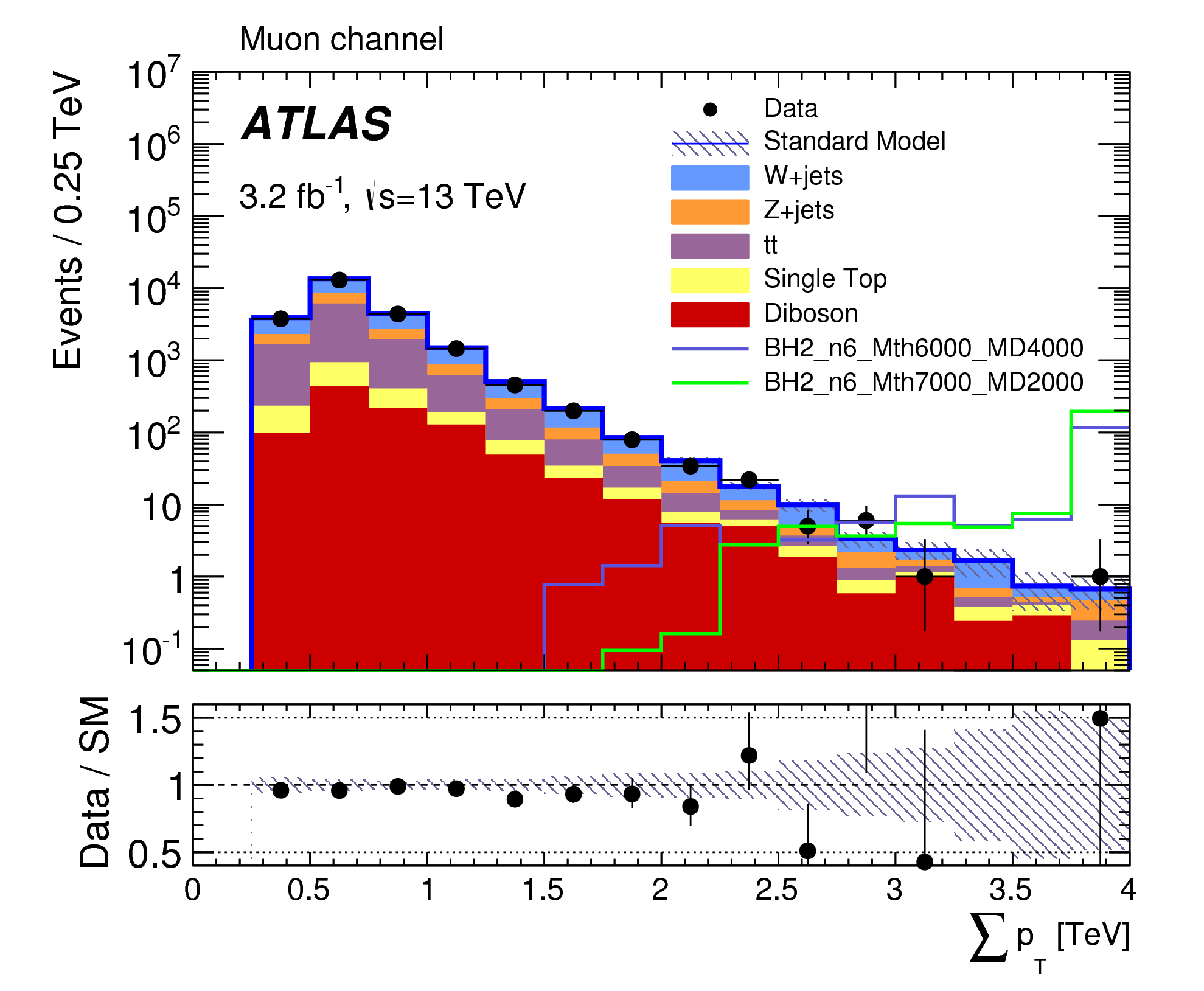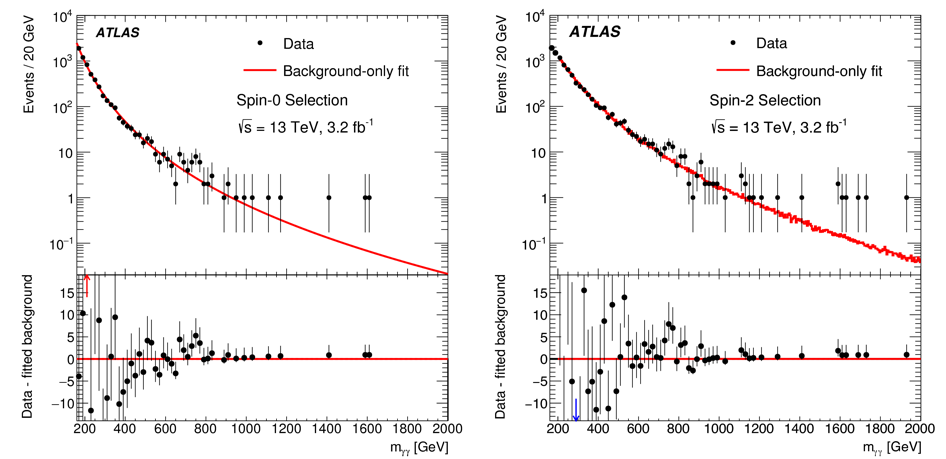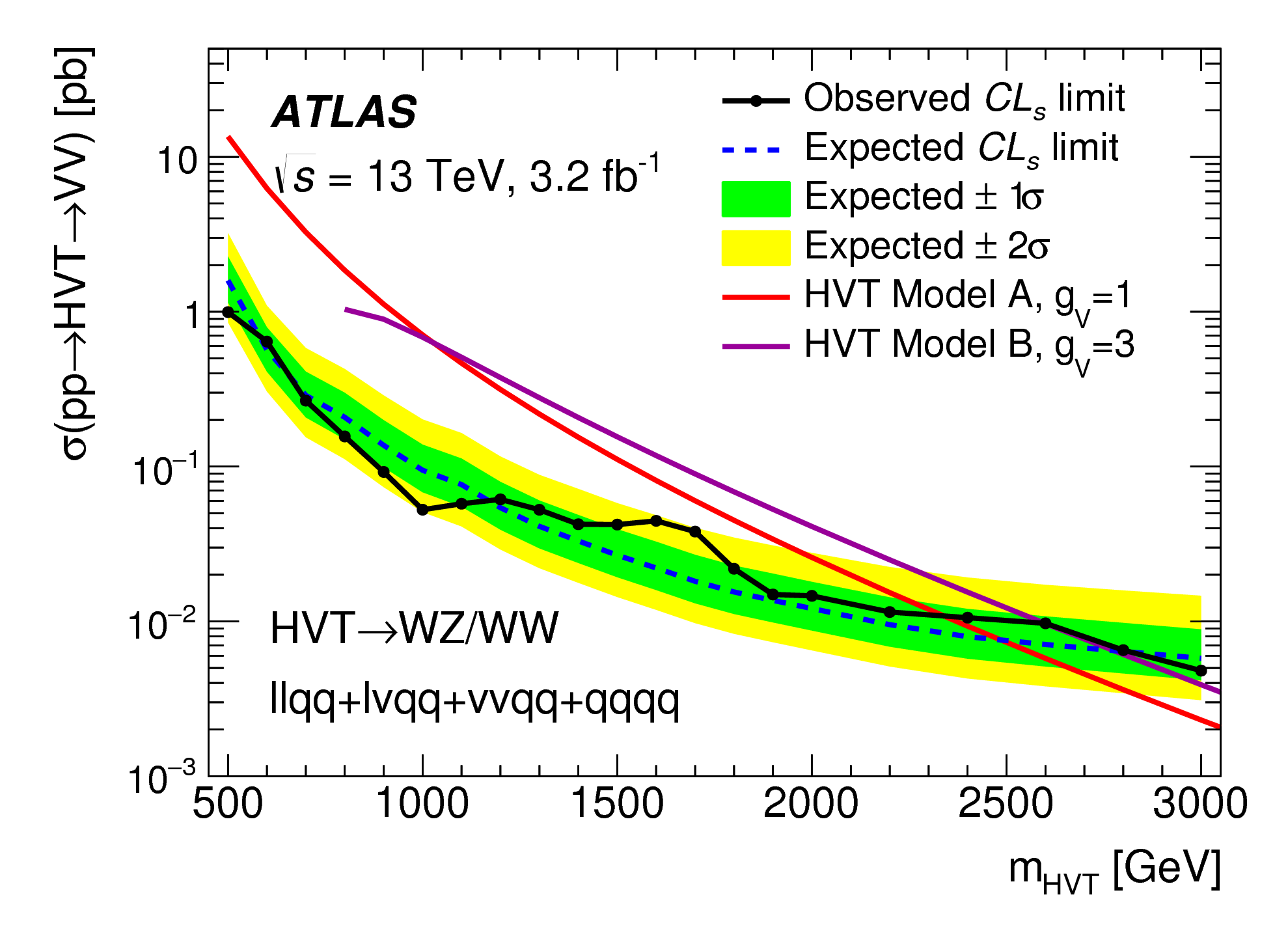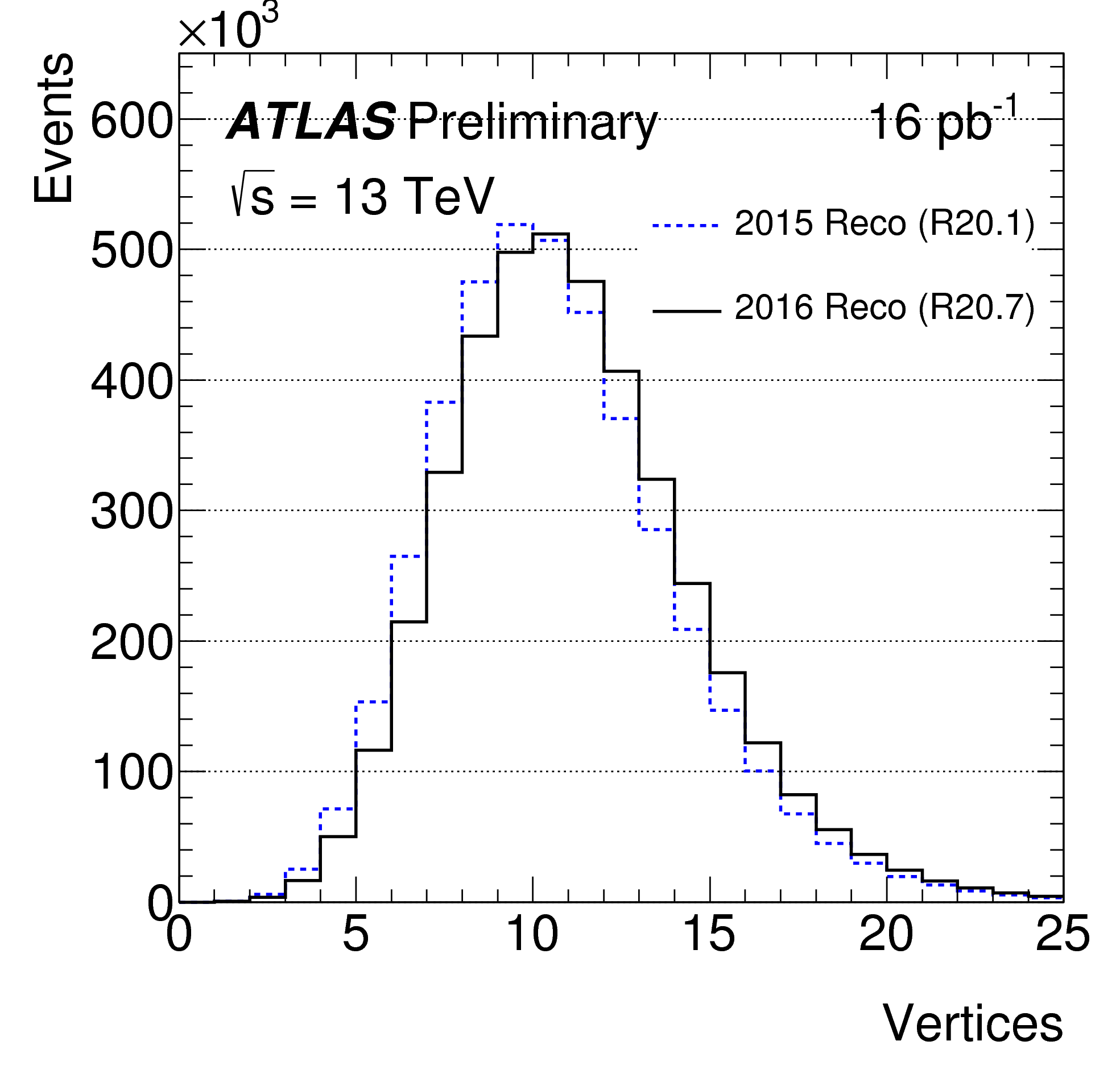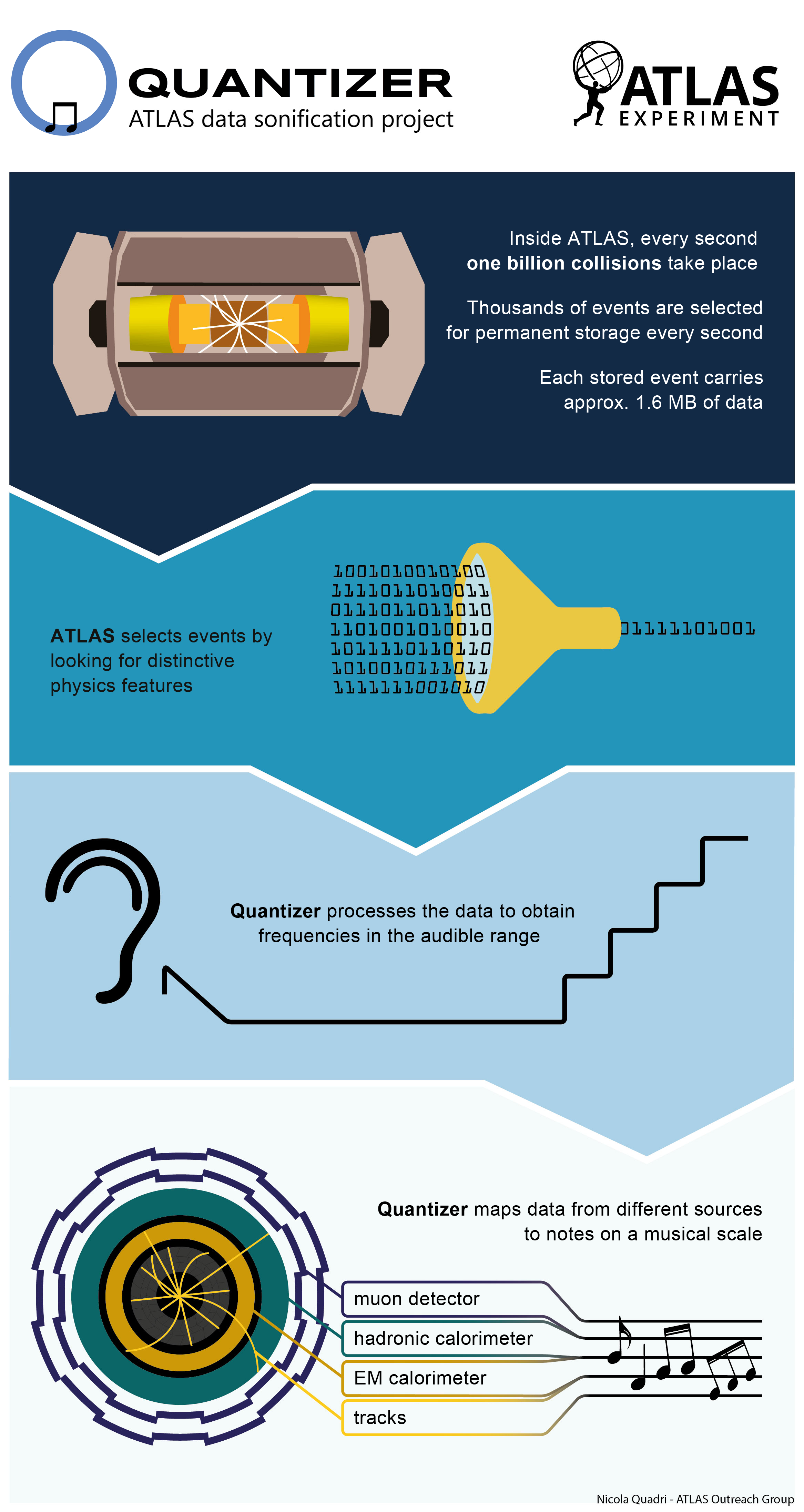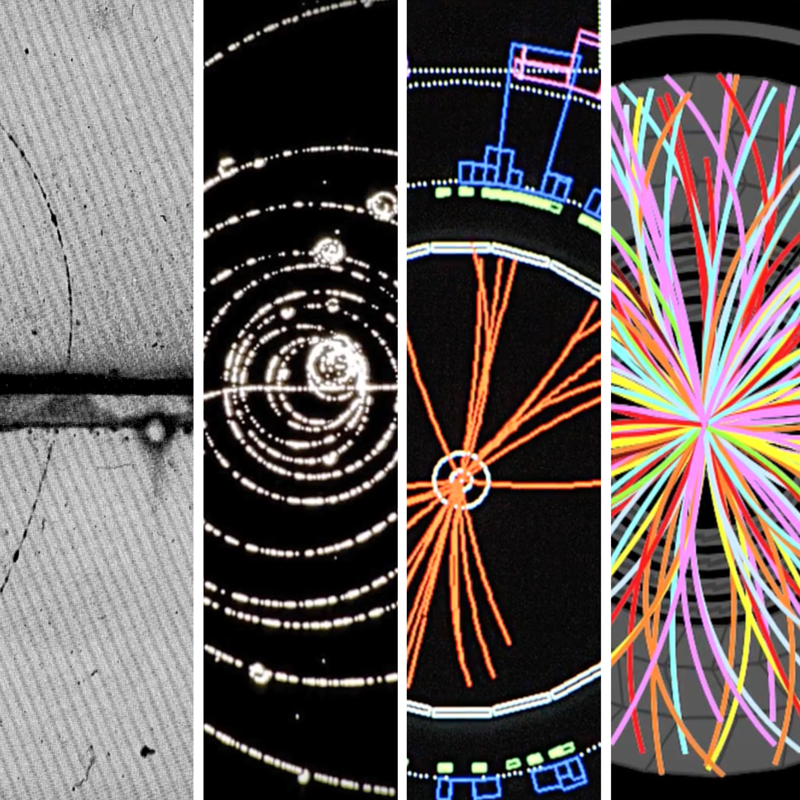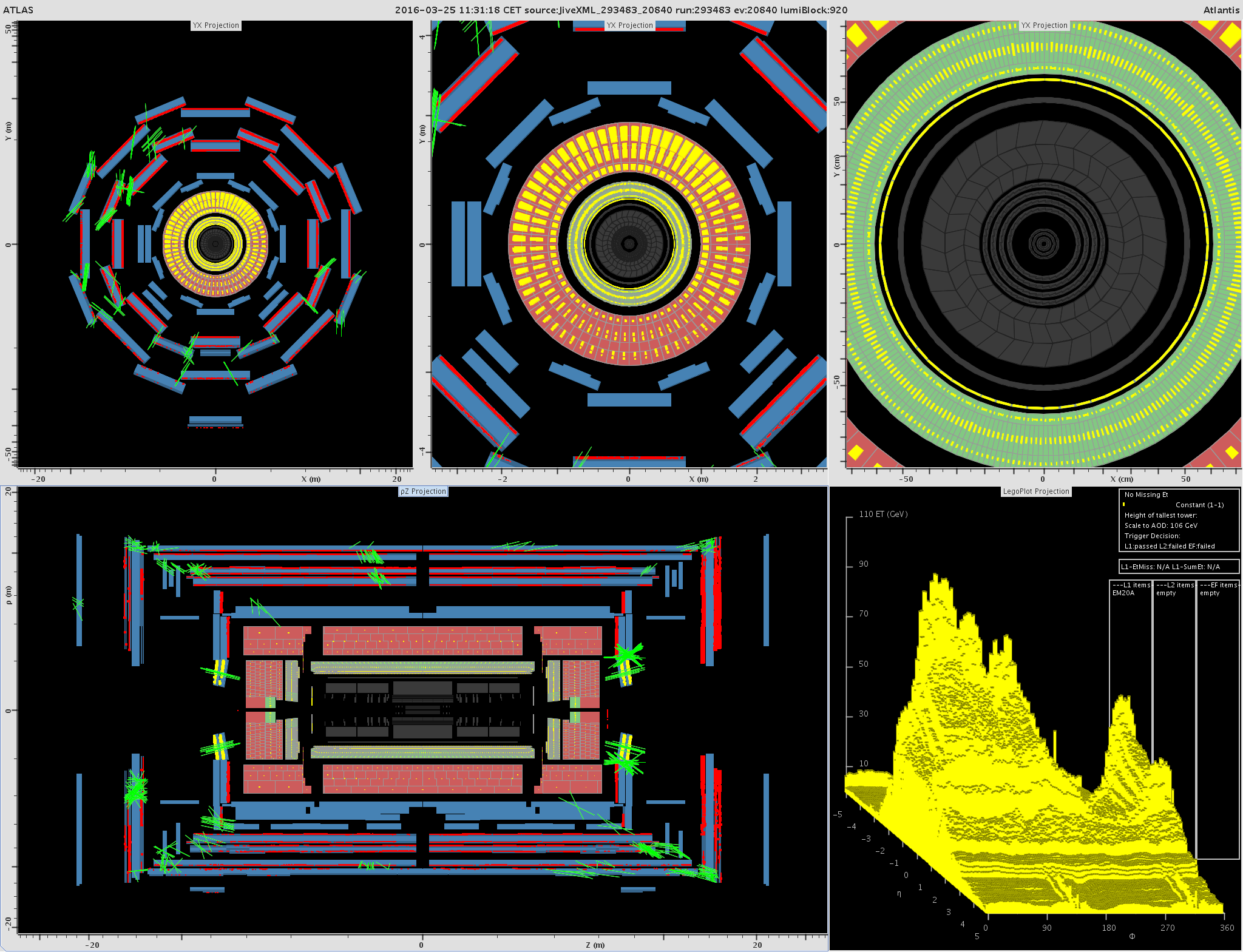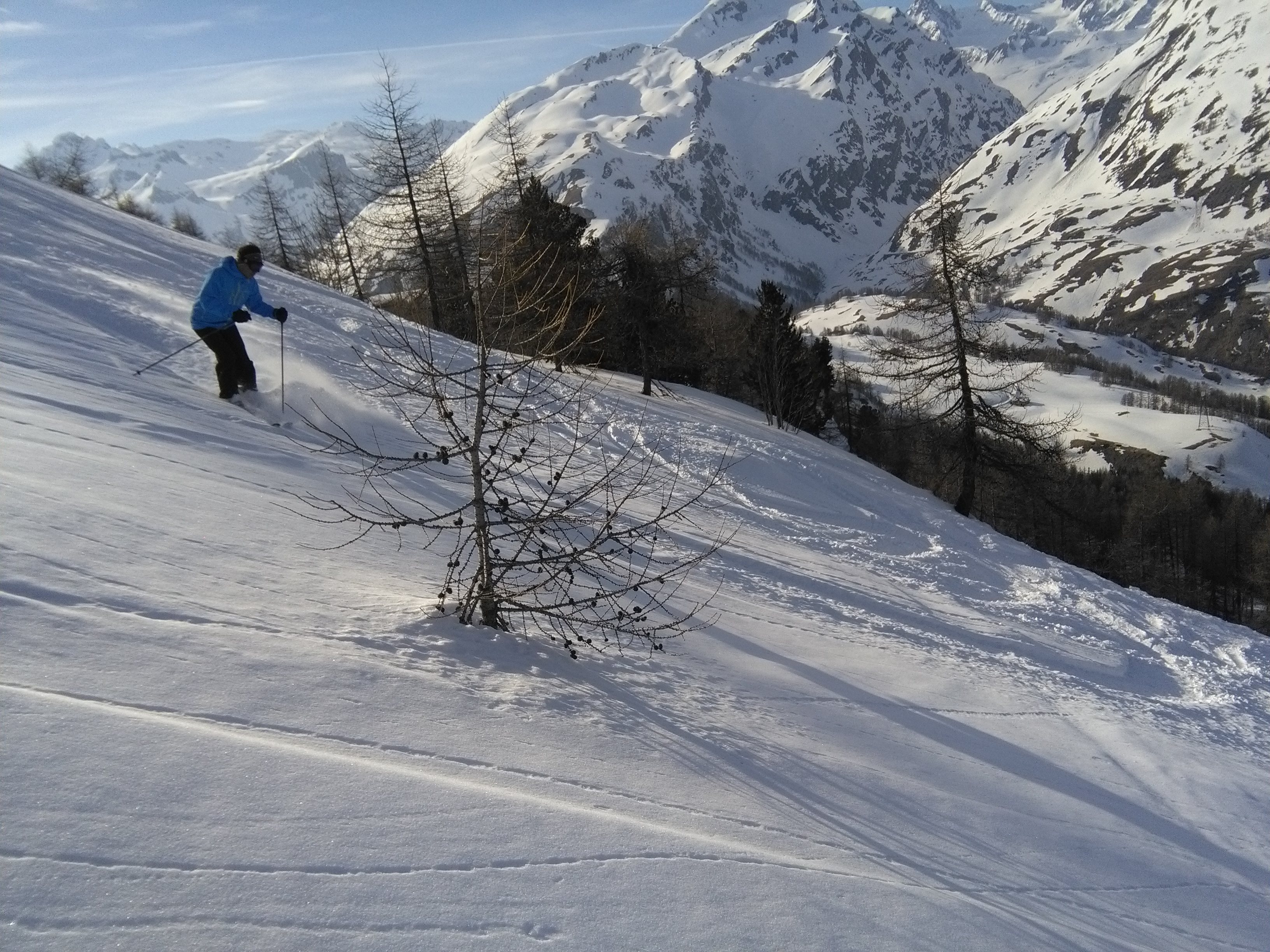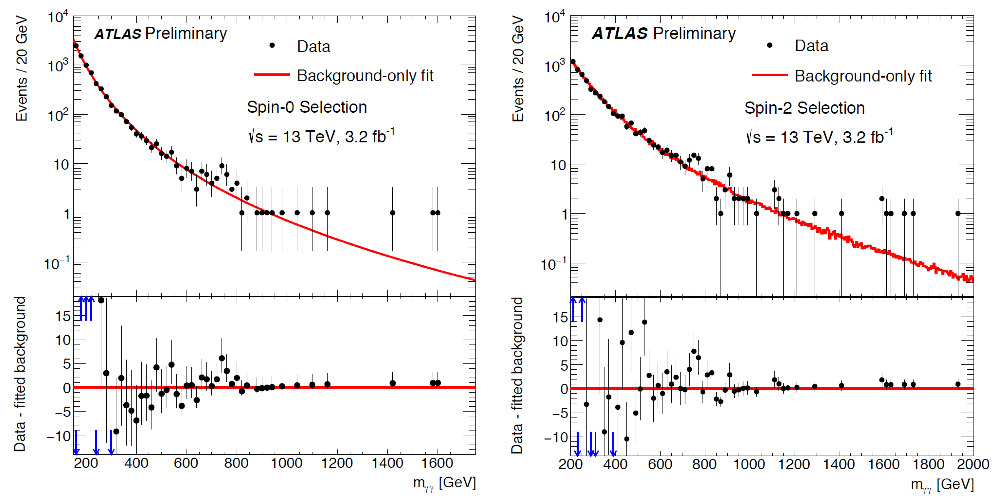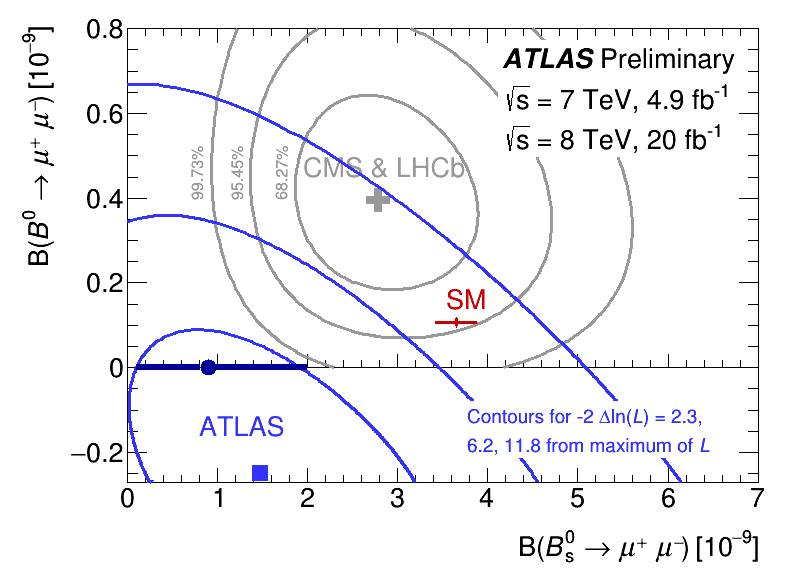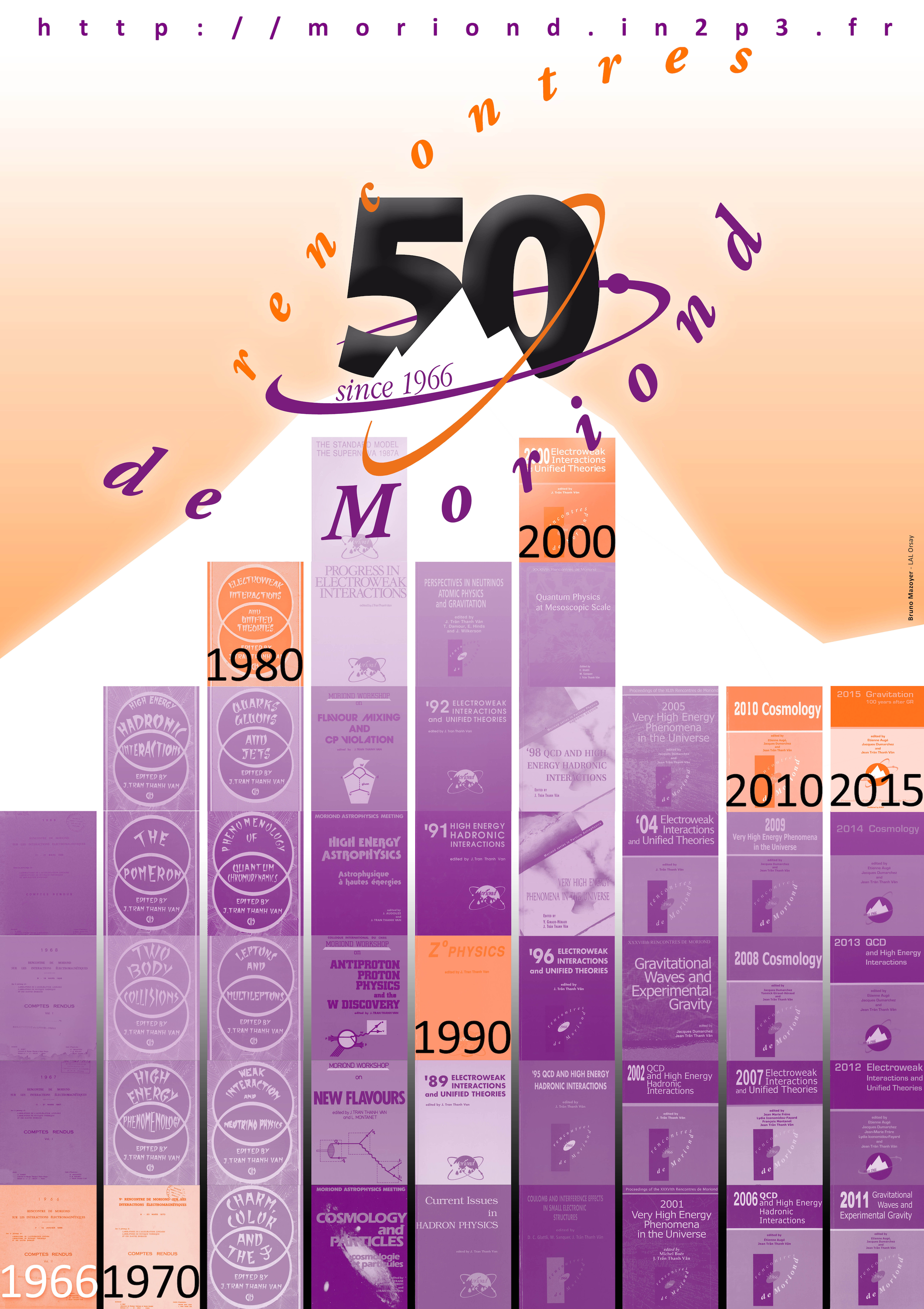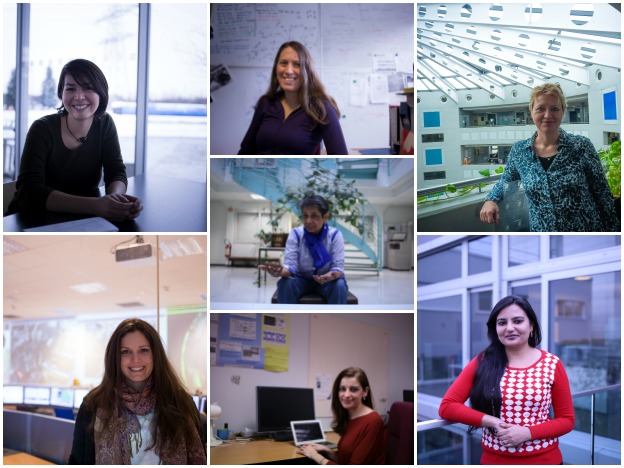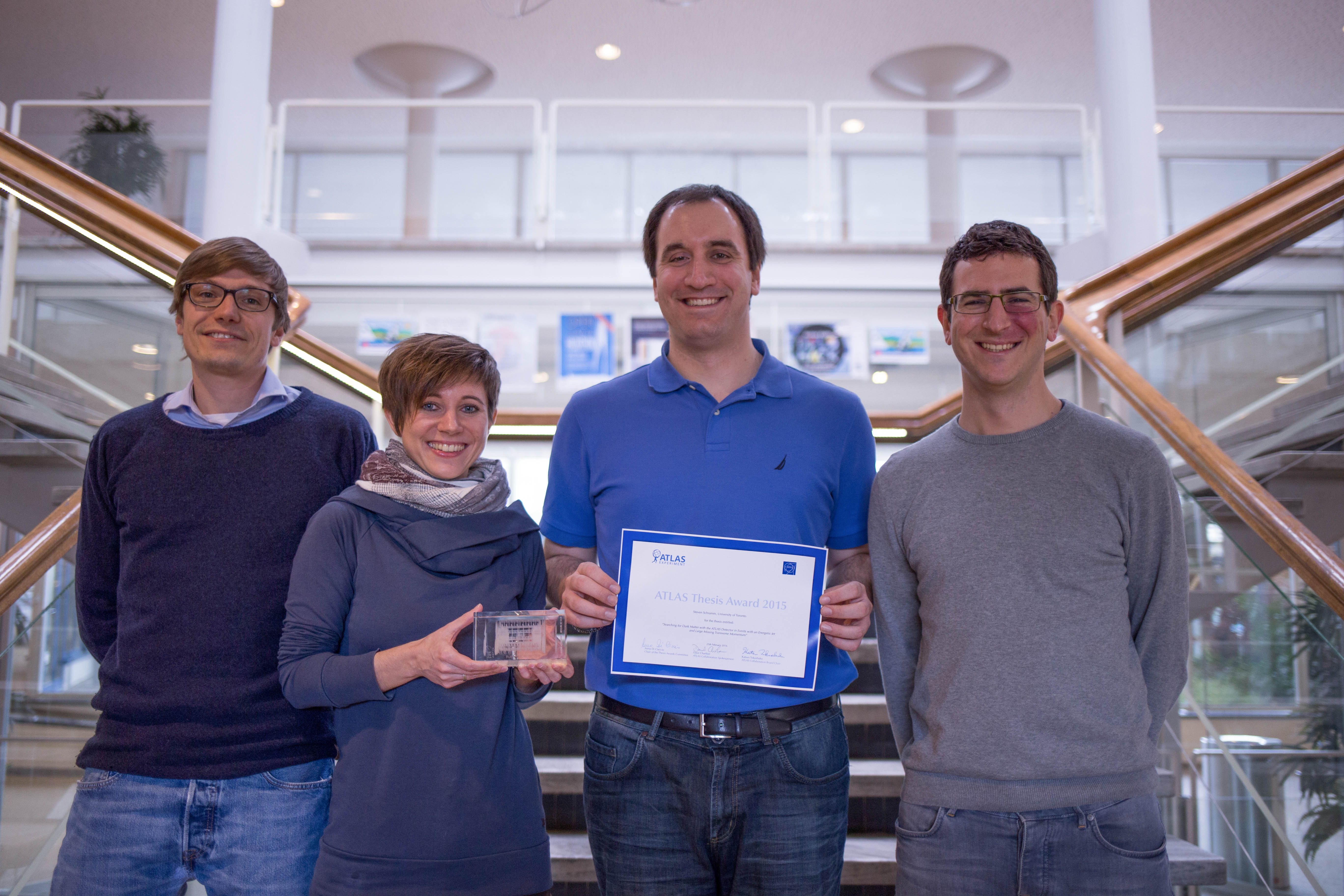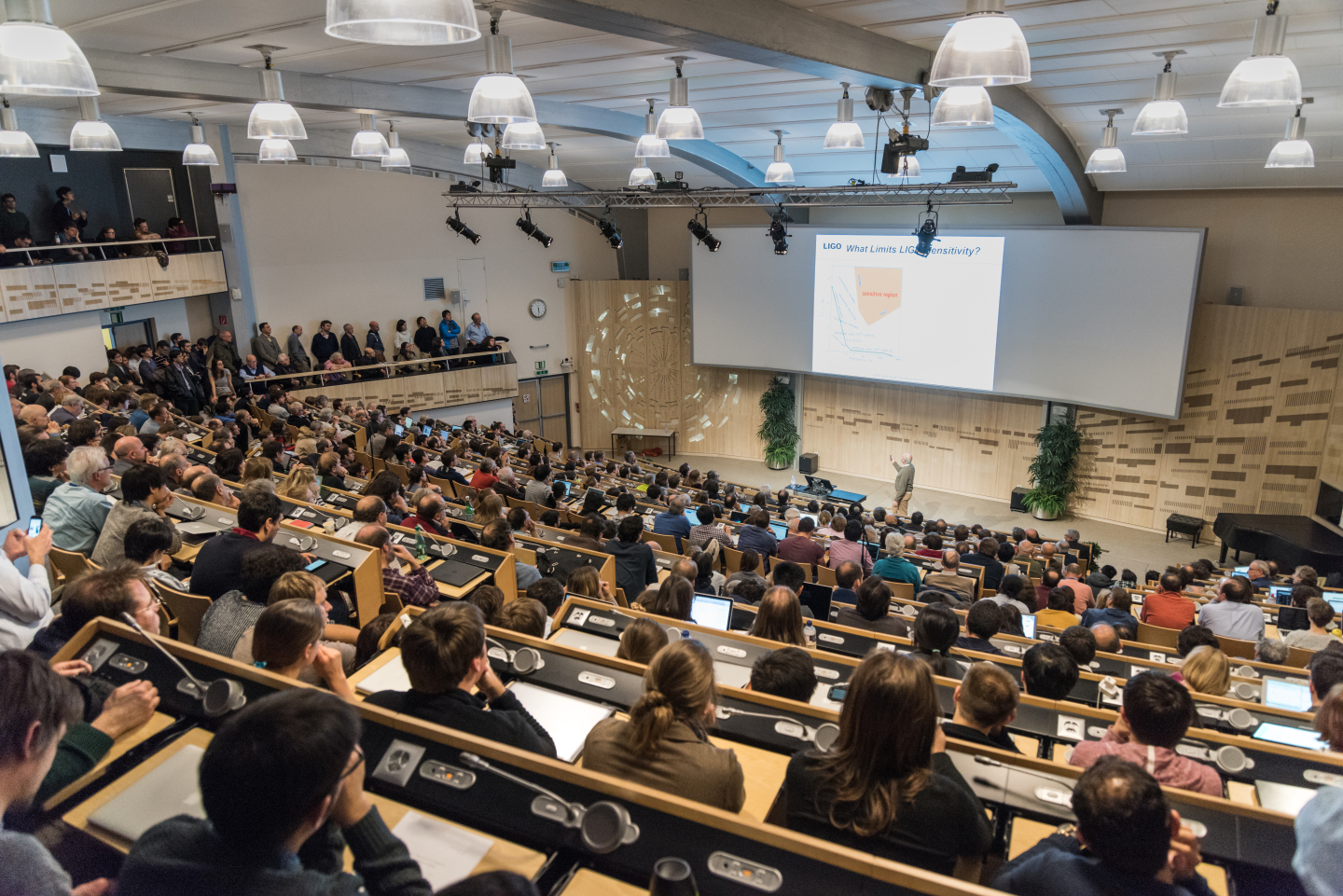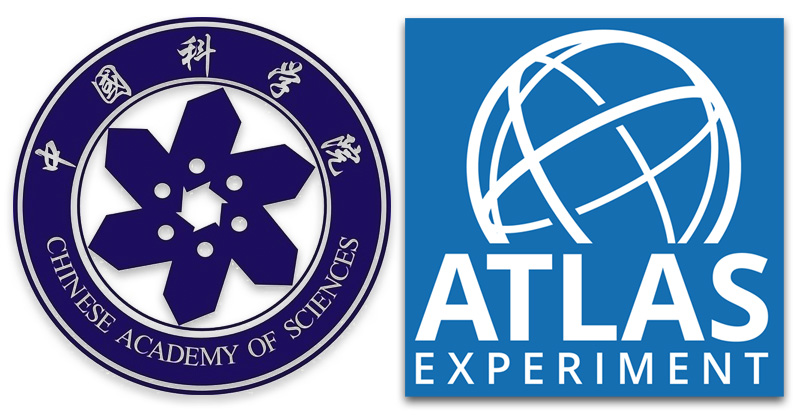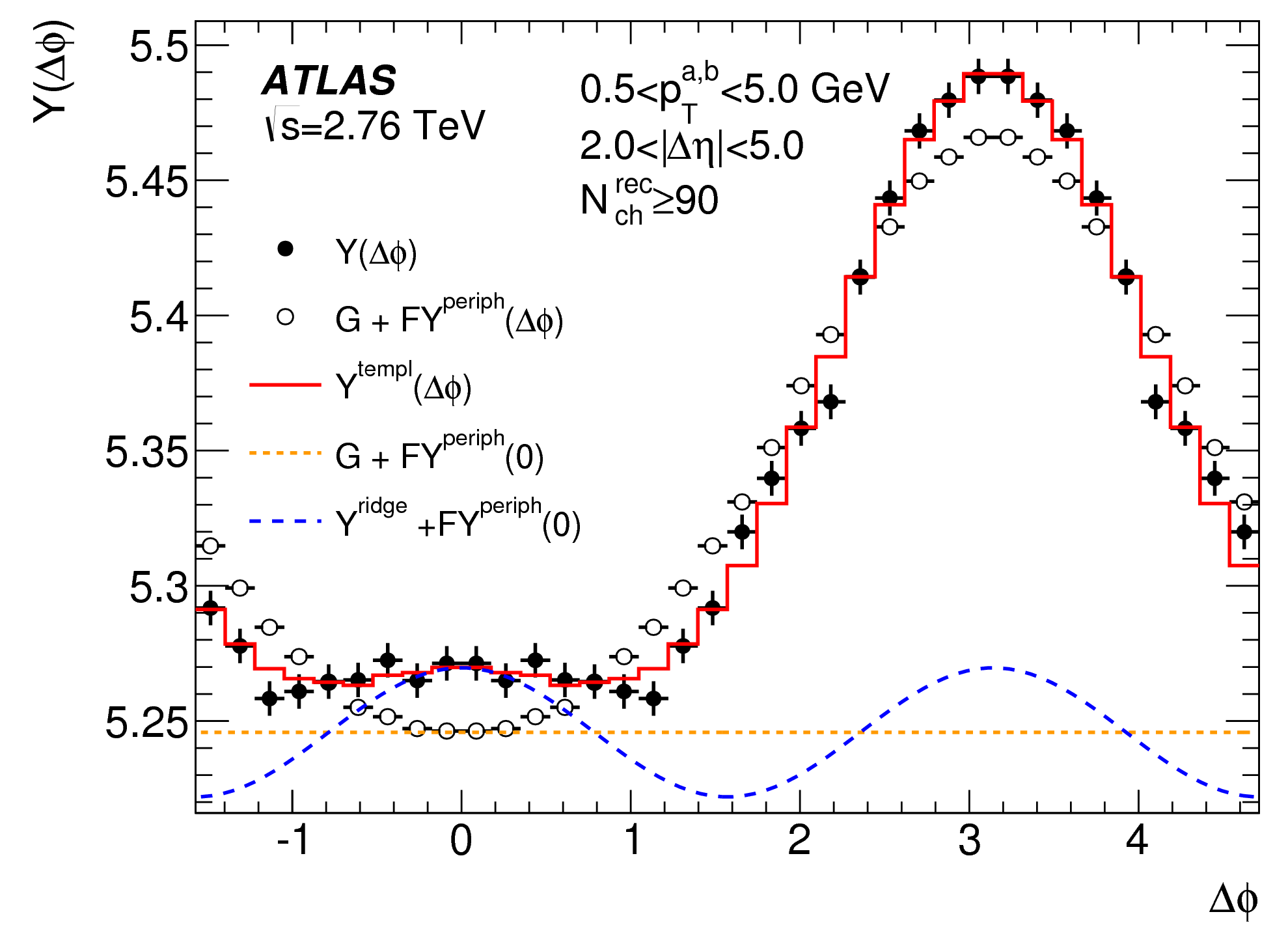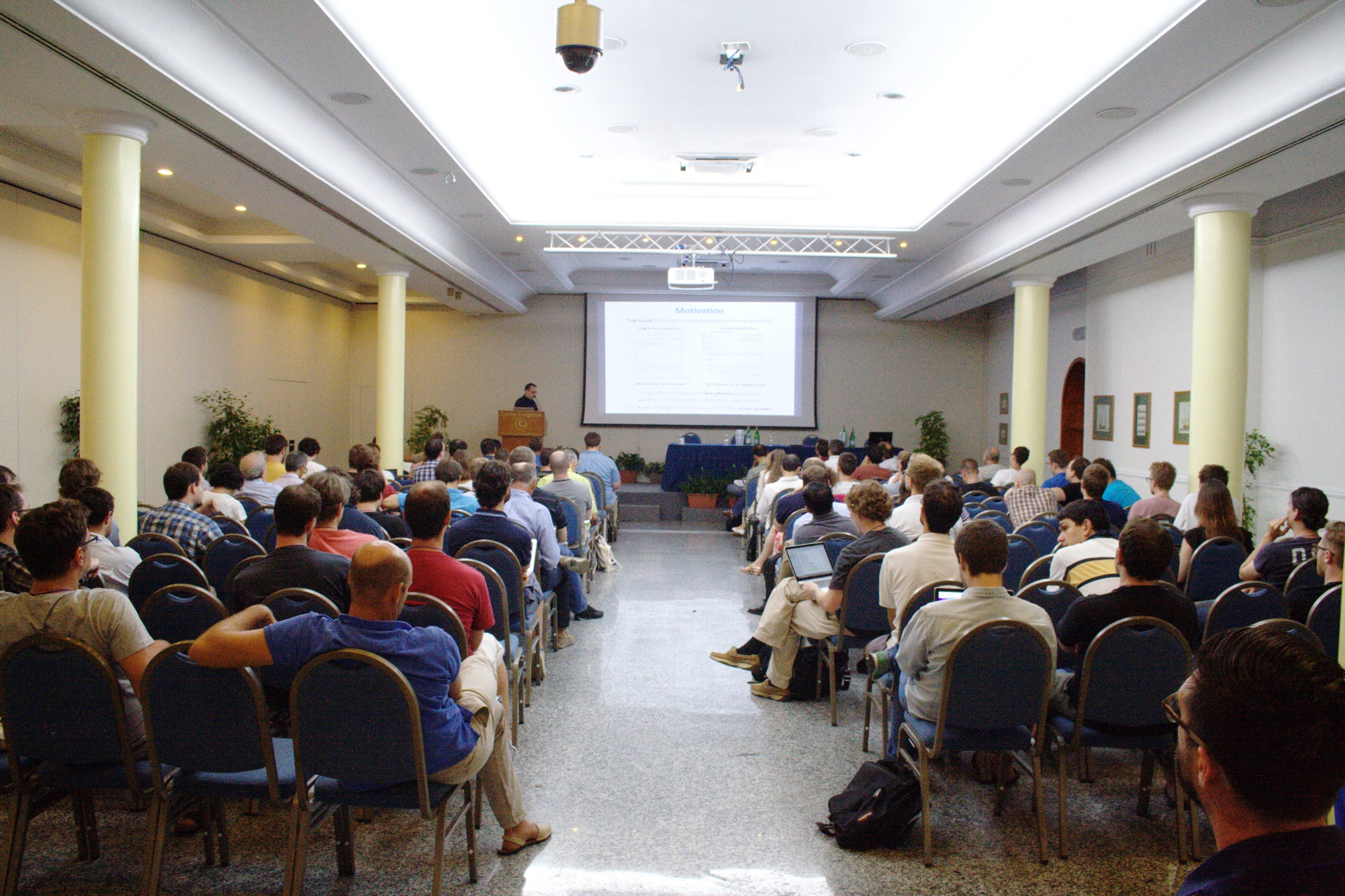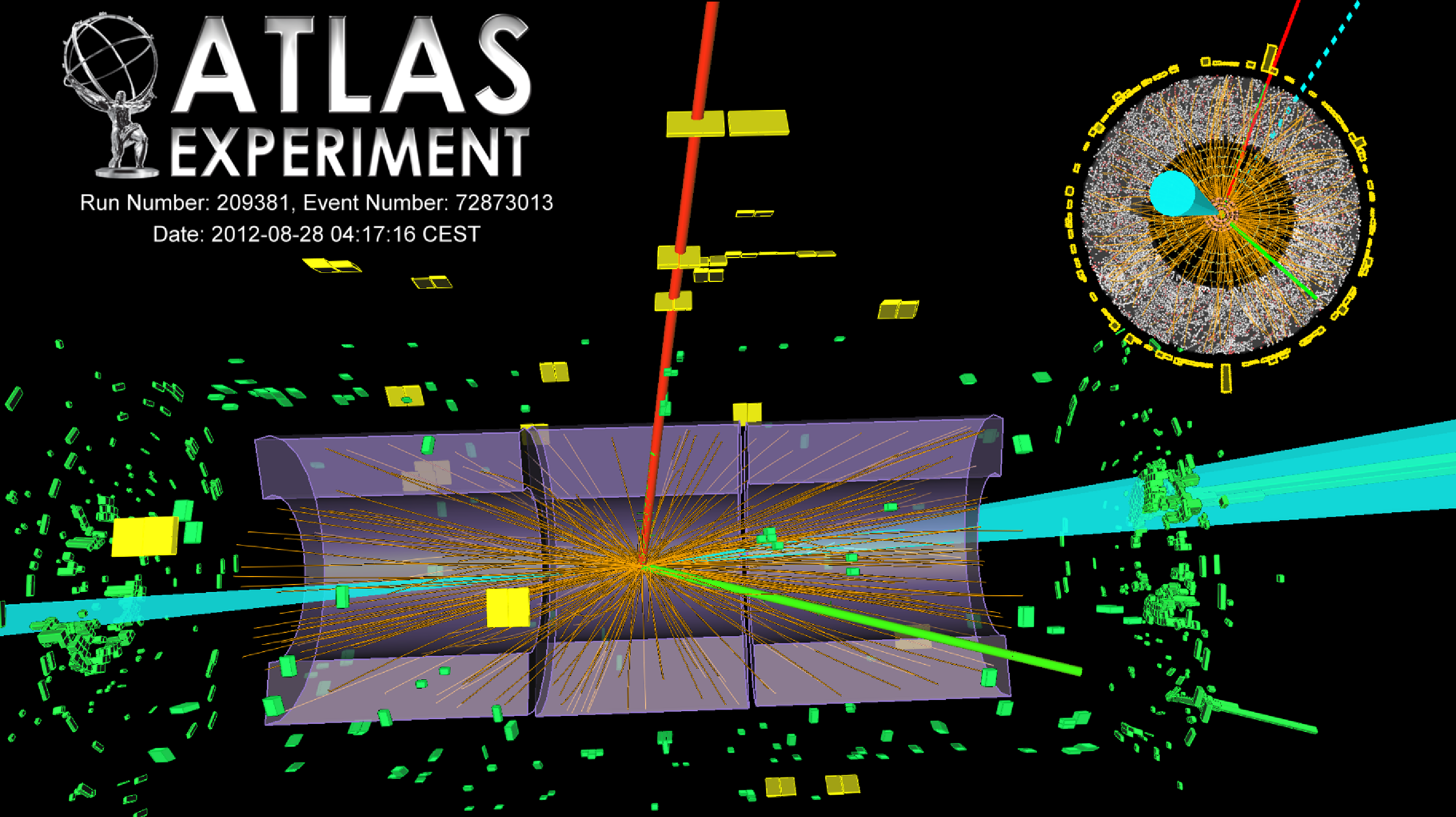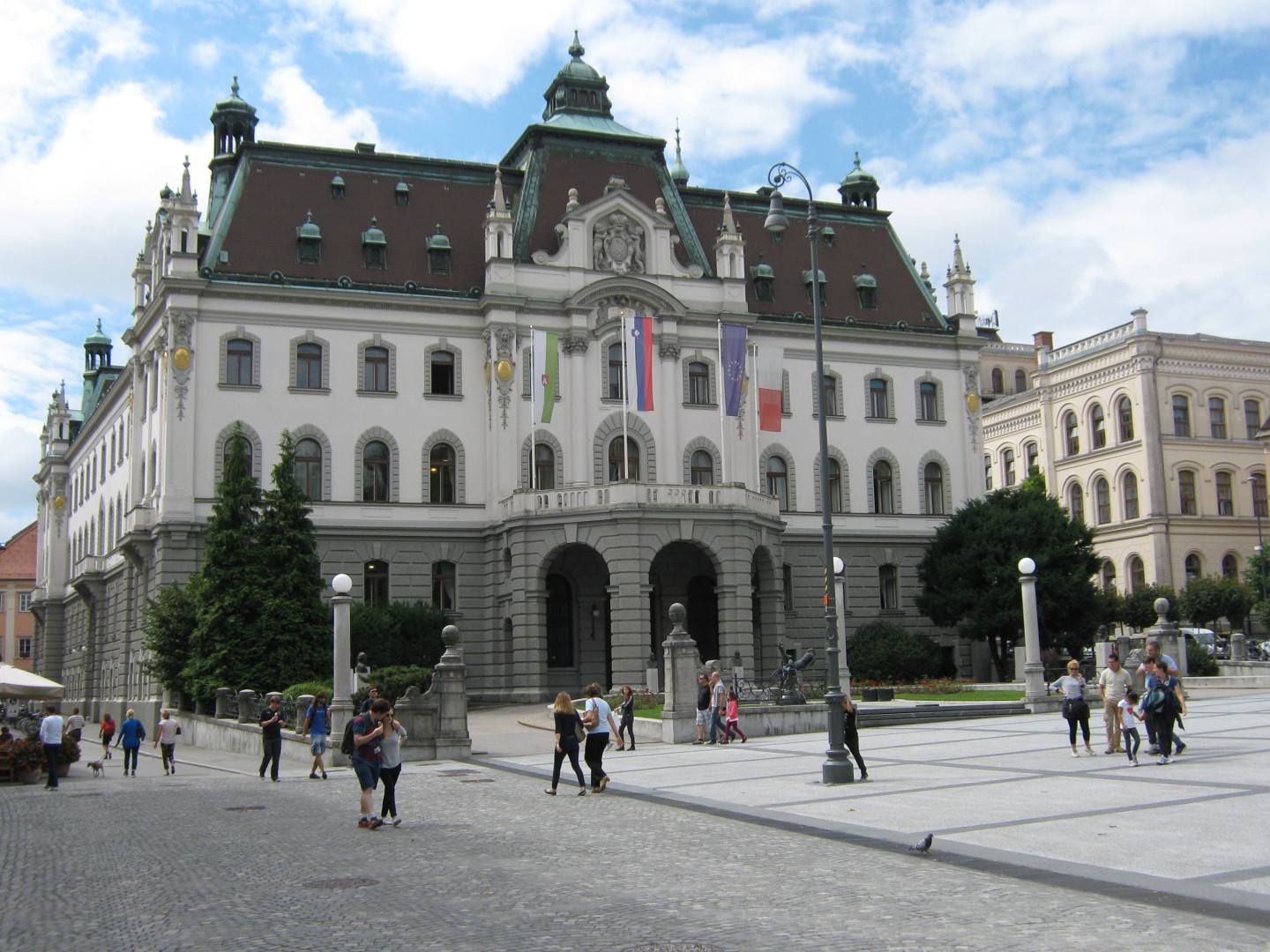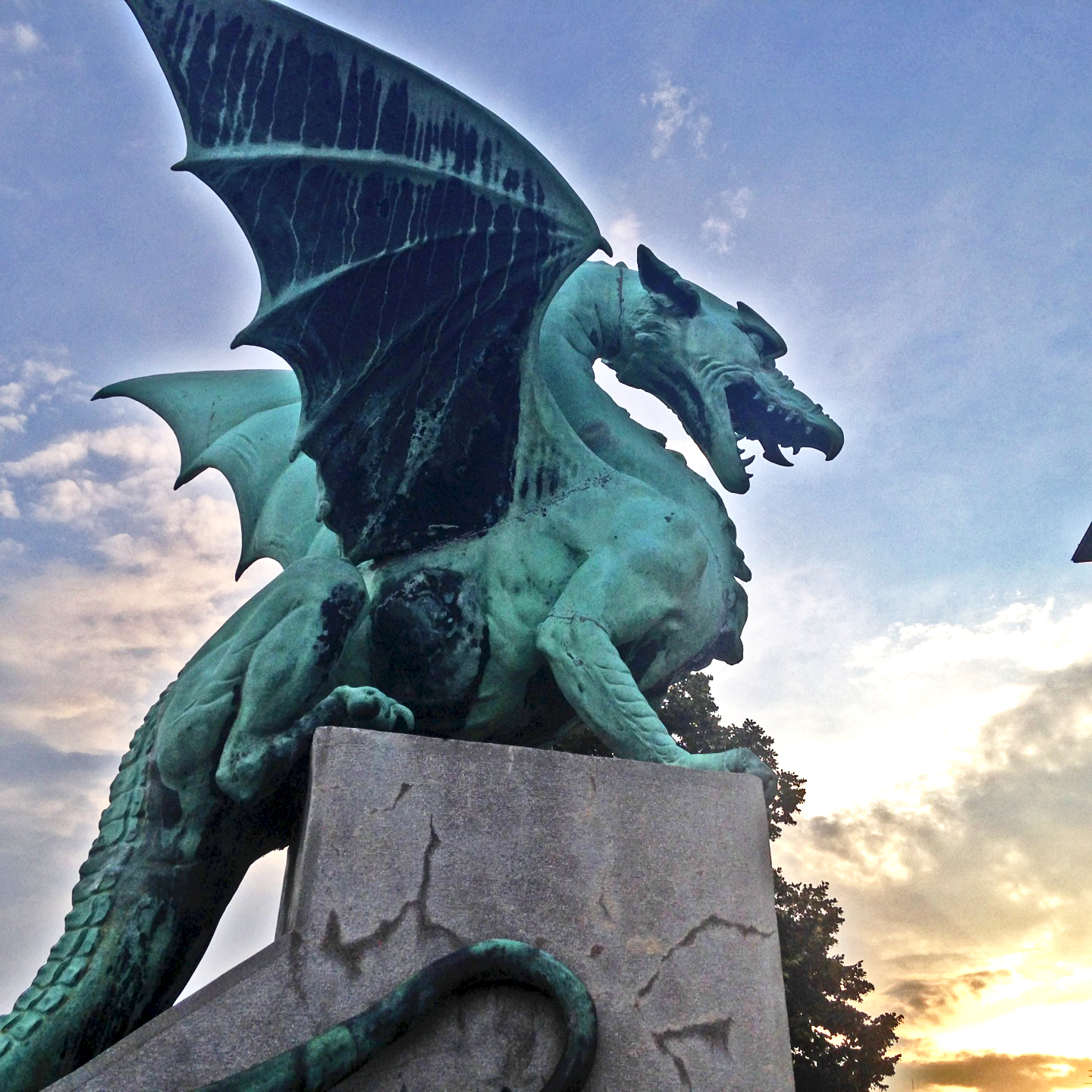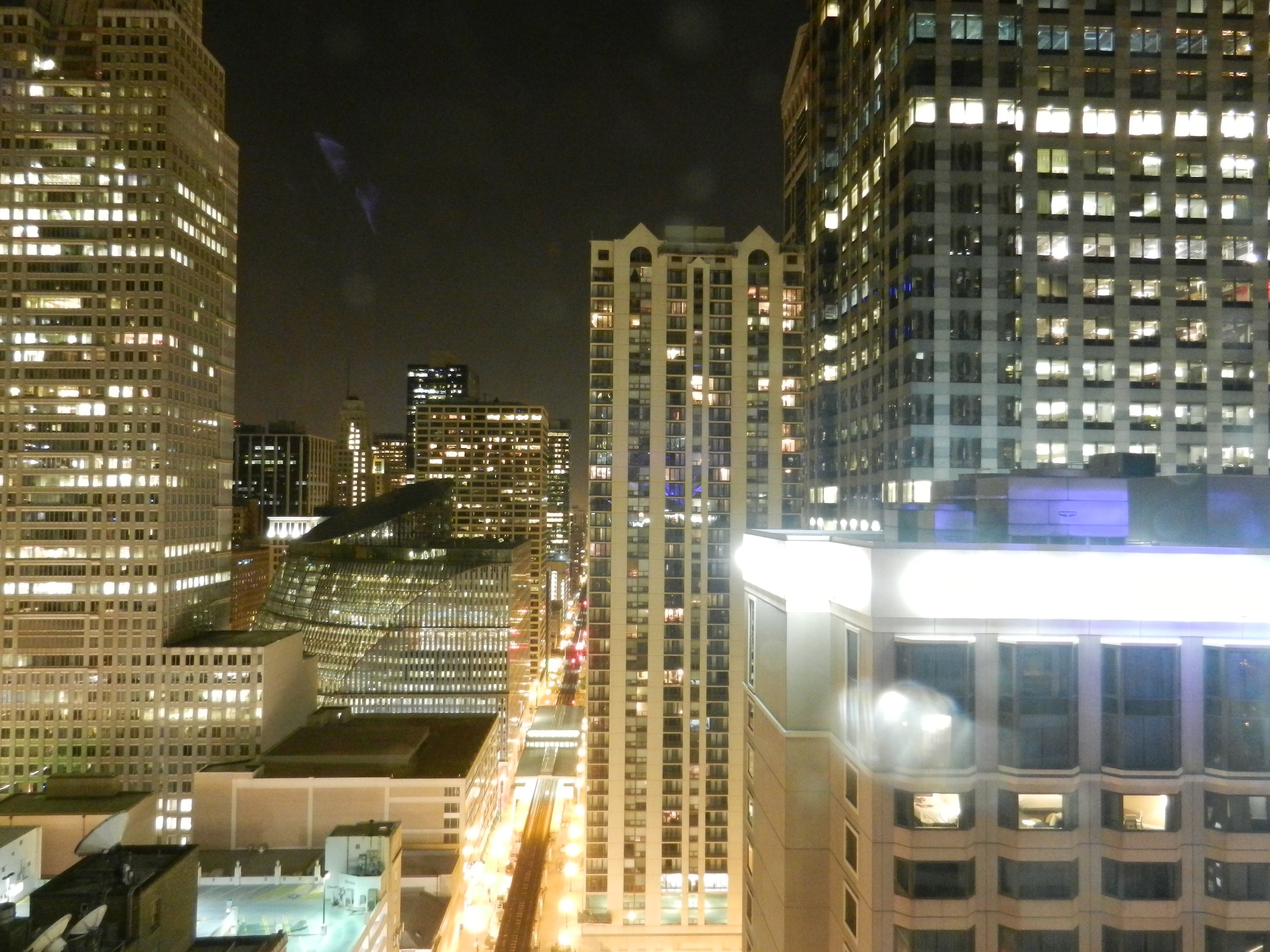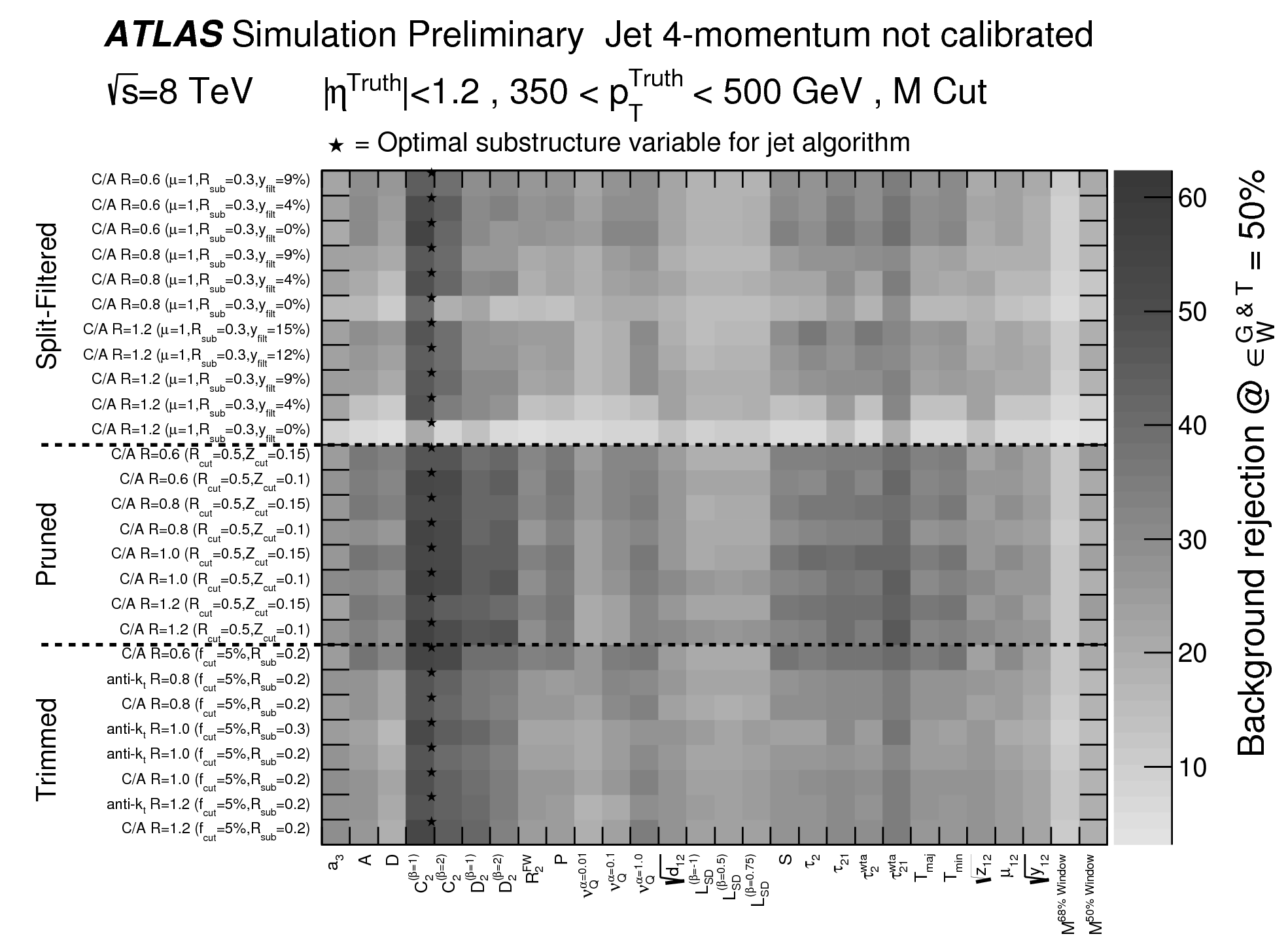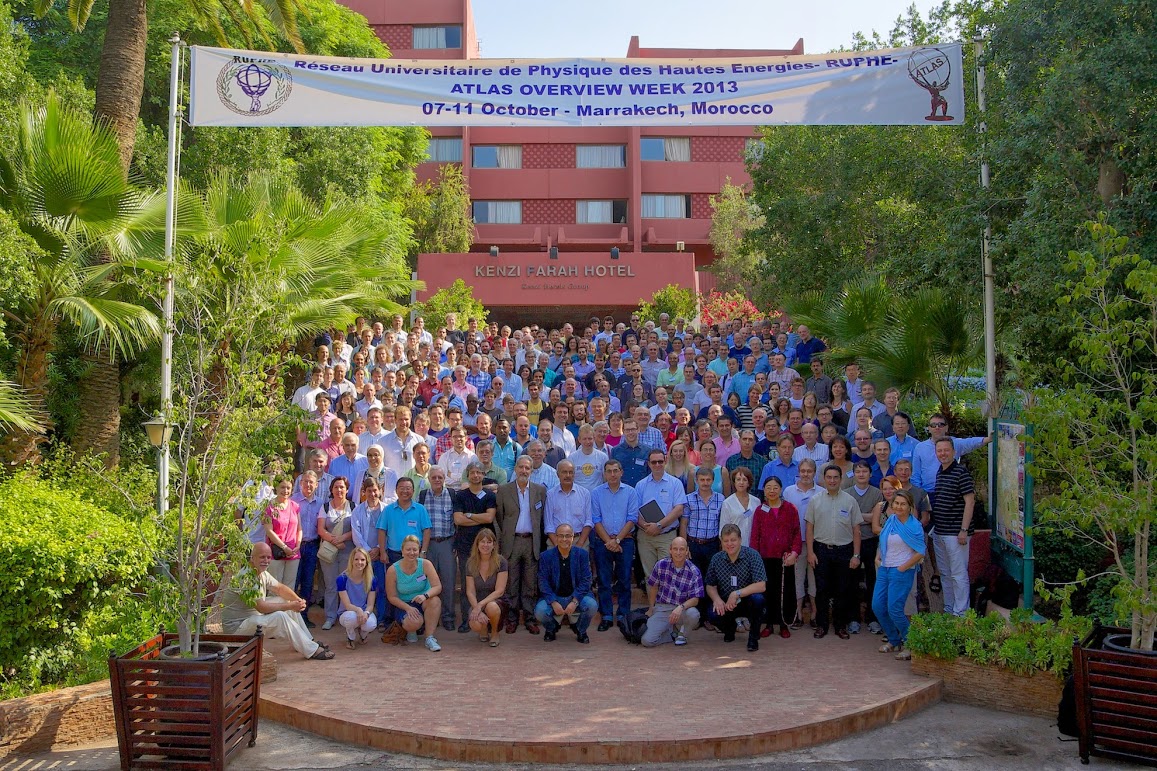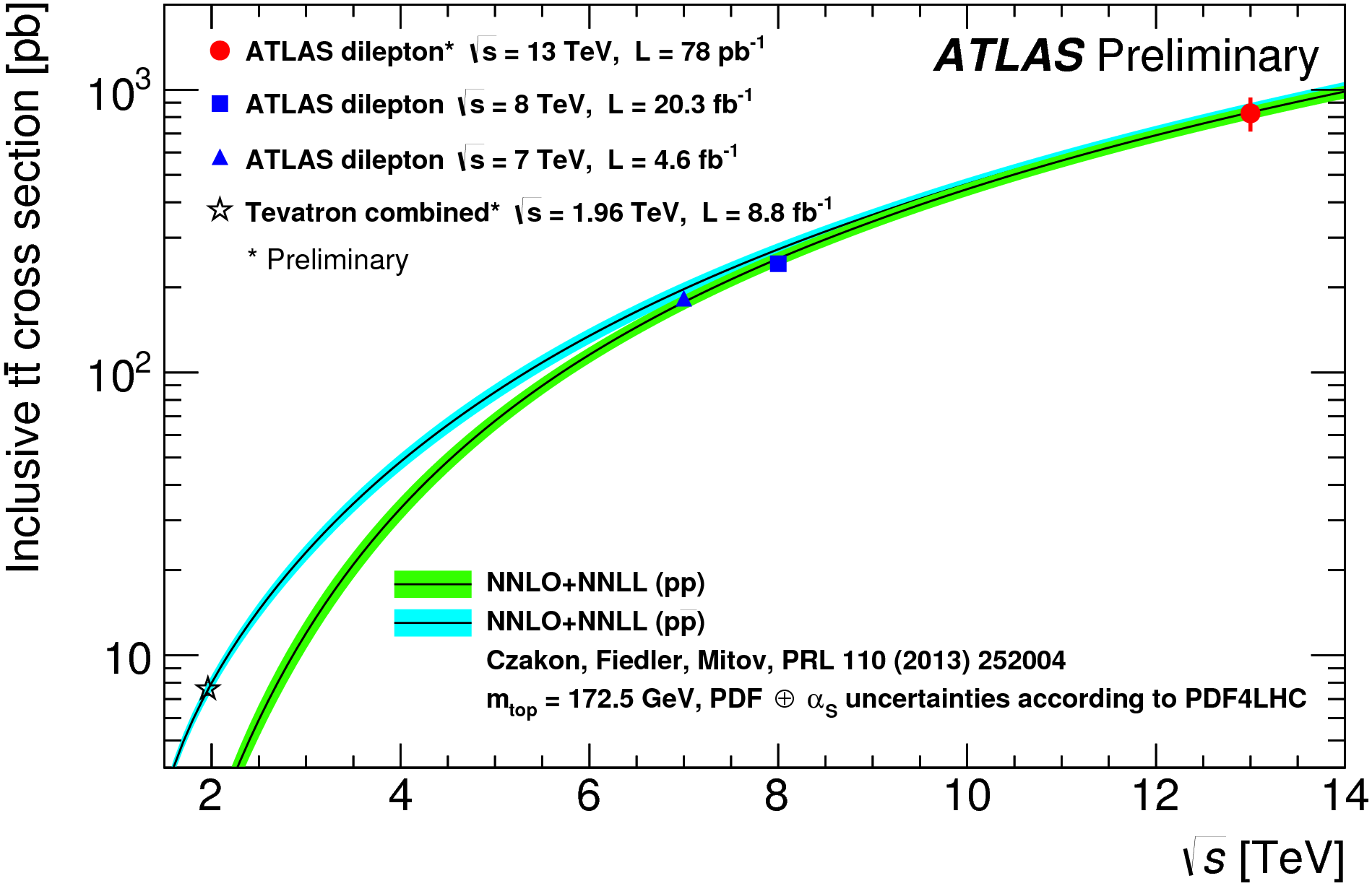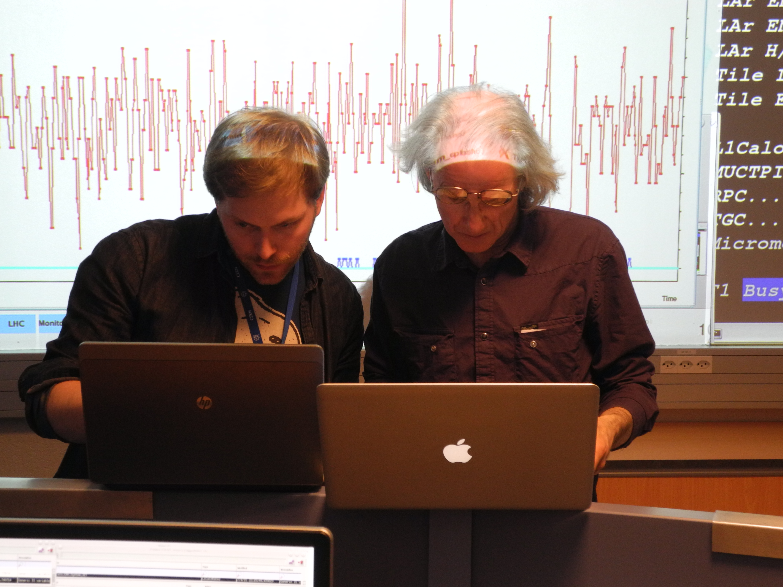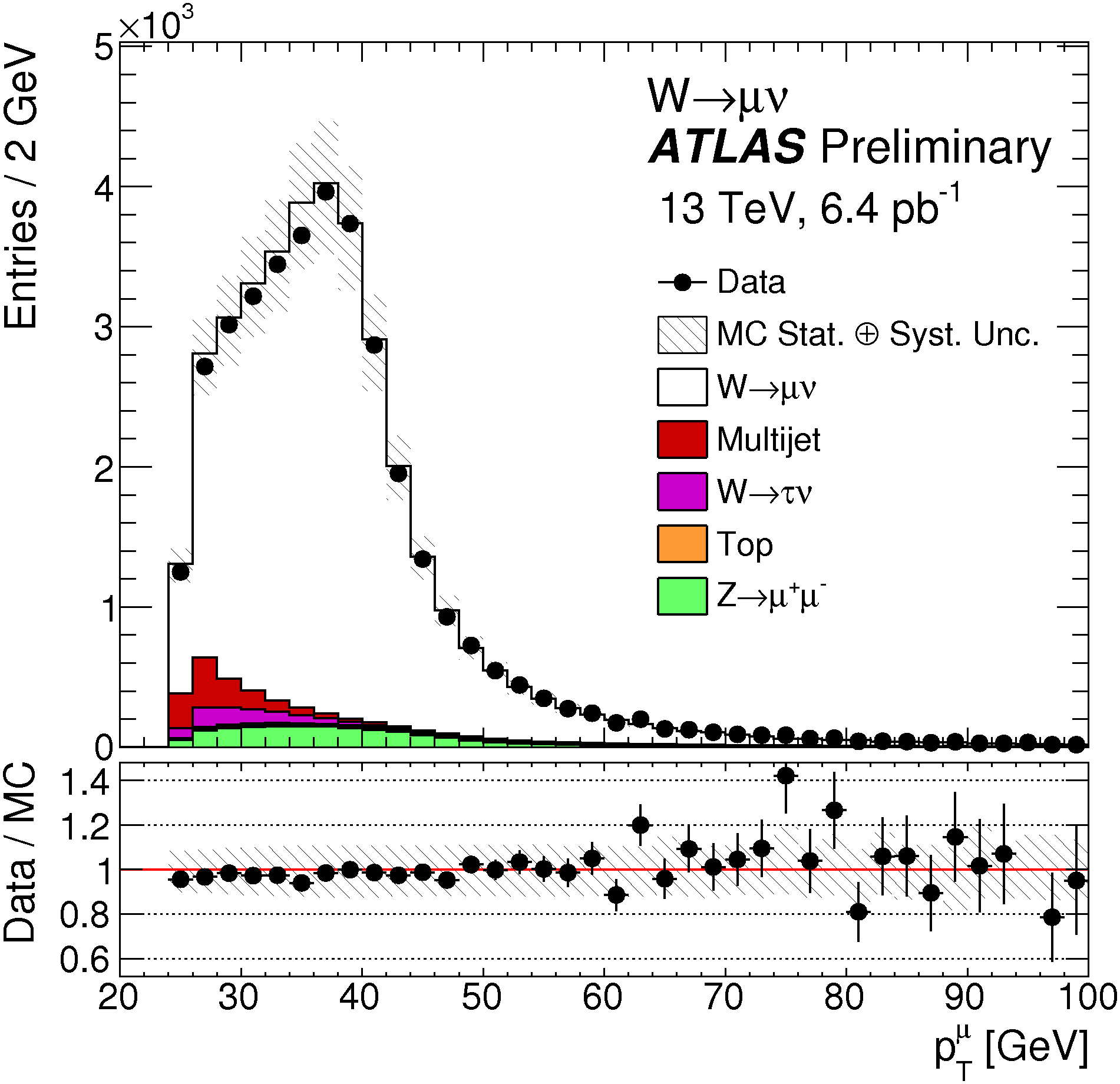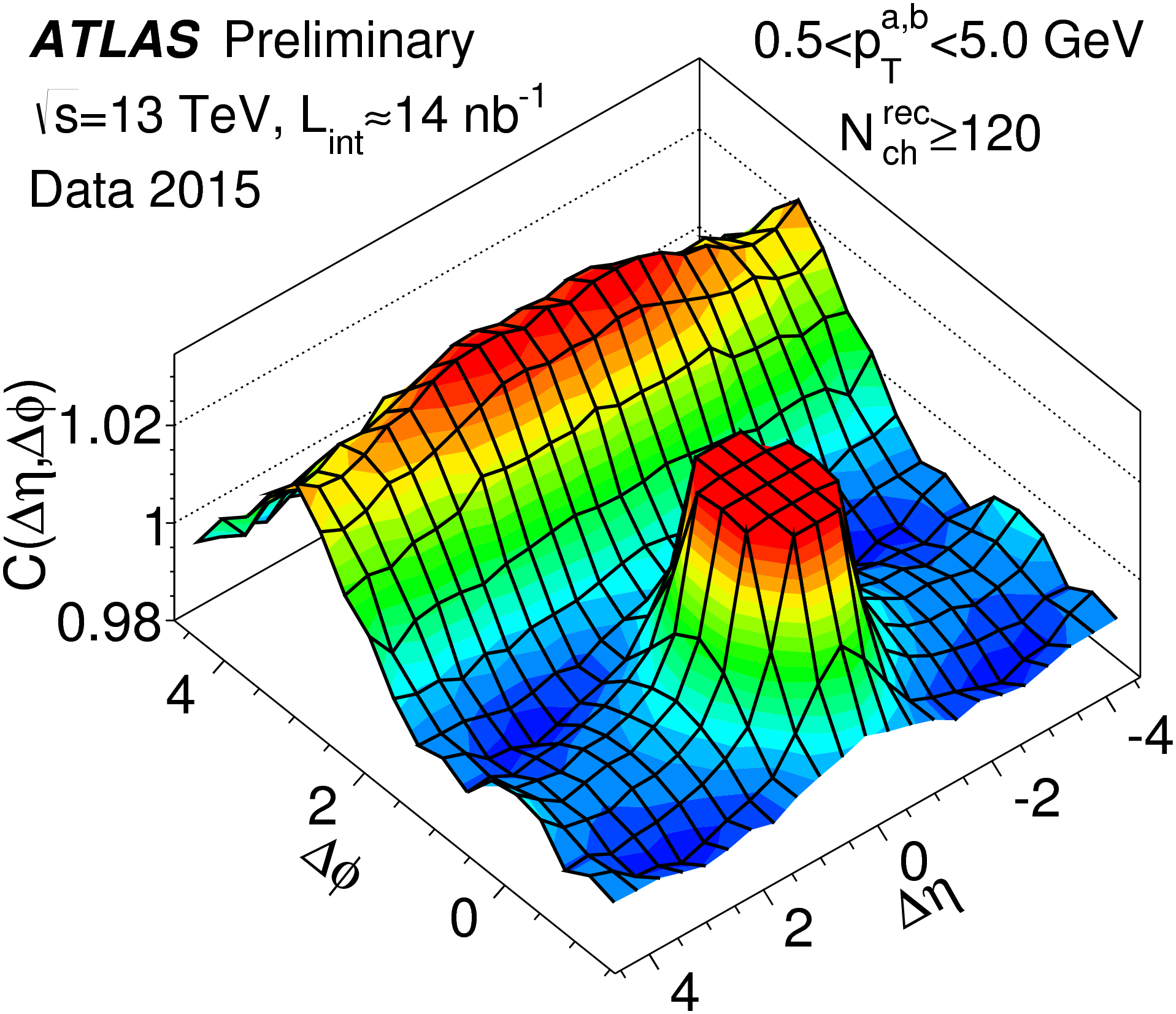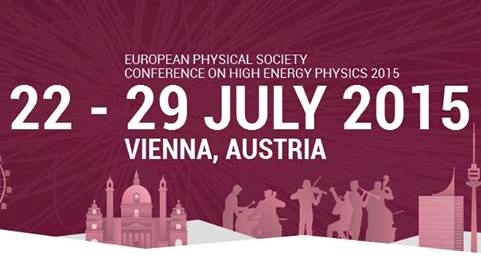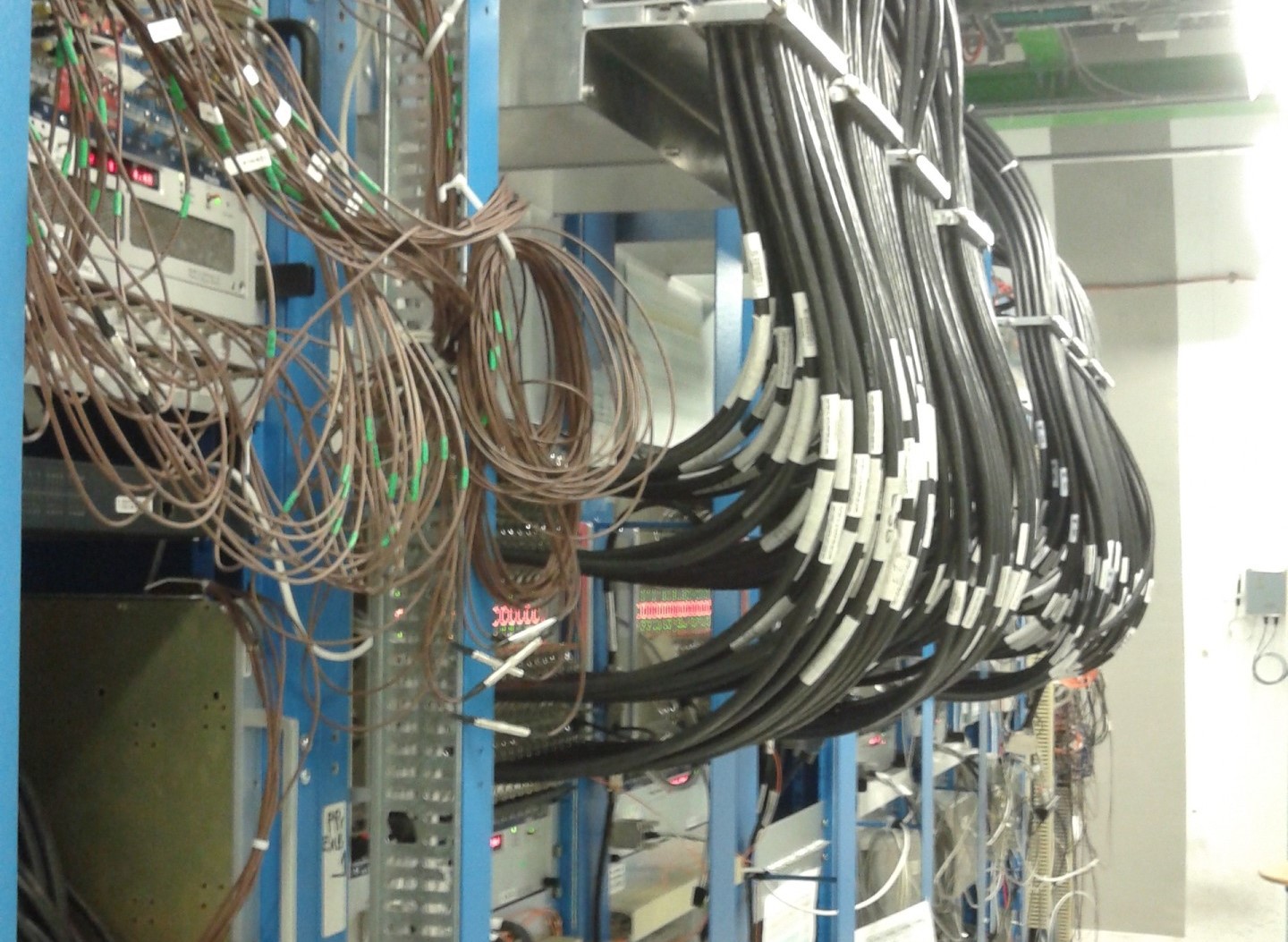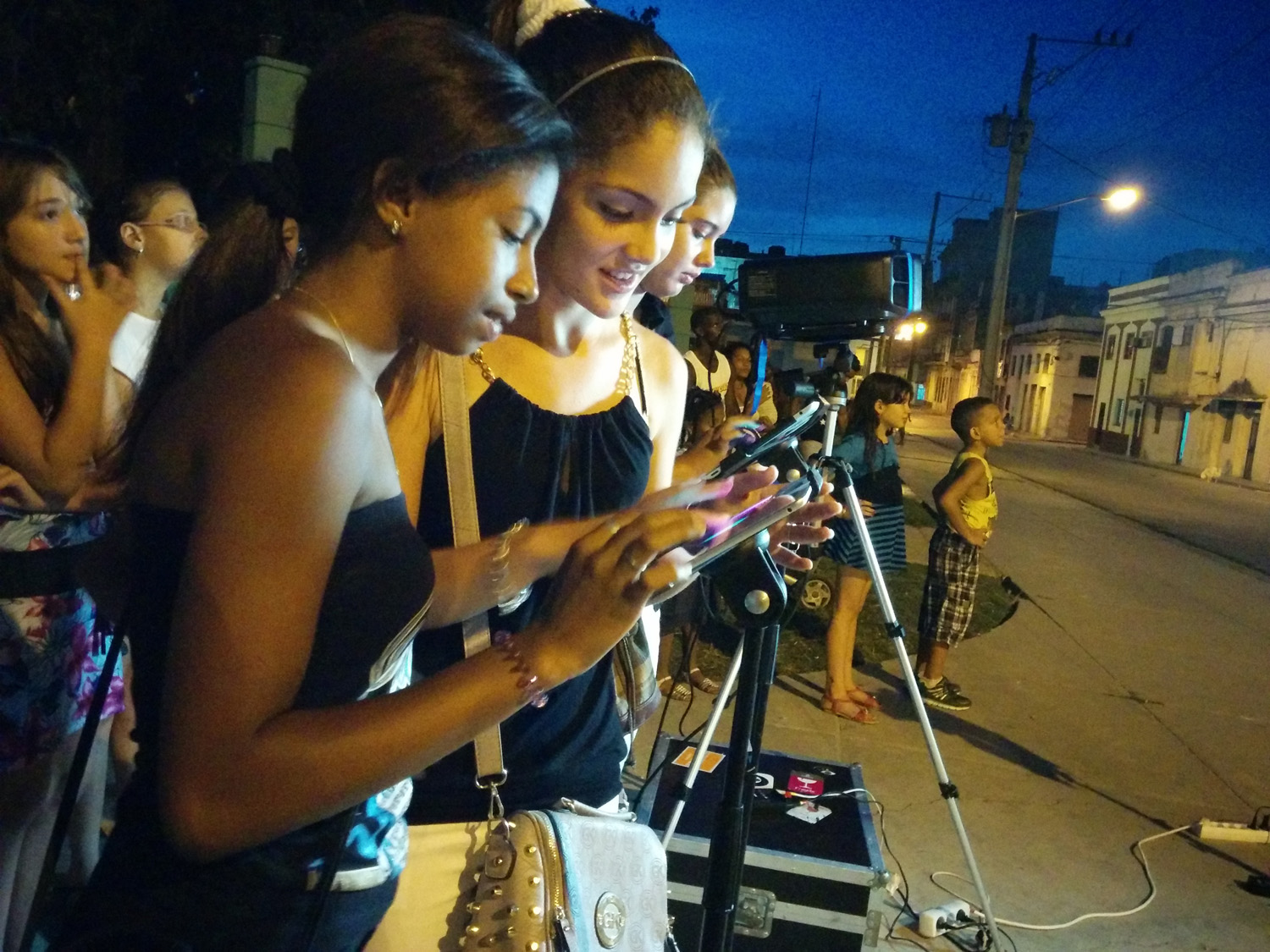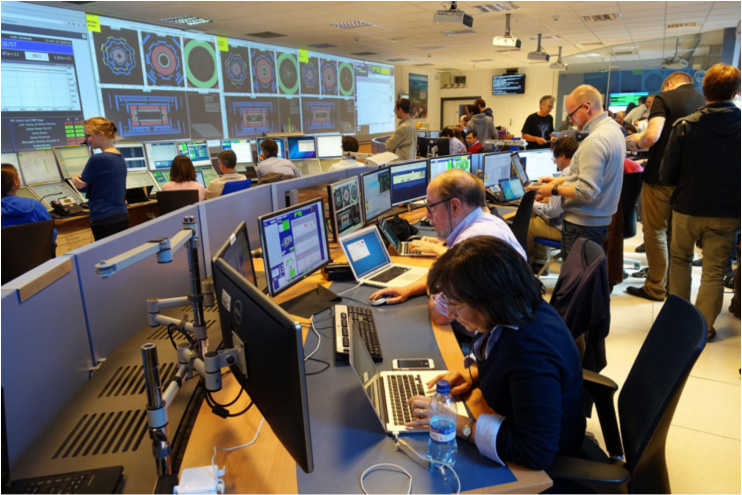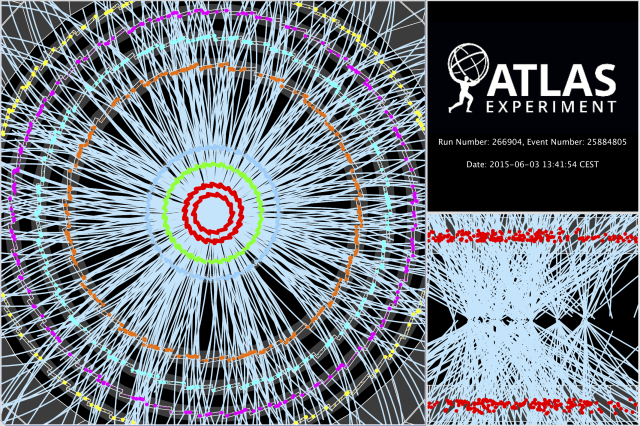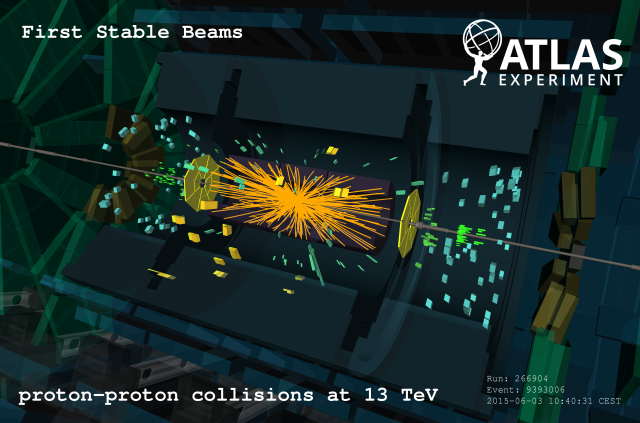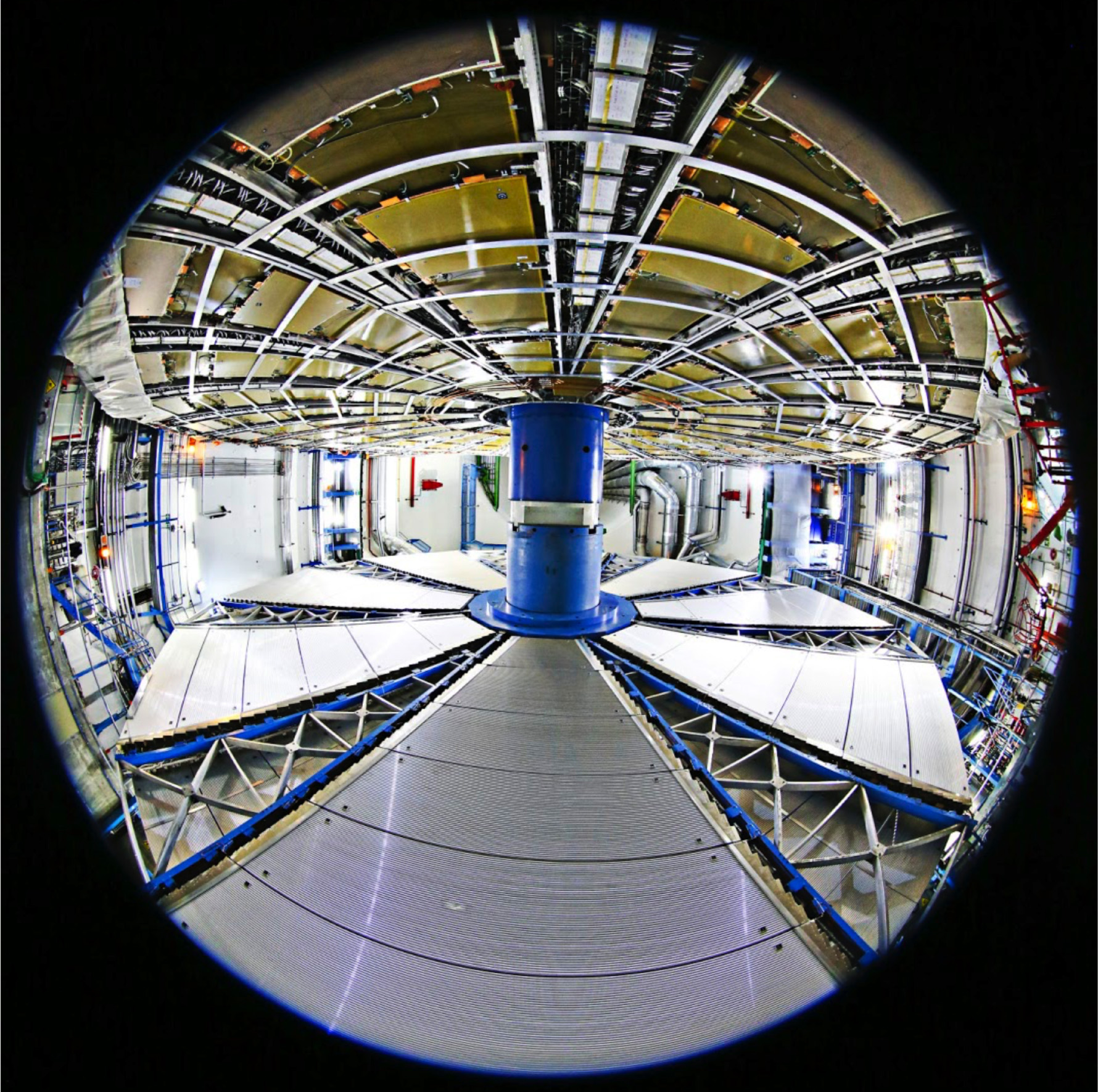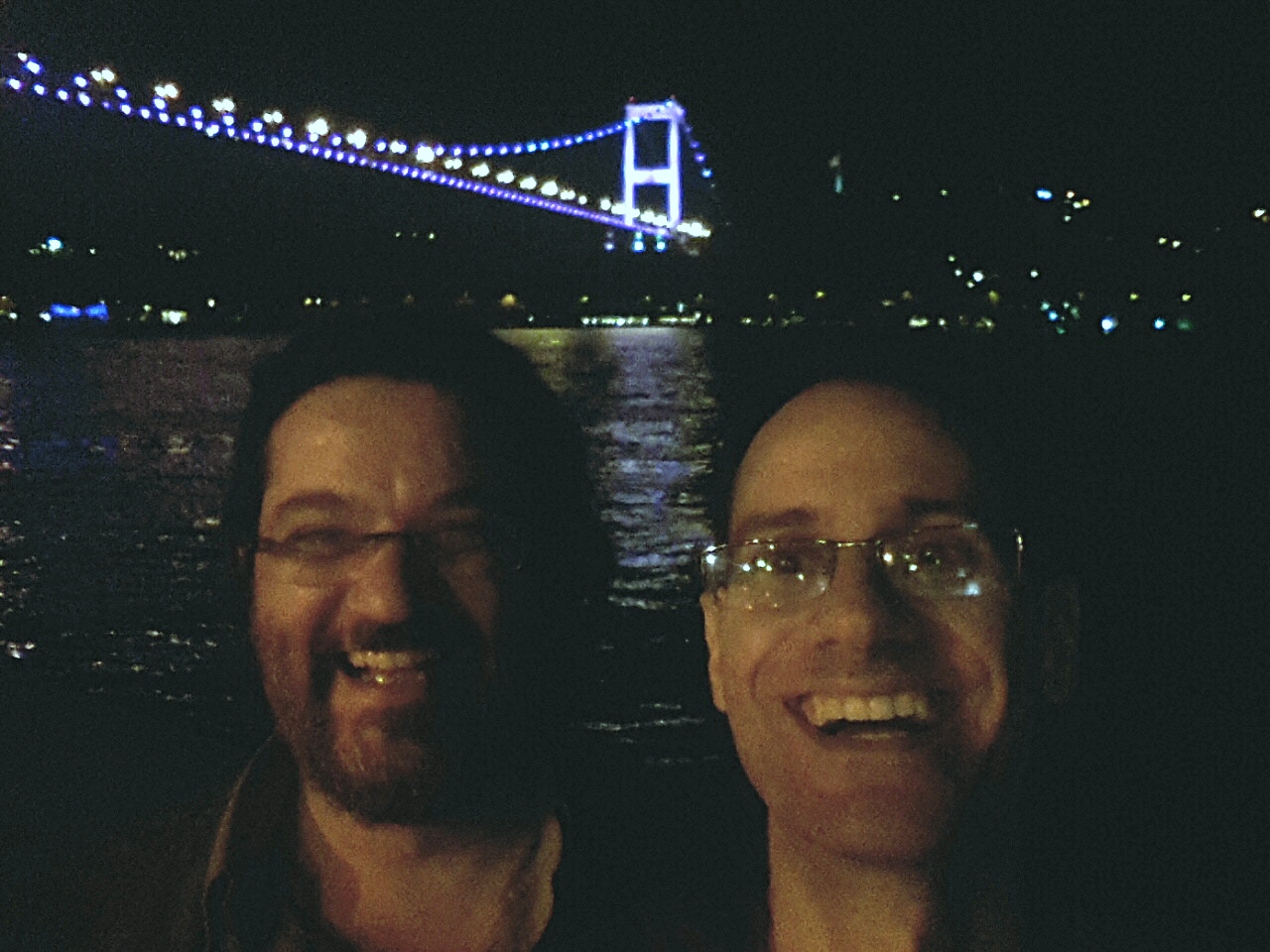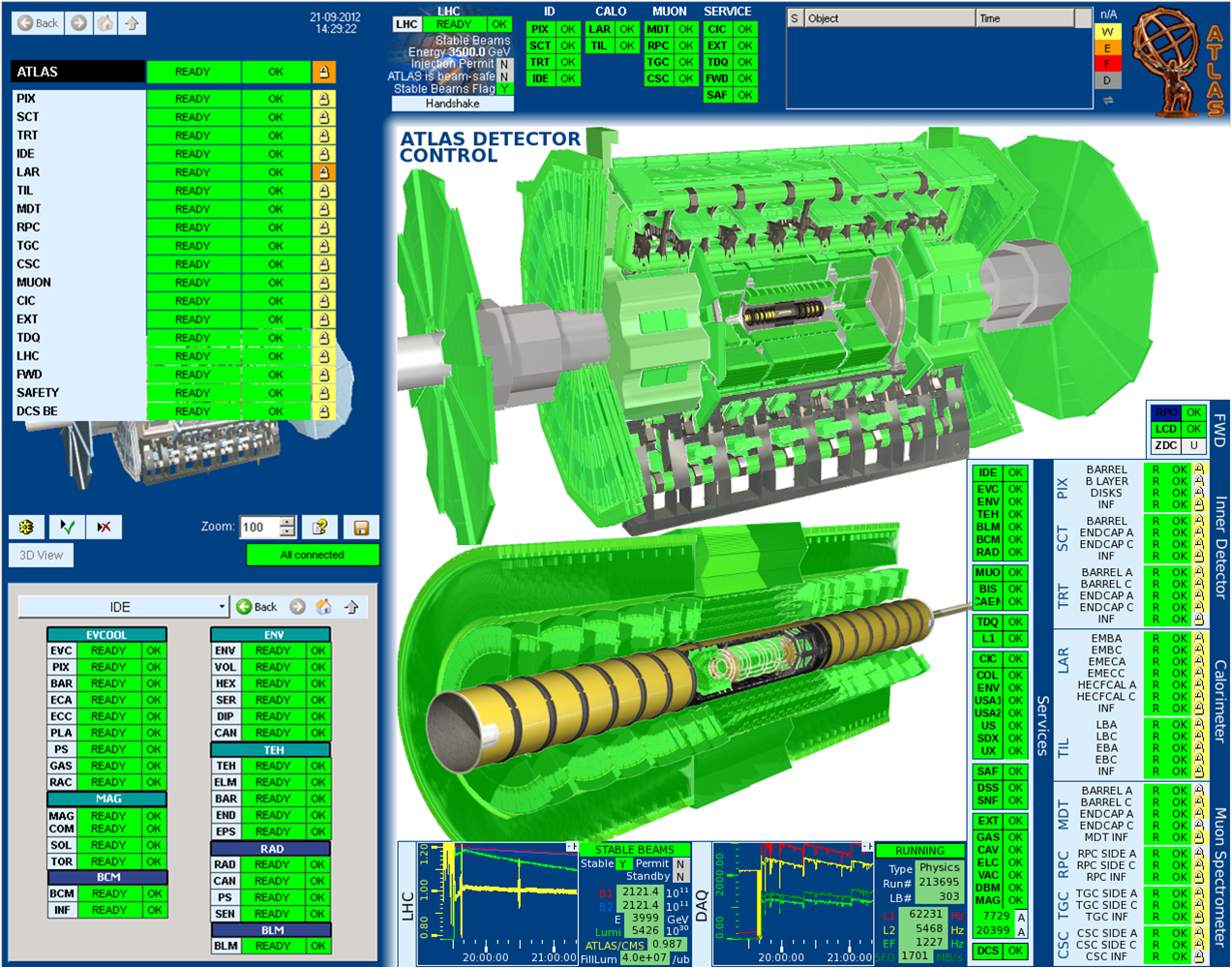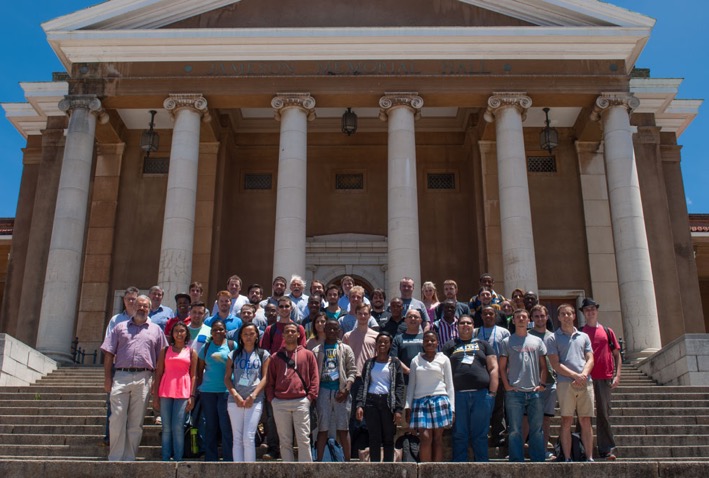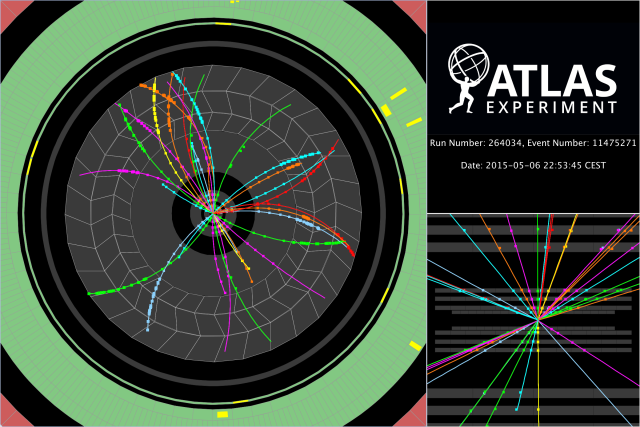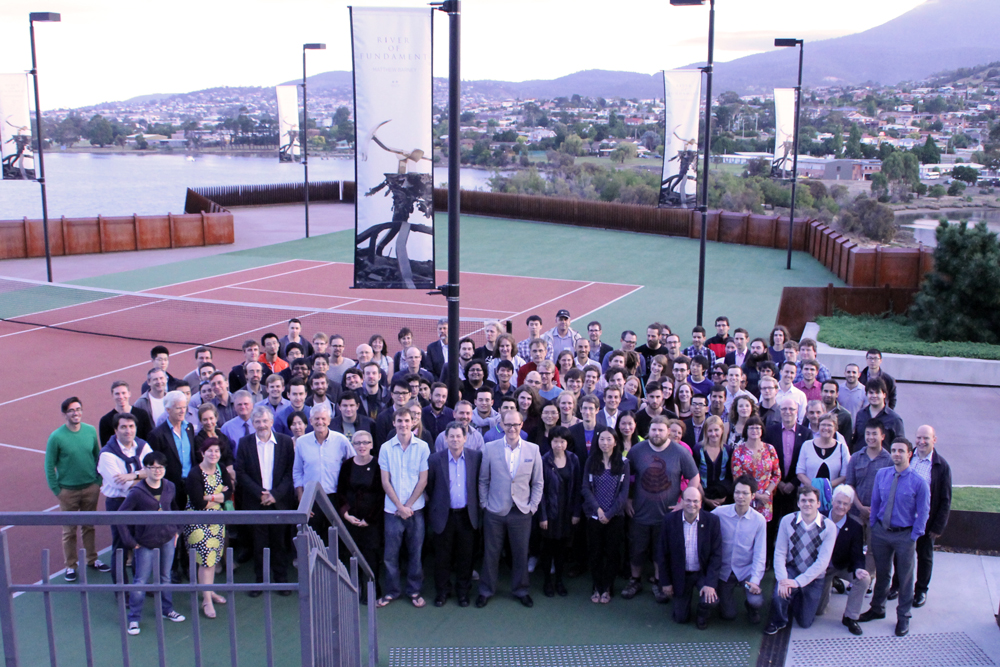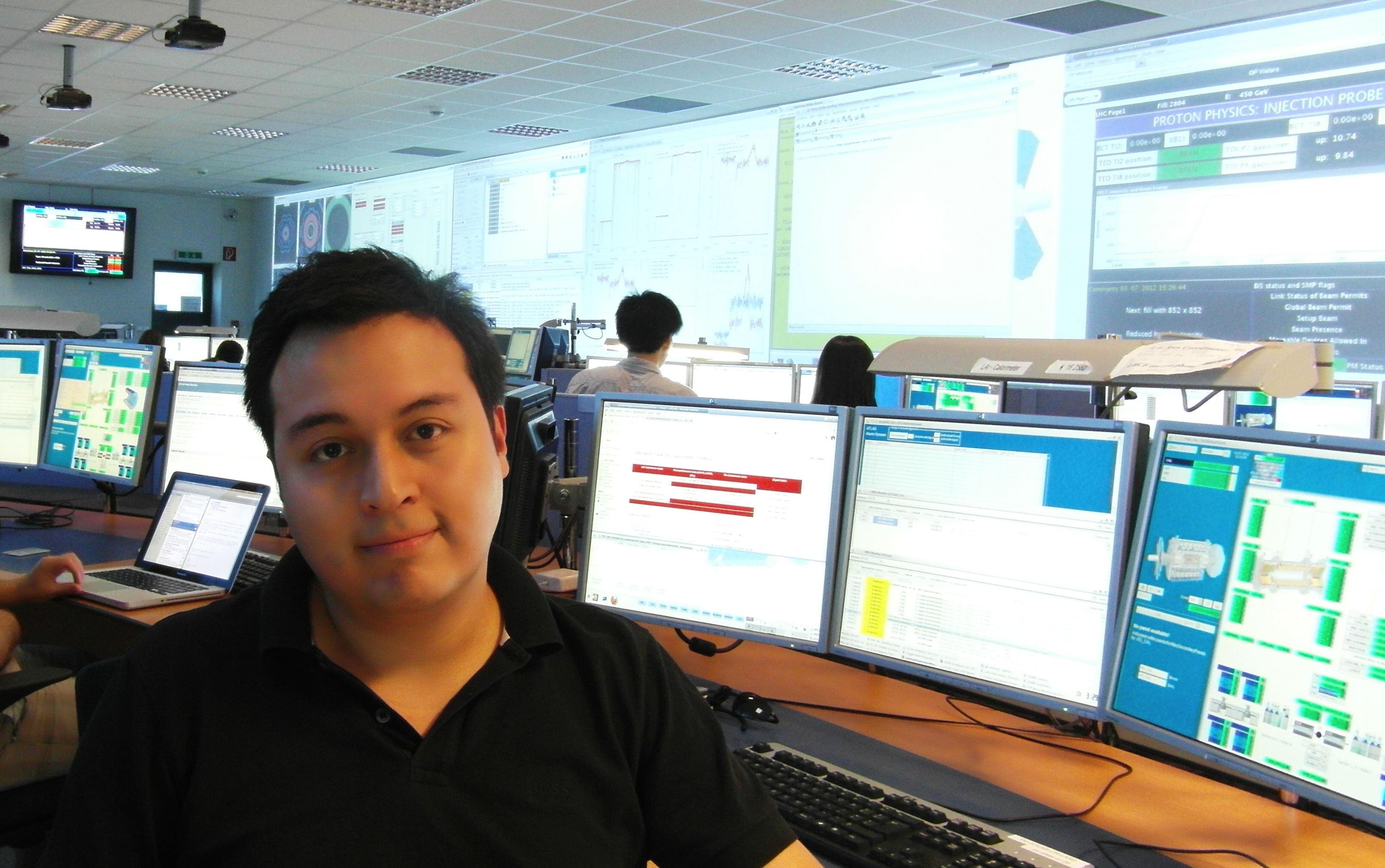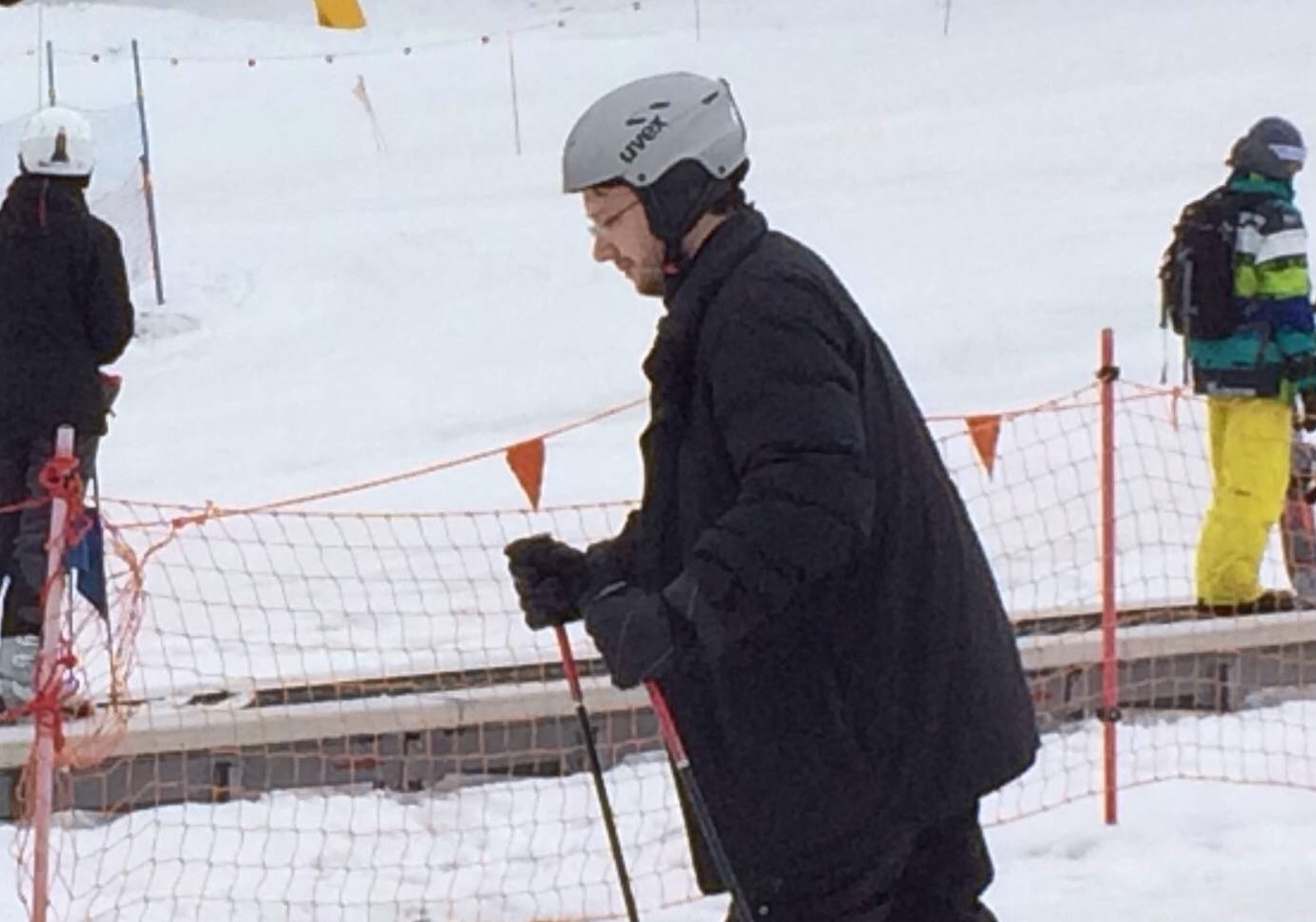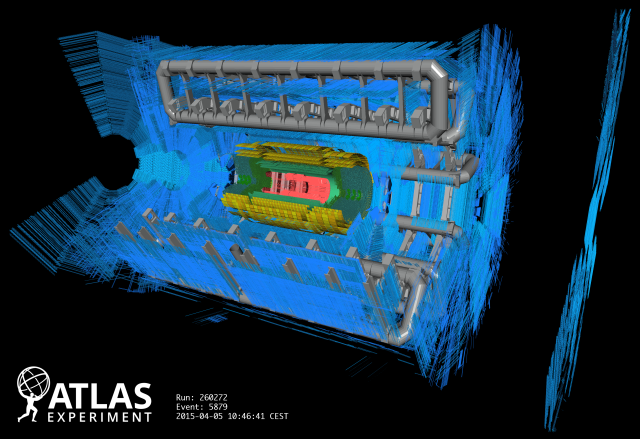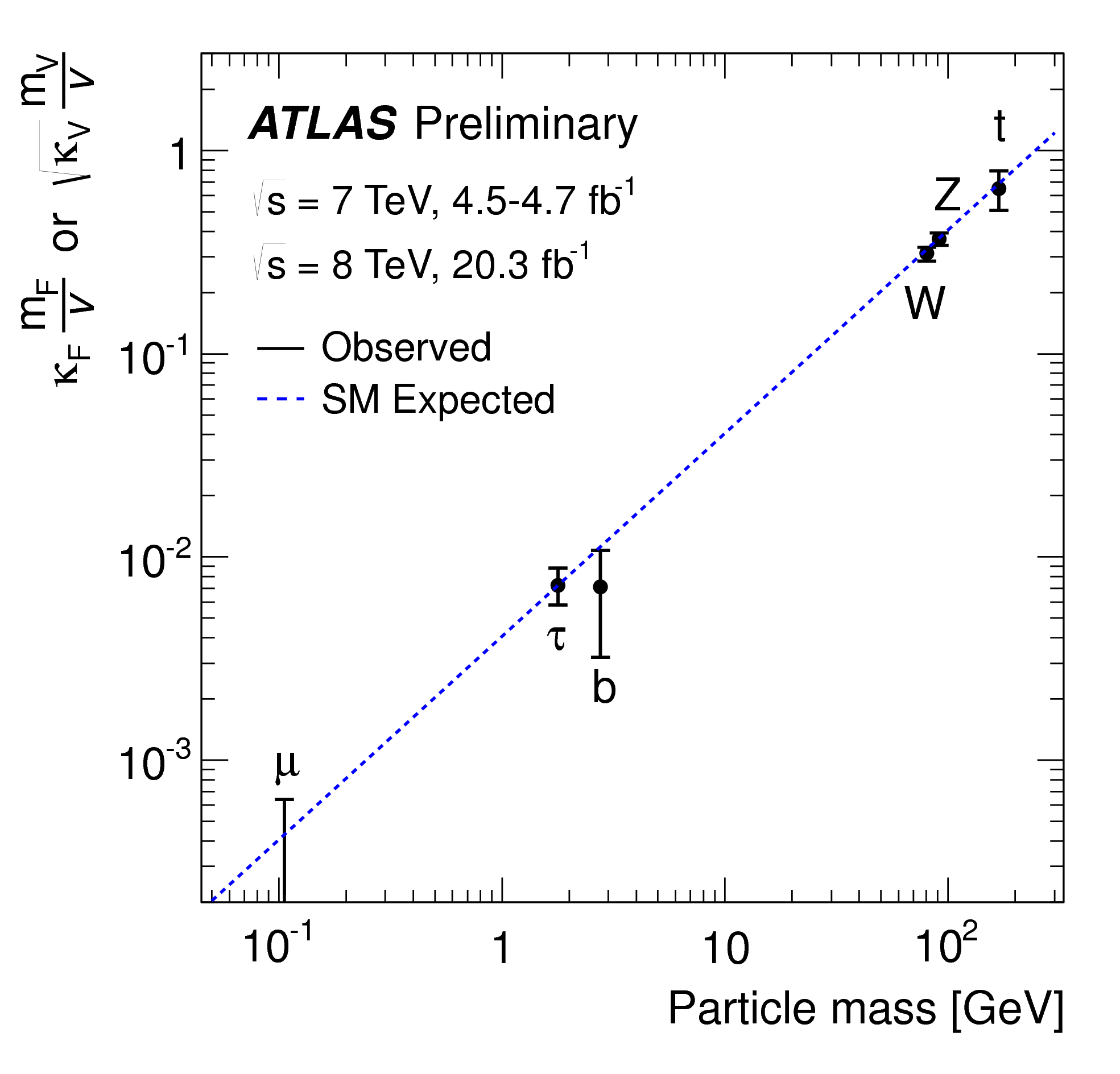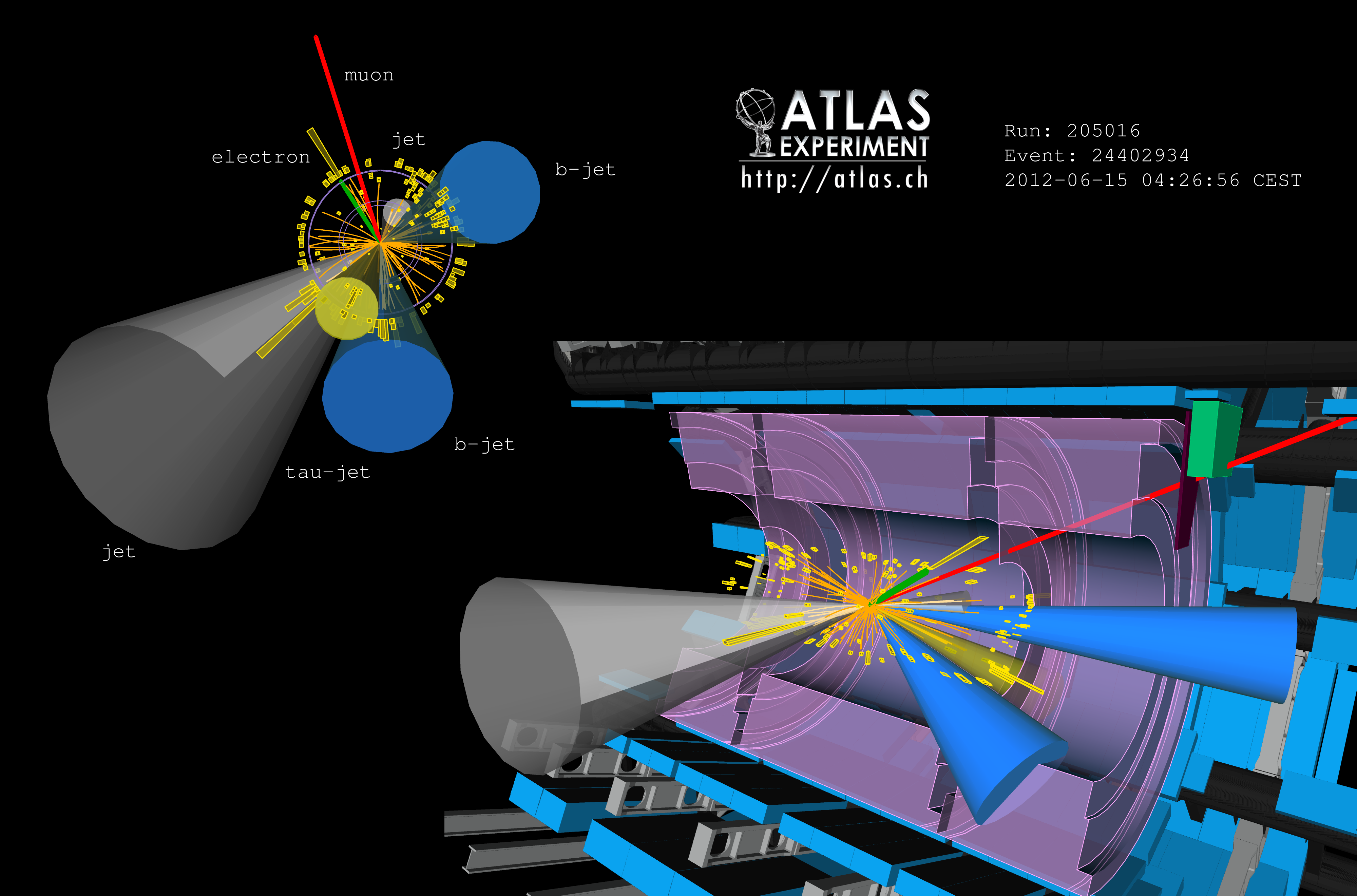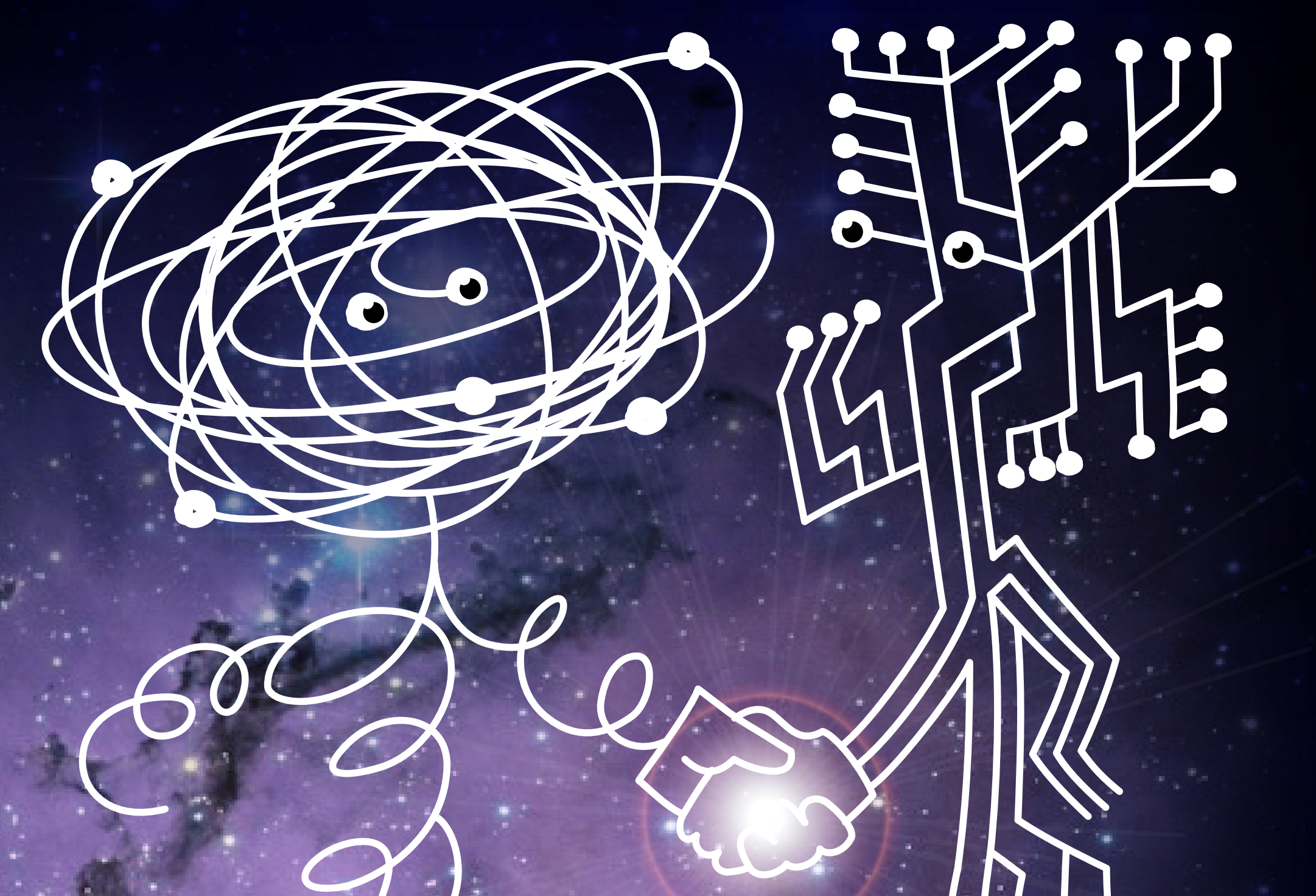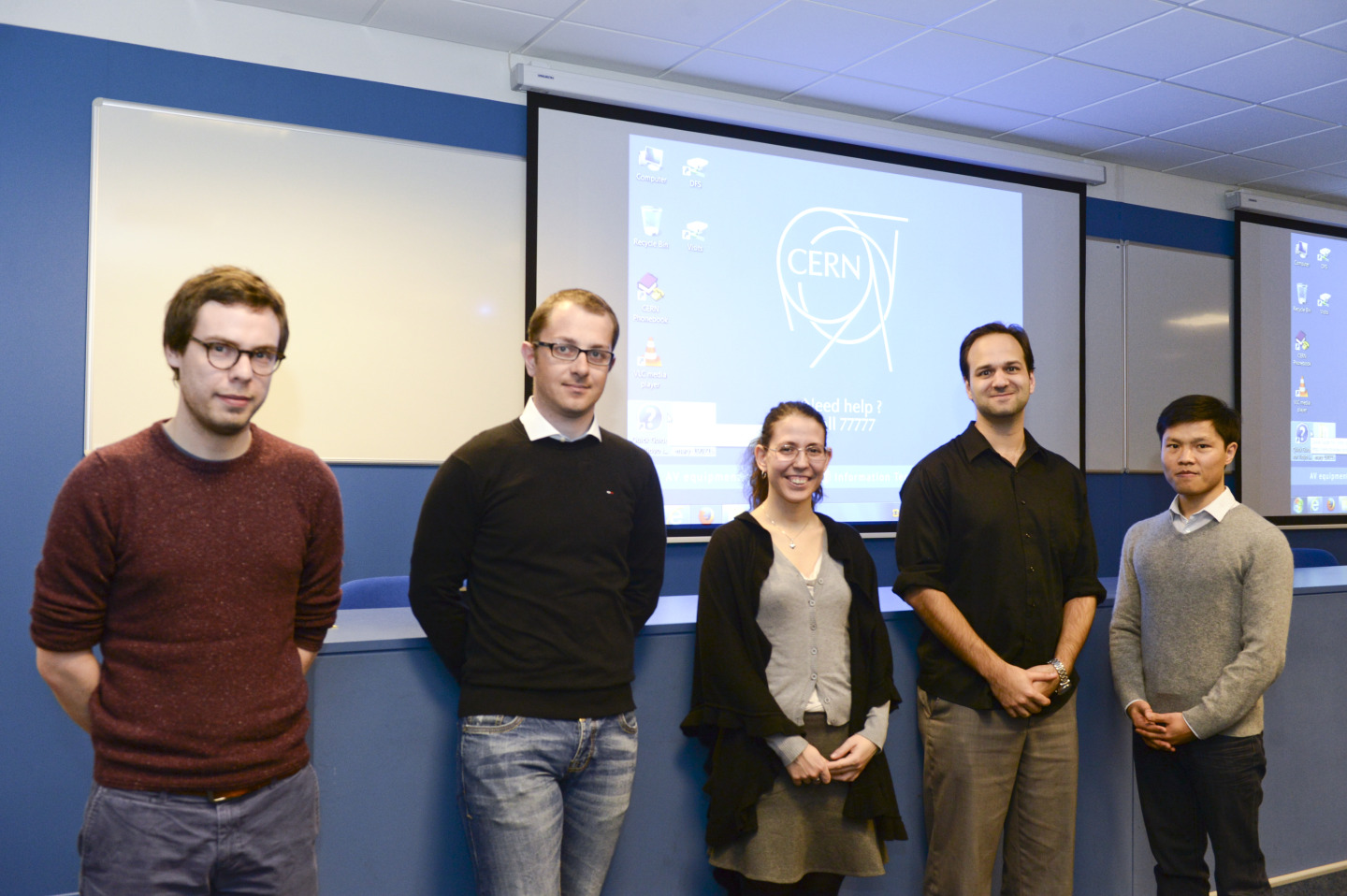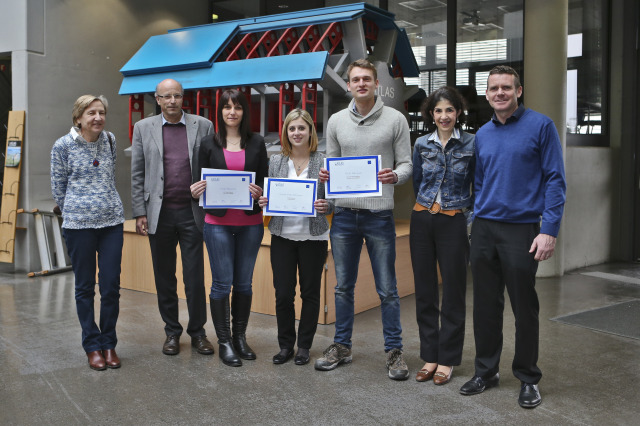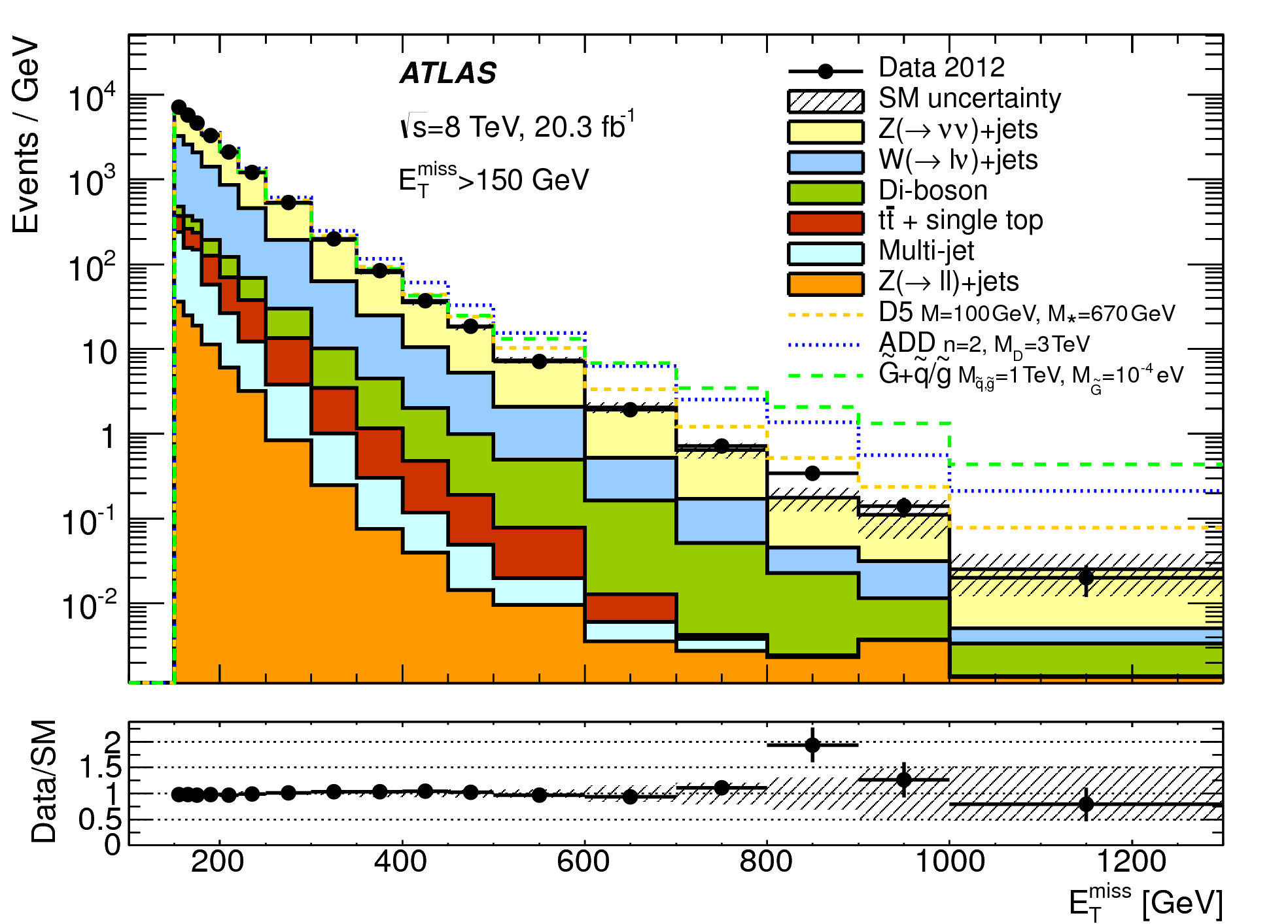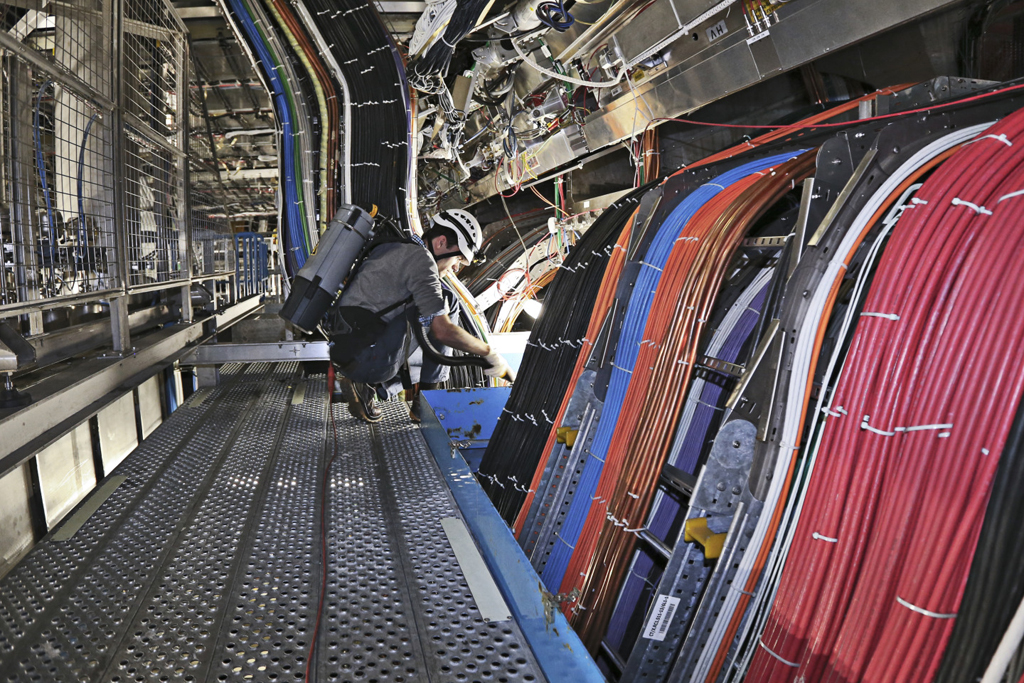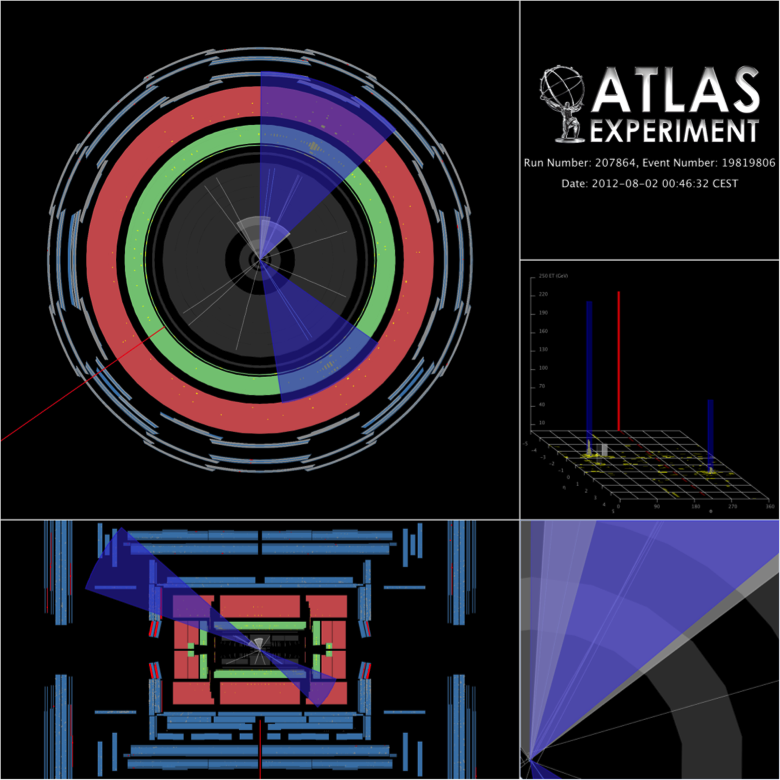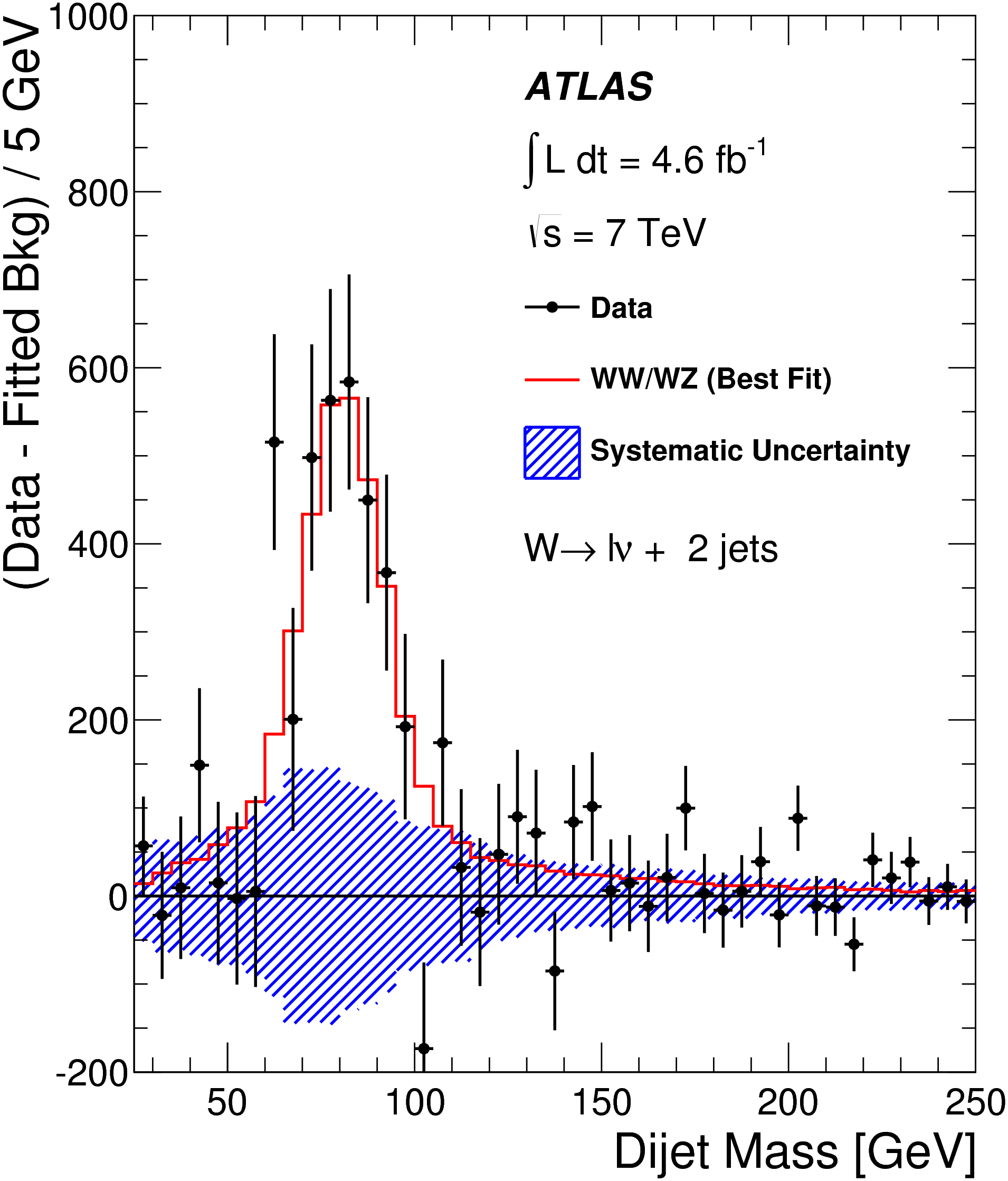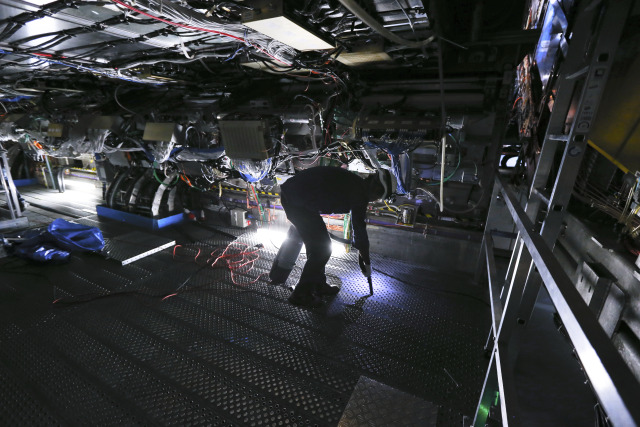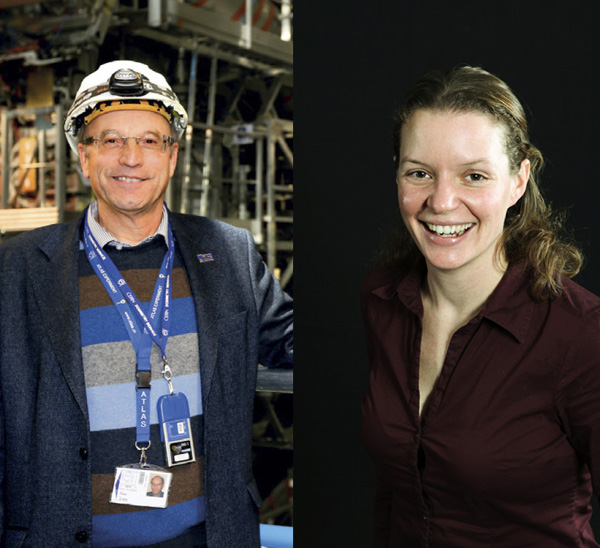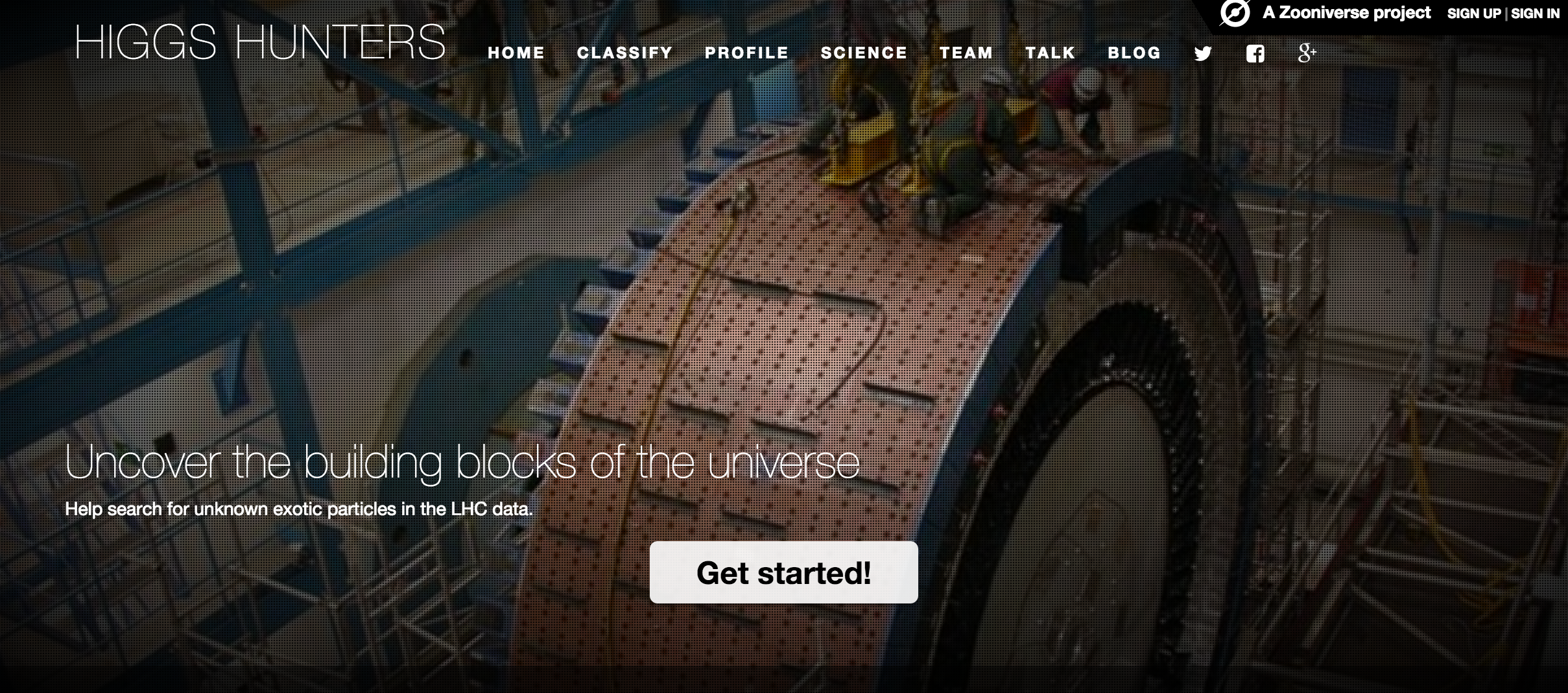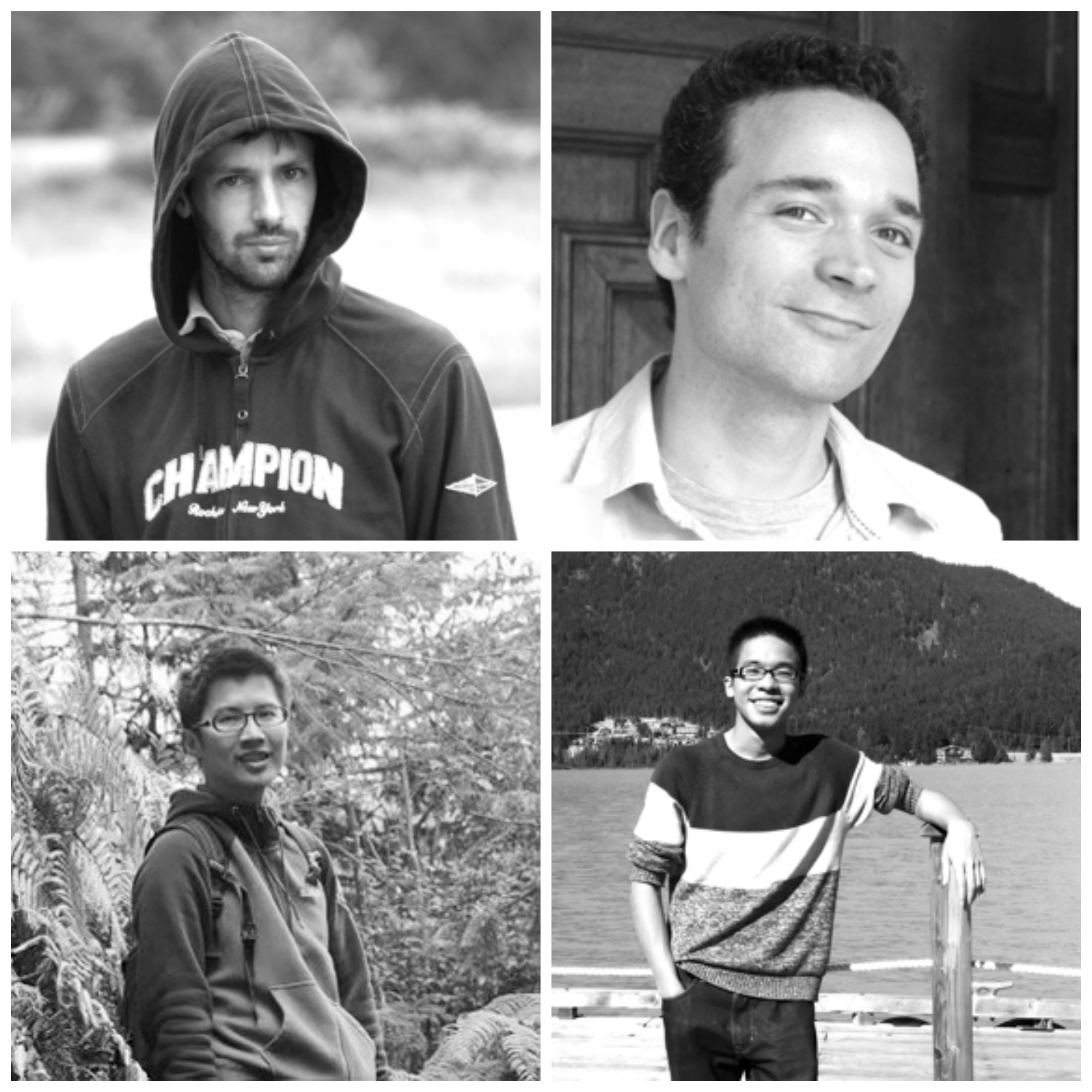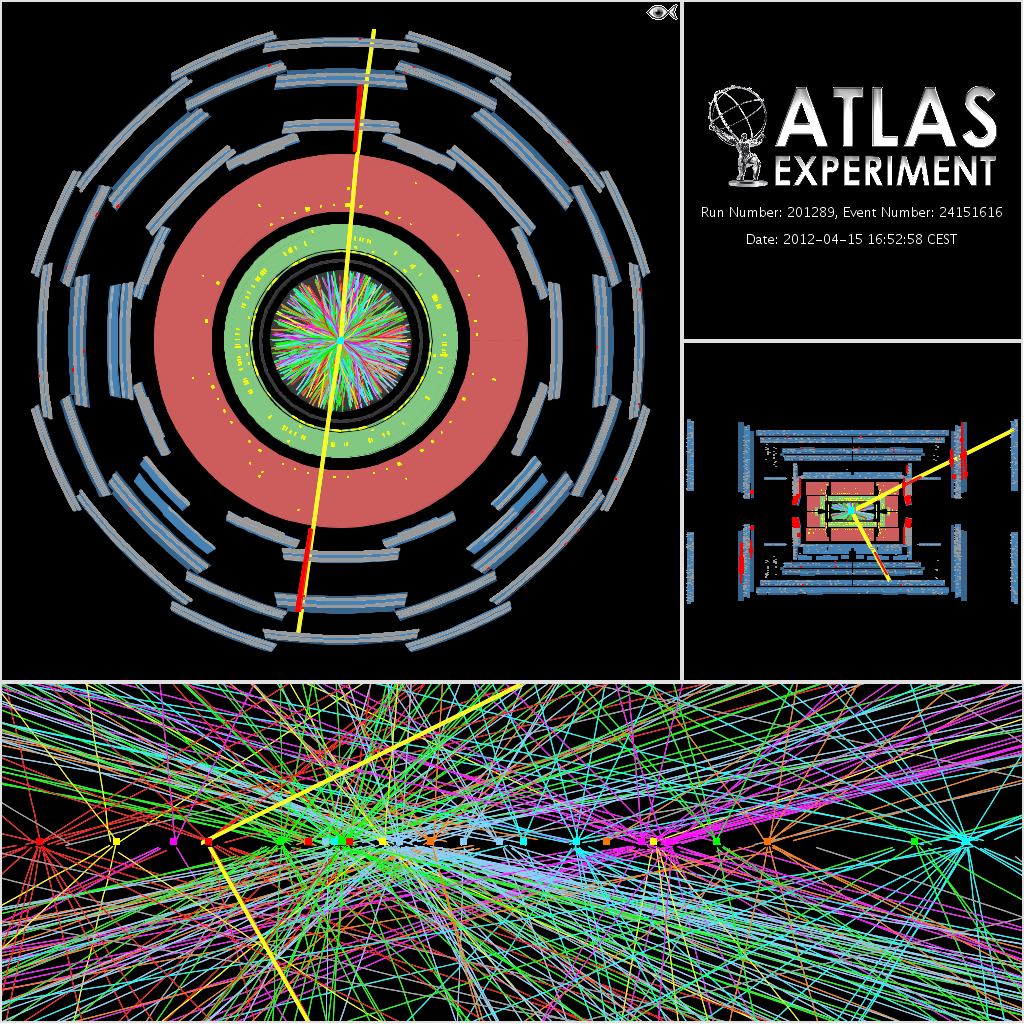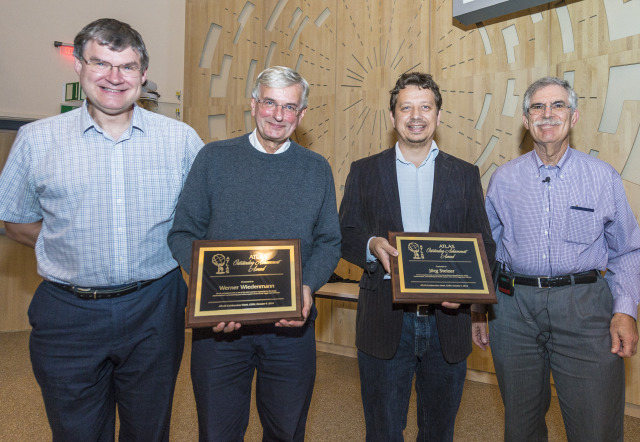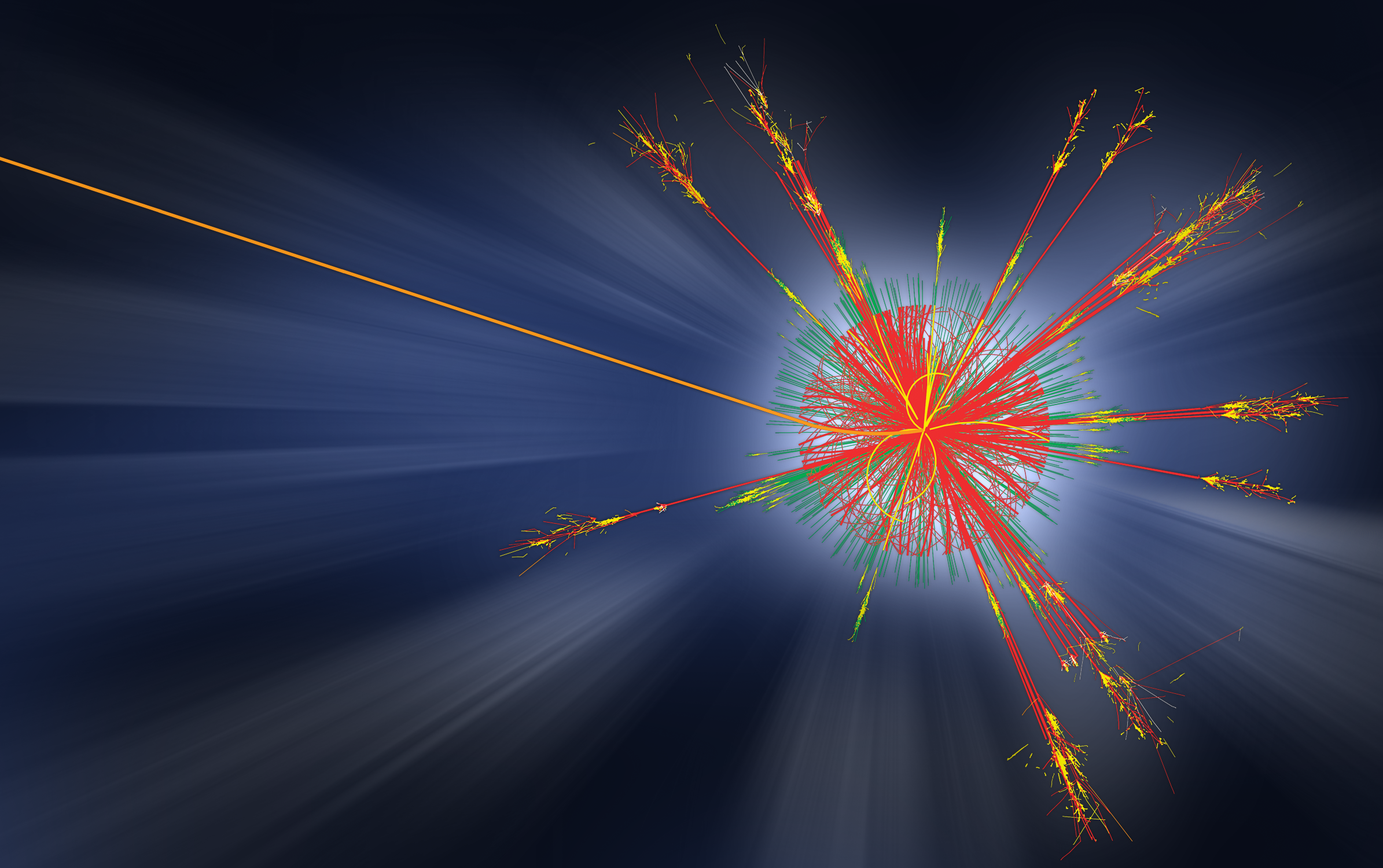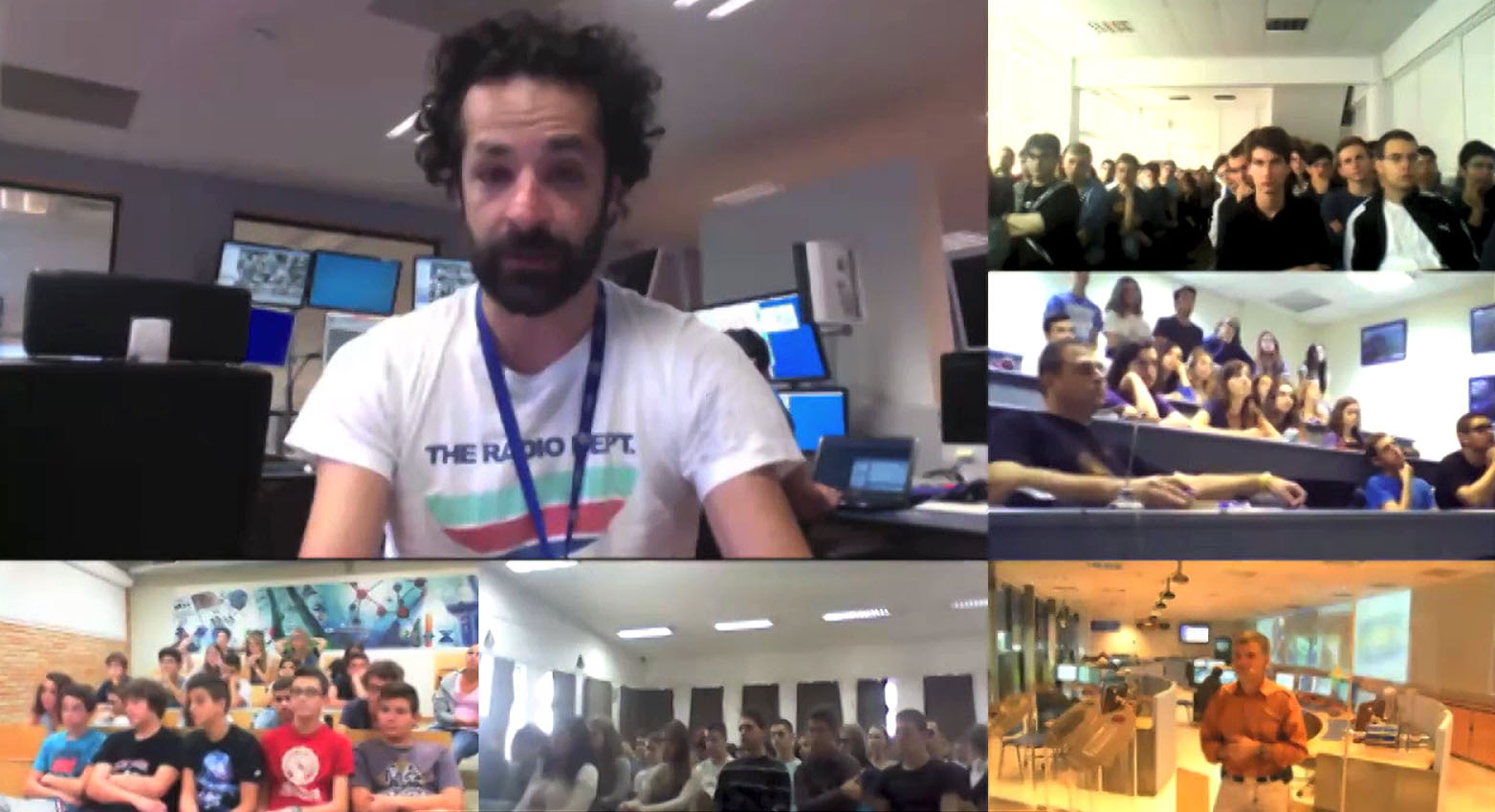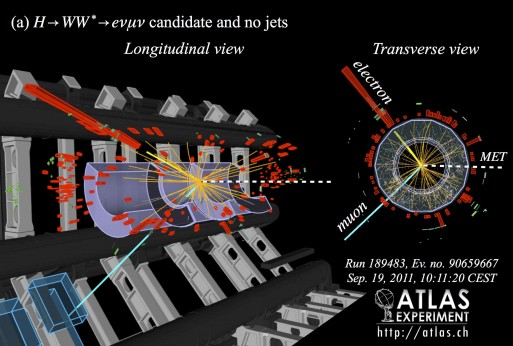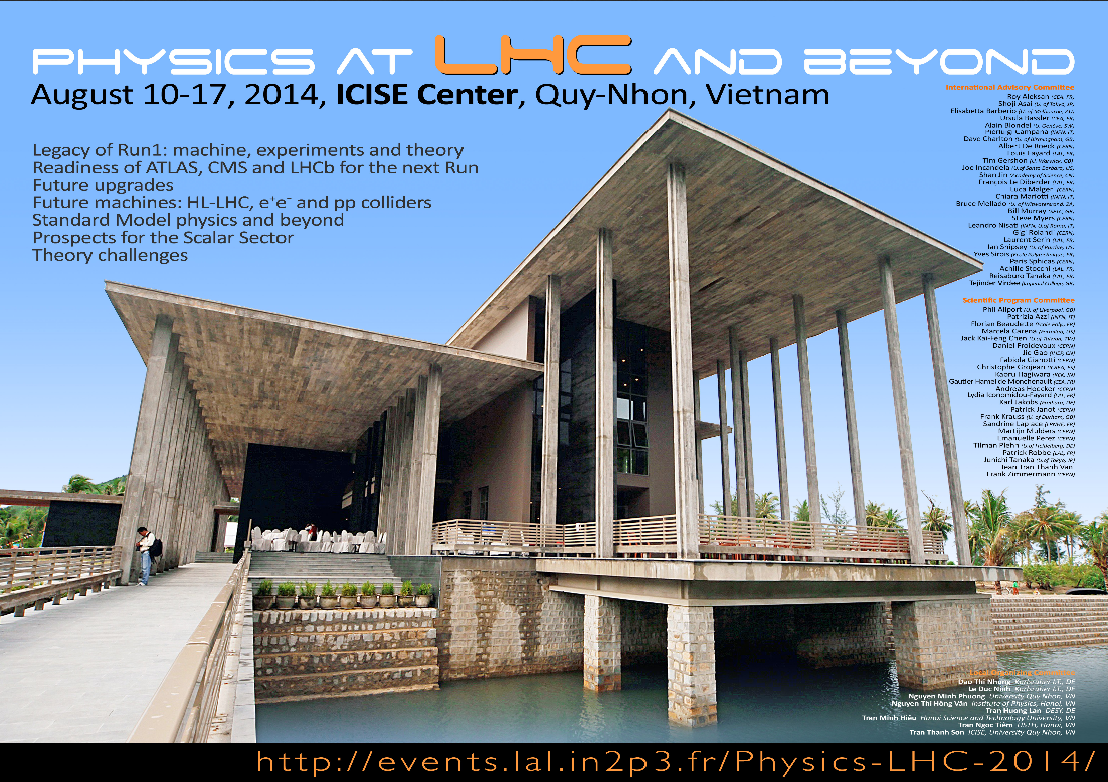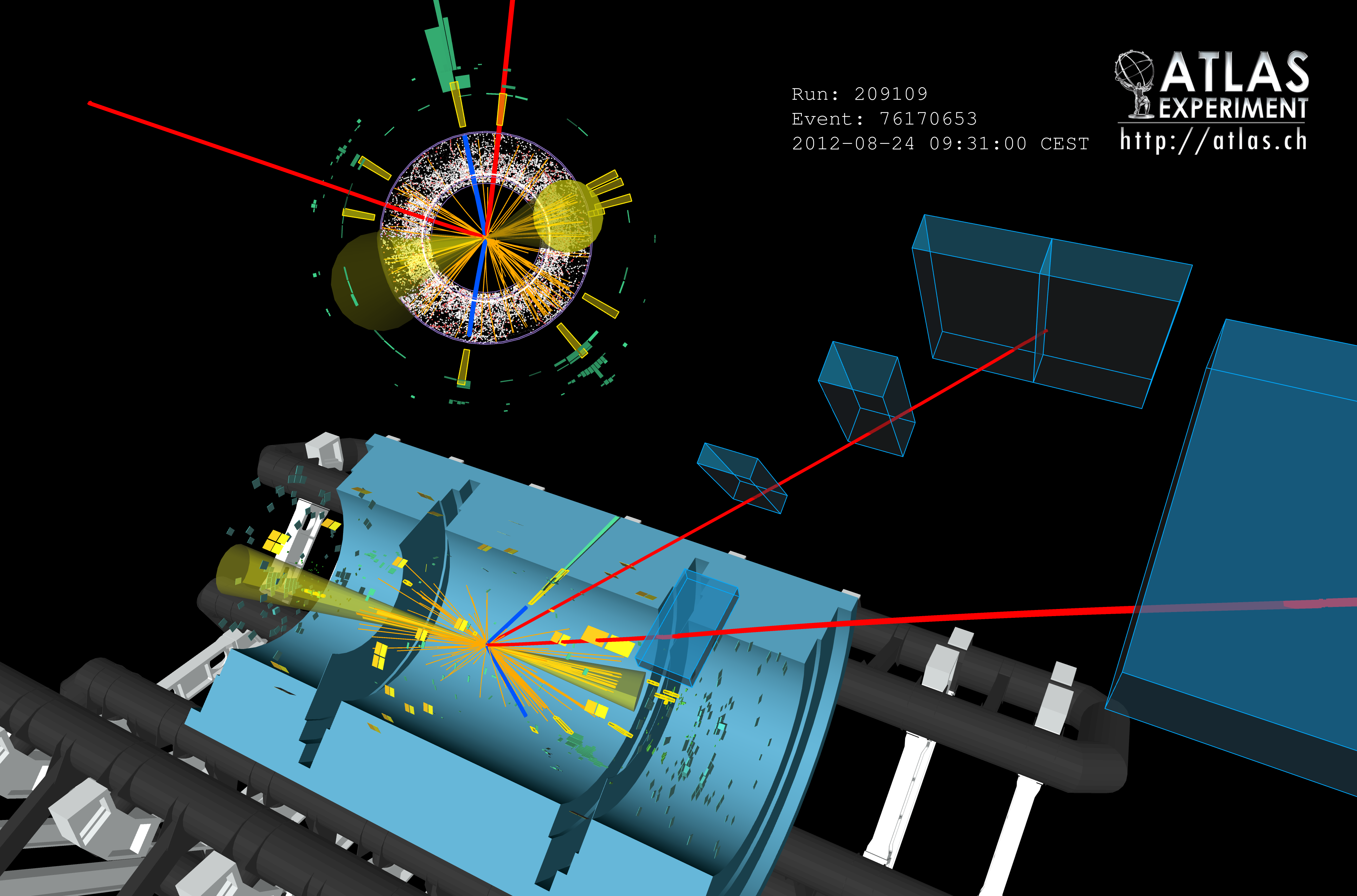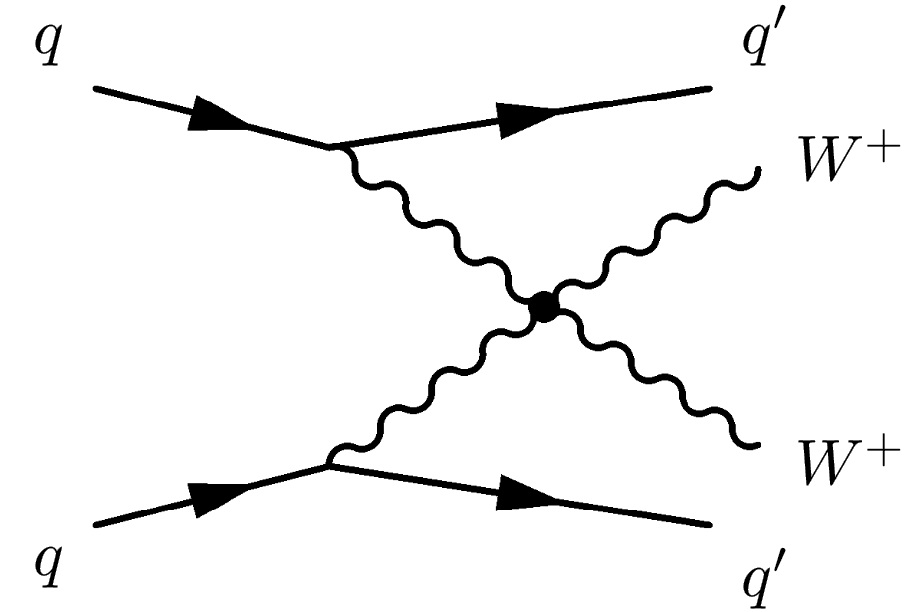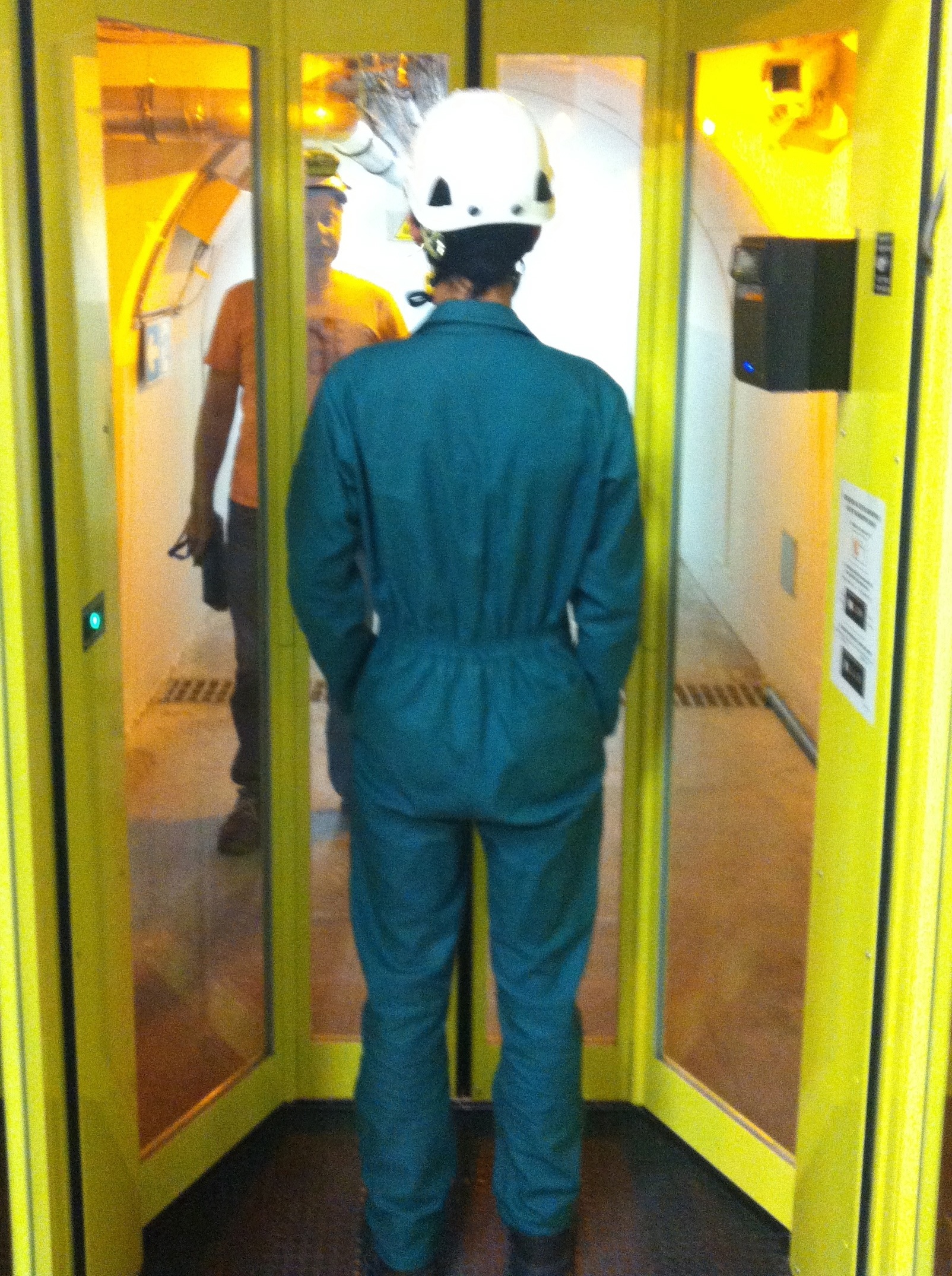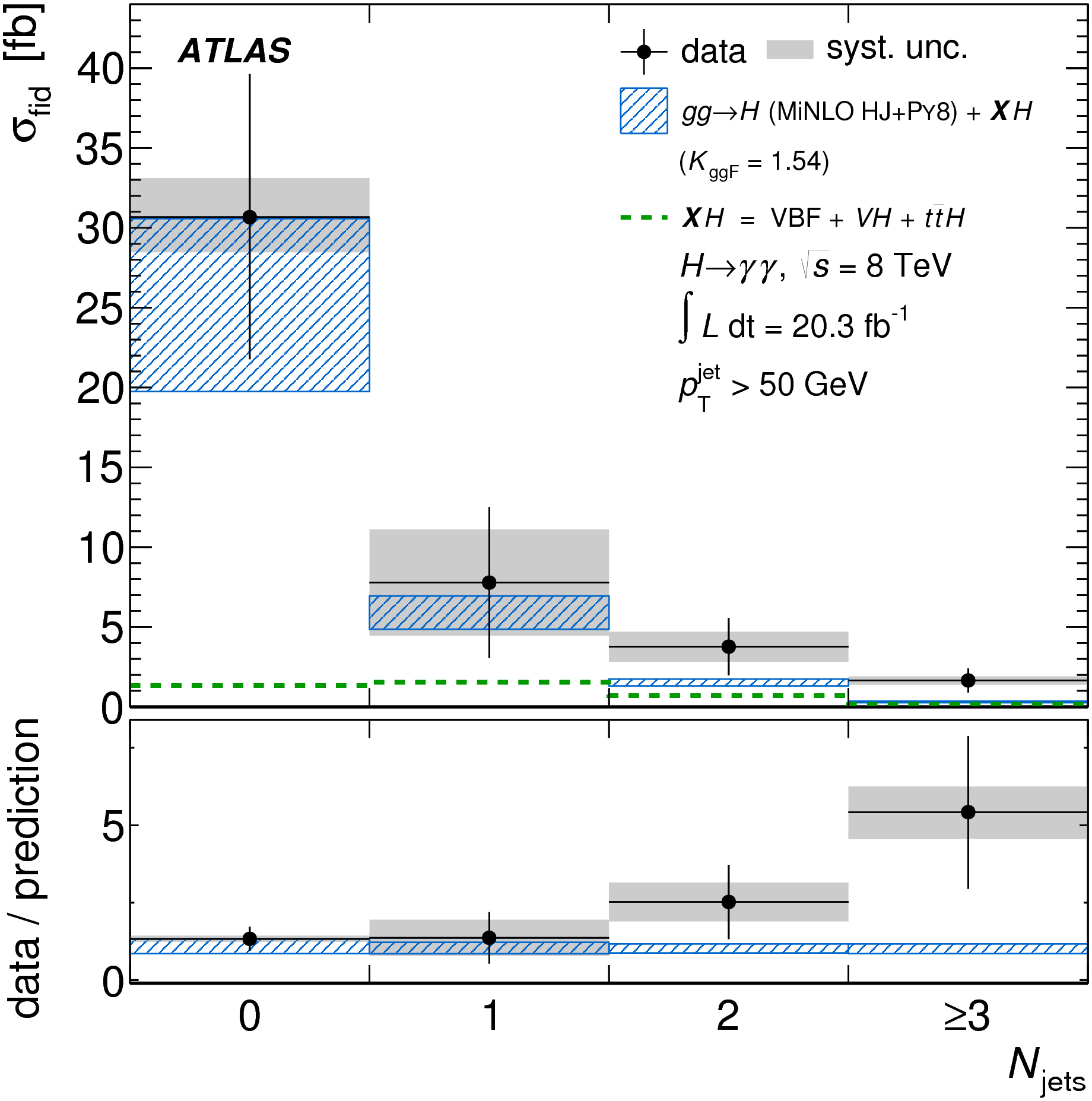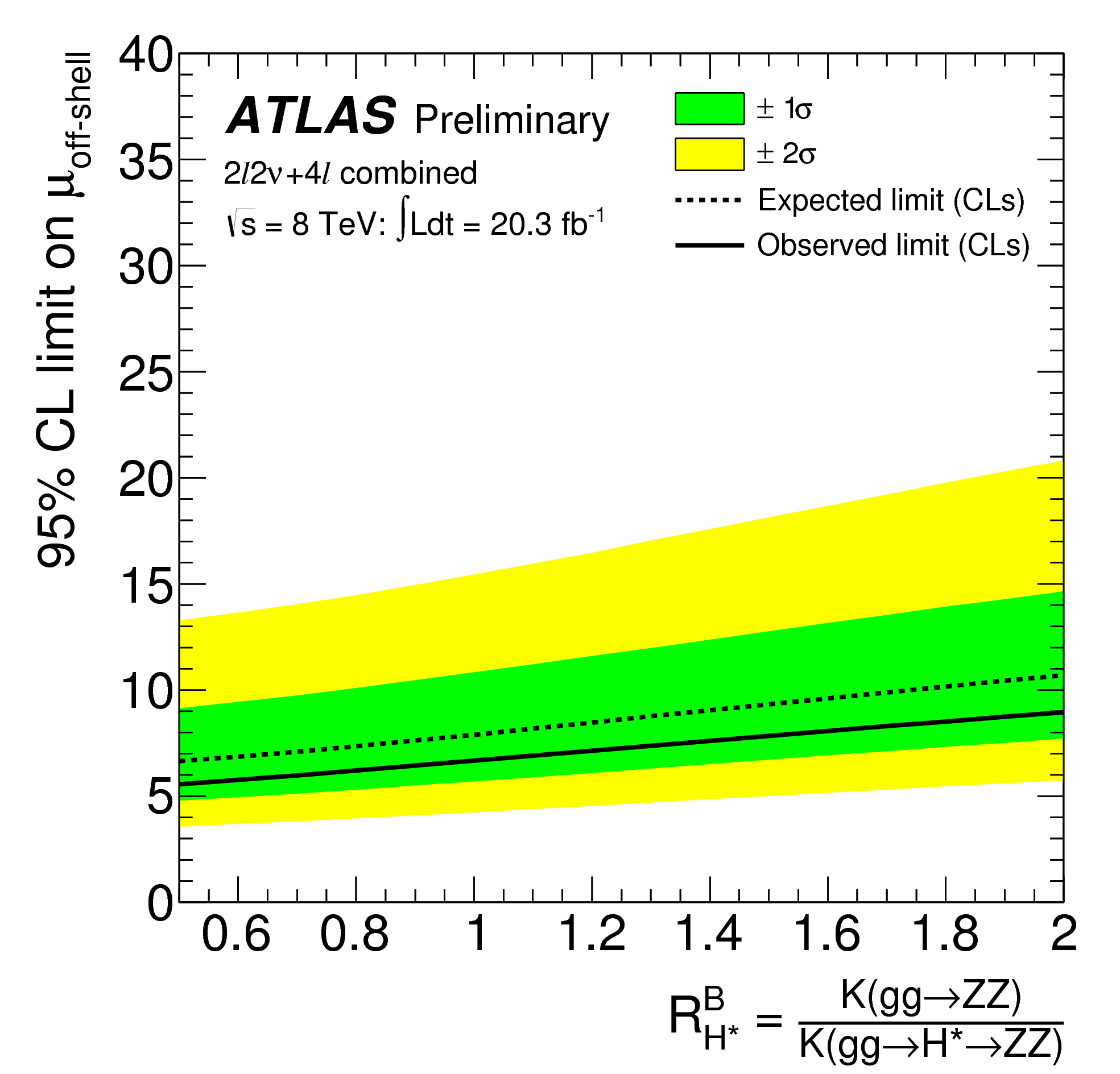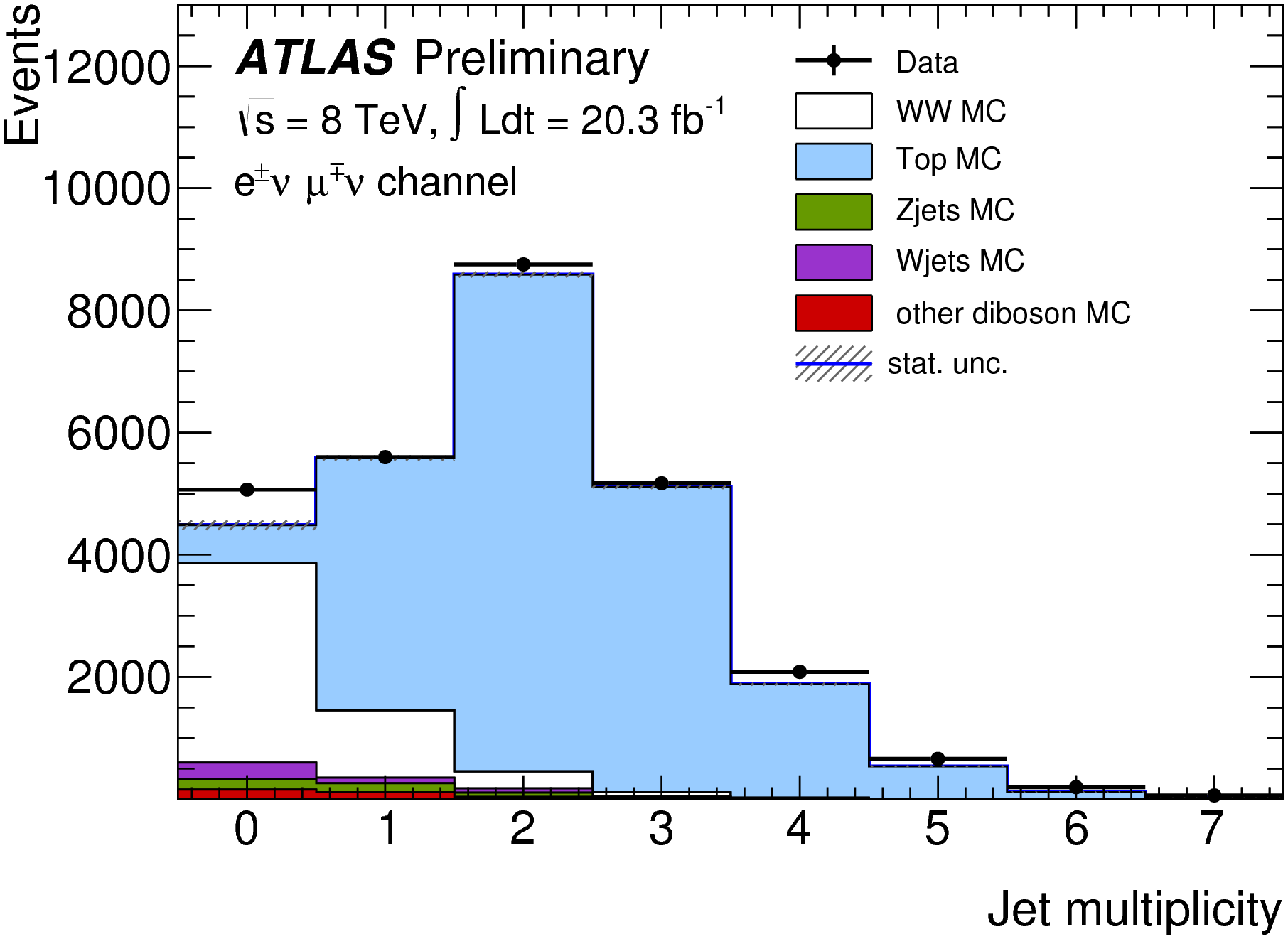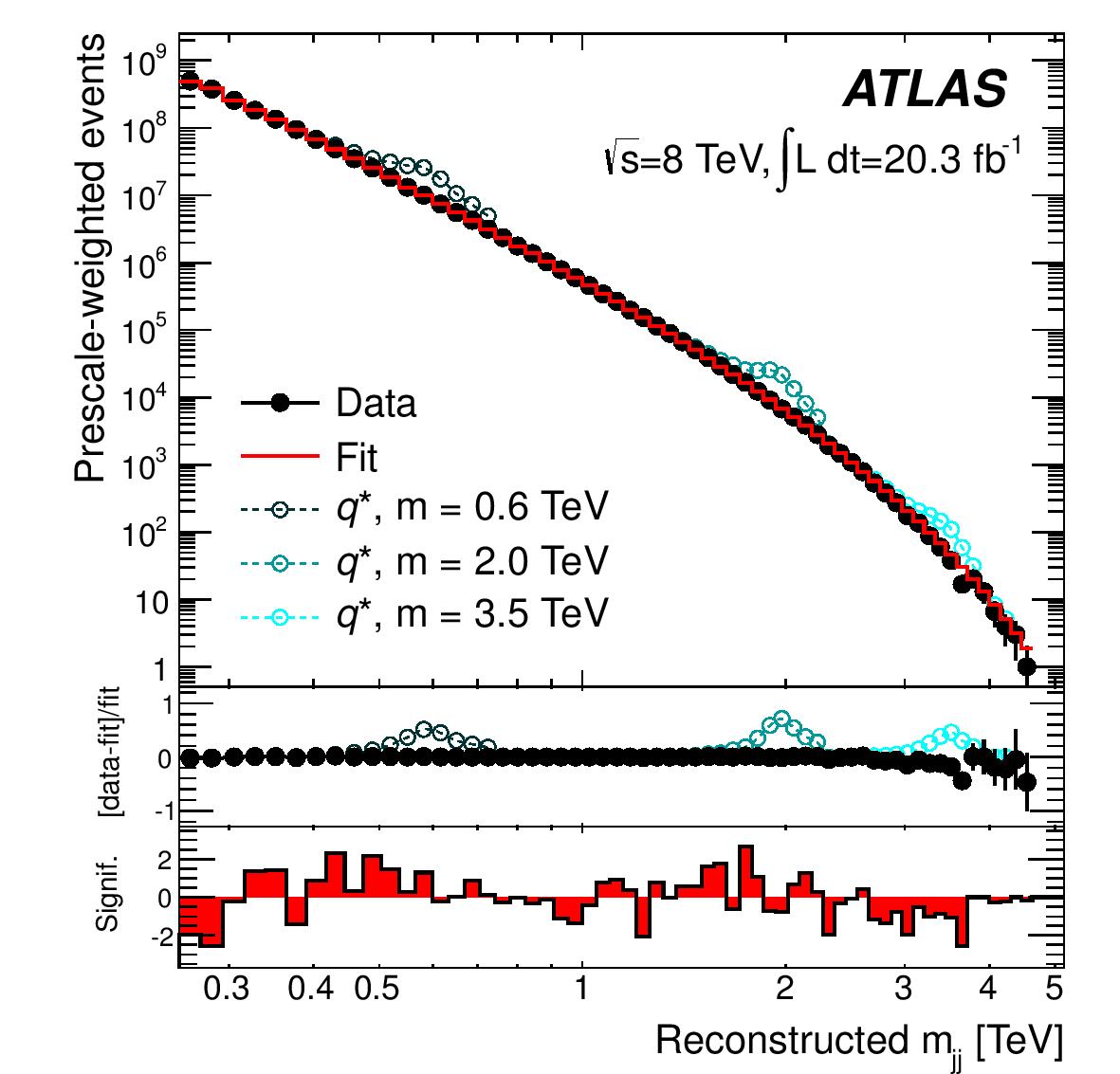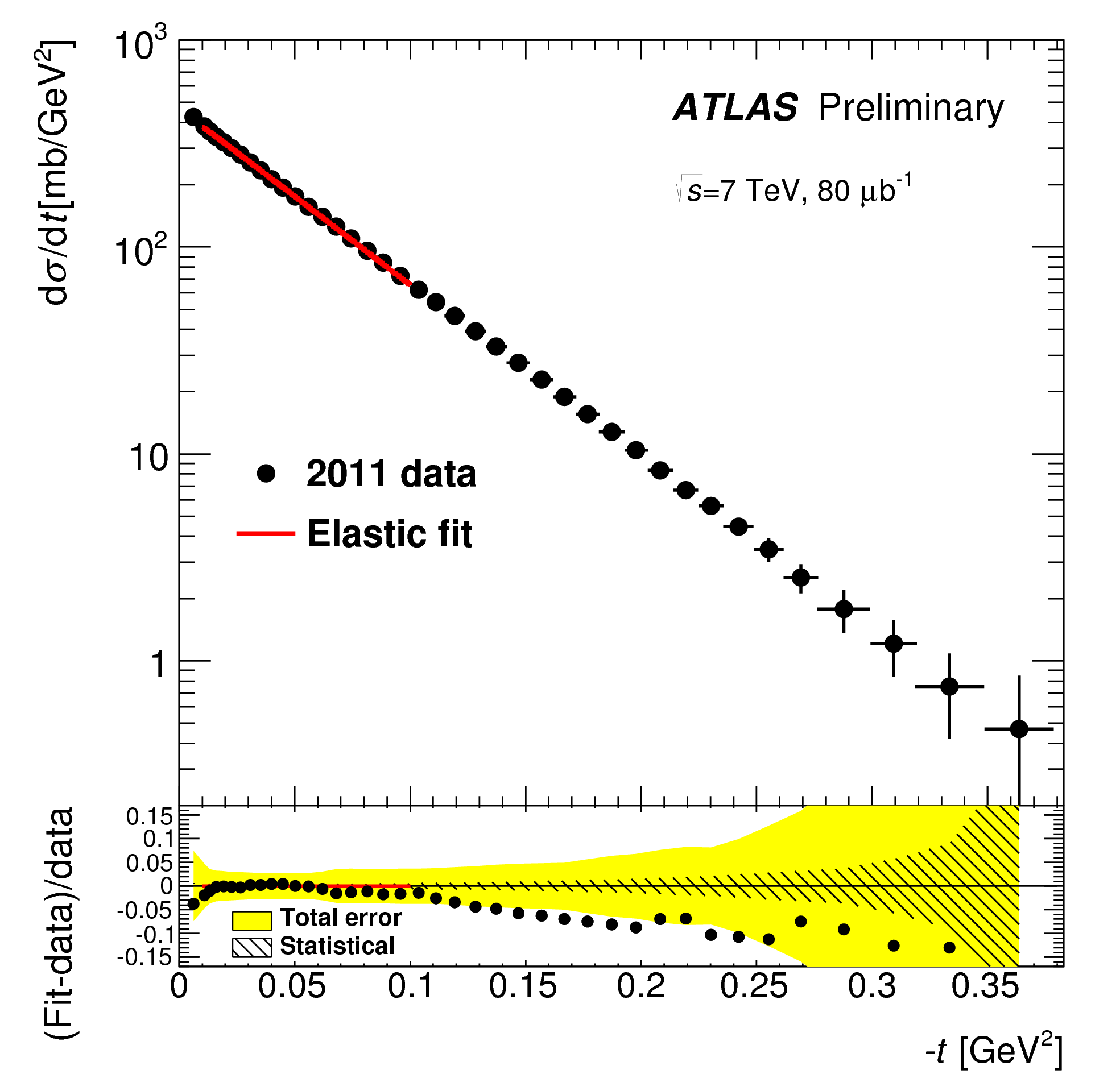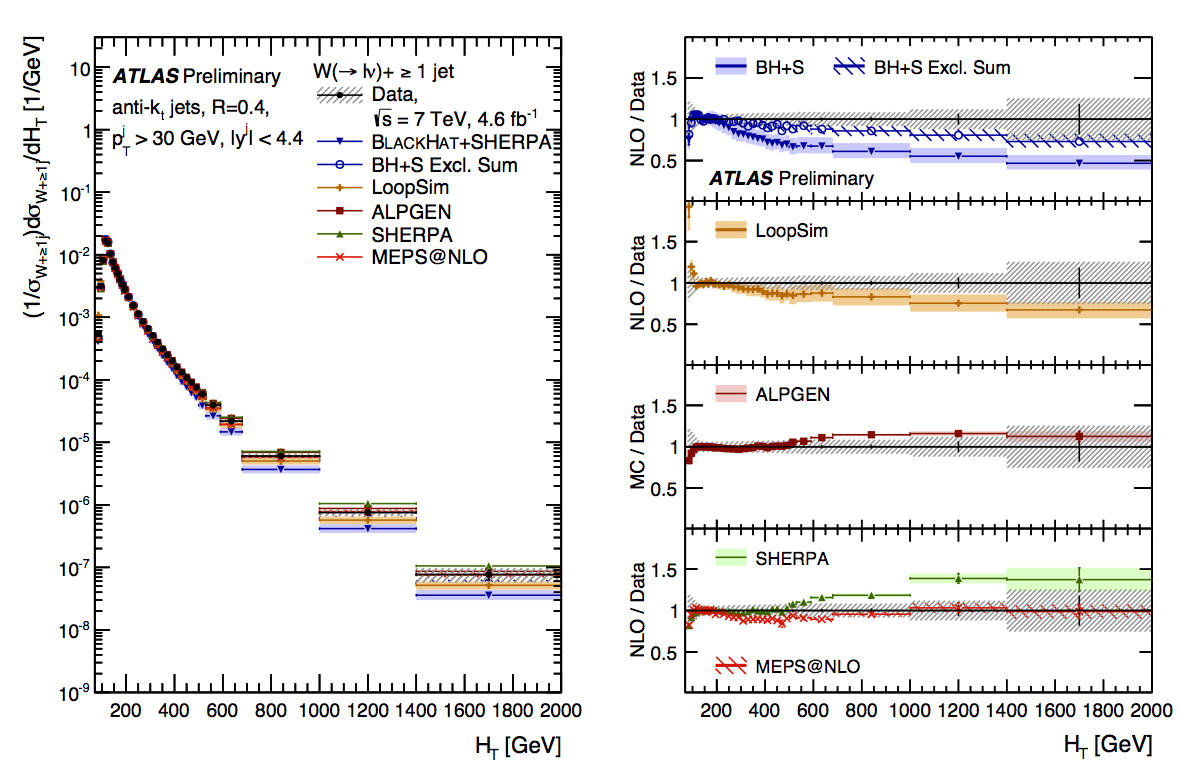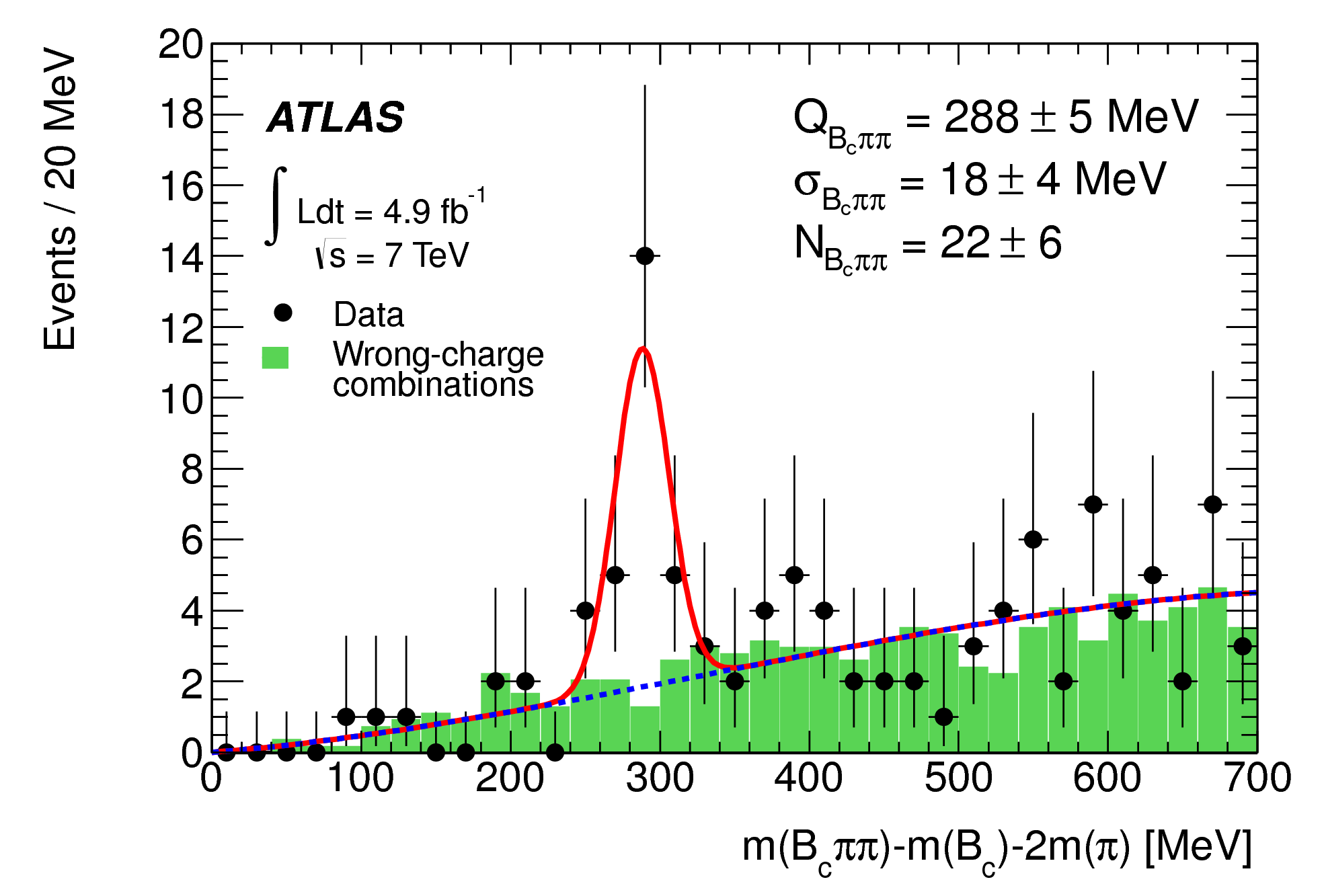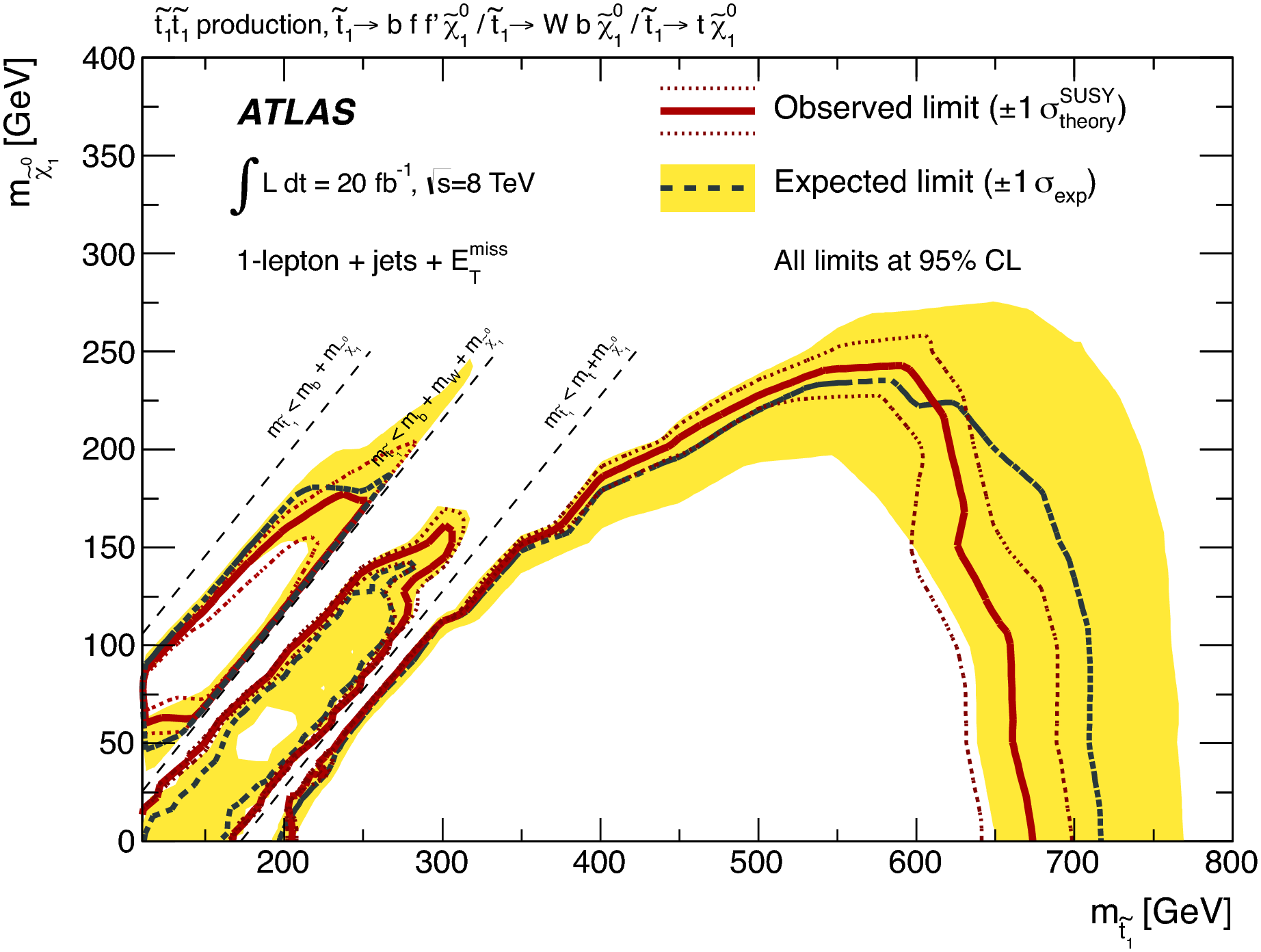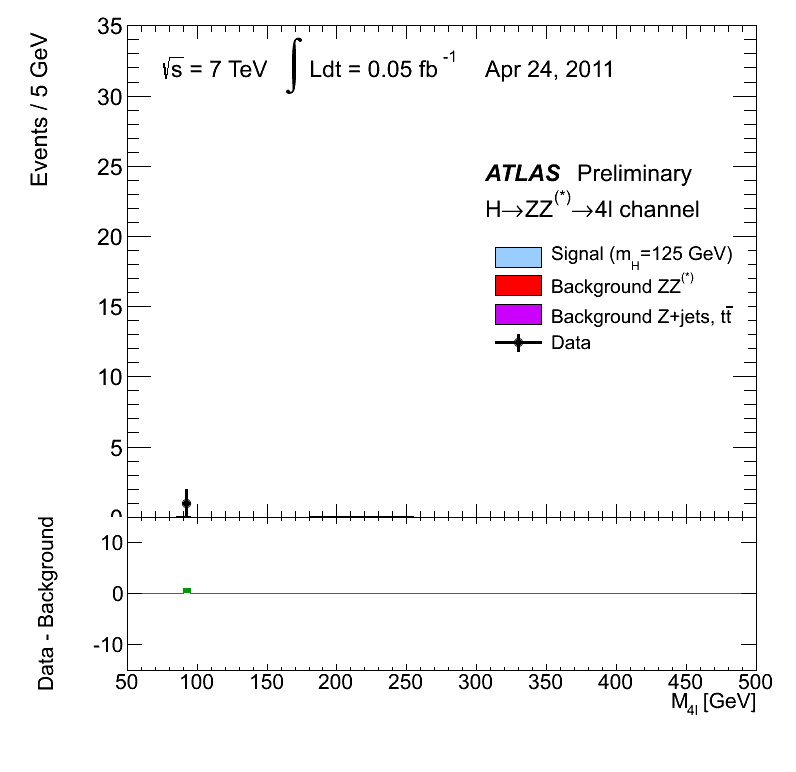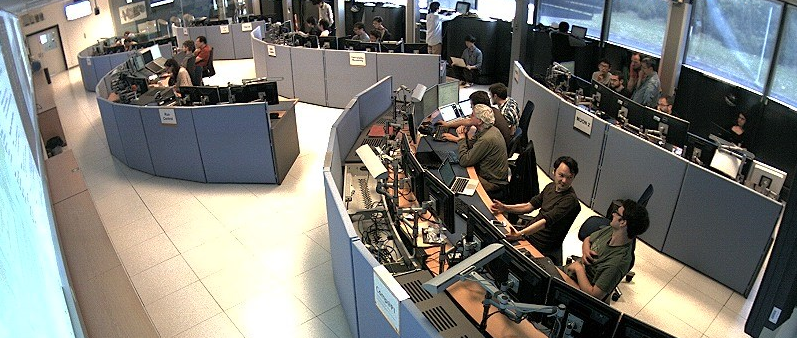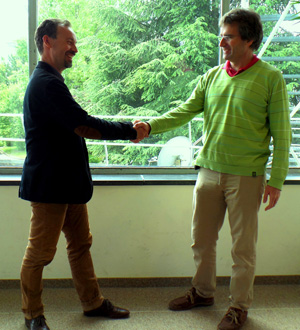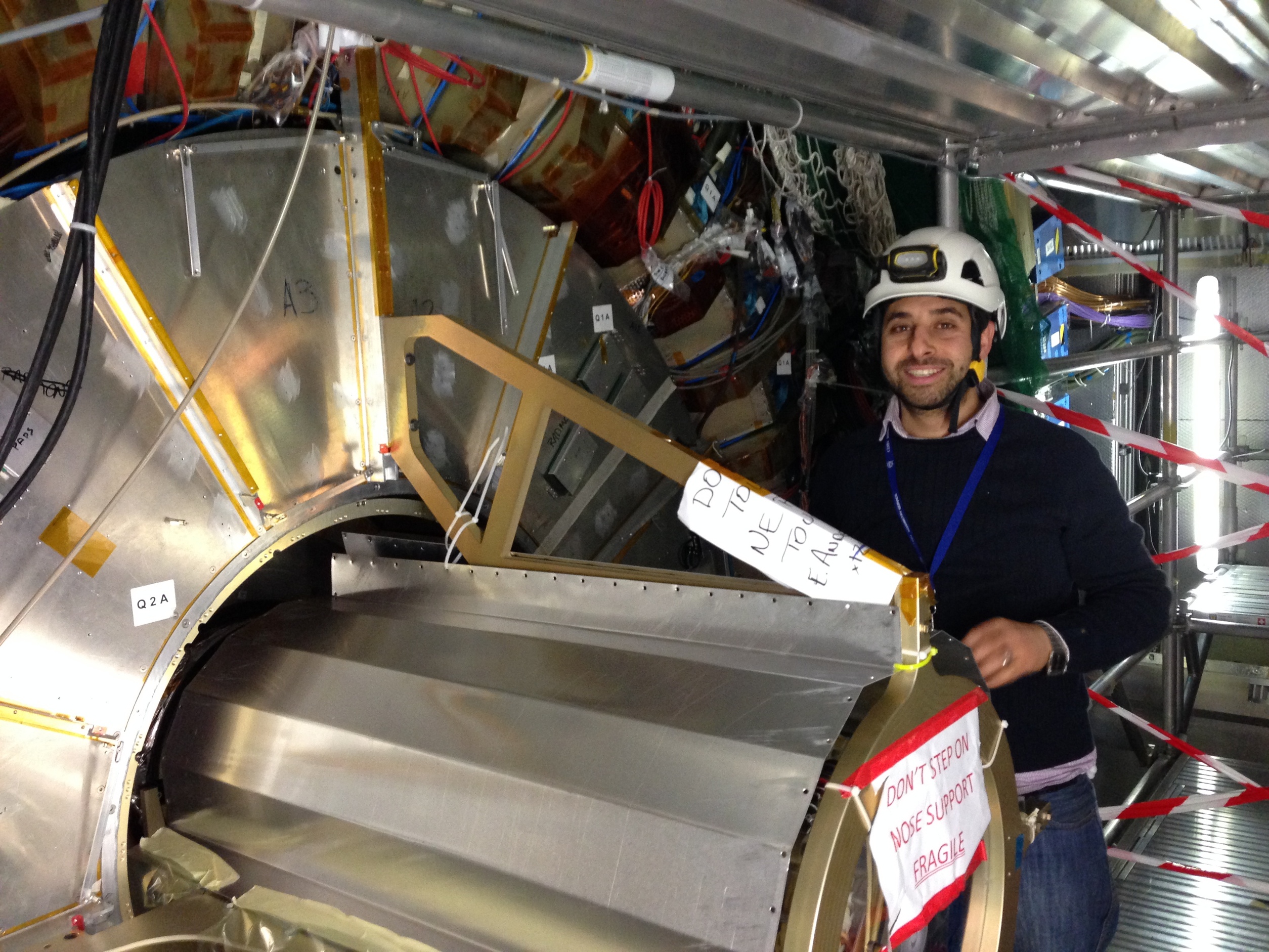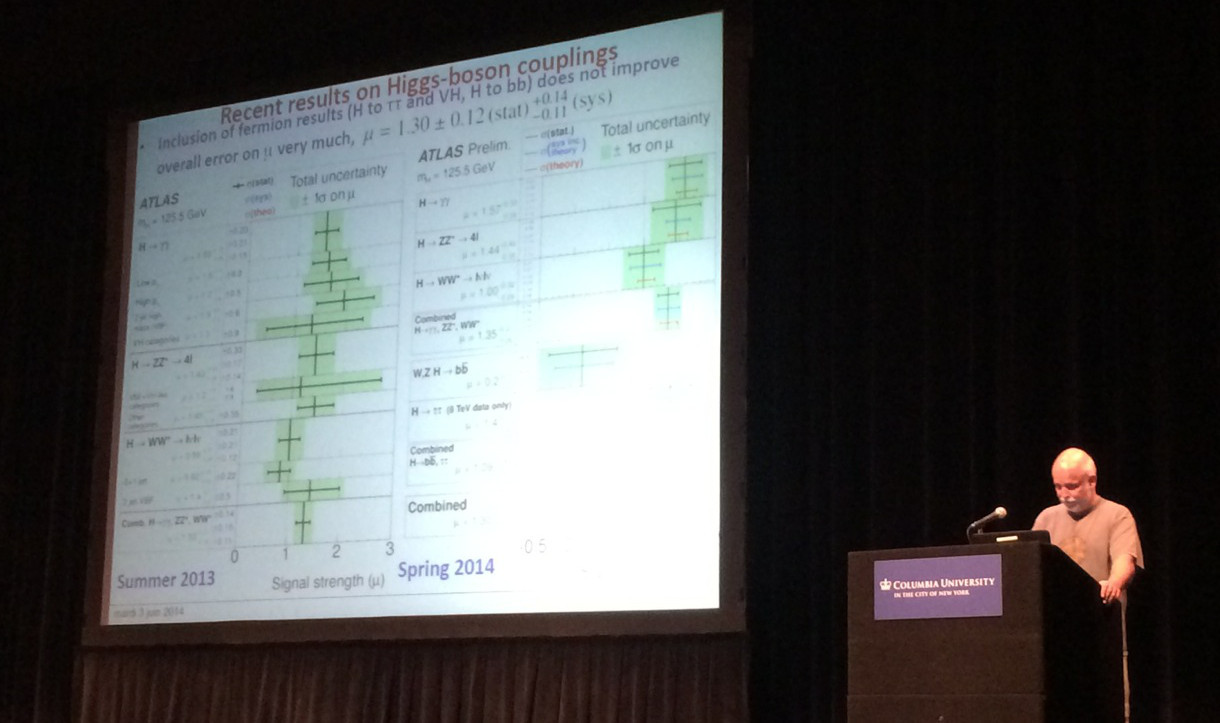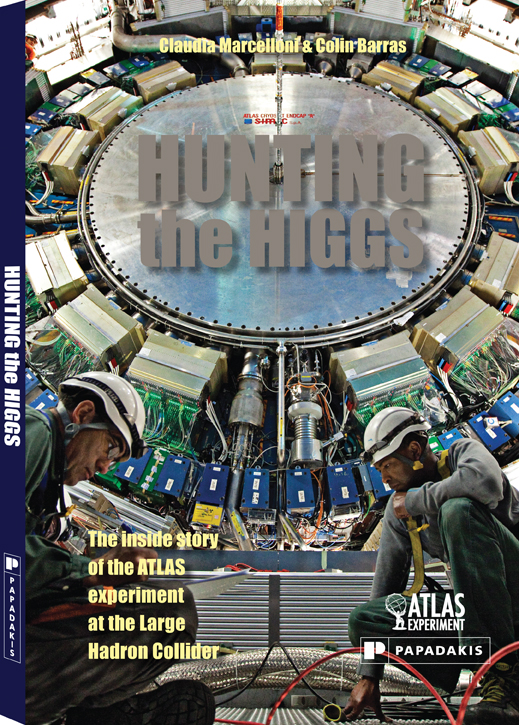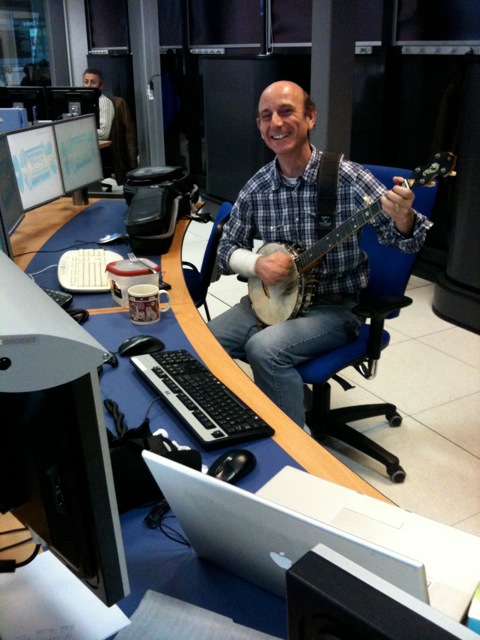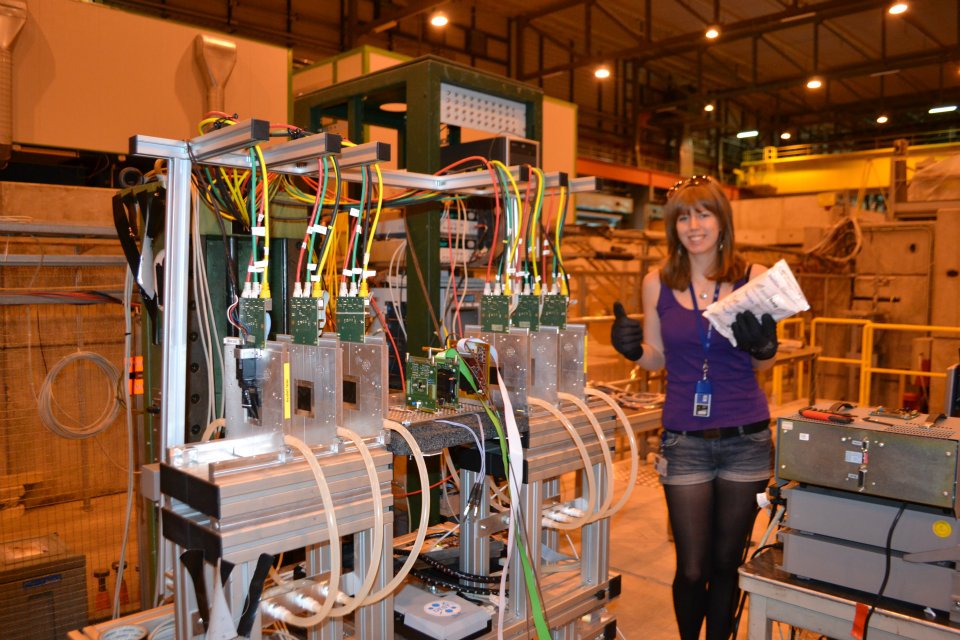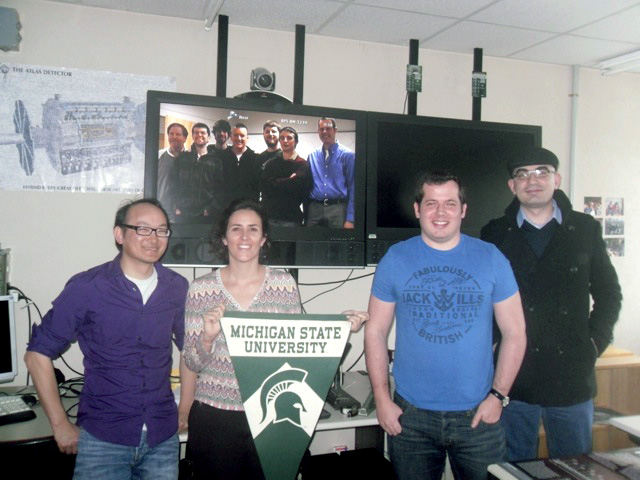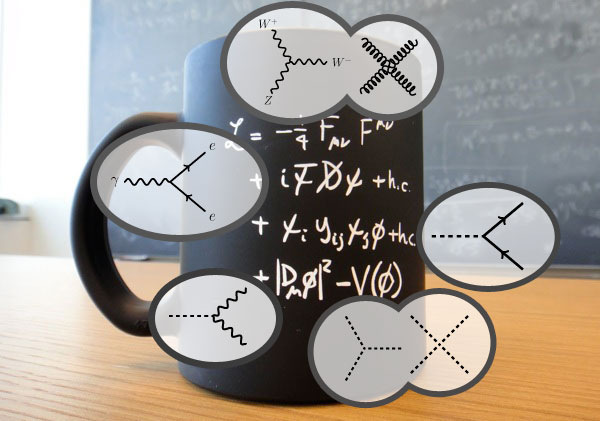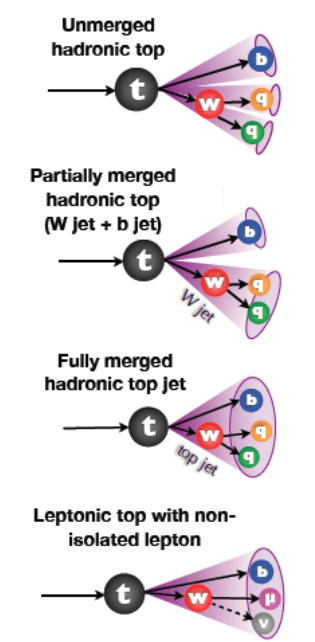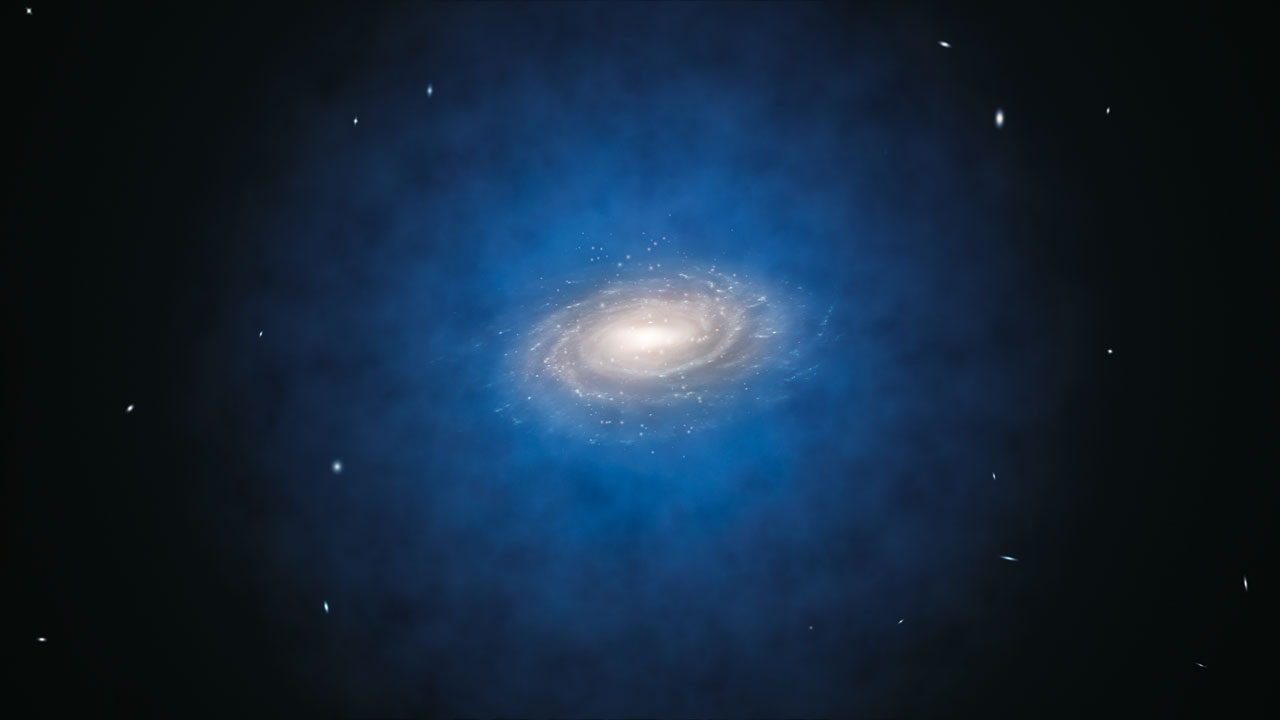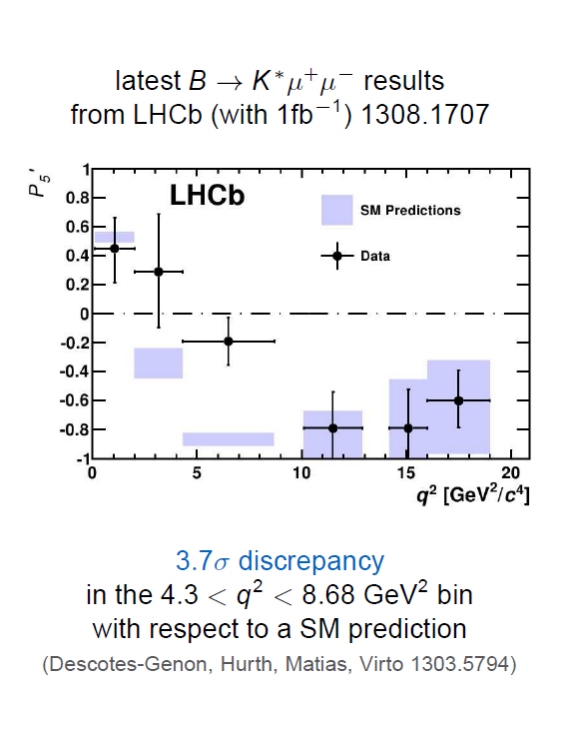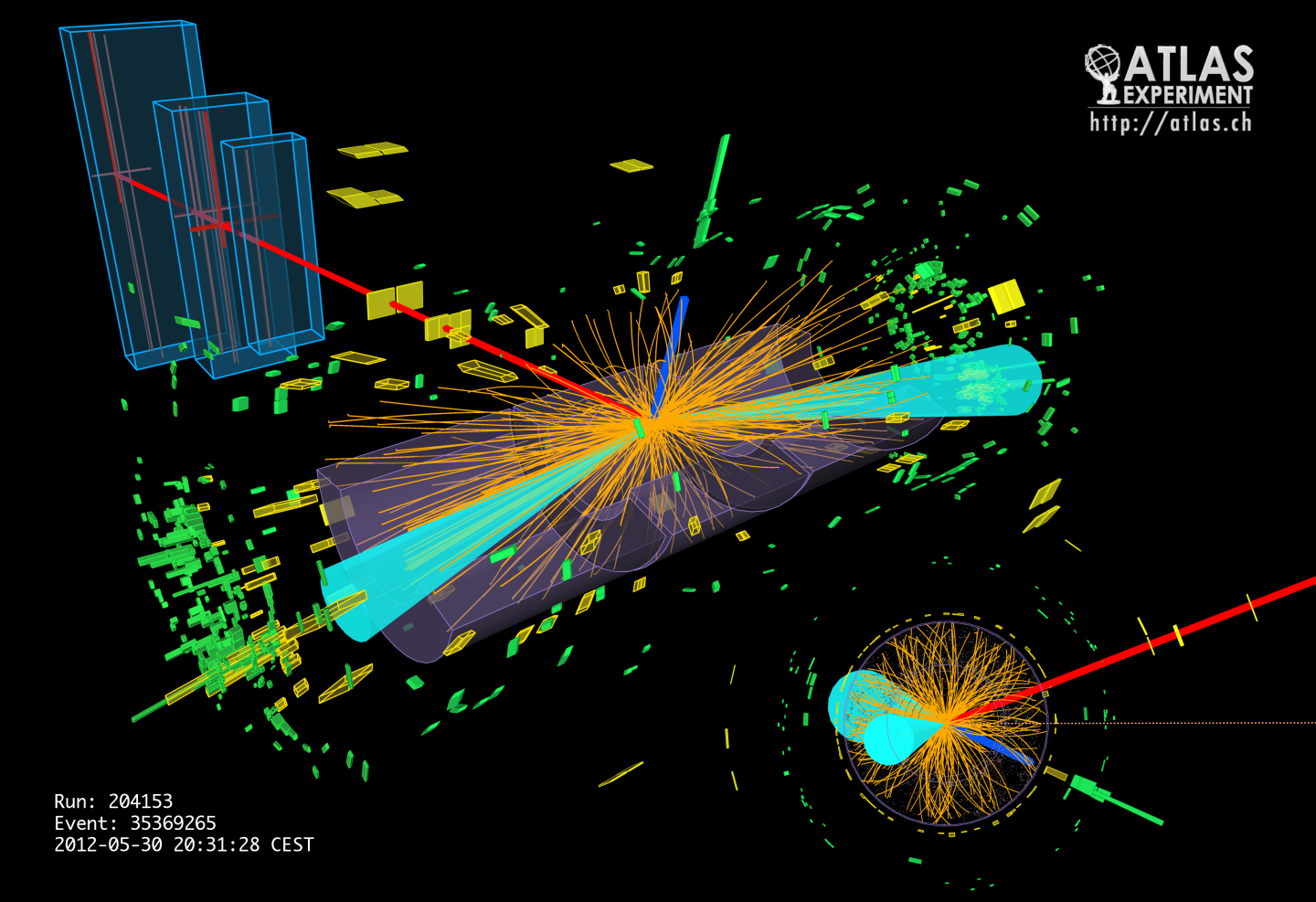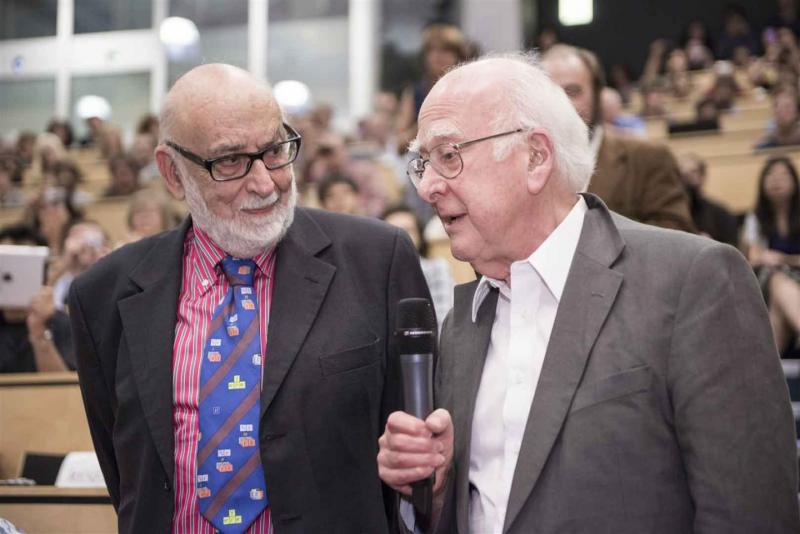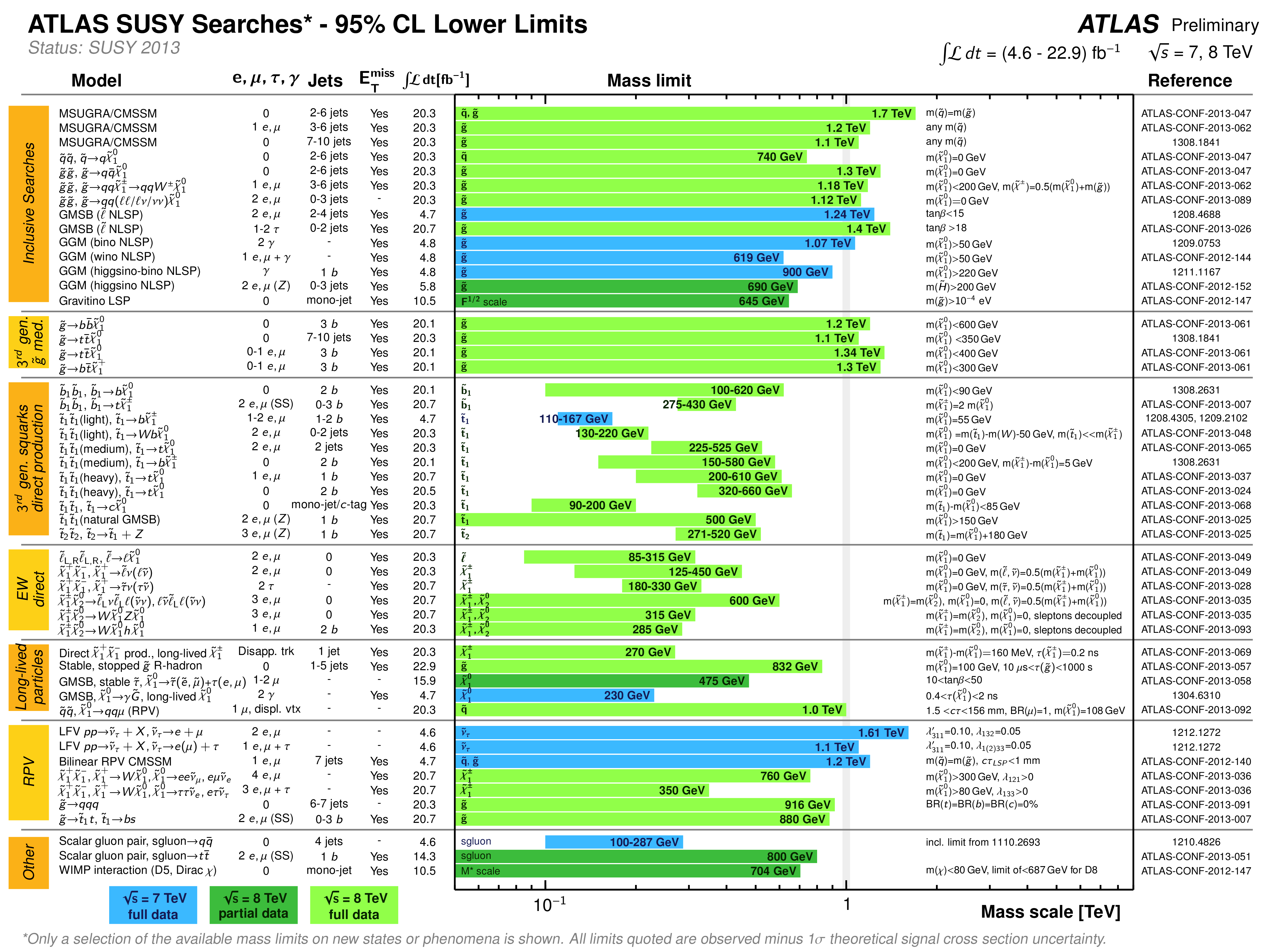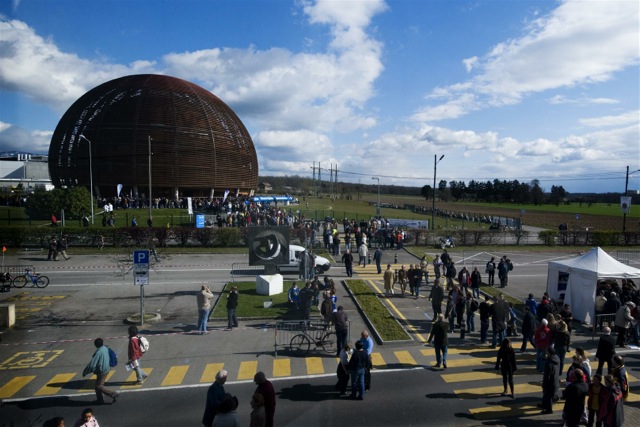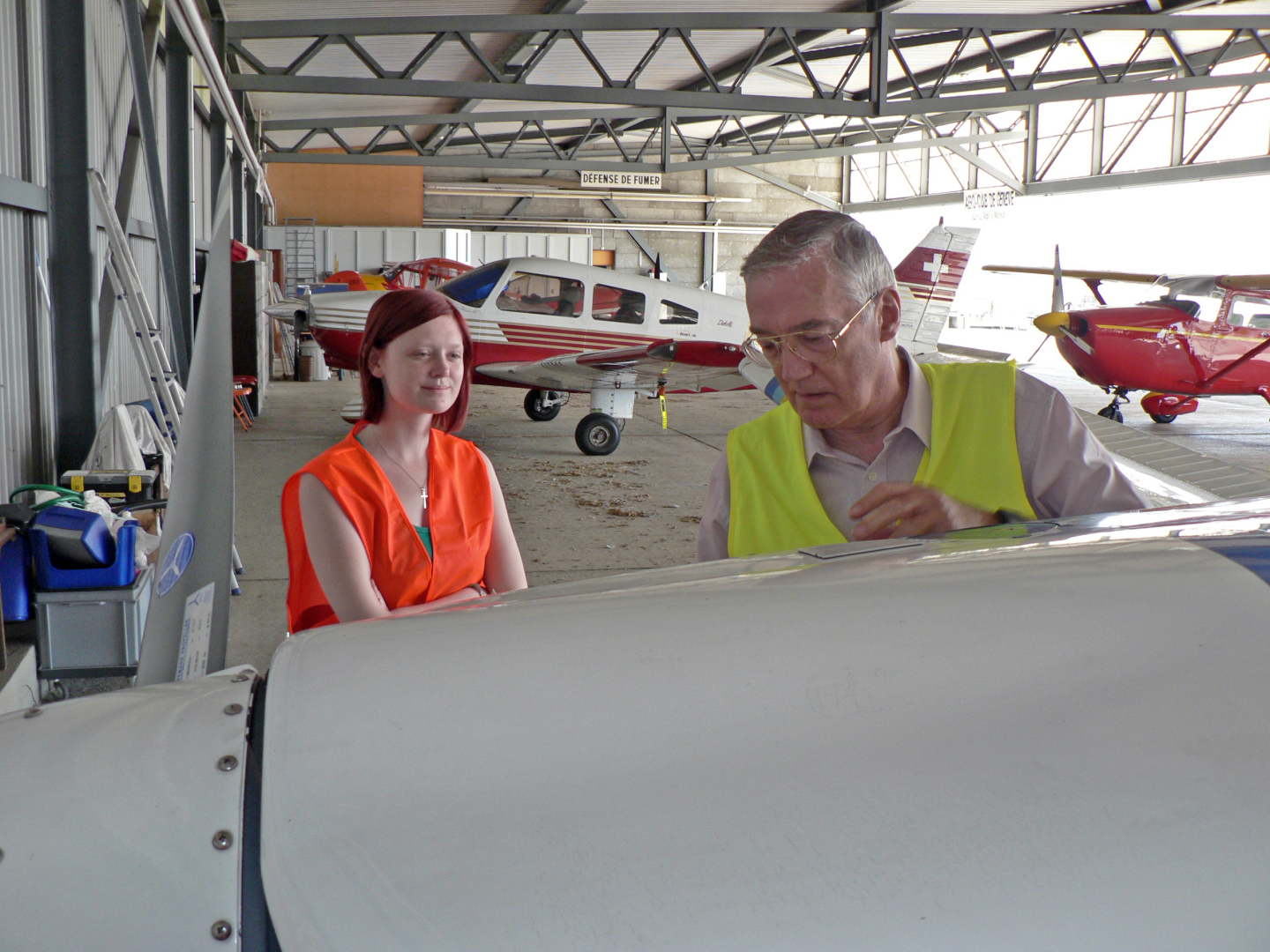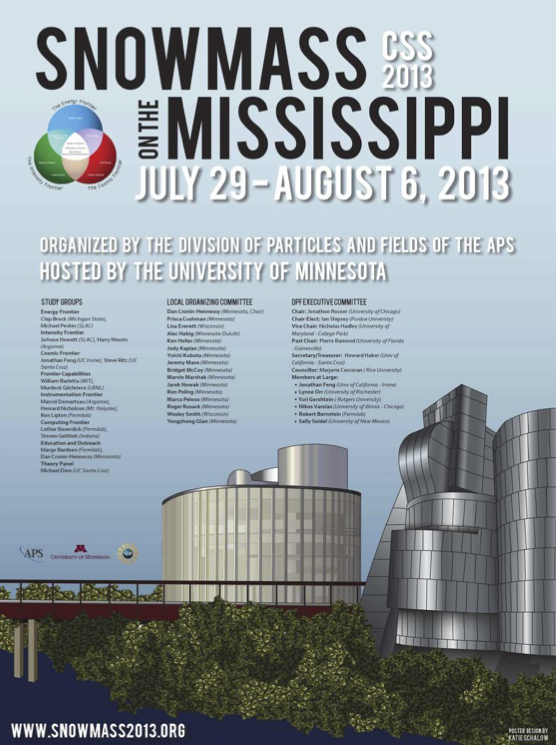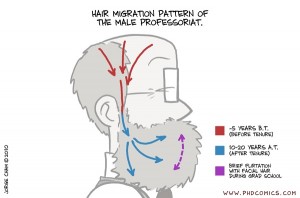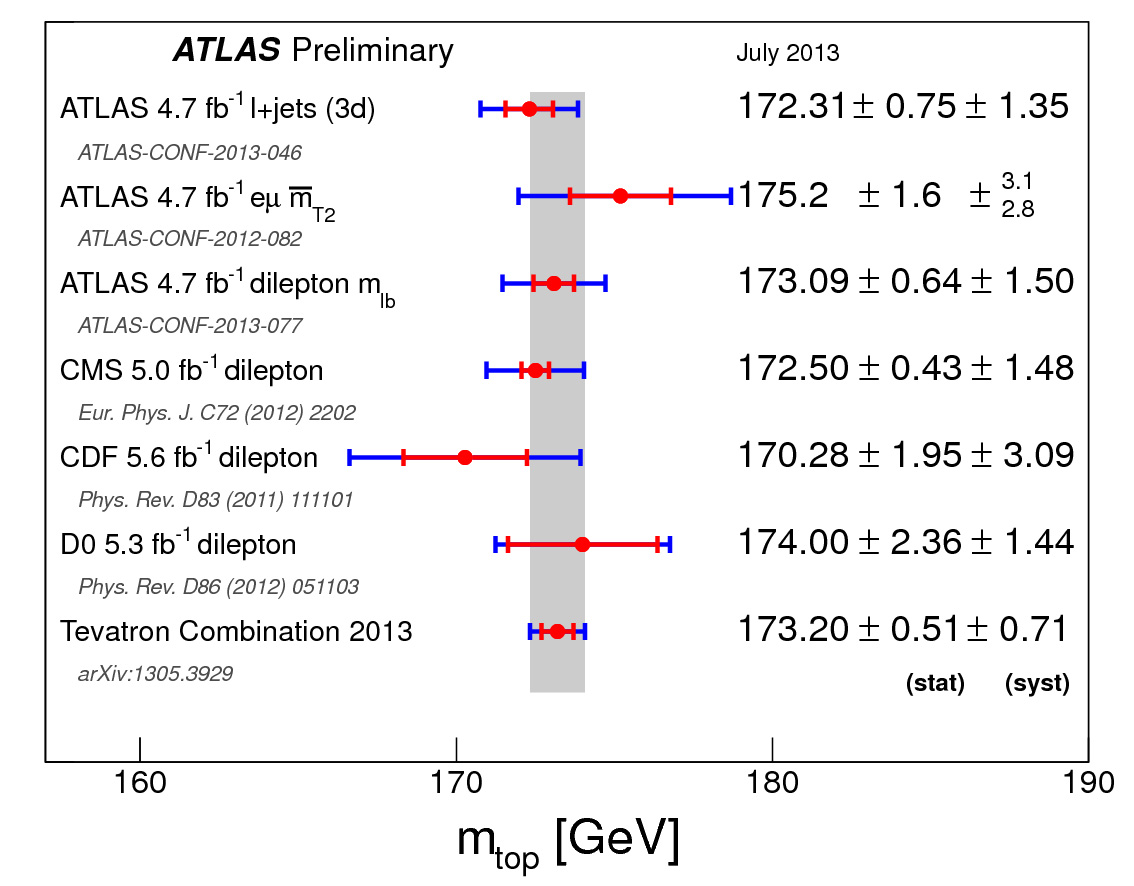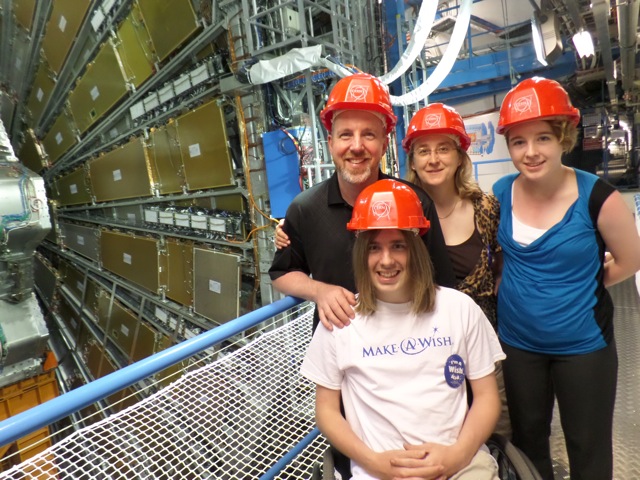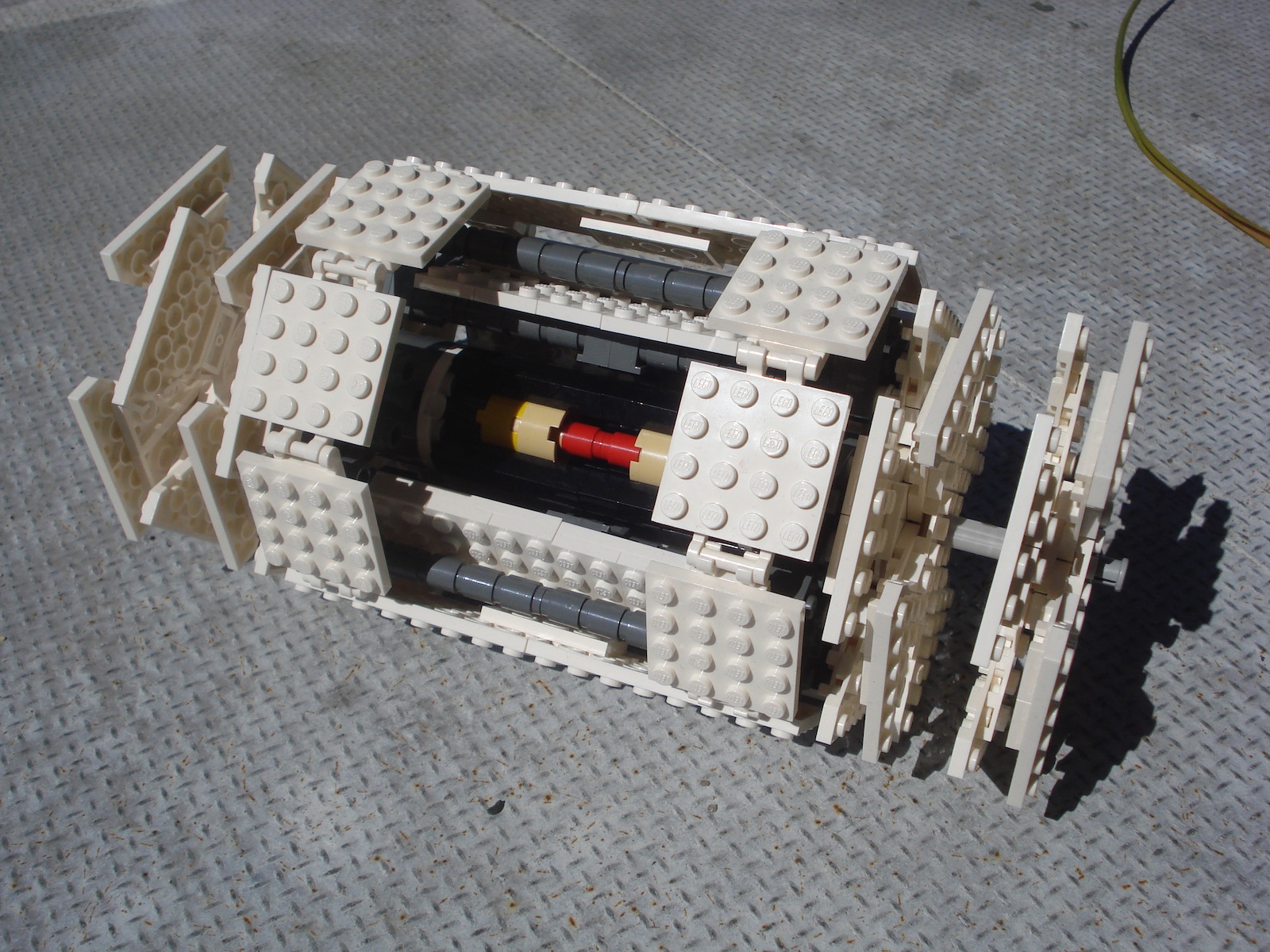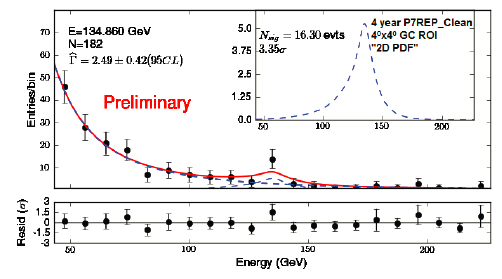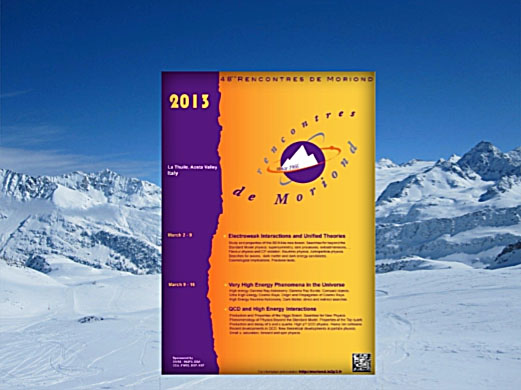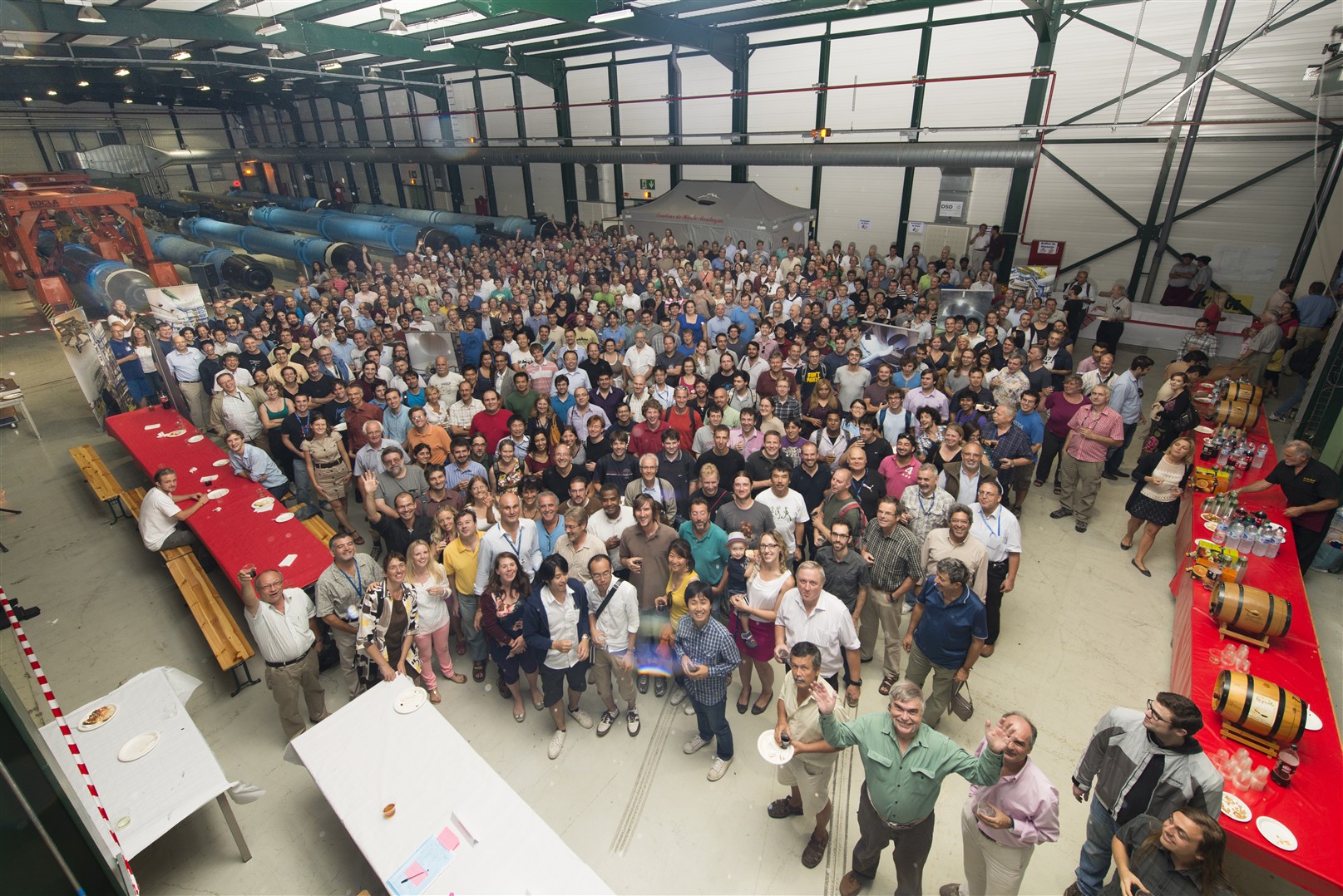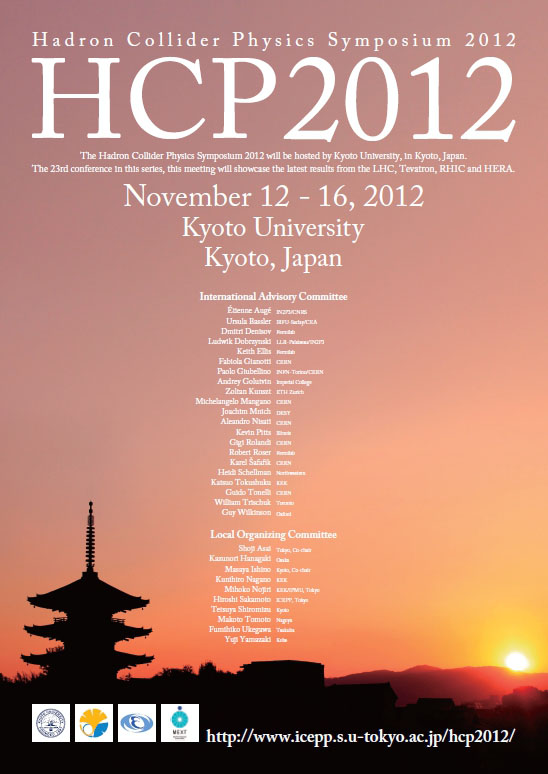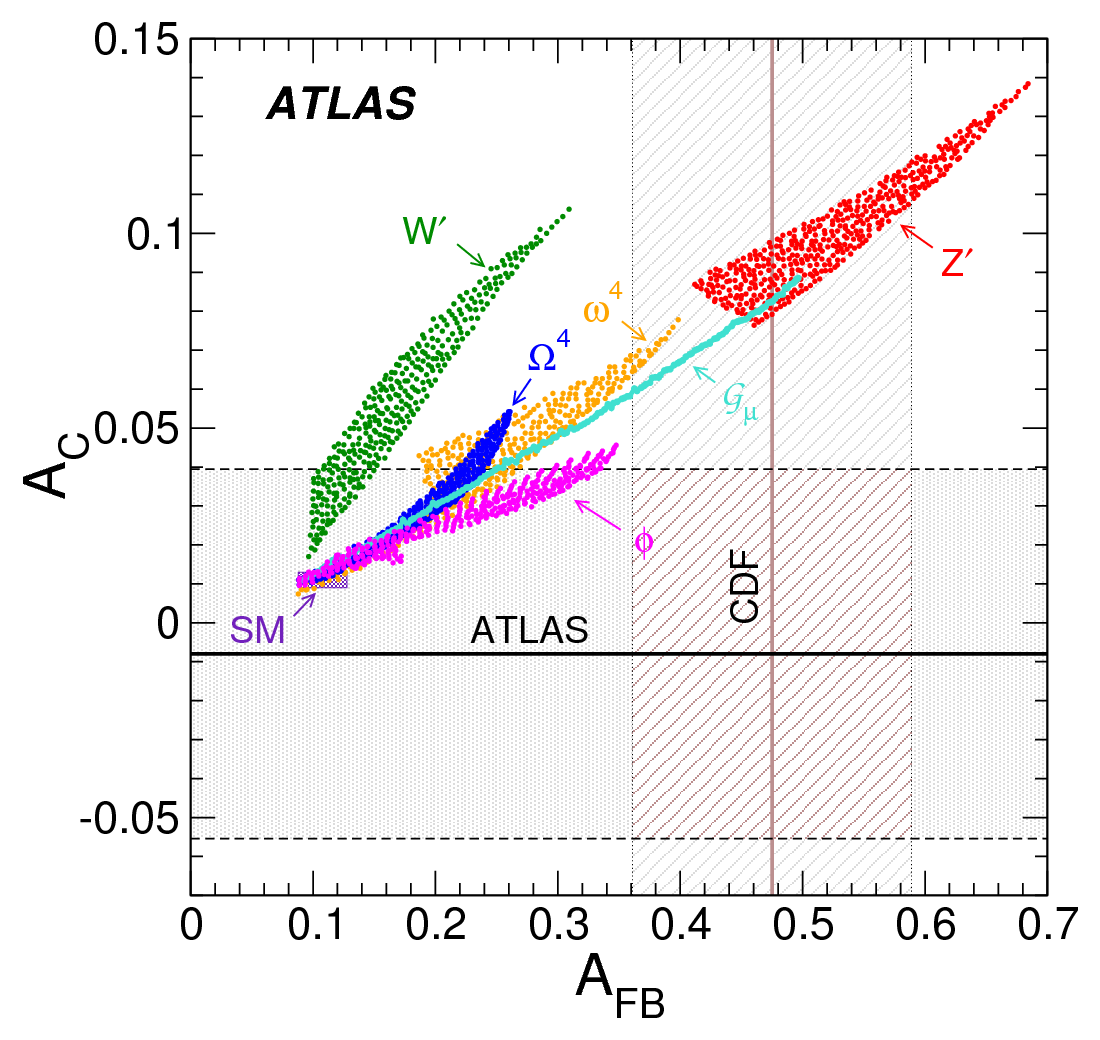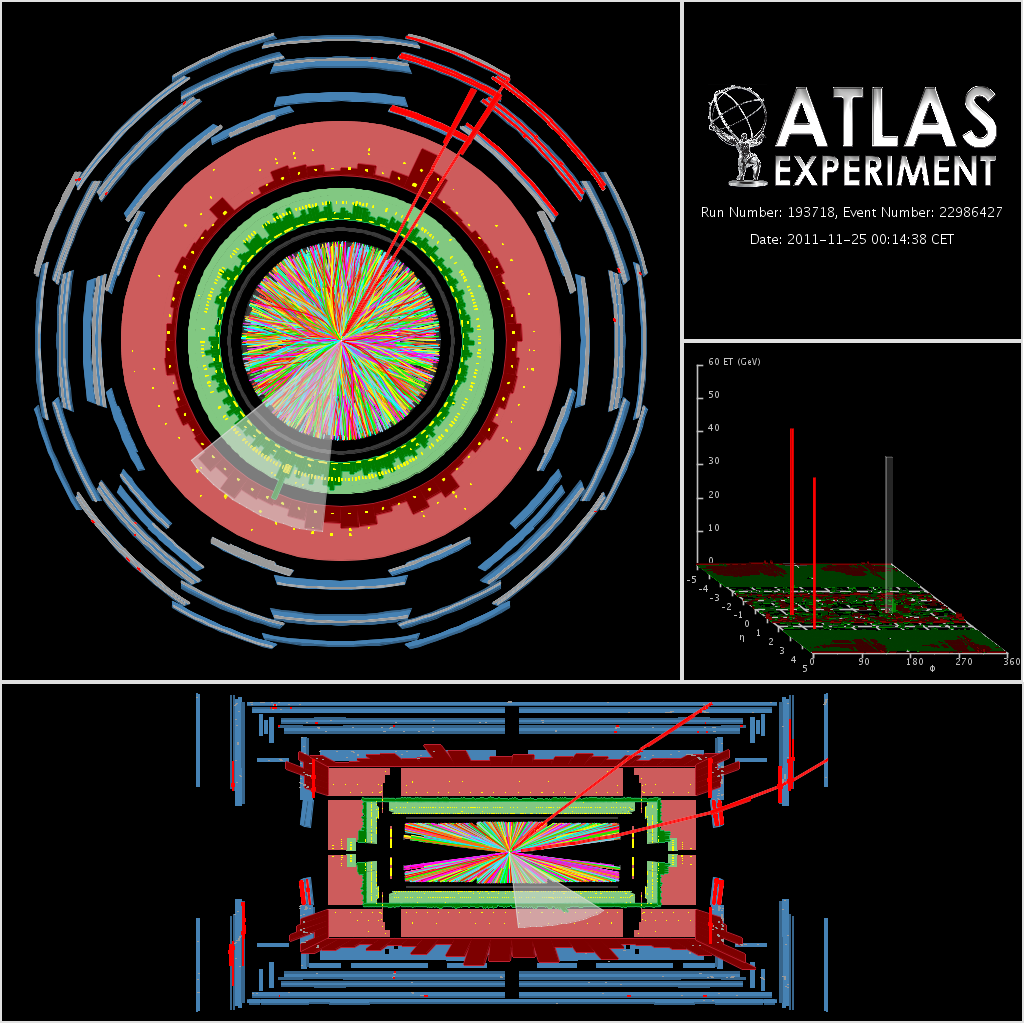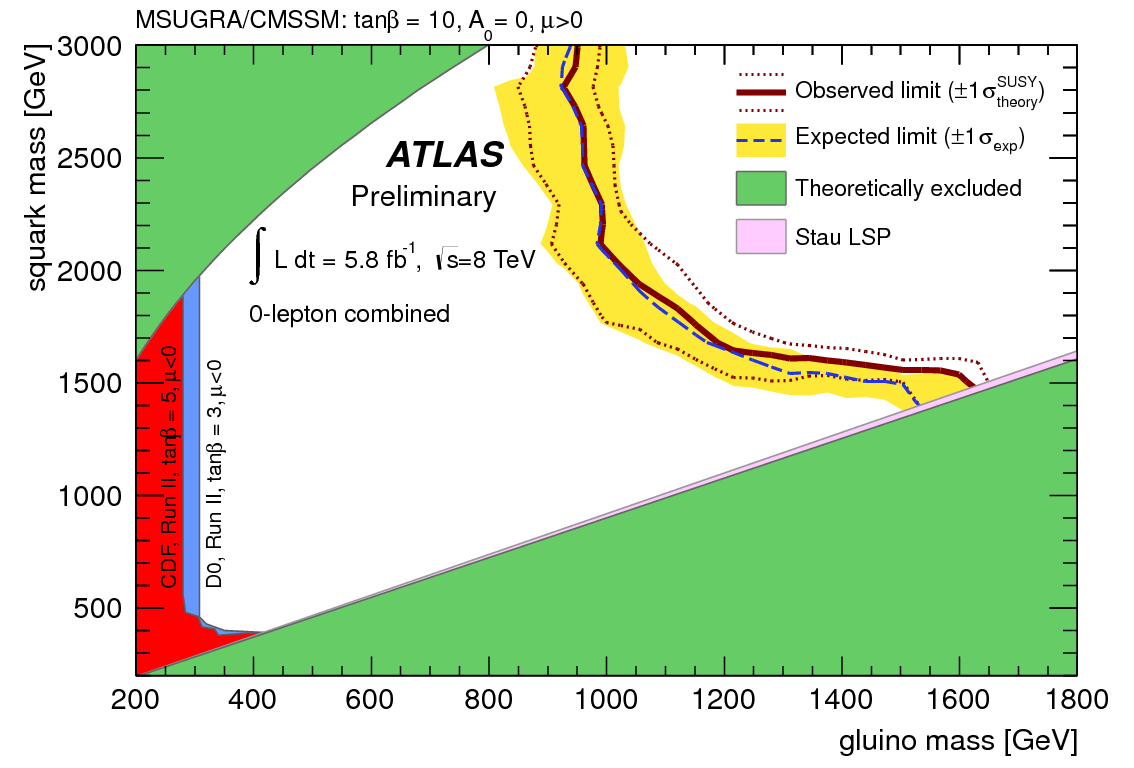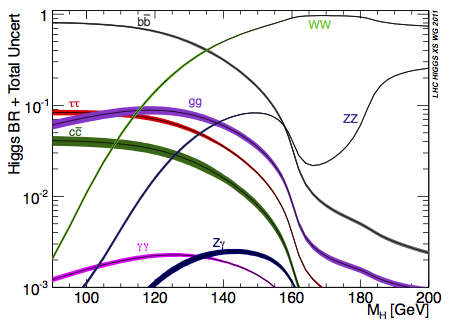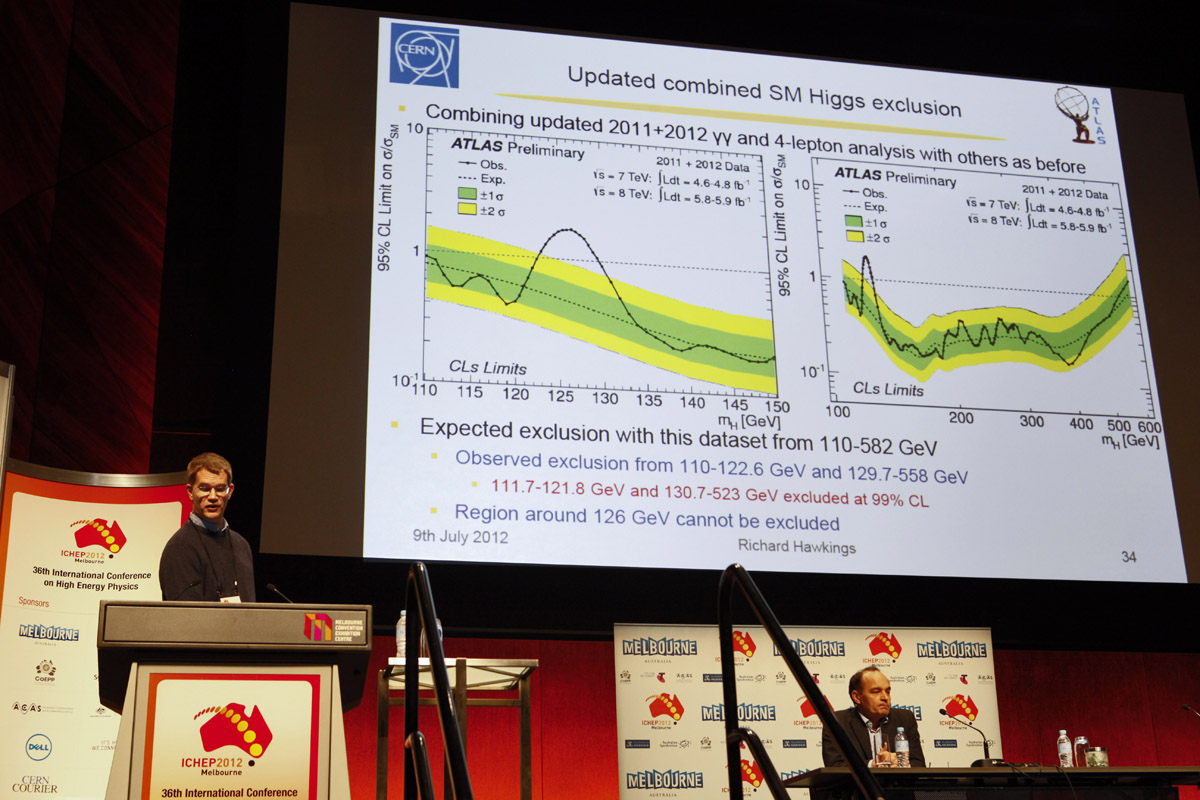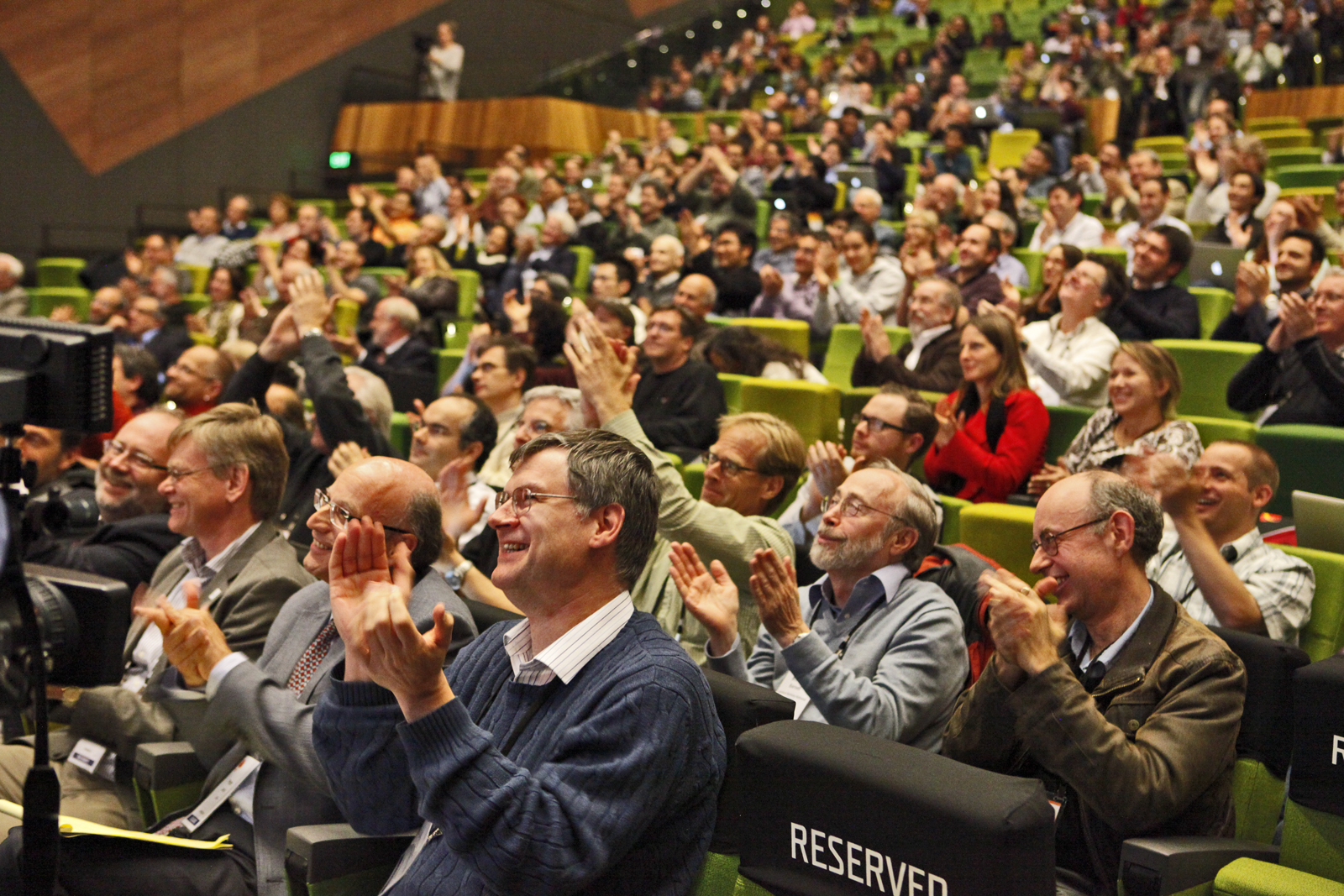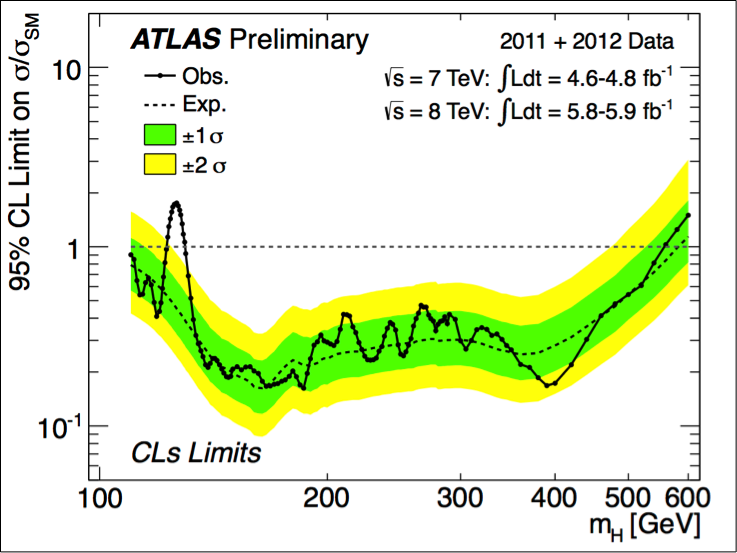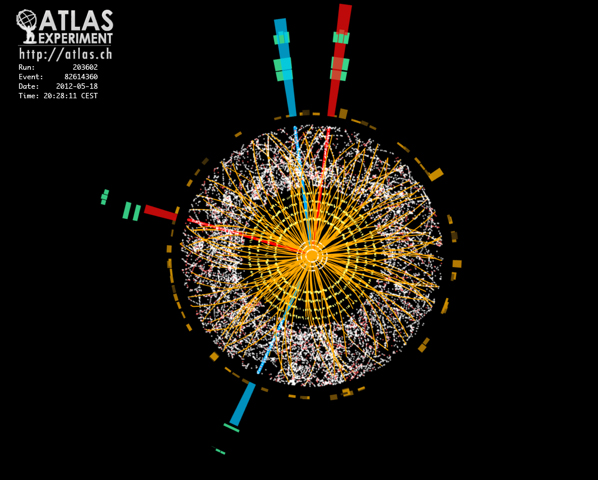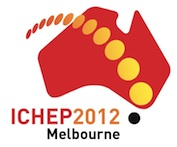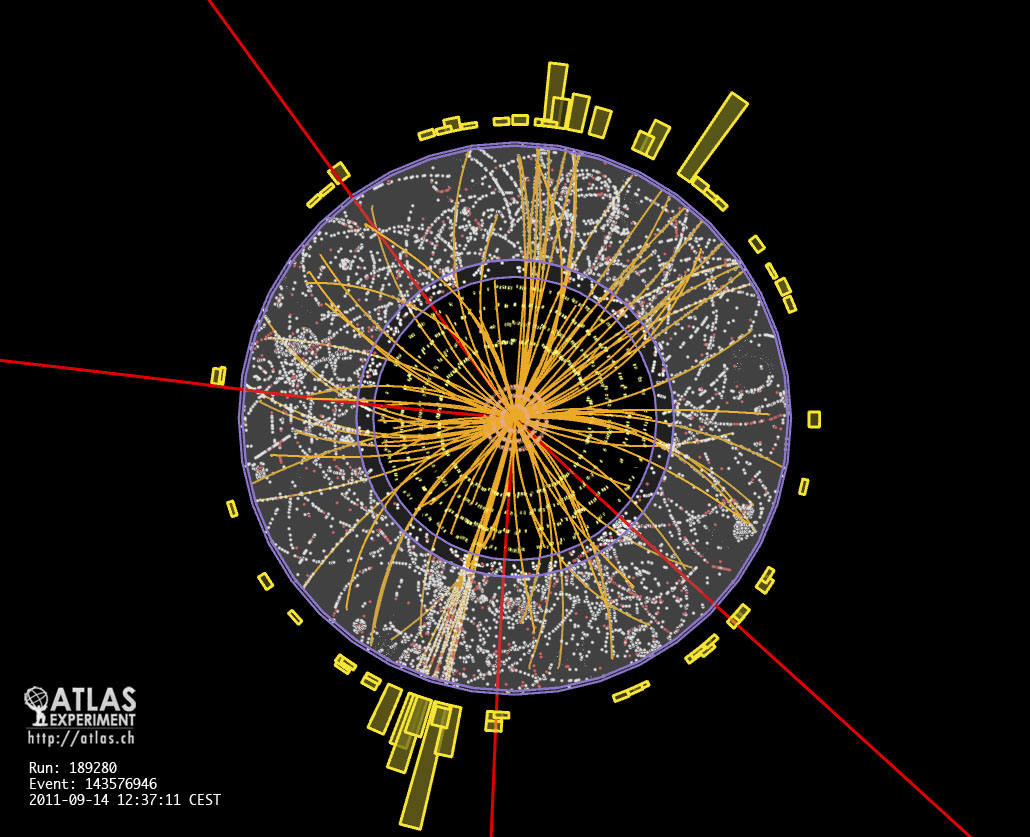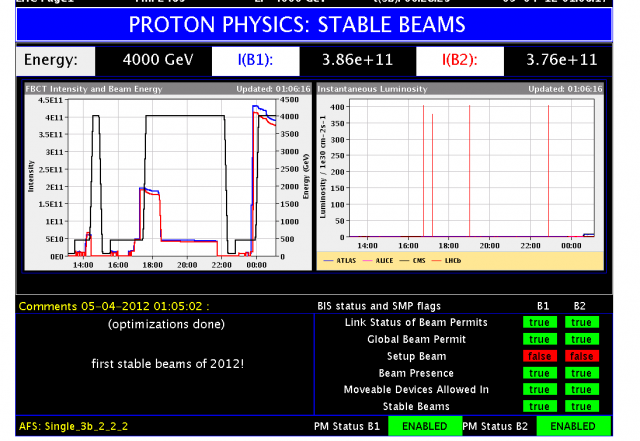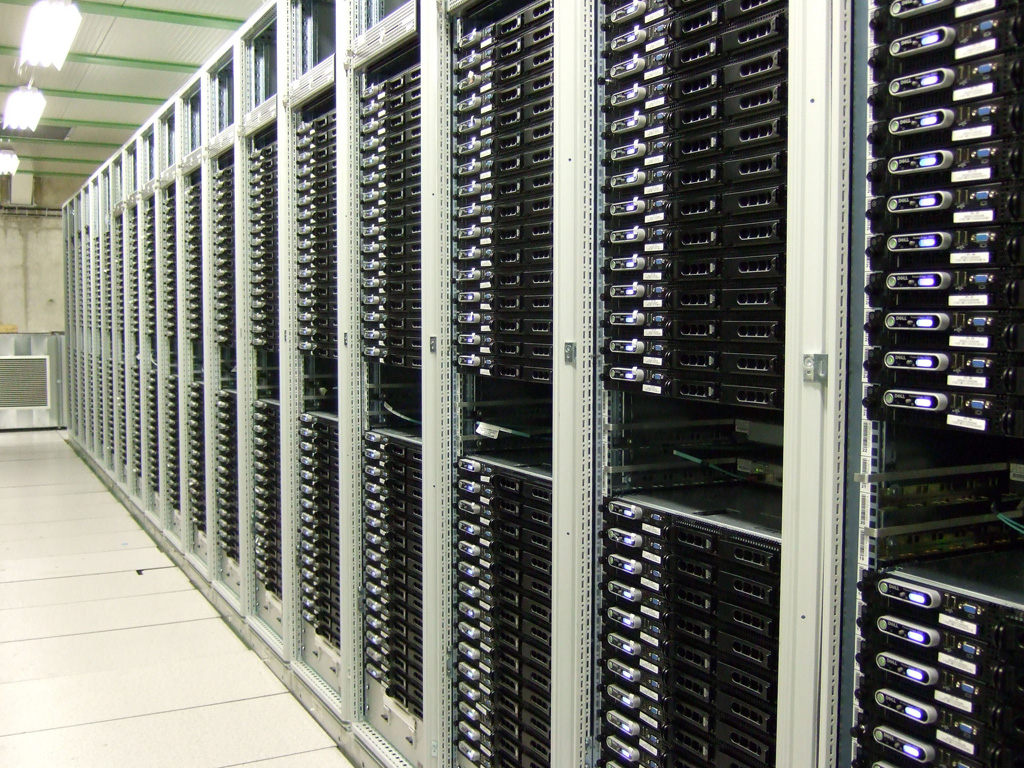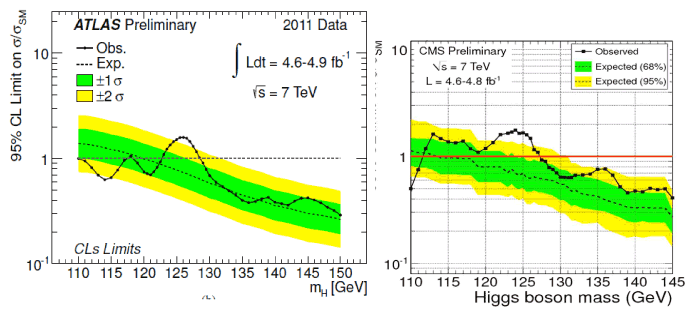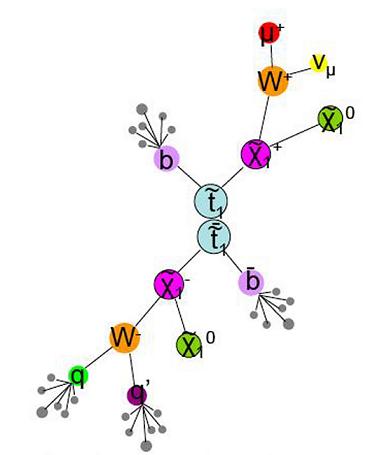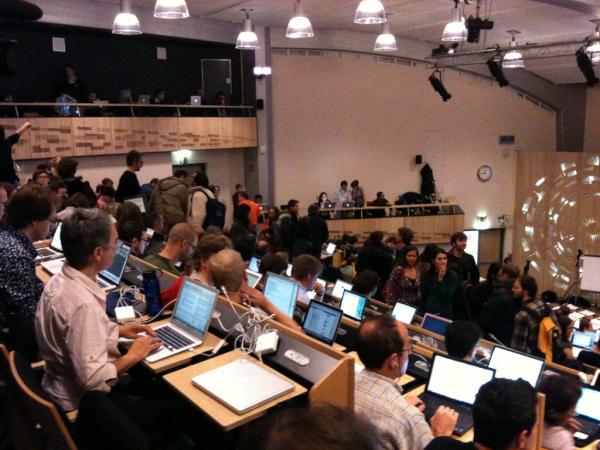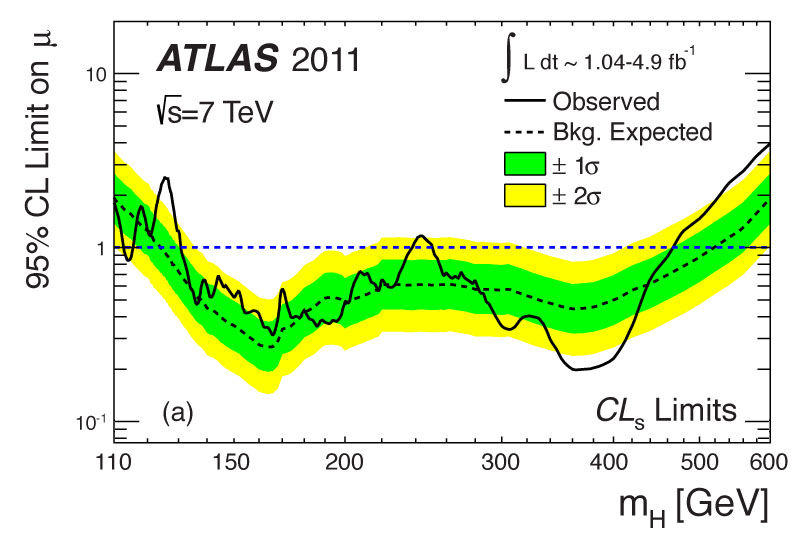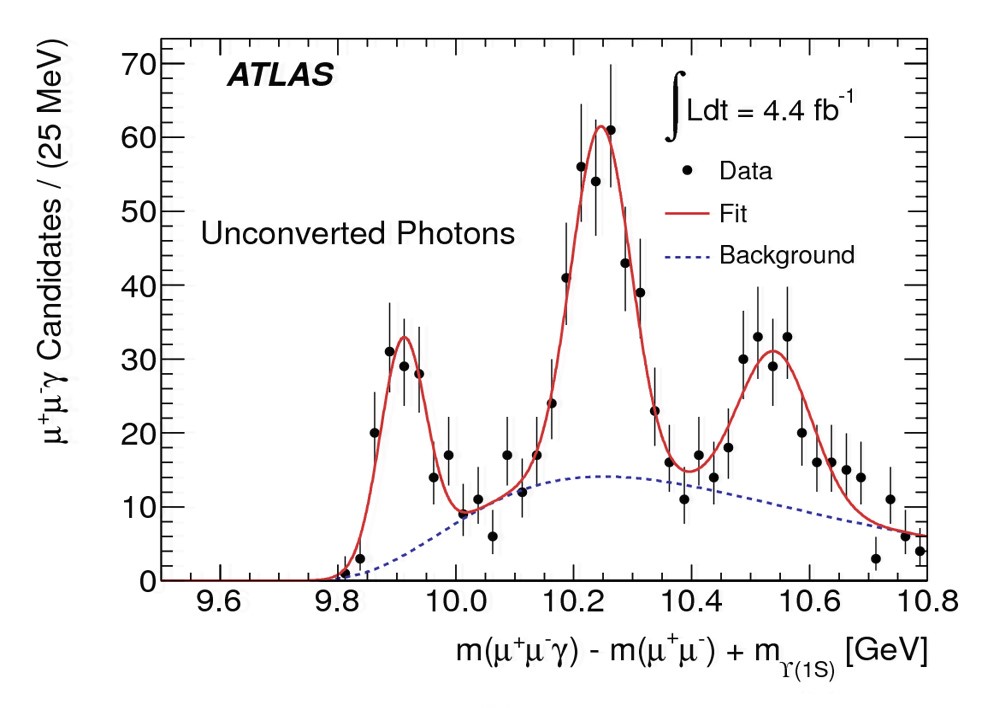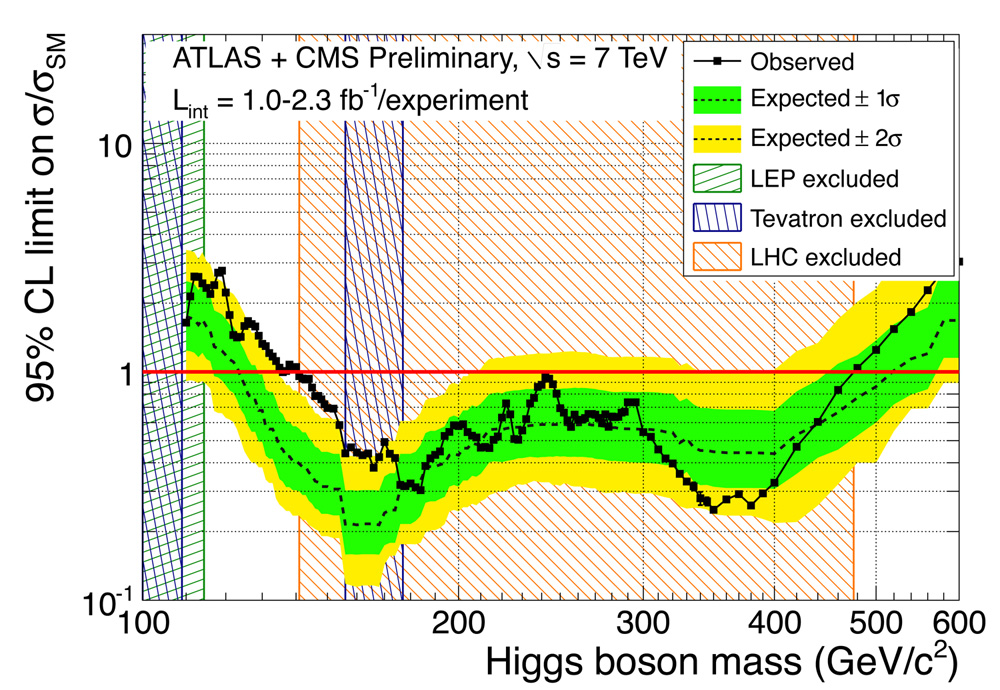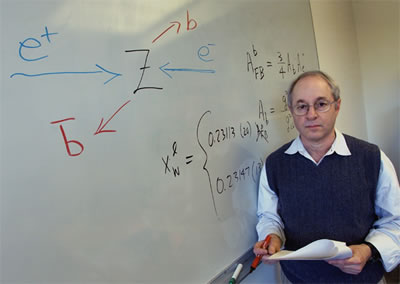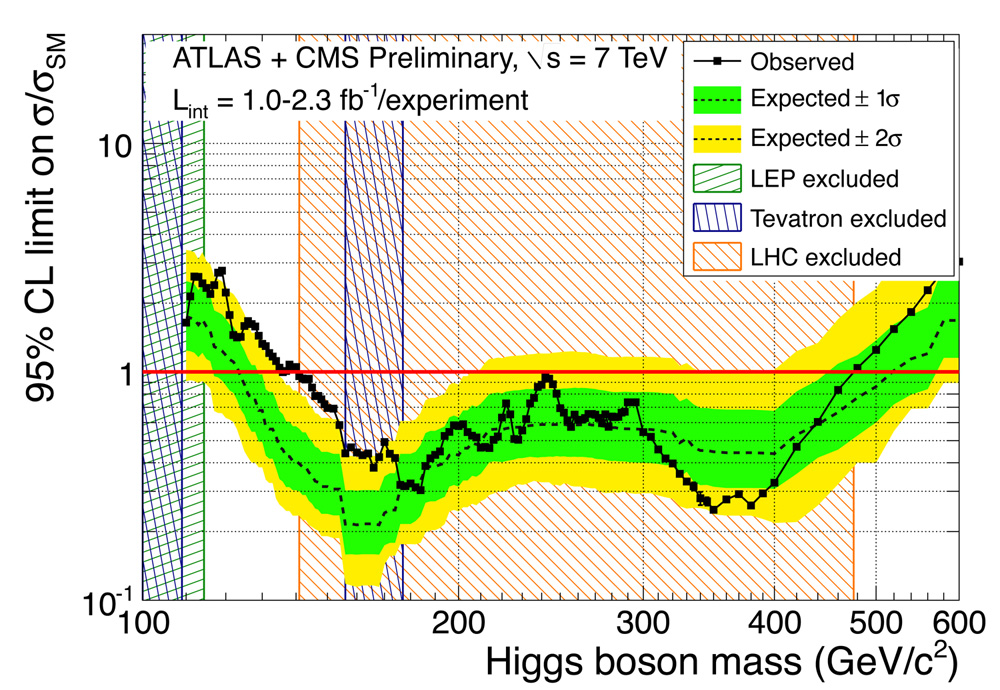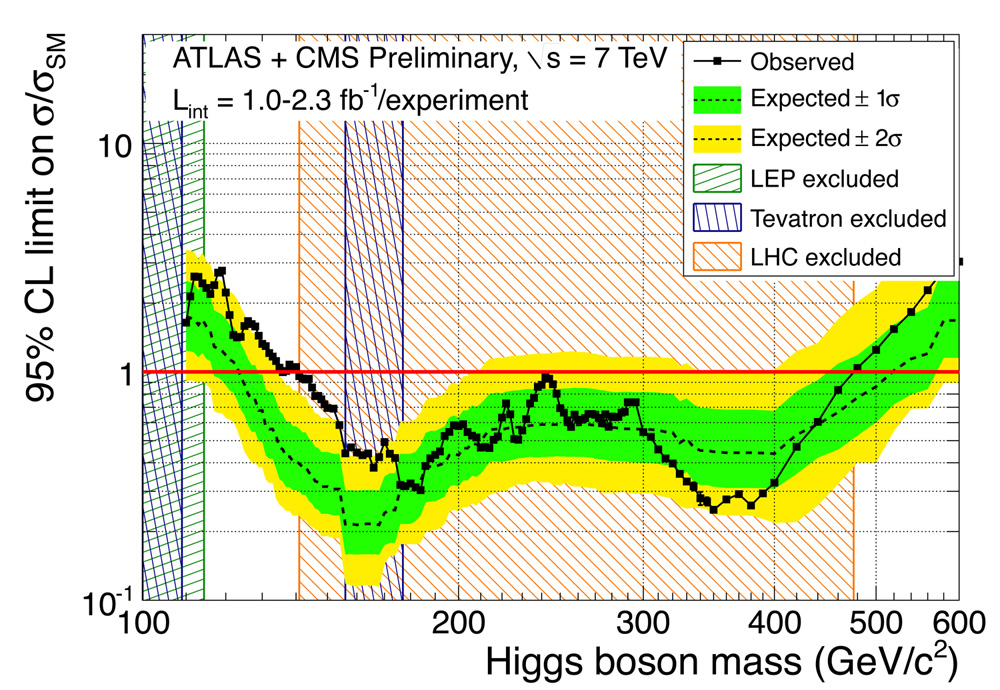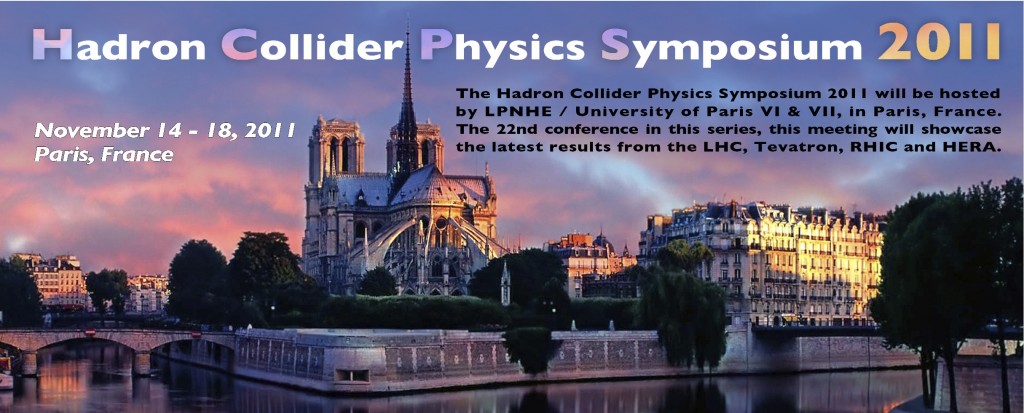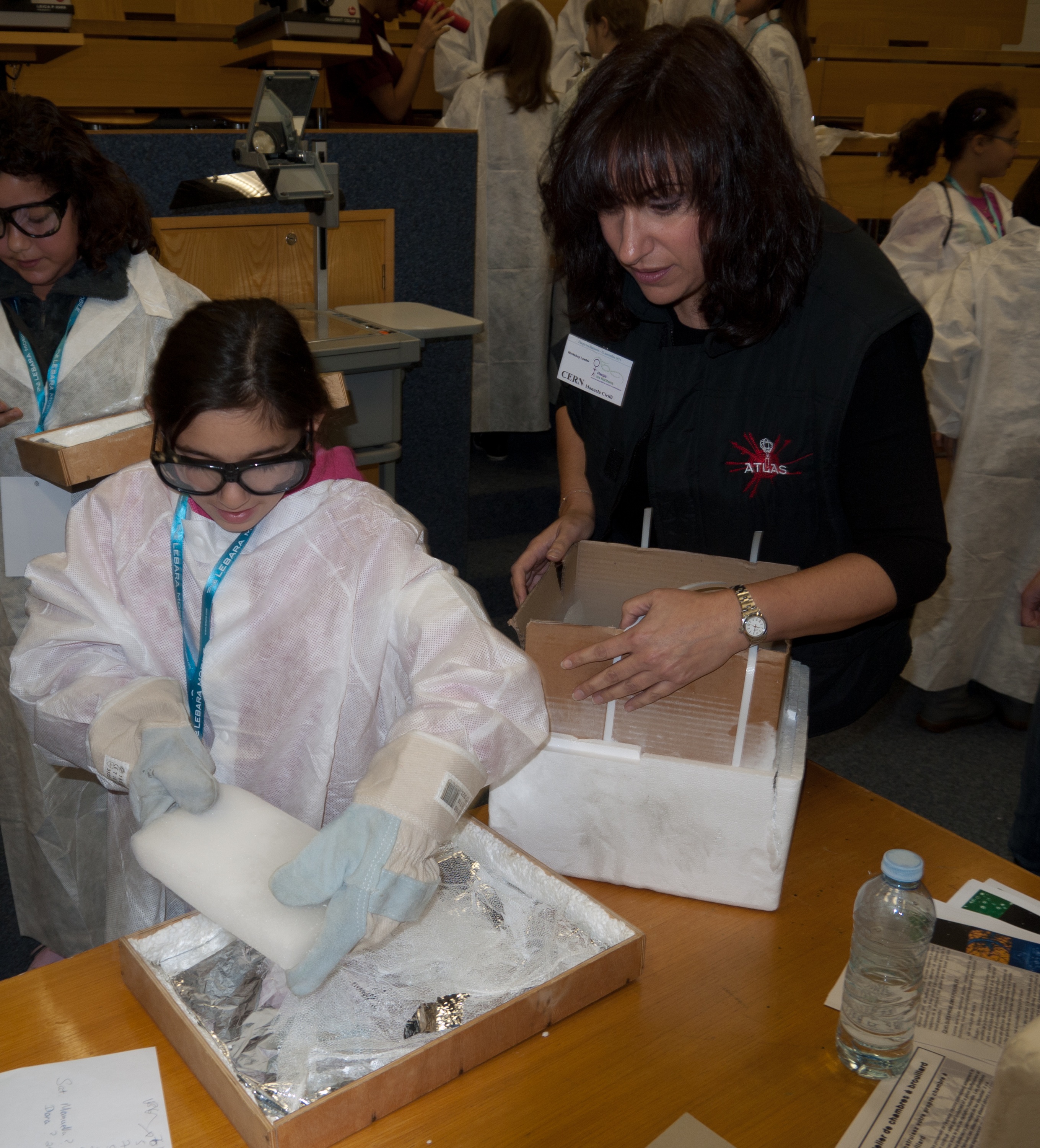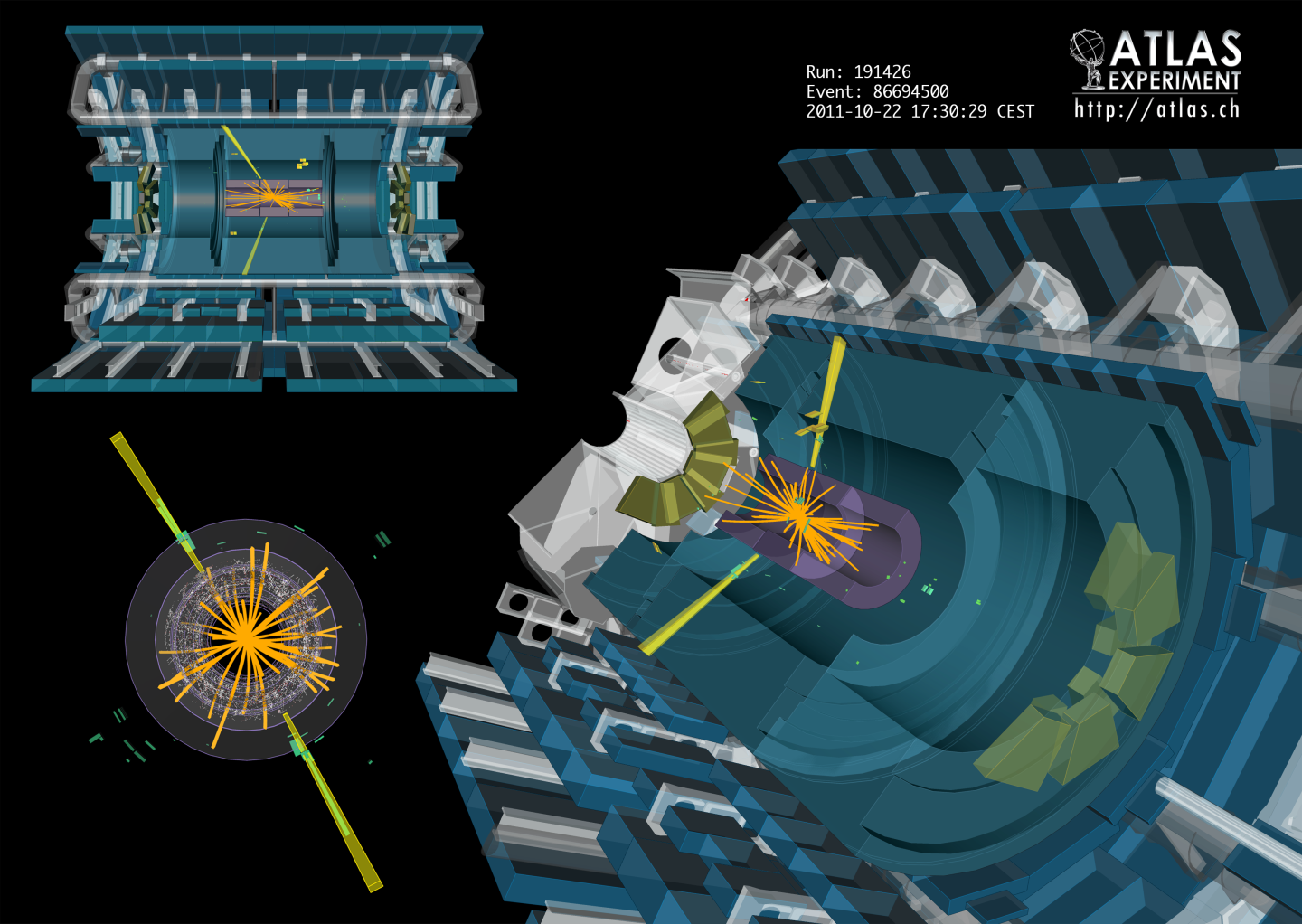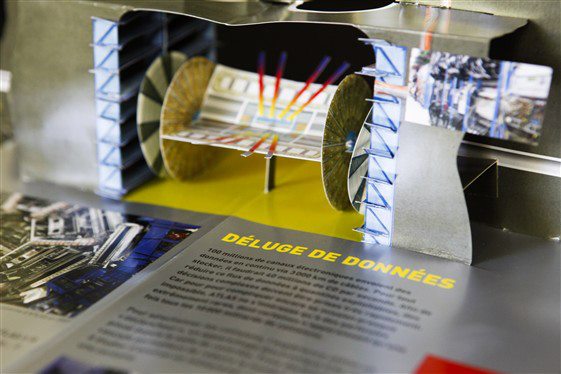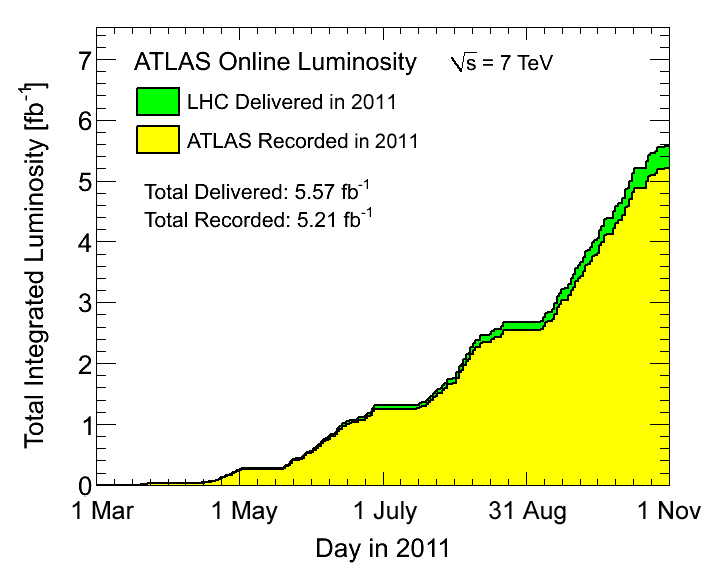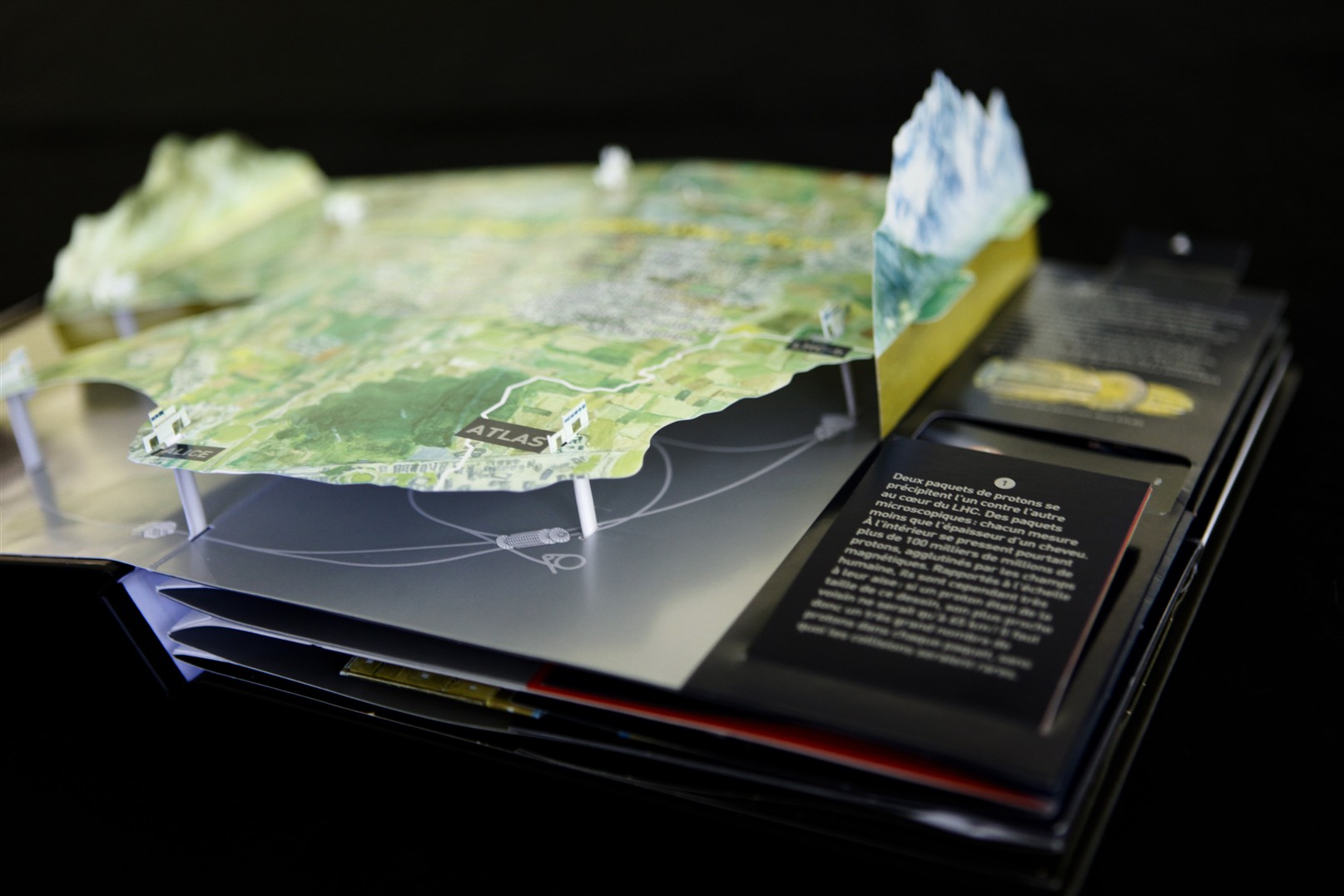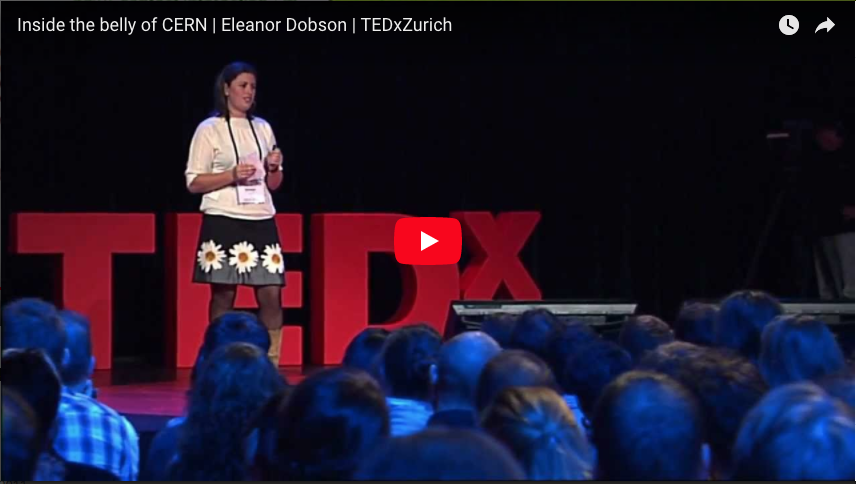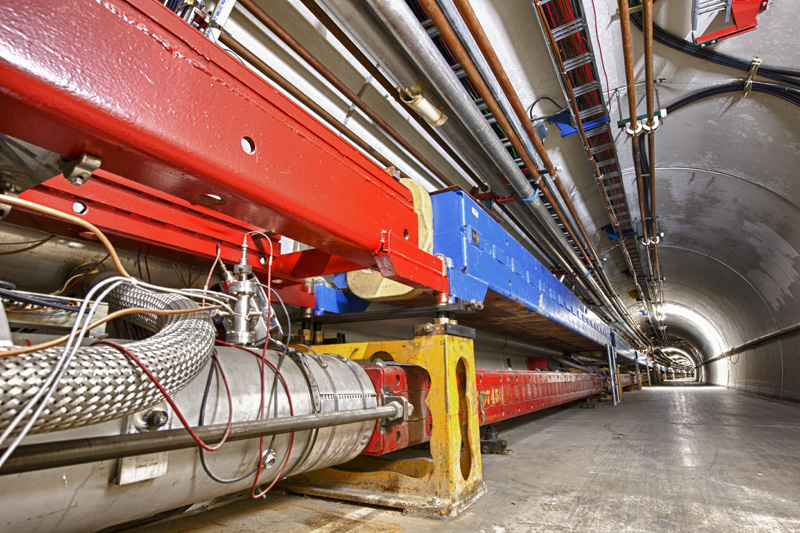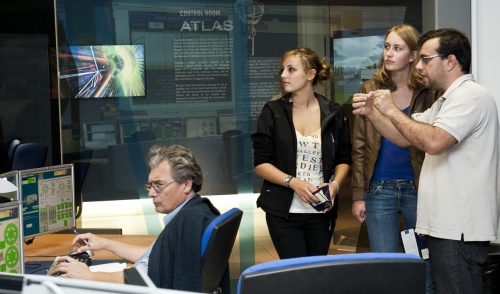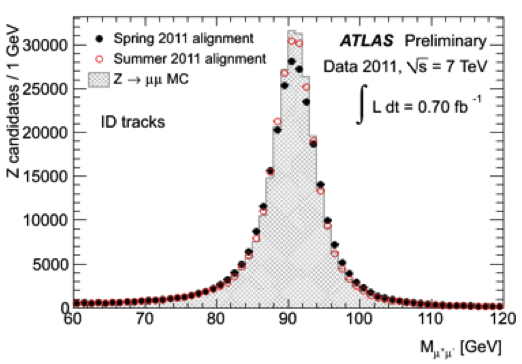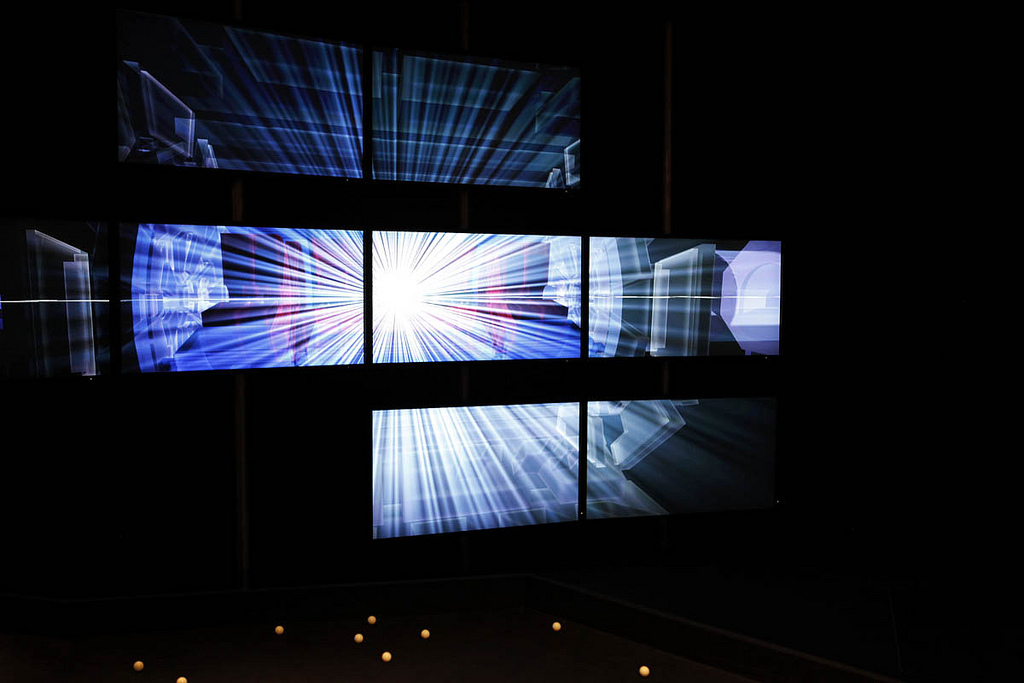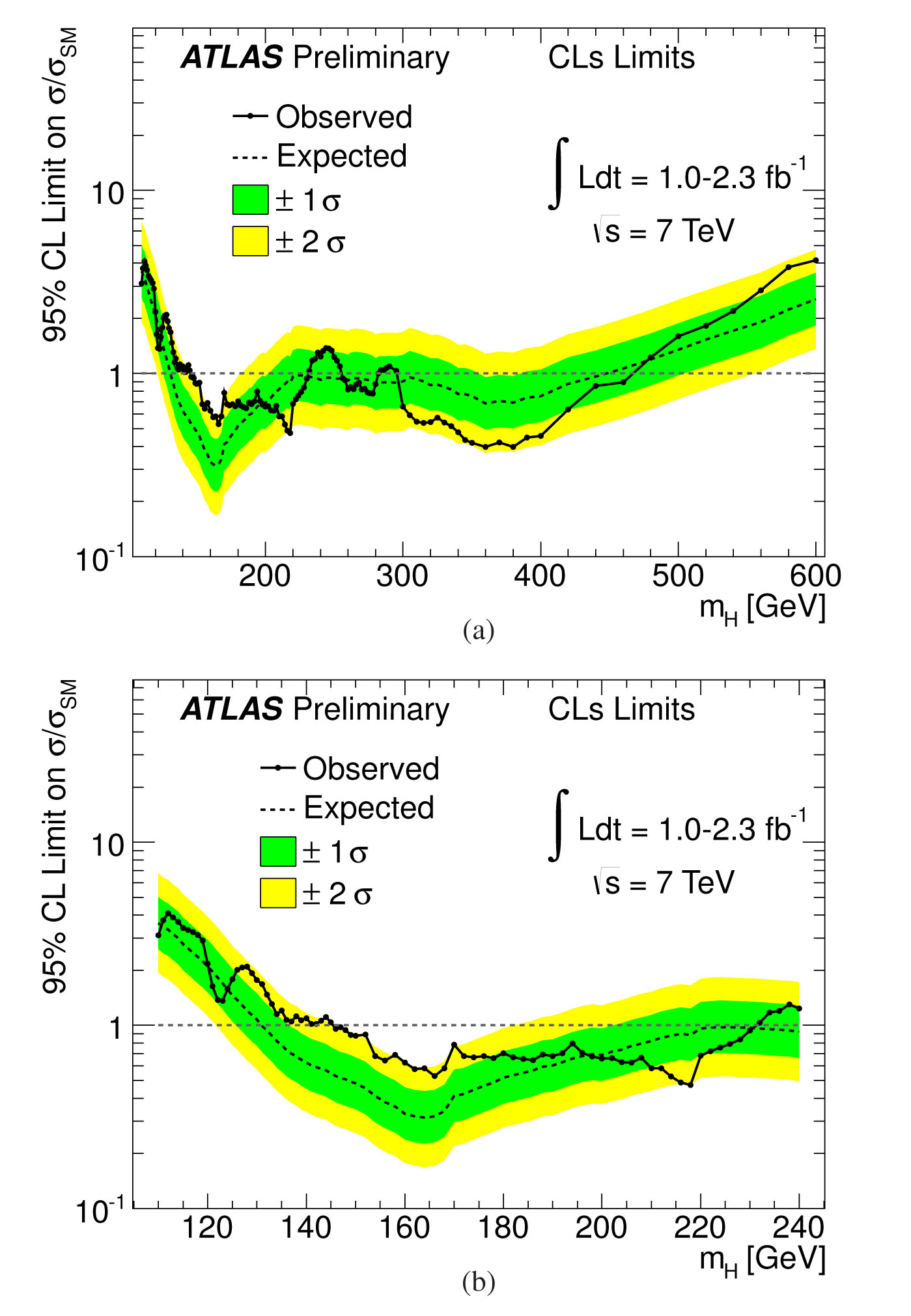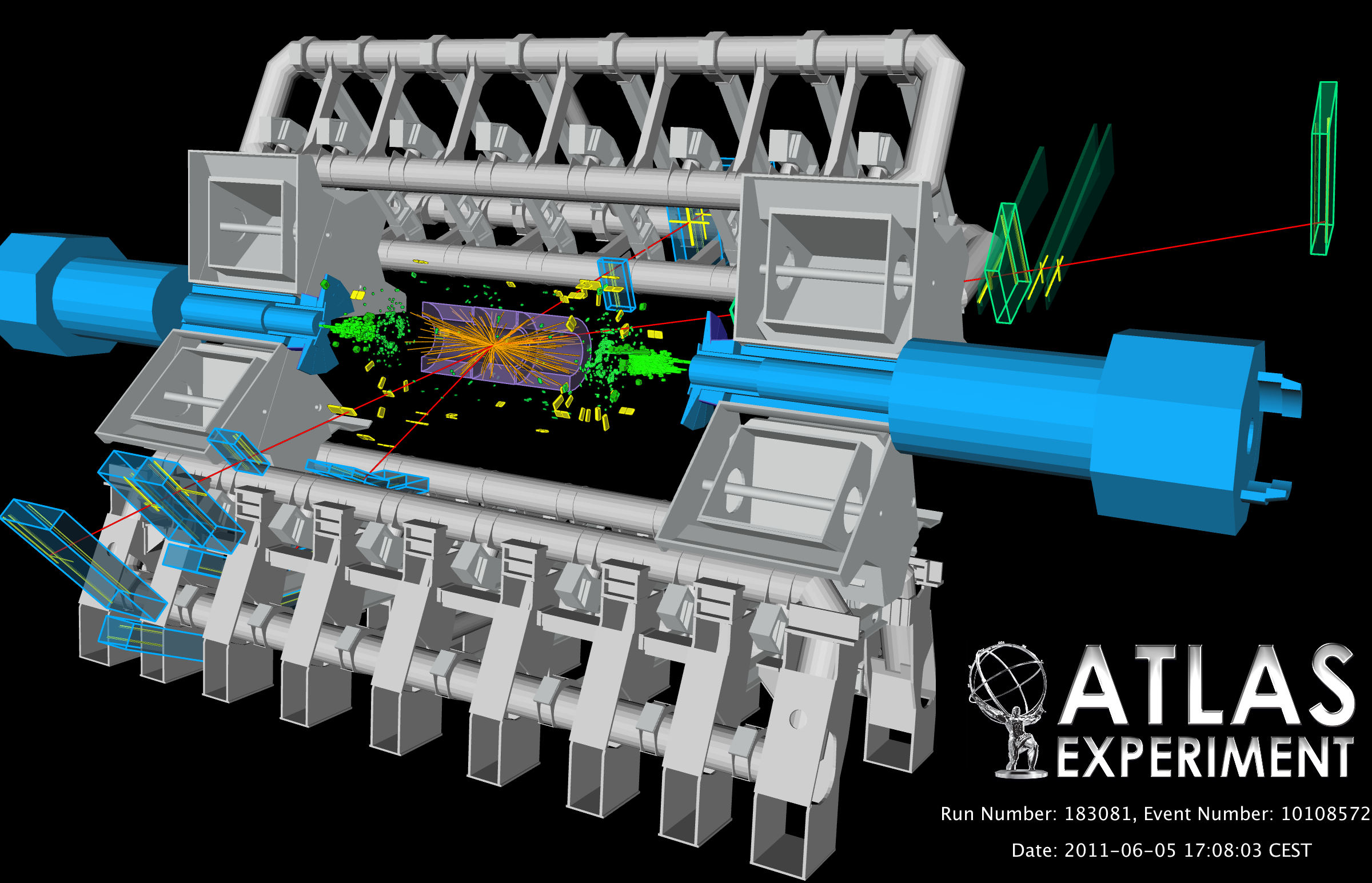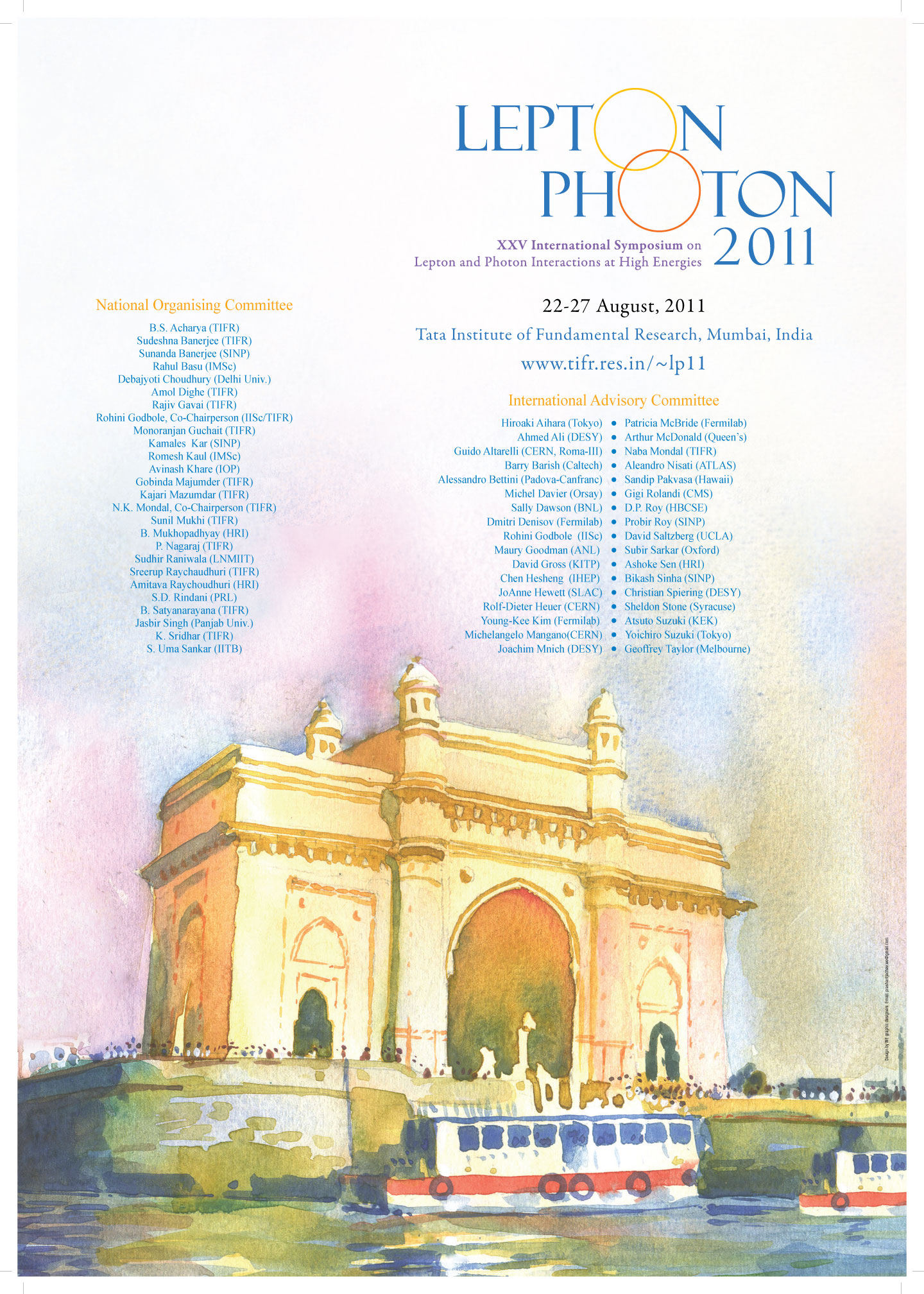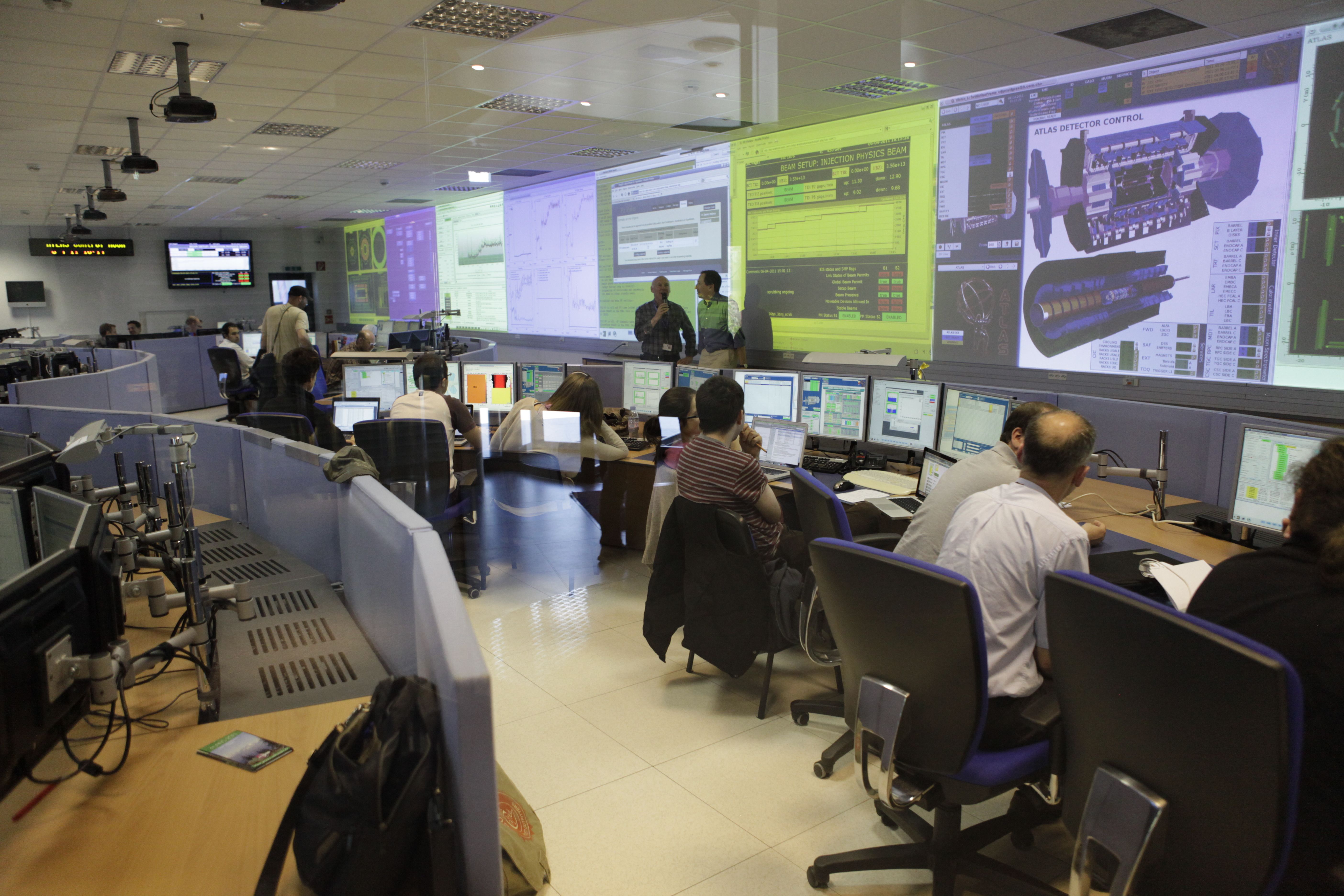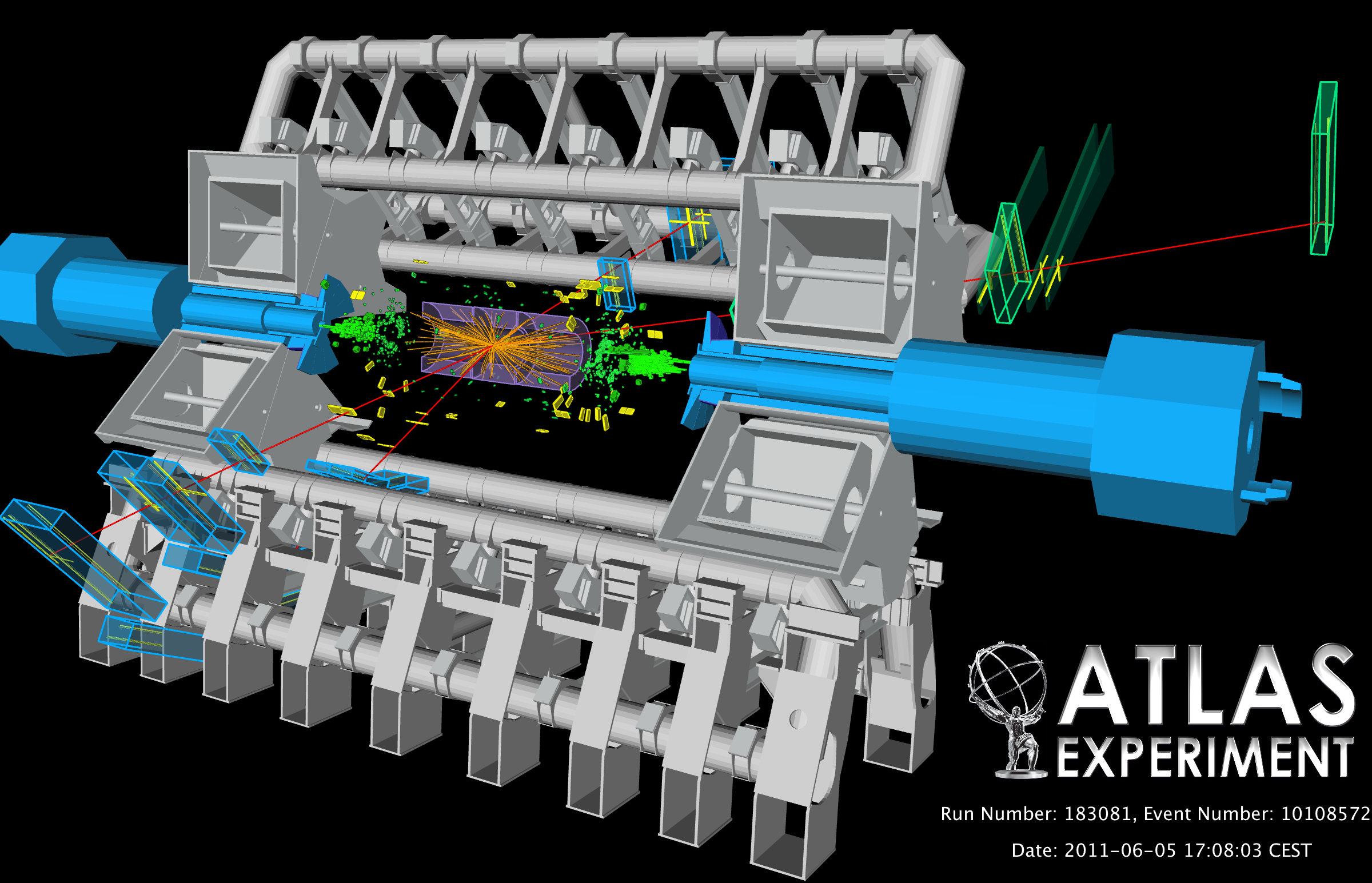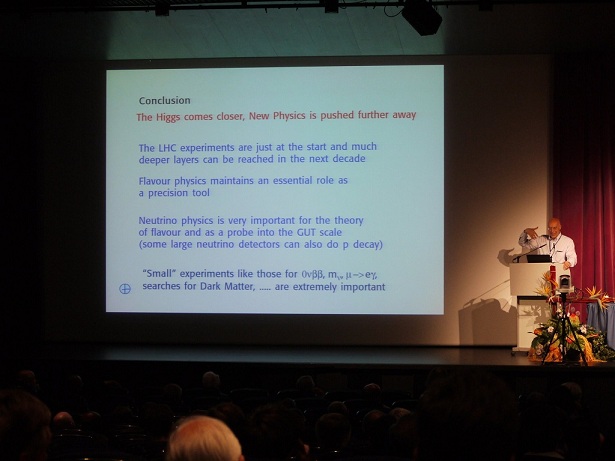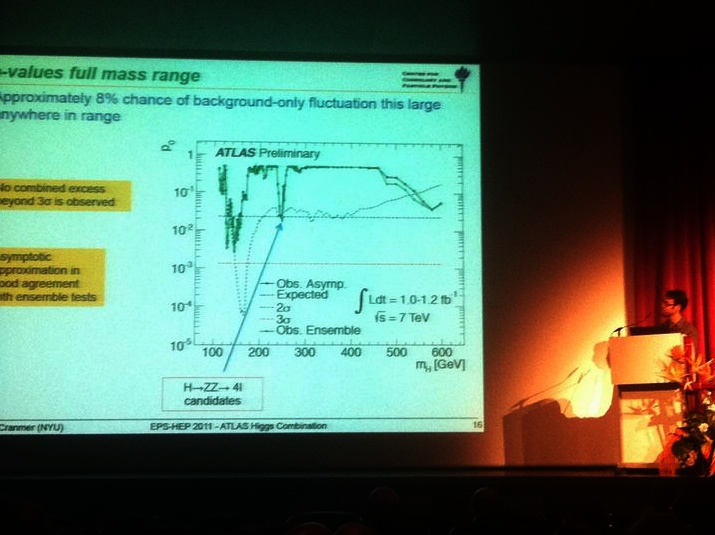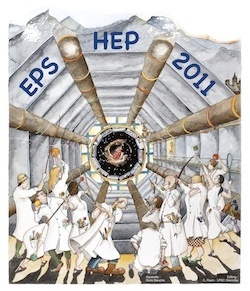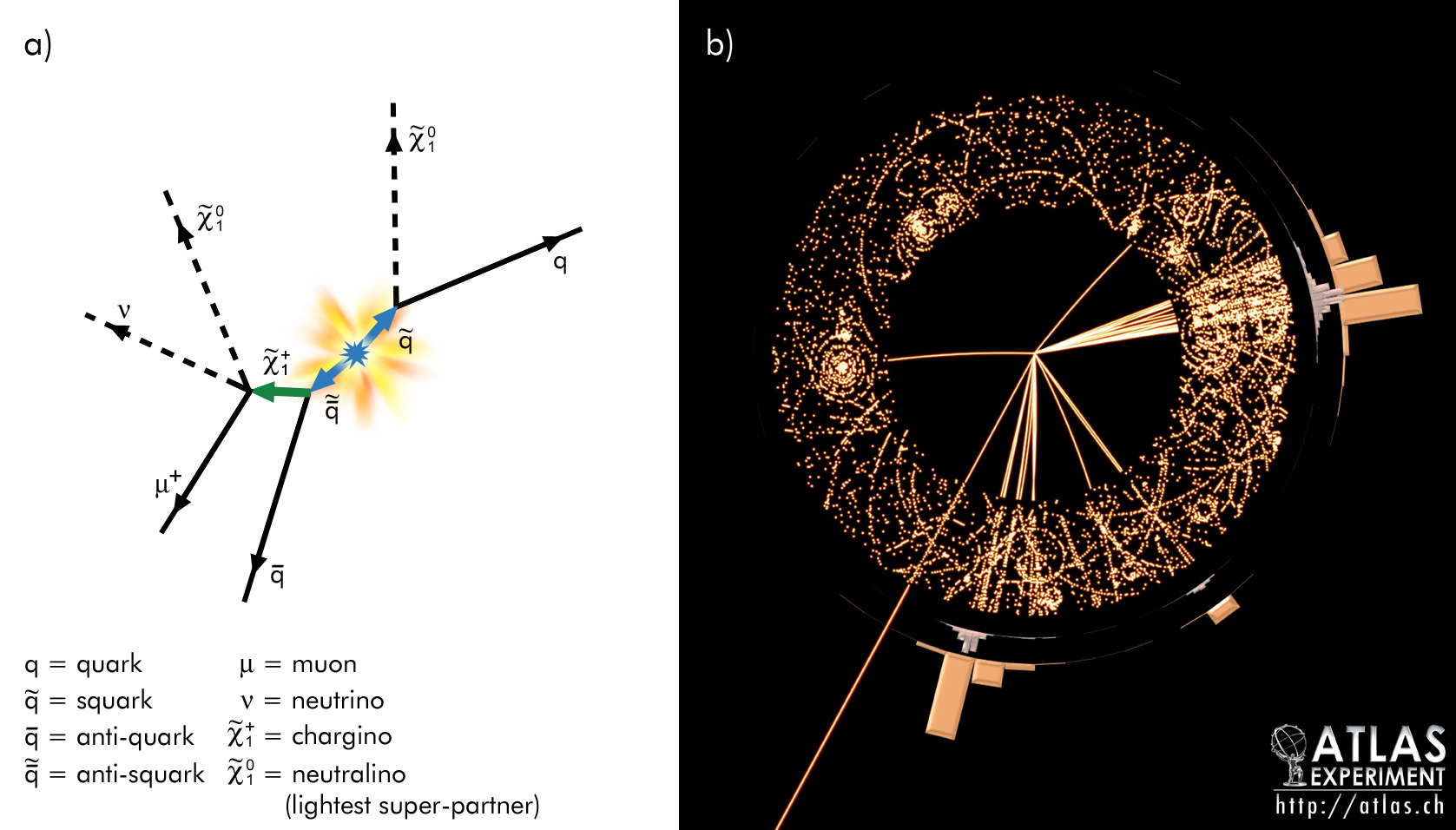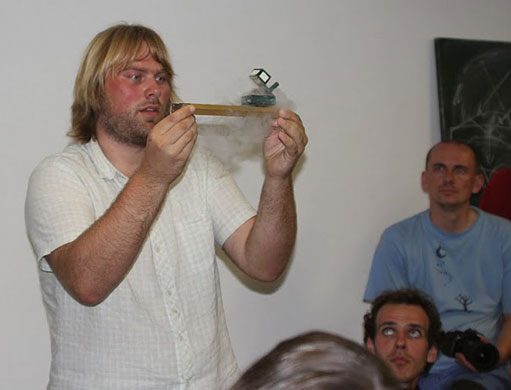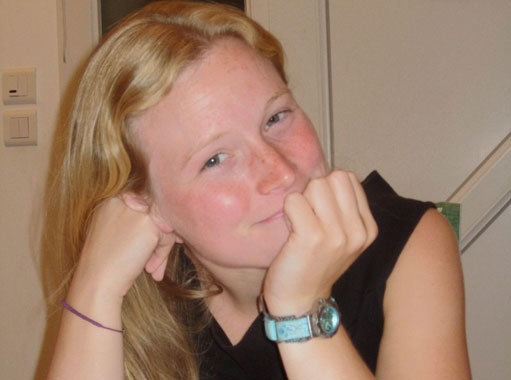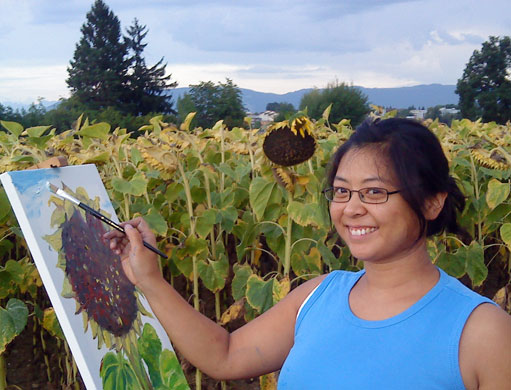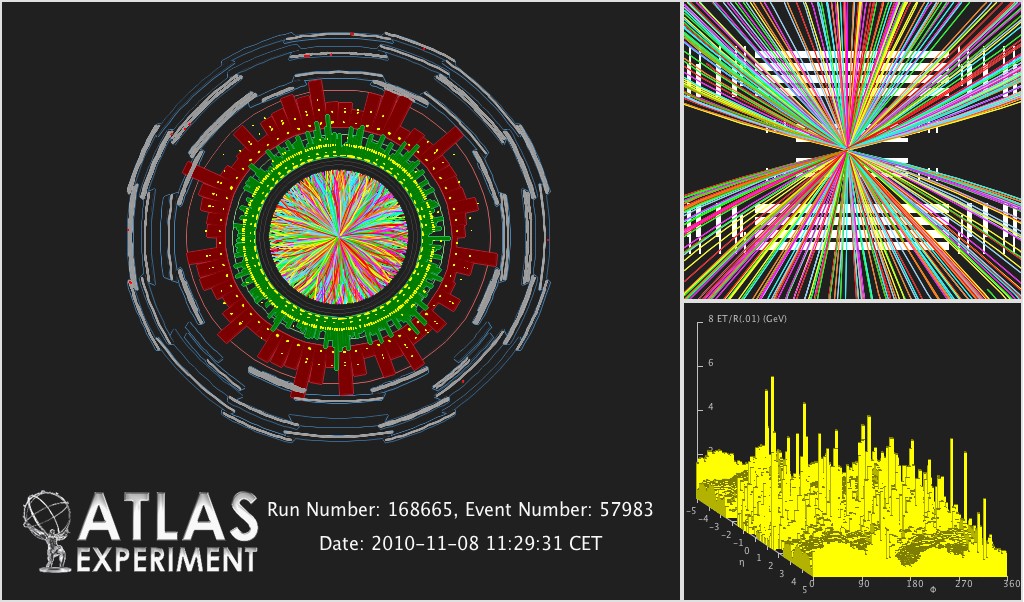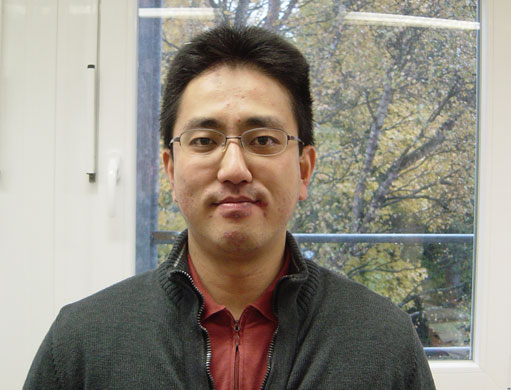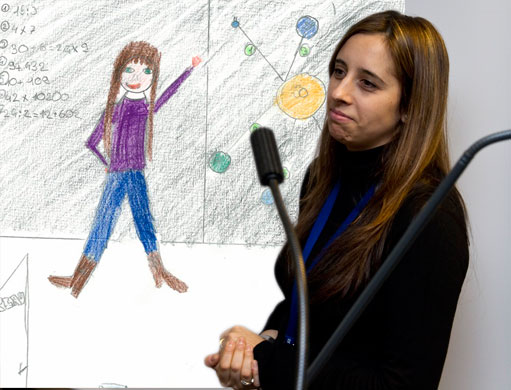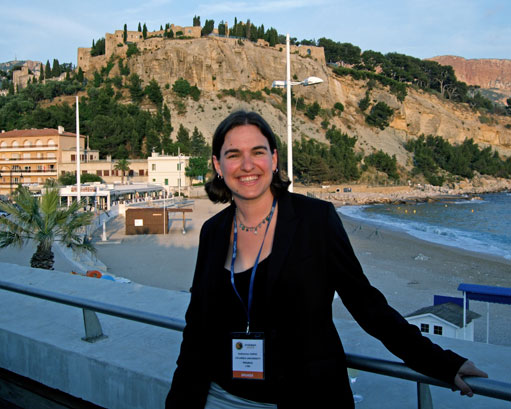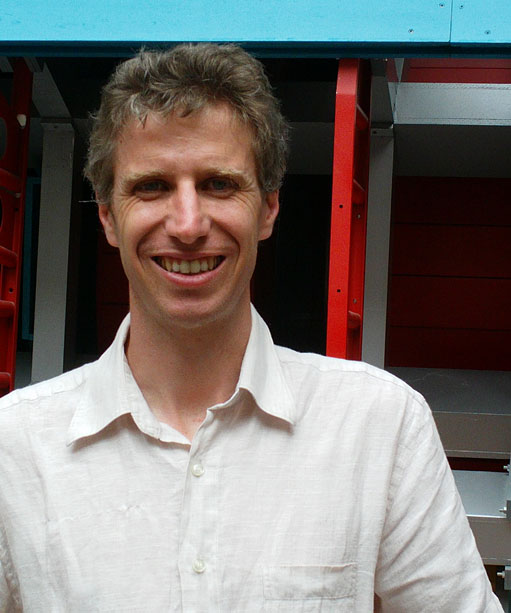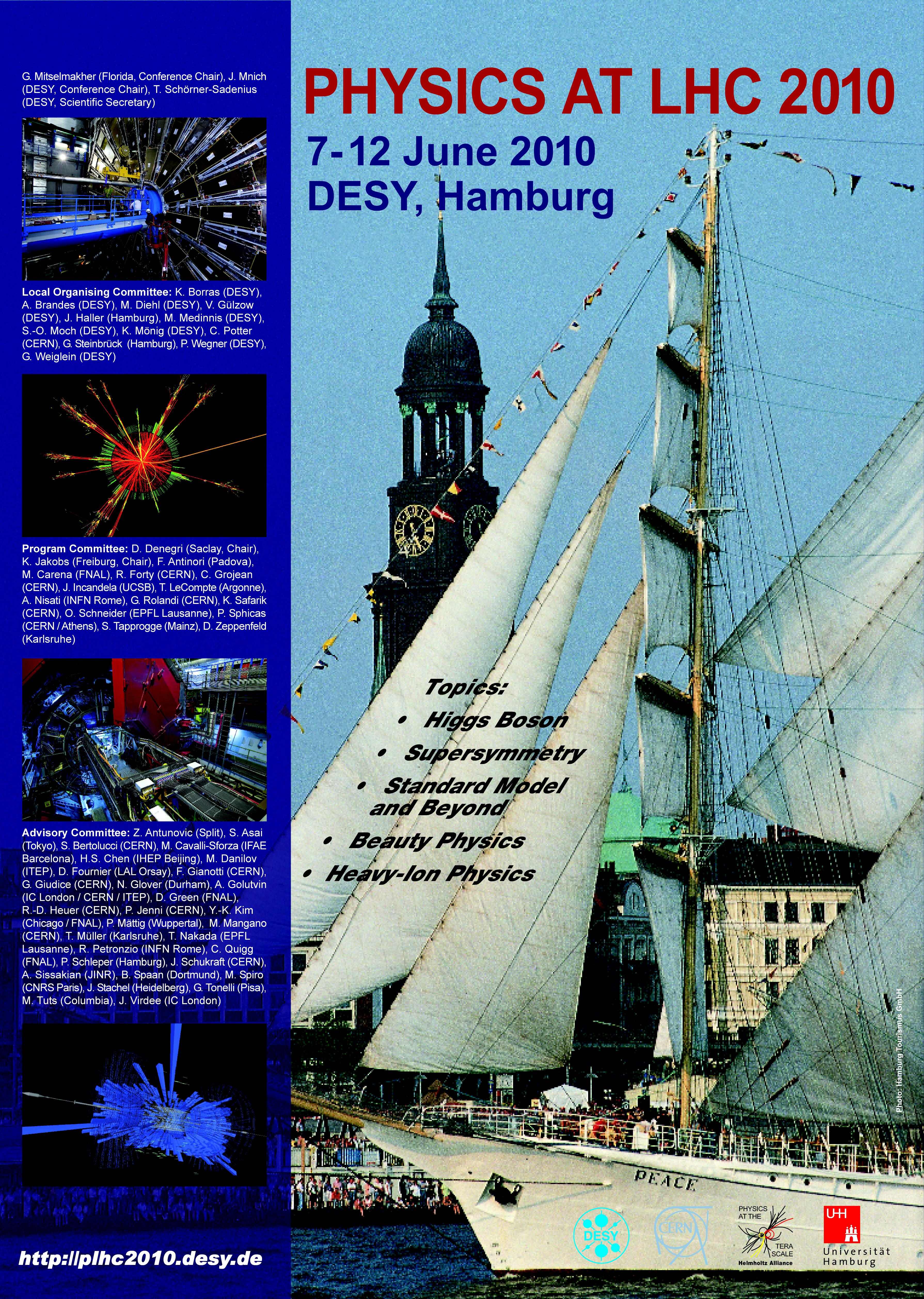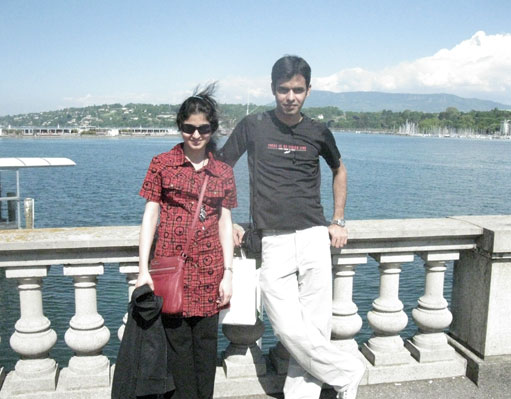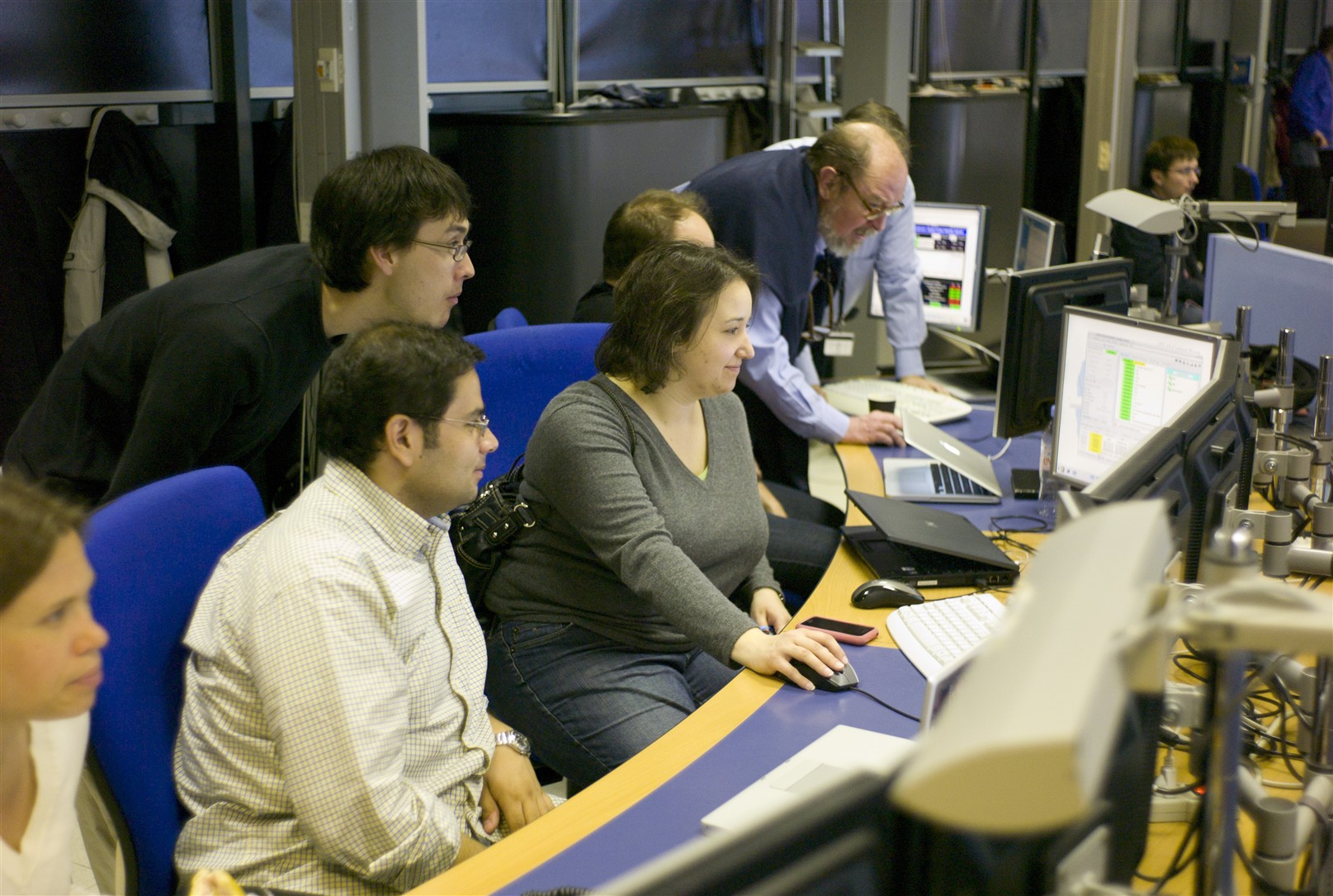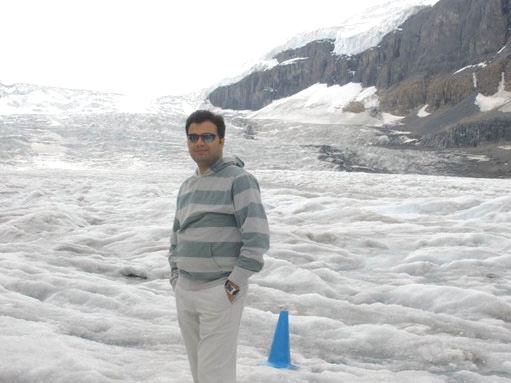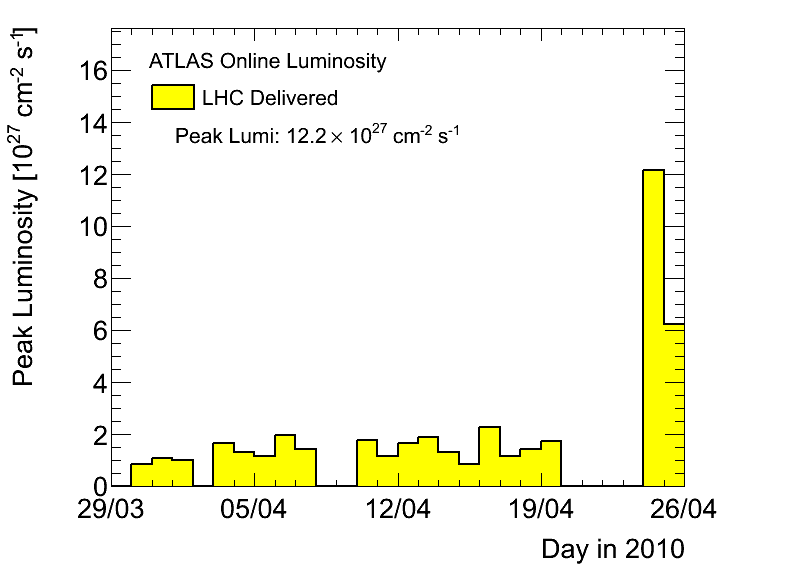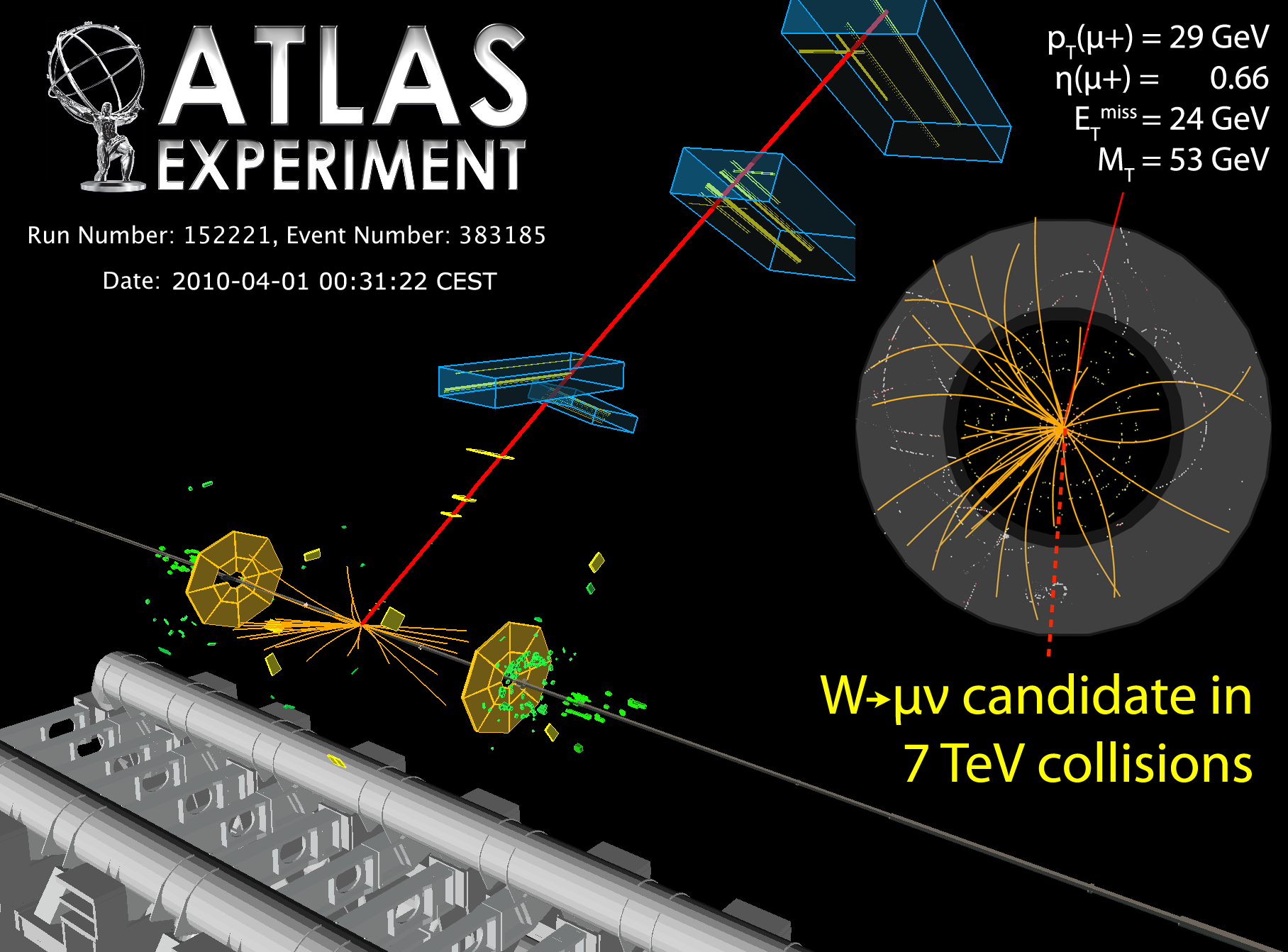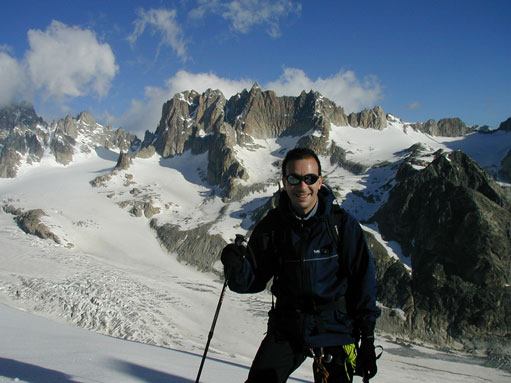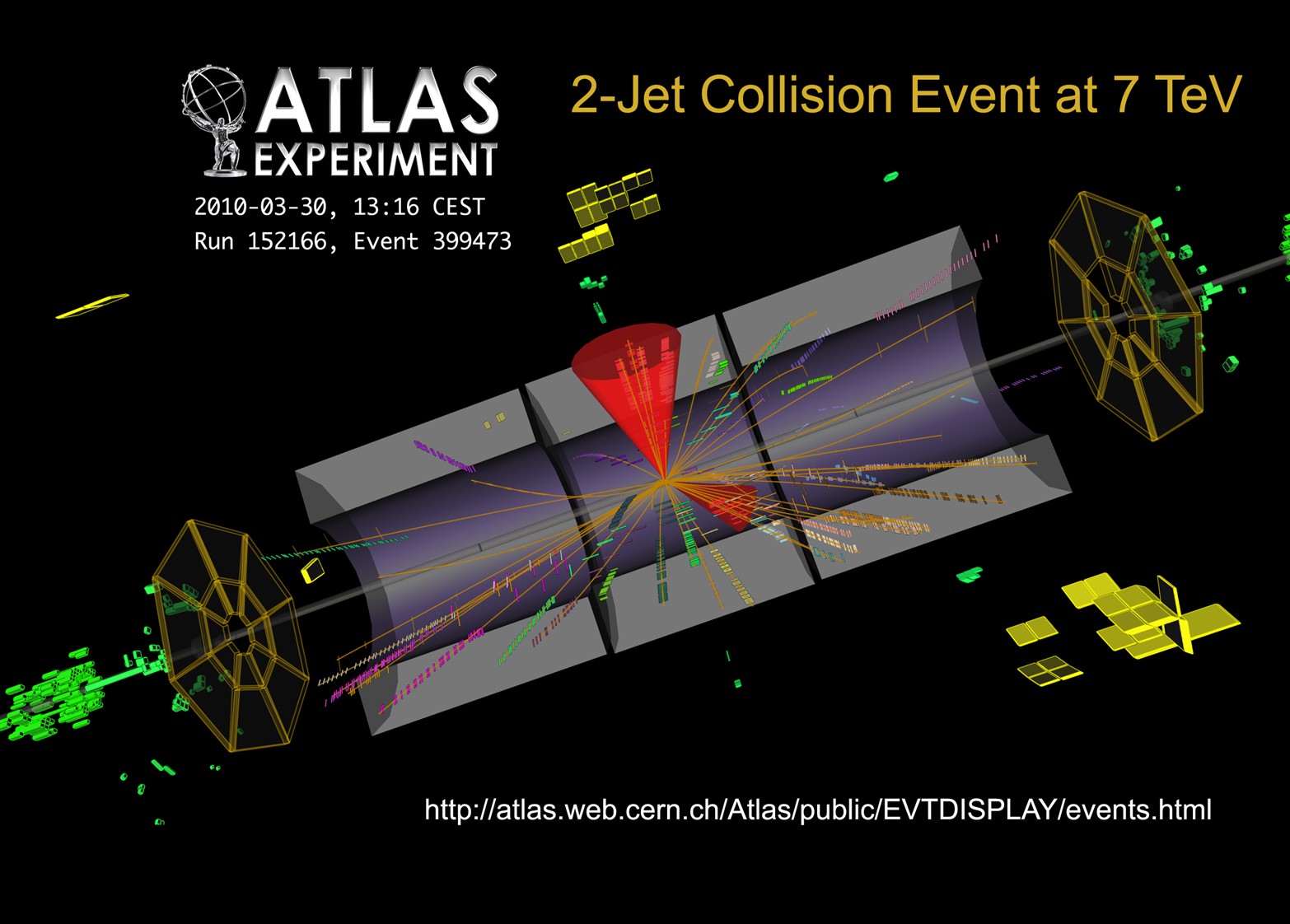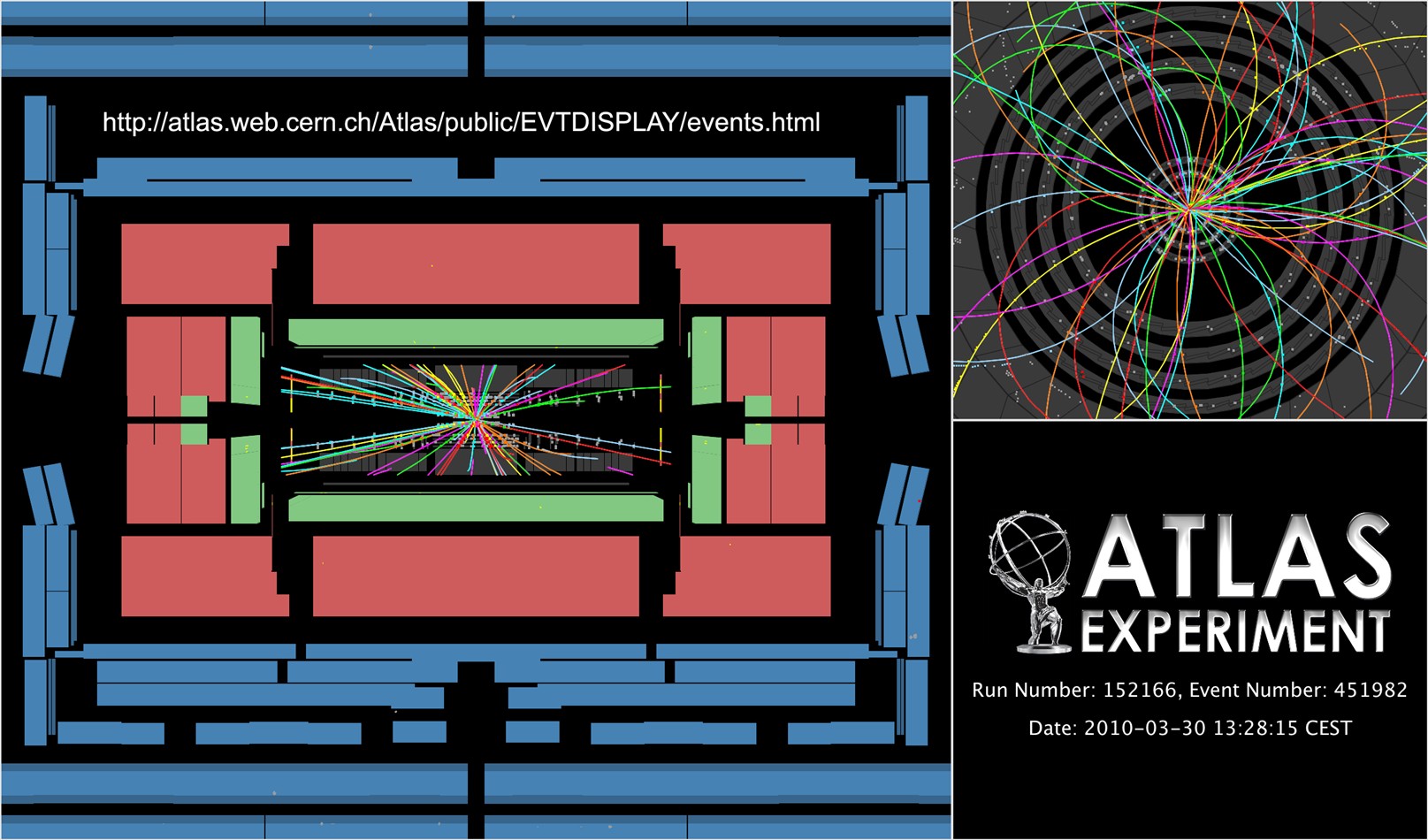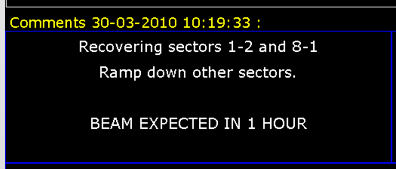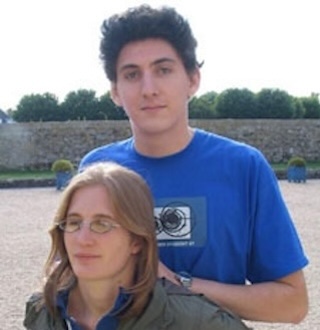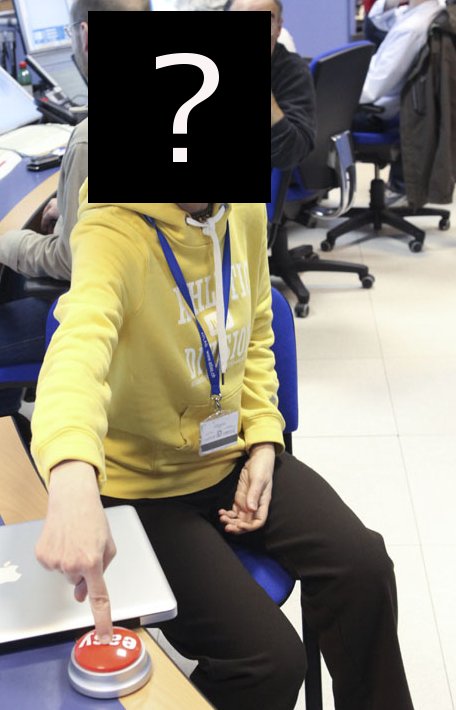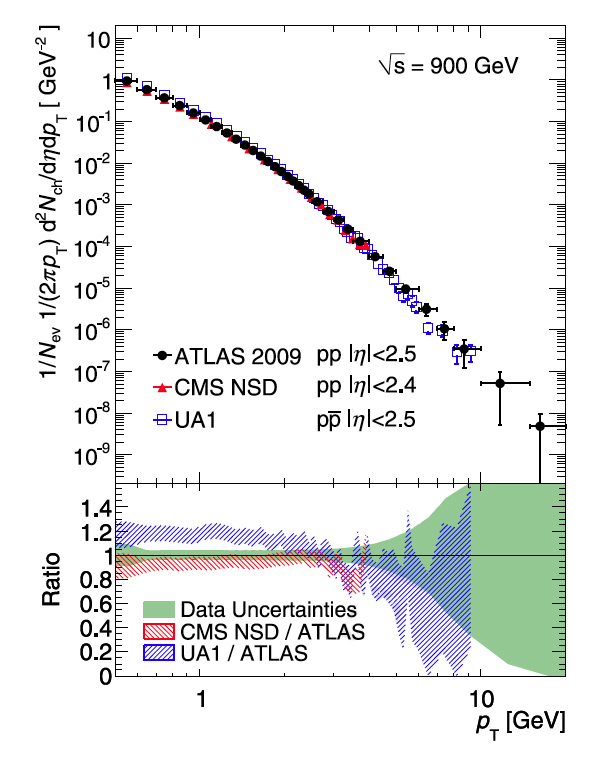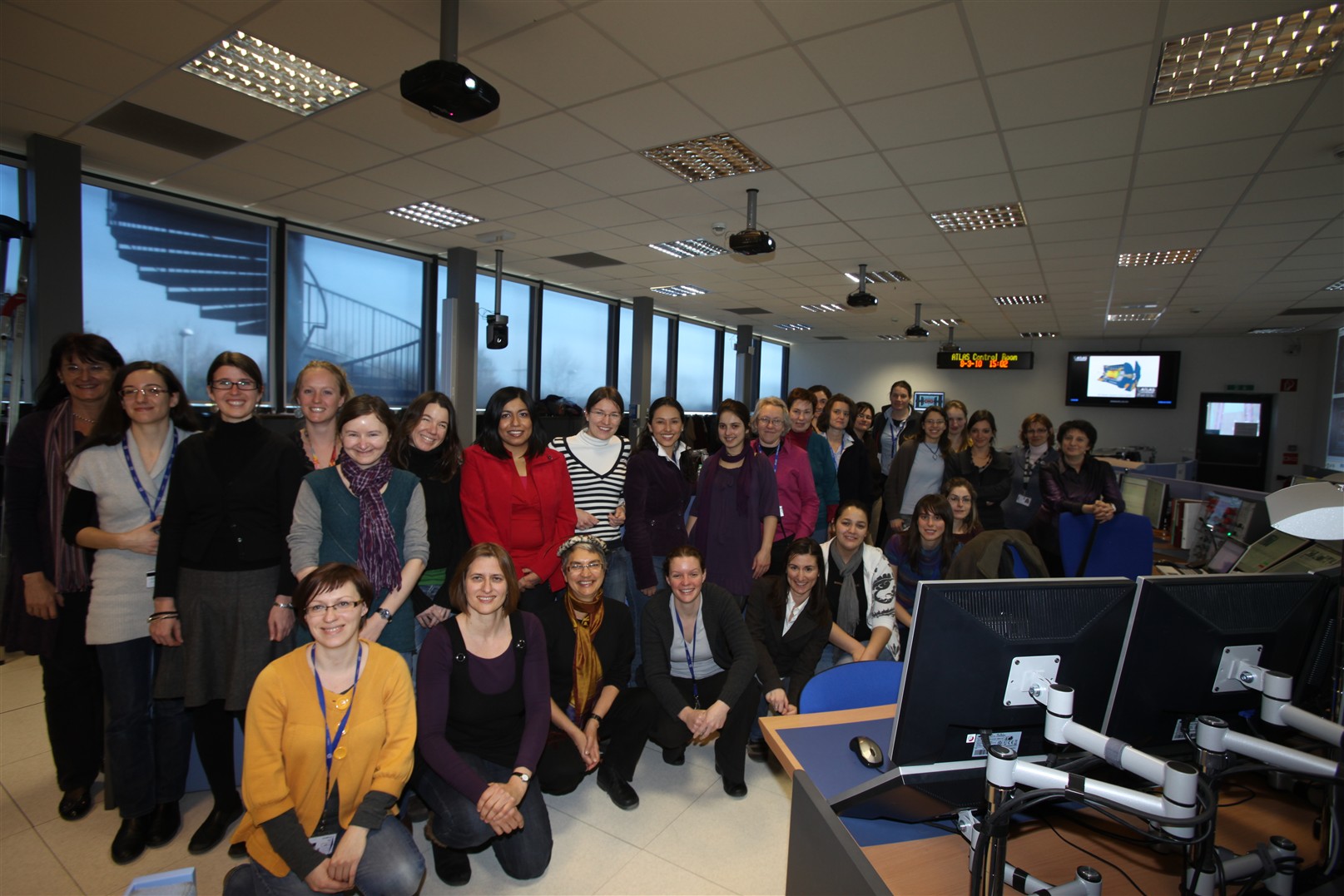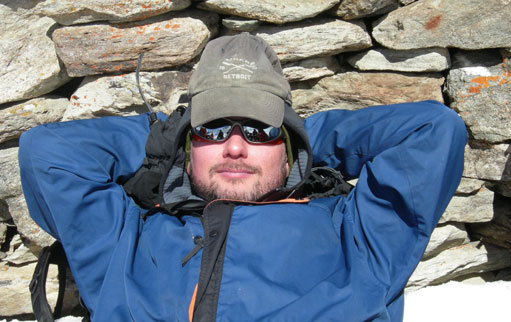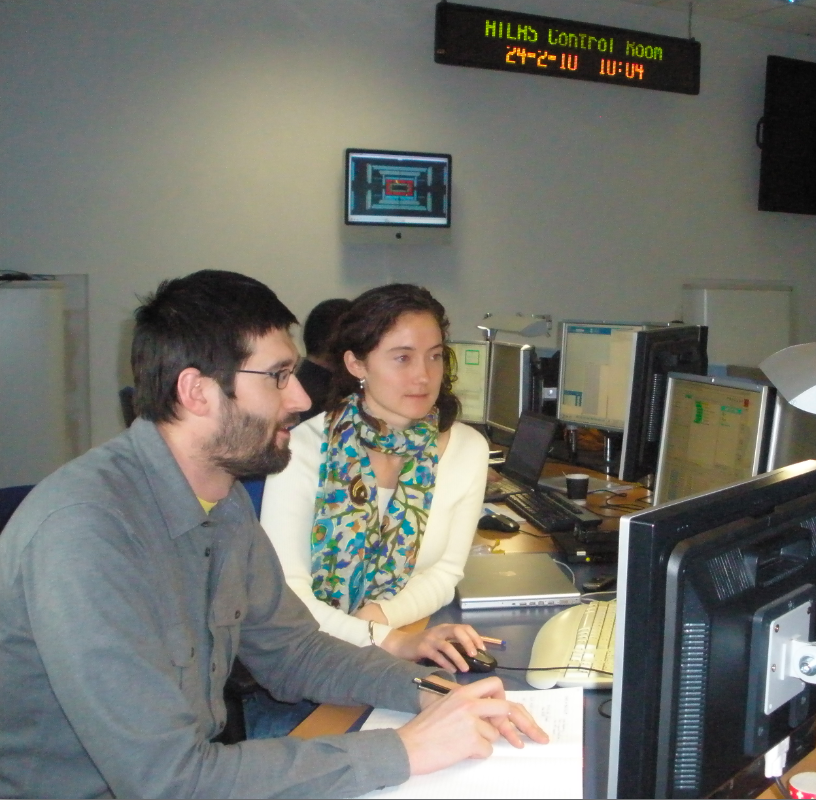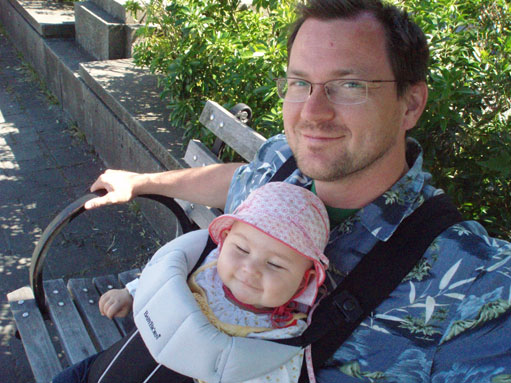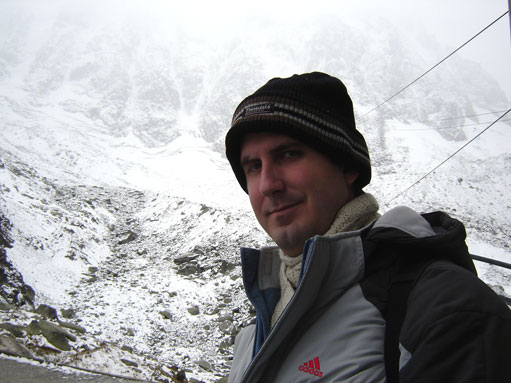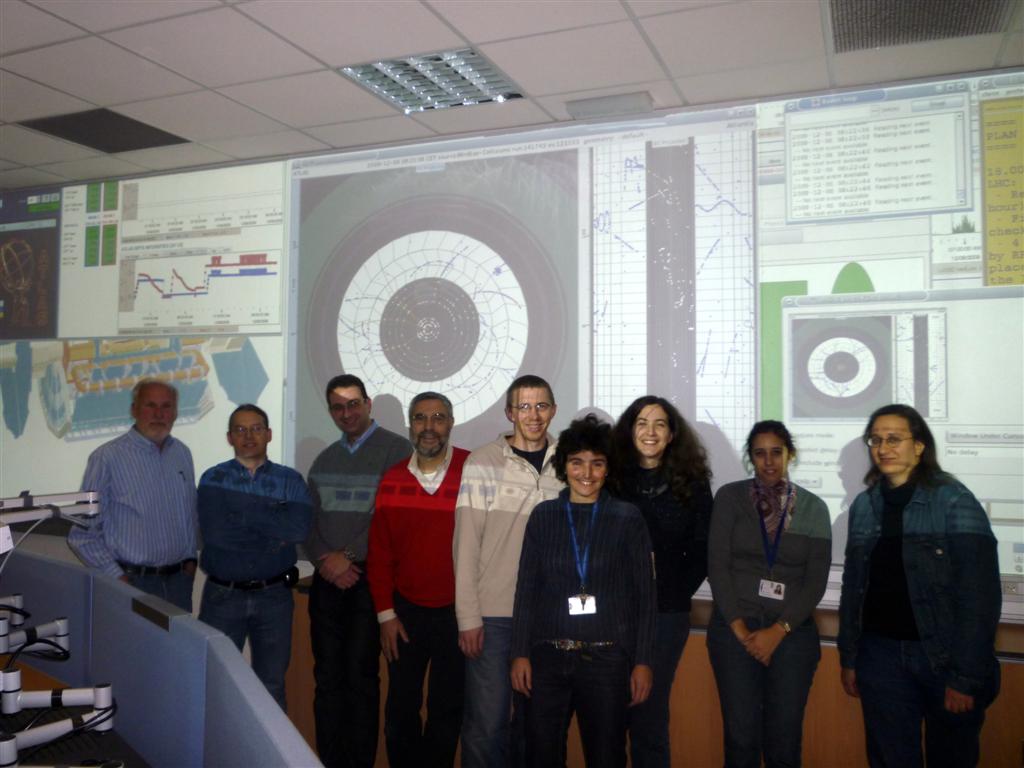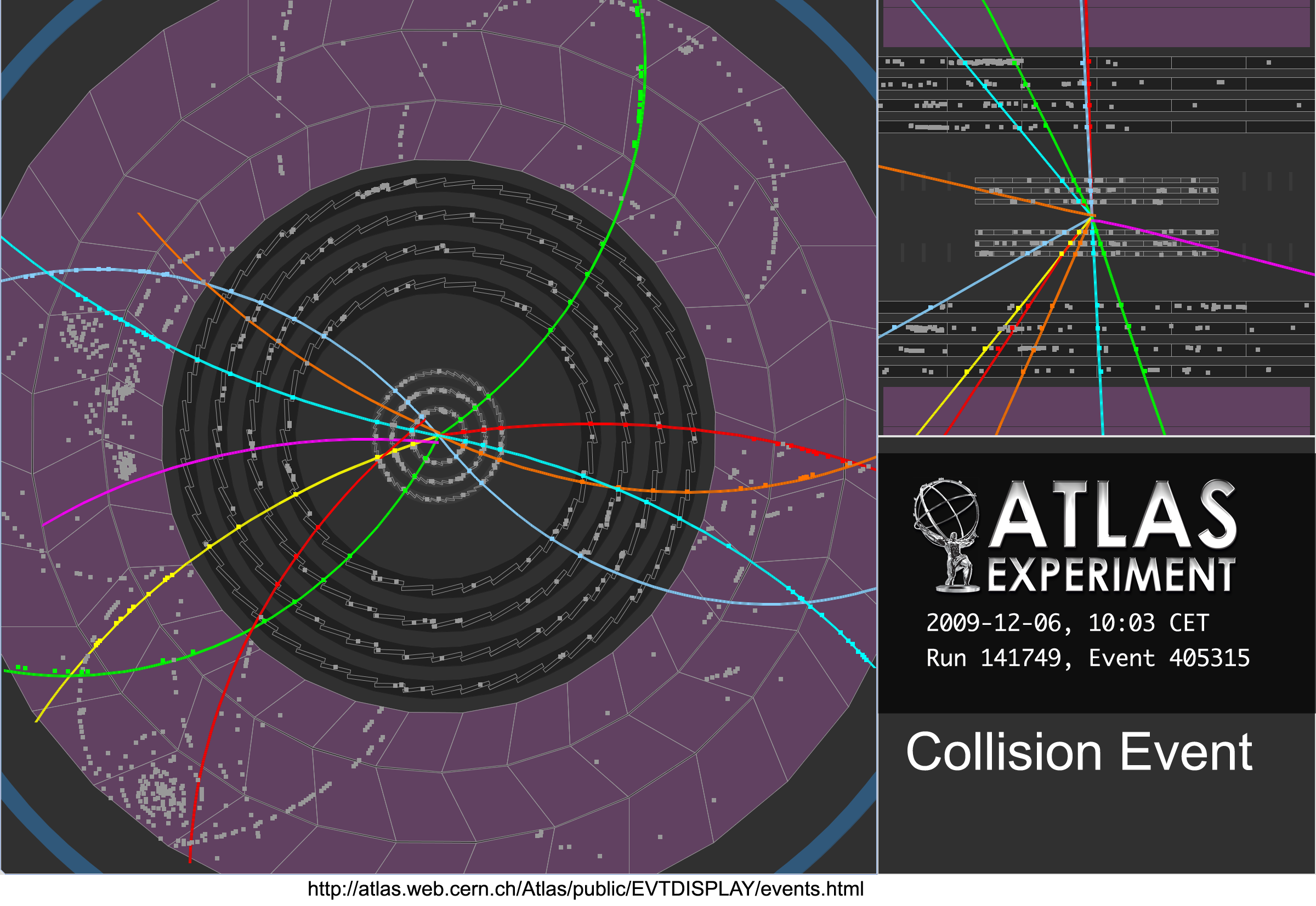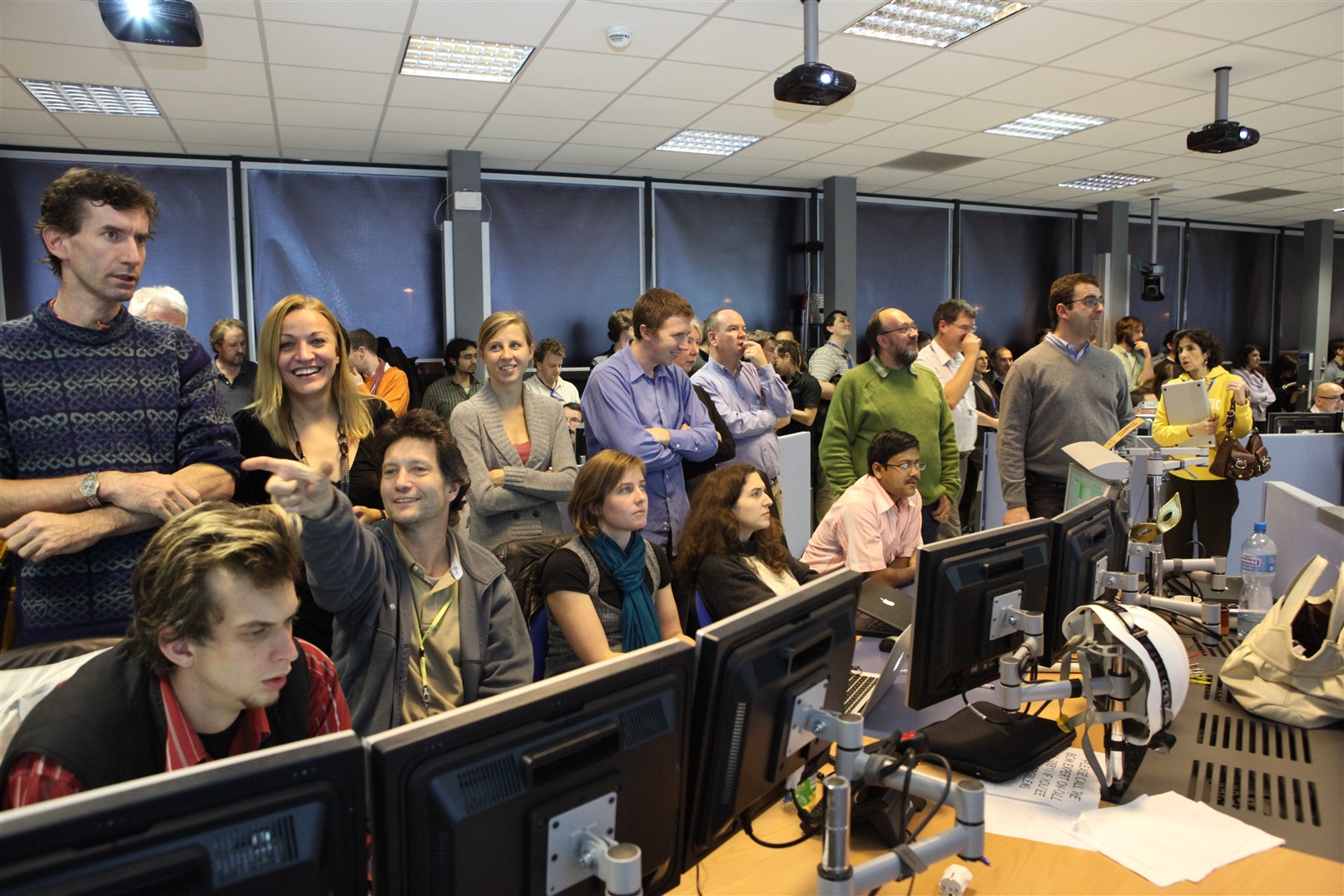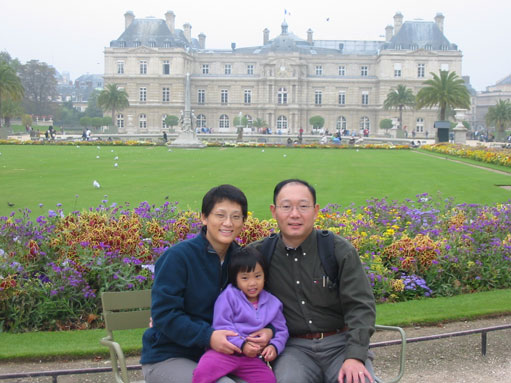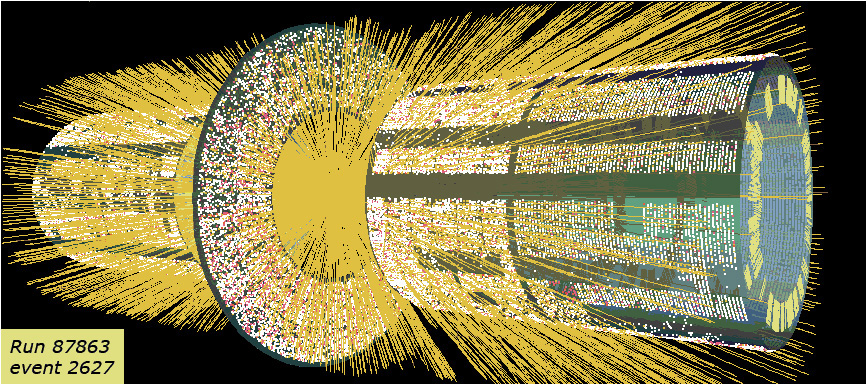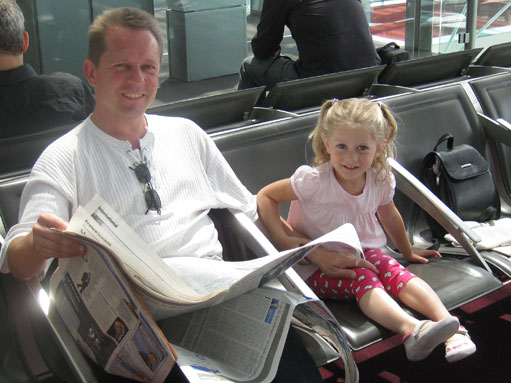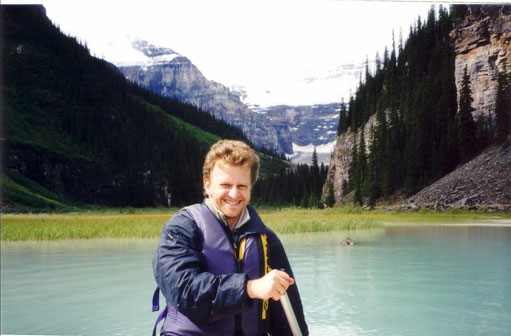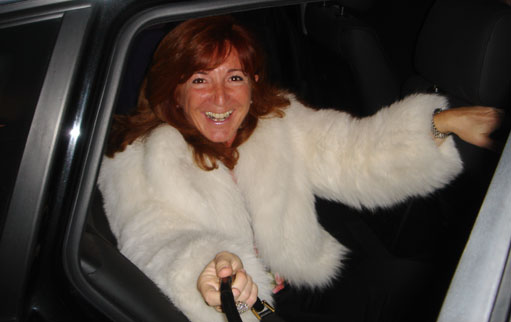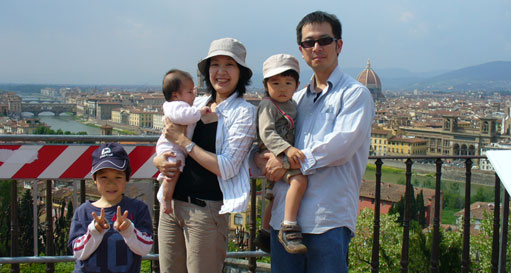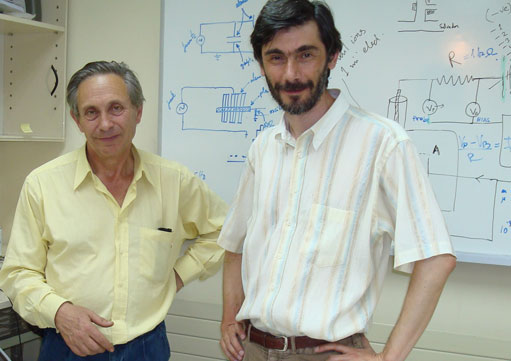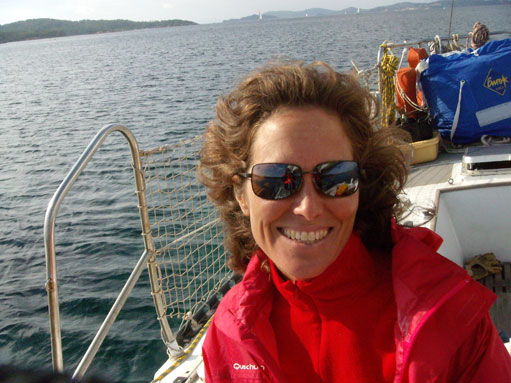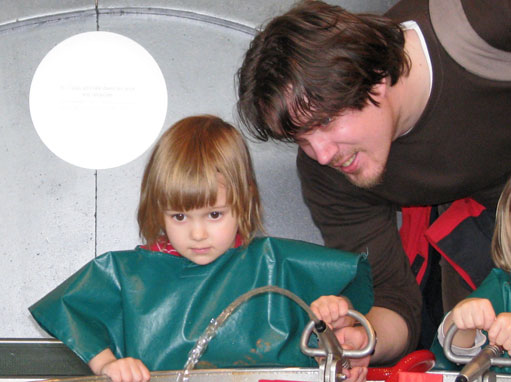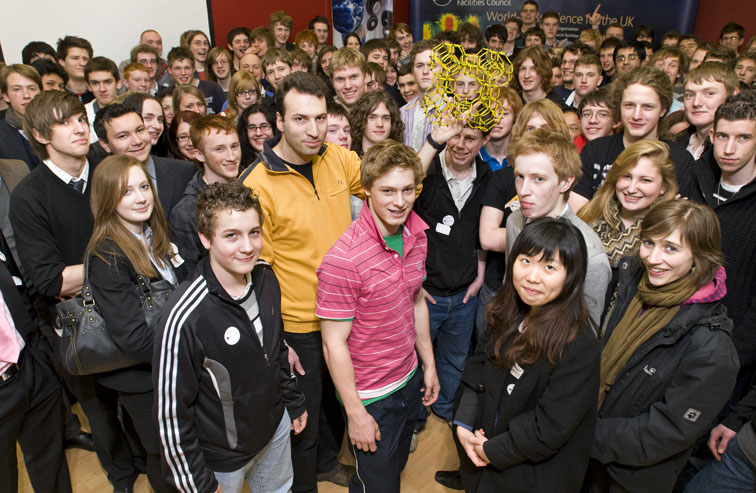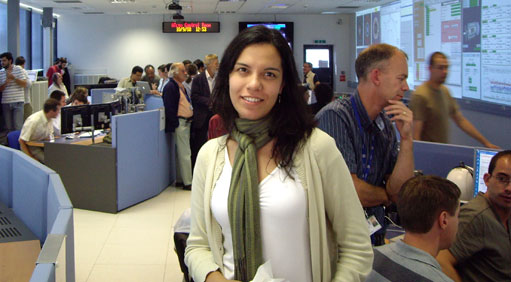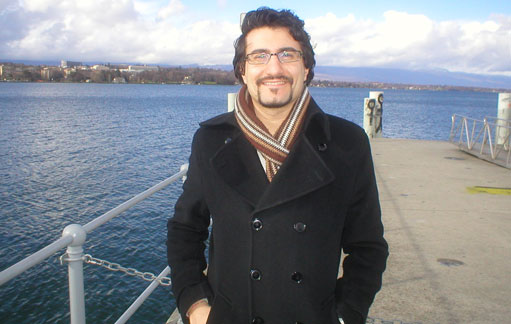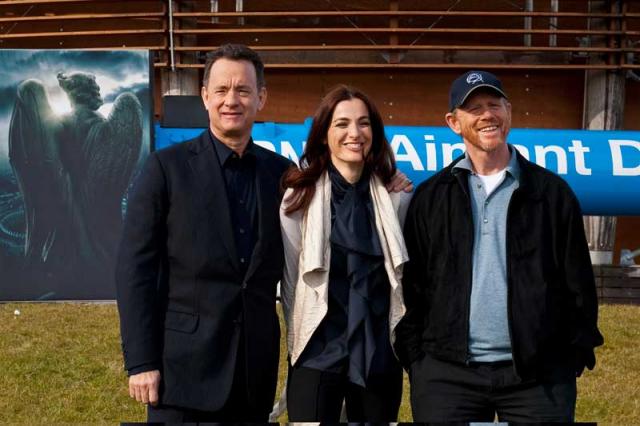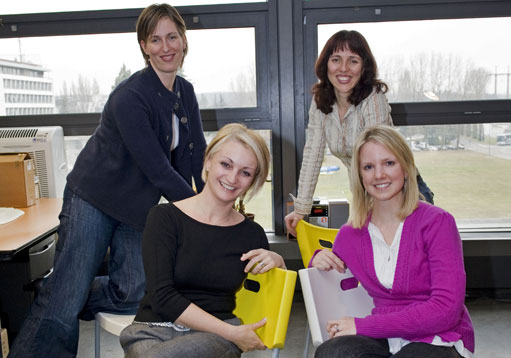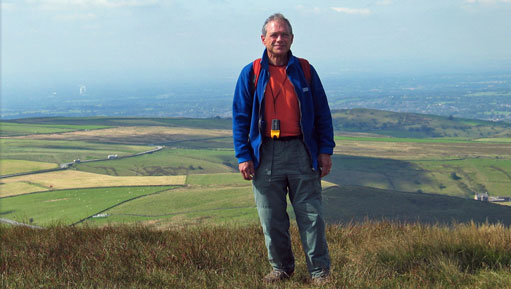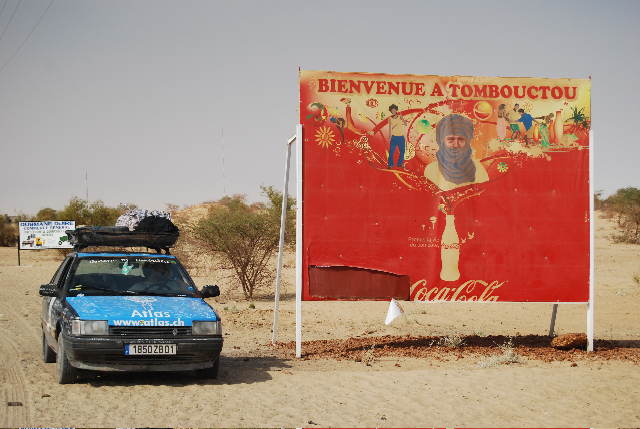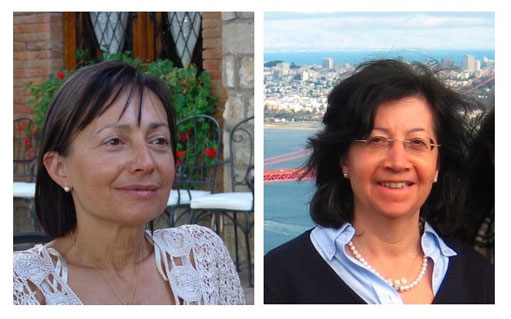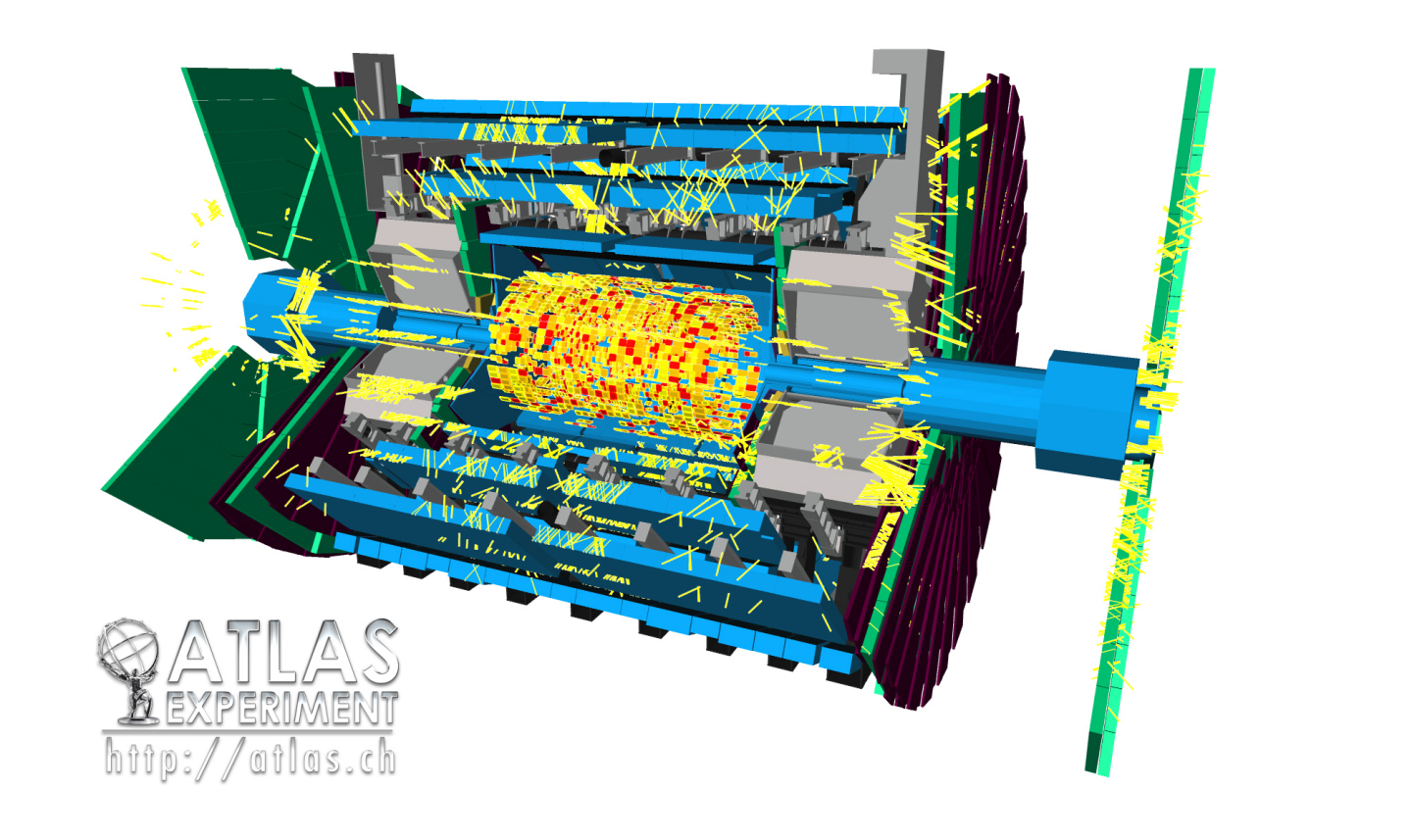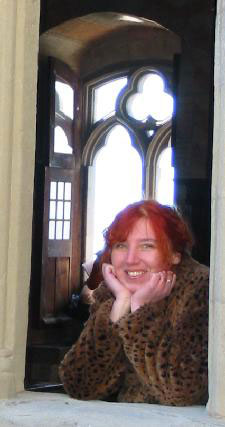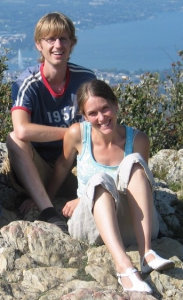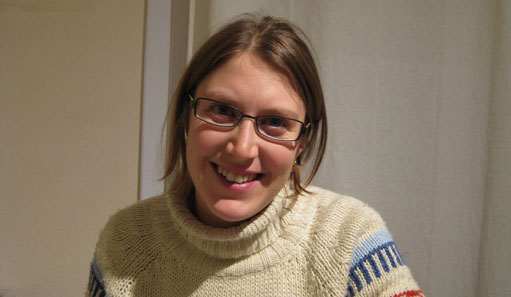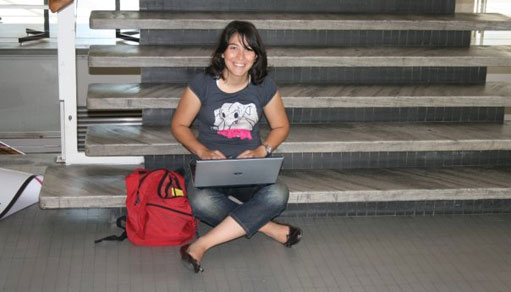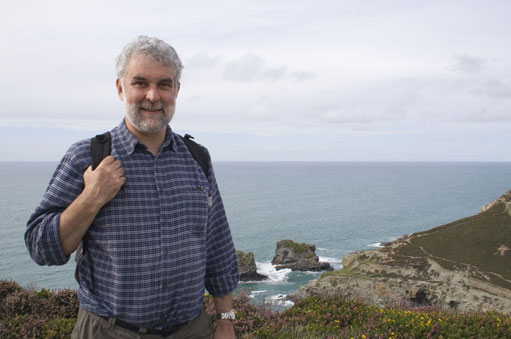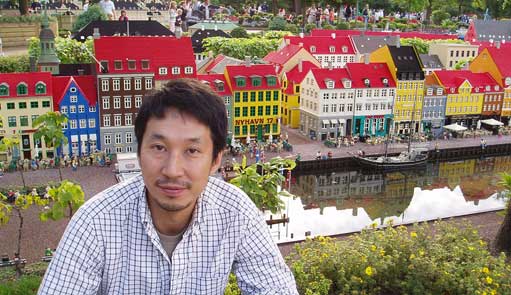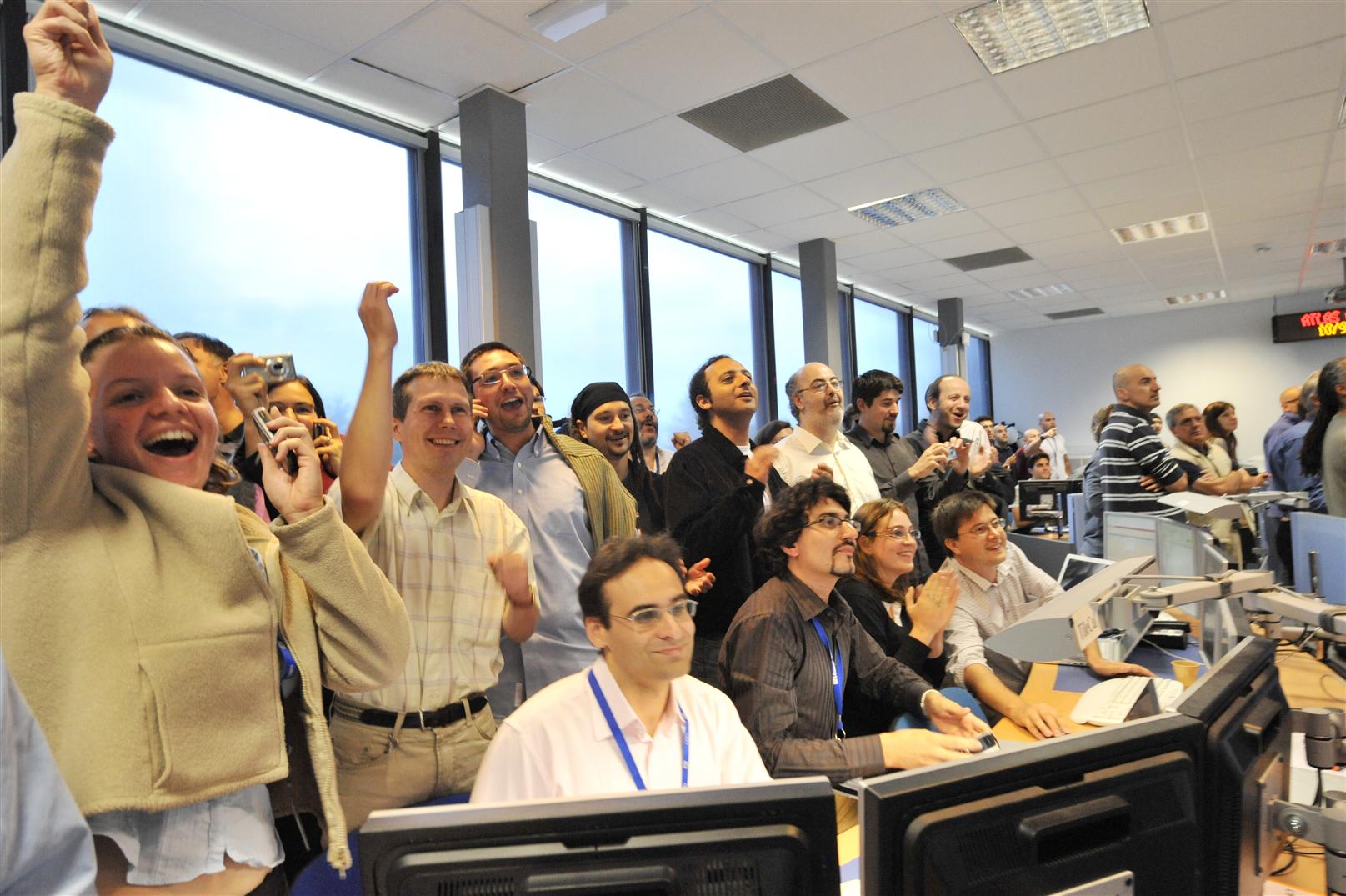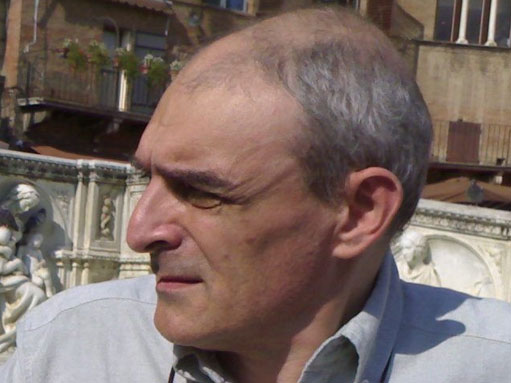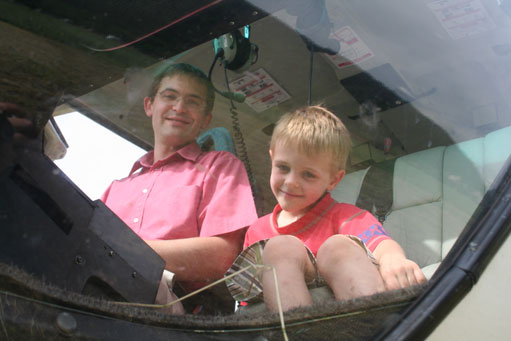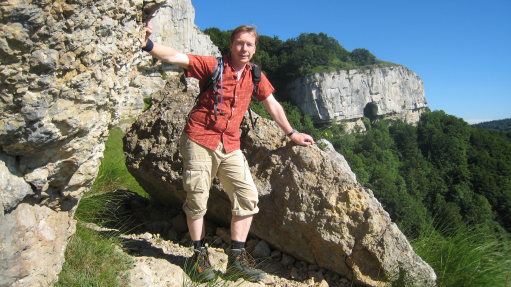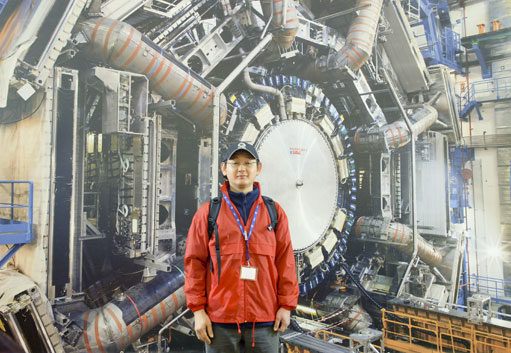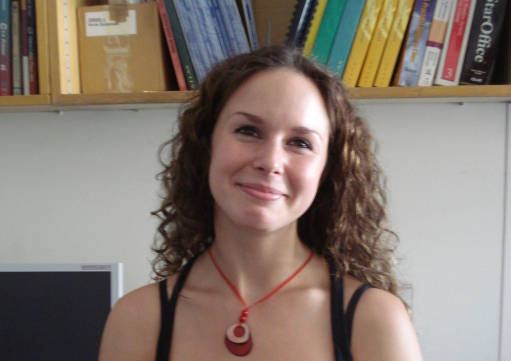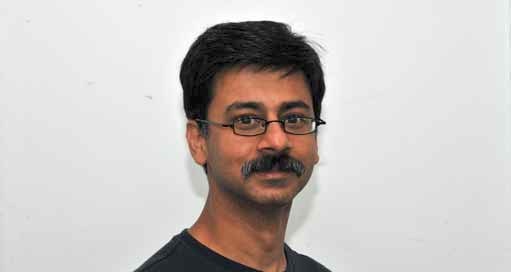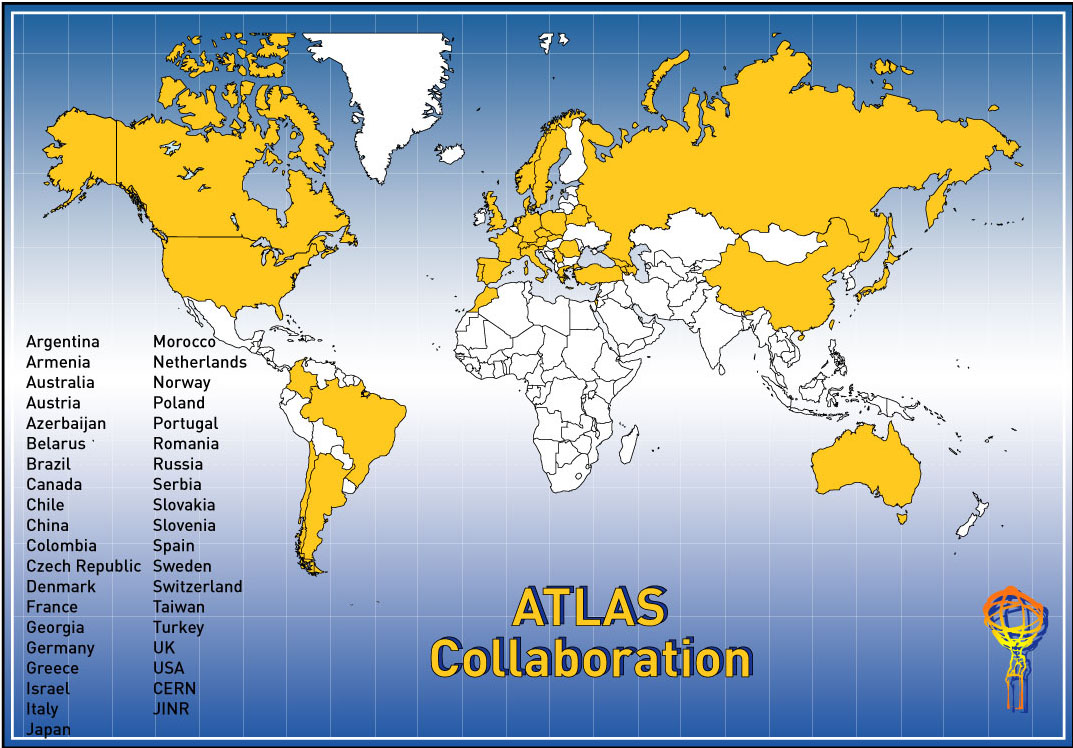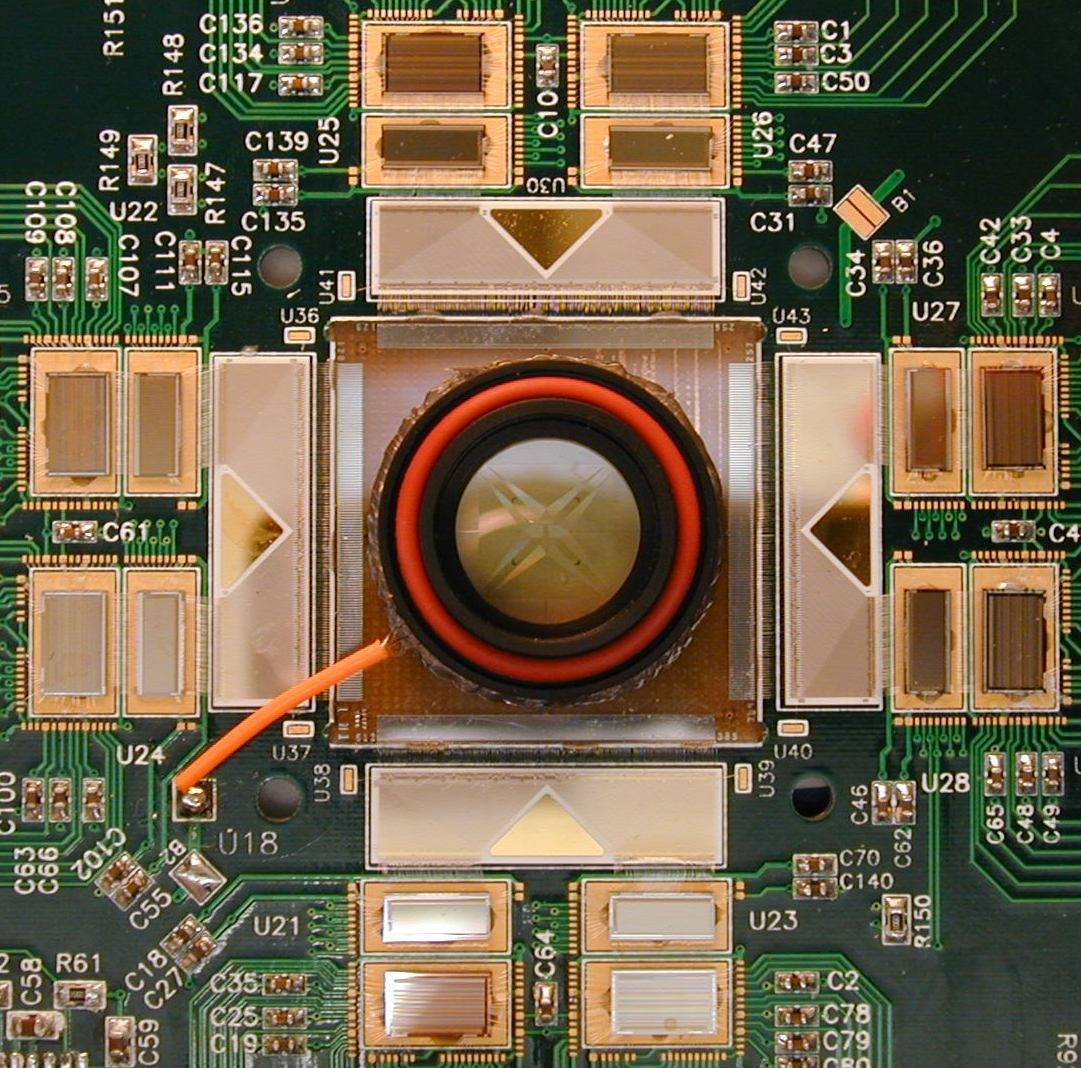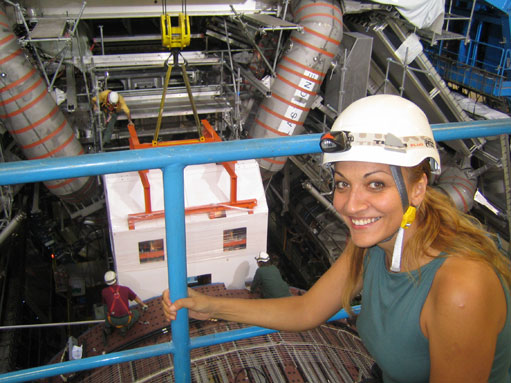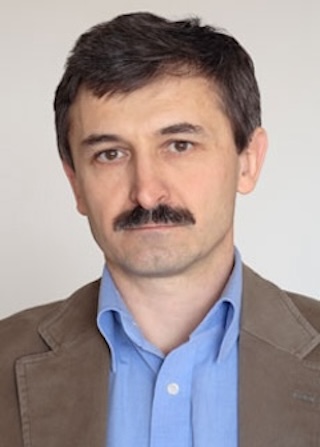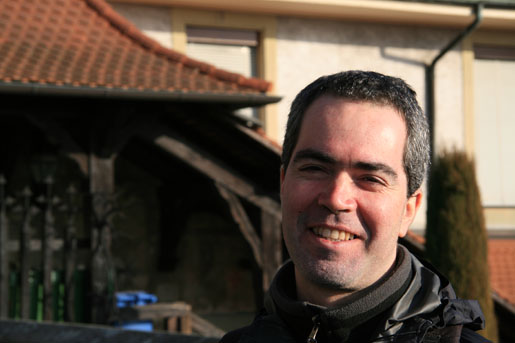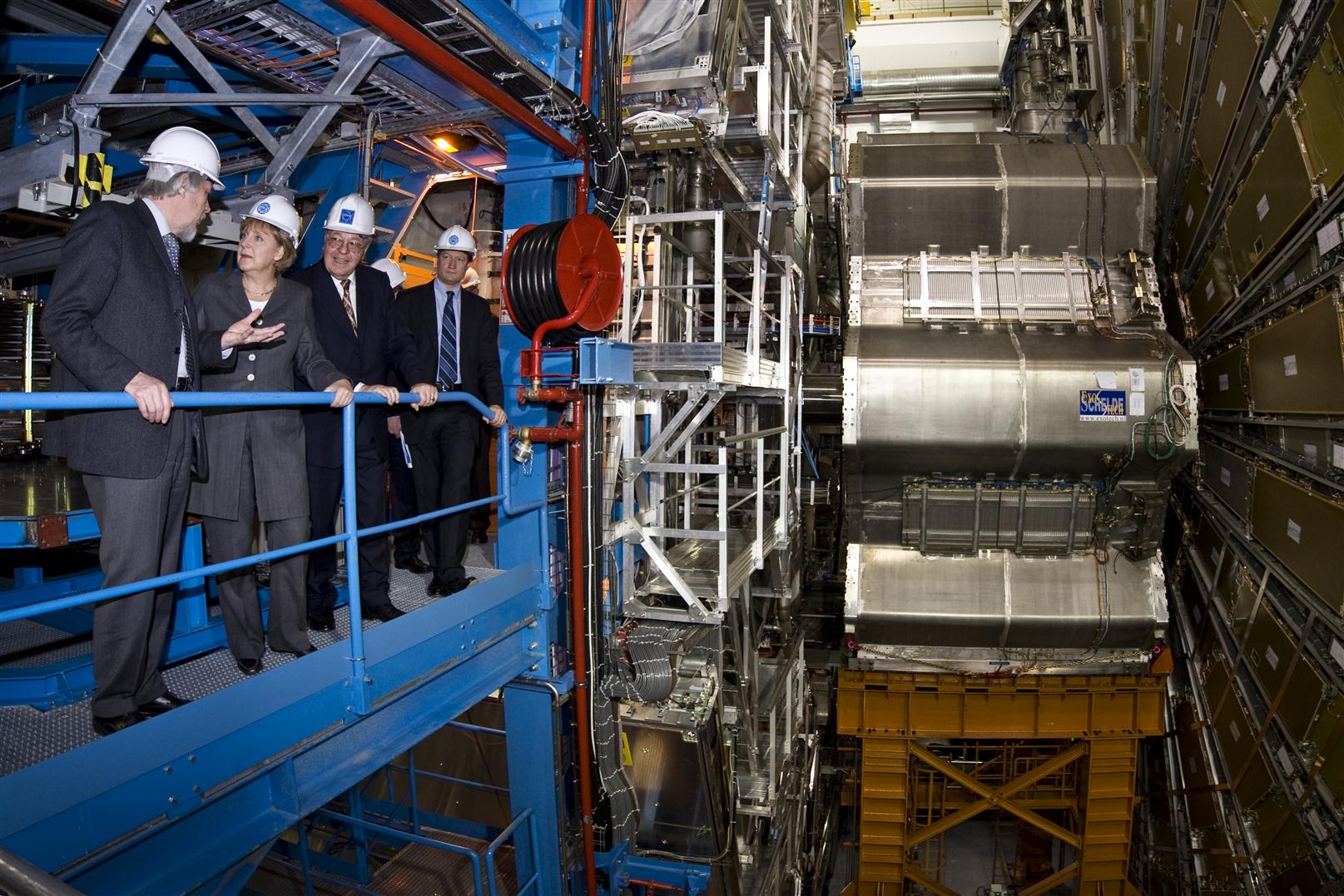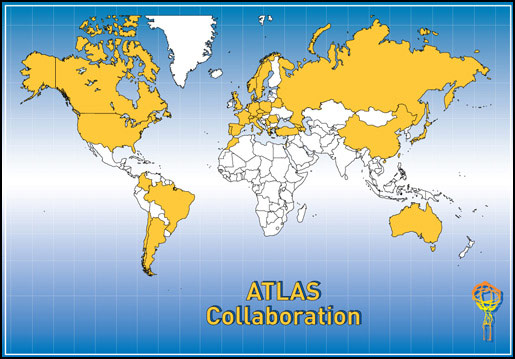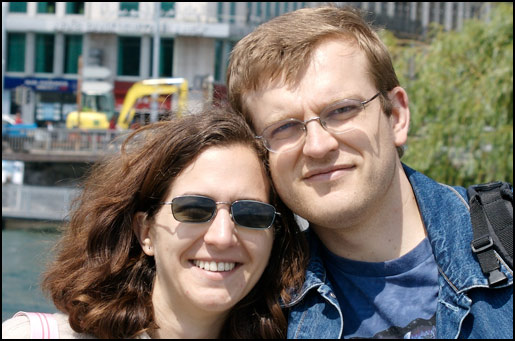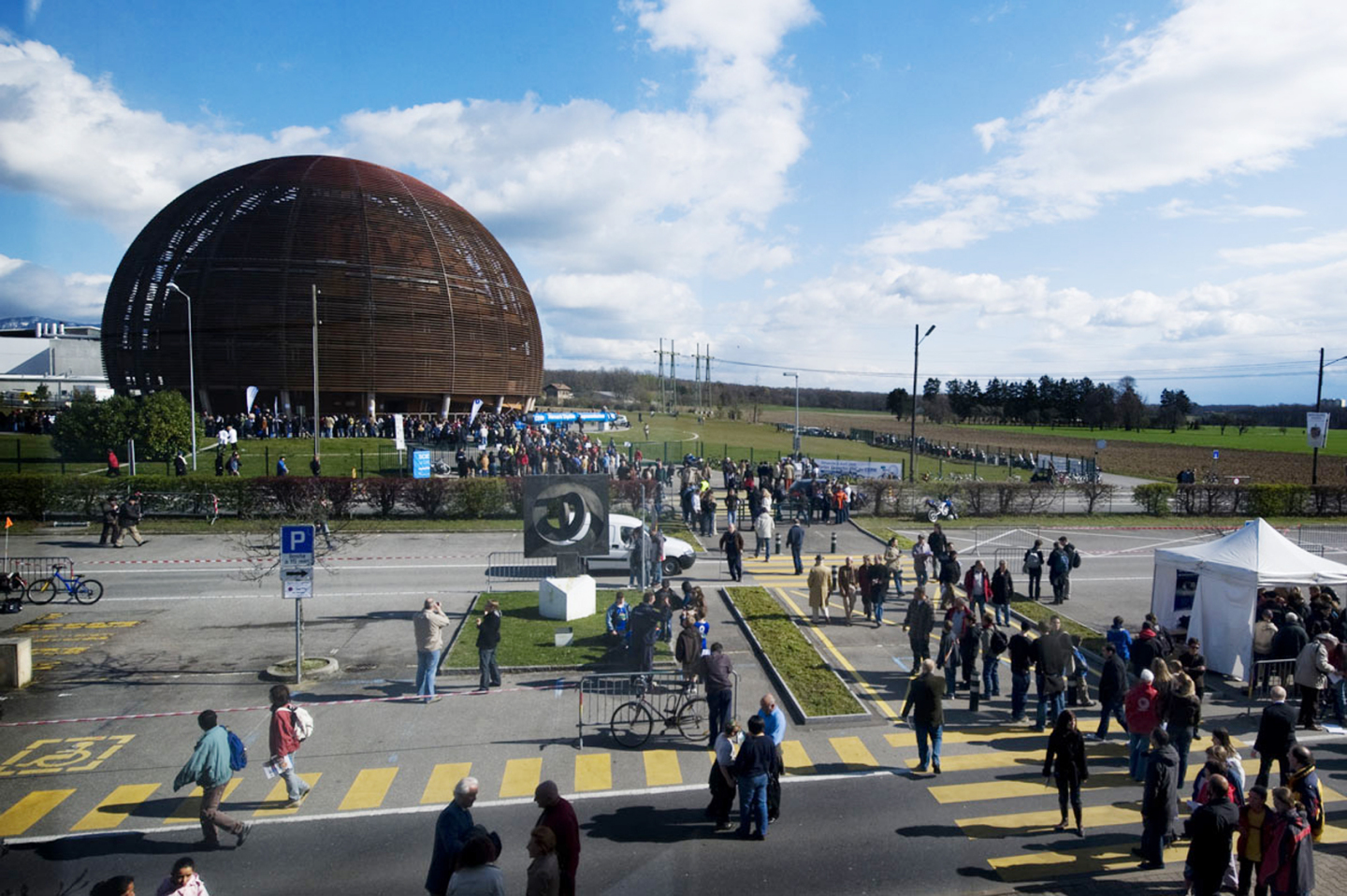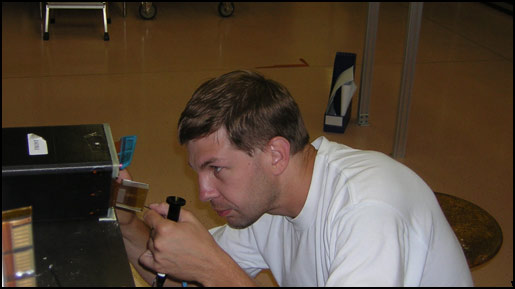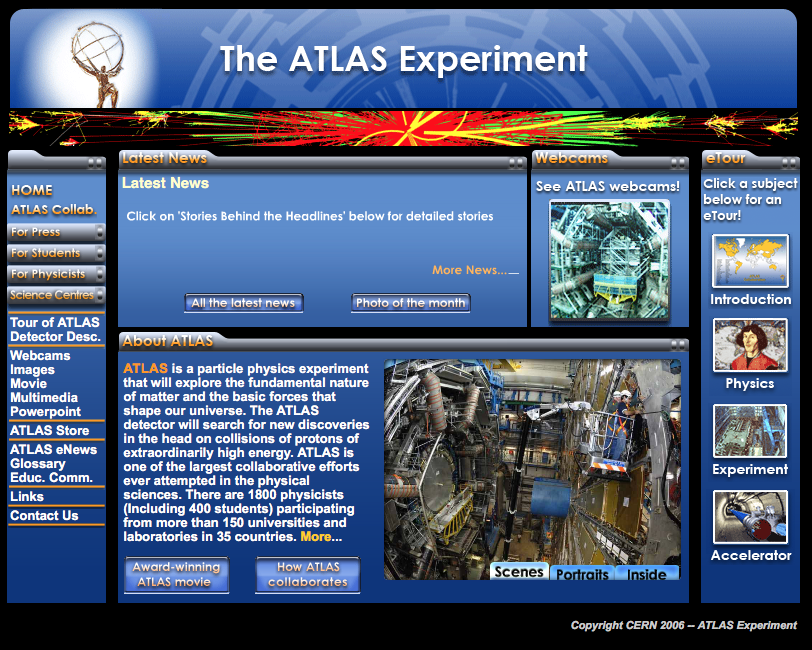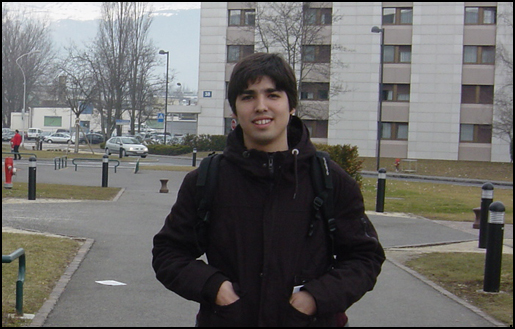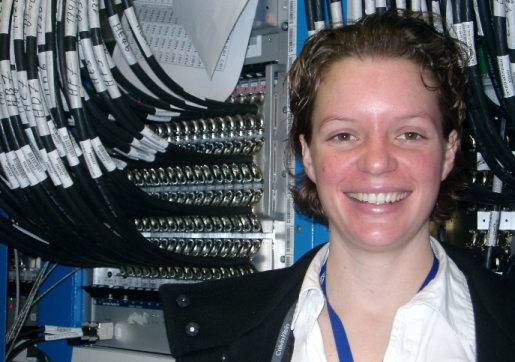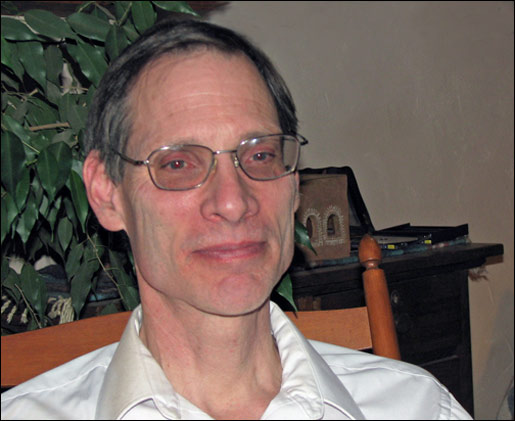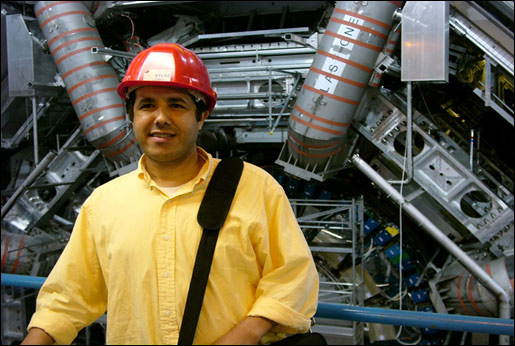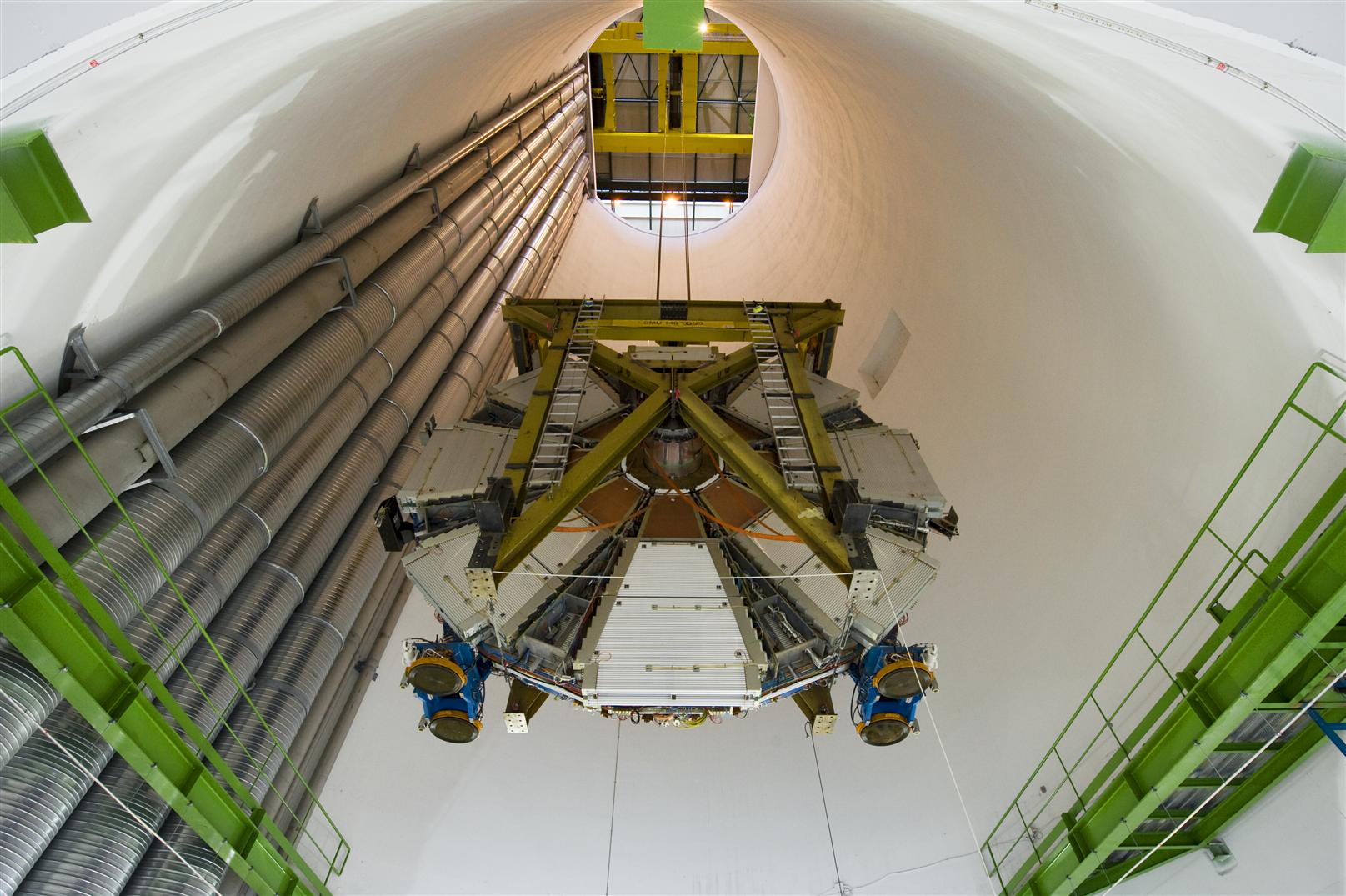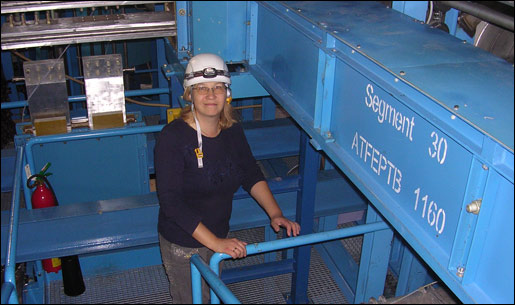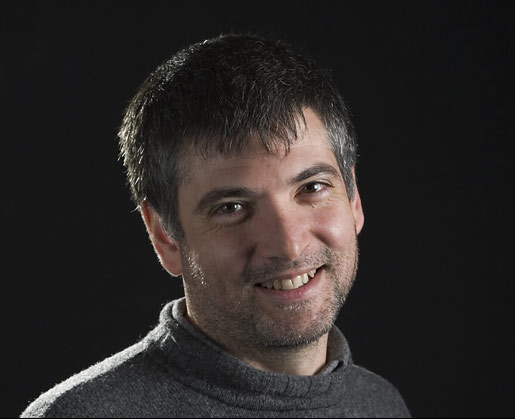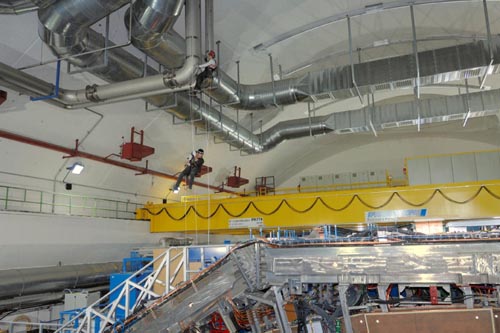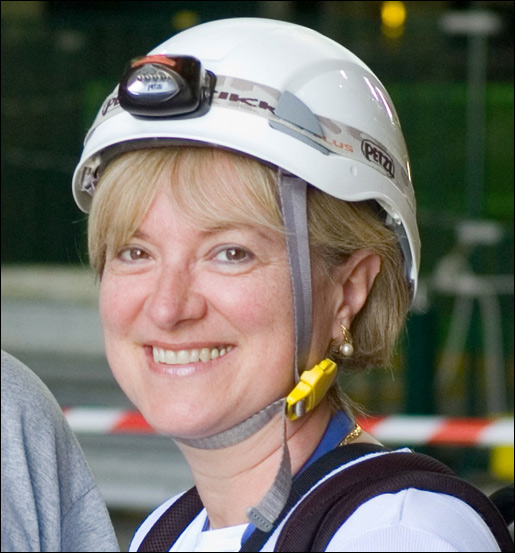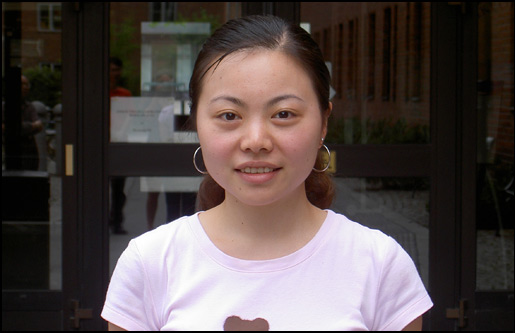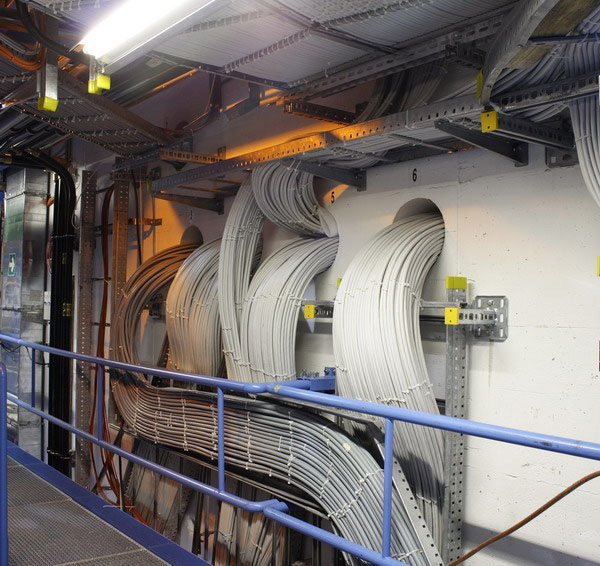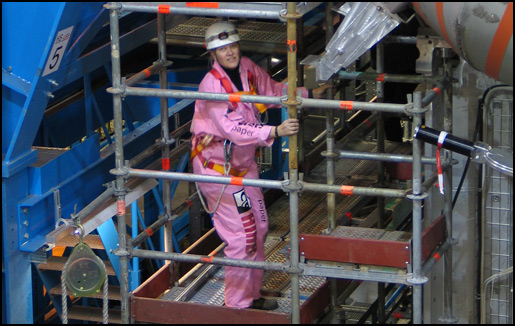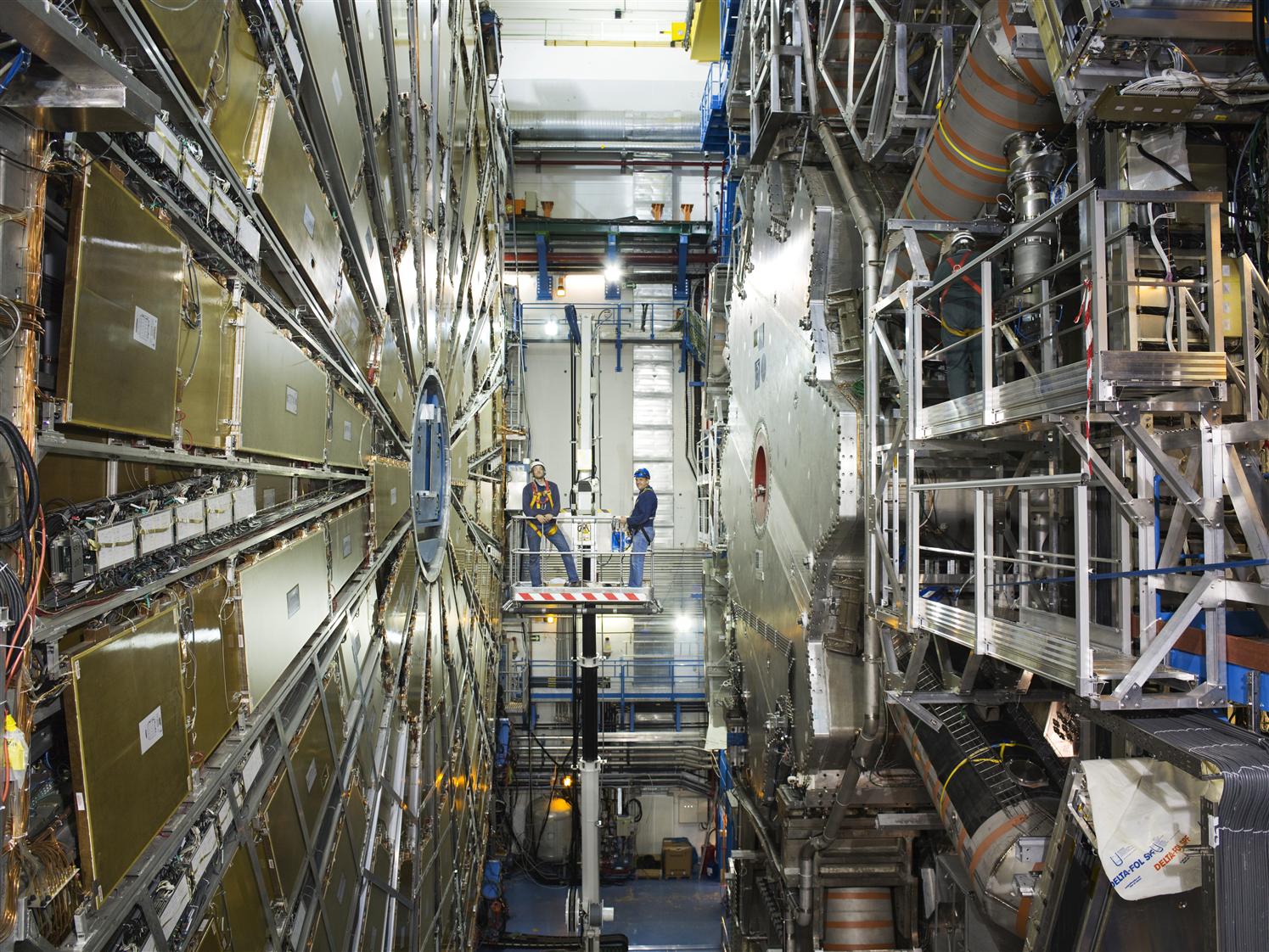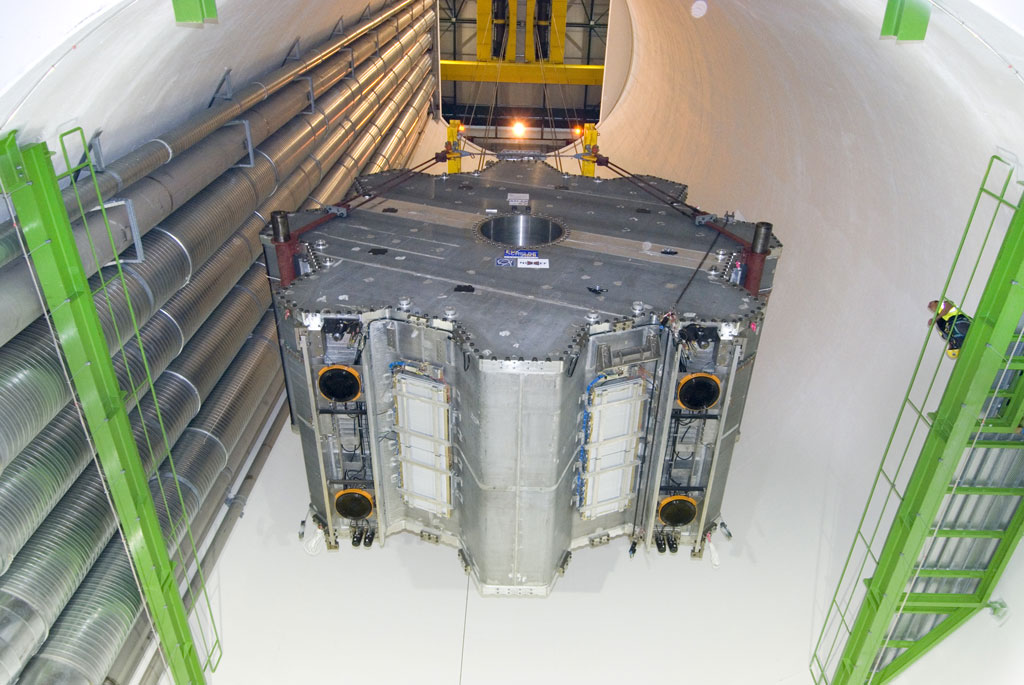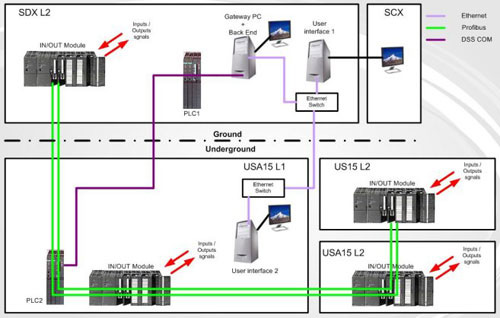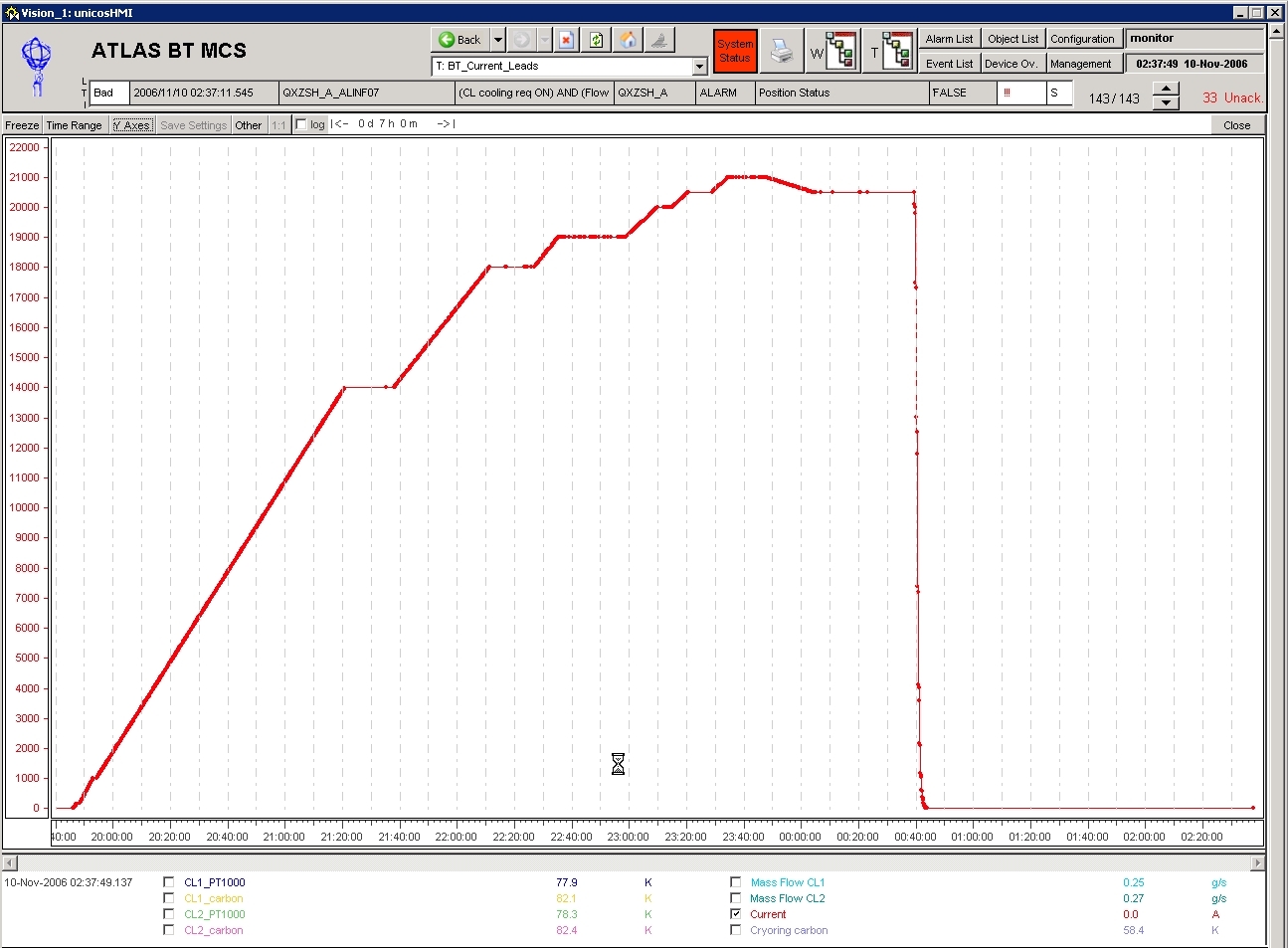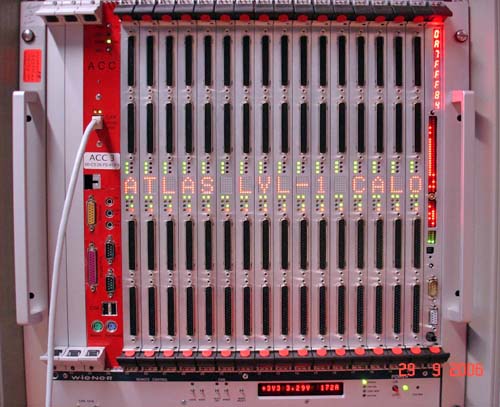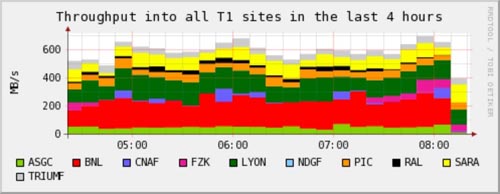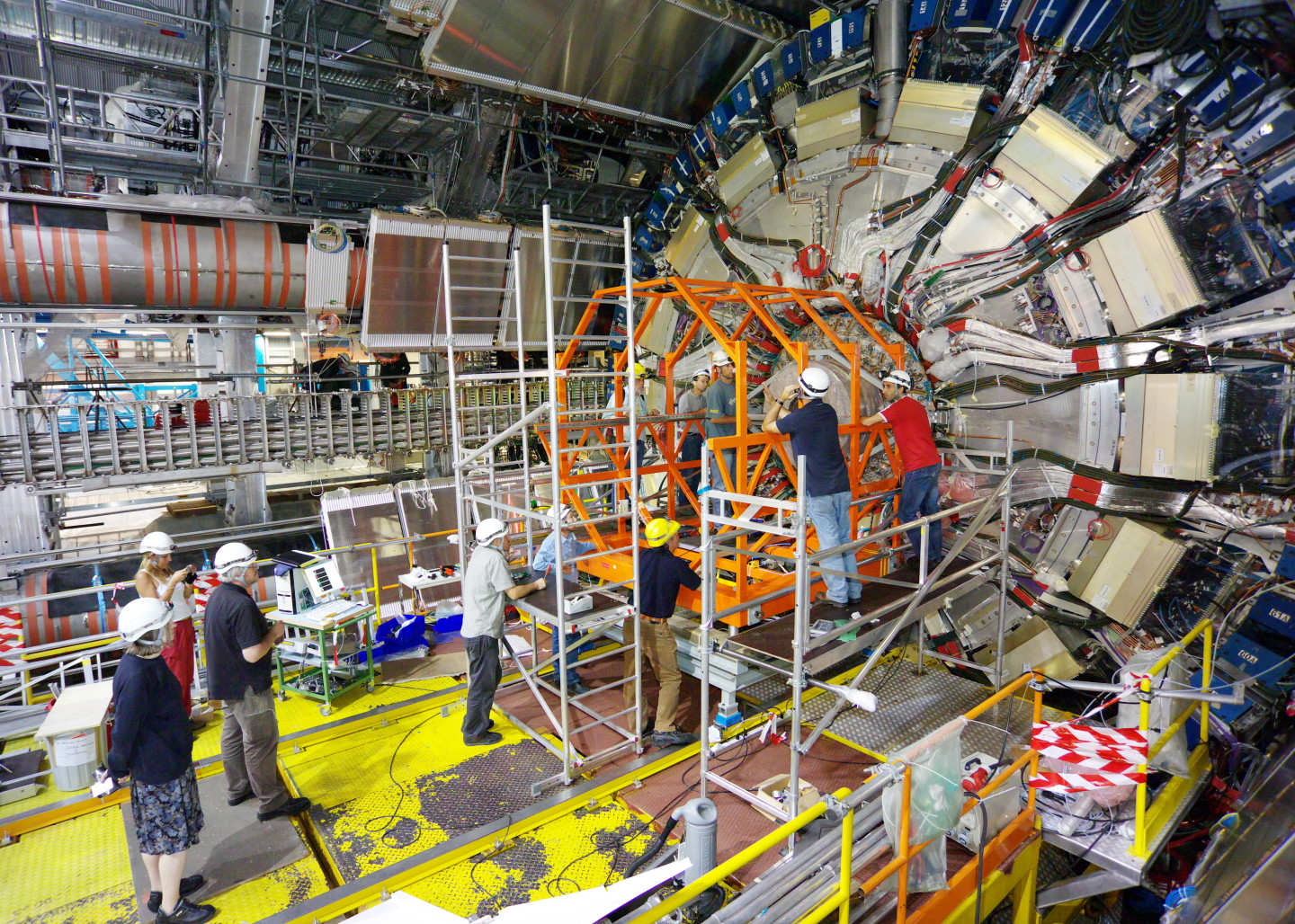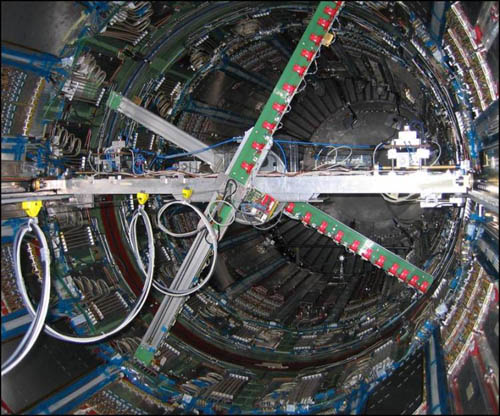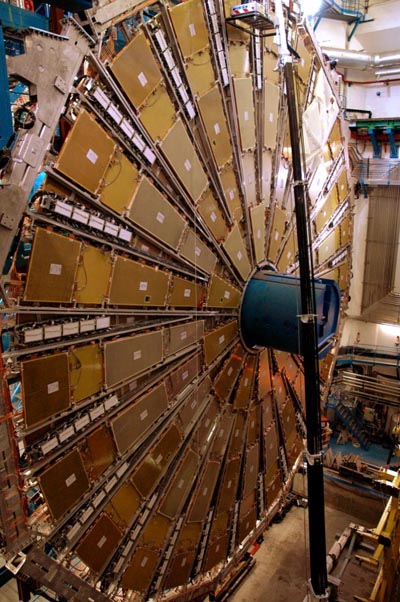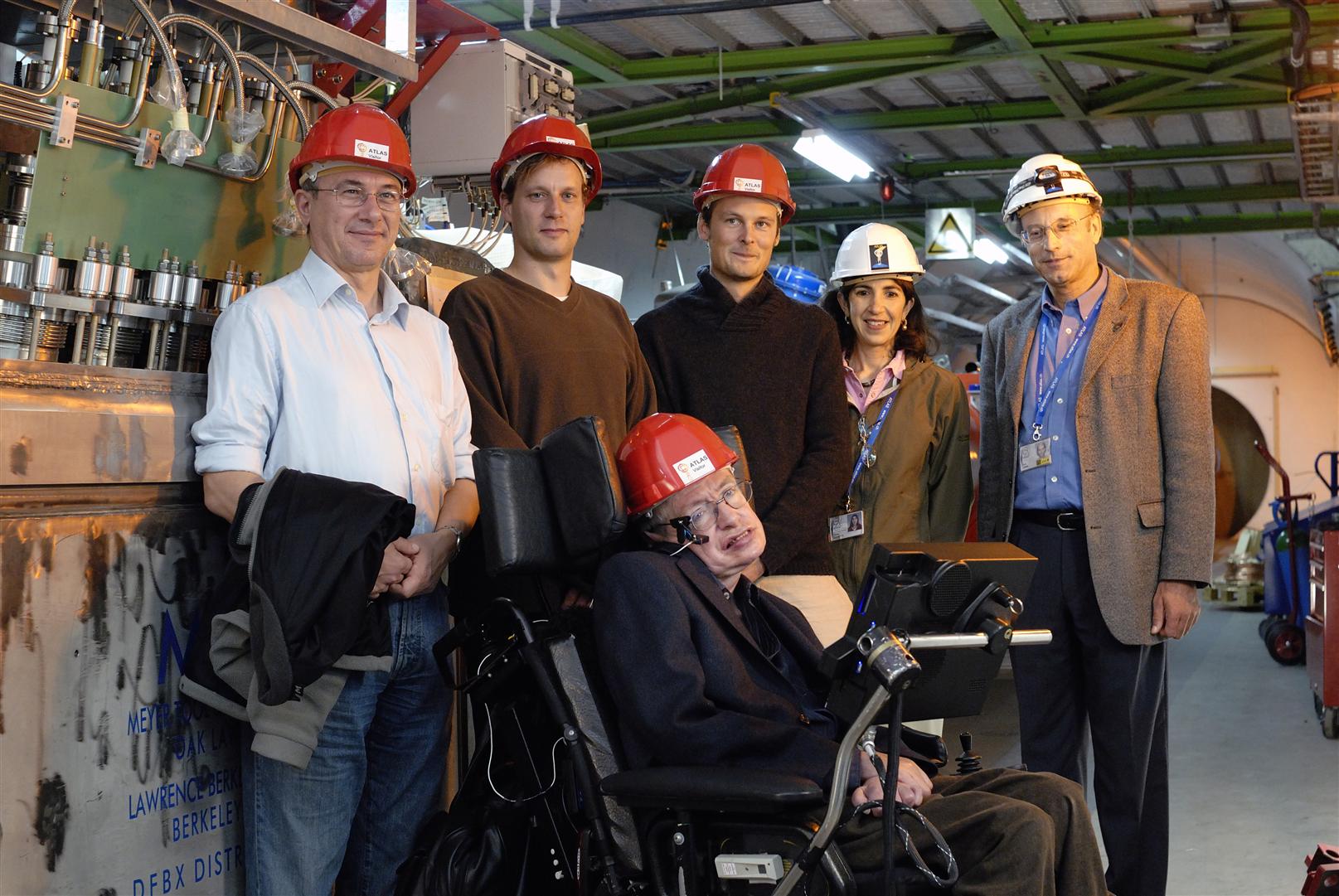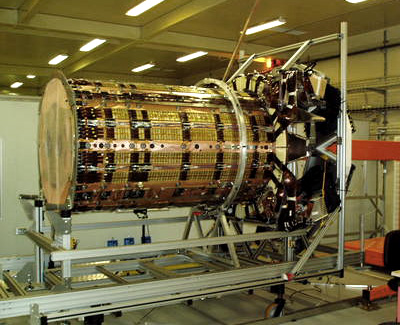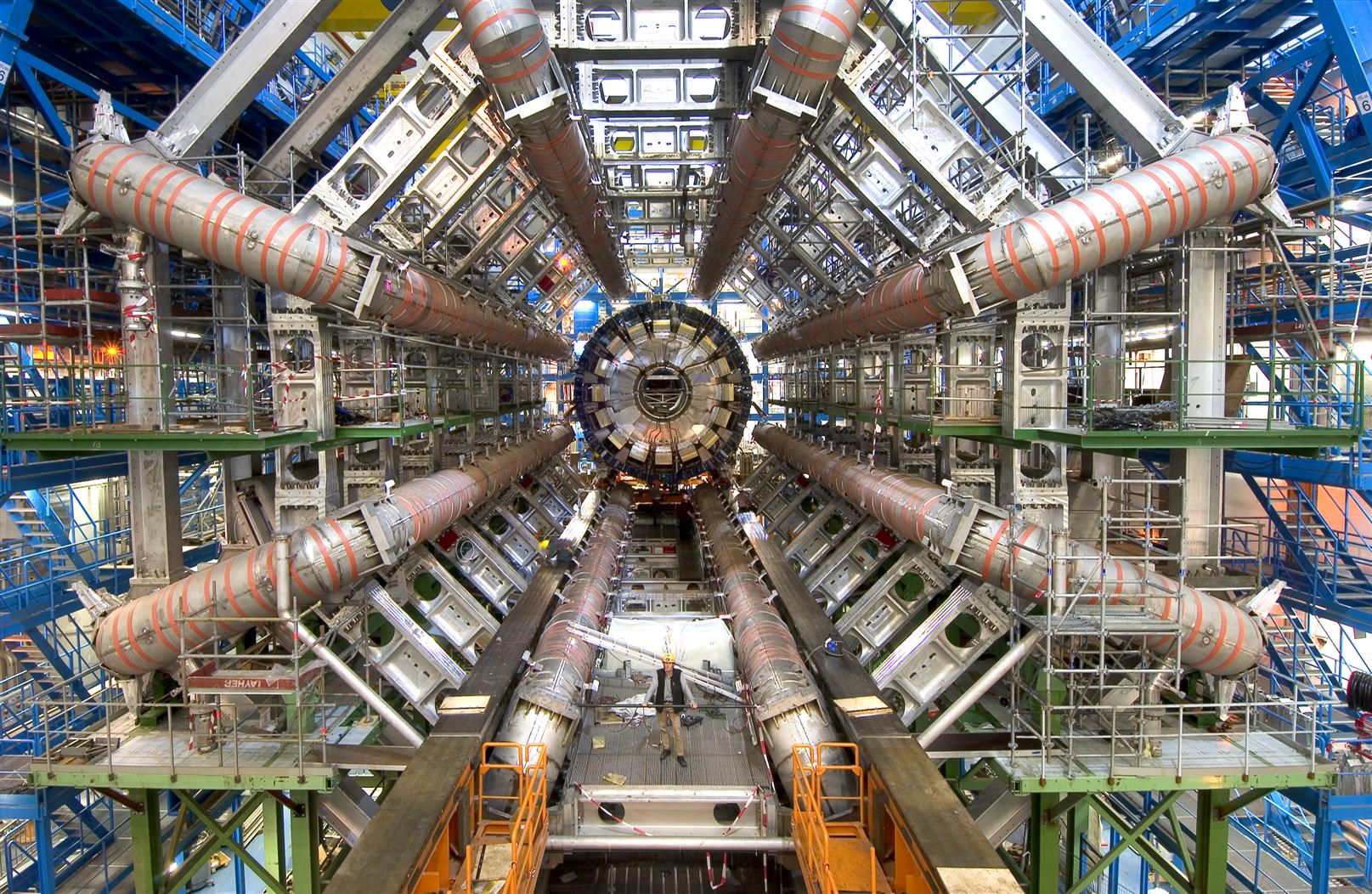Search ATLAS Updates
ATLAS expands its reach into the high-rate frontier
Transforming sensitivity to new physics with single-top-quark events
Searching for flavourful violations of the Standard Model
Feature |
Shining light on the Weak force: ATLAS observes WWγ production
Shape-shifting collisions probe secrets of early Universe
ATLAS takes a closer look at the all-charm tetraquark
Hunting for jet quenching in collisions between oxygen nuclei
Bowling balls vs. bowling pins? ATLAS studies the unique shape of neon ions
Turning the LHC into a Lepton-Proton Collider in the search for leptoquarks
Extending the ARM of ATLAS computing
Elusive romance of top-quark pairs observed at the LHC
ATLAS enters a new era of jet flavour tagging – powered by AI
ATLAS closes in on rare Higgs decays
Bound to be discovered? ATLAS explores top-quark interactions near threshold
Summary of new ATLAS results from EPS-HEP 2025
News |
ATLAS takes a breath of oxygen
News |
Celebrating the outstanding achievements of the ATLAS Collaboration
News |
ATLAS sets record limits on Higgs self-interaction using Run 3 data
Studying the Higgs boson across the scales
Shedding light with jets from the dark side
Exploring the W boson at extreme mass scales
ATLAS Highlights from Quark Matter 2025
News |
ATLAS gets under the hood of the Higgs mechanism
ATLAS Collaboration awarded Breakthrough Prize in Fundamental Physics
A transformative leap in physics: ATLAS results from LHC Run 2
Feature |
The LHC experiment collaborations at CERN receive Breakthrough Prize
ATLAS probes the Higgs mechanism in the scattering of W boson
ATLAS prepares for High-Luminosity LHC
News |
Displaced but not unnoticed: ATLAS in pursuit of Long-Lived Particles
Learning from the Tau
Boosting precision of top-quark mass measurement with ATLAS
Summary of new ATLAS results from Moriond 2025
News |
Steering ATLAS forward with new management
News |
ATLAS celebrates excellence in doctoral research
News |
Massive vector bosons also come in triplets
ATLAS releases first open data from heavy-ion collisions
News |
The measurement of a lifetime: ATLAS releases new precision study of the B meson
ATLAS observes top quarks in lead-lead collisions
Why stop at two? ATLAS hunts for the production of three Higgs bosons
Advancements in particle tagging accelerate the search for new particles
Decoding top quarks: Precision in heavy-flavour partner production
LHC experiments at CERN observe quantum entanglement at the highest energy yet
Unveiling Higgs-boson production properties using tau-lepton pairs
Transforming bottom-jets: machine learning for improved bottom-jets measurements
Breaking through (jet) barriers
Summary of new ATLAS results from BOOST 2024
News |
Breaking “R-parity” in new searches for supersymmetry
ATLAS releases precise new measurement of Higgs boson production in association with top quarks
The beauty and the charm of the Higgs boson
ATLAS probes uncharted territory with improved trigger
Hunting for magnetic monopoles with the Universe's strongest magnetic fields
Summary of new ATLAS results from ICHEP 2024
News |
ATLAS releases 65 TB of open data for research
News |
ATLAS and CMS celebrate a decade of innovation by the RD53 Collaboration
News |
Celebrating excellence at the 7th ATLAS Outstanding Achievement Awards
News |
Jetting into a new era of Higgs studies
ATLAS searches for the building blocks of dark matter
ATLAS dives deeper into di-Higgs: a combined search
News |
Learning by machines, for machines: Artificial Intelligence in the world's largest particle detector
Feature |
ATLAS chases long-lived particles with the Higgs boson
Summary of new ATLAS results from LHCP 2024
News |
Looking for the extended family of the Higgs boson
Menu of the day: Di-Higgs soup!
ATLAS explores Z boson production with heavy-flavour quarks
ATLAS detects electrons and photons with greater clarity
ATLAS mourns the loss of Peter Higgs
News |
ATLAS provides first measurement of the W-boson width at the LHC
First ATLAS measurement of W and Z boson production using Run-3 data
Measuring the delicate balance of lepton flavours
Summary of new ATLAS results from Moriond 2024
News |
ATLAS searches for new particles in familiar decays
ATLAS welcomes new member to its management team
News |
Meet the winners of the 2023 ATLAS Thesis Awards
News |
In conversation with Ana Henriques Correia, a key player in the development of the ATLAS Calorimeter
Portrait |
ATLAS measures rare Higgs boson interaction with tau leptons
Exploring the Weak Force with ATLAS
News |
Searching for supersymmetric needles in the LHC haystack
ATLAS Live talk: Chasing the unknown (with the very well known!) by Dr Ludovica Aperio Bella
News |
From internship to authorship: one student’s unique journey in ATLAS
Blog |
ATLAS Week: through the eyes of students
Blog |
ATLAS gains momentum in study of charmonium
ATLAS and CMS unite to weigh in on the top quark
ATLAS achieves highest-energy detection of quantum entanglement
ATLAS measures strength of the strong force with record precision
Shedding light on Higgs-boson self-interactions
ATLAS Live talk: How does ATLAS study heavy-ion collisions?
News |
A summer for science
For many students, a summer internship is a rite of passage — and a gateway to future jobs. Looking for a valuable glimpse into what a future in physics might hold, dozens of university students from around the world headed to CERN to participate in the Summer Student Programme and engage with cutting-edge scientific research at the ATLAS Experiment. With the support of their supervisors, these students have been deepening their knowledge of particle physics, engineering and computing through challenging projects. These are the stories of 12 of these students.
News |
ATLAS observes top quarks in proton-lead collisions
When jets go dark: identifying elusive "dark jets" at ATLAS
Summary of new ATLAS results from Quark Matter 2023
News |
ATLAS measures ZZ production using Run-3 data and a new slim data format
ATLAS searches for new phenomena using unsupervised machine learning for anomaly detection
Quest for the curious magnetic monopole continues
ATLAS releases comprehensive review of supersymmetric dark matter
Three’s no crowd: ATLAS measures tri-boson production
ATLAS hunts for new physics in the scattering of W bosons
Machine learning is revolutionising our understanding of particle “jets”
Signal and noise: how timing measurements and AI are improving ATLAS event reconstruction
Summary of new ATLAS results from BOOST 2023
News |
ATLAS sets record precision on Higgs boson’s mass
ATLAS measures Higgs boson mass with unprecedented precision
Summary of new ATLAS results from 2023 summer conferences
News |
Giving collisions a new shape: New ATLAS result measures isotropy of LHC events
Evolving ATLAS conditions data architecture for LHC Runs 3 and 4
ATLAS highlights from LHCP 2023
News |
Not a jet all the way: is dark matter hiding in plain sight?
LHC experiments see first evidence for rare Higgs boson decay into two different bosons
LHC experiments see first evidence of a rare Higgs boson decay
New high-precision measurements of W and Z boson properties
ATLAS measures the Higgs boson at 13.6 TeV
Summary of new ATLAS results from LHCP 2023
News |
ATLAS Live: Behind the Scenes at the Control Room
News |
ATLAS highlights from the Moriond 2023 conference
News |
ATLAS & CMS Physicists Recover Lost Higgs Boson
Blog |
Probing fundamental symmetries of nature with the Higgs boson
LHC passes a new milestone as a precision machine
ATLAS confirms mild tension in production of top-quark pairs with a W boson
ATLAS observes the simultaneous production of four top quarks
ATLAS measures the strength of the strong force
New ATLAS result weighs in on the W boson
Improved ATLAS result weighs in on the W boson
Searching from top to bottom for lepton unity
Tau & co.: the search for new physics with the heaviest leptons
Summary of new ATLAS results from 2023 Winter Conferences
News |
In conversation with Kevin Einsweiler, an instrumental voice in ATLAS upgrades
Portrait |
ATLAS management begins new term
News |
Winners of the 2022 ATLAS Thesis Awards announced
News |
ATLAS delivers most precise luminosity measurement at LHC
A new ATLAS for the high-luminosity era
Feature |
ATLAS casts wide net in search for new high-mass particles
ATLAS moves into top gear for Run 3
ATLAS finds evidence of off-shell Higgs boson production and measures Higgs boson’s total width
ATLAS and Seal Storage Technology collaborate on new archival storage
News |
ATLAS celebrates 30 years of collaboration
News |
Using the Higgs boson to search for dark photons
ATLAS Highlights from ICHEP 2022
News |
ATLAS observes potential four-charm tetraquark
ATLAS measures quantum interference when protons bounce off each other
ATLAS measures joint polarisation of W and Z bosons
Summary of new ATLAS results from ICHEP 2022
News |
ATLAS Experiment records “first physics” at new high-energy frontier
LHC Run 3: physics at record energy starts tomorrow
ATLAS explores the self-interaction of the Higgs boson
10 years of discovery with the Higgs boson
ATLAS and CMS release results of most comprehensive studies yet of Higgs boson’s properties
News |
ATLAS Pixel detector readies to tackle Run 3
Exceptional ATLAS collaborators honoured at the Outstanding Achievement Awards
News |
Harnessing a supercomputer for ATLAS
ATLAS measures symmetry of Higgs boson decays to tau leptons
Searches united: ATLAS expands the search for heavy new particles
ATLAS looks for top quarks going against the current
Summary of new ATLAS results from LHCP 2022
The tenth edition of the annual conference on Large Hadron Collider physics (LHCP 2022) begins today in video-conference rooms around the world.
News |
Looking inside trillion degree matter with ATLAS at the LHC
Feature |
Countdown to physics: Beams splash in the ATLAS experiment
News |
Mass matters – but it isn't the only thing!
ATLAS gives new insight into dijet suppression in heavy-ion collisions
ATLAS observes pairs of tau particles in heavy-ion collisions
ATLAS highlights from the Moriond 2022 conference
News |
ATLAS strengthens its search for supersymmetry
Search for new physics in Higgs boson decays with displaced photons
One Higgs boson found – could there be more?
ATLAS Live talk: Artificial Intelligence, Machine Learning and the Higgs boson with Dr. David Rousseau
News |
ATLAS reports first observation of single top-photon production
ATLAS seeks out unusual signatures of long-lived particles
Summary of new ATLAS results from 2022 Winter Conferences
News |
And the ATLAS Thesis Awards go to…
News |
ATLAS event selection system readies for LHC Run 3
Looking for the invisible with the Higgs boson
ATLAS Live talk: Exploring electroweak phenomena with Dr. Karolos Potamianos
News |
ATLAS sees a difference between beauty and charm decays of the Higgs boson
Developing the ATLAS End-Cap Toroids: a personal history
Blog |
Upgraded ATLAS Liquid Argon Calorimeter ready for next LHC operation
ATLAS gives new insight into the internal structure of the proton
Discovery channels join forces for detailed investigation of the Higgs boson
Summary of new ATLAS results from Lepton Photon 2021
The 30th International Symposium on Lepton Photon Interactions at High Energies (Lepton Photon 2021) kicks off today. Explore the ATLAS results that will be presented.
News |
Building an ATLAS gingerbread wonderland
Blog |
New ATLAS result seeks to unravel the charge–flavour mystery
ATLAS without Frontiers
Blog |
Search for elusive “di-Higgs production” reaches new milestone
ATLAS Live talk: Building the Data Haystack with Dr Heather Russell
News |
Detectors for a new era of ATLAS physics
News |
Teaching established software new tricks
Bringing new life to ATLAS data
News |
ATLAS pushes forward the search for a charged Higgs boson
Blog |
ATLAS Live talk: Studying the top quark at the LHC with Dr Maria Moreno Llácer
News |
Searching for new physics using asymmetric top-quark events
ATLAS highlights from the EPS-HEP 2021 conference
News |
Hunting for forbidden decays of the Z boson
ATLAS measures key Higgs boson interaction with high precision
Two Higgs bosons are better than one
Probing new physics with pairs of Higgs bosons
ATLAS reports first observation of WWW production
Summary of new ATLAS results from EPS-HEP 2021
The European Physical Society Conference on High Energy Physics (EPS-HEP 2021) kicks off today. Explore the ATLAS results that will be presented.
News |
The Last Quark
Feature |
Shining light on the strong interaction: ATLAS measures photon pair production
Live from the ATLAS experiment
News |
Studying “Little Bangs”: exotic collisions probe the size of quark-gluon plasma
ATLAS Live talk: Deciphering the Higgs boson with Dr Hongtao Yang
News |
ATLAS celebrates results of 1000 collision papers
News |
The hunt for higgsinos reaches new limits
Heavyweight champions: a search for new heavy W’ bosons with the ATLAS detector
ATLAS measures the polarisation of top quarks and antiquarks
New search for charming decay of the Higgs boson
Summary of new ATLAS results from LHCP 2021
The ninth annual conference on Large Hadron Collider physics (LHCP 2021) begins today in video-conference rooms around the world.
News |
ATLAS Live talk: How to study matter at a trillion degrees with Dr. Anne Sickles
News |
First ATLAS New Small Wheel nears completion
News |
ATLAS Live talk: From Data to Discovery with Dr. James Catmore
News |
Supporting talented students with the ATLAS PhD Grant
News |
In conversation with John Rutherfoord, a leading designer of the ATLAS Calorimeter
Portrait |
Building community in virtual events
Blog |
ATLAS highlights from the Moriond 2021 conferences
News |
Twice the Higgs, twice the challenge
ATLAS finds further confirmation of evidence for four top quark process
Better late than never: ATLAS searches for late-decaying new particles
Deeper insight into Higgs boson production using W bosons
Summary of new ATLAS results from Moriond 2021
News |
The supersymmetric bottom quark and its friends
Studying top quarks at high and not-so-high energies
The power of position: aligning the ATLAS muon spectrometer
ATLAS: now under new management
News |
Planning an event during a pandemic
Blog |
Students step into the limelight: ATLAS awards excellent PhD theses
News |
ATLAS recognises the outstanding achievements of Collaboration members
News |
ATLAS finds evidence of a rare Higgs boson Dalitz decay to two leptons and a photon
Teaching university students with real ATLAS data
Blog |
2020: an unprecedented year in review
News |
Studying the Higgs boson in its most common – yet uncommonly challenging – decay channel
ATLAS Live talk: How elementary particles are detected with Prof. Daniela Bortoletto
News |
ATLAS releases new open software
The ATLAS Collaboration has just released a collection of 200 software packages that make up the Trigger and Data Acquisition System (TDAQ). With this new release, most ATLAS software is now open – reinforcing the Collaboration’s ongoing commitment to open science.
News |
Refining the picture of the Higgs boson
A new result from the ATLAS Collaboration, released for the Higgs 2020 conference, aims at enriching the Higgs picture by studying its WW* decays.
ATLAS Live talk: Searching for Dark Matter with Dr. Christian Ohm
News |
ATLAS uses the Higgs boson as a tool to search for Dark Matter
One of the great unexplained mysteries is the nature of dark matter. So far, its existence has only been established through gravitational effects observed in space; no dark-matter particles with the needed properties have (yet) been detected. Could the Higgs boson be the key to their discovery?
Higgs boson probes for new phenomena
ATLAS scientists are implementing a new strategy in the search for physics beyond the Standard Model – one that combines measurements across the full spectrum of the Collaboration's research programme.
Leptons at a distance: a new search for long-lived particles
ATLAS researchers are broadening their extensive search programme to look for more unusual signatures of unknown physics, such as long-lived particles. A theory that naturally motivates long-lived particles is supersymmetry (SUSY). A new search from the ATLAS Collaboration – released this week for the 5th International Conference on Particle Physics and Astrophysics (ICPPA-2020) – looks for the superpartners of the electron, muon and tau lepton
Unraveling Nature's secrets: vector boson scattering at the LHC
In 2017, the ATLAS and CMS Collaborations announced the detection of a never-before-observed process: vector boson scattering.
Feature |
Exploring the “coolest” mock-up
It was in 2014, just a few months after my transition from ALICE to ATLAS, that I saw the mock-up for the first time: a full-scale wooden reproduction of the central portion of the ATLAS experiment, measuring some 8 metres high and wide.
Blog |
Z bosons zoom through quark–gluon plasma as jets quench
With new data from the LHC, ATLAS physicists have measured jet-quenching phenomena in the quark–gluon plasma with help of Z bosons.
ATLAS highlights presented at the world's largest particle-physics conference
As major players in the field of particle physics, the LHC collaborations contributed many new results, most of which exploited the full Run-2 dataset, recorded in 2015 to 2018. ATLAS physicists contributed 35 new results, and gave 85 talks in the parallel and plenary sessions. Their contributions spanned a wide range of topics, from precision measurements and searches for new phenomena to detector performance and R&D, as well as diversity and outreach.
News |
Rare phenomenon observed by ATLAS features the LHC as a high-energy photon collider
During the International Conference on High-Energy Physics (ICHEP 2020), the ATLAS Collaboration presented the first observation of photon collisions producing pairs of W bosons, elementary particles that carry the weak force, one of the four fundamental forces. The result demonstrates a new way of using the LHC, namely as a high-energy photon collider directly probing electroweak interactions. It confirms one of the main predictions of electroweak theory – that force carriers can interact with themselves – and provides new ways to probe it.
ATLAS observes W-boson pair production from light colliding with light
The ATLAS Collaboration has announced the first observation of two W bosons produced from the scattering of two photons — particles of light – at the International Conference on High-Energy Physics (ICHEP 2020).
CERN experiments announce first indications of a rare Higgs boson process
The ATLAS and CMS experiments at CERN announce new results which show that the Higgs boson decays into two muons. These new results have pivotal importance for fundamental physics because they indicate for the first time that the Higgs boson interacts with second-generation elementary particles.
New ATLAS result marks milestone in the test of Standard Model properties
The ATLAS Collaboration has released a new study into a key building block of matter: leptons. This type of particle comes in three different families (flavours) and, according to the Standard Model, should follow strict rules. For instance, except for their mass, leptons of different flavours have identical properties – a feature known as lepton flavour universality. This was recently corroborated by a key measurement of the W-boson decay rates into leptons by the ATLAS Collaboration.
New measurements of the Higgs boson find strength in unity
Physicists can study Higgs-boson couplings in several ways: by measuring the rates of different Higgs boson production mechanisms and decays, and also by studying the particle’s kinematic properties. The ATLAS Collaboration has just presented precise new measurements of these key quantities. Several of these measurements were updated to use the full LHC Run 2 dataset (2015–2018), to provide the best precision to date.
Looking forward: ATLAS measures proton scattering when light turns into matter
Today, at the International Conference for High Energy Physics (ICHEP 2020), the ATLAS Collaboration announced first results using the ATLAS Forward Proton (AFP) spectrometer. With this instrument, physicists directly observed and measured the long sought-after prediction of proton scattering when particles of light turn into matter.
ATLAS probes interactions between heavyweights of the Standard Model
In the contest for the heaviest known elementary particle, the top quark and Z boson rank first and third, respectively. When a proton–proton collision produces a top-quark pair together with a Z boson – a process known as ttZ production – their total mass can reach an impressive 440 GeV! The discovery of this highly energetic process thus required the record collision energy and rate of the LHC; no previous collider could come close.
Jetting into the dark side: a precision search for dark matter
The nature of dark matter remains one of the great unsolved puzzles of fundamental physics. Many theoretical scenarios postulate that dark matter particles could be produced in the intense high-energy proton–proton collisions of the LHC. While the dark matter would escape the ATLAS detector unseen, it could occasionally be accompanied by a visible jet of particles radiated from the interaction point. Today, at the International Conference in High-Energy Physics (ICHEP 2020), ATLAS presented a new search for novel phenomena in collision events with jets and high missing transverse momentum (MET).
Summary of new ATLAS results for ICHEP 2020
Since the 1950s, one conference has stayed circled in red on every physicist's calendar: the International Conference on High-Energy Physics (ICHEP). The fortieth edition of ICHEP kicks off today, bringing together particle physicists, astrophysicists and accelerator scientists to share the latest news in their fields. Originally planned as an in-person event in Prague, ICHEP2020 will instead be the very first all-virtual edition of the conference.
News |
ATLAS one step closer in the search for rare Higgs boson decays to muons
The ATLAS Collaboration has released a new paper on the search for the Higgs-boson decay to a pair of muons. The new study uses the entire dataset collected by the ATLAS experiment during Run 2 of the LHC (2015–2018) to give a first hint of this elusive process.
Summary of ATLAS results presented at BOOST 2020
The first all-virtual BOOST workshop kicks off today, bringing together experts from the LHC experiments and the theory community. This is the twelfth conference on "Boosted Object Phenomenology, Reconstruction and Searches in High-Energy Physics" (BOOST 2020), hosting plenary-style talks and virtual poster presentations on the latest developments in hadronic physics.
News |
Keeping the ATLAS Inner Detector in perfect alignment
How do you track a particle’s trajectory when your detector keeps moving? What if you find slight biases in your detector’s measurements? These were the challenges faced by the ATLAS Inner Detector during Run 2 of the LHC (2015–2018). Located at the heart of the experiment, the Inner Detector provides efficient and precise measurements of charged-particle tracks. In a new paper released today, physicists describe the complex solutions they developed to align the Inner Detector, ensuring the continued accuracy of the experiment.
Connecting during COVID-19: Updates from the (physically but not socially distanced) Early Career Scientist Board
As a community, we need to stay in contact, remain motivated and learn from each other's experiences. The work-from-home situation is one to which everyone has to adjust, balancing personal and professional lives, while accepting the effect of the ongoing pandemic on society. Despite these challenges, the ATLAS Early Career Scientist Board (ECSB) developed a series of events to boost the morale of the ECS community and to help people connect, even when they are sitting miles away from each other. I joined the ATLAS ECSB in March 2020, and to be honest, it has felt great to be a part of something that makes a difference in people’s lives – even if it’s just to laugh together.
Blog |
You want me to present a poster…. remotely?
Though an academic affair, poster sessions are also an opportunity to network and socialise with colleagues. Typically, a large hall will be filled with rows of poster stands, their authors standing anxiously beside them, anticipating whatever question may be posed by a passer-by. Finger food and drinks are usually served. Sometimes these encounters lead to in-depth discussions about a new result but, more often than not, they just serve as ice-breakers for would-be colleagues, or a kind of “physics buffet” for conference attendees to sample subjects outside their specialization. Could such an experience be recreated in an online conference?
Blog |
In conversation with Claudia Gemme, an influential voice in ATLAS detector upgrades
Claudia Gemme, researcher at INFN in Genova, has had a varied career with the ATLAS Collaboration. From her work on the construction and commissioning of the ATLAS Pixel detector, to a career in physics analysis and the ATLAS Publication Committee, she now leads a key upgrade of the ATLAS detector: the ATLAS Inner Tracker (ITk).
Portrait |
Physicists gather online for the Large Hadron Collider Physics conference
The eighth Large Hadron Collider Physics (LHCP 2020) conference concluded today, 30 May, in Zoom rooms around the world. Instead of descending on Paris to meet, particle physicists held the conference fully online for the first time. As a result, LHCP 2020 welcomed some 1300 registered participants – nearly triple its previous record of attendance. A bumper crop of new ATLAS results were prepared for the conference covering a broad range of topics, from precise measurements of the Standard Model to novel searches for new physics. These new results probed the full dataset collected during Run 2 of the LHC (2015-2018) – a proven gold mine for ATLAS’ rich physics programme.
News |
ATLAS Live talk: Physics Through the Looking Glass with Dr. Laura Jeanty
News |
New ATLAS result addresses long-standing tension in the Standard Model
This week, at the LHCP 2020 conference, the ATLAS Collaboration presented a precise measurement of lepton flavour universality using a brand-new technique. Physicists examined collision events where pairs of top quarks decay to pairs of W bosons, and subsequently into leptons. They then measured the relative probability that this lepton is a muon or a tau-lepton – a ratio known as R(τ/μ). According to the Standard Model, R(τ/μ) should be unity – but there has been long-standing tension with this prediction, ever since it was measured at the Large Electron-Positron (LEP) collider in the 1990s.
Fantastic decays and where to find them
Supersymmetry offers an elegant solution to the limitations of the Standard Model, extending it to give each elementary particle a “superpartner” with different spin properties. Yet SUSY also contains interactions that would cause phenomena not observed in nature, such as the decay of protons. This has traditionally been avoided by requiring the conservation of a property known as “R-parity” (or “matter-parity”), which incorporates the baryon number, lepton number and spin. ATLAS physicists are also considering SUSY models with R-parity violation (or “RPV”), which would allow the lightest SUSY particle to be observed decaying directly into Standard Model particles.
ATLAS finds evidence of spectacular four-top quark production
In a new result released today, the ATLAS Collaboration announced strong evidence of the production of four top quarks. This rare Standard Model process is expected to occur only once for every 70 thousand pairs of top quarks created at the LHC and has proven extremely difficult to measure.
ATLAS measures light scattering on light and constrains axion-like particles
Light-by-light scattering is a very rare phenomenon in which two photons – particles of light – interact, producing another pair of photons. Direct observation of this process at high energy had proven elusive for decades, until it was first seen by the ATLAS Collaboration in 2016 and established in 2019. In a new measurement, ATLAS physicists are using light-by-light scattering to search for a hyped phenomenon beyond the Standard Model of particle physics: axion-like particles.
Summary of new ATLAS results from LHCP 2020
The eighth annual conference on Large Hadron Collider physics (LHCP 2020) kicks off today in video-conference rooms around the world. This week-long event is usually an opportunity for physicists from around the world to meet in person and share the latest news from their LHC experiments. This year, due to the COVID-19 pandemic, the conference is being held online.
News |
Machine learning qualitatively changes the search for new particles
The ATLAS Collaboration is exploring novel ways to search for new phenomena. Alongside an extensive research programme often inspired by specific theoretical models – ranging from quantum black holes to supersymmetry – physicists are applying new model-independent methods to broaden their searches. ATLAS has just released the first model-independent search for new particles using a novel technique called “weak supervision”.
Probing Dark Matter with the Higgs boson
Could the Higgs boson decay into dark matter? As dark matter does not interact directly with the ATLAS detector, physicists look for signs of “invisible particles”, inferred through momentum conservation of the proton–proton collision products. The ATLAS Collaboration searched the full LHC Run-2 dataset, setting the strongest limits on the Higgs boson decaying to invisible dark-matter particles to date.
ATLAS searches for rare Higgs boson decays into a photon and a Z boson
The ATLAS Collaboration has just released a new result searching for the Higgs-boson decay to a Z boson and a photon. This result uses the full LHC Run-2 dataset, analysing almost four times as many Higgs-boson events as the previous ATLAS result.
Novel probes of the strong force: precision jet substructure and the Lund jet plane
A hallmark of the strong force at the Large Hadron Collider (LHC) is the dramatic production of collimated jets of particles when quarks and gluons scatter at high energies. Particle physicists have studied jets for decades to learn about the structure of quantum chromodynamics – or QCD, the theory of the strong interaction – across a wide range of energy scales. Recent theoretical and experimental advancements in their study is now allowing ATLAS physicists to test the strong force in new ways.
Searching for new sources of matter–antimatter symmetry breaking in Higgs boson interaction with top quarks
When a particle is transformed into its antiparticle and its spatial coordinates inverted, the laws of physics are required to stay the same – or so we thought. This symmetry – known as “CP symmetry” (Charge conjugation and Parity symmetry) – was considered to be exact until 1964, when a study of the kaon particle system led to the discovery of “CP violation”. In a new result presented today, the ATLAS Collaboration performed a direct test of the CP properties of the interaction between the Higgs boson and top quarks. The result is based on an analysis of the full LHC Run-2 dataset, looking at collision events where the Higgs boson is produced in association with one or two top quarks, and in turn decays into two photons.
Measuring the beauty of the Higgs boson
Two years ago, the Higgs boson was observed decaying to a pair of beauty-quarks (H→bb), moving its study from the “discovery era” to the “measurement era”. In new results presented today, the ATLAS Collaboration studied the full LHC Run-2 dataset to give an updated measurement of H→bb, where the Higgs boson is produced in association with a vector boson (W or Z).
ATLAS Collaboration enters active “Safe Mode”
The global health crisis caused by COVID-19 has impacted every aspect of life. Much of the world’s population are sheltering in place, with ATLAS Collaboration members similarly affected.
News |
ATLAS PhD Grant continues its support of up-and-coming talents
At an award ceremony in the Globe of Science and Innovation, the ATLAS Collaboration celebrated the new recipients of the ATLAS PhD Grant: Prajita Bhattarai, Hassnae El Jarrari and Albert Kong.
News |
ATLAS Thesis Awards: And the winners are…
With over 5000 members in 181 institutions, contributions to the ATLAS Collaboration can take a variety of forms. Every February, ATLAS celebrates the outstanding work of one particular set of members: its PhD students.
News |
Serving up new winter recipes with the ATLAS Early Career Scientist Board
In 2019, I joined the ATLAS Early Career Scientist Board (ECSB): a special advisory group dedicated to assisting the ATLAS Collaboration in building an environment where the full scientific potential of scientists at the start of their career can be realised. The board organises several activities for the ATLAS community (you may have seen all of our summer activities described in this blog). I was actively involved in the winter activities. They were all fantastic experiences to improve social relationships in a 5000-people collaboration.
Blog |
25 years on: a single top quark partners with the Z boson
A quarter-century after its discovery, physicists at the ATLAS Experiment are gaining new insight into the heaviest-known particle: the top quark. The huge amount of data collected during Run 2 of the LHC (2015-2018) has allowed physicists to study rare production processes of the top quark in great detail, including its production in association with other heavy elementary particles.
Searching for natural supersymmetry using novel techniques
In new results presented today at CERN, the ATLAS Experiment’s search for supersymmetry (SUSY) reached new levels of sensitivity. The results examine a popular SUSY extension studied at the Large Hadron Collider (LHC): the “Minimal Supersymmetric Standard Model” (MSSM), which includes the minimum required number of new particles and interactions to make predictions at the LHC energies.
ATLAS Experiment releases 13 TeV Open Data for Science Education
The ATLAS Collaboration at CERN has just released the first open dataset from the Large Hadron Collider’s (LHC) highest-energy run at 13 teraelectronvolts (TeV). The new release is specially developed for science education, underlining the Collaboration’s long-standing commitment to students and teachers using open-access ATLAS data and related tools.
In conversation with Philippe Farthouat, a driving force behind ATLAS electronics
Philippe Farthouat has played a critical role in electronics development since the beginning of ATLAS, from design and prototyping to testing and installation. He has been the overall ATLAS electronics coordinator since 1999.
Portrait |
Sharing the Excitement of ATLAS
This past week, I grabbed a last-minute opportunity to wander about and take in the beauty of my favourite particle physics detector. Located 100 meters under the French/Swiss border near Geneva, ATLAS is always a marvel to see and to explore. Although I have hosted hundreds of visits by its side, I never tire of the view and inevitably pull out my phone or camera to photograph it, yet again.
Blog |
New open release streamlines interactions with theoretical physicists
What if you could test a new theory against LHC data? Better yet, what if the expert knowledge needed to do this was captured in a convenient format? This tall order is now on its way from the ATLAS Collaboration, with the first open release of full analysis likelihoods from an LHC experiment.
News |
African scientists take on new ATLAS machine-learning challenge
Cirta is a new machine-learning challenge for high-energy physics on Zindi, the Africa-based data-science challenge platform. Launched this autumn at the International Conference on High Energy and Astroparticle Physics (TIC-HEAP), Constantine, Algeria, Cirta challenges participants to provide machine-learning solutions for identifying particles in LHC experiment data.
News |
ATLAS probes the quark-gluon plasma in a new study of photo-produced muon pairs
The electromagnetic fields of the Lorentz-contracted lead nuclei in heavy-ion collisions at the LHC act as intense sources of high-energy photons, or particles of light. This environment allows physicists to study photon-induced scattering processes, that can not be studied elsewhere. A key process examined by ATLAS physicists involves the annihilation of photons into pairs of oppositely charged muons. The ATLAS Collaboration recently released a new, comprehensive measurement of this process.
Ensuring high-quality data at ATLAS
During Run 2, ATLAS achieved an exceptionally high data-quality efficiency for a hadron collider, with over 95% of the 13 TeV proton-proton collision data certified for physics analysis. In a new paper released today, the ATLAS data quality team summarises how this excellent result was achieved.
In conversation with Masaya Ishino, a key player behind ATLAS' successful Run 2
Masaya Ishino is a researcher and professor with the University of Tokyo. He joined the ATLAS Collaboration in 2001, and has been instrumental to the development, construction and operation of the muon spectrometer. Masaya was elected ATLAS Run Coordinator in 2017, playing a key role in the record-breaking Run 2 operation.
Portrait |
ATLAS highlights from TOP2019
As the heaviest elementary particle, the top quark is appropriately named. It is ideally suited for precision measurements that test the limits of our understanding and could provide indirect hints at new physics. Physicists from around the world gathered in Beijing, China, last week at the annual TOP2019 conference to exchange the latest news, results and ideas on the top quark. For the ATLAS collaboration, TOP2019 proved a great success, with several excellent talks and posters presented by its members.
News |
Record crowds at ATLAS for the CERN Open Days
On 14-15 September 2019, CERN opened its doors to the public for its first Open Days since 2013. This massive event saw over 75,000 visitors descend upon the Organization – many of whom eagerly anticipated underground visits to the LHC and its experiments.
News |
New ATLAS members, welcome on board
This summer was rich with events regularly organised by the ATLAS Early Career Scientists Board (ECSB): Induction Day, Career Q&A and the Ice Cream event. The ECSB is a special advisory group dedicated to assisting the ATLAS Collaboration in building an environment where the full scientific potential of young scientists can be realised. It consists of seven early career scientists, representing various career levels, nationalities, genders and home institutions. I have been in the thick of things as a new member of the ECSB and had a lot of new experiences. Each event was full of fantastic people and brought to its participants tonnes of useful information.
Blog |
ATLAS Experiment welcomes the public for CERN Open Days
The ATLAS Experiment will be opening its doors to the world on 14 and 15 September 2019 for the CERN Open Days. This weekend-long event will be an exciting opportunity for members of the public to explore the world’s largest particle-physics laboratory – host to the most powerful particle accelerator ever built, the Large Hadron Collider (LHC) – and take part in over 100 activities around the CERN campus.
News |
Searching for Higgs boson interactions with the lightest charged lepton
Does the Higgs boson follow all of the rules set by the Standard Model? Since discovering the particle in 2012, the ATLAS and CMS Collaborations have been hard at work studying the behaviour of the Higgs boson. Any unexpected observations could be a sign of new physics beyond the Standard Model.
ATLAS delivers new direct measurement of the top-quark decay width with improved precision
As the heaviest known particle, the top quark plays a key role in studies of fundamental interactions. Due to its short lifetime, the top quark decays before it can turn into a hadron. Thus, its properties are preserved and transferred to its decay products, which can in turn be measured in high-energy physics experiments. Such studies provide an excellent testing ground for the Standard Model and may provide clues for new physics.
ATLAS releases new search for strong supersymmetry
New particles sensitive to the strong interaction might be produced in abundance in the proton-proton collisions generated by the LHC – provided that they aren’t too heavy. These particles could be the partners of gluons and quarks predicted by supersymmetry (SUSY), a proposed extension of the Standard Model of particle physics that would expand its predictive power to include much higher energies. In the simplest scenarios, these “gluinos” and “squarks” would be produced in pairs, and decay directly into quarks and a new stable neutral particle (the “neutralino”), which would not interact with the ATLAS detector. The neutralino could be the main constituent of dark matter.
Zooming in on top-quark production
As the heaviest known elementary particle, the top quark has a special place in LHC physics. Top quark-antiquark pairs are copiously produced in collisions recorded by the ATLAS detector, providing a rich testing ground for theoretical models of particle collisions at the highest accessible energies. Any deviations between measurements and predictions could point to shortcomings in the theory – or first hints of something completely new.
A golden era of exploration: ATLAS highlights from EPS-HEP 2019
Eight years of operation. Over 10,000 trillion high-energy proton collisions. One critical new particle discovery. Countless new insights into our universe. The Large Hadron Collider (LHC) has been breaking records since data-taking began in 2010 – and yet, for ATLAS and its fellow LHC experiments, a golden era of exploration is only just beginning.
News |
New milestone reached in the study of electroweak symmetry breaking
In the Standard Model of particle physics, elementary particles acquire their masses by interacting with the Higgs field. This process is governed by a delicate mechanism: electroweak symmetry breaking (EWSB). Although EWSB was first proposed in 1964, it remains among the least understood phenomena of the Standard Model as a large dataset of high-energy particle collisions is required to probe it.
Exploring the Higgs boson “discovery channels"
This week, at the European Physical Society Conference on High-Energy Physics (EPS-HEP) in Ghent, Belgium, the ATLAS Collaboration at CERN released new measurements of Higgs boson properties using the full LHC Run-2 dataset. Critically, the new results examine two of the Higgs boson decays that led to the particle’s discovery in 2012: H→ZZ*→4ℓ, where the Higgs boson decays into two Z bosons, in turn decaying into four leptons (electrons or muons); and H → γγ, where the Higgs boson decays directly into two photons.
Double the Higgs for double the difficulty
A key interaction not yet observed by LHC experiments is the production of “double Higgs”. The Standard Model predicts that the Higgs field can interact with itself to create a Higgs boson pair. The rate with which this happens is critical, as it allows physicists to directly probe the potential energy of the Higgs field, which is responsible for mass of particles. Deviations from the expectation would be a strong hint of new physics.
ATLAS searches for rare Higgs boson decays into muon pairs
Today, at the European Physical Society Conference on High-Energy Physics (EPS-HEP) in Ghent, Belgium, the ATLAS Collaboration released a new preliminary result searching for Higgs boson decays to a muon and antimuon pair (H → μμ). The new, more sensitive result uses the full Run-2 dataset, analysing almost twice as many Higgs boson events as the previous ATLAS result.
ATLAS finds evidence of charge asymmetry in top-quark pairs
Among the most intriguing particles studied by the ATLAS collaboration is the top quark. As the heaviest known fundamental particle, it plays a unique role in the Standard Model of particle physics and – perhaps – in yet unseen physics beyond the Standard Model. A new ATLAS result, presented today at the European Physical Society Conference on High-Energy Physics (EPS-HEP) in Ghent, Belgium, examines the full Run 2 dataset to find evidence of charge asymmetry in top-quark pair events, with a significance of four standard deviations.
Summary of new ATLAS results for EPS-HEP 2019
ATLAS physicists are in Ghent, Belgium, this week for the European Physical Society Conference on High-Energy Physics (EPS-HEP) 2019. Since its establishment in 1971, the EPS-HEP conference has brought together the high-energy particle physics community every two years to discuss the latest results in field. This year, several hundred physicists from around the world are expected to attend.
News |
In conversation with Zachary Marshall, a leading voice in the search for new physics
Simulation and supersymmetry, two things that have defined Zachary Marshall’s career. Zach is a researcher with Lawrence Berkeley National Lab. He is currently the co-convener of the ATLAS Supersymmetry group, leading the team searching for supersymmetry and all its various manifestations, building on his previous work as convenor of the ATLAS Simulation group.
Portrait |
ATLAS delivers its most precise luminosity measurement yet
The large amount of data delivered by the LHC in Run 2 (2015-2018) has not only allowed the ATLAS Experiment to probe previously unexplored territory for rare Standard Model processes and new physics, but also to measure already known processes to better precision. In both cases, but particularly the latter, a precise measurement of the integrated luminosity of the dataset is essential. In other words, how many proton collisions actually occurred in ATLAS during Run 2.
ATLAS releases new result in hunt for mysterious magnetic monopoles
Dipole magnets are probably the best-known source of magnetic fields. They consist of a north and south pole; while one end magnetically attracts, the opposite repels. If you cut a magnet in half, you are left with two magnets, each with its own north and south pole. This apparent absence of an isolated magnetic pole - or “magnetic monopole” - has puzzled physicists for more than a century. It would seem perfectly natural for this particle to be present in our universe; Maxwell’s equations would reflect complete symmetry between electricity and magnetism if particles with magnetic charge were observed. So far the mystery remains: while every known particle in our universe is either electrically charged or neutral, none have been found to be magnetically charged.
Searching for Electroweak SUSY: not because it is easy, but because it is hard
Exploring the scientific potential of the ATLAS experiment at the High-Luminosity LHC
The High-Luminosity upgrade of the Large Hadron Collider (HL-LHC) is scheduled to begin colliding protons in 2026. This major improvement to CERN’s flagship accelerator will increase the total number of collisions in the ATLAS experiment by a factor of 10. To cope with this increase, ATLAS is preparing a complex series of upgrades including the installation of new detectors using state-of-the-art technology, the replacement of ageing electronics, and the upgrade of its trigger and data acquisition system.
News |
Ten days of Trigger and Data Acquisition at ISOTDAQ
This April marked the 10th anniversary of the International School of Trigger and Data Acquisition (ISOTDAQ). It was a fantastic event that united researchers in physics, computing and engineering, ranging from undergraduate students to post-doctoral scientists. The goal of the school was to teach the "arts and crafts" of triggering and data-acquisition for high-energy physics experiments through a series of lectures and hands-on laboratory exercises.
Blog |
ATLAS Management enters new term
The management of the ATLAS experiment begins a new term this Spring, with Spokesperson Karl Jakobs (University of Freiburg) continuing to steer the collaboration through Long Shutdown 2 to the start of Run 3 of the Large Hadron Collider (LHC).
News |
ATLAS sets strong constraints on supersymmetric dark matter
One of the most complete theoretical frameworks that includes a dark matter candidate is supersymmetry. Dark matter is an unknown type of matter present in the universe, which could be of particle origin. Many supersymmetric models predict the existence of a new stable, invisible particle - the lightest supersymmetric particle (LSP) – which has the right properties to be a dark matter particle. The ATLAS Collaboration has recently reported two new results on searches for an LSP where it exploited the experiment’s full “Run 2” data sample taken at 13 TeV proton-proton collision energy. The analyses looked for the pair production of two heavy supersymmetric particles, each of which decays to observable Standard Model particles and an LSP in the detector.
Celebrating the recipients of the 2019 ATLAS PhD Grant
At an award ceremony in the Globe of Science and Innovation, the recipients of the 2019 ATLAS PhD Grant were celebrated in the presence of CERN & Society donors and members of the ATLAS community. The ATLAS PhD Grant has supported up-and-coming talents in particle physics since 2014 and this year saw a new donor take up its cause.
News |
Highlights from Moriond: ATLAS explores the full Run-2 dataset
This week, particle physicists from around the world gathered in La Thuile, Italy, for the annual Rencontres de Moriond conference on Electroweak Interactions and Unified Theories. It was one of the first major conferences to be held following the recent completion of the Large Hadron Collider’s (LHC) second operation period (Run 2). The ATLAS Collaboration unveiled a wide range of new results, including new analyses using the full Run-2 dataset, as well as some high-profile studies of Higgs, electroweak and heavy-ion physics.
News |
All together now: adding more pieces to the Higgs boson puzzle
The Higgs boson was discovered in 2012 by the ATLAS and CMS experiments, but its rich interaction properties (its coupling to other particles) have remained a puzzle. Thanks to an unprecedented amount of Higgs bosons produced at the LHC, all of the main Higgs boson production and decay modes have now been observed.
ATLAS measures Higgs boson coupling to top quark in diphoton channel with full Run-2 dataset
At the Rencontres de Moriond (La Thuile, Italy), the ATLAS Collaboration presented an updated measurement of ttH production in the diphoton channel. The result examines the full Run-2 dataset – 139 fb-1 collected between 2015 and 2018 – to observe ttH production in a single channel with a significance of 4.9 standard deviations.
ATLAS finds evidence of three massive vector boson production
Today, at the Rencontres de Moriond conference (La Thuile, Italy), the ATLAS collaboration released evidence for the simultaneous production of three W or Z bosons in proton–proton collisions at the Large Hadron Collider (LHC). The W and Z bosons are the mediator particles of the weak force – one of the four known fundamental forces – which is responsible for the phenomenon of radioactivity as well as an essential ingredient to our Sun's thermonuclear process.
ATLAS observes light scattering off light
Light-by-light scattering is a very rare phenomenon in which two photons – particles of light – interact, producing again a pair of photons. The ATLAS Collaboration has reported the observation of light-by-light scattering with a significance beyond 8 standard deviations.
Searching for Dark Matter with the ATLAS detector
When we look around us, at all the things we can touch and see – all of this is visible matter. And yet, this makes up less than 5% of the universe.
Feature |
First ATLAS result with full Run-2 dataset: a search for new heavy particles
Could a Grand Unified Theory resolve the remaining mysteries of the Standard Model? If verified, it would provide an elegant description of the unification of SM forces at very high energies, and might even explain the existence of dark matter and neutrino masses. ATLAS physicists are searching for evidence of new heavy particles predicted by such theories, including a neutral Z’ gauge boson.
ATLAS honours six new Thesis Award winners
On Valentine’s Day 2019, the ATLAS Collaboration took a break from the usual rhythm of scientific discussion to showcase some of its most junior members. In a celebration in CERN’s Main Auditorium, the collaboration held its 10th annual ATLAS Thesis Awards.
News |
Preparing ATLAS for the future
Long Shutdown 2 (LS2) of the Large Hadron Collider commenced last week, as the accelerator powered down and the entry to the ATLAS cavern opened wide. Over the next two years, teams from across the ATLAS Collaboration will be upgrading and consolidating their experiment. On the agenda: the refurbishments of key electronics, the maintenance of various detector components and – critically – the installation of new detectors.
News |
ATLAS completes data-taking for Run 2
Beams in the Large Hadron Collider came to a stop today, closing out four years of record-breaking operation for the ATLAS experiment. Run 2 saw the extraordinary exploration of the high-energy frontier, as the ATLAS experiment brought new understanding of particle physics.
News |
In conversation with Martine Bosman, a pioneer of ATLAS hadronic calorimetry
Martine Bosman is one of the pioneers behind the Tile Calorimeter. Over her long career with the Collaboration, she has held several key roles: from convenor of the Radiation Task Force and the Top Quark Group to Collaboration Board Chair.
Portrait |
Producing four top quarks at once to explore the unknown
For several decades, particle physicists having been trying to better understand Nature at the smallest distances by colliding particles at the highest energies. While the Standard Model of particle physics has successfully explained most of the results that have arisen from experiments, many phenomena remain baffling. Thus, new particles, forces or more general concepts must exist and – if the history of particle physics is any indication – they could well be revealed at the high-energy frontier.
ATLAS celebrates “dedicated and creative” collaboration members with Outstanding Achievement Awards
On 11 October 2018, during its semestrial collaboration meeting at CERN, ATLAS celebrated outstanding achievements of its collaboration members with an awards ceremony. Established in 2014, the Outstanding Achievement Awards give recognition to excellent contributions made to the collaboration in all areas, excluding physics analysis.
News |
New ATLAS result of ultra-rare B-meson decay to muon pair
The study of hadrons – particles that combine together quarks to form mesons or baryons – is a vital part of the ATLAS physics programme. Their analysis has not only perfected our understanding of the Standard Model, it has also provided excellent opportunities for discovery. On 20 September 2018, at the International Workshop on the CKM Unitarity Triangle (CKM 2018), ATLAS revealed the most stringent experimental constraint of the very rare decay of the B0 meson into two muons (μ).
ATLAS searches for double Higgs production
The Brout-Englert-Higgs (BEH) mechanism is at the core of the Standard Model, the theory that describes the fundamental constituents of matter and their interactions. It introduces a new field, the Higgs field, through which the weak bosons (W and Z) become massive while the photon remains massless. The excitation of this field is a physical particle, the Higgs boson, which was discovered by the ATLAS and CMS collaborations in 2012.
ATLAS observes elusive Higgs boson decay to a pair of bottom quarks
The ATLAS Collaboration at CERN’s Large Hadron Collider (LHC) has – at long last – observed the Higgs boson decaying into a pair of bottom (b) quarks. This elusive interaction is predicted to make up almost 60% of the Higgs boson decays and is thus primarily responsible for the Higgs natural width. Yet it took over six years after the 2012 discovery of the Higgs boson to accomplish this observation.
Stronger together: combining searches for new heavy resonances
While the Standard Model has proven tremendously successful, much experimental evidence points to it not being a complete description of our universe. The search for “new physics” is therefore an important component of the ATLAS experimental programme, where a number of analyses are looking for signs of new heavy particles decaying to different final states. Though these searches have not yet found a significant signal, they have allowed physicists to place stringent constraints on different new physics scenarios. These can be further tightened by combining different analysis channels and approaches.
ATLAS Around the World: the faces behind the physics
“Multiculturalism” isn’t just a buzzword for ATLAS, it’s a way of life. With members of over 90 different nationalities – spanning every populated continent – ATLAS is a cultural experiment as much as it is a scientific one. Our new ATLAS Around the World series invites you to meet people from every nationality represented in the collaboration, to gain an insight into the individual journeys that brought them to particle physics. All are from very different backgrounds, but share the common goal of understanding our universe.
News |
Could a new type of quark fix the “unnaturalness” of the Standard Model?
While the discovery of the Higgs boson at the Large Hadron Collider (LHC) in 2012 confirmed many Standard Model predictions, it has raised as many questions as it has answered. For example, interactions at the quantum level between the Higgs boson and the top quark ought to lead to a huge Higgs boson mass, possibly as large as the Planck mass (>1018 GeV). So why is it only 125 GeV? Is there a mechanism at play to cancel these large quantum corrections caused by the top quark (t)? Finding a way to explain the lightness of the Higgs boson is one of the top (no pun intended) questions in particle physics.
Boosting high-energy physics education around the world with ATLAS Open Data
Since the beginning of ATLAS, collaboration members have devoted hours, days, weeks and months teaching High Energy Physics (HEP) to anyone willing to listen. But sometimes those willing to listen do not have the means, especially when oceans and continents separate them from our experiment in Geneva. How can we overcome these geographical distances to allow anyone interested in HEP to learn?
Blog |
ATLAS reveals key results at ICHEP 2018
Feynman. Salam. Weinberg. For the past 50 years, the International Conference on HighEnergy Physics (ICHEP) has been the meeting place of giants in the field. Now, a new type of giant dominates: the thousands-strong collaborations of Large Hadron Collider (LHC) physicists.
News |
International conferences: interesting physics & instant excitement
What a start it's been to my first conference! I was lucky enough to join the 39th International Conference on High Energy Physics (ICHEP), the biggest conference in High Energy Physics. About 1000 physicists are currently gathered in Seoul, presenting results from all across the field. Getting to visit South Korea plus hearing about cutting-edge physics sounded like a 5-star recipe to me!
Blog |
Higgs boson observed decaying to b quarks – at last!
Today, at the 2018 International Conference on High Energy Physics in Seoul, the ATLAS experiment reported a preliminary result establishing the observation of the Higgs boson decaying into pairs of b quarks, furthermore at a rate consistent with the Standard Model prediction.
Combined measurements of Higgs boson couplings reach new level of precision
Higgs boson couplings manifest themselves in the rate of production of the Higgs boson at the LHC, and its decay branching ratios into various final states. These rates have been precisely measured by the ATLAS experiment, using up to 80 fb–1 of data collected at a proton-proton collision energy of 13 TeV from 2015 to 2017. Measurements were performed in all of the main decay channels of the Higgs boson: to pairs of photons, W and Z bosons, bottom quarks, taus, and muons. The overall production rate of the Higgs boson was measured to be in agreement with Standard Model predictions, with an uncertainty of 8%. The uncertainty is reduced from 11% in the previous combined measurements released last year.
Precision leads to puzzles
The top quark is a unique particle due to its phenomenally high mass. It decays in less than 10-24 seconds, that is, before it had time to interact with any other particles. Therefore many of its quantum numbers, such as its spin, are transferred to its decay particles. When created in matter-antimatter pairs, the spins of the top quark and the antitop quark are expected to be correlated to some degree.
Quarks observed to interact via minuscule “weak lightsabers”
Two among the rarest processes probed so far at the LHC, the scattering between W and Z bosons emitted by quarks in proton-proton collisions, have been established by the ATLAS experiment at CERN.
Summary of new ATLAS results for ICHEP 2018
The 2018 International Conference on High Energy Physics (ICHEP) kicked off this week in Seoul, South Korea. The ATLAS Collaboration will be unveiling a wide range of new results at ICHEP 2018, including major developments in the measurement of Higgs boson properties, observations of key electroweak production processes, new high precision tests of the Standard Model, and combinations of searches extending the reach to new physics.
News |
The Higgs boson: the hunt, the discovery, the study and some future perspectives
Many questions in particle physics are related to the existence of particle mass. The “Higgs mechanism,” which consists of the Higgs field and its corresponding Higgs boson, is said to give mass to elementary particles.
Feature |
Highlights from LHCP2018
Physicists from around the globe assembled this week at the Centre Domenico in Bologna, Italy, the site of Europe’s oldest university, to attend the sixth annual conference on Large Hadron Collider Physics (LHCP2018). The 425 participants enjoyed picturesque architecture, world-renowned cuisine, and a full menu of recent physics results from the LHC. A sample platter of a few of the tasty morsels is presented.
News |
In conversation with Nick Ellis, one of the architects of the ATLAS trigger
A long-standing member of the ATLAS Collaboration, CERN physicist Nick Ellis was one of the original architects of the ATLAS Trigger. Working in the 1980s and 1990s, Nick led groups developing innovative ways to move and process huge quantities of data for the next generation of colliders. It was a challenge some thought was impossible to meet. Nick currently leads the CERN ATLAS Trigger and Data Acquisition Group and shared his wealth of experience as a key part of the ATLAS Collaboration.
Portrait |
Beyond any doubt: Higgs boson couples to the heaviest lepton
A decisive property of the Higgs boson is its affinity to mass. The heavier a particle is, the stronger the Higgs boson will couple to it. While physicists have firmly established this property for heavy W and Z bosons (force carriers), more data are needed to measure the Higgs boson coupling to the heavy fermions (matter particles). These interactions, known as Yukawa couplings, are very interesting as they proceed through a quite different mechanism than the coupling to force-carrying bosons in the Standard Model.
Catching hadronic vector boson decays with a finer net
Many theoretical models predict that new physics, which could provide answers to these questions, could manifest itself as yet-undiscovered massive particles. These include massive new particles that would decay to much lighter high-momentum electroweak bosons (W and Z). These in turn decay, and the most common signature would be pairs of highly collimated bundles of particles, known as jets.
New ATLAS result establishes production of Higgs boson in association with top quarks
According to the Standard Model, quarks, charged leptons, and W and Z bosons obtain their mass through interactions with the Higgs field, whose fluctuation gives rise to the Higgs boson. To test this theory, ATLAS takes high-precision measurements of the interactions between the Higgs boson and these particles. While experiments had observed and measured the Higgs boson decaying to pairs of W or Z bosons, photons or tau leptons, the Higgs coupling to quarks had – until now – not been observed.
ATLAS observes direct interaction of Higgs boson with top quark
The ATLAS Collaboration at CERN has announced the observation of Higgs bosons produced together with a top-quark pair. Observing this extremely rare process is a significant milestone for the field of High-Energy Physics. It allows physicists to test critical parameters of the Higgs mechanism in the Standard Model of particle physics.
The edge of SUSY
The ATLAS experiment has just completed a new search for evidence of supersymmetry (SUSY), a theory that predicts the existence of new “super-partner” particles, with different properties from their Standard Model counterparts. This search looks for SUSY particles decaying to produce two leptons and scrutinises the invariant mass distribution of these leptons, hoping to find a bump.
Noble collisions give new insights on heavy ion systems
In October 2017, the ATLAS experiment recorded collisions of xenon nuclei for the first time. While massive compared to a proton, xenon nuclei are smaller than the lead ions typically collided in the LHC. The xenon-xenon collision data, combined with previous results from the analysis of lead-lead collisions, provide the first opportunity to examine heavy ion collisions in a system that is distinctly smaller in size. This allows physicists to study in detail the role of the collision geometry for observables often associated with the quark-gluon plasma.
ATLAS studies the quark-gluon plasma using muon pairs produced by two photons
Heavy ion collisions at the Large Hadron Collider (LHC) form a hot, dense medium called the quark-gluon plasma (QGP), in which the primary constituents are thought to be quarks and gluons produced in the initial interactions of the nuclei. Besides typical heavy ion collisions, where the nucleons in the colliding nuclei undergo multiple strong interactions with each other, there is also a class of “ultraperipheral” collisions. In these collisions, the nuclei are far enough apart to miss each other, but the surrounding electromagnetic field of one nucleus is able to interact both with the other nucleus (“photonuclear” interactions) and with the other electromagnetic field (“photon-photon” interactions).
Waiting for physics: Stable beams!
Following the first “beam splash” tests in early-April, the ATLAS experiment awaited the next milestone on the road to data-taking: "stable beams". This is when the LHC proton beams are aligned, squeezed, focused and finally steered to collide head-to-head. It is an important test, as it allows us to verify that the collision mechanism is ready to take data that are good for physics studies.
Blog |
Waiting for physics: Splashing beams
Each year, around mid-spring, the giant LHC accelerator wakes up from its winter maintenance and gets ready for a new feverish period of data taking. But before smashing protons once again, some tests have to be done, to check that everything is in order and that the machine can accelerate and collide particles properly, as it did before the shutdown.
Blog |
Searching for forces beyond the Standard Model
The ATLAS collaboration is continuing to scour the wealth of data provided by the LHC for any signs of physics beyond the particles and interactions described by the Standard Model. One approach is to search for new forces in addition to the Standard Model’s electroweak and strong interactions. Such forces could be propagated by new massive bosons playing the role the W and Z bosons have in mediating the electroweak force.
Charming SUSY: running out of places to hide
Why is gravity so much weaker than the other forces of nature? This fundamental discrepancy, known as the “hierarchy problem”, has long been a source of puzzlement. Since the discovery of a scalar particle, the Higgs boson, with a mass of 125 GeV near that of the W and Z bosons mediating the weak force, the hierarchy problem is more acute than ever.
Are you up for the TrackML challenge?
Physicists from the ATLAS, CMS and LHCb collaborations have just launched the TrackML challenge – your chance to develop new machine learning solutions for the next generation of particles detectors.
News |
ATLAS starts new year of data-taking
News |
Hands-on particles: Schools worldwide analyse ATLAS data
Every spring, hundreds of universities around the world open their doors to high-school students for a day to give them hands-on experience in particle physics. The International Masterclass programme gives students the chance to use real data collected by the ATLAS detector and other LHC experiments to test the Standard Model and search for new particles.
News |
Beyond discovery: ATLAS explores the Higgs boson
The ATLAS Collaboration at CERN has released new studies of the Higgs boson using 13 TeV data collected in 2015 and 2016. The results further corroborate the Standard Model nature of the Higgs boson, and open doors to fresh searches for new physics.
News |
ATLAS on track for 2018 data taking
It’s kick off at the Large Hadron Collider! Proton beams are circulating once again in the accelerator, marking the start of a new year of exploration for the ATLAS experiment.
News |
Angels and Teachers
I met beautiful people in Los Angeles earlier this month: smart, talented students, all destined for great careers. They welcomed me to their high schools and their after-school programmes, all well-equipped with computing, electronics, a robotics lab and, above all, a brilliant staff of teachers.
Blog |
ATLAS illuminates the Higgs boson at 13 TeV
The ATLAS collaboration has released a set of comprehensive results that illuminate the properties of the Higgs boson with improved precision, using its decay into two photons with LHC collisions recorded at a centre-of-mass energy of 13 TeV.
New data-collection method aids in the hunt for new physics
What do you do when you produce more data than you can handle? This might seem like a strange question for experimental physicists, but it’s a problem that the ATLAS detector faces every day. While the LHC continues to produce ever-higher rates of proton collisions, the detector can only record data at a fixed rate. Therefore, tough choices must be made about what events to keep. This is not a decision made lightly – what if the thrown-away data contain some long-sought new particles beyond those of the Standard Model.
The exploration of the Higgs boson continues
Discovering the Higgs boson can be likened to finding a new continent. While a momentous event in itself, the most exciting part remains the exploration of the new land! In a new result presented today at the Rencontres de Moriond, the ATLAS collaboration examined the Higgs boson decaying into two W bosons
New winners of the ATLAS Thesis Awards
News |
First high-precision measurement of the mass of the W boson at the LHC
In a paper published today in the European Physical Journal C, the ATLAS Collaboration reports the first high-precision measurement at the Large Hadron Collider (LHC) of the mass of the W boson. This is one of two elementary particles that mediate the weak interaction – one of the forces that govern the behaviour of matter in our universe. The reported result gives a value of 80370±19 MeV for the W mass, which is consistent with the expectation from the Standard Model of Particle Physics, the theory that describes known particles and their interactions.
ATLAS studies the dynamics of very high-momentum top quarks
The top quark – the heaviest known fundamental particle – plays a unique role in high-energy physics. Studies of its properties have opened new opportunities for furthering our knowledge of the Standard Model. In a new paper submitted to Physical Review D, the ATLAS collaboration presents a comprehensive measurement of high-momentum top-quark pair production at 13 TeV.
Measurements of weak top quark processes gain strength
The production of top quarks in association with vector bosons is a hot topic at the LHC. ATLAS first reported strong evidence for the production of a top quark in association with a Z boson at the EPS 2017 conference. In a paper submitted to the Journal of High-Energy Physics, the ATLAS experiment describes the measurement of top-quark production in association with a W boson in 13 TeV collisions.
Reaching out across cultures
This past Spring, I had the opportunity to travel to Taos, New Mexico, USA, to work with artist Agnes Chavez, on one of her “Projecting Particles” workshops. Her innovative programme aims to develop STEM (Science, Technology, Engineering, Math) skills in students aged 8 and up, employing a mixture of science education and artistic expression. It is a winning combination for everyone involved.
Blog |
Searching for supersymmetric Higgs bosons on the compressed frontier
The Standard Model has a number of puzzling features. For instance, why does the Higgs boson have a relatively low mass? Could its mass arise from a hidden symmetry that keeps it from being extremely heavy? And what about dark matter? While the Standard Model has some (almost) invisible particles, like neutrinos, those particles can’t account for all of the dark matter observed by cosmological measurements.
Squeezing sleptons at the LHC
Supersymmetry (SUSY) is an extension of the Standard Model that predicts the existence of “superpartners” with slightly different properties compared to their Standard Model counterparts. Physicists have been searching for signs of SUSY for over forty years, so far without success, which makes us think that SUSY particles — should they exist — are also heavier than particles in the Standard Model. However, in order for SUSY to help mitigate some problems with the Higgs boson sector of the Standard Model, SUSY particles should not be too heavy. And if some SUSY particles are relatively light, then they should be produced copiously at CERN’s Large Hadron Collider (LHC). So for SUSY to remain an attractive theory of nature, it must be hiding in plain sight in LHC data.
Explore virtual CERN with ATLAScraft
Enter the world of particle physics with the newly-launched ATLAScraft! Players can explore the CERN campus, shrink down to the size of a particle, and even conduct their own “experiments” in educational minigames.
News |
Broken symmetry: searches for supersymmetry at the LHC
A commentary by ATLAS physicists Paul de Jong and George Redlinger on the history, progress and future of the search for supersymmetry.
Feature |
Behind the scenes at ATLAS Week
A few times a year, the large LHC collaborations such as ATLAS organise an internal overview session. This photo essay will take you to the most recent of these “ATLAS Weeks” – giving you a glimpse behind the curtain, and exploring this essential part of the collaboration structure and life.
News |
Noble nuclei open new doors in ATLAS physics
Take something you think you understand, change it and see what happens. Earlier this month, the ATLAS Experiment put this basic scientific principle to the test during the first Large Hadron Collider (LHC) xenon run.
News |
ATLAS finds evidence of the Higgs boson produced in association with a pair of top quarks
The ATLAS collaboration has presented evidence of “ttH production”, a rare process where a pair of top quarks emits a Higgs boson. Observing this process would provide new insight into the Higgs mechanism and allow for new studies of how unknown physics might (or might not) change the behaviour of this fundamental particle.
Photon-tagged jet quenching in the quark-gluon plasma
Collisions of lead nuclei in the LHC form the hot, dense medium known as the quark-gluon plasma (QGP). Experimentally, the QGP is characterized by the collective flow of emerging quarks and gluons. They fragment into highly collimated “jets” of particles that in turn lose energy through a phenomenon known as “jet quenching”. Studying this effect can help improve our understanding of quantum chromodynamics, the theory of the strong nuclear interaction that governs the behaviour of the QGP.
Studying fragments of the top quark
Using Run 1 data, ATLAS reports a new differential production rate measurement of top quark pairs and a precise new determination of the top quark mass.
The art of physics
I have been doing some work with artists recently. Not that I’m planning a career change, you know: I just love to talk about my research to anyone who is prepared to listen, and lately it’s been with artists. Ruth Jarman and Joe Gerhardt, aka Semiconductor, are internationally renowned visual artists who in 2015 won the Collide@CERN Ars Electronica Award and spent a two-month residency at CERN. Like myself, they live in Brighton, which is also home to the University of Sussex, where I work.
Blog |
Hunting down forbidden decays of the top quark
Ordinary matter is made of just three kinds of elementary particles: up and down quarks, which form the atomic nucleus, and electrons, which surround the nucleus. But the rest of nature is not so straightforward: heavier forms of quarks and leptons are produced regularly at particle accelerators.
ATLAS LIVE: Celebrating 25 years of discovery
To celebration of its 25th anniversary, ATLAS is hosting a series of Facebook live events today, Monday 2 October 2017. Explore key locations around CERN - including the ATLAS control room, Building 40 and the ATLAS TileCal workshop - while learning about the physics, construction and history of the ATLAS Experiment.
News |
ATLAS and CMS look forward with the top quark
The top quark, the heaviest known elementary particle, has a unique place in the Standard Model. By precisely measuring its properties, ATLAS physicists can probe physics beyond our current understanding.
On top of the top: ATLAS highlights from the TOP2017 workshop
The ATLAS collaboration presented exciting new results at the 10th International Workshop on Top Quark Physics (TOP2017), held in Braga (Portugal). The conference, which concluded today, brought together experimental and theoretical physicists specializing in the heaviest known elementary particle: the top quark.
News |
Finding a haystack in a field of haystacks
In order to produce rare physics phenomena, such as the Higgs boson or possible signs of new physics, the Large Hadron Collider (LHC) collides tens of millions of protons per second. Under such conditions, around 20 simultaneous proton-proton interactions occur in each beam crossing. Thus, additional collisions called “pile-up” are recorded along with the collision of interest. Together, they form a single event for analysis.
Exploring the nature of the “ridge” in small systems
When ultra-relativistic heavy ions collide, a new state of hot and dense matter – the quark–gluon plasma (QGP) – is created. One of the key features for this state is the observation of long-range azimuthal angle correlations between particles emitted over a wide range of pseudorapidity. This phenomenon is often referred to as the “ridge”.
ATLAS sees first direct evidence of light-by-light scattering at high energy
Physicists from the ATLAS experiment at CERN have found the first direct evidence of high energy light-by-light scattering, a very rare process in which two photons – particles of light – interact and change direction. The result, published today in Nature Physics, confirms one of the oldest predictions of quantum electrodynamics (QED).
Exploring rare decays of the Higgs boson
Since discovering a Higgs boson in 2012, the ATLAS and CMS collaborations have been trying to understand whether this new particle is the Higgs boson as predicted by the Standard Model, or a Higgs boson from a more exotic model containing new, as yet undiscovered, particles. The answer lies in the properties of the Higgs boson.
5 fundamental parameters from top quark decay
For many physicists, discovering “new physics” means bringing to light a new particle. Another path to discovery lies in carefully measuring the properties of known particles and the interactions between them. The ATLAS experiment has now released new results on the top quark's interaction with the charged intermediate vector boson.
The invisible plan
As the Large Hadron Collider (LHC) smashes together protons at a centre-of-mass energy of 13 TeV, it creates a rich assortment of particles that are identified through the signature of their interactions with the ATLAS detector. But what if there are particles being produced that travel through ATLAS without interacting? These “invisible particles” may provide the answers to some of the greatest mysteries in physics.
ATLAS highlights from EPS-HEP 2017
The ATLAS Collaboration has presented important new results at the European Physical Society conference on High Energy Physics (EPS-HEP) in Venice (Italy), including the latest analyses of 13 TeV Run 2 data from the Large Hadron Collider (LHC).
News |
Probing physics beyond the Standard Model with heavy vector bosons
Although the discovery of the Higgs boson by the ATLAS and CMS Collaborations in 2012 completed the Standard Model, many mysteries remain unexplained. For instance, why is the mass of the Higgs boson so much lighter than one would expect and why is gravity so weak?
New rare pairs of heavy friends in ATLAS
Observing rare productions of heavy elementary particles can provide fresh insight into the Standard Model of particle physics. In a new result, the ATLAS Experiment presents strong evidence for the production of a single top-quark in association with a Z boson.
Why should there be only one? Searching for additional Higgs Bosons beyond the Standard Model
Since the discovery of the elusive Higgs boson in 2012, researchers have been looking beyond the Standard Model to answer many outstanding questions. An attractive extension to the Standard Model is Supersymmetry (SUSY), which introduces a plethora of new particles, some of which may be candidates for Dark Matter.
New ATLAS measurement of the Higgs Boson mass
The ATLAS collaboration has released a new preliminary measurement of the Higgs boson mass using 2015 and 2016 LHC data. The number of recorded Higgs boson events has more than tripled since the first measurement of the Higgs boson was released, using 2011/2012 data. An improved precision in the measurement of the Higgs boson mass has been made possible by both the increased collision energy of 13 TeV and improved collision rate.
ATLAS takes a closer look at the Higgs boson’s couplings to other bosons
Since resuming operation for Run 2, the LHC has been producing about 20,000 Higgs bosons per day in its 13 TeV proton–proton collisions. At the end of 2015, the data collected by the ATLAS and CMS collaborations were already enough to re-observe the Higgs boson at the new collision energy. Now, having recorded more than 36,000 trillion collisions between 2015 and 2016, ATLAS can perform ever more precise measurements of the properties of the Higgs boson
Chasing the invisible
Cosmological and astrophysical observations based on gravitational interactions indicate that the matter described by the Standard Model of particle physics constitutes only a small fraction of the entire known Universe. These observations infer the existence of Dark Matter, which, if of particle nature, would have to be beyond the Standard Model.
A first LHC sighting of the Higgs boson in its favourite decay
Until now, the Higgs boson had been observed decaying to photons, tau leptons, and W and Z bosons. However, these impressive achievements represent only 30% of the Higgs boson decays! The Higgs boson’s favoured decay to a pair of b-quarks, which was predicted to happen around 58% of the time and thus drives the short lifetime of the Higgs boson, had so far remained elusive. Observing this decay would fill in one of the big missing pieces of our knowledge of the Higgs sector. It would confirm that the Higgs mechanism is responsible for the masses of quarks and might also provide hints of new physics beyond our current theories. All in all, it is a vital missing piece of the Higgs boson puzzle!
How to run a particle detector
If you are interested in particle physics, you probably hear a lot about the huge amount of data that is recorded by experiments like ATLAS. But where does this data come from? Roughly speaking: first you have to plan, build and maintain an experiment and in the end you need people to analyse the data you’ve recorded. But what happens in between? What happens in the day-to-day life of people in the ATLAS control room, who are responsible for keeping all that great data coming?
Blog |
Hunt for Dark Matter in the “Phantom of the Universe”
From the chaotic moments after the Big Bang to present day proton collisions in the ATLAS Experiment, the new planetarium show Phantom of the Universe takes viewers on the hunt for dark matter. The show has been awarded an honourable mention for outstanding and innovative production at the 11th International FullDome Festival in Germany.
News |
More than the sum of its parts: inside the proton
Discovered almost 100 years ago by Ernest Rutherford, the proton was one of the first particles to be studied in depth. Yet there’s still much about it that remains a mystery. Where does its mass and spin come from? What is it made of? To answer these questions, ATLAS physicists are using “jets” of particles emitted by the LHC as a magnifying glass to examine the inner structure of the proton.
Something old, something new: perspective of LHCP2017
More than 400 physicists from around the world visiting Shanghai to hear the latest LHC results, at the fifth annual Large Hadron Collider Physics (LHCP17) conference. It was a wonderful opportunity for Chinese particle physicists and students, who do not often have the chance to travel abroad! Even for me, although I have been working on the LHC for almost 10 years, this was still my first time attending such a high-level conference to hear the first-rate physics results from all four experiments at the Large Hadron Collider.
Blog |
ATLAS kicks off a new year at 13 TeV
Geneva, 23 May 2017. A new season of record-breaking kicked off today, as the ATLAS experiment began recording first data for physics of 2017. This will be the LHC’s third year colliding beams at an energy of 13 tera electron volts (TeV), allowing the ATLAS Experiment to continue to push the limits of physics.
ATLAS highlights from LHCP 2017
The fifth annual Large Hadron Collider Physics (LHCP2017) conference was held this week at Shanghai Jiao Tong University in a leafy suburb in the former French concession in Shanghai, China. This year there were more participants than ever before: 470 people from universities across the globe. ATLAS presented an interesting set of new results exploiting the high statistics of the combined 2015 and 2016 dataset.
News |
ATLAS at the starting line
The start of the 2017 run marks the conclusion of a maintenance period known as the Extended Year-End-Technical-Stop (EYETS). This upkeep is vital for the health and well-being of the detector, ensuring that ATLAS can thrive for the months of high-intensity operation that follow.
News |
ATLAS releases new results in search for weakly-interacting supersymmetric particles
Supersymmetry is an extension to the Standard Model that may explain the origin of dark matter and pave the way to a grand unified theory of nature. For each particle of the Standard Model, supersymmetry introduces an exotic new “super-partner,” which may be produced in proton-proton collisions. Searching for these particles is currently one of the top priorities of the LHC physics program. A discovery would transform our understanding of the building blocks of matter and the fundamental forces, leading to a paradigm shift in physics similar to when Einstein’s relativity superseded classical Newtonian physics in the early 20th century.
Hunting for the superpartner of the top quark
Supersymmetry (SUSY) is one of the most attractive theories extending the Standard Model of particle physics. SUSY would provide a solution to several of the Standard Model’s unanswered questions, by more than doubling the number of elementary particles, giving each fermion a bosonic partner and vice versa. In many SUSY models the lightest supersymmetric particle (LSP) constitutes dark matter.
New ATLAS precision measurements of the Higgs Boson in the 'golden channel'
With the huge amount of proton–proton collisions delivered by the LHC in 2015 and 2016 at the increased collision energy of 13 TeV, ATLAS has entered a new era of Higgs boson property measurements. The new data allowed ATLAS to perform measurements of inclusive and differential cross sections using the “golden” H->ZZ*->4l decay.
New insight into the Standard Model
Ever since the LHC collided its first protons in 2009, the ATLAS Collaboration has been persistently studying their interactions with increasing precision. To this day, it has always observed them to be as expected by the Standard Model. Though it remains unrefuted, physicists are convinced that a better theory must exist to explain certain fundamental questions: What is the nature of the dark matter? Why is the gravitational force so weak compared to the other forces?
Making the most of the ATLAS detector
Up to now, ATLAS has measured the energies and positions of jets using the finely segmented calorimeter system, in which both electrically charged and neutral particles interact. However, the inner detector tracking system provides more precise measurements of charged particle energies and positions. A recent ATLAS paper describes a particle flow algorithm that extrapolates the charged tracks seen by the inner detector to the calorimeter regions.
Beams return to the ATLAS Experiment
With the year’s first proton beams now circulating in the Large Hadron Collider, physicists have today recorded “beam splashes” in the ATLAS experiment
News |
Charged-particle reconstruction at the energy frontier
A new age of exploration dawned at the start of Run 2 of the Large Hadron Collider, as protons began colliding at the unprecedented centre-of-mass energy of 13 TeV. The ATLAS experiment now frequently observes highly collimated bundles of particles (known as jets) with energies of up to multiple TeV, as well as tau-leptons and b-hadrons that pass through the innermost detector layers before decaying. These energetic collisions are prime hunting grounds for signs of new physics, including massive, hypothetical new particles that would decay to much lighter – and therefore highly boosted – bosons.
Impressions from Moriond
The 52nd Rencontres de Moriond conference was held in La Thuile, Italy, from the 18 March to 1 April. The first week, which ran until 25 March, was devoted to the theme "Electroweak interactions and unified theories", while the second week was based on the theme of “QCD and high energy interaction”.
News |
Searching for new symmetries of nature
The fundamental forces of nature are intimately related to corresponding symmetries. For example, the properties of electromagnetic interactions (or force) can be derived by requiring the theory that describes it to remain unchanged (or invariant) under a certain localised transformation. Such an invariance is referred to as a symmetry, just as one would refer to an object as being symmetric if it looks the same after being rotated or reflected. The particular symmetry related to the forces acting among particles is called gauge symmetry.
Improving our understanding of photon pairs
High-energy photon pairs at the LHC are famous for two things. First, as a clean decay channel of the Higgs boson. Second, for triggering some lively discussions in the scientific community in late 2015, when a modest excess above Standard Model predictions was observed by the ATLAS and CMS collaborations.
ATLAS highlights from Moriond 2017
At this year’s Rencontres de Moriond, the ATLAS collaboration presented the first results examining the combined 2015/2016 LHC data at 13 TeV proton–proton collision energy. Thanks to outstanding performance of the CERN accelerator complex last year, this new dataset is almost three times larger than that available at ICHEP, the last major particle physics conference held in August 2016.
News |
Quest for the lost arc
Nature has surprised physicists many times in history and certainly will do so again. Therefore, physicists have to keep an open mind when searching for phenomena beyond the Standard Model.
Particle-hunting at the energy frontier
There are many mysteries the Standard Model of particle physics cannot answer. Why is there an imbalance between matter and anti-matter in our Universe? What is the nature of dark matter or dark energy? And many more. The existence of physics beyond the Standard Model can solve some of these fundamental questions. By studying the head-on collisions of protons at a centre-of-mass energy of 13 TeV provided by the LHC, the ATLAS Collaboration is on the hunt for signs of new physics.
Searching for signs of the “stop”
In new results presented at the Moriond Electroweak conference, the ATLAS Collaboration has sifted through the full available data sample of the LHC’s 13 TeV proton collisions in search of a specific SUSY particle: the heavy partner to the top quark, called the “top squark” or “stop”
The search for super-particles continues!
Many of the most important unanswered questions in fundamental physics are related to mass. Why do elementary particles, which we have observed and measured at CERN and other laboratories, have the masses they do? And why are they so different, with the mass of the top quark more than three hundred thousand times that of the electron? The presence of dark matter in our universe is inferred because of its mass but, if it is a particle, what is it? While the Standard Model has been a tremendously successful theory in describing the interactions of sub-atomic particles, we must look to even larger masses in search of answers and, potentially, new supersymmetric particles
ATLAS to present new results at Moriond
Every March for the past 50 years, particles physicists have been heading to the mountains. The terminus of this migration? Les Rencontres de Moriond, one of the year’s first major conference for high-energy physics.
News |
New management at the ATLAS Experiment
Karl Jakobs from the University of Freiburg is a familiar face at CERN and in the ATLAS Experiment. He’s been part of the collaboration since the signing of the ATLAS Letter of Intent in 1992, having taken on various coordination roles, and followed the experiment through all its phases. Now, after twenty-five years with the collaboration, Karl is moving into the main office as spokesperson.
News |
Award season at the ATLAS Experiment
From detector development to detailed searches for new physics, ATLAS PhD students publish dozens of outstanding theses every year. Since 2010, a few have been celebrated at the annual ATLAS Thesis Awards.
News |
Meet the talented recipients of the ATLAS PhD Grant
Motivated. Outstanding. Enthusiastic. These are the criteria used when selecting the recipients of the ATLAS PhD Grant. It’s a tough competition.
News |
How strange is the proton?
What precision measurement of the inclusive W+, W− and Z/γ∗ production cross sections can tell us about the true nature of the proton.
Return of the top quark!
For the first time, ATLAS has measured the kinematics of the top quark and of the tt̅ system in 13 TeV events containing two charged leptons, two neutrinos and two jets (called “dilepton” events).
The trouble with terabytes
2016 has been a record-breaking year. The LHC surpassed its design luminosity and produced stable beams a staggering 60% of the time – up from 40% in previous years, and even surpassing the hoped for 50% threshold. While all of the ATLAS experiment rejoiced – eager to analyse the vast outpouring of data from the experiment – its computing experts had their work cut out for them.
News |
Measuring the W boson mass
The ATLAS collaboration is now reporting the first measurement of the W mass using LHC proton-proton collisions data at a centre-of-mass energy at 7 TeV. The ATLAS result matches the best single-experiment measurement of the W mass performed by the CDF collaboration.
Become a Higgs Hunter
HiggsHunters is the first mass-participation citizen science project for the Large Hadron Collider, allowing non-experts to get directly involved in physics analysis. Since its launch in 2014 on the Zooniverse platform, over 30,000 people from 179 countries have participated in the project. Their work has led to the project’s first publication on arXiv.
News |
Is there life after physics?
Am I going to dedicate my entire life to high-energy physics? Am I qualified to work in another field, if I wish to? These are questions we may ask ourselves as we near the end of a contract. On Tuesday 29 November, the four experiments, ATLAS, ALICE, CMS and LHCb, organized a meeting with some of their former physicists who had decided to take the plunge into the business world.
Blog |
What happens when energy goes missing?
Here at ATLAS, we like to consider ourselves pretty decent at tracking down particles. In fact, we do it every day. Just because a proton-proton collision doesn’t produce the next Nobel Prize winning particle doesn’t mean we can ignore it. Teams of physicists are still combing through every single event, rebuilding known particles out of the signals they leave us
Blog |
Counting collisions
Whether searching for signs of new physics, or making precise measurements of known interactions, it is essential to know the total number of proton-proton collisions that the LHC delivers in ATLAS. This parameter, known as “luminosity”, is a vital part of ATLAS analysis.
News |
ATLAS awards outstanding achievement
The 2016 ATLAS Outstanding Achievement Awards ceremony was held at CERN on 20 October. Now in its third year, the awards give recognition to excellent contributions made to the collaboration, with an emphasis on activities carried out in the first year of Run 2.
News |
The many faces of research
Ever since the age of 10, as far as I remember, I have been fascinated by technical and natural sciences, especially physics. I loved building (and repairing) experiments or things. As a result, in high school I happily attended an advanced course in physics and continued my studies at RWTH Aachen University (Germany).
Blog |
Higgs over easy
My colleagues and I are in town to attend the 22nd International Conference on Computing in High Energy and Nuclear Physics (CHEP 2016, for short). I like to think of us as the nerds of the nerds. Computing, networking, software, middleware, bandwidth, and processors are the topics of discussion, and there is indeed much to talk about.
Blog |
Dortmund students work with ATLAS data
The ATLAS Open Data platform is inspiring new ways to teach high-energy physics. Universities can incorporate the data into their curriculum, giving their students hands-on analysis experience and introducing them to the world of research.
News |
An exceptional summer
For many students, summer means sun and beach volleyball. For some, though, it is an opportunity to learn at ATLAS! Thanks to CERN’s Summer Student Programme, every year dozens of university students come to ATLAS to spend their holidays in this unique environment. During these three months they alternate between lectures and work, always supported by their supervisors. This summer, ATLAS hosted 50 students from 31 different countries. Here are some of their stories.
News |
Precision measurements with multi-TeV energy jets
The strong force is one of the four fundamental interactions of Nature. It governs the interactions between quarks and gluons, and is thus responsible for the stability of ordinary matter. In the proton-proton collisions at the Large Hadron Collider, the strong force is seen in the production of collimated sprays of mesons and baryons, known as hadron jets. The ATLAS Collaboration has released the measurement of the inclusive jet production cross sections at the new 13 TeV energy frontier.
ATLAS highlights from ICHEP2016
The International Conference on High Energy Physics (ICHEP) wraps up its 38th edition today in Chicago. For ATLAS, it brings to a close an intense period of analysis. The collaboration presented 64 new sets of results at the conference, ranging from detector performance studies to measurements of Standard Model processes to searches for new physics. All in all, a rather stellar turnout.
News |
ICHEP results presented with style!
For those of you with an affinity for Twitter, you’ll know that the ICHEP press crew have been utilising all of their dark arts to bring you the most interesting results as they’re presented at ICHEP 2016.
Blog |
Hunting for new physics with boosted bosons
Double the bosons, double the excitement
ATLAS has performed measurements of boson-pair production using data from 13 TeV proton-proton collisions that began in 2015. The cross-section (a measure of the production frequency) of the WW boson pair production was measured and was compared to a previous measurement in 8 TeV collisions.
High-mass di-photon resonances: the first 2016 ATLAS results
One of the highlights of last year’s physics results was the appearance of an excess in the search for a new particle decaying into two photons ("the di-photon channel"). New results in this channel were presented at the ICHEP conference in Chicago on Friday, 5 August.
ATLAS observes the Higgs boson with Run 2 data
The LHC’s jump in energy to 13 TeV in Run 2, together with the copious amount of collisions delivered over the last 12 months, has allowed the ATLAS experiment to collect a data sample that is more than equivalent to the one collected during Run 1.
Further progress in the quest for SUSY particles
ATLAS physicists have been eagerly searching the collected data for evidence of the production of the supersymmetric top quark (squark). Recent ATLAS results feature five separate searches for this elusive particle.
Hunting the origin of the top quark’s mass
The ATLAS experiment has been searching for the process in which a pair of top quarks is produced, where one is a “virtual” particle that emits a Higgs boson on the way to becoming a “real” particle. This process is referred to as ttH production after the particles that are produced.
Searching for new phenomena in final states with missing momentum and jets
The nature of dark matter remains one of the greatest mysteries in physics. While extraordinary, the Standard Model can not explain dark matter, whose existence is well established by cosmological measurements.
New ATLAS results to be presented at ICHEP
Results using record-breaking 2016 data will be presented at the International Conference on High Energy Physics (ICHEP) in Chicago, 3-10 August.
News |
Explore LHC data on new ATLAS educational platform
On Friday 29 July, the ATLAS experiment at CERN released the data from 100 trillion proton-proton collisions to the public. This includes the world’s first open release of 8 TeV data, gathered from the Large Hadron Collider in 2012, making it the most current high-energy physics open data.
News |
A busy day in the life of high energy physicist
My work involves analyzing data to try to understand how nature works at the most fundamental level, by searching for new particles and ways in which they interact. Specifically, I am looking at the top quark, which is the heaviest fundamental particle known to exist, with a mass of about 180 times that of a proton.
Blog |
Continuing the search for extra dimensions
For a long time, physicists have assumed that space-time has four dimensions in total – three of space and one of time – in agreement with what we see when we look around us. However, some theorists have proposed that there may be other spatial dimensions that we don’t experience in our daily lives.
Di-photons in the spotlight
The ATLAS collaboration has now released the final results on the search for new physics in the di-photon channel using 2015 data.
Something went bump in the night
ATLAS has published hundreds of studies of LHC data, with the Higgs boson discovery being perhaps the best known. Amongst the Run 1 searches there was one which stood out: the diboson excess.
A peek inside the proton…
When the protons from the LHC collide, they sometimes produce W and Z bosons, the massive carriers of the weak force responsible for radioactive decays. These bosons are produced in abundance at the LHC and ATLAS physicists have now precisely measured their production rates using 13 TeV proton-proton collision data recorded in 2015.
Weighing in on the top quark mass
ATLAS has released a new precise measurement of the mass of the top quark, the heaviest known elementary particle.
Stacking the building blocks of the 2016 ATLAS physics programme
2016 is set to be an outstanding year for the ATLAS experiment and the Large Hadron Collider. We’re expecting up to 10 times more data compared to 2015, which will allow us to make precise measurements of many known physics processes and to search for new physics.
ATLAS to present new results at LHCP conference
The Large Hadron Collider Physics (LHCP2016) conference kicked off today in Lund, Sweden. Held annually, the LHCP conference is an opportunity for experimental and theoretical physicists to discuss results from across the high-energy physics community. From Standard Model Physics and Heavy Ion Physics to Supersymmetry and other Beyond Standard Model investigations, the conference unites the disciplines to examine recent progress and consider future developments.
News |
An insider view of the "marten affair"
Friday morning, 29 April 2016: what was expected to be a productive shift turned out to be very different.
Blog |
Spring celebrations in Pisa as the LHC restarts
PP@LHC is an Italian conference with important contributions by foreign institutes, focused on the proton-proton physics performed at the LHC by the ATLAS, CMS and LHCb experiments. The aim of this year’s edition was not only to give an overview on the current status of LHC research, but to focus on future challenges with the upcoming new data.
Blog |
Make music with ATLAS data
From techno beats to classical melodies, from jazz swinging to pop and rock riffs – the ATLAS experiment can play them all. Thanks to Quantizer, a platform that translates ATLAS events into notes and rhythms, one of the most complex scientific instruments in the world will not only search for new physics, but also generate music.
News |
Picturing particles
Spring is now in full bloom at the ATLAS experiment which recorded the year’s first collisions for physics on Monday, 9 May. Event displays from these collisions were immediately streaming on the ATLAS live website, with some shared across social media platforms.
News |
ATLAS continues to explore the 13 TeV frontier
ATLAS is back and better than ever! With 13 TeV beams circulating in the Large Hadron Collider, the ATLAS experiment is now recording data for physics. This milestone marks the start of the second year of “Run 2” as ATLAS continues its exploration of 13 TeV energy frontier.
News |
The search for the dark side of the Universe
ATLAS scientists have just released a new publication with results based on an analysis of the early Run 2 data collected in 2015 using 13 TeV proton-proton collisions.
Wanted: SUSY particle still at large
According to classical electrodynamics, the electromagnetic energy (and mass) of a point-like electron should be infinite. This is of course not the case! The solution of the riddle is antimatter - the ‘vacuum’ around every electron is filled with a cloud of electrons and anti-electrons and the combined energy turns out to be finite.
One does not simply give a talk at Moriond
The third day of the Moriond QCD conference was dedicated to quantum chromodynamics (QCD), the theory that describes strong interactions itself.
Blog |
Bumps in the light
Here we are at the second blog from the Moriond QCD conference and, as promised, I will discuss a bit of physics.
Blog |
Spring awakening for the ATLAS experiment
This morning the Large Hadron Collider (LHC) circulated the first proton-proton beams of 2016 around its 27 kilometre circumference. The beams were met with great enthusiasm in the ATLAS Control Centre as they passed through the ATLAS experiment.
News |
First impressions from the Moriond conference
My name is Mario Campanelli, and I am a physicist who has been working for about 9 years on the ATLAS experiment, as part of the academic staff of University College London. This is the first time I write a blog, but I do have quite an experience in communicating science to the public, having guided visitors around CERN since I started working there as a PhD student 20 years ago, and also having written two books for the general public. Since Saturday I have been in La Thuile, a mountain resort in the Italian Alps, for the Rencontres de Moriond - arguably the most important winter conference in particle physics.
Blog |
Searching beyond the Standard Model with photon pairs
The ATLAS Collaboration uses two selections in this search, one optimised for Higgs-like particles that are expected to have a strong signal compared to background with both photons in the central region of the detector (the “spin-0” selection) and a second optimised for graviton-like particles (the “spin-2” selection) which often have at least one photon close to the LHC proton beam axis.
Chasing after elusive B meson decays into muons
Almost four years following the discovery of the Higgs boson, LHC experiments are now more than ever exploring the possibility of new particles and new effects beyond the Standard Model.
Are there more Higgs bosons?
The results presented by the ATLAS collaboration during the Moriond Electroweak 2016 conference set new limits on a potential extended Higgs sector.
ATLAS presents new results at Moriond conference
This year’s 50th anniversary edition of the “Moriond Electroweak and Unified Theories” conference at La Thuile in Italy featured the presentation and discussion of first results from the LHC full-year 2015 data samples (“Run 2”) collected by the LHC experiments at unprecedented 13 TeV proton-proton collision energy.
News |
Meet 7 inspiring women from the ATLAS experiment
Women play key roles in the ATLAS Collaboration: from young physicists at the start of their careers to analysis group leaders and spokespersons of the collaboration. Celebrate International Women’s Day by meeting a few of these inspiring ATLAS researchers.
News |
ATLAS announces Thesis Award winners
On 25 February 2016 in CERN's Main Auditorium, the ATLAS collaboration announced the winners of the 2015 ATLAS Thesis Awards: Javier Montejo Berlingen, Ruth Pöttgen, Nils Ruthmann, and Steven Schramm. The winners were selected by the ATLAS Thesis Awards Committee for their outstanding contributions to the collaboration in the context of a PhD thesis. A total of 33 nominations were received, all of a very high standard and encompassing major achievements in all areas of ATLAS results and activities.
News |
Recipients of the ATLAS PhD Grant announced
Three young physicists – Ruth Jacobs, Artem Basalaev and Nedaa B I Asbah – have been named the recipients of the 2015 ATLAS PhD Grant.
News |
One week to do it all – Day 3: Preparing for Stable Beam
Tuesday at 23:55 I called the ATLAS shift leader and told them to stop the elastic physics run and ramp down the inner detector as the elastic program was over.
Blog |
One week to do it all – Day 1: Setting up
I have the pleasure to work for a very special sub-detector of ATLAS, called “Absolute luminosity For ATLAS” or ALFA in short.
Blog |
The hills are alive, with the sound of gravitational waves
It’s 16:00 CET at CERN and I’m sitting in the CERN Main Auditorium. The room is buzzing with excitement, not unlike the day in 2012 when the Higgs discovery was announced in this very room. But today the announcement is not from CERN, but the LIGO experiment which is spread across two continents. Many expect the announcement to be about a discovery of gravitational waves, as predicted by Einstein in 1916, but which have remained elusive until today…
Blog |
ATLAS completes first year at 13 TeV
As 2015 draws to a close, the ATLAS experiment wraps up its first phase of operation at a record-breaking energy frontier.
News |
ATLAS High Performance Computing Initiative Wins Award
The Chinese Academy of Sciences (CAS) has awarded members of the ATLAS computing community first prize for their novel use of supercomputer infrastructure.
News |
Behind very great results lies great computing
At the ATLAS experiment, masterful computing infrastructure is transforming raw data from the detector into particles for analysis, with a set direction, energy and type.
News |
New ATLAS results presented at Quark Matter 2015
Heavy-ion physics is the study of the hot dense medium created shortly after the Big Bang. Physicists examine this medium in three collision systems: lead-lead, proton-lead and proton-proton collisions.
News |
New insight into the proton-proton ridge
The new results confirm that the ridges in proton-proton, proton-nucleus, and nucleus-nucleus collisions have a similar origin. The results also show that the observed weak dependence on the numbers of charged particles and the centre-of-mass energy should provide strong constraints on the mechanism responsible for producing the ridge in proton-proton, and, maybe, proton-nucleus collisions.
Top 2015: Mass, momentum and the conga
The top quark conference normally follows the same basic structure. The first few days are devoted to reports on the general status of the field and inclusive measurements; non-objectionable stuff that doesn’t cause controversy. The final few days are given over to more focused analyses; the sort of results that professors really enjoy arguing about.
Blog |
ATLAS presents new top physics results
This week, physicists from around the world are gathering at the Top 2015 workshop in Ischia, Italy to discuss the latest measurements of the top quark. As the heaviest known fundamental particle, the top quark plays a special role in the search for "new physics".
News |
TOP 2015: Top quarks come to Italy!
The annual top conference! This year we’re in Ischia, Italy. The hotel is nice, the pool is tropical and heated, but you don’t want to hear about that, you want to hear about the latest news in the Standard Model’s heaviest and coolest particle, the top quark! You won’t be disappointed.
Blog |
Leptons & photons meet dragons, castles and multiverses in Ljubljana
The XXVII edition of this classic conference (Lepton-Photon) brought together more than 200 scientists from around the world in the lovely city of Ljubljana, Slovenia. This year’s edition was a bit special, as it featured poster presentations that gave young researchers (including many ATLAS members) the opportunity to show their work.
Blog |
Shedding new light on the Higgs
Today, at the Large Hadron Collider Physics conference (LHCP2015), the ATLAS and CMS collaborations presented the most precise measurements yet of Higgs boson properties. By combining Run 1 data from both experiments, the new measurements paint a clear picture of how the Higgs boson is produced, decays, and interacts with other particles.
Lepton Photon 2015: Into the dragon’s lair
This was my first time in Ljubljana, the capital city of Slovenia – a nation rich with forests and lakes, and the only country that connects the Alps, the Mediterranean and the Pannonian Plain. The slight rain was not an ideal welcome, but knowing that such an important conference that was to be held there – together with a beautiful evening stroll – relaxed my mind.
Blog |
Lepton Photon 2015
This was my first time in Ljubljana, the capital city of Slovenia – a nation rich with forests and lakes, and the only country that connects the Alps, the Mediterranean and the Pannonian Plain. The slight rain was not an ideal welcome, but knowing that such an important conference that was to be held there - together with a beautiful evening stroll - relaxed my mind.
Blog |
Getting ready for the next discovery
I’m just on my way back home after a great week spent in Ljubljana where I joined (and enjoyed!) the XXVII edition of the Lepton-Photon conference. During the Lepton-Photon conference many topics were discussed, including particle physics at colliders, neutrino physics, astroparticle physics as well as cosmology.
Blog |
Devouring dark matter theories
Most of the matter in the universe is made not of stuff we understand, but of invisible “dark matter” particles. We have yet to observe these mysterious particles on Earth, presumably because they interact so weakly with normal matter. The high energy collisions in the Large Hadron Collider provide our best current hope of making dark matter particles, and thus giving us a better understanding what most of the universe is made of.
Probing inside the proton
W and Z bosons are the massive carriers of the weak force, responsible for radioactive decays. These bosons also couple closely to the Higgs boson. W and Z bosons are produced at a large rate in proton-proton collisions at the LHC, where ATLAS physicists have now measured the rates for W and Z boson production using 13 TeV proton-proton collisions
Measuring the way protons interact at 13 TeV
One of the most basic quantities in particle physics, the rate at which protons scatter off of one another (the cross section), cannot be calculated from the theory of strong interactions, quantum chromodynamics. It must instead be measured, and those measurements can then be used to tune the numerical models of LHC proton–proton collisions.
BOOST outreach and Particle Fever
Conferences like BOOST are designed to bring physicists to think about the latest results in the field. When you put 100 experts from around the world together into a room for a week, you get a fantastic picture of the state of the art in searches for new physics and measurements of the Standard Model.
Blog |
A boost for the next discovery
I arrived in Chicago for my first conference after the first long LHC shutdown, where new results from the two big experiments ATLAS and CMS were to be shown. Before the beginning of the conference on Monday, I had one day to fight against jetlag and see the city – certainly not enough time to see everything!
Blog |
ATLAS ready to “boost” Run 2 physics
A new set of techniques is being used to identify highly energetic top quarks, W and Z bosons, and Higgs bosons decaying to quarks and, ultimately, to hadrons measured in ATLAS. Signatures of these “boosted” Standard Model particles are particularly useful when searching for massive new particles and measuring processes at high energies.
Boost and never look back
When I arrived in Chicago this last Sunday for the BOOST conference I had a pretty good idea what new results we were going to show from ATLAS. I also had some rough ideas of what our friends from the other experiments and theory groups would be up to. What I didn’t expect was to see an ad that would fit the conference so nicely!
Blog |
Q&A with EPS Outreach Award-Winner Kate Shaw
ATLAS Outreach Co-coordinator Kate Shaw has been awarded the 2015 European Physical Society (EPS) Outreach prize "for her contributions to the International Masterclasses and for her pioneering role in bringing them to countries with no strong tradition in particle physics".
News |
New neighbour for ATLAS Tilecal prototypes
There's a new resident in ATLAS' Tile Hadronic Calorimeter (Tilecal) development laboratory: the last surviving UA2 central calorimeter module. After years at CERN's Microcosm exhibition, the module has found a new home next to prototype ATLAS Tilecals. Side-by-side, they illustrate the progress in sampling organic scintillator calorimeters over the past 35 years.
News |
A summer evening in the ATLAS control room
The sun has already set over Geneva when I finally walk out from the ATLAS control room. We have been waiting for beams to be injected into the machine since the early hours of the afternoon, but without much success so far. Just a regular day for the most ambitious particle accelerator mankind has ever built, but a pretty boring afternoon for our entire shift crew.
Blog |
From ATLAS Around the World: Brief history of Morocco in ATLAS
In 1996, Morocco officially became a member of the ATLAS collaboration. The eagerly awaited day had finally arrived, and the first Arabic and African country signed a collaborative agreement with CERN to participate in the great scientific adventure of particle physics.
Blog |
Physics and performance with 13 TeV proton collisions
After a shutdown of more than two years, Run 2 of the Large Hadron Collider (LHC) has restarted with proton–proton collisions at a centre-of-mass energy of 13 TeV. This new phase will allow the LHC experiments to explore nature and probe the physical laws governing it at scales never reached before.
News |
Top quarks in Run 2 are spot on
With a precision of just under 14% − currently dominated by our ability to understand how many proton-proton collisions have occurred at ATLAS (i.e. luminosity) − this measurement is able to confirm that quantum chromodynamics, the theory of the strong interaction, still seems to be going strong!
From ATLAS Around the World: Triggers (and dark) matter
To the best of our knowledge, it took the Universe about 13.798 billion years to allow funny looking condensates of mostly oxygen, carbon and hydrogen to ponder on their own existence. Some particularly curious specimens became scientists, founded CERN, dug several rings into the ground near Geneva, Switzerland, built the Large Hadron Collider, and also installed a handful of large detectors along the way.
Blog |
Of mesons and bosons
ATLAS is ready for detailed physics studies. The experiment used early data collected from the LHC’s Run 2 to calibrate its detectors. Measurements of the production and leptonic decay of certain particle resonances have shown that the detectors and software are working as expected.
First measurements set the stage for early searches of new physics
Jets are collimated sprays of hadrons generated from quarks and gluons, produced either directly in the proton-proton collision or as a part of the decay of W bosons, Z bosons, Higgs bosons, top quarks or new particles yet to be discovered. In fact, all W, Z and Higgs bosons decay most often to quarks which form jets.
ATLAS measurements of the ridge in proton-proton collisions at 13 TeV
Previous studies of two-particle angular correlations in proton-proton, proton-lead, and lead-lead collisions at the LHC have provided important insight on the physics of the particle production process. On 24 July, Atlas presented new preliminary measurements of two-particle correlations...
Early Run 2 results test event generator energy extrapolation
On 23 July 2015, ATLAS presented its first measurements of soft strong interaction processes using charged particles produced in proton–proton collisions at 13 TeV centre-of-mass energy delivered by the Large Hadron Collider at CERN. These measurements were performed with a dataset collected beginning of June under special low-luminosity conditions.
First Run 2 results to be presented at EPS
The first results using the record-breaking Run 2 data will be presented at the European Physical Society conference on High Energy Physics (EPS-HEP) in Vienna, 22-29 July. It will be an exciting opportunity to see how these first few weeks of data-taking have progressed.
News |
Musical Dimensions
CERN will be back at the Montreux Jazz Festival for its third annual workshop: 'The Physics of Music and The Music of Physics' on 9 July at 15:00 in Petit Palais. Live events from the ATLAS experiment mapped into music will feature as part of the event.
Run 2 of the LHC began this spring, bringing with it hopes and promise of new physics and discovery. One of many key items on the LHC shopping list is the existence of new spatial dimensions, a potential means to harmonise gravity in our theoretical understanding of nature.
News |
From ATLAS Around the World: Working with silicon in Japan
I joined the ATLAS experiment in 2012 after graduating from the University of Tokyo, however my previous experience was completely different from collider physics. During my Master’s course, I focused on the behaviour of a kind of silicon detector operated in Geiger mode. At that time, the experiments at CERN looked like a “castle” to me.
Blog |
ATLAS awards Long Shutdown 1 achievements
The ATLAS Outstanding Achievement Awards 2015 were presented on 18 June to 26 physicists and engineers, in 11 groups, for their excellent work carried out during Long Shutdown 1 (LS1).
News |
From ATLAS Around the World: Faster and faster!
Faster and Faster! This is how it gets as soon as LS1 ends and the first collisions of LHC Run 2 approaches. As you might have noticed, at particle physics experiments we LOVE acronyms! LS1 stands for the first Long Shutdown of the Large Hadron Collider.
Blog |
Projecting pARTicles in Cuba
From Ars Electronica-style festivals to artists in residence programmes at scientific organisations, "art meets science" is a term that just keeps on trending. ATLAS visiting artist Agnes Chavez has taken a fresh look at the merging of the disciplines, adding a new one to the mix: "Art meets Science meets Education".
News |
Run 1 search for new massive bosons builds excitement for Run 2
The ATLAS experiment is now taking data from 13 TeV proton-proton collisions. The increased collision energy and rate in these Run 2 collisions will allow physicists to carry out stronger tests of many theoretical conjectures, including several theories that predict more massive versions of force-carrying particles like the W and Z bosons.
Impressions from the control room
As final preparations were made for the start of the Large Hadron Collider's (LHC) Run 2, the ATLAS Control Room was the centre of activity. Here are images from the three days that were landmark events...
News |
Setting off to new energy horizons
After a shutdown of more than two years, Run 2 of the Large Hadron Collider (LHC) is restarting at a centre-of-mass energy of 13 TeV for proton–proton collisions and increased luminosity. This new phase will allow the LHC experiments to explore nature and probe the physical laws governing it at scales never reached before.
News |
ATLAS begins recording physics data at 13 TeV
Today ATLAS and other particle physics experiments at CERN's Large Hadron Collider (LHC) began recording physics data from 13 TeV proton collisions, which allow for precision studies of the Higgs boson and other Standard Model particles, as well as the search for new particles with higher masses. The new data will bring a deeper understanding of nature.
Review before Run 2
ATLAS is ready for Run 2 of the Large Hadron Collider (LHC) where proton beams will be collided together at a higher centre of mass collision energy of 13 TeV, and reach higher luminosities than ever before.
News |
From ATLAS Around the World: The oldest observer state of CERN is no longer just observing!
If you have ever been to a bazaar in Turkey, you would know that you have to bargain hard and you have to carefully examine what you buy. Sometimes this attitude goes way too far. In our case about half a century… Turkey had been an observer state of CERN since 1961 but as of 6 May 2015.
Blog |
ATLAS records first test collisions at 13 TeV
On 20 May at around 22:24, ATLAS recorded the first 13 TeV test collisions delivered by the Large Hadron Collider. The proton collisions set a new high energy record, marking the beginning of ATLAS' journey into unexplored physics frontiers as we prepare for production data-taking, scheduled to start in early June.
News |
From ATLAS Around the World: First blog from Hong Kong
Guess who ATLAS’ youngest member is? It’s Hong Kong! We will be celebrating our first birthday in June, 2015. The Hong Kong ATLAS team comprises members from The Chinese University of Hong Kong (CUHK), The University of Hong Kong (HKU) and The Hong Kong University of Science and Technology (HKUST), under the the Joint Consortium for Fundamental Physics.
Blog |
Coordination for collisions
There is the Large Hadron Collider and then there are its experiments. When the collider is ready to circulate proton beams, the experiments have to be ready to receive them.
News |
From ATLAS Around the World: African horizons
It’s great being back at CERN and being able to immerse myself in the tangible atmosphere of excited anticipation for the first collisions at 13 TeV this June. I am a South African, usually based in Durban — a city currently afflicted with xenophobically motivated riots and rolling blackouts. Being at CERN is really a different world right now, to a greater extent than usual.
Blog |
First collisions at injection energy
On the morning of 5 May 2015, ATLAS recorded the first scheduled proton beam collisions since the Large Hadron Collider and its experiments started up after two years of maintenance and repairs.
News |
From ATLAS Around the World: A view from Down Under
While ATLAS members at CERN were preparing for Run 2 during ATLAS week, and eagerly awaiting the beam to re-circulate the LHC, colleagues “down under” in Australia were having a meeting of their own. The ARC Centre of Excellence for Particle Physics at the Terascale (CoEPP) is the hub of all things ATLAS in Australia.
Blog |
Splashes for synchronization
ATLAS uses "beam splash" events to provide simultaneous signals to large parts of the detector, and verify that the readout of different detectors elements are fully synchronized. After the first 2015 Large Hadron Collider beam circulation on Easter Sunday, a run dedicated to taking beam splash events was set up on Tuesday evening, 7 April.
News |
From ATLAS Around the World: Preparing for Run 2 from Colombia
After a two-year stay at CERN, I moved back to Colombia in 2012. Being involved in ATLAS and working from Colombia has been a great experience for me; I get to continue contributing to the physics searches and also do other things like teaching, giving seminars, and doing outreach activities.
Blog |
Shots from the Long Shutdown
As ATLAS gears up to record data from proton collisions delivered by the Large Hadron Collider (LHC) at an unprecedented energy level, here are glimpses from the last two years of preparations.
News |
A week of firsts
The annual conference, Moriond, is in its 50th edition this year, and I’ve had the pleasure of coming down to Aosta in Italy to participate in the QCD session; for the first time. It’s actually a week of firsts for me. The conference organizers described it as being in a kind of “QCD confinement”.
Blog |
ATLAS is ready and waiting for collisions
The first long shutdown of the Large Hadron Collider has now ended, after two years of intense but careful activity refurbishing and improving many aspects of ATLAS, mirroring the work to prepare the LHC for collisions at the new energy of 13 TeV.
Moriond Electroweak: physics, skiing and Italian food
If you’re a young physicist working in high energy physics, you realize very soon in your career that “going for Moriond” and “going to Moriond” are two different things, and that neither of the two means that you’re actually going to Moriond. This year’s “Moriond Electroweak” was held in the Italian mountain resort of La Thuile, and had a special significance.
Blog |
ATLAS further verifies Standard Model coupling/mass relationship of Higgs boson
The discovery of a Higgs Boson in 2012 by the ATLAS and CMS experiments marked a key milestone in the history of particle physics. It confirmed a long-standing prediction of the Standard Model, the theory that underlines our present understanding of elementary particles and their interactions.
The scalar boson
The ATLAS experiment has released results confirming that the Higgs boson has spin 0 (it is a so-called “scalar”) and positive parity as predicted by the Standard Model, making it the only elementary scalar particle to be observed in nature.
In search of rare Higgs boson production with top quarks
In proton-proton collisions, several processes can lead to the production of a Higgs boson. The most “frequent” process (which is about one collision in four billion!) is the fusion of two gluons, contained in the initial protons, into a Higgs boson through a “top-quark loop”. Least frequent is a mode where the Higgs boson is produced in association with a pair of top-quarks.
Latest ATLAS results on the Higgs Boson
On 17 March, ATLAS presented their latest Higgs physics results at an LHC seminar at CERN from data collected during the LHC's first run. The updated results include searches for the Higgs boson in association with top quarks, measurements of the spin and parity, and improved and combined coupling measurements, all showing good compatibility with Standard Model predictions. These results are also being presented at the 50th Rencontres de Moriond ElectroWeak conference, in La Thuile, Italy, this week.
News |
LHC experiments join forces to zoom in on the Higgs boson
ATLAS physicist wins L'Oreal-UNESCO Women in Science award
Rajaâ Cherkaoui El Moursli is one of the five laureates of the L'Oreal-UNESCO for Women in Science Awards this year.
News |
ATLAS' Higgs ML Challenge data open to public
The dataset from the ATLAS Higgs Machine Learning Challenge has been released on the CERN Open Data Portal.
News |
Winners of the ATLAS Thesis Awards announced
Six PhD students were announced as the winners of the ATLAS Thesis Awards 2014 from 28 nominations received. The winners – Andrew Chisholm, Kun Liu, Marcus Morgenstern, Priscilla Pani, Dennis Perepelitsa, and James Saxon – were given certificates and an engraved glass model of the ATLAS detector during a ceremony on 19 February 2015 at CERN, Geneva.
News |
Second ATLAS PhD Grants
The recipients of the second ATLAS PhD Grant were announced last week. The three young ATLAS physicists – Danijela Bogavac, Silvia Fracchia, and Declan Millar – were given certificates at a small ceremony at CERN, Geneva.
News |
Looking at the Dark side of Matter
The search continues for dark matter, a new kind of matter that doesn’t emit or absorb light. It is assumed to account for the missing amount of mass in our Universe. The total mass in our Universe can be inferred from the observation of gravitational effects of stars in galaxies, and galaxies in clusters of galaxies. However the amount of mass calculated from the observed distribution of light is much less. It is proposed that dark matter makes up the discrepancy as it does not emit light.
The Ties That Bind
A few weeks ago, I found myself in one of the most beautiful places on earth: wedged between a metallic cable tray and a row of dusty cooling pipes at the bottom of Sector 13 of the ATLAS Detector at CERN. My wrists were scratched from hard plastic cable ties, I had an industrial vacuum strapped to my back, and my only light came from a battery powered LED fastened to the front of my helmet. It was beautiful.
Blog |
In search of super charm
If all the experimental evidence supports a theory, why should anyone want to dream up additional particles? Yet exactly this situation arose in the late 1960s. At that time, when the complete table of the known hadrons could be explained with just three quarks, theorists were already proposing a fourth, which they whimsically called “charm”.
The Art of Rediscovery
When I tell people I’m a particle physicist, one of the most frequent questions I get asked is: “So, have you discovered anything?” Funnily, I’ve spent much of the past two years trying to rediscover something that’s already been seen before. In today’s world, which fetishizes the New, this may seem slightly lame, but just because we’ve discovered something, doesn’t mean we’ve fully understood it.
Blog |
Handing In the ATLAS Keys
After completing more than 250 work packages concerning the whole detector and experimental site, the ATLAS and CERN teams involved with Long Shutdown 1 (LS1) operations are now wrapping things up before starting the commissioning phase in preparation for the Large Hadron Collider's restart. The giant detector is now more efficient, safer and even greener than ever thanks to the huge amount of work carried out over the past two years.
News |
"Dirt Detectives"
For five days last week, 110 ATLAS collaborators worked in 10 different shifts to help clean and inspect the detector and the cavern that houses it before the toroid magnets are turned on.
News |
The ATLAS experiment on Scholarpedia
An overview of the ATLAS experiment written by physicists Monica Dunford and Peter Jenni has been published on Scholarpedia. The article is the first in the series on experimental high-energy physics that the editors of the subject hope to host on the website.
News |
Join the Higgs Hunt
Higgs Hunters, the first particle physics venture on Zooniverse, a citizen science project, has been launched in collaboration with the University of Oxford, New York University and the ATLAS Experiment. Higgs Hunters invites online volunteers to participate in studying the properties of the new boson, which may hold clues as to what lies beyond our current understanding of the universe.
News |
Machine Learning Wins the Higgs Challenge
The winner of the four-month long Higgs Machine Learning Challenge, launched on 12 May, is Gábor Melis from Hungary, followed closely by Tim Salimans from The Netherlands and Pierre Courtiol from France. They will receive cash prizes, sponsored by Paris-Saclay Centre for Data Science and Google, of $7000, $4000, and $2000 respectively. The three winners have been invited to participate at the Neural Information Processing Systems conference on 13 December in Canada.
News |
Quenching jets in the hot dense matter produced by colliding lead ions
The Large Hadron Collider is known to collide protons, but for one month a year, beams of lead ions are circulated in the 27-km tunnel and made to collide in the centre of the experiments. The ATLAS experiment has made new precise measurements of the suppression of jets as they blast through the dense matter created by the lead ion collisions.
Defending Your Life (Part 3)
This is the last part of my attempt to explain our simulation software. You can read Part 1, about event generators, and Part 2, about detector simulation, if you want to catch up. Just as a reminder, we’re trying to help our theorist friend by searching for his proposed “meons” in our data.
Blog |
ATLAS Awards Achievements in Run 1
The ATLAS Outstanding Achievement Awards 2014 were given on 9 October to five individuals or teams of physicists and engineers for their contributions during the Large Hadron Collider's first run in all areas of ATLAS except physics analyses.
News |
Defending Your Life (Part 2)
I’ve been working on our simulation software for a long time, and I’m often asked “what on earth is that?” This is my attempt to help you love simulation as much as I do.
Blog |
Five schools virtually visit ATLAS, CMS and IceCube
The ATLAS and CMS experiments hosted a virtual visit together with the IceCube Experiment in the South Pole for students from five different European schools on 2 October. The visit allowed the students to interact with researchers in both the LHC experiments and the IceCube experiment. The virtual visit was a second event in the Open Discovery Space project series' 'Bringing Frontier Science to Schools'.
News |
New ATLAS precision measurements of the Higgs boson: Observation of WW decay
The Standard Model makes many different predictions regarding the production and decay properties of the Higgs boson, most of which can be tested at the Large Hadron Collider (LHC). Since the discovery, experimentalists from the ATLAS collaboration have analysed the complete dataset recorded in 2011 and 2012, have improved the calibration of the detector, and have increased substantially the sensitivity of their analyses.
Doing Physics in Vietnam
One of the perks of working in our field is the opportunities we get to go to exotic places for conferences. I always felt the HEP-MAD conference in Madagascar would top this list, but the one some of us went to in Vietnam can't be too far behind. The Rencontres du Vietnam conference series has been organised in the coastal town of Quy Nhon since 2011, covering different physics topics. This year, one of them was titled Physics at the LHC and Beyond, where I had the privilege of presenting ATLAS soft QCD results.
Blog |
Defending Your Life (Part 1)
Having spent many hours working on the simulation software in ATLAS, I thought this would be a good place to explain what on earth that is (H/T to Al Brooks for the title). Our experiment wouldn’t run without the simulation, and yet there are few people who really understand it.
Blog |
Searches for new physics with photons produced at vertices displaced from the collision point
Theories, such as supersymmetry, propose the existence of new types of particles to explain important questions about the universe, such as the nature of dark matter. ATLAS has performed a search for one such type – exotic heavy particles that have lifetimes long enough that they travel partway through the detector before decaying, at what is called a displaced vertex.
Higgs boson production measurements from the channels of discovery
The discovery of the Higgs boson by the ATLAS and CMS collaborations in 2012 marked a new era in particle physics because it completed the Standard Model and gave us another tool to explore territories beyond. The Standard Model predicts precisely the interactions of the Higgs boson to all other elementary particles once its mass is measured.
First observation of Z-boson production via weak-boson fusion
The fusion of two weak bosons is an important process that can be used to probe the electroweak sector of the Standard Model. Measurements of Higgs production via weak-boson fusion are crucial for precise extraction of the Higgs-boson couplings and have the potential to help pin down the charge conjugation and parity of the Higgs boson. A similar process, weak-boson scattering, is sensitive to alternative electroweak symmetry-breaking models and to anomalous weak-boson gauge couplings. These processes are extremely rare and the experimental observation of the production of heavy bosons via weak-boson fusion has become possible only recently with the large centre-of-mass energy and luminosity provided by the LHC. Extracting the signals from the huge backgrounds in the high pile-up conditions at the LHC is a major challenge.
ATLAS finds evidence for the rare electroweak W±W± production
The Standard Model of particle physics has been extremely successful in predicting a vast variety of phenomena – so successful, that it is easy to forget that some of its predictions have not yet been verified. A very important one, related intimately to electroweak symmetry breaking, is that the gauge bosons (γ, W and Z) can interact with each other through quartic interactions.
ATLAS Physicist Wins Young Scientist Prize
For her contribution toward the discovery of the Higgs boson, Kerstin Tackmann was awarded the Young Scientist Prize in Particle Physics 2014 by the International Union of Pure and Applied Physics.
News |
Identity problems
An obligatory eye scan is required for all ATLAS underground personnel entering the experimental cavern. The iris recognition is performed by the IrisID iCAM7000. Its only point in life is to keep track of who enters and leaves the Zone. It sounds like a simple task for such an advanced technology, but -- like most things in the world of research -- it's never without some hiccups.
Blog |
Probing Higgs boson production properties
ATLAS has measured properties of events likely to contain a Higgs boson, in order to get a better understanding of the frequency and manner in which they are produced. The study specifically examines the fiducial and differential cross sections for Higgs bosons that decay into two photons or into two Z bosons, using proton-proton collisions recorded by ATLAS in 2012.
The Higgs boson’s shadow
ATLAS physicists have studied the “shadow” of the Higgs boson far above its mass peak in an analysis of the full sample of 8 TeV proton-proton collisions delivered by the LHC in 2012. The study involves Higgs boson decays into two Z bosons, which themselves decay into four charged leptons or two charged leptons plus two neutrinos. Among other interesting properties, it provides new insight into the lifetime, or natural width, of the Higgs boson.
The WW cross-section: a high flyer
The production of pairs of heavy bosons, such as two Z bosons, a Z and a W boson, or the more challenging pair of W bosons (WW), are processes that particle physicists are passionate about because they cover a rich spectrum of phenomena. The WW channel, in particular, represents a substantial experimental challenge. In the events considered for this measurement, each W boson decays into an electron or a muon plus a neutrino that remains undetected and is reconstructed through the presence of missing energy in the event.
Are quarks fundamental particles?
From decades of discoveries made at particle colliders, we know that protons are composed of quarks bound together by gluons. We also know that there are six kinds of quarks, each one with its associated antiparticle. But are quarks fundamental? ATLAS searched for signs that quarks may have substructure in its most recent data, collected from the LHC’s proton-proton collisions in 2012.
Counting collisions with ALFA
Data from a special run of the LHC using dedicated beam optics at 7 TeV have been analysed to measure the total cross-section of proton-proton collisions in ATLAS. Using the Absolute Luminosity For ATLAS (ALFA), a Roman Pot sub-detector located 240 metres from the collision point, ATLAS has determined the cross-section with unprecedented precision to be σtot (pp → X) = 95.4 ± 1.4 millibarn.
The production of W bosons in association with jets
The production of a W boson in association with “jets” of particles initiated by quarks or gluons (“W+jets” events) is an important signature to test quantum chromodynamics, the theory of strong interactions. A new measurement reported by ATLAS focuses on studying the properties of the jets in a large data sample of W+jets events.
A new state of beauty and charm
ATLAS has observed a particle state of mass and decay properties consistent with expectations for an excited state of the Bc meson. The discovery follows analysis of the full 7 TeV and 8 TeV proton-proton collision data sets from the LHC’s first run.
Hunting for the top squark
Second anniversary of the Higgs boson discovery!
It’s been two years since the ATLAS and CMS experiments at CERN jointly announced the discovery of a new boson consistent with the Higgs particle of the Standard Model. Since then, the Higgs boson has been intensely examined. We’ve measured its spin, its mass, its lifetime, and observed its decay into bosons and fermions. In the next run of the Large Hadron Collider, we hope to learn more about how it interacts with other particles and to make many more precise measurements of its properties. By doing, we hope to extend the limits of our current understanding of the fundamental components of nature, and to seek clues for discovery.
News |
Music of the "LHC"
The ATLAS & CMS experiments celebrate the second anniversary of the discovery of the Higgs boson. Here, are some images of the path from the LHC's startup to the Nobel Prize, featuring a musical composition by Roger Zare, performed by the Donald Sinta Quartet, called 'LHC'. Happy Discovery Day!
News |
Measuring top production in the LHC
Using the full data sample from the LHC’s first run of proton-proton collisions, ATLAS has measured the production rate of top and anti-top quarks.
New evidence for top quark pairs produced with W or Z bosons
Evidence for the production of a W or Z boson together with a top quark pair, referred to as tt̄W and tt̄Z processes, has been found in the ATLAS analysis of the 8 TeV data from the LHC’s first run.
Precise measurement of the Higgs boson mass
The ATLAS Collaboration has analysed its full Run 1 data sample of seven and eight TeV (tera electron Volts) proton-proton collisions delivered by the Large Hadron Collider (LHC), to produce an accurate measurement of the Higgs boson mass. The Higgs boson resonance appears as a narrow peak in the mass spectra of its decays to two photons or to four charged leptons, as shown in the two figures below.
The Symphony of ATLAS
Bringing the nine-storey high, many-layered ATLAS detector back to life and preparing it for the Large Hadron Collider's next run is a complex task. Each sub-detector is setup and thoroughly tested before they are joined and the detector as a whole can begin recording data again.
News |
Taking stock at the LHCP conference
I felt like I was returning home as I walked through the gates of Columbia University at 116th Street and Broadway, the day before the LHCP conference began. The scaffolding from the recently completed graduation ceremonies reminded me of my own PhD graduation thirteen years ago. The ubiquitous Columbia-blue signs of "Welcome back Alumni" seemed to be talking just to me.
Blog |
Are You Up for the Higgs Challenge?
It's been four weeks since the four-month long Higgs Machine Learning Challenge was announced. Almost 700 teams have signed up and more than 200 have beaten the in-house benchmark already.
News |
LHCPlanning for the future
As someone who comes from a small mountain town, for many years I've linked the word 'summer' to 'seaside' and 'sun'. During my experience as a physicist working in ATLAS, I found myself associating the word 'conferences' to the word 'summer' more often than to the two above.
Blog |
Notes from Underground: IBL vs Brazil Championship
Previously in Notes from Underground, Dave Robinson wrote in some detail about the work going on inside the ATLAS Detector, and Clara Nellist wrote about the inner detector of ATLAS, discussing the different types of detection units or Sensors (Planars & 3D). I will continue to delve into the exciting world of the inner detector with its brand new Insertable B-Layer (IBL) and its related parts.
Blog |
Higgs Mass to String Balls
ATLAS presented new results at the Large Hadron Collider Physics (LHCP) Conference in Columbia University, New York, 2 to 7 June. Many new searches and improved measurements were presented, among which were an updated Higgs boson mass measurement, a search for double Higgs boson production and new searches for Supersymmetry and exotic phenomena.
News |
A New Sub Detector for ATLAS
Closest to the beam pipe where particle collisions will occur in the very heart of ATLAS, a new sub-detector – the Insertable B-Layer – was put in place on 7 May. The IBL team had been developing and practicing the insertion procedure and tooling for two years because of the operation’s delicate nature.
News |
New results from ATLAS at Quark Matter 2014
ATLAS has prepared a variety of new results for the Quark Matter 2014 conference using lead-lead (Pb+Pb) and proton-lead (p+Pb) data collected during Run1.
News |
ATLAS Book Wins the IPPY Awards
"Hunting the Higgs", published by Papadakis Publishers in collaboration with the ATLAS Experiment won the Bronze prize in the Science category of the Independent Publisher Book Awards.
News |
Notes from underground: Pixel prototypes
In last week’s post for this Notes from Underground series, David talked about the work that goes on in the ATLAS pit. I'm going to take a step back and talk about what happens before a detector is installed. Although the work I want to tell you about didn't technically take place underground, much of it was performed in what is essentially a large airport hangar without natural light, so it certainly feels like you’re 100m down!
Blog |
Notes from Underground: Servicing Silicon
We physicists refer to the vast underground cavern that houses the ATLAS experiment as ‘the pit’. That may be a strange term to use for a marvel of civil, mechanical and electrical engineering, but nonetheless there are parallels to what you might imagine a ‘pit’ to be. Working inside the ATLAS detector in the pit can be dark, sometimes hot and not suited to those with claustrophobia. It often involves climbing several sets of makeshift steps and gantries and crawling flat on your stomach through narrow gaps to get to the part of the detector where you need to be. You will be wearing a safety helmet with mounted lamp, steel toe-cap shoes, one or more dosimeters to monitor radiation exposure and even a harness, if working at heights. Not to mention tools, laptop and any equipment you need to do your job. You tend to recognize the experimental physicists, engineers and technicians who have just come up from the pit – they stand blinking in the sunlight with a tired and rather sweaty appearance.
Blog |
"A hard day, with so much beauty"
ATLAS physicists travelled with Physics Without Frontiers 2014, a project run by International Centre for Theoretical Physics (ICTP), to three Palestinian universities this April to share the joy of scientific research with 140 students.
News |
ATLAS Connects with Science Fest Visitors
On 5 and 6 April, Michigan State University's ATLAS physicists who are based at CERN connected virtually via video-conference to visitors attending the annual Science Festival in East Lansing, USA, to talk about particle physics and what it is like to be a physicist.
News |
Unread section opened in the Standard Model book
While others are worrying that new physics might be running out of corners (see Eve Le Ménédeu's blog) we should not forget that even within the book of the Standard Model there are completely unread chapters. The Standard Model draws its success from the fascinating fact that its basic energy density formula, called Lagrangian, is uniquely defined by just specifying three fundamental symmetries.
Blog |
Is new physics running out of corners?
Friday was the last occasion for Moriond participants to see new results on specific physics topics since Saturday is reserved for summary talks. The topic was 'Beyond the Standard Model' -- a very large subject, which covers an incredible number of theoretical models, from Supersymmetry to Two-Higgs-Doublet Models, two of the most discussed topics of the day.
Blog |
Dark Matters
The winter conference season is well under way, and what better way to fill my first blog post than with a report from one of the premier conferences in particle and astroparticle physics: the Rencontres de Moriond.
Blog |
The Neutrino Puzzle
Having explored the latest results on what we call 'heavy flavour' or physics of particles containing a b-quark (see The Penguin Domination by Jessica Levêque), we embarked on a much lighter subject: neutrinos.
Blog |
No matter how hard you try... Standard is standard
The past two days of the Recontres de Moriond 2014 Electroweak conference have been very intense with many new experimental results, many insightful theoretical talks and many lively discussions. Since the topics cover neutrino experiments, astrophysical observations and Standard Model precision measurements, giving a summary is not an easy task. But I will try.
Blog |
The Penguin Domination
This week features the 2014 Moriond Electroweak conference at La Thuile, Italy. More than a 100 particle physicists gather from all around the world. Started 50 years ago, this conference is still very valued, year after year, due to the high quality of the talks. The Moriond winter conference is one of the most exciting conferences, as all the particle physics experiments present their brand new results, but it is also appealing because of the mountains and the great Italian food.
Blog |
Five Outstanding Students Win ATLAS Thesis Awards
The ATLAS Thesis Awards recognize some of our postdoctoral colleagues who have made exceptional contributions to the experiment, across all areas, in the context of a PhD thesis.
News |
ATLAS PhD Grant Scholars Announced
The first recipients of the ATLAS PhD Grant were presented with a certificate on 11 February at CERN by the programme’s selection committee. The three scholars, Lailin Xu of China, Josefina Alconada of Argentina, and Gagik Vardanyan of Armenia, were delighted at being able to continue their PhD programmes at CERN.
News |
Dealing With Data
In the first run of the Large Hadron Collider, almost a billion proton-proton collisions took place every second in the centre of the ATLAS detector. That amounts to enough data to fill 100,000 CDs each second. If you stacked the CDs on top of each other, in a year it would reach the moon four times. Only a small fraction of the observed proton–proton collisions have interesting characteristics that might lead to discoveries. How does ATLAS deal with this mountain of data?
News |
Higgs into fermions
The ATLAS experiment released preliminary results on 26 Nov 2013 that show evidence, with a significance of 4.1 standard deviations that the Higgs boson decays to two taus, which are fermions. This is exciting news. But what makes this measurement important?
News |
Full Coverage for ATLAS Muons
Hold out your hand and in one minute hundreds of muons will have passed through your palm. Muons are one of the high-energy cosmic ray particles that can pass through most solid structures – even the ATLAS detector’s calorimeter, which is designed to absorb particles and measure their energy. A specific system is required to measure muons. Until now, the ATLAS muon system was almost completed, but not quite. The last of the 62 chambers in the Extended Endcap (EE) region was installed just before summer this year.
News |
Englert and Higgs get the Nobel
On 8 October, the 2013 Nobel Prize in physics was awarded to Professors François Englert and Peter Higgs "for the theoretical discovery of a mechanism that contributes to our understanding of the origin of mass of subatomic particles, and which recently was confirmed through the discovery of the predicted fundamental particle, by the ATLAS and CMS experiments at CERN’s Large Hadron Collider".
Letters from the Road
I've been lucky to get to make two workshop / conference stops on a trip that started at the very beginning of October. The first was at Kinematic Variables for New Physics, hosted at Caltech. Now I'm up at the Computing in High Energy Physics conference in Amsterdam. Going to conferences and workshops is a big part of what we do, in order to explain our work to others and share what great things we're doing, in order to hear the latest on other people's work, and - and this one is important - in order to get to talk with colleagues about what we should do next.
Blog |
So where is all the SUSY?
Supersymmetry (SUSY) is one of the most loved, and most hated, theories around that works as an extension of our beloved Standard Model.
Blog |
Crowds at ATLAS for CERN Open Days
More than 70,000 people visited CERN Open Days over the weekend, with 20,000 going underground to see the LHC tunnel and the detectors. Of these, an estimated 5,000 people visited the ATLAS exhibits aboveground, and another 2,500 had the opportunity to see the ATLAS detector.
News |
Sharing the excitement of discovery
Only a few more days to go before CERN opens its doors and our universe becomes yours on 28 and 29 September. With 35 surface sites and seven underground visits available, there will be plenty of activities for visitors of all ages.
News |
High-flying physics
Pernilla Craig earned her licence to fly last year aged just 17, making her one of UK’s youngest female pilots. A visit to CERN last week took her deep underground to see dectectors on the Large Hadron Collider (LHC), and into the sky above the Alps for a bird's eye view of the laboratory.
News |
Snowmass from Afar
There's a (potentially) really big deal in physics that's just ended: the Snowmass conference. Ken over at the USLHC blog has already mentioned it, and I've been watching with interest from here in Geneva as well. The meeting, and its reports, are trying to walk an extrodinarily delicate line that's interesting for both the physics and the sociology involved.
Blog |
A Few Missing Steps
After a long hiatus from US ATLAS, I recently started a new job at the Lawrence Berkeley National Laboratories. It's one of the few remaining labs in the US funded by the Department of Energy that does basic science research. It's the fourth job I've had in four years, all working on ATLAS, and all working on similar projects. This one is different, though: if I pass a performance review a few years from now, I'll have the lab-equivalent of tenure. I've had reactions ranging from "who did you have to kill to get that job" to "so who did you actually talk to to land that"?
Blog |
New searches for SUSY
ATLAS today presented new searches for Supersymmetry, a theory that could explain the large amount of dark matter in the universe.
News |
New results on the properties of the top quark
At the EPS HEP conference today, ATLAS released a new precise measurement of the top quark mass using events where both top quarks decay via W bosons to electrons or muons. ATLAS also presented limits on the possibility of the top quark decaying to channels not foreseen in the Standard Model. A comparison of the behaviour of top quarks and anti-top quarks produced at the LHC is in agreement with the prediction of the Standard Model, disfavouring models of new physics that require a large top/anti-top asymmetry.
News |
New Results for EPS
ATLAS physicists will be presenting new results at the biennial Europhysics conference on High Energy Physics this year. The conference, which will take place 18 to 24 July in Stockholm, Sweden, is organized by the High Energy and Particle Physics Division of the European Physical Society (EPS).
Granting a wish
Callum Kerr, 17, visited the ATLAS cavern on 8 July, with this family and a representative from Make-A-Wish Foundation.
News |
Everyone Here Is Motivated By Physics
In June 1993, ATLAS and CMS were given the provisional go-ahead to submit technical proposals. Twenty years later, for the discovery of the Higgs boson, the European Physical Society has awarded the High Energy and Particle Physics Prize 2013 to the research teams of the ATLAS and CMS experiments. For their “pioneering and outstanding leadership roles in the making” of the experiments, the prize also goes to ATLAS' Peter Jenni and CMS' Michel Della Negra and Tejinder Virdee. We talked to Peter Jenni, who was spokesperson of the ATLAS collaboration for the first 15 years, on ATLAS' past and future.
News |
Want a small scale LEGO® version of the ATLAS detector?
A small scale version of the ATLAS detector can be made available as an official LEGO® product, but I need people to vote for it at LEGO Cuusoo. We need 10,000 votes to be considered by LEGO®.
Blog |
Report from DIS 2013
The series of workshops named "Deep Inelastic Scattering (DIS)" started way back in Durham, UK in 1993. In the last twenty years, particle physics has evolved in many ways, and this years DIS held at Marseille between April 22-26th was a testament to that fact. While it was one of the biggest conference in terms of Standard Model physics talks from ATLAS, it included talks and latest results covering the full ATLAS (and other big LHC experiments) physics program.
Blog |
Moriond EW feedback
"Moriond", that's an important keyword in our collaboration. It's the winter deadline for many analyses, the occasion to see first results with the whole set of data collected in the past year. An important conference, one of the milestones of the year.
Blog |
What we learned from ATLAS at Les Rencontres de Moriond 2013
Les Rencontres de Moriond, an important conference for the worldwide community of particle physicists, took place from 2-16 March 2013 in La Thuile, Italy. Of all the scientists present, 22 ATLAS physicists had been invited to reveal the experiment's latest findings. What did we learn from this new ATLAS physics harvest?
News |
ATLAS in the Italian Alps for the Rencontres de Moriond 2013
From March 2nd to March 16th 2013 the mythic "Rencontres de Moriond" is taking place in the Italian Alps at the La Tuile ski resort. For the 48th edition of this famous event, more than 420 physicists, theorists and experimentalists, young and more experienced, coming from the four corners of the planet get together in this pleasant environment to share their most recent results and ideas on particle physics. Twenty-two ATLAS physicists were invited to divulge the latest findings of the ATLAS Experiment.
News |
2012: A Year for Science – A Year for Discovery
Amazing, incredible, emotional. These are uncommon words for summarizing the annual accomplishments of a particle physics experiment. Yet 2012 has been a fantastically uncommon year for ATLAS, one of the main experiments at CERN: marvellous machine performance, numerous and interesting physics results, plenty of interactions with students and general public, and - last but not least - a major discovery!
News |
ATLAS in the Land of the Rising Sun for HCP 2012
From November 12th to November 16th, more than 250 particle physicists are gathering in Kyoto, Japan to share their latest results. One of the key international particle physics conferences of the year, the Hadron Collider Physics Symposium 2012 (HCP 2012), will take place this year in the Land of the Rising Sun.
News |
Happy Birthday ATLAS!
Twenty years ago the name “ATLAS” was first used on an official document, the Letter of Intent, to refer to the detector which has been taking data for nigh on three years now, including those data on which the recent Higgs results were based. It has been two decades of growth, development and hard work, resulting in this year’s observation of a Higgs-like particle. All the more reason for the experiment to take a few moments to look back and celebrate.
News |
TOP 2012 - Part 2
Welcome back, dedicated top quark enthusiast. I’m sure you’ve all been waiting on the edge of your seats for an update from TOP 2012, and I can now confirm that a combined team of LHC & Tevatron physicists narrowly beat a mixed team of physicists from LHC & Tevatron at croquet.
Blog |
TOP 2012 - Part 1
Greetings from the TOP 2012 conference, Winchester UK! What’s a ‘Winchester’ I hear you asking? A type of gun? Indeed yes, though sadly not of the smoking variety that we’re all so keen to find. However in this particular case Winchester is a historical town in the south of England, complete with the typical rolling green fields, a cathedral, and the not so typical contingent of visiting physicists!
Blog |
The Physics of Top Quarks
The 5th International Workshop on Top Quark Physics (TOP2012) will take place in Winchester, UK, from the 16th to the 21st of September. It will gather experts in the field of top quark physics as well as PhD students and will highlight the newest results and topics related to the physics of top quarks.
News |
What should we know about the Higgs particle?
On the 4th of July, CERN announced the discovery of a new particle that can be interpreted as the Higgs boson with both the ATLAS and CMS experiments. Since this is one of the most important discoveries over the last 10 or 20 years in particle physics, let’s have a look to the full story.
Blog |
ATLAS Heavy Ion Results Presented at QM 2012 in Washington, D.C.
The Quark Matter conference, which takes place every two years, is this year being organised in Washington, DC, USA on 13-18 August 2012 (QM2012). It will bring together both experimentalists and theorists from all over the world who are studying heavy ion physics at ultra high energies.
News |
ATLAS Supersymmetry Searches and More at SUSY 2012 in Beijing
The 20th International Conference on Supersymmetry and Unification of Fundamental Interactions (SUSY 2012) is taking place in Beijing, China on 13 -18 August 2012. SUSY is the theory which, if confirmed by experiment, will be the high energy extension of the Standard Model (SM). In SUSY, every particle should have a massive "shadow" particle or super-partner. Experimentalists have been looking for years for proof of the existence of these SUSY particles or sparticles.
News |
ATLAS Higgs Search Update
On 31 July, 2012, the ATLAS Experiment submitted a scientific paper describing the discovery of a new particle consistent with the Higgs Boson to the journal Physics Letters B.
News |
A new particle is born, but who is the father?
We have discovered a particle. It is perhaps the particle everybody has been looking for but, for now, let us just call it a particle possibly known as the Higgs.
Blog |
ATLAS Results Presented Down Under at ICHEP 2012
Every other year, particle physicists gather together to share their latest results at the ICHEP (International Conference on High Energy Physics) conference. This year, more than 700 are attending the conference in Melbourne, Australia, July 4-11.
News |
Melbourne Dispatch: A First Coming To Terms with Discovery
Where to begin? The 4th of July, 2012 will remain burned in the memories of those of us fortunate to be delegates at this historic 36th International Conference on High Energy Physics (#ICHEP2012) in beautiful Melbourne, Australia.
Blog |
Very exciting day at CERN about the Higgs??!
Good morning science addicts and everyone! What a special day at CERN today! Indeed, the ATLAS and CMS experiments have just released some outstanding results and observations about the search for the Higgs boson, and the ATLAS and CMS spokespersons (Fabiola Gianotti, and Joe Incandela) just presented those results in the main auditorium at 9 a.m (CERN time).
Blog |
Latest Results from ATLAS Higgs Search
On 4 July, 2012, the ATLAS experiment presented a preview of its updated results on the search for the Higgs Boson. The results were shown at a seminar held jointly at CERN and via video link at ICHEP, the International Conference for High Energy Physics in Melbourne, Australia, where detailed analyses will be presented later this week. At CERN, preliminary results were presented to scientists on site and via webcast to their colleagues located in hundreds of institutions around the world.
Latest ATLAS Results to be Presented Down Under at ICHEP 2012
Every other year, particle physicists gather together to share their latest results at the ICHEP (International Conference on High Energy Physics) conference. This year, more than 700 are attending the conference in Melbourne, Australia, July 4-11.
News |
ATLAS to Present Updated Higgs Analysis Results in Upcoming Joint CERN / ICHEP Seminar
The ATLAS Experiment will be presenting its most recent results from searches for the Higgs Boson at the LHC in a dedicated seminar to be held at CERN on 4 July at 9:00 CET.
News |
Quark Excitement: Is there anything smaller?
The Large Hadron Collider commands many superlatives. One of the most useful of these is that the LHC is our planet's most powerful human-built microscope. The higher the collision energy, the tinier the distances you can study.
Blog |
What does 8 TeV mean?
Inspired by Regina Caputo’s excellent post on the CERN accelerator complex, I thought I should give you some fun facts about the LHC (in “human units”).
Blog |
LHC 2012 Run at 8 TeV Has Started
The LHC 2012 run at a beam energy of 4 TeV has started, corresponding to a collision energy of 8 TeV, compared with the 7 TeV runs in 2010 and 2011. The data target for 2012 is 15 inverse femtobarns for ATLAS (and CMS), three times larger than the total until now. The LHC is scheduled to enter a long technical stop at the end of 2012 to prepare for running at its full design energy of around 7 TeV per beam.
Needle in a haystack
The LHC is designed to collide bunches of protons every 25 ns, i.e., at a 40 MHz rate (40 million/second). In each of these collisions, something happens. Since there is no way we can collect data at this rate, we try to pick only the interesting events, which occur very infrequently; however, this is easier said than done. Experiments like ATLAS employ a very sophisticated filtering system to keep only those events that we are interested in. This is called the trigger system, and it works because the interesting events have unique signatures that can be used to distinguish them from the uninteresting ones.
Blog |
Moriond day 3: The day of the Higgs
(I'm not skipping day 2, about heavy flavors and my own talk, but I think today's topic merits a reshuffling)
Blog |
Moriond day 2: Inverse time dilation
I work with crazy particles. Dark matter is pretty weird, so are neutrinos seemingly, but what I search for blows it all away. Tuesday was the day of my presentation. The format for these young scientist presentations are 5 minutes and time for a single question afterwards. Trying to present a full picture of any analysis in that short a time is impossible; instead the idea is more like handing out a business card telling the audience what you work on in the hope that some will be interested and contact you informally afterwards.
Blog |
Moriond day 1: The outer limits
Not many trips take you to all ends of the world in one day, but that was nevertheless how it felt after the first talks at Moriond. Sunday and Monday have mainly featured presentations on neutrino and dark matter physics. Many of these experiments are placed in remote regions or deep under ground.
Blog |
Mountains of Physics
Experimentalists and theorists are gathering once more in the Alps at La Thuile, Italy, March 3-17 for the annual "Rencontres de Moriond" to discuss latest results in particle physics and cosmology.
News |
Mystical Moriond
As a young physicist not many conferences have the same mystical status as Rencontres de Moriond. This gathering of physicists from all areas of particle physics is one of most anticipated events of the year. More a gathering than a conference, Moriond started in 1966 and has inspired many similar events. Presentations, time for discussion and recreation is combined to inspire and foster collaboration and new ideas. Another element is the meeting between young and more experienced scientists. Nearly half of the talks are given by young participants below 35 like myself. I was invited by the ATLAS collaboration to present our latest results on a search for a type of long-lived particles that has meant a lot to me for the last two years.
Blog |
From 0-60 in 10 million seconds! – Part 2
This is continuing from the previous post, where I discussed how we convert data collected by ATLAS into usable objects. Here I explain the steps to get a Physics result. I can now use our data sample to prove/disprove the predictions of Supersymmetry (SUSY), string theory or what have you. What steps do I follow?
Blog |
From 0-60 in 10 million seconds! – Part 1
OK, so I’ll try to give a flavour of how the data that we collect gets turned into a published result. As the title indicates, it takes a while! The post got very long, so I have split it in two parts. The first will talk about reconstructing data, and the second will explain the analysis stage.
Blog |
7 or 8 TeV, a thousand terabyte question!
A very happy new year to the readers of this blog. As we start 2012, hoping to finally find the elusive Higgs boson and other signatures of new physics, an important question needs to be answered first - are we going to have collisions at a center of mass energy of 7 or 8 TeV?
Blog |
Tweeting live #Higgs boson updates from #CERN
“If it’s just a fluctuation of background, it will take a lot of data to kill.” Dr. Fabiola Gianotti, spokesperson for the ATLAS collaboration, made this statement on Dec. 13, 2011 during a special seminar I attended at CERN. Within the minute that followed, I hurriedly concocted a tweet, tacked on #Higgs and #CERN hashtags, and sent Fabiola’s weighty comment out onto the WWW.
Blog |
Higgs search papers submitted for publication
The results on Standard Model (SM) Higgs searches that ATLAS reported at a CERN seminar on December 13, 2011, have now been submitted for publication in three papers.
News |
ATLAS discovers its first new particle
The ATLAS collaboration has announced the discovery of the χb(3P), which is a bound state of a bottom quark and bottom antiquark (bbar).
News |
ATLAS experiment presents latest Higgs search status
The latest update of the ATLAS searches for the Standard Model Higgs boson was presented at a CERN seminar on December 13, 2011. As stated in the CERN press release, the new ATLAS and CMS results are "sufficient to make significant progress in the search for the Higgs boson, but not enough to make any conclusive statement on the existence or non-existence of the elusive Higgs. Tantalising hints have been seen by both experiments in the same mass region, but these are not yet strong enough to claim a discovery."
The ATLAS and CMS combination of Higgs search results
The Higgs Boson is the only missing piece in the Standard Model of particle physics and its search is undoubtedly one of the most important searches in the history of physics. The Higgs boson is the generator of all elementary particle masses in nature. The mass of the Higgs boson itself is unknown, and before the LHC it was searched for in previous experiments but not found. LHC experiments have produced excellent results since the start of the data taking. In ATLAS and CMS a discussion was initiated about a year ago to combine the Higgs search results from both experiments. The framework and the procedure to combine results had to be defined and agreed upon before the combined analysis could proceed.
News |
What if there is no Higgs boson?
Physicists are confident they will soon be able to answer a fundamental question at the LHC: how do particles acquire mass? The simplest answer, the one given in the Standard Model of the fundamental particles, is that a single particle, the Higgs boson, endows the other particles and itself with mass. The Higgs boson does this by means of the "Higgs mechanism", which involves breaking a symmetry that would leave all Standard Model particles massless if it were not broken. However the Higgs boson is not the only way the Higgs mechanism might work.
News |
Joining forces in the search for the Higgs
Today we witnessed a landmark LHC first: At the HCP conference in Paris, friendly rivals, the ATLAS and CMS collaborations, came together to present a joint result! This ATLAS-CMS combined Higgs search was motivated by the fact that pooling the dataset increases our chances of excluding or finding the Higgs boson over those of a single experiment. This is the first example of this kind of scientific collaboration at the LHC, and the success of the whole endeavor hinged on a whole host of thorny issues being tackled…
Blog |
ATLAS and CMS combine summer '11 search limits on the Standard Model Higgs
Perhaps the most anticipated result of the LHC involves the search for the Higgs boson, the only particle predicted by the Standard Model (SM) that has not yet been seen by experiments. The Higgs boson helps explain how elementary particles acquire mass. If the SM Higgs boson exists it will be produced at the LHC and swiftly decay into various known and well-studied particles, with the dominant decay products depending on the actual Higgs mass. ATLAS and CMS search for the SM Higgs boson using a range of decay products: two photons; two tau leptons; two b quarks; two W bosons; and two Z bosons. Analysing all these channels ensures that the search is sensitive to observing the Higgs irrespective of its mass.
News |
Charming results that have got everybody thinking…
I’m writing from the annual Hadron Collider Physics Symposium, which began on Monday in Paris, France. It’s organised jointly by LPNHE and the University of Paris VI & VII, with an excellent location right in the heart of the Latin Quarter. HCP is a fun conference with only plenary talks, which means that I’ve had the chance to attend talks on a wide range of subjects including many quite remote from my usual areas of expertise.
Blog |
The power of perception
If you ask a child to draw a physicist, they’ll usually draw you a disheveled man in a lab coat. But looking around the hundreds of physicists eating lunch at CERN today, I saw many women, only one or two that could be classified as disheveled, and zero lab coats. Yet this image persists.
Blog |
ATLAS reveals latest results at HCP11
The ATLAS Experiment presented its latest results at the Hadron Collider Physics Symposium 2011 in Paris, France (14-18 November). Many of the most recent searches and analyses are based on more than double the data available at the last big conference in August.
News |
ATLAS in Paris for a pop-up launch
It’s not every day you get to explain ATLAS to a group of journalists with just a pop-up book as a prop. But, as some readers might already know, this is no ordinary pop-up book. ATLAS and the LHC leap from the page in incredible detail thanks to paper engineer Anton Radevsky’s wonderful designs. A new edition of the book has just been released in French, so at the end of last month I found myself travelling in to the centre of Paris from Orsay for the press launch.
Blog |
ATLAS au pays du Soleil levant pour HCP 2012
Du 12 au 16 novembre, plus de 250 physiciens des particules se réuniront à Kyoto, au Japon, pour partager leurs plus récents résultats. L'une des conférences internationales de physique des particules les plus prisées de l'année, le Hadron Collider Physics Symposium 2012 (HCP 2012), aura lieu, cette année, au pays du Soleil levant.
News |
The longest shift
The clock just turned 2:00 a.m., again, on LHC Page One – the machine’s online status viewer – and I’m pondering just how I ended up on the longest shift of the year. I normally love this evening, snuggling under a warm comforter for that extra hour of late-autumn sleep. But, this year, on the very hour we ‘fall back’, I am cuddling with the controls of ATLAS’s 46 meter long muon spectrometer, a bar of chocolate and an extra cup of coffee. So be it.
Blog |
ATLAS reaches milestone: 5 inverse femtobarns of data!
In an amazing year that has exceeded our expectations, the Large Hadron Collider has delivered, and ATLAS has recorded, over 5 inverse femtobarns (fb-1) of collisions. These units correspond to having 3.4 x 1014 or 340 000 000 000 000 total collisions. Most analyses presented at the last major conference (the Lepton Photon Symposium in August in Mumbai) made use of about 1 fb-1, so this is a big jump.
News |
Le Pop-Up d'ATLAS à Paris!
L'édition francophone de Voyage au Cœur de la Matière sortira le 25 octobre à Paris aux Editions Verlhac (diffusion Seuil). Ce livre animé dévoile une grande aventure scientifique moderne : l'extraordinaire quête menée par l'expérience ATLAS pour comprendre notre Univers.
News |
ATLAS goes Pop in Paris!
A new French edition of the ATLAS pop-up book, Voyage au Cœur de la Matière (Voyage to the Heart of Matter), will be officially launched from the exhibition Entrée en Matière at Paris' Trocadéro on Tuesday, October 25th.
News |
Dispatch from the dispatch: Musings from the Tevatron’s final run
The first time I drove to Fermilab as a grad student, I got kind of lost. However, once I remembered my adviser’s words of advice, it was suddenly easy to find the strangely shaped Wilson Hall, a.k.a. “the highrise sticking out of the Prairies”. During my PhD years with the CDF Collaboration, I went there many a time – to attend meetings, to take shifts. The Chicago area summers were harsh, and so were the winters. On early morning shifts over the Christmas week, I realized that all too well. CDF had over five hundred collaborators at that time and this was my first introduction to a big experiment. Despite its size, everyone still seemed to know each other and it was one big happy family.
Blog |
The Tevatron: Goodnight but not goodbye
The Tevatron collider, the scientific predecessor of the LHC, was shut down last Friday after 26 years of operations. Situated at the Fermi National Accelerator Laboratory (Fermilab) outside of Chicago, Illinois, the Tevatron collided protons with antiprotons at a center-of-mass energy just shy of 2 TeV. While it still held the title of the world’s highest energy colliding beams, it was the intellectual home of hundreds of scientists and students working as part of the CDF and D0 collaborations.
Blog |
“La Nuit des Chercheurs” (Researchers’ Night)
Evening, Friday September 23rd. I came from Saclay (near Paris) to participate in the ‘Researchers’ Night’ event taking place across CERN as part of the European Researchers’ Night initiative. Students aged 13 to 18 were on their way from all around the local area to learn about what on earth it is we do at the mysterious “Point 1” – ATLAS’ home on the LHC ring. Three different groups of 10 or so students were to stay with the ATLAS team in the experiment’s control room from 6:00 p.m. until midnight, helping shifters to take data and monitor the experiment…
Blog |
Moonlighting as a Physicist
There was a lively buzz about the ATLAS Control Room last Friday night, September 23rd, as local high school students descended to get a closer look at just exactly what goes on at the front line of particle physics.
News |
ATLAS never sleeps
Working in an international laboratory like CERN is incredibly exciting, and I’m not just talking about Higgs hunting. People in the outside world are endlessly curious about what happens on the sprawling two-kilometre-long site, and I get asked all kinds of questions, ranging from the funny to the profound.
Blog |
Re-hashing reconstruction
Now that the big summer conferences are under our belts, we’re busy reprocessing the data ATLAS has taken so far in 2011. The raw data we collect at ATLAS – basically millions of electrical signal values from the different bits of the detector – has to be treated (‘reconstructed’) to turn it into meaningful physics data that can be analyzed for signs of new physics.
Blog |
Ars Atlastronica
So I’m back from the Ars Electronica 2011 festival in Linz, Austria. This year the guest of honor was CERN, to kickstart a cultural partnership which will endure over the next three years. The event was amazing, and the organization spotless. As Claudia mentioned in a previous post, CERN was well represented visually at the festival, mainly via a strong display of ATLAS multimedia throughout the many exhibit halls and events.
Blog |
Science and art collide at Ars Electronica
Located in Linz, Austria, Ars Electronica is an exhibition centre and creative lab which “has been investigating the consequences of the Digital Revolution” since the late 1970’s. Ars Electronica holds a yearly festival that attracts thousands of people from Austria, Germany and the rest of the world. This year, the theme of the festival, which is happening in collaboration with CERN, is ‘Origin – how it all begins’.
Blog |
Philosophising physics
Last Monday (August 22), within a tight 35-minute allocation, ATLAS’ Henri Bachacou presented the entirety of the results from ‘Beyond the Standard Model’ searches for BOTH the ATLAS and CMS experiments, to the Lepton Photon conference in Mumbai, India. This included results of studies on Supersymmetry, strong gravity, heavy resonances and long-lived particles, and was a staggering amount of information to convey in an extremely limited amount of time. Henri did a great job, firing through slides, and guiding the audience through the most up-to-date results from the wide range of exotic topics. He did have one thing on his side, however… from each search, from each physics topic and from each experiment, the results came back the same: Has the LHC seen anything beyond the standard model yet? Nope.
Blog |
Higgs results from Lepton Photon
The Lepton Photon 2011 conference began on Monday in Mumbai, India. Over 400 physicists from all over the world (including me!) gathered to hear the latest results. One result in particular -- news on the search for the Higgs boson -- was foremost in people's minds, and rather than prolong the suspense further, the talks on the Higgs were scheduled right after the welcoming speeches.
Blog |
ATLAS advances in the search for the Higgs and New Physics
The ATLAS experiment has continued to record data and to refine the analyses in the search for the Higgs boson and many other exciting signatures of new physics. The latest results are being presented at the Lepton Photon 2011 symposium in Mumbai, India, 22-27 August 2011. Since the previous meeting (the European Physical Society — EPS, Grenoble, France, 21-27 July 2011), the LHC has almost doubled the data provided to ATLAS.
News |
ATLAS at Lepton-Photon 2011, Mumbai
The ATLAS Collaboration is pleased to be presenting its latest results at the Lepton Photon 2011 conference in Mumbai 22-27 August 2011.
Top down: Reflections on a long and sleepless analysis journey
For the last months (which feel like years…) I’ve been working, within a small group of people, on the precision measurement of the top quark pair production cross section, and if you think that sounds complicated – the German word is “Top-Quark-Paarproduktionswechselwirkungsquerschnitt”.
Blog |
Frantic for femtobarns...
In particle physics, we describe the number of interesting particle collisions that we have in our data in terms of the "integrated luminosity", which is measured in units called inverse femtobarns. In the whole of 2010, the LHC delivered about 0.04 inverse femtobarns (about 3 million million collisions). Nowadays, it can deliver twice that in a single day!
Blog |
ATLAS Presents New Results at Lepton Photon 2011
The ATLAS Collaboration is pleased to be presenting its latest results at the Lepton Photon 2011 conference in Mumbai 22-27 August 2011.
News |
A look back at the EPS
I happened to run into Andrey Korytov after his eagerly awaited CMS Higgs talk. No, CMS had not yet seen the Higgs, and ATLAS could breathe a sigh of relief.
Blog |
A view inside the ATLAS Higgs combination
Well it's been a few days since the Higgs presentations at EPS, and I'm just recovering from the lack of sleep. It's ironic that I have a newborn daughter, and my sleep deprivation is due to work.
Blog |
Arrival at EPS
When I was invited to give a talk on behalf of ATLAS at this summer’s European Physical Society High Energy Physics conference (EPS), I wasn’t really sure what to expect. Most conferences I have been to are relatively intimate affairs where you have long discussions after every talk and then everybody trots down to the pub together to discuss the day’s results. EPS, though, is one of the largest particle physics conferences in the world. Or at least I reckon it is, having eyeballed the number of participants registered on the website, hailing from all sorts of fields ranging from astrophysics to ultra relativistic ions to our very own LHC proton-proton collider physics.
Blog |
ATLAS results revealed at EPS HEP 2011 conference in Grenoble
Many members of the ATLAS Experiment Collaboration have been at the European Physical Society's HEP 2011 conference in Grenoble, France, this week, revealing the results of 35 new and exciting physics analyses for the very first time.
News |
A Search for New Physics Processes using Dijet Events
The ATLAS Experiment has extended the energy frontier of searches for new particles and new processes beyond those of the Standard Model by studying collision events with so-called "dijets".
News |
Is Nature Supersymmetric?
String Theory predicts a new symmetry, called "supersymmetry", that could shed light on some of today's mysteries of fundamental particles and interactions. In supersymmetry, every particle-type should have a "shadow" particle called a super-partner that (in general) has a much higher mass. The ATLAS Experiment has analyzed the first year of its LHC data and searched for evidence of these super-partners of ordinary matter.
News |
Pauline Gagnon
Profile |
Teresa Fonseca Martin
Profile |
Martin Rybar
Profile |
Genevieve Steele
Profile |
Regina Kwee
Profile |
Takanori Kono
Profile |
Valeria Perez Reale
Profile |
Frederick Luehring
Profile |
Kathy Copic
Profile |
Elvar Karl Bjarkason
Profile |
The inverse picobarn threshold has been crossed in ATLAS!
Another milestone has been passed in the long run of ATLAS toward new physics. On Monday August 9, 2010 ATLAS has recorded the first inverse picobarn (pb-1) of 7 TeV collisions. The trend is good and we recently reached the 0.1 pb-1 per day of integrated luminosity (meaning that we can now collect in ~10 days the amount of data we have collected over the last 4 months).
Blog |
Bengt Lund-Jensen
Profile |
ATLAS starting to get on Top of things
ATLAS is about to check one more particle off of its Standard Model (SM) checklist. Namely the top quark. This famous quark is perhaps one of the most complex of the SM particles.
Blog |
Pascal Pralavorio
Profile |
Trevor Vickey
Profile |
Sleepless Nights Lead to First Results of 2010...
Do you hear that? The incessant typing? The coffee machines vending cup after cup? If you go to Building 40, or Building 32, Building 188, or to any one of the many graduate student offices around the world, you will hear the tap of key boards, the whir of disk drives, and even the occasional heated civil discussions with "elevated" voices.
Blog |
Mahsana Ahsan
Profile |
Conversations on Shift
When the detector is running smoothly, neighbors in the ATLAS control room sometimes get conversational. A few days back I was on shift, quietly looking at plots on the monitor in front of me, trying to decide if one small sensor was misbehaving or not. “I have a question,” the shifter next to me said.
Blog |
A new record run
In the evening of Saturday May 15, we have reached a new peak luminosity record of 6 1028 cm-2s-1
Blog |
Lucie de Nooij
Profile |
Nitesh Soni
Profile |
Putting the Squeeze on the Protons
It took a little bit of time, but the wait was worth it. The LHC has successfully achieved its first physics run with "squeezed beams"!
Blog |
One in a few million
ATLAS has been designed to detect rare events in high energy proton-proton collisions. ATLAS ultimate goal is to measure events as rare as one in several thousand billions, but we are modest (for the time being) waiting for the luminosity to rise.
Blog |
Rachid Mazini
Profile |
Its All About The Lumi!
Now that the LHC has established colliding stable beams at a center of mass energy of 7 TeV, the next step to maximize its physics reach is to provide the most luminosity possible. As Leo posted, we need to increase the number of proton - proton collisions to make sure we have a chance of seeing the physics that we are looking for. The reason for that is because different p.hysics processes have different probabilities. These probabilities are referred to as cross-sections (in a vague reference to the particle's size). If one multiplies a cross section by a luminosity than what you get is a number of events.
Blog |
Life Imitating Reality
I was home sick today, probably from the stress of getting ready for "M-Day" (aka Media Day), more likely though I finally succumbed to the cold that had been spreading through the Control Room. As it so happened, my laptop had been in the shop because it experience an "incident" (actually I just dropped it) last Monday (the week before Media Day), and I just picked it up yesterday.
Blog |
Increasing collision rate
Many collisions will be needed to unveil the secrets eventually hidden at the 7 TeV energy regime.
Blog |
Let The Physics Begin!
After decades of planning. After years of delays and immeasureable amounts of patience and hard work. The physics operations of the LHC has begun!
Blog |
First 7 Tev collisions have been recorded in ATLAS
After ramping of the beams to 3.5 TeV and tuning, final checks, and some emotions due to an unforeseen beam dump, the 7 TeV collisions finally appeared on the on-line monitors of the ATLAS Control Room.
Blog |
Expecting beam in 30 minutes!
During this morning LHC has been working to give us the beam conditions for collisions.
Blog |
Jean-Baptiste Blanchard
Profile |
How will it happen?
So how will this whole "First 7 TeV Collisions" event happen? Well, here is my (somewhat naive) understanding of what will happen.
Blog |
Approaching the End...and a New Beginning
This Tuesday, if all goes according to plan, will mark the end of a very long journey for many High Energy Physicists. The first 7 TeV Collisions will signal the end of the the commissioning period of the LHC and its experiments.
Blog |
Big step forward in LHC operation last night
Last night a new very important milestone has been reached by the LHC: two counter-circulating proton beams have been accelerated for the first time to 3.5 TeV, the energy that they should routinely reach in the 2010-2011 running period.
Blog |
ATLAS Experiment Reports Its First Physics Results from the LHC
The first physics results from the ATLAS Experiment with proton-proton collisions at an energy of 0.9 TeV in late 2009 have now been accepted for publication in the journal Physics Letters B.
News |
3 Firsts for ATLAS in 2010
It has been a BUSY weekend! The LHC has been working around the clock get the machine commissioned, and ATLAS has been enjoying the many Firsts that have resulted.
Blog |
ATLAS celebrating the International Women's day!
Today ATLAS celebrates the role of women in physics its own way. ATLAS has encouraged its staff and users to place as many women as possible on shift in the control room and to serve as guides for official visits.
Blog |
Jim Degenhardt
Profile |
A titan awakes
At approximately 2:40 am Central European Time, ATLAS saw particles from the LHC for the first time in 2010. As in previous LHC turn-on periods the first thing we see are beam splashes from the LHC beams as they slowly thread the beam through the LHC ring for the first time.
Blog |
The calm before the storm
The Control Room is quiet. The configurations are set. The trigger menu is uploaded. The shifters are ready. All that is left is for the LHC to deliver beam.
Blog |
Gearing-up for the 2010 run!
ATLAS has been taking cosmic rays data this month exercising new features of the data acquisition, including protocols to start and control the run.
Blog |
Rolf Seuster
Profile |
Germán Carrillo
Profile |
First Integrated Run in 2010
Today ATLAS has started the integrated runs. This has happened before, nevertheless this is the first time ATLAS subdetectors get together after the winter break, a lot of work has been done since then.
Blog |
François Butin
Profile |
Attila Krasznahorkay
Profile |
All Bunched Up!
High Energy Physicists have been waiting for many years to see the LHC turn on. Now that it has been turned on, the network of physicists around the world have quickly been harnessed. It can be considered a phase transition in particle physics.
Blog |
Thorsten Wengler
Profile |
More collisions at 2.36 TeV
This early morning Dec.14 at 2.40, after a 8 minutes ramp, the energy of the two LHC beams has been brought up to 1.18 TeV again.
News |
Just a taste
At 21:32 pm on December 8th, the LHC did something that no other accelerator has ever done before.
Blog |
ATLAS increases its active channel count by one order of magnitude
On Sunday December 6, 2009 at 8.00 the ATLAS Pixel Detector has measured, for the first time, tracks emerging from LHC collisions. It has been a very smooth start.
Blog |
First collisions with the pixel detector
It's been a busy weekend for ATLAS. Last night, well, actually early this morning, we received the "stable beam" flag from the LHC.
Blog |
Tapas Sarangi
Profile |
First collisions in ATLAS
A few days ago, loud cheers and happy faces filled the ATLAS Control Room while the whole detector lit up: protons are back at the experiment's door, and everybody forgot in a second the long year of waiting for the Large Hadron Collider (LHC) to resume operation.
News |
LHC beams and events back in ATLAS
Loud cheers and happy faces fill the ATLAS Control Room while the whole detector lights up: protons are back today at the experiment's door, and everybody forgets in a second the long year of waiting for the Large Hadron Collider (LHC) to resume operation.
News |
Yongsheng Gao
Profile |
ATLAS Preparing for Collisions in Late-2009
The most recent schedule envisions beam reaching ATLAS in late November with low-energy collisions shortly thereafter.
News |
Hans Peter Beck
Profile |
Nabil Ghodbane
Profile |
Sandra Horvat
Profile |
Richard Teuscher
Profile |
Lidia Smirnova
Profile |
Claudia Marcelloni
Most people at CERN know Claudia Marcelloni as the ATLAS photographer and the exquisite eye behind the ATLAS book, Exploring the Mystery of Matter. But to Claudia, photography is just one tool that she could use to practice her passion: the creative communication of ideas.
Profile |
George Mikenberg
Profile |
Jochen Schieck
Profile |
Adele Rimoldi
Profile |
Osamu Jinnouchi
Profile |
Multimedia contest launched
A new multimedia contest has been set up to put talented young filmmakers and science communicators in touch with ATLAS.
News |
Marco Aurelio Diaz
Profile |
Helenka Przysiezniak Frey
Profile |
Borut Kersevan
Profile |
Higgs finds the Higgs at RAL
On Friday, March 13th, British high school student Jonathan Higgs discovered the elusive Higgs boson among the simulated particle tracks in Minerva – a special form of ATLAS' event display program, Atlantis, designed for students in the International Particle Physics Masterclasses.
News |
Laura González Silva
Profile |
A comic takes on CERN
If you want insight into the lives of graduate students, look no further than Jorge Cham’s Piled Higher and Deeper comic series, detailing the trials and tribulations of earning a PhD. He brought his well-honed observational humour to CERN, meeting with a few graduate students and post-docs for a slice of life at the world’s largest physics experiment.
News |
A Wall ATLAS
Twenty-eight-year-old Josef Kristofoletti is a traveling artist. On the site documenting the work of his group, transitantenna.com, he writes: "I am taking a survey of American mural painting in all of its forms, looking for the best pictures across the land, and painting some along the way." One of these paintings is an image of the ATLAS detector, a 13 x 7 metre mural on the side of the Redux Contemporary Art Center in South Carolina, entitled "Angel of the Higgs Boson".
News |
Stanislav Němeček
Profile |
Andrea Dotti
Profile |
Tinseltown pays us a visit
ATLAS got a little taste of Tinseltown on February 12th, as director Ron Howard, and actors Tom Hanks and Ayelet Zurer rolled into town to promote their new film – an adaption of Dan Brown’s bestseller Angels and Demons.
News |
The ATLAS Secretariat
Profile |
Eric Eisenhandler
Profile |
The wanderer returns
Over Christmas, we followed the progress of ATLAS collaborator, Katharine Leney, as she and her boyfriend Pierre drove across Europe and Africa in a beaten up second hand car, to raise money for development charities working in Africa.
News |
Anna and Lucia di Ciaccio
Profile |
ATLAS preparing for collisions in mid-2009
The full ATLAS Experiment has been operational and taking cosmic ray data since September 2008, and high-energy collisions are scheduled for late summer 2009. Data from cosmic rays that hit the ATLAS detector are valuable to calibrate and synchronize the many detector elements. Even more exciting were the so-called “splash events” that occurred as the LHC was being tuned up starting 10 September 2008.
News |
Anna Kaczmarska
Profile |
Jonas Strandberg
“I think the money put in the summer school is among the best ways that CERN has to invest money!” says Jonas Strandberg, a Swedish physicist working on the Muon Spectrometer and Higgs Physics at ATLAS. He is another good example of the power of the CERN Summer School in drawing outstanding students into particle physics; since Jonas first came to CERN in the summer of 1998 as a physics undergraduate student, he always wanted to return.
Profile |
Chris Oram
Profile |
Pippa Wells
Profile |
Amelia Maio
Profile |
Zuzana Zajacova
Profile |
Seda Persembe
Profile |
Andi Salzburger
When ATLAS physicist Andi Salzburger finished his PhD in May 2008, he thought of doing something really special to celebrate such a milestone in his life. He ended up walking 430Km, traveling the whole length of Iceland from North to South on foot.
Profile |
Steve Lloyd
Profile |
Alex Harvey
Profile |
Soshi Tsuno
Profile |
Anthony Morley
Profile |
Thijs Cornelissen
Profile |
First beam and first events in ATLAS
ATLAS experimenters celebrated today as the first beams circulated the Large Hadron Collider in both directions. While everyone was cheering in the LHC control room, the cheers were echoed in the ATLAS and other control rooms, and in several auditoriums around CERN.
News |
Vato Kartvelishvili
Profile |
Football and Modern Art for ATLAS
This time the outside ATLAS overview week was held in a somewhat unusual venue for a physics meeting. All the plenary sessions were organized inside the VIP area of the famous soccer stadium "Stade de Suisse" just outside the city center of Bern. I was one of the few participants of the meetings that had previously been in this stadium and moreover I was honored to be the coach of one of the two ATLAS soccer teams composed specially for the meeting. Thus when I was asked to give my impressions from the meeting, I thought I should mostly share my analysis and personal view of the first ATLAS soccer game and I happily accepted.
News |
Raul Murillo
Profile |
Marc Dobson
Profile |
Ferdinand Hahn
Profile |
Raksapol Thananuwong
Profile |
Srini Rajagopalan
Profile |
Socio-Economic Perspectives on ATLAS
Building the ATLAS detector has been a mammoth and innovative project. Sociologists, economists, and entrepreneurs have studied how such projects benefit society and the economy. The ATLAS collaboration has a number of unique characteristics, because of the size of the project, together with its complex scientific nature. It is the largest collaborative effort ever attempted in the physical sciences with more than 2200 physicists from 38 countries.
News |
From Exotic Particles to Possible Solutions for Blindness
The search for exotic particle has led Alan Litke and his ATLAS colleagues to design a system that has allowed the discovery of a new type of cell in the retina of primates, and this technology is helping to find solutions for certain types of blindness.
News |
Troels Petersen
Profile |
Sofia Chouridou
Profile |
Sergei Malyukov
Profile |
Katherine McAlpine
Profile |
Yann Coadou
Profile |
German Chancellor Merkel visits ATLAS
German Federal Chancellor Angela Merkel made a historic visit to CERN at the end of last month. During her brief 1.5 hours on site, she was taken on a whistle-stop tour of the ATLAS control room and cavern, and given the chance to look down on the largest particle physics experiment in the world from a dizzying height of 100 metres through the access shaft which links the massive underground cavern to the surface.
News |
Katarina Pajchel
Profile |
Argentina, Chile and Colombia Join ATLAS Experiment
The ATLAS collaboration is continuously expanding, and recently its message has reached new shores – South America. Three new countries, Argentina, Chile and Colombia joined the collaboration at the beginning of the year, when Peter Jenni, ATLAS spokesperson, signed collaboration agreements formalising the presence of the Latin American research teams within the ATLAS experiment.
News |
Lucia Masetti and Christian Schmitt
Profile |
Great Interest as ATLAS and CERN Open to Public
They say there’s no such thing as bad publicity, but how would recent attempts in a Hawaiian court to stop the opening of the LHC because of safety concerns affect the general public’s perception of CERN? The Open Day on 5-6 April gave the ATLAS Collaboration a chance to find out.
News |
Kirill Egorov
Profile |
Atlas.ch Website Surpasses 1 Million Hits in 2007
The anticipation on site in Switzerland is tangible as the final steps in the construction of the ATLAS detector get underway, ahead of the LHC switch-on later this year. But whilst all the hard work is going on down in the pit, a small team of people are toiling equally hard to bring that sense of excitement and wonder out into the wider world, and throw open a window onto what will be the biggest experiment in the history of human kind.
News |
Antonio Cárdenas
Profile |
Monica Dunford
Profile |
Ned Spencer
Profile |
Kamal Benslama
Profile |
ATLAS completes world's largest jigsaw puzzle
Celebrations are underway in the ATLAS Experiment, as the final element of the detector was lowered into the cavern on Friday February 29th, 2008. The second “small wheel” is also the final part of the muon subsystem, but the wheels themselves are small in name only. At 9.3 metres in diameter, and weighing in at 100 tons each, moving them from their construction warehouse, at the north-west tip of the CERN site in Geneva, to the underground ATLAS cavern was a challenge which was anything but small.
News |
Tatiana Klioutchnikova
Profile |
Steven Goldfarb
Profile |
Intrepid Rappellers Descend Into ATLAS Cavern
It could be a scene from a James Bond movie. But this action shot of two intrepid rappellers (abseilers) was in fact taken in the ATLAS experimental cavern one night in December. François Butin, the ATLAS experimental area manager, tells the story behind the photograph.
News |
Emil Obreshkov
Profile |
Alessandra Ciocio
Profile |
Weina Ji
Profile |
Geoff Tappern
Profile |
Cables: The “blood vessels” of ATLAS
The cables within the ATLAS detector may be thought of as the blood vessels and nervous system of the experiment; they carry power to the detector, they deliver messages to control its functions and they relay the data taken, ready for analysis. Just as blood vessels and nerves criss–cross and connect the organs and tissues of the human body, cables penetrate the whole of the ATLAS volume, reaching each and every one of its elements.
News |
Dress Rehearsal for ATLAS debut
Dave Charlton and his team have a mammoth job on their hands; Charlton has been tasked with coordinating the Full Dress Rehearsal (FDR) of the computing and data analysis processes of the ATLAS experiment, a run–through which he describes as "essential, almost as much as ensuring the detector itself actually works".
News |
Maarit White
Profile |
Norwegian teachers visit ATLAS
"It's amazing that you have to build something so huge to measure such extremely small things," said Tom Christiansen from Telemark in Norway, after visiting the ATLAS cavern. His sentiment about the size of the ATLAS detector was shared by the thirty–one other physics teachers who, together with Tom, attended the first Norwegian Teacher Programme run at CERN, in November 2007.
News |
Progress on Toroid Magnets
The magnets on either end of the ATLAS detector (called end–cap toroid magnets) dominated November’s work in the experimental cavern. The ATLAS magnet team took a significant step towards finishing work on the ATLAS detector as testing of the magnets began.
News |
The pixels find their way to the heart of ATLAS
Leading up to the lowering of the pixel detector into the ATLAS cavern, final preparations were proceeding quickly.
News |
ESA/NASA astronaut Christer Fuglesang visits the ATLAS cavern
On 14 June, 2007, ESA/NASA astronaut Christer Fuglesang visited the ATLAS cavern. A former CERN fellow working on ATLAS, Christer went on to become the first Swedish astronaut and participated in the STS-116 Space Shuttle mission to the International Space Station last December.
News |
The complex and spectacular lowering into the cavern of the huge end-cap toroid magnet on side A
On 13 June 2007 the first of two giant toroid magnet end-caps was lowered into the ATLAS cavern on the A side. This complex and spectacular operation was completely successful.
News |
Triggering and measuring bent cosmic muon tracks with the muon spectrometer barrel for the first time
Data have recently been collected with the toroidal magnetic field will provide for the first time the measurement of the cosmic ray muons' momenta in the ATLAS experiment and allow studies on trigger optimization, chamber calibration, chamber alignment and magnetic field maps. More than one million events were acquired. They are now being analyzed by enthusiastic members of the collaboration.
News |
The ATLAS Detector safety system
The ATLAS Detector safety system (DSS) has the mandate to put the detector in a safe state in case an abnormal situation arises which could be potentially dangerous for the detector. It covers the CERN alarm severity levels 1 and 2, which address serious risks for the equipment.
News |
Development of the ATLAS control room
The ATLAS control room will become the brain of the detector operations. At the moment six of the final fifteen stations are already in place.
News |
First combined SCT/TRT end-cap cosmic rays seen in building SR1
Following the successful combined SCT/TRT barrel test in the Spring 2006, a similar combined SCT/TRT endcap test is currently being performed in the SR1 building on the ATLAS experimental site at CERN. One quadrant of the SCT and two sectors of the TRT have been cabled up and are used in this test. The data taking and combined testing is expected to last until December 11th.
News |
The pixels system: last but not late!
After almost 15 years of R&D and prototyping, the ATLAS pixel detector is finally almost ready for installation in ATLAS, and its first rendez-vous with colliding beams!
News |
Barrel toroid magnet fully charged to nominal field, and it works!
After a few weeks of testing up to intermediate currents, finally, on Thursday evening November 9, the current in the Barrel Toroid was pushed up to its nominal value of 20500 A and even 500 A beyond this value to prove that we have some margin. It went surprisingly well.
News |
First physics pulses in the barrel electromagnetic calorimeter with cosmic rays
The electromagnetic barrel calorimeter was installed in its final position in October 2005. Since then, the calorimeter is being equipped with front-end electronics. Starting in April 2006, electronics calibration runs are taken a few times per week to debug the electronics and to study the performance in the pit (stability, noise). Today, 10 out of the 32 Front End crates are being read out, amounting to about 35000 channels.
News |
Progress on the level-1 calorimeter trigger
The level-1 calorimeter trigger (L1Calo) has recently passed a number of major hurdles. The various electronic modules that make up the trigger are either in full production or are about to be, and preparations in the ATLAS pit are well advanced.
News |
ATLAS copies its first PetaByte out of CERN
On 6th August ATLAS reached a major milestone for its Distributed Data Management project - copying its first PetaByte (1015 Bytes) of data out from CERN to computing centers around the world. This achievement is part of the so-called 'Tier-0 exercise' running since 19th June, where simulated fake data is used to exercise the expected data flow within the CERN computing centre and out over the Grid to the Tier-1 computing centers as would happen during the real data taking.
News |
Inner detector barrel installed in cryostat
Wednesday 23rd August was a memorable day for the Inner Detector community as they witnessed the transport and installation of the central part of the inner detector (ID-barrel) into the ATLAS detector.
News |
First operation of the central solenoid
A new phase for the ATLAS collaboration started with the first operation of a completed sub-system: the central solenoid. It was cooled down from the 17th to 23th May 2006, and the first kA was put into it the same evening as it was cold and superconductive. That makes our solenoid the very first cold and superconducting magnet to be operated in the LHC underground areas.
News |
Successful mapping of the solenoid magnet
The ATLAS solenoid coil is about 5.3m long, has a diameter of 2.5m and is designed to deliver a magnetic field of approximately 2T for the ATLAS inner detector. The superconducting solenoid coil has been integrated inside the LAr barrel cryostat and was installed at its final position inside the cavern in November 2005. This summer - after completion of the extended barrel calorimeters and before the installation of the inner detector - the end cap calorimeters (LAr end caps and Tile extended barrels) were moved for the first time into their final position in order to create conditions as close as possible to final for the solenoid tests and for mapping the field inside the solenoid bore.
News |
Progress with the muon end-cap
After completing the preparation of the sectors of the wheels TGC-1 (first layer of trigger chambers) and MDT (precision chambers) for the side C of ATLAS last spring, the work in building 180 has advanced quickly during the summer: all the sectors for TGC-2-C have been completed during the month of August; currently, two sectors for TGC-3-C are complete, and work is underway for three others. Similarly, assembly, integration and commissioning have progressed well also with the precision chambers, with 12 of the 16 sectors for MDT-A being complete now, and the end of this significant phase of work is only a few weeks ahead of us.
News |
Professor Stephen Hawking visits the ATLAS cavern
On Tuesday 26 September 2006 the ATLAS Collaboration was honoured by a very special visit to the detector in the underground cavern by Professor Stephen Hawking, the famous cosmologist holding the post of Lucasian Professor of Mathematics at Cambridge University (position held by Isaac Newton in the 17th century).
News |
Final components of the semi-conductor tracker (SCT) arrrive at CERN
The first few months of 2006 saw the delivery to CERN of the final components of the ATLAS semi-conductor tracker (SCT), namely the completed SCT end-caps.
News |
The SCT barrel inserted into the TRT
The SCT barrel was inserted in the TRT on 17 February, just missing Valentine's day. This was a change of emphasis for the two detectors. In the preceeding months there had been a lot of focus on testing their performance. The TRT had been observing cosmic rays through several sectors of the barrel. The two detectors had to be painstakingly aligned to be concentric to within a millimetre.
News |
2005: a busy year for ATLAS
During 2005, the preparation of the ATLAS Experiment has proceeded smoothly and many results were achieved.
News |





